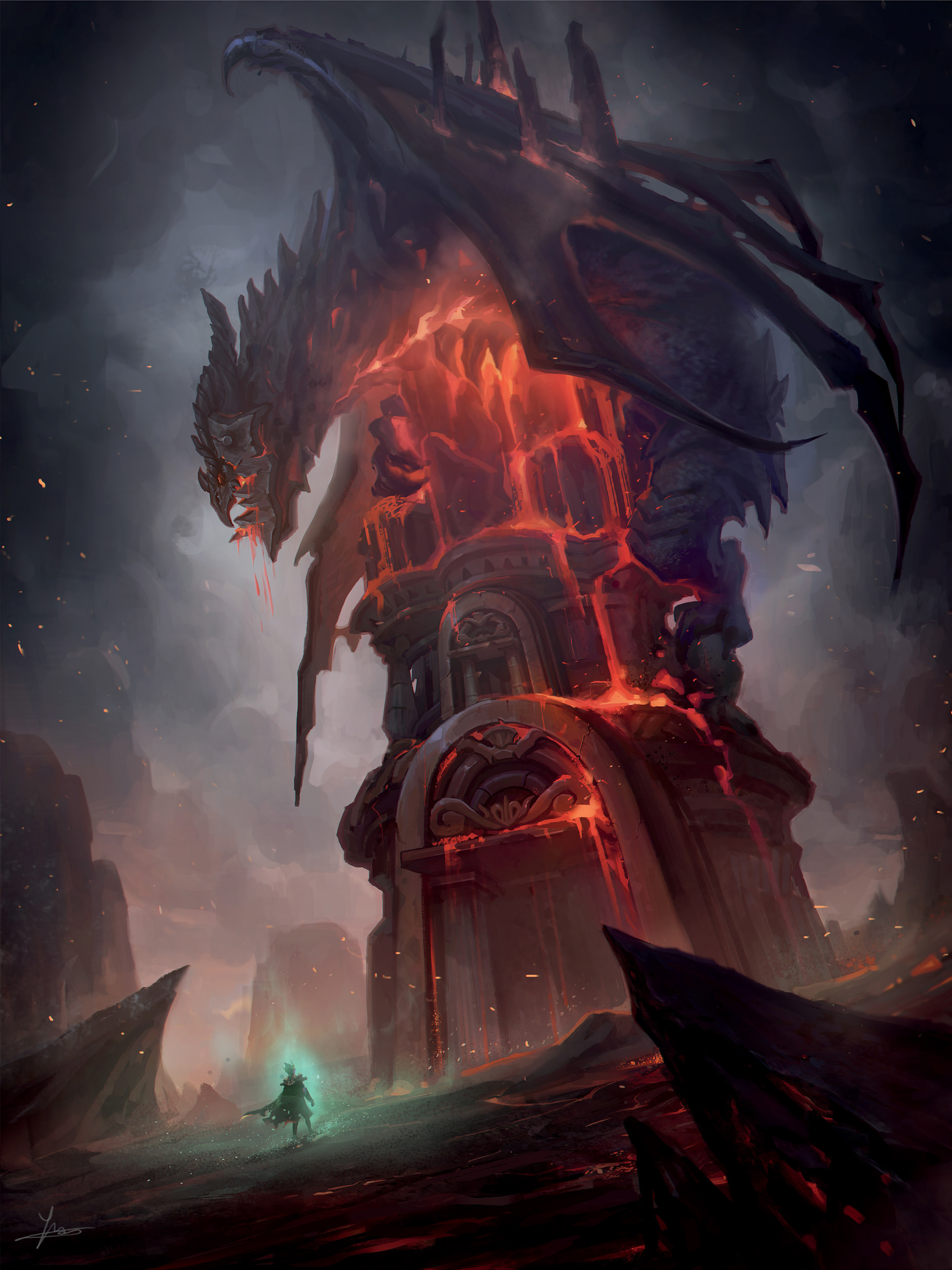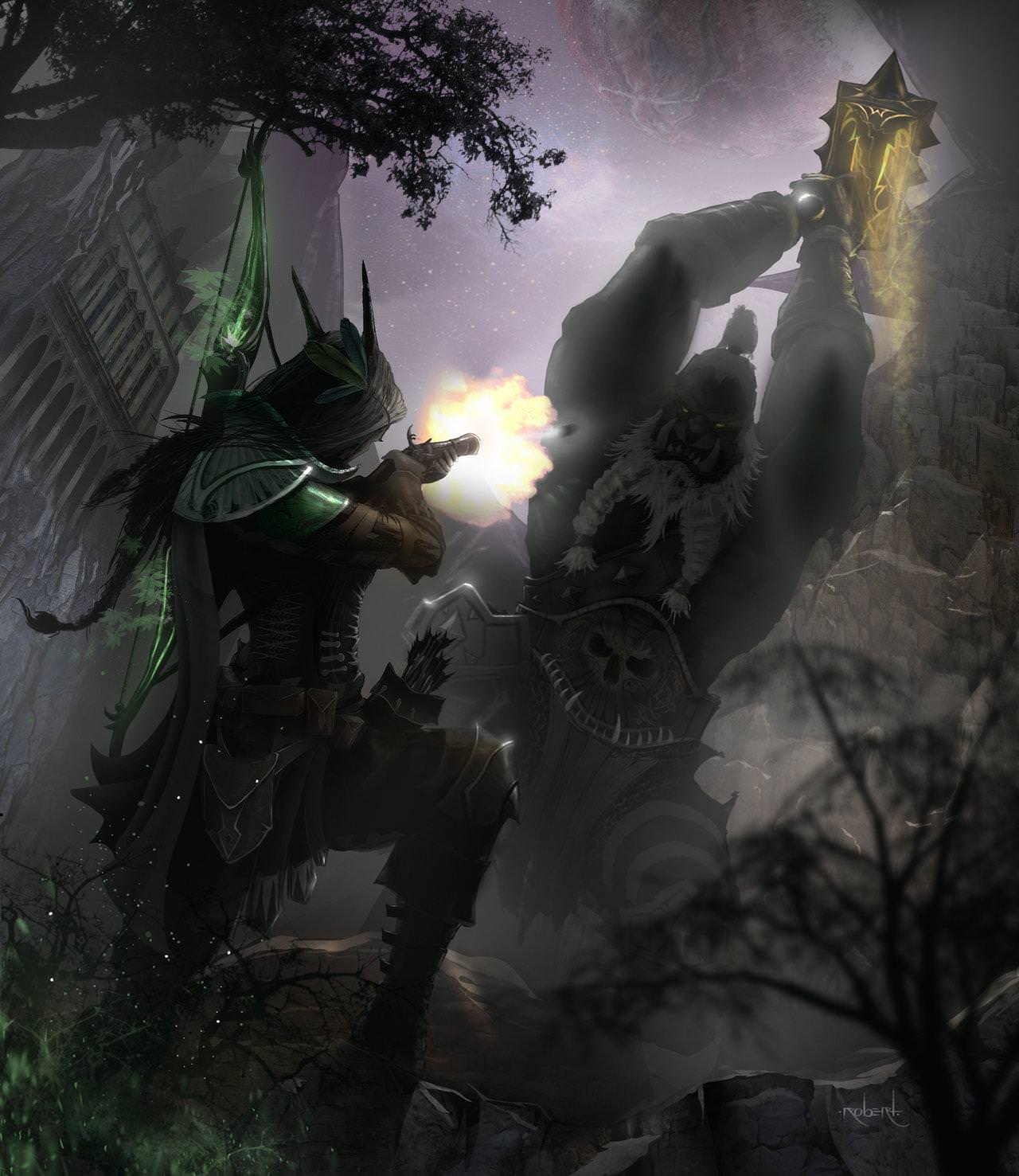
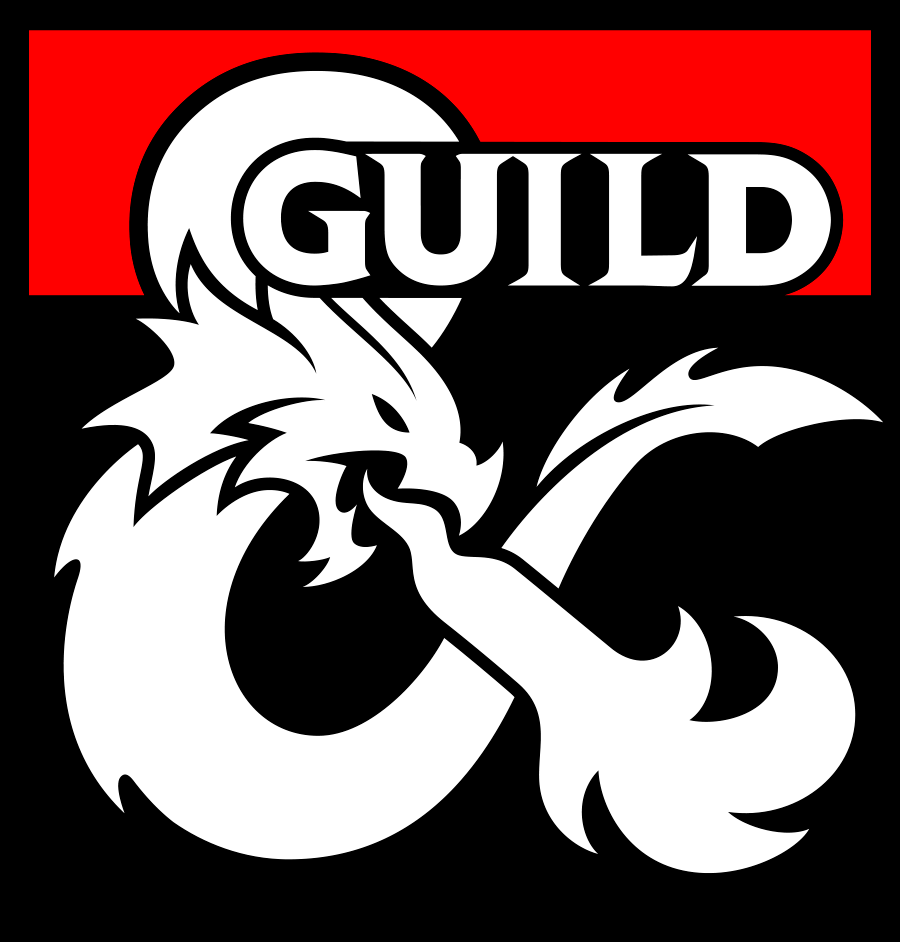



Credits
Lead Designer: Jih
Writing & Editing: Jih, Tangerine
Reddit Names: Jihia, TangerineThunder
Additional Contributors: Prometheus, Reiga, Wyken,
ClockWorkTank, 123jrf, ApolloLumina
Cover Illusrator: Robert Maldonado
Interior Illustrators: Anastasiya Gafron, Unidcolor, Jerry
Mascho, Rogier van de Beek, Tim Gou, Shanton Feng,
Peter Lee, Shamanguli, Juhani Jokinen, Nagli, Jimmy Lo,
Glenn Rane, Liuhao, Robin Olausson, Nosfer, Jorge
Jacinto, Brian Huang, Richard Suwono, PersonalAmi,
Bren Rodri, Krysdecker, James Ryman, Alex Garner,
Nina Ikävalko, Shuzong, Howard Pak, Dan Scott, Jojo
So, Matthew McKeown, Astri Lohne, Jason Wang, Peet
Cooper, Wei Wang, Ryan Metcalf, Ina Wong, Tyson
Murphy, Jerry Mascho, Aaron Lovett, Phillip Zhang,
Kristina Toxicpanda, Dariia Kasimova, Artlon, Dmitry
Vernygor, Syncmax, Adel Khanov, Anthony Avon, Lowly
Owly, Anna Pazyniuk
Based on the original D&D game created by
E. Gary Gygax and Dave Arneson, as well as
Brian Blume, Rob Kuntz, James Ward and Don Kaye.
Based on the Warcraft franchise by
© Blizzard Entertainment
Playtesting provided by
Roll Need, they run a weekly stream on Twitch using this
handbook for their races and classes. Check them out!
Special thanks to
This entire book was made using GmBinder, it is an
amazing tool for creating authentic looking homebrew
material for 5th Edition Dungeons and Dragons, and
without it this project would've never been considered.
Foreword
We've made this book in an attempt to bring the beloved Warcraft franchise into the 5th edition of Dungeons & Dragons. It is a task that has taken us months to do, and many more to come as we continue to work on this in our spare time, in the hopes of bringing a genuine recreation of Warcraft into a tabletop game.
This book is made to compliment Dungeons & Dragons 5th edition Player's Handbook, Dungeon Master's Guide, and Monster Manuals. Using the rules presented in those books, and balanced around being playable in a standard D&D setting without requiring balancing.
This books is made in our spare time with the intention of always being a free resource for everyone to use. Never to be bought or paid for. We've made this because we want others to enjoy the Warcraft universe in a Dungeons & Dragons format. Not for any monetary gain.
With each coming update, all changes will be noted in the Changelog--Link is provided below. Likewise we've provided a link to our racial balance shreadsheet, using the rules of Detect Balance by Eleazzaar.
Want to help grow a community?
We're a relatively small group working together on this,
and as such our ability to playtest all of this is limited in
scope. If you want to help better this book, improve and
balance what's inside it, suggest changes, or talk with
others using this to create a Warcraft campaign. Then
head over to the r/wc5e, a subreddit dedicated to this
handbook and project!
We also have a discord that you can join if you want to
come talk with us and others using this handbook for
their campaigns!
Legal Stuff
DUNGEONS & DRAGONS, D&D, Wizards of the Coast, Forgotten Realms, the dragon ampersand, Player’s Handbook, Monster Manual, Dungeon Master’s Guide, D&D Adventurers League, all other Wizards of the Coast product names, and their respective logos are trademarks of Wizards of the Coast in the USA and other countries. All characters and their distinctive likenesses are property of Wizards of the Coast. This material is protected under the copyright laws of the United States of America. Any reproduction or unauthorized use of the material or artwork contained herein is prohibited without the express written permission of Wizards of the Coast.
©2016 Wizards of the Coast LLC, PO Box 707, Renton, WA 98057-0707, USA. Manufactured by Hasbro SA, Rue Emile-Boéchat 31, 2800 Delémont, CH. Represented by Hasbro Europe, 4 The Square, Stockley Park, Uxbridge, Middlesex, UB11 1ET, UK.


Table of Contents

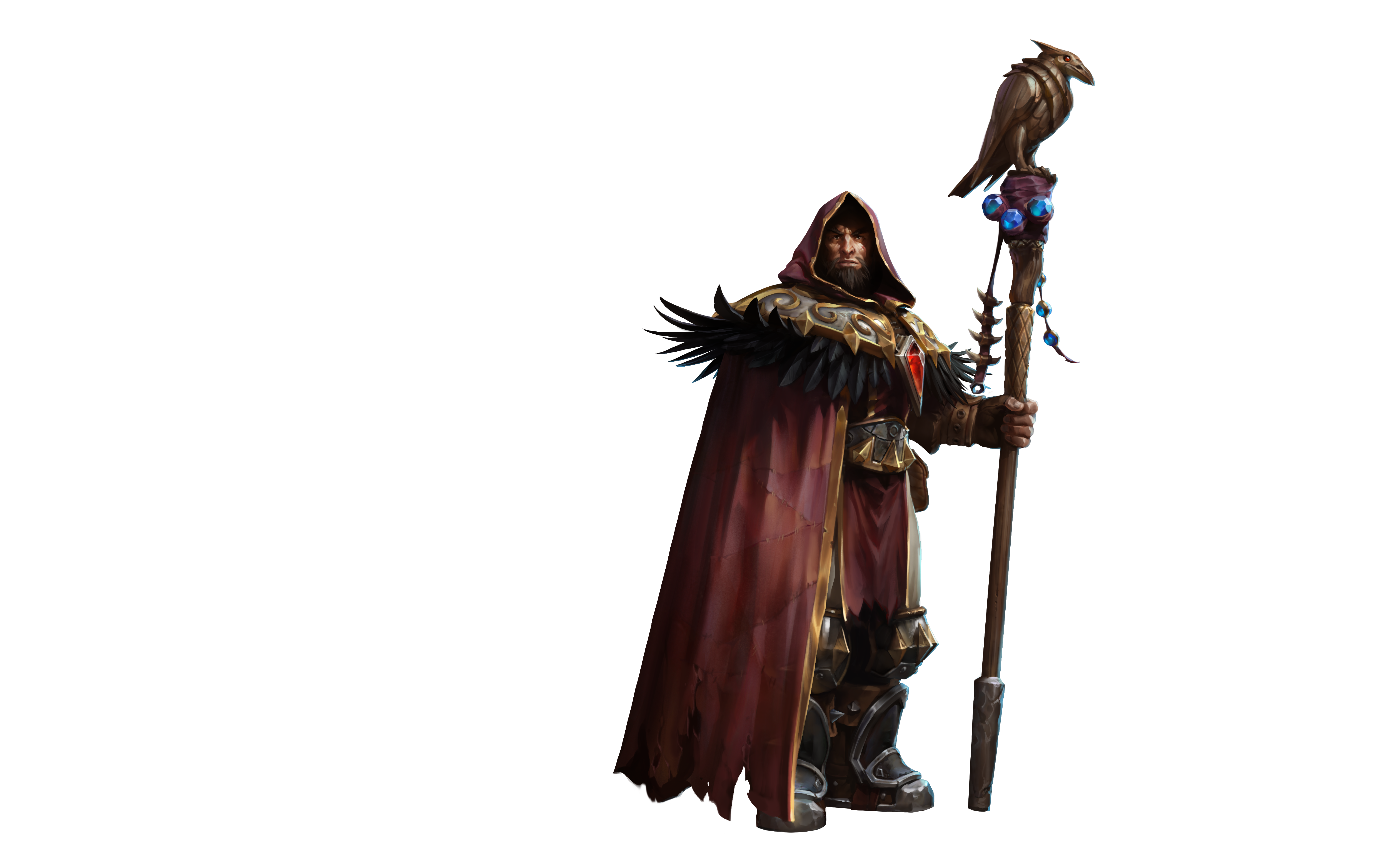
Part I
Creating a Hero
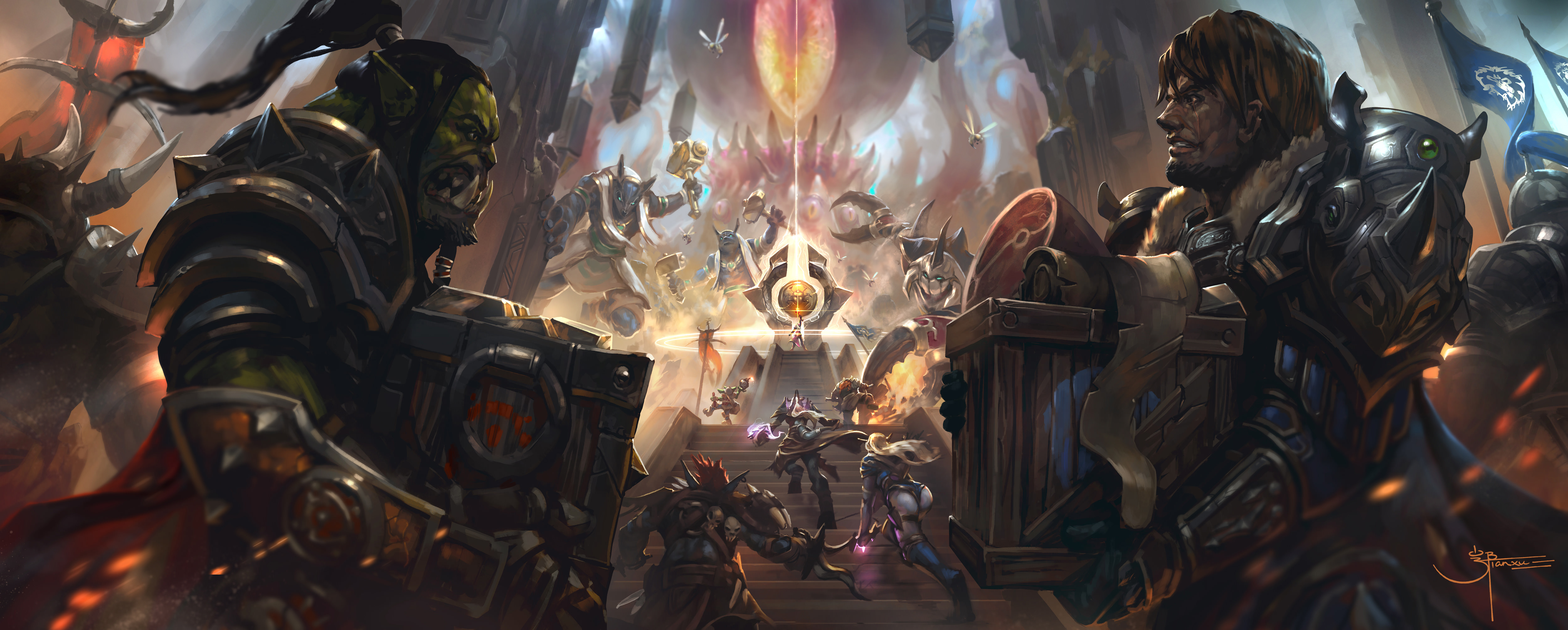
Chapter 1: Races
Armies and factions have always defined the Warcraft world, and two of the most powerful factions on Azeroth today are the Alliance and Horde. Most players belong to one or the other faction, although anomalies do exist.
Choosing a Side
At character creation, every player must choose their character’s faction. It is as much a part of the hero as their class or background. All characters in a party are usually of the same faction.
Although every race has an affiliation, there are excep-tions. Creating a character outside their normal affiliation is challenging, but offers a great role play opportunities for the player. Some suggestions are listed below.
- The character was born into the faction.
- The character was saved or befriended by members of the faction.
- The character fled from their faction.
- The character witnessed members of their faction doing something they found reprehensible.
The Alliance
The Alliance have proven themselves to be fierce combatants, often giving their lives when called for. The faction is not a uniform governmental body, but is a coalition of mutual military and economic aid. Diplomacy is key with in the Alliance and decisions are traditionally made by being voted on by the Alliance's most influential members. Stormwind is described as the most powerful force in the now multiracial Alliance. With it becoming the de facto leader of the remaining human kingdoms and entering a powerful alliance with the strongest dwarven kingdom, Ironforge, Stormwind has thus been shown to be the most influential kingdom and therefore the de facto driving force of Alliance politics. Therefore, Stormwind is undisputedly looked to for maintaining the Alliance and its policies. Stormwind is where the main superpowers of the Alliance conference to discuss world issues and mutual defense. The majority of Alliance citizens also recognizes Stormwind City as the heart of the Alliance. The High King coordinates the workings of the Alliance's armies in order to safeguard the Alliance's interests and defense.
Even now, as always, humans are the glue that hold the Alliance together, being the most numerous and diplomatic of the member races. The armies of Stormwind are primarily stationed in the southern Eastern Kingdoms, securing regions such as Elwynn Forest, Duskwood, Westfall, and the Redridge mountains. As well as having outposts and bases stationed at key points in Lordaeron, Northrend, and Kalimdor. The armies of Ironforge are mainly stationed in Khaz Modan along with their gnome allies, and the night elven armies are mainly defending northern Kalimdor from the Horde's deforestation of the Ashenvale. The remaining draenei forces are still trying to secure their new home on Azuremyst Isle, and are also stationed in Outland. The recently brought in Gil- nean armies are defending them- selves from the endless Forsaken.
The Horde
The Horde makes no compromises
when it comes to excellence, and the
power and ferocity of their warriors is
legendary. Misunderstood by many as
evil, the Horde possesses a strong code of
honor and strict laws for disobedience.
All members of the Horde have to swear a blood oath to join the faction and are thus obligated to follow the warchief's commands and support the warchief in war if the warchief calls upon them for aid. The position of warchief can be attained by having the previous warchief choose a successor or challenging the current warchief to a Mak'gora: a prearranged duel with deadly weapons between two people following a formal procedure in the presence of witnesses and traditionally fought until one party yields or is killed, usually to settle a quarrel involving a point of honor. Above all else, the title warchief is granted to those who display strength and decisive action.
The warchief may accept ambassadors and advisors from all the different tribes and members of the Horde to makes sure their voice is heard in the running of the fledgling hegemony but ultimately, only the warchief may have the final say in matters concerning the entire Horde. Each race within the Horde choose a single leader to govern their people and their people's kingdoms and also to represent their people in the high Horde echelon.
Despite their somewhat monstrous appearance, the majority of the Horde is not evil, much like the Alliance, it is comprised of diverse factions and individuals who possess a wide range of values and virtues. Even so, there is one expectation that must be met when joining the Horde: regardless of gender or station, all are expected to pull their own weight and give their talents for the betterment of the Horde. When weakness is a liability to the
of the Horde, it is the duty of the strong to
usurp control from the incompetent
and redeem the Horde. Lok'tar ogar!
Victory or death - These words bind
one to the Horde. For they are the
most sacred and fundamental of
truths to any warrior of the
Horde, for the Horde, failure
is not an option.
Culturally, orcs and tauren
believe in redemption more
than most other races on
Azeroth and are willing to
give almost anyone a chance,
regardless of reputation. The trolls
seem to have even accepted, (if not
at least tolerate) their ancient enemy
the blood elves. Largely because of
these beliefs, a number of mortal races
and many diverse factions can be found
in bservice to the Horde.

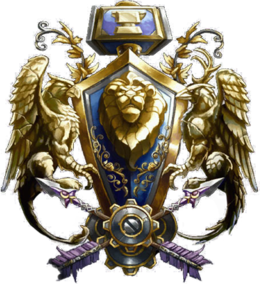
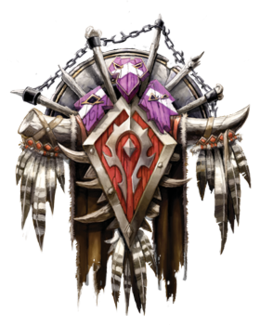
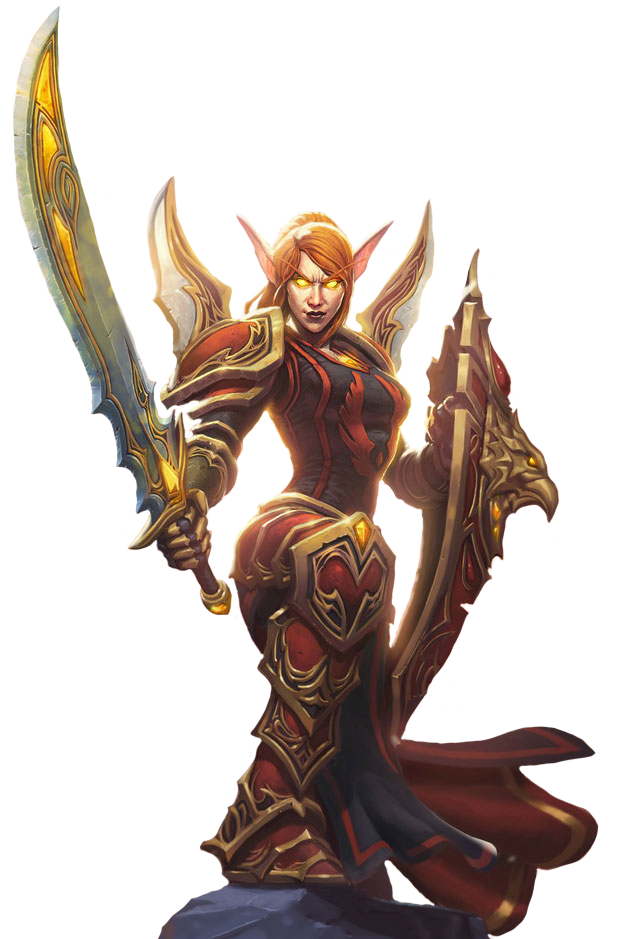
Choosing a Race
A visit to one of the great cities in the world of Azeroth Stormwind City, the Capital City of Stormwind, the City of Doors overwhelms the senses. Voices chatter in countless dialects of different languages. The smells of cooking in dozens of different cuisines mingle with the odors of crowded streets and poor sanitation. Buildings in myriad architectural styles display the diverse origins of their inhabitants.
And the people themselves represent many different races, from gnomes and stout dwarves to majestically beautiful elves, mingling among a variety of humans.
Scattered among the common races: a draenei here, pushing his way through the crowd, and a sly worgen there, lurking in the shadows. Night elves and dwarves live and work alongside humans. And there, a lone pandaren — a wanderer from the shifting isles of the ever expanding great sea, trying to make his way in a world unknown.
— A poetic gnome
Not every intelligent race of the multiverse is appropriate for a player-controlled adventurer. The ones presented in this book are the races most well known to become adventurers and heroes, spread throughout every corner of Azeroth's continents.
Your choice of race affects many different aspects of your character. It establishes fundamental qualities that exist throughout your character's adventuring career. When making this decision, keep in mind the kind of character you want to play. For example, a gnome could be a good choice for a sneaky rogue, a dwarf makes a tough warrior, and an elf can be a master of arcane magic.
Your character race not only affects your ability scores and traits but also provides the cues for building your character's story. Each race's description in this chapter includes information to help you roleplay a character of that race, including personality, physical appearance, features of society, and racial alignment tendencies.
These details are suggestions to help you think about your character; adventurers can deviate widely from the norm for their race. It's worthwhile to consider why your character is different, as a helpful way to think about your character's background and personality.
Racial Traits
The description of each race includes racial traits that are common to members of that race. The following entries appear among the traits of most races.
Ability Score Increase
Every race increases one or more of a character's ability scores.
Age
The age entry notes the age when a member of the race is considered an adult, as well as the race's expected lifespan. This information can help you decide how old your character is at the start of the game.
Alignment
Most races have tendencies toward certain alignments, described in this entry. These are not binding for player characters, but considering why your dwarf is chaotic, for example, in defiance of lawful dwarf society can help you better define your character.
Size
Characters of most races are Medium, a size category including creatures that are roughly 4 to 8 feet tall. Members of a few races are Small (between 2 and 4 feet tall), which means that certain rules of the game affect them differently. The most important of these rules is that Small characters have trouble wielding heavy weapons.
Speed
Your speed determines how far you can move when traveling and fighting.
Languages
By virtue of your race, your character can speak, read, and write certain languages. Each race has their own language, with multiple dialects. as well as a 'common' language, that the majority of their faction speaks and understands. Chapter 4 lists languages commonly spoken on Azeroth.
Subraces
Many races have subraces. Members of a subrace have the traits of the parent race in addition to the traits specified for their subrace. Relationships among the subraces vary significantly from race to race.
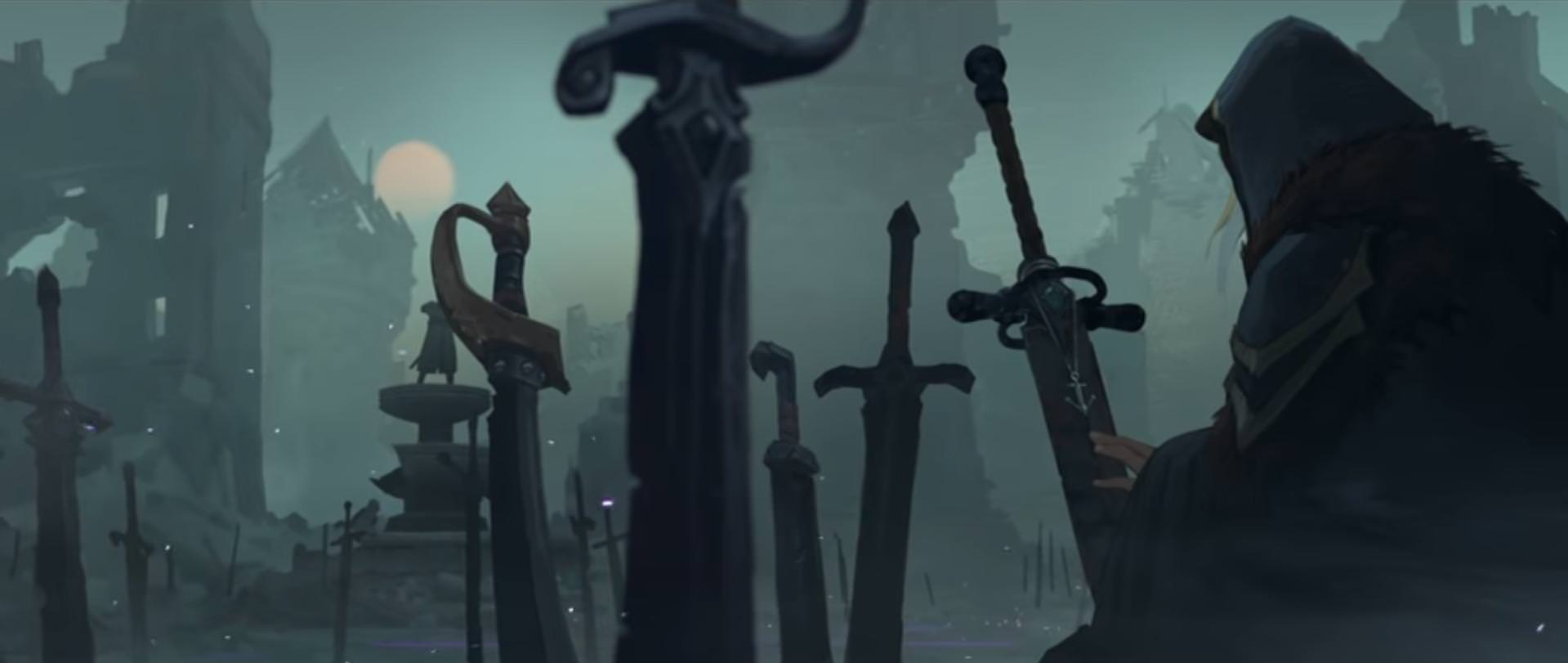

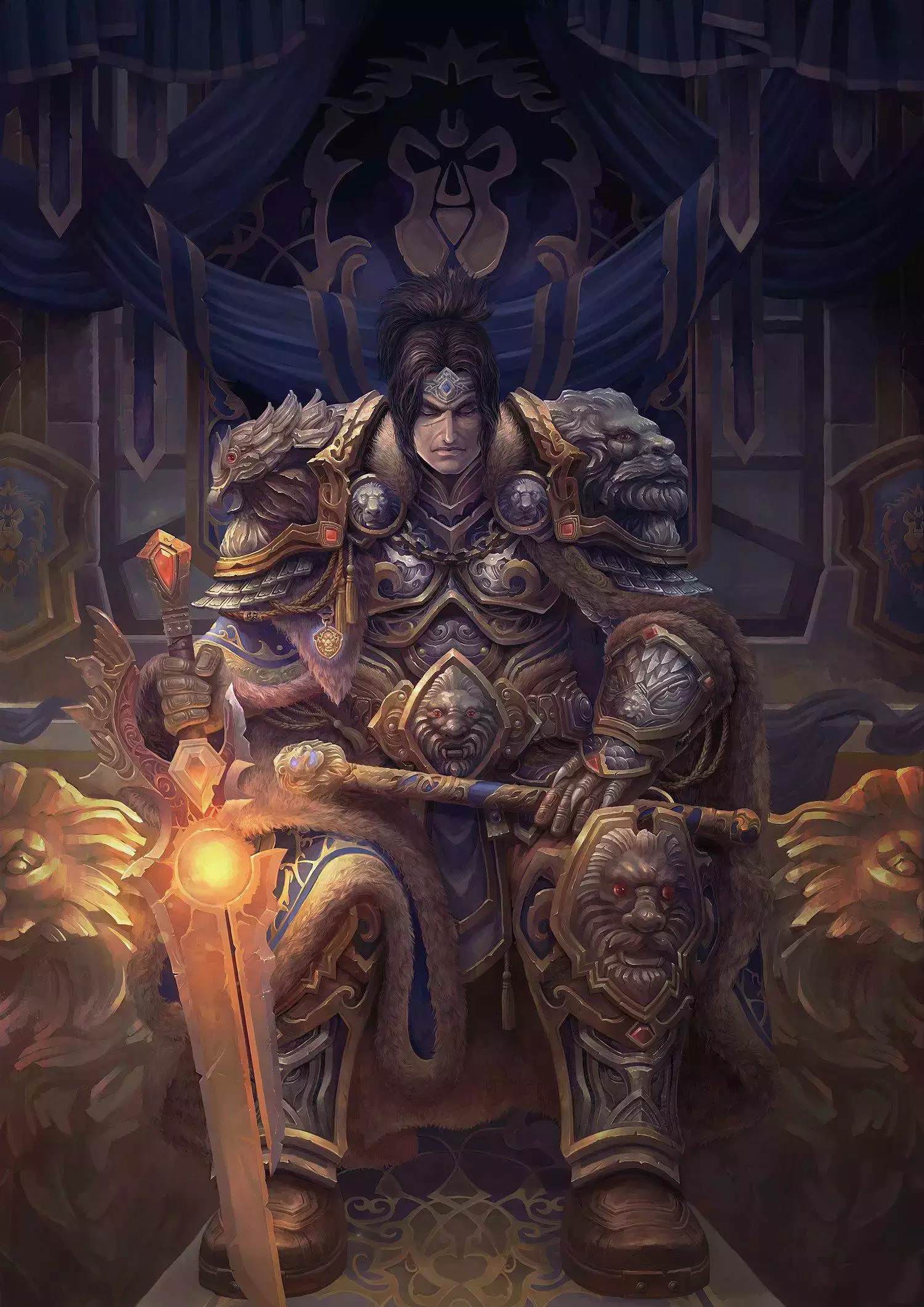
Alliance Class Suggestions
The following are a set of class suggestions, pulled from World of Wacraft, as the classes the Alliance races will more than likely be. It is suggested that you pick from among your race's suggested classes to keep with the thematic elements of the setting. That said, heroes are meant to break molds and be the exception to rules, so feel free to pick a class that is not typically used by your race. If you do pick outside your racial classes though, work with your Dungeon Master to create a backstory for why you are a member of this class.
You will likely notice that there are two class suggestion charts. One for Pre-Cataclysm, and one for Post-Cataclysm. This was done because the Cataclysm is a major turning point in the history of Azeroth, and the races of the Alliance began learning new abilities and sources of power, in order to fight back against the threats that assail their world. Prior to the Cataclysm, the Alliance races were less open to sharing knowledge of and learning about new classes and tended to stay within the traditional classes of their race.
Pre-Cataclysm
| Races | Druid | Hunter | Mage | Paladin | Priest | Rogue | Shaman | Warlock | Warrior | Death Knight |
|---|---|---|---|---|---|---|---|---|---|---|
| Human | ✦ | ✦ | ✦ | ✦ | ✦ | ✦ | ✦ | |||
| Dwarf, ironforge | ✦ | ✦ | ✦ | ✦ | ✦ | ✦ | ||||
| Dwarf, wildhammer | ✦ | ✦ | ✦ | |||||||
| Night Elf | ✦ | ✦ | ✦ | ✦ | ✦ | ✦ | ||||
| Gnome | ✦ | ✦ | ✦ | ✦ | ✦ | |||||
| Draenei, exodar | ✦ | ✦ | ✦ | ✦ | ✦ | ✦ | ✦ | ✦ | ||
| Draenei, broken | ✦ | ✦ | ✦ | ✦ | ✦ | ✦ |
Post-Cataclysm
| Races | Druid | Hunter | Mage | Monk | Paladin | Priest | Rogue | Shaman | Warlock | Warrior | Death Knight | Demon Hunter |
|---|---|---|---|---|---|---|---|---|---|---|---|---|
| Human | ✦ | ✦ | ✦ | ✦ | ✦ | ✦ | ✦ | ✦ | ✦ | ✦ | ✦ | |
| Dwarf, dark iron | ✦ | ✦ | ✦ | ✦ | ✦ | ✦ | ✦ | ✦ | ✦ | |||
| Dwarf, ironforge | ✦ | ✦ | ✦ | ✦ | ✦ | ✦ | ✦ | ✦ | ✦ | ✦ | ||
| Dwarf, wildhammer | ✦ | ✦ | ✦ | ✦ | ✦ | |||||||
| Night Elf | ✦ | ✦ | ✦ | ✦ | ✦ | ✦ | ✦ | ✦ | ✦ | ✦ | ||
| Gnome | ✦ | ✦ | ✦ | ✦ | ✦ | ✦ | ✦ | ✦ | ||||
| Draenei, exodar | ✦ | ✦ | ✦ | ✦ | ✦ | ✦ | ✦ | ✦ | ||||
| Draenei, broken | ✦ | ✦ | ✦ | ✦ | ✦ | ✦ | ||||||
| Draenei, lightforged | ✦ | ✦ | ✦ | ✦ | ✦ | |||||||
| Worgen | ✦ | ✦ | ✦ | ✦ | ✦ | ✦ | ✦ | ✦ | ||||
| Void Elf | ✦ | ✦ | ✦ | ✦ | ✦ | ✦ | ✦ |

Human
No one feels he deserves it. Because no one does. It's grace, pure and simple, we are inherently unworthy, simply because we're human. Aye the elves, dwarves, and all the other races are flawed. But the Light loves us anyway. It loves us for what we sometimes can rise to in rare moments. It loves us for what we can do to help others.
— Uther the Lightbringer
Human kingdoms have existed for thousand of years, and humans themselves for thousands more. Their short lives in comparison to dwarves and elves pushes them to achieve as much as they can in the years they are given. Their valor, optimism, and stubbornness have led them to build some of the greatest kingdoms on Azeroth, some of which still stand a millennium later. Whatever have pushed them down, it has only strengthened the bond between those that still stand.
A Broad Spectrum
With their penchant for migration and conquest, humans are more physically diverse than any other race. There is no typical human. An individual can stand from 5 feet to a little over 6 feet tall and weigh from 125 to 250 pounds. Human skin shades range from nearly black to very pale, and hair colors from black to blond (curly, kinky, or straight); males might sport facial hair that is sparse or thick. Humans reach adulthood in their late teens and rarely live even a single century.
Variety in All Things
Humans are the most adaptable and ambitious people among Azeroth's races. They have widely varying tastes, morals, and customs in the many different kingdoms where they have settled. When they settle though, they stay: they build cities to last for the ages, and great kingdoms that can persist for long centuries. An individual human might have a relatively short life span, but a human nation or culture preserves traditions with origins far beyond the reach of any single human's memory. They live fully in the present but also plan for the future, striving to leave a lasting legacy.
Proudly Standing
Despite what atrocities have happened to them, humans remain hardy and brave, thoroughly committed to building strong societies, reinforcing their kingdoms, and reclaiming lost nations. Years of war have tempered their resolve, and they are more determined than ever before. Their value of virtue, honor and courage shine their ranks.
Faithful
Among all human nations, the holy light is a central part of civilized society. By most it is considered the only religion and a staple of worship, respect, and honor. The religion is widely worshiped throughout Azeroth, yet humans were the first to utilize its powers in an offensive manner with the creation of paladins. Throughout their kingdoms, churches of the holy light can be found, an organization dedicated to creating a world of honor, and justice.
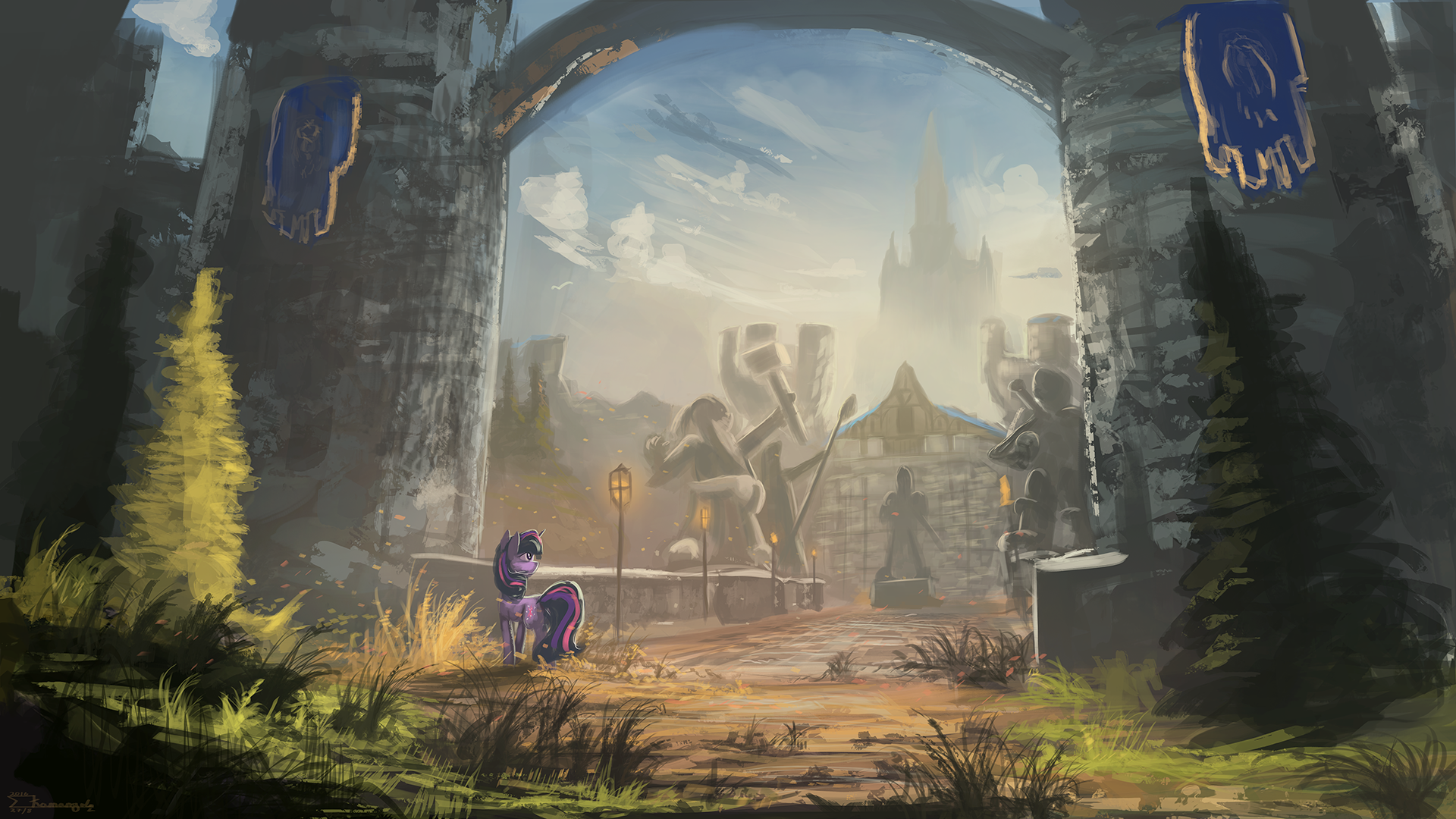

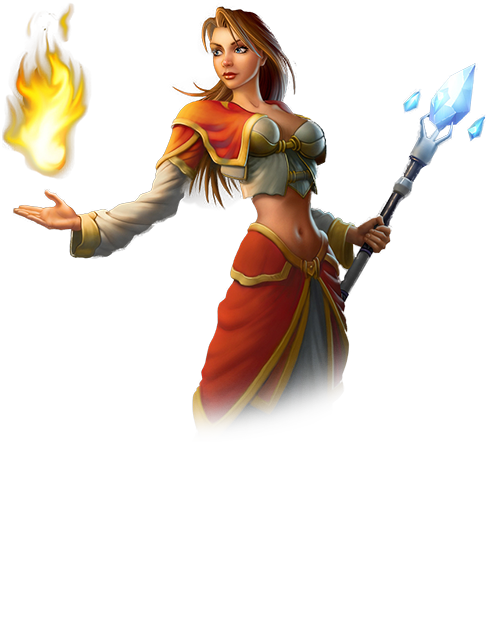
Affiliation
Humans began the Alliance and it could not exist without them. Humans and orcs joined forces to face the Burning Legion years ago, but old habits returned once they dispatched the demon threat. Although the Alliance and Horde leaders bear a healthy respect for each another, old racial hatreds still stir within the hearts of their troops.
They respect the races of their alliance, and carries no ill wish against any of them. They know they are the center stone of the alliance, and that a good relationship is key.
Human Names and Ethnicities
Having so much more variety than other cultures, humans as a whole have no typical names. Some human parents give their children names from other languages, such as Dwarven or Darnassian, but most parents give names that are linked to their region's culture or to the naming traditions of their ancestors.
The material culture and physical characteristics of humans can change wildly from region to region. For example, the clothing, architecture, cuisine, music, and literature are different in the peninsula of Gilneas than in the southern kingdom of Stormwind. Human physical characteristics, though, vary according to the ancient migrations of the earliest humans, so that the humans of the Eastern Kingdoms have every possible variation of coloration and features.
Seven human kingdoms and ethnic groups are widely recognized. These groups, and the typical names of their members, can be used as inspiration no matter which kingdom your human is in.
Alterac
Found in the Alterac mountains, Alteracis are of moderate height and muscular built, with skin hues of pale and fair skin. Their hair is usually silver or blonde, and their eye color varies widely, though light colorations are common.
Alteraci Names: Alteracis generally use names taken from
the humans of Stromgarde or Lordaeron, and have no
names specific to them.
Dalaran
Dalaranians are slender, fair-skinned folk with brown hair that ranges from blond to almost black. Most are of moderate height and have blue or green eyes. But these traits are hardly universal. Humans of Dalaran come from far and wide across the Eastern Kingdoms to study or seek refuge within the floating city.
Dalaranian Names: Dalaranians have no names specific
to them, the ethnicity of their people vary beyond mere
humans and names are used from a variety of races.
Gilneas
Gilneans are tall, fair to amber-skinned folk with blue or steely gray eyes. Most have hair ranging from wine-red or light brown to raven-black.
Gilnean Names: (Male) Blake, Chris, Fenegan, Gerard,
James, Sean, Sebastian, Vincent; (female) Amelia,
Ashley, Celestine, Loren, Mary, Melinda, Mia, Tess;
(surnames) Broderick, Cleese, Crowly, Godfrey, Walden
Kul Tiras
Native to the Kul Tiran isles, tirasians are generally tall and muscular, with fair to amber skin similar to that of gilneans, brown to black hair, and light colored eyes.
Tirasian Names: (Male) Cyrus, Denzel, Elijah, Herold,
Patrick, Ron, Wesley, Will; (female) Fray, Helena, Jess,
Joan, Kate, Leila, Louisa, Taylor; (surnames) Clark,
Ledger, Mueller, Page, Wellard
Lordaeron
Widespread along the Eastern Kingdoms northern realm, Lordaeronians are of medium height and slender built, with pale skin. Their hair and eye color varies widely, but silver or light colored hair and blue eyes are common.
Lordaeronian Names: (Male) Alexi, Aurius, Gannon,
Menard, Norwyn, Othmar, Urias, Wallace; (female)
Arenya, Diahann, Ellaine, Illucia, Jandice, Lydie, Malina,
Merla; (surnames) Barton, Camden, Godwin, Hayden
Stormwind
Found within the southern region of the Eastern King-doms, Stormwindians are of moderate height and build, with skin hues ranging from tawny to fair. Their hair varies widely from blonde to brown, as does their eyes, though brown is most common.
Stormwindian Names: (Male) Ander, Dungar, Harlan,
Jesper, Jocryn, Maginor, Osric, Renato; (female) Dalga,
Einris, Ilsa, Jalane, Karrina, Laurena, Maris, Sarisse;
(surnames) Ayrole, Bolero, Cordell, Leifeld, Stanford
Stromgarde
Shorter in build than most other humans, Stromics have generally pale skin contrasted by brown or black hair, and dark colored eyes.
Stromic Names: (Male) Adrien, Emmir, Galen, Ganar,
Thoras, Tyrreth, Urnor, Wyenas; (female) Amina, Céline,
Clarisse, Ella, Emeline, Iris, Mara, Marine; (surnames)
Brewston, Farthing, Gilbreath, Swale, Tubal
Human Traits
It's hard to make generalizations about humans, no matter where you were born your character has these traits.
Ability Score Increase. One ability score of your choice increases by 2, and another ability score of your choice increases by 1.
Age. Humans reach adulthood in their late teens and live less than a century.
Alignment. Humans tend toward no particular alignment. The best and the worst are found among them.
Size. Humans vary widely in height and build, from barely 5 feet to well over 6 feet tall, averaging at 170 pounds. Your size is Medium.
Speed. Your base walking speed is 30 feet.
Versatility. You gain proficiency in one skill or tool of your choice.
Human Resolve. When you make an attack roll, an ability check, or a saving throw, you can do so with advantage. Once you use this ability, you can’t use it again until you finish a short or long rest.
Languages. You can speak, read, and write Common and one extra language of your choice. Humans typically learn the languages of other peoples they deal with, including obscure dialects. They are fond of sprinkling their speech with words borrowed from other tongues: Dwarven curses, Darnassian musical expressions, Gnomish tongue twisters, and so on.

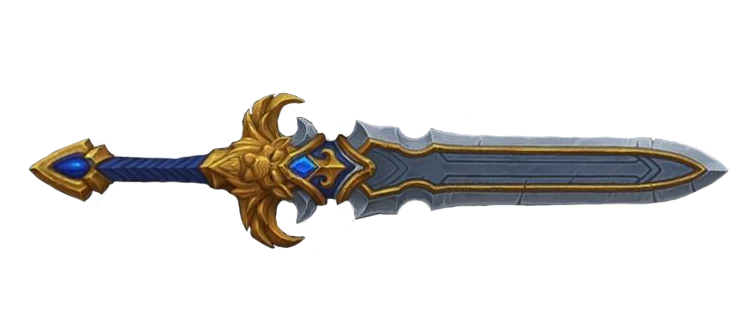
Dwarf
And here are the why and the how, to again become one with the mountain. For behold, we are the earthen, of the land, and its soul is ours, its pain is ours, its heartbeat is ours. We sing its song and weep for its beauty. For who would not wish to return home?
That is the why, O children of the earth.
— Earthen tablet, as read by King Magni
Their kingdom rich in ancient grandeur, halls carved into the roots of mountains, the echoing of picks and hammers in deep mines and roaring forges, a commitment to clan and tradition, these common threads unite all dwarves. Within the mountains of Khaz Modan, they continue their ancient ways, extending the depth of their halls, and con-structing marvels of architecture,
A Reclaimed Legacy
The undiscovered fragments of their past have led the dwarves on an unprecedented exodus of of exploration to seek out their origins. Seeking out their origins, the dwarves have dispatched prospectors across all of Lordaeron in order to seek out signs of the Titans, the supposed creators of the dwarves. The dwarves have embraced the idea that it is their purpose to search the world for more signs of proof of their heritage. Dwarven outposts exist in the most desolate of places on Azeroth.
Here, the dwarves spend their time seeking out the secrets of ancient times, or simply use their outposts as staging grounds for expeditions to clear out their enemies so that they may continue their quest.
Short and Stout
Bold and hardy, dwarves are known as skilled warriors, miners, and workers of stone and metal. Though they stand well under 5 feet tall, dwarves are so broad and compact that they can weigh as much as a human standing nearly two feet taller. Their courage and endurance are also easily a match for any of the larger folk.
Dwarves skin ranges from deep brown to a paler hue tinged with red, but the most common shades are light brown or deep tan, like certain tones of earth. With their dark iron kin having notably darker skin of gray to coal-black. Their hair, worn long but in simple styles, is usually black, gray, or brown, though wildhammer dwarves often have red hair. Male dwarves value their beards highly and groom them carefully.
Innovative
Dwarves are a proud, stern and determined people with streaks of kindness hidden under the gruff exteriors of their sturdy frames. Their love for battle, invention and exploration impels them ever forward to discover and unearth the mysteries of their heritage, educating them further about those who first created the dwarven race.
Only recently have the dwarves discovered the legacy of their ancient progenitors, the Titans. As the dwarves begin to delve deeper into the mysteries of their past, they also begin to uncover deeper enigmas.
Still, they keep to the forges and workshops, ever inno-vating and creating new and more effective ways of warfare. Steam powered technology and firearms originate from dwarven inventiveness and creativity. The stout race is renowned for its skills at battle and also as cunning engineers and crafters.
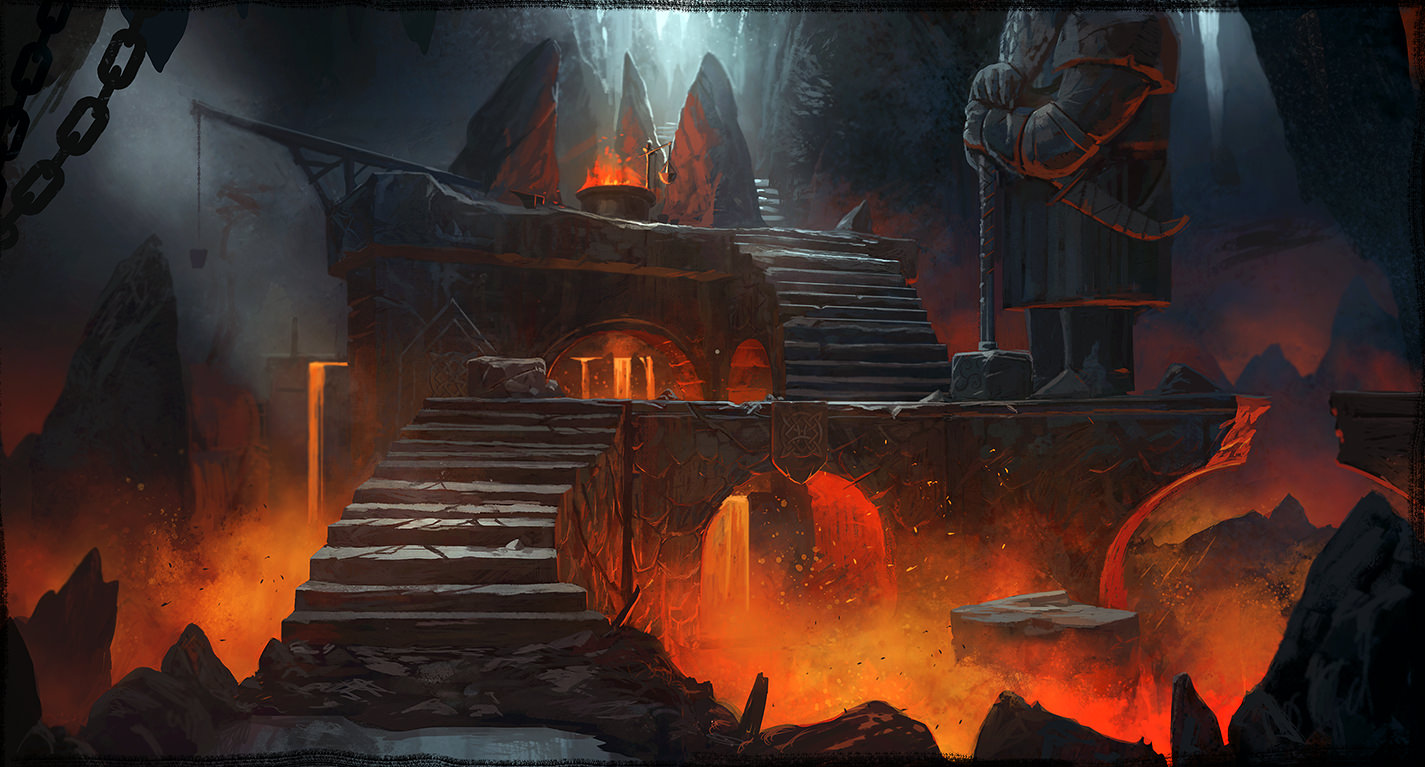

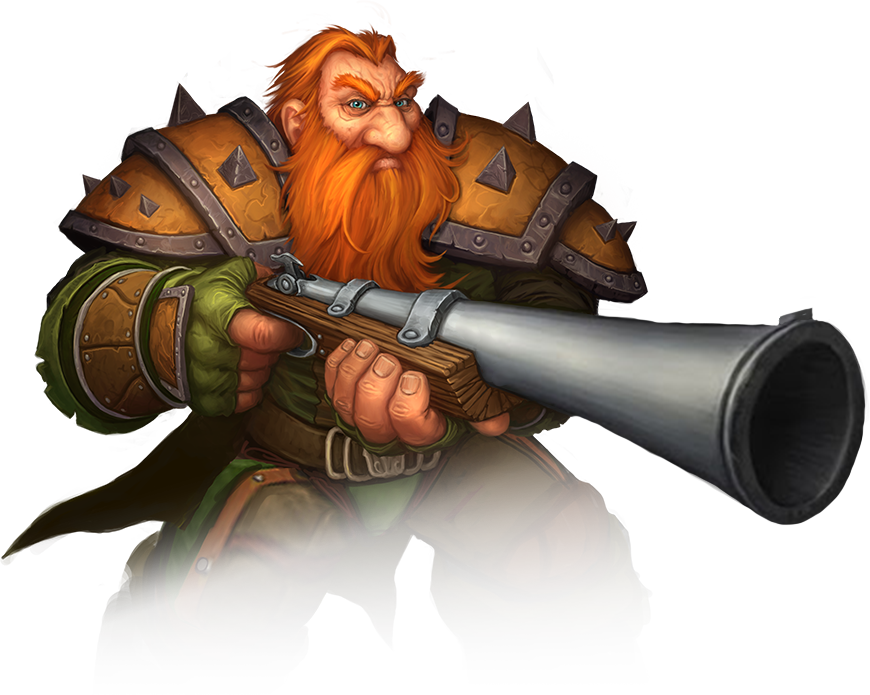
Affiliation
Dwarves are part of the alliance. While the dwarves of Khaz Modan appreciate the fighting skill of the Horde, it is with grim eyes that they look upon the orcs and their allies, the trolls and the Forsaken. Although the dwarves have held dealings of commerce and diplomacy with the blood elves, they keep the people of Quel’Thalas at an arm’s distance. While the darnassian elves may share the same allegiances, the dwarves look upon them with suspicion and some trepidation.
Humans, however, are the staunch and constant allies of the dwarven people and find welcome, favor and kindness when in dwarven lands.
Names
Dwarves typically have names reflecting the sturdy nature of their past. Many also have surnames that were earned by a member of the family in service during a quest or in a particular moment of notoriety or infamy that has now become part of a family legacy.
Male Names: Barab, Aradun, Thorin, Magni, Garrim,
Wendel, Thurimar, Irmirn, Bhaduk, Gengur
Female Names: Chise, Helge, Ferya, Furga, Krona, Imli,
Gwamde, Illia, Somdunn, Thanmu, Eniss, Nanla
Clan Names: Thunderforge, Bronzebeard, Thornsteel,
Hammergrim, Chunderstout, Broadmail, Madpride
Dwarf Traits
Your dwarf character has an assortment of inborn abilities, part and parcel of dwarven nature.
Ability Score Increase. Your Constitution score increases by 2.
Age. Dwarves mature at the same rate as humans, but they're considered young until they reach the age of 40. On average, they live about 320 years.
Alignment. Most dwarves are lawful, believing firmly in the benefits of a well-ordered society. They tend toward good as well, with a strong sense of fair play and a belief that all deserve to share in the benefits of a just order.
Size. Dwarves stand between 4 and 5 feet tall and average about 150 pounds. Your size is Medium.
Speed. Your base walking speed is 25 feet. Your speed is not reduced by wearing heavy armor.
Darkvision. Accustomed to life underground, you have superior vision in dark and dim conditions. You can see in dim light within 60 feet of you as if it were bright light, and in darkness as if it were dim light. You can't discern color in darkness, only shades of gray.
Stonecunning. Whenever you make an Intelligence (History) check related to the origin of stonework, you are considered proficient in the History skill and add double your proficiency bonus to the check, instead of your normal proficiency bonus.
Languages. You can speak, read, and write Common and Dwarven. Dwarven is full of hard consonants and guttural sounds, and those characteristics spill over into whatever other language a dwarf might speak.
Subrace. Ancient divides among dwarves have resulted in three main subraces: dark iron, ironforge, and wild-hammer dwarves. Choose one of these subraces.
Dark Iron Dwarf
Dark iron dwarves are cunning and nimble in comparison to the rest of their kin, preferring a less straight on approach to combat, and the use of darker magics. They commonly have dark grey to coal black skin, with red glowing eyes, and fiery red or black hair.
Ability Score Increase. Your Intelligence increases by 1.
Fireblood. You can cast the lesser restoration spell on yourself once with this trait, and you regain the ability to cast it this way when you finish a long rest.
Forged in Flames. You have resistance to fire damage.
Superior Darkvision. Your darkvision has a radius
of 120 feet
Sunlight Sensitivity. You have disadvantage on attack rolls and on Wisdom (Perception) checks that rely on sight when you, the target of your attack, or whatever you are trying to perceive is in direct sunlight.
Ironforge Dwarf
Ironforge dwarves are hardy and strong, the most military organized of the dwarven kin, being keen combatants, both in close quarters or from a distance, living in the snowy mountains of Dun Morogh, They tend to have lighter colorations than the rest of their kin.
Ability Score Increase. Your Strength increases by 1.
Dwarven Toughness. Your hit point maximum increases by 1, and it increases by 1 every time you gain a level.
Ironforge Training. You have proficiency with light armor, and the battleaxe, heavy crossbow, and firearm.
Stoneform. You can use your reaction upon being hit by a melee weapon attack to give yourself resistance towards bludgeoning, piercing, and slashing damage until the start of your next turn. You must then finish a long rest to use this feature again.
Wildhammer Dwarf
Wildhammer dwarves are untamed in comparison, they live further north in the Eastern Kingdoms, minding their own business and shamanistic ways. They are taller and slenderer than other dwarves, with tanned skin, and often wearing tribal tattoos.
Ability Score Increase. Your Wisdom increases by 1.
Brave Beyond Reason. You have advantage on saving throws against being frightened.
Gryphon Rider. You gain proficiency with the Animal Handling skill, and have advantage on Wisdom (animal handling) checks made towards gryphons.
Dwarven Resilience. You have advantage on saving throws against poison, and you have resistance against poison damage.
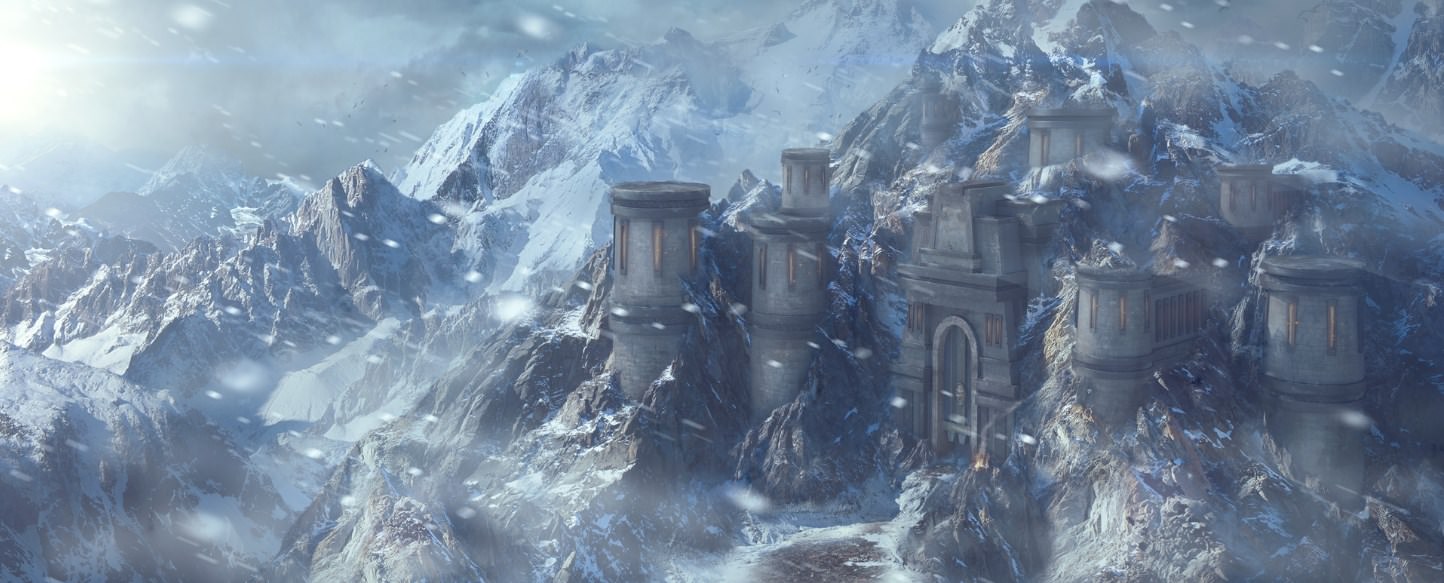

Night Elf
Darkness covered us in the beginning, and we could not see. We cried for guidance and the moon shone down bright upon us. Her soft light not only illuminated the night for us but also gave comfort.
Her light touched us from within, enabling us to see even when the moon was not visible...
— Tyrande Whisperwind
Proud and ancient, the kaldorei once ruled Azeroth as one powerful nation. They were the first to study magic and let it loose throughout the world during the First war. Since then most night elves have abandoned arcane, remember-ing the chaos it brought, turning their attention to raw strength, or the powers of nature.
Graceful Nature
Imposing in stature, night elves stand as one of the highest race of elves and on Azeroth, with their muscular bodies and slender builds, and long narrow ears. Their skin range in hues of blue, from a light blue sky to the deep blue of the water. With hair varying from a lush green, to blue, to dark purple. It is customary among night elves to paint tattoos across their faces, generally depicting an animal or leaf like design, often done as a rite of passage to adulthood.
Their eyes shine with a dim golden or silver glow, since the Sundering the golden glow has become ever more common amongst the night elves, a sign of their connection to nature and druidsm. Night elves who's eyes shine silver have left their kins ways for the arcane, and is seen as an outcast by most night elves.
Belief in the Ancients
Night elves have made close ties to the ancients beings of Azeroth. They have a strong connection to the goddess Elune and have built temples and organizations in her name to carry on her message. The sisters of Elune have long since been the leaders of the night elven military, and official head of their civilization as a whole.
Although Elune stands above all else, the night elves also carry a deep respect and gratitude to the ancient guardians of Azeroth, also know as wild gods, many of whom have not been seen since the blessing of nordrassil. Was it not for their aid during the War of the Ancients, the night elves would have perished from the surface of Azeroth.
A Timeless Perspective
Night Elves can live to become thousands of years of age, giving them a broad perspective on events that might trouble the shorter-lived races more deeply. They are often more amused than excited, and more likely to be curious than greedy. They tend to remain aloof and unfazed by petty happenstance. When pursuing a goal, whether adven-turing on a mission or learning a new skill or art, elves can be focused and relentless. They are slow to make friends and enemies, and even slower to forget them.
Like the branches of a young tree, elves are flexible in the face of danger. They trust in diplomacy and compro-mise to resolve differences before they escalate to violence. They have been known to retreat from intrusions into their woodland homes, confident that they can simply wait the invaders out. But when the need arises, elves reveal a stern martial side, demonstrating skill with sword, bow, strategy, and the foces of nature.
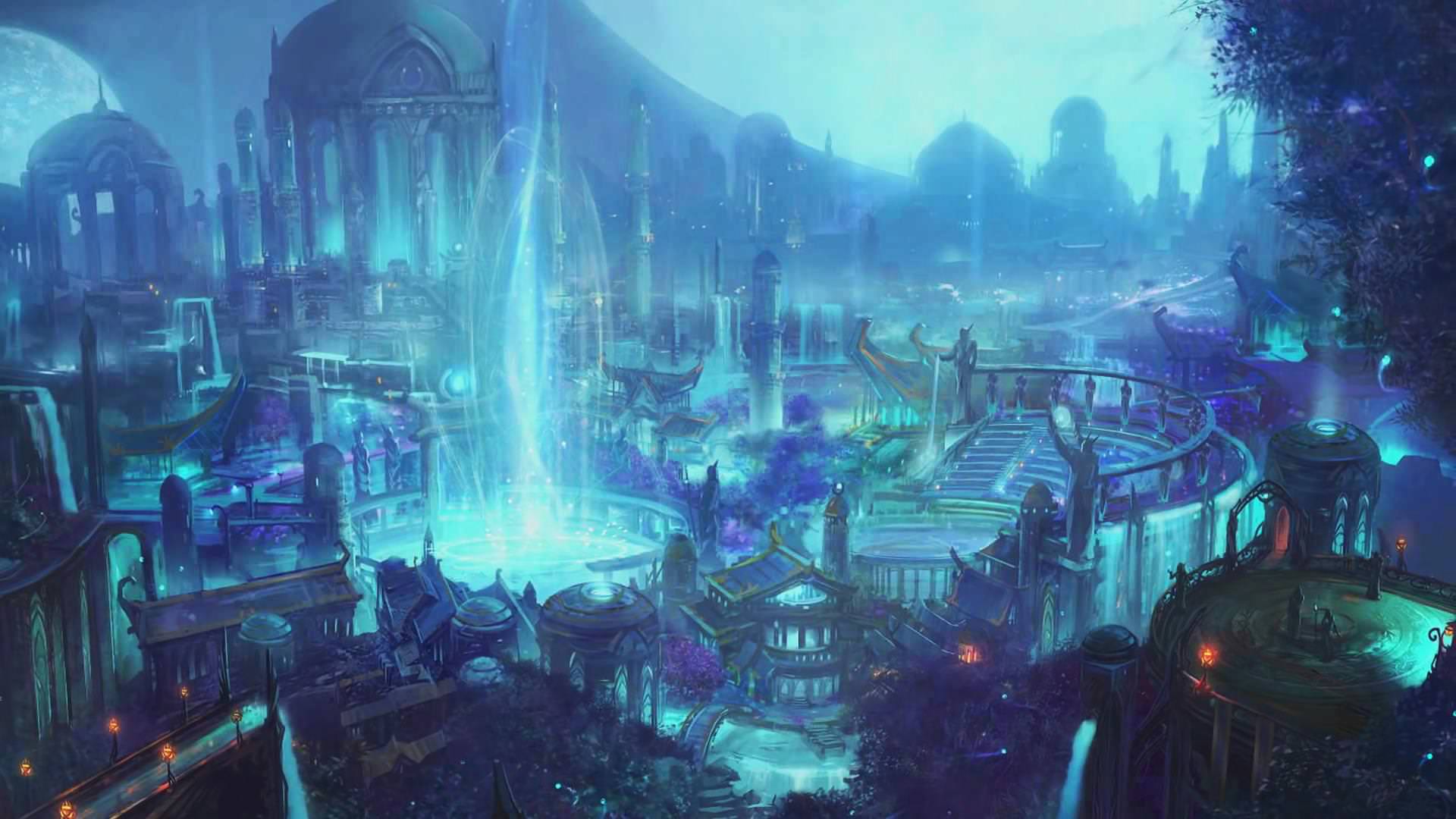

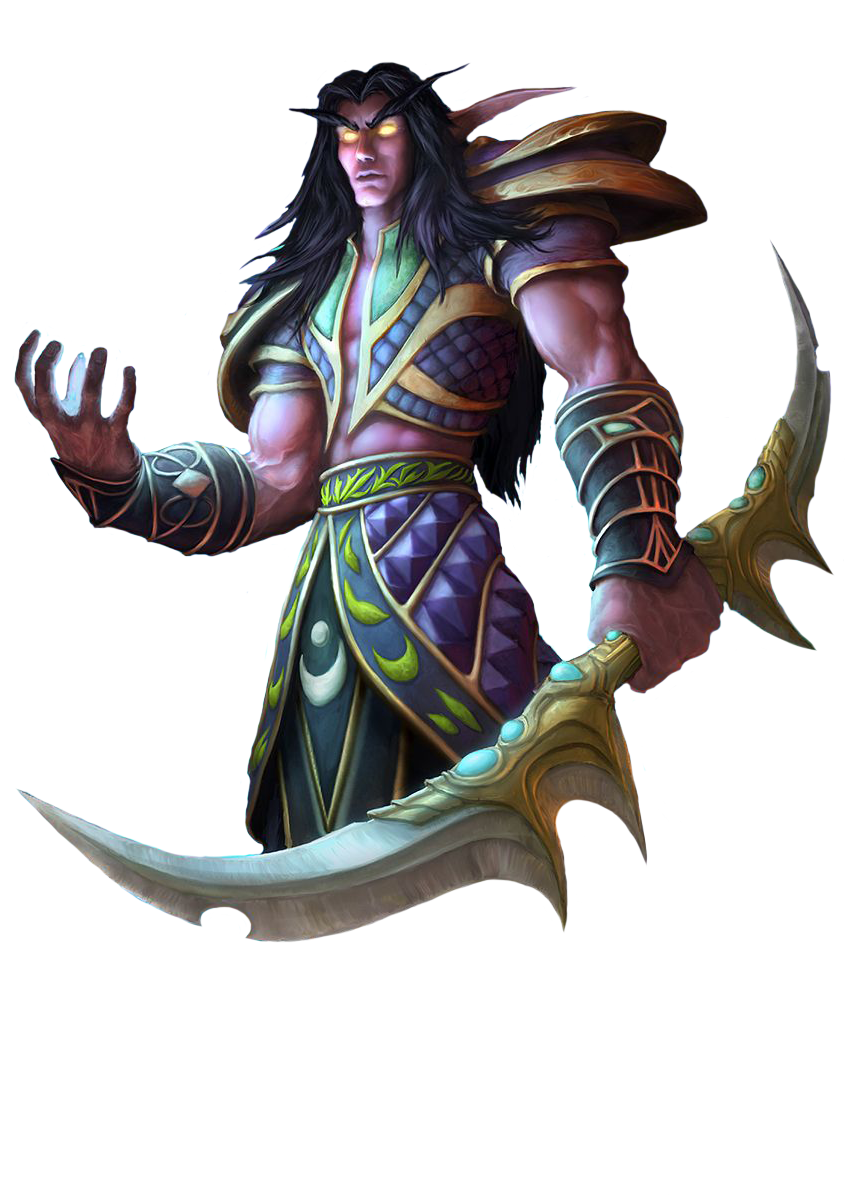
Affiliation
Night elves joined the alliance after the Third War. The war had cost the elves many of their former allies, who had fallen into madness and abandoned the alliance they had with the night elves. the night elves have a disgust and suspicion of the high elves. They remember the atrocities their forefathers the highborne did, and have not forgiven them for it. Despite the grudge, they have worked together in the past when it was deemed a necessity for survival.
Even though much of the kaldorei nation has joined the Alliance, many among them have chosen to stay neutral. Night elves of the Cenarion Circle, for example, choose to stay out of the faction conflict, and turned their attention towards the protection of Azeroth's nature.
Night Elf Names
Kaldorei names commonly have a hidden meaning or a meaning in Darnassian, and their surnames aren family names, derived from personal feats of the night elves ancestors, yet some amongst night elves take new family names showing their own achievements.
Male Names: Alegorn, Daros, Eiron, Mathrengyl, Mardant,
Gasul, Lanoth, Khardona, Andissiel, Sillarn
Female Names: Astaia, Saelienne, Jeen'ra, Lelanai, Keina,
Alathea, Lotherias, Cordessa, Aquinne
Family Names: Moonlance, Shadewhisper, Nightrunner,
Bearwalker, Briarbow, Moonblade, Proudstrider
Night Elf Traits
Your night elf character has a variety of natural abilities, the result of thousands of years of elven refinement.
Ability Score Increase. Your Dexterity score increases by 2, and your Wisdom score increases by 1.
Age. Night elves reach physical maturity at the pace of humans, but the night elven understanding of adulthood goes beyond physical growth. Night elves typically claim adulthood and an adult name around the age of 100, and can live to become thousands of years old.
Alignment. Night elves live in close ties with the natural world, they have an unprecedented connection to nature and protect it fiercely, pulling many night elves towards good. They love freedom and variety, making most lean toward the gentler aspects of chaos as well.
Size. Night elves are between 7 and 8 feet tall and weigh between 210 and 250 pounds. Your size is medium.
Speed. Your base walking speed is 35 feet.
Darkvision. Accustomed to twilit forests and the night sky, you have superior vision in dark and dim conditions. You can see in dim light within 60 feet of you as if it were bright light, and in darkness as if it were dim light. You can’t discern color in darkness, only shades of gray.
Keen Senses. You are proficient in the Perception skill.
Nature Resistance. You have advantage on saving throws against poison, and you have resistance against poison damage.
Shadowmeld. You can attempt to hide even when you are only lightly obscured by foliage, heavy rain, falling snow, mist, and other natural phenomena.
Kaldorei Weapon Training. You are proficient in longbows, kaldorei moonglaives, kaldorei moon swords, and warglaives.
Languages. You can speak, read, and write Common and Darnassian. Darnassian is fluid, with subtle intonations and intricate grammar. Its literature is rich and varied, and their songs and poems are famous among other races.
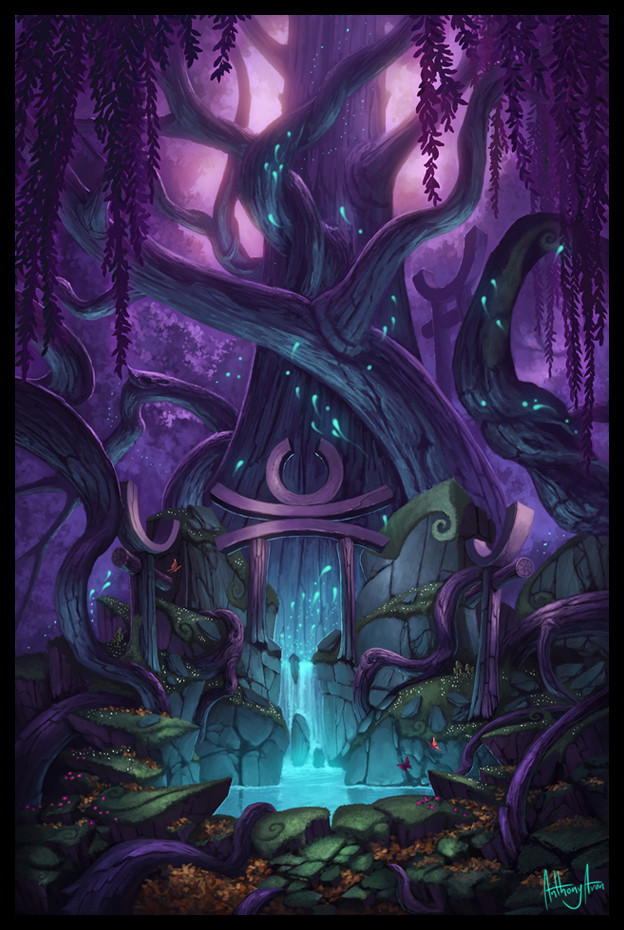

Gnome
You never really understood, did you? It is our loyalty to our friends that provides our truest, greatest strength...
My friends. It is a power that numbers cannot match.
— Gelbin Mekkatorque
Gnomes are a diminutive, wiry race of tinkers who live underground. In the Second War, they built vehicles and gadgets for the Alliance, submarines and flying machines, to combat the Horde. They are great mechanics and inventors, and are renowned for their knowledge and eccentric natures. The gnomes had a city, Gnomeregan, built into Ironforge Mountain. But invading troggs destroyed it and slaughtered its citizens.
Many survivors moved into Khaz Modan and now live with the Dun Morogh dwarves, and a few traveled with their dwarven friends to Kalimdor.
The gnomes are still reeling from the destruction of their home city and are loath to leave the safety of the dwarven tunnels. Most gnomes on Kalimdor remain secluded in Bael Modan.
Cheerful Expression
Even after the decimation of their race and the destruction of their city, gnomes are an amiable and kind hearted lot. They make and keep friends easily; others find disliking a gnome to be difficult. A gnome's energy and enthusiasm for living shines through every inch of his or her tiny body. Gnomes average slightly over 3 feet tall and weigh 40 to 45 pounds. Their tan or brown faces are usually adorned with broad smiles (beneath their prodigious noses), and their bright eyes shine with excitement. Their fair hair has a tendency to stick out in every direction, as if expressing the gnome's insatiable interest in everything around.
A gnome's personality is writ large in his or her appearance. A male gnome's beard, in contrast to his wild hair, is kept carefully trimmed but often styled into curious forks or neat points. A gnome's clothing, though usually made in modest earth tones, is elaborately decorated with embroidery, embossing, or gleaming jewels.
Exceptional Tinkers
Gnomes tend to design complicated devices that are relatively safe. Gnomes are in many ways commensurate organizers: a gnome can spend as much time organizing and planning a project as they do actually working on it. If the design fails, they try to learn why, and fix it if they can.
If they meet with success, they will continue to tinker with it and improve the design, often for years afterward. Thus, many gnomish designs feature a high degree of complexity and a low chance of failure, the exceptions being those that dabble with chaos energy — but even then, they take steps to ensure the worst that could happen is a brief, non-fatal failure.
While a goblin would scream and flee at the mere thought of a cost overrun, a gnome simply shrugs and presses on. If a project fails to work correctly the first time, a gnome will continue to tinker with it, while a goblin would usually give up and move to something else. Thus, gnomish items have very low failure rates compared to goblin items.


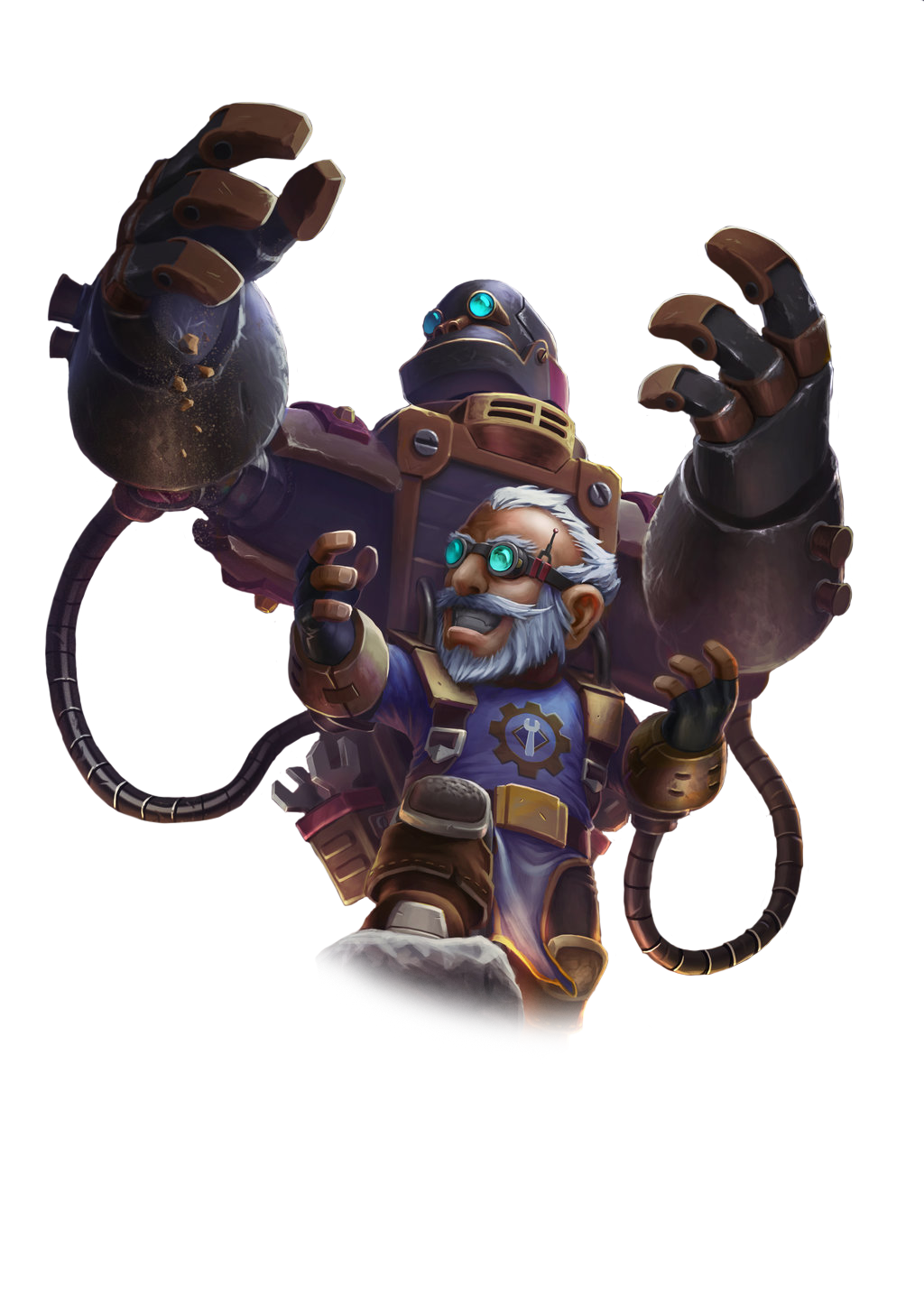
Affiliation
Gnomes are members of the alliance, they are great friends of the dwarves and have fought and died alongside human soldiers. They are wary of the blood elves, but so is everyone else, so they don’t feel too bad about that. They battled the Horde in the Second War and have a bit of a grudge against orcs, but gnomes are a kindly and forgiving lot and are willing to give the orcs a second chance. Gnomes and goblins have always been rivals — though whether this rivalry is friendly or brutal depends on the individuals involved.
Gnomes have not been on Kalimdor long enough to form proper opinions about its denizens. Tauren and night elves both seem rather rustic for gnome sensibilities — but they can make friends with anyone.
Names
Gnome parents name their children at birth. Gnomes have family names that represent an honored ancestor’s achievements, but they only keep these names until some time in their 30s. Gnome society expects them to have made their own achievements by then, and thus the gnome invents a new name that represents their own accomplish-ments. This name then takes the place of his family name.
Male Names: Grobnick, Kazbo, Hagin, Snoonose, Mikosh,
Kebos, Otlak, Ciklin, Therlick, Finlis, Iklirn
Female Names: Beggra, Nefti, Sorassa, Gamash, Biskil,
Munkull, Inku, Fixi, Mekin, Mitkla, Dapeek
Family Names: Spinpistol, Airslicer, Bombtosser,
Greatgear, Togglefield, Luyckbreak, Stormhammer
Gnome Traits
Your gnome character has certain abilities, learned through generations of gnomes.
Ability Score Increase. Your Intelligence increases by 2, and your Charisma by 1.
Age. Gnomes mature at the same rate humans do, and most are expected to settle down into an adult life by around age 40. They can live 350 to almost 500 years.
Alignment. Gnomes are good-hearted, and even the tricksters amongst them are more playful than vicious. Those of evil alignment are often the result of madness. An innovative idea that consumed them.
Size. Gnomes are between 3 and 4 feet and generally compactly built. Your size is Small.
Speed. Your base walking speed is 25 feet.
Artificer's Lore. Whenever you make an Intelligence (History) check related to magic items, alchemical objects, or technological devices, you can add twice your proficiency bonus, instead of any proficiency bonus you normally apply.
Darkvision. Accustomed to life underground, you have superior vision in dark and dim conditions. You can see in dim light within 60 feet of you as if it were bright light, and in darkness as if it were dim light. You can't discern color in darkness, only shades of gray.
Escape Artist. You can move through the space of any creature that is of a size larger than yours.
Gnome Cunning. You have advantage on all Intelligence, Wisdom, and Charisma saving throws against magic.
Gnomish Engineering. You have proficiency with artisan's tools (tinker's tools). Using those tools, you can spend 1 hour and 10 gp worth of materials to construct a Tiny clockwork device (AC 5, 1 hp). The device ceases to function after 24 hours (unless you spend 1 hour repairing it to keep the device functioning), or when you use your action to dismantle it; at that time, you can reclaim the materials used to create it. You can have up to three such devices active at a time.
When you create a device, choose one of the following:
- Clockwork Toy. This toy is a clockwork animal, monster, or person, such as a frog, mouse, bird, dragon, or soldier. When placed on the ground, the toy moves 5 feet across the ground on each of your turns in a random direction. It makes noises as appropriate to the creature it represents.
- Fire Starter. The device produces a miniature flame, which you can use to light a candle, torch, or campfire. Using the device requires your action.
- Music Box. When opened. this music box plays a single song at a moderate volume. The box stops playing when it reaches the song's end or when it is closed.
Languages. You can speak, read, and write Common and Gnomish. Gnomish in many ways look like dwarven, it uses the same script, and is renowned for its technical treatises and its catalogs of knowledge about the natural world.
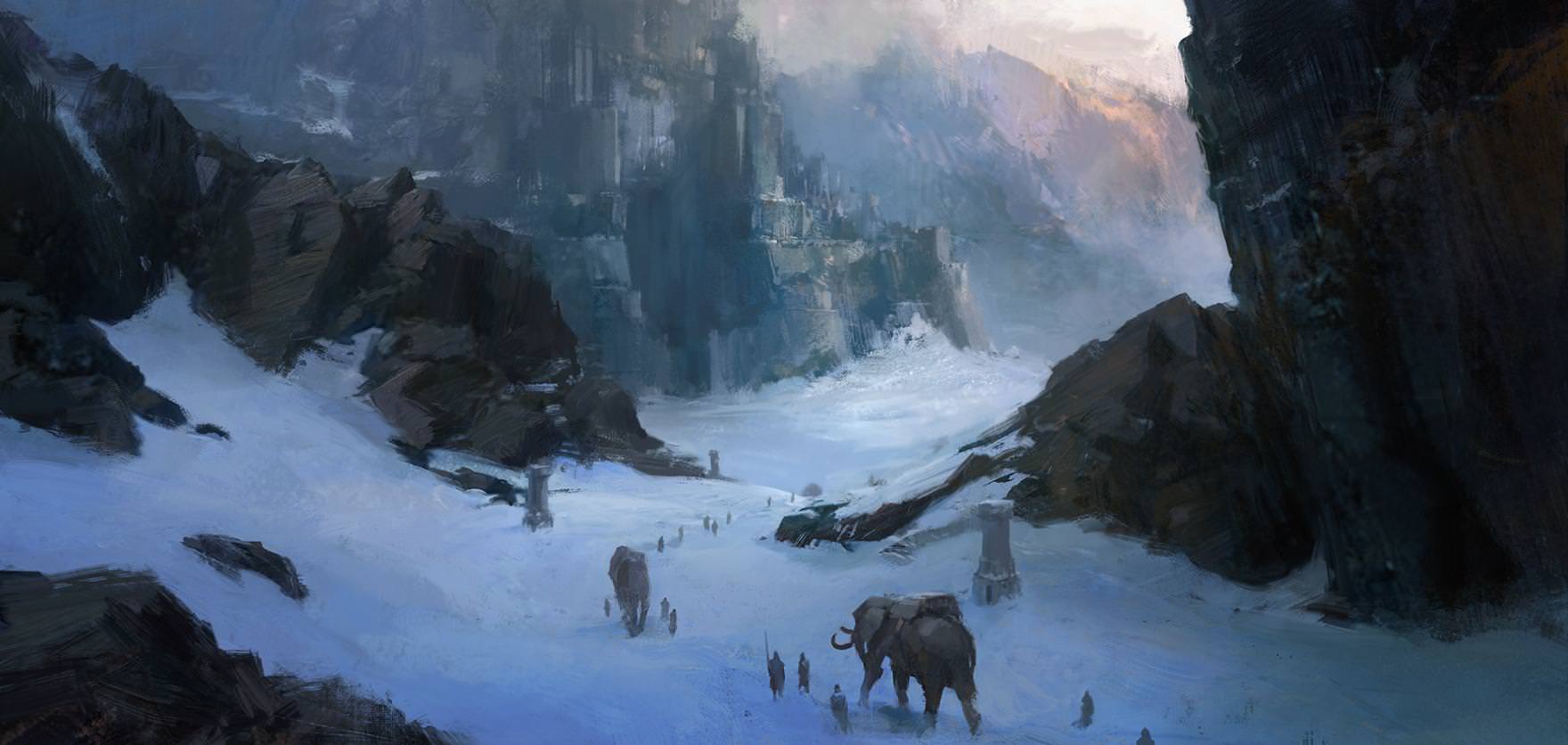

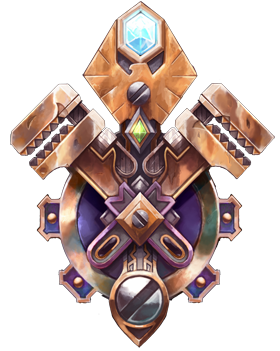
Draenei
In moments of great strife, I gaze into the heavens and see just how far we have already come.
— Prophet Velen
Thousands of years ago, the titan Sargeras shattered the tranquility of Argus by offering the eredar immeasurable knowledge and power. The eredar were a knowledge-seeking race and accepted his offer. He bathed them in his fel might, turning them into demonic beings of the burning legion called Man'ari. The prophet Velen got a troubling vision of what his race would become, and fled Argus with his followers by the help of the divine Naaru, who renamed them draenei, or "Exiled Ones" in the common tongue.
The draenei refer to their corrupted brethren as man'ari, meaning "Unnatural Being". Although both originate from the eredar race, neither the draenei or man'ari consider themselves eredars anymore.
Alien Appearance
While they stand tall and proud, they resemble no other race on Azeroth. Their skin ranges from rose white, to dark violet colors. They stand slightly taller than humans on average, ranging from well over 6 feet tall to just over 8 feet. They are generally more muscular than other races, with double jointed legs ending in hooves, weighing 250 pounds or more. Males and females are about the same height, and male are only marginally heavier than females.
Both genders have tendrils in their head as part of their hair or beard, and both have horns, it is common though for females to have drastically larger horns than males. They also have slender tails, males being considerably longer and thicker than females.
Broken draenei, although having many of their pure kins features have noticeable differences, their faces are less structured, and appear more flat than their kins beautiful features. They stand shorter than exodar draenei, their skin hard and cracked like stone, appearing more human than exodar draenei with single jointed legs.
The Divine Naaru
During the draenei's journey, the enigmatic naaru race taught them the ways of the light, though they already had a certain experience with it through Velen and T'uure. The naaru explained that there were other forces in the cosmos that would stand against the Burning Legion.
The naaru bestowed a blessing, the Gift of the Naaru, upon the draenei to signify their new connection the light. Deeply affected by the naaru's words, the draenei vowed to honor the it and uphold the naaru's ideals.
Affiliation
Due to the draenei's friendly and honorable attitude, they tend to get along well with other races, especially those who belong to the Alliance who welcomed them into their allegiance, even though not all races return their kindness. Draenei have very strong ties with the night elves, who were the first of the Alliance to greet the draenei and welcome them.
Draenei hate orcs for the kins actions on Draenor, leading to a large distrust from the draenei side of the horde and its allied races.
Names
Draenei, unlike most races, do not have last names. Their parents give them a name at their birth. Upon a draenei reaching adulthood they choose a name for themselves that they keep for the rest of their life.
Male Names: Meolphi, Bimerd, Hiktin, Ocdam, Nosmas,
Ondut, Broruk, Oter, Lacasik, Midirgerd, Drocran
Female Names: Eshaatt, Ize, Ruka, Nalre, Hahse, Efae,
Nerii, Asara, Velbus, Fuma, Oren, Suhe, Vumo
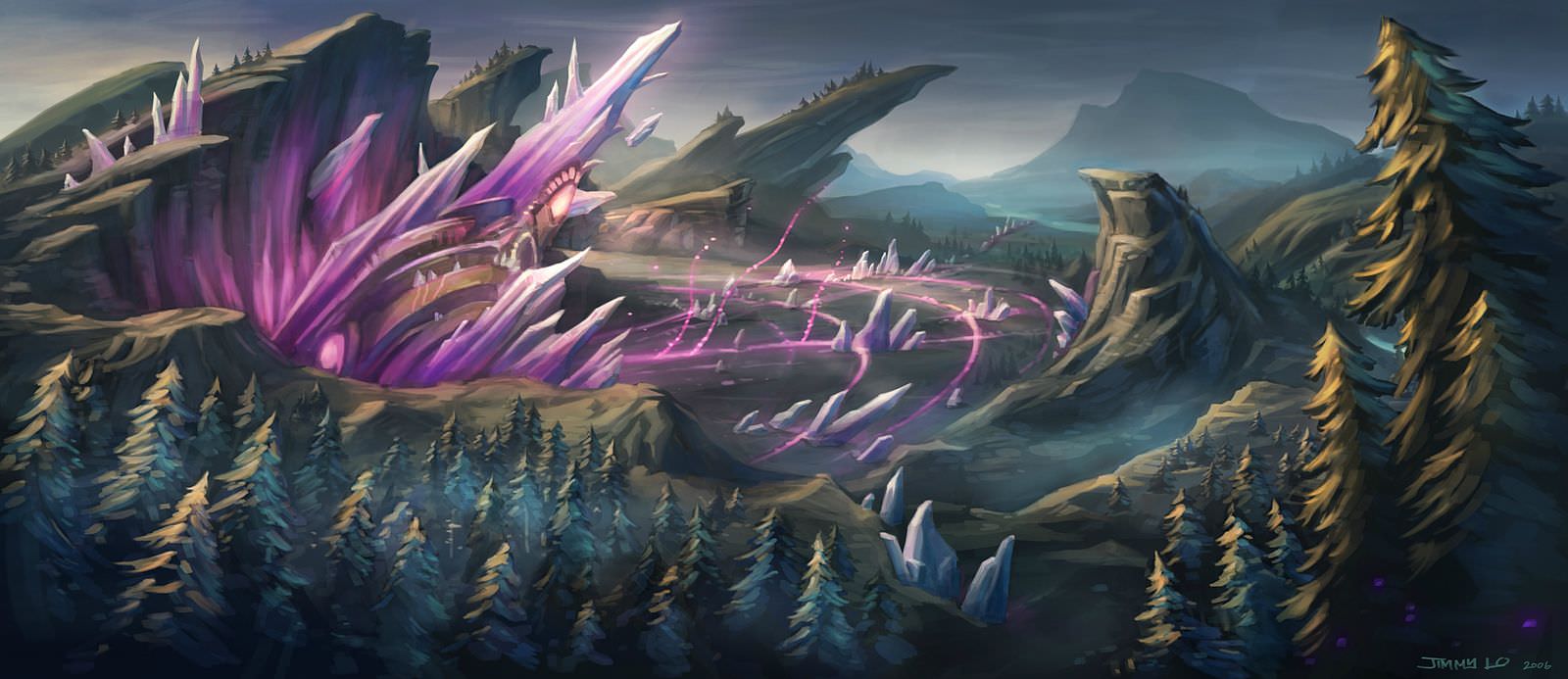

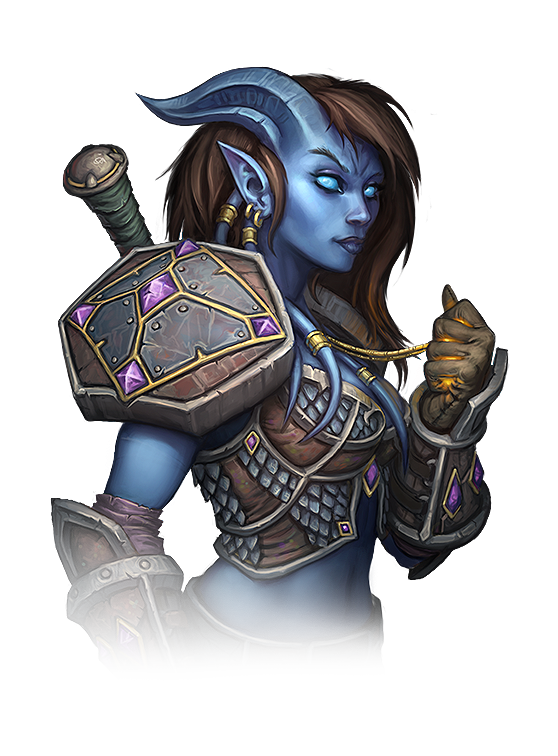
Draenei Traits
Draenei share certain racial traits given to them upon their renewal by the naaru.
Ability Score Increase. Your Wisdom increases by 2.
Age. Draenei mature slightly slower than humans, reaching adulthood in their early 20's, and can live to extraordinary age, become thousands of years old, often exceeding the ancient ages of night elves.
Alignment. Draenei are mostly good. Those who strive towards law are sages, priests, paladins, vindicators, or scholars. Those who tend toward chaos are warriors, rangers, or in other ways people more fond of pure fighting.
Size. Draenei are between 7 and 8 feet tall and somewhat muscular. Your size is Medium.
Speed. Your base walking speed is 30 feet.
Shadow Resistance. You have resistance against necrotic damage.
Languages. You can speak, read, and write Common and Draenei. The Draenei language, is a strange and compli-cated language for other races to learn. Seemingly having no resemblance with any Azerothian languages.
Subrace. Three subraces of draenei exist: broken draenei, exodar draenei, and lightforged draenei. Choose one of them for your character.
Broken Draenei
As a broken draenei, you were left on Draenor as the legion invaded, your connection to the Naaru have been severed, leaving you an empty shell of your kin. The severance has disfigured your form, leaving you an outcast amongst the Exodar Draenei.
Ability Score Increase. Your Constitution score increases by 1.
Darkvision. Accustomed to the unlit sky of Outland, you have superior vision in dark and dim conditions. You can see in dim light within 60 feet of you as if it were bright light, and in darkness as if it were dim light. You can't discern color in darkness, only shades of gray.
Elemental Bond. You know the frostbite cantrip. When you reach 3rd level, you can cast the earth tremor spell once per long rest. When you reach 5th level, you can also cast the gust of wind spell once per long rest. Wisdom is your spellcasting ability for these spells.
Exodar Draenei
As an exodar draenei, you have a natural connection with the Naaru, strengthening your bond to the light. You've fled your planet of Argus from the Burning Legions crusade, forced into exile, for centuries you fled its legions before crash landing on the planet of Azeroth in the Exodar.
Ability Score Increase. Your Strength increases by 1.
Gemcutting. You are proficient with the jeweler's tools.
Gift of the Naaru. As an action, you can touch a creature and cause it to regain a number of hit points equal to your level. Once you use this trait, you can’t use it again until you finish a long rest.
Heroic Presence. You can cast heroism and divine favor with this trait, using Wisdom as your spellcasting ability for them. Once you cast either spell, you can’t cast it again with this trait until you finish a short or long rest.
Lightforged Draenei
As a lightforged draenei, you've commited yourself to a crusade against the burning legion, infusing your body with the holy light. After the legions defeat on Outland, you've traveled to the planet of Azeroth to lend your aid to its residents against the eternal Burning Legion.
Ability Score Increase. Your Charisma increases by 1.
Forged of Light. The holy light's warmth envelopes you. When you aren't wearing armor, your AC is 12 + your Dexterity modifier. You can use your natural armor to determine your AC if the armor you wear would leave you with a lower AC. A shield's benefits apply as normal while you use natural armor.
Holy Resistance You have resistance to radiant damage.
Light's Judgement: You know the light cantrip. When you reach 3rd level, you can cast the guiding bolt spell once per long rest. When you reach 5th level, you can cast the branding smite spell once per long rest. Wisdom is your spellcasting ability for these spells.
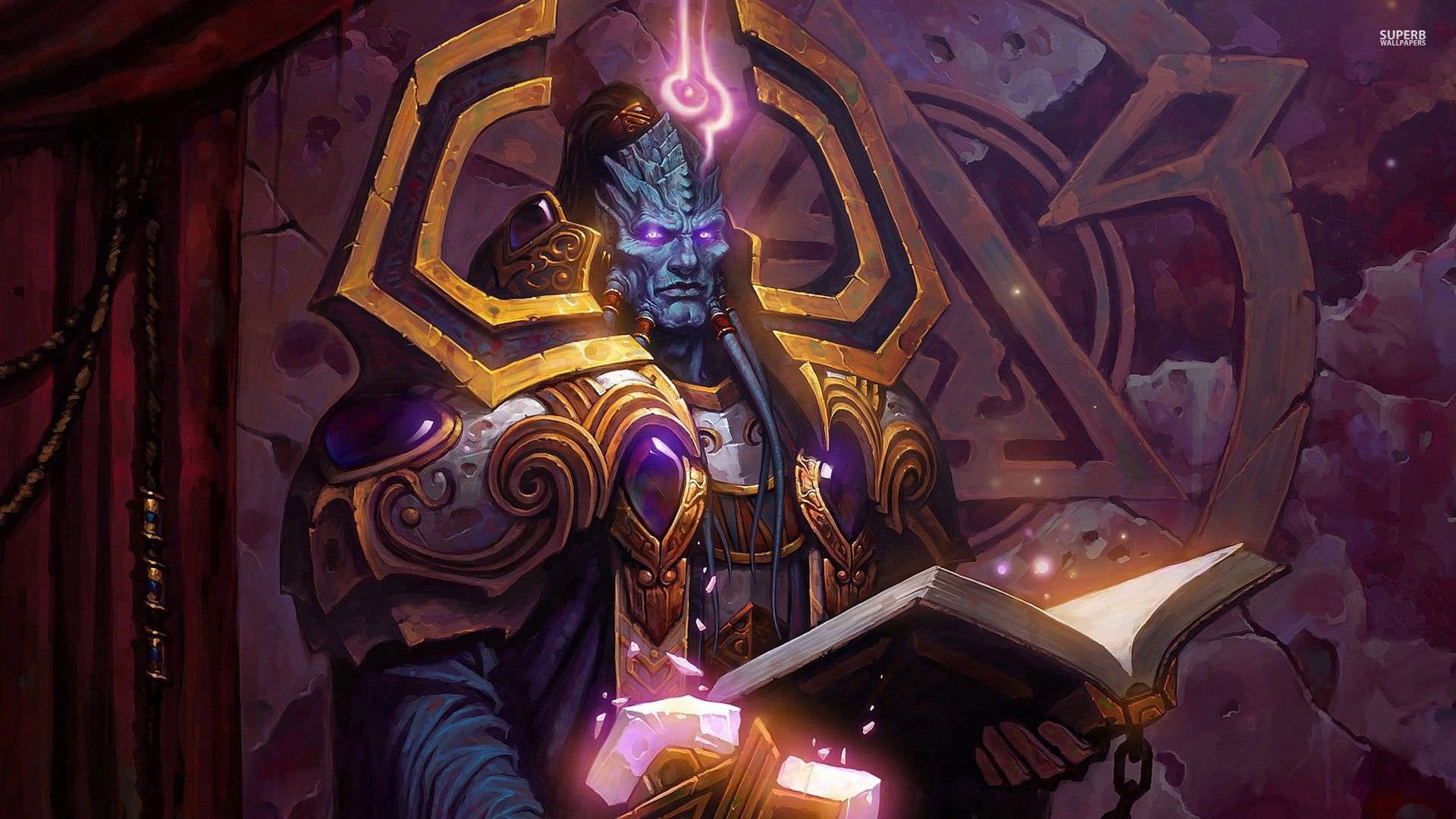

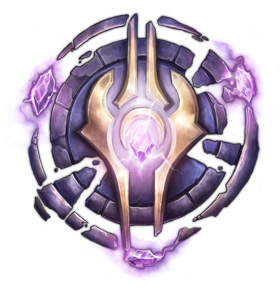
Worgen
When I told you that I wanted to retake Gilneas City from these Forsaken. There were those who said that it was impossible. I say that we no longer let our fears control us! For too long it has controlled me, fear that if all of you knew the whole truth, you would reject me. I give in no longer. Look at me... Now that you know the truth, I ask of you, who will stand with me, who will fight by my side?
— Genn Greymane
Worgens are vicious humanoid wolves, a curse thrown upon them by careless druids mingling in powers that were beyond them. The druids turned into the first worgen, feral and uncontrollable, they were sealed away for countless years when night elves realized that their bite was able to transfer the curse to others.
When the forsaken sieged the kingdom of Gilneas, the worgens were released from their imprisonment to fight the undead. The feral worgens were effective, but did not differentiate undead from human. The feral worgens never entered Gilneas, but the humans did. Spreading the curse through the kingdom like wildfire. Realizing their mistake, the night elves came to gilneas rescue to offer their aid, they evacuated as many people as they could, and sailed them to their homeland in Teldrassil. There, night elven druids taught the gilnean people how to control the feral curse that lingered in their veins. Some gilneas were so fascinated by the elves magic and connection to druidism, that they were taught their ways.
Fierce and Vicious
With their massive shapes of a cross between a human and wolf, and the razor sharp claws, worgens appear like evil of a children's tale to those unaware of their existence. They loom over the heads of humans, ranging well over 6 feet to just under 8 feet. Their furry bodies often make them seem much larger than they are, yet with their massive bodies they weigh between 220 to 310 pounds. Males and females are about the same height and build, with the only distinct difference being a males mane.
Worgen fur varies widely in coloration, with shades of black, gray, and brown being the most common amongst the worgen kin, even if the worgen had light colorations in skin or hair as a human. Worgen eyes vary like humans, from a light blue to a deep brown.
More than just Ferocious
With their wild appearance it is easy to think of a worgen as a vicious beast. Yet most still carries the properties they had in their human life. The curse will always linger in their blood, giving many worgen's a shorter temper than they might've had before. Yet they carry the same compas-sion and determination as humans do, pushing themselves forward to achieve ever greater things for themselves, their newfound kin and that of the human.
Affiliation
Worgens are still humans at their cores, they began the Alliance and it could not exist without them. Besides the respect given to all affiliated races, the gilnean humans carry a great gratitude for night elves. Their curse may be the result of rogue night elven druids, but without their aid the worgens would still be feral and hostile to all.
Although no one trusts or likes the forsaken, the gilnean hatred of the undead goes deeper than most. The forsaken are the cause of their kingdoms demise, a fact the worgens have and will not forget.


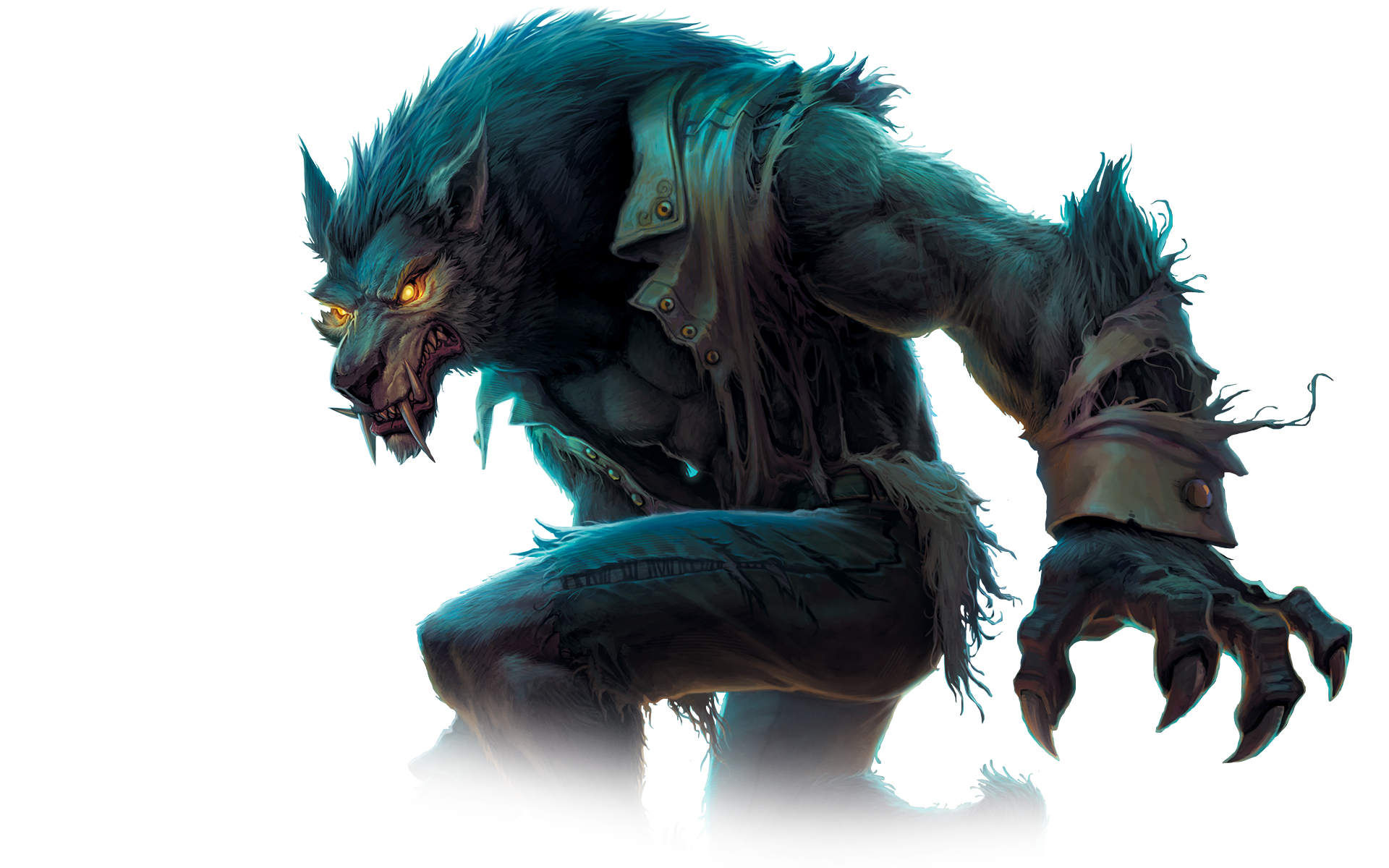
Names
Worgen names follow that of humans, as the worgens were once humans of Gilneas. Through the ages some worgen have forgotten their last names, replacing it with a name of their own, based on their achievements in their cursed life.
Male Names: Blake, Chris, Fenegan, Gerard, James, Sean,
Sebastian, Vincent, Slain, Tobias, Vitus
Female Names: Amelia, Ashley, Celestine, Loren, Mary,
Melinda, Mia, Tess, Almyra
Gilnean Surnames: Broderick, Cleese, Crowly, Godfrey,
Walden, Whitewall, Hammond, Hayward
Worgen Surnames: Greymane, Moonfang, Mistmantle,
Bloodfang, Darkwalker
Worgen Traits
The worgen curse has transformed your body into that of a worgen, giving you the following traits.
Ability Score Increase. Your Strength increases by 2, and your Dexterity increases by 1.
Age. Worgen age like humans, but even though their bodies continue to age, they never feel the strain of old age, and continue to fight as if they were a young human.
Alignment. Worgen tend to become chaotic, while originating from humans, the infection of their blood with the wolves has made them more unpredictable.
Size. Like humans, they vary widely in height and build, most standing well over 6 feet tall, and weigh around 250 pounds. Your size is Medium.
Speed. Your base walking speed is 30 feet
Darkvision. Accustomed to the black nights, you have superior vision in dark and dim conditions. You can see in dim light within 60 feet of you as if it were bright light, and in darkness as if it were dim light. You can't discern color in darkness, only shades of gray.
Hunter's Lore. You gain proficiency with one of the following skills of your choice: Animal Handling, Nature, Perception, Stealth, or Survival.
Languages. You can speak, read, and write Common and one extra language of your choice. Humans typically learn the languages of other peoples they deal with, including obscure dialects.
Two Forms. Using 1 minute, you can transform yourself into a human. While human, you appear as you did before getting affected by the worgen curse. You always appear as the same human when you transform. You can transform back into a worgen as a free action on your turn.
As a human, you loose all worgen form traits. If you make an attack, cast a spell that affects an enemy creature, or try to use an ability only available in worgen form, you imme-diately revert into your worgen form.
Worgen Form Traits
Speed. You base walking speed is 35 feet, and you have a climbing speed of 20 feet.
Bite . Your fanged maw is a natural weapon, which you can use to make unarmed strikes. If you hit with it, you deal piercing damage equal to 1d6 + your Strength modifier.
Viciousness . You can throw yourself into a vicious frenzy. As a bonus action, you can make a special attack with your bite. If the attack hits, it deals its normal damage, and you gain temporary hit points (minimum of 1) equal to your Constitution modifier, and you can't use this trait again until you finish a short or long rest.


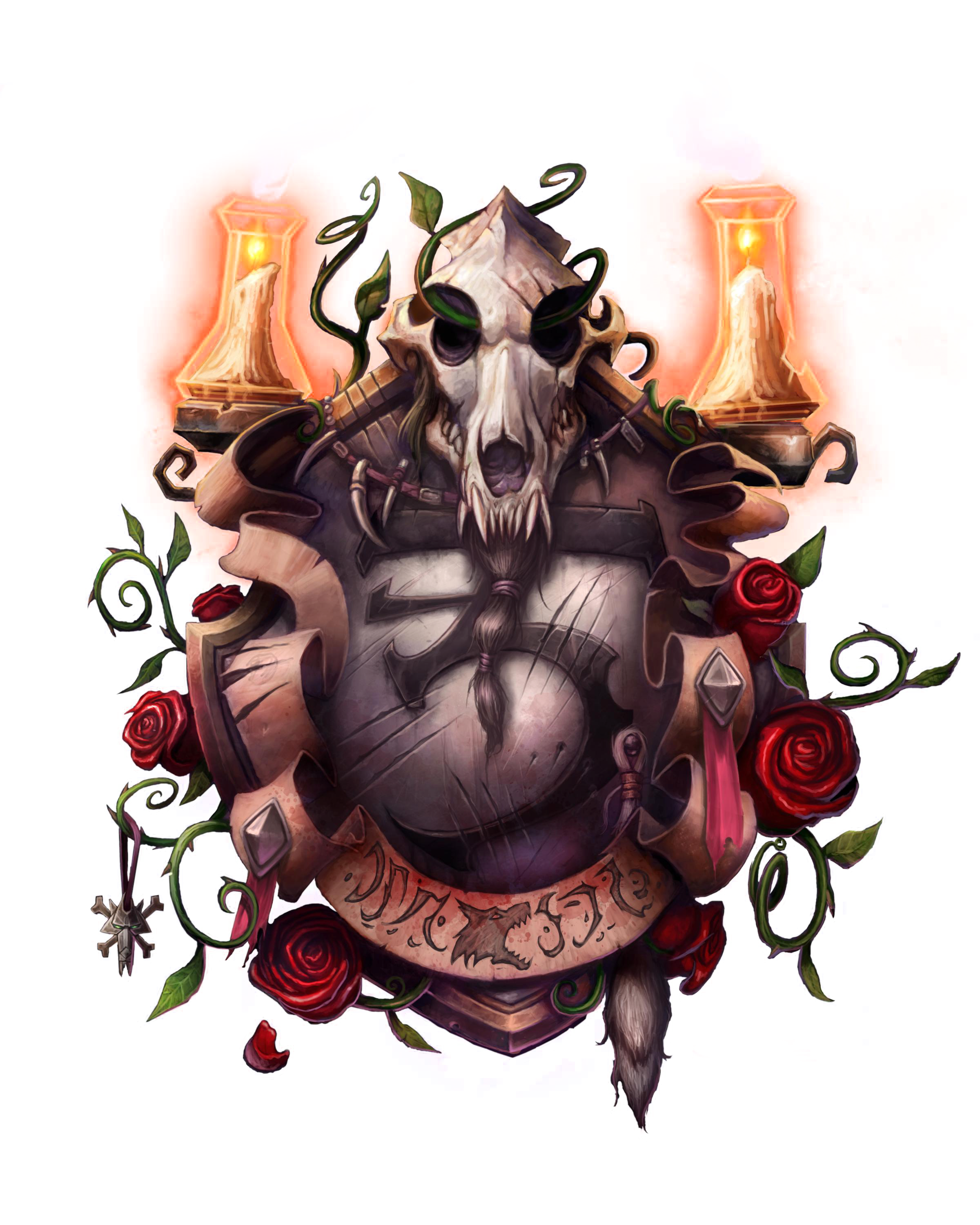
Void Elf
Some will tell you that the Light is the only path. The one weapon that can stop the enemies of Azeroth. But we see alternatives. Many roads -- many possibilities -- that are open to us. There will be those who doubt you. Who question your resolve, your ability to harness powers that have caused the downfall of weaker wills.
— Alleria Windrunner
Infused by the void itself, the Ren'dorei -- children of the void -- are a group of blood elves exiled from their home-land of Quel'Thalas. Cast out for their teachings at the hand of the elven magister Umbric, the elves have embr-aced their newfound powers, though the inner turmoil it has caused may well follow them through their lives as they fight to maintain control over it.
Shaped by the Void
While they are of the same blood as their elven siblings, void elves are best recognized for their pale or vibrant, blue-tinged skin and eyes. As well as the deep shades of blue and purple in their shadow-infused hair.
For some void elves, their dark powers can be seen manifesting in their hair, leaving the tips shimmering with void energy.
Most who have tried to harness the corruptive powers of the void have fallen into madness. Among mortals, former ranger-general Alleria Windrunner stands as the first to properly wield it -- the elf now using her powers to guide her elven kin alongside the magister Umbric.
The void elves aim, above all, to use their dangerous powers to defend both the Alliance and Azeroth itself. In doing so, they seek to prove wrong any who would doubt or judge their abilities.
Exiled From Home
Originally, the void elves were the pupils and followers of Umbric -- a magister at the court of Silvermoon, who thought the void to be the key to the survival of Quel'Thalas after its destruction at the hands of the undead Scourge.
However, the other magisters did not agree. Least of all the Grand Magister, who ultimately banished the elves from the land under fear that the void would pose great dangers to the kingdom and to the Sunwell.
Now, emboldened by their newfound powers, the void elves have sworn to make their claim on the world, under the joint leadership of magister Umbric and Alleria Windrunner.
Emergence of the Void Elves
The Ren'dorei are specific group of void elves, following the teachings of magister Umbric, though he is not the first elf to have dabbled with the void. If your group aims to run an adventure set before the Burning Legion's defeat at Argus, you should work with your DM to determine the source of your transformative powers.
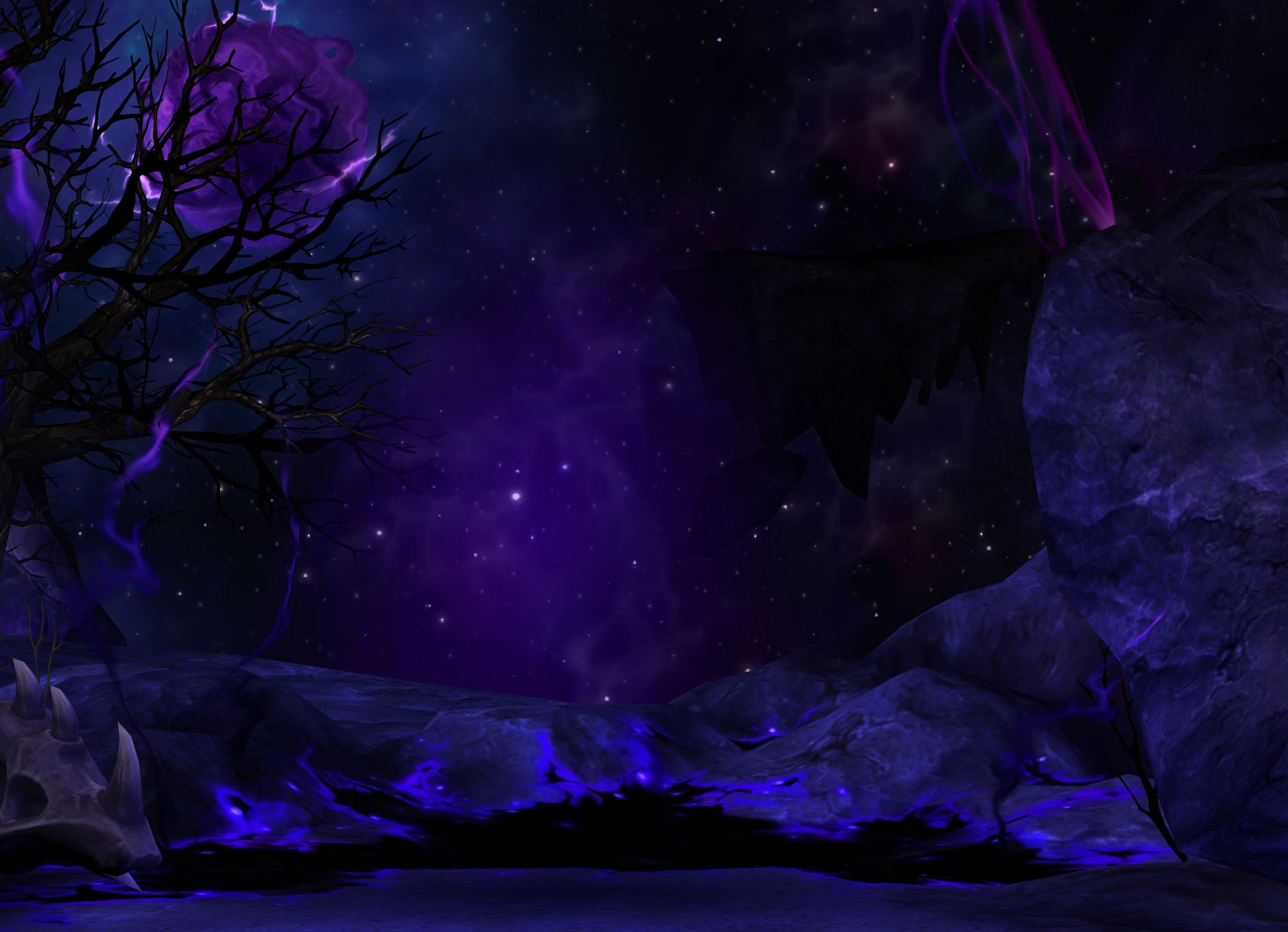


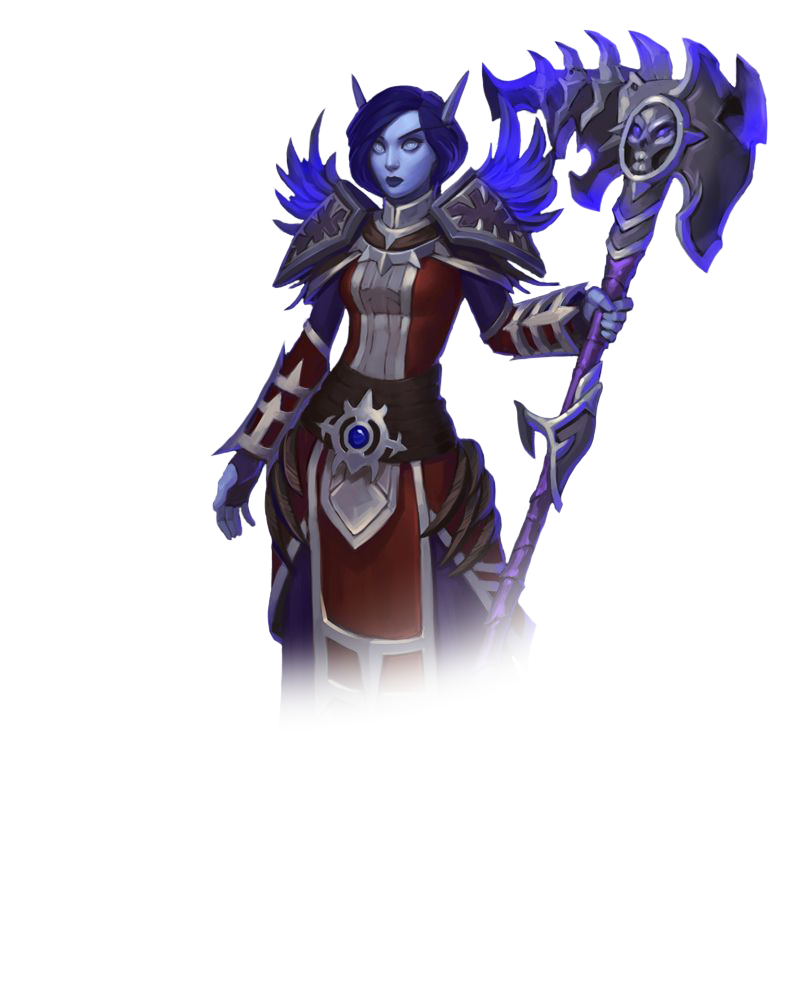
Affiliation
Following their exile from Quel'Thalas by their elven kin, the Ren'dorei have decided to swear themselves to the service of the Alliance, under the guidance of former ranger-general Alleria Windrunner.
The elves, with little love or care now for their blood elven kin, choose to embrace or try to forget their status as outcasts -- for they will forever be unwelcome within the land they've left behind.
Names
As the void elves are a small, exiled group of blood elves transformed by the void, their names flow similar to their blood elven kin -- with some choosing to change theirs to further embrace their new powers.
Male Names: Mariel, Athaniar, Anador, Tharama, Viridiel,
Malanior, Eraeth, Ulorath, Yehru, Kithadre
Female Names: Anarial, Freja, Driana, Coria, Alanassori,
Melanion, Azshara, Curlih, Setori, Amorly, Zama
Surnames: Coldtrail, Nightfeast, Voidworn, Morncloud,
Duskblood, Darkvein, Gloomwalker, Voidheart
Void Elf Traits
Your elf character has few natural abilities that are shared amongst all of the elven kin.
Ability Score Increase. Your Dexterity score increases by 1, your Constitution score increases by 1, and your Intelligence score increases by 1.
Age. Void elves reach adulthood at the rate of humans, but are not considered to have entered adulthood until they reach 60, and can live to become many hundreds of years old with ease. That said, many of the void elves have lived for thousands of years due to the power of the Sunwell extending their lifespan.
Alignment. Most void elves tend to be lawful, much like their blood elven kin. Those who do become chaotic are those who lose control of their void powers and become consumed by them.
Size. Void elves in many ways resemble humans, but with slender builds, and much more refined features. Usually just over 6 feet tall, with very little difference between male and females. Your size is Medium.
Speed. Your base walking speed is 30 feet.
Darkvision. Accustomed to twilit forests and the night sky, you have superior vision in dark and dim conditions. You can see in dim light within 60 feet of you as if it were bright light, and in darkness as if it were dim light. You can’t discern color in darkness, only shades of gray.
Keen Senses. You are proficient in the Perception skill.
Chill of Night. You have resistance to Necrotic damage.
Spatial Rift. As a bonus action, you can open a rift in space and time to an unoccupied space you can see, within 30 feet of your current position. Once you use this trait, you can’t do so again until you finish a long rest.
Starting at 3rd level, you also gain resistance to all damage when you go through the the spatial rift. The resist-ance lasts until the start of your next turn. During that time, you are enveloped in void energy.
Languages. You can speak, read, and write Common and Thalassian. Thalassian is a derivative of the Darnassian language, and in many ways sound the same to an inexperienced ear.
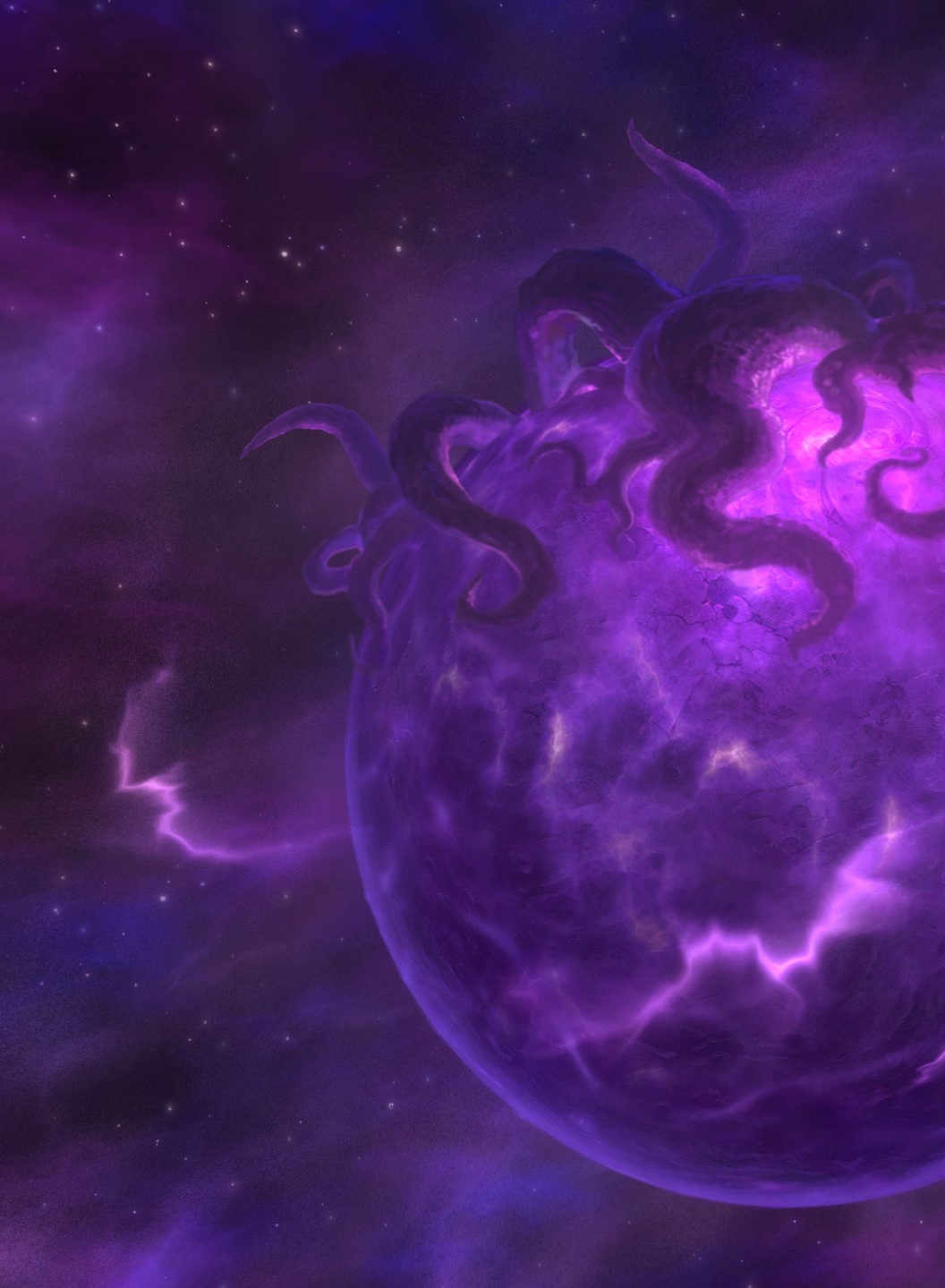

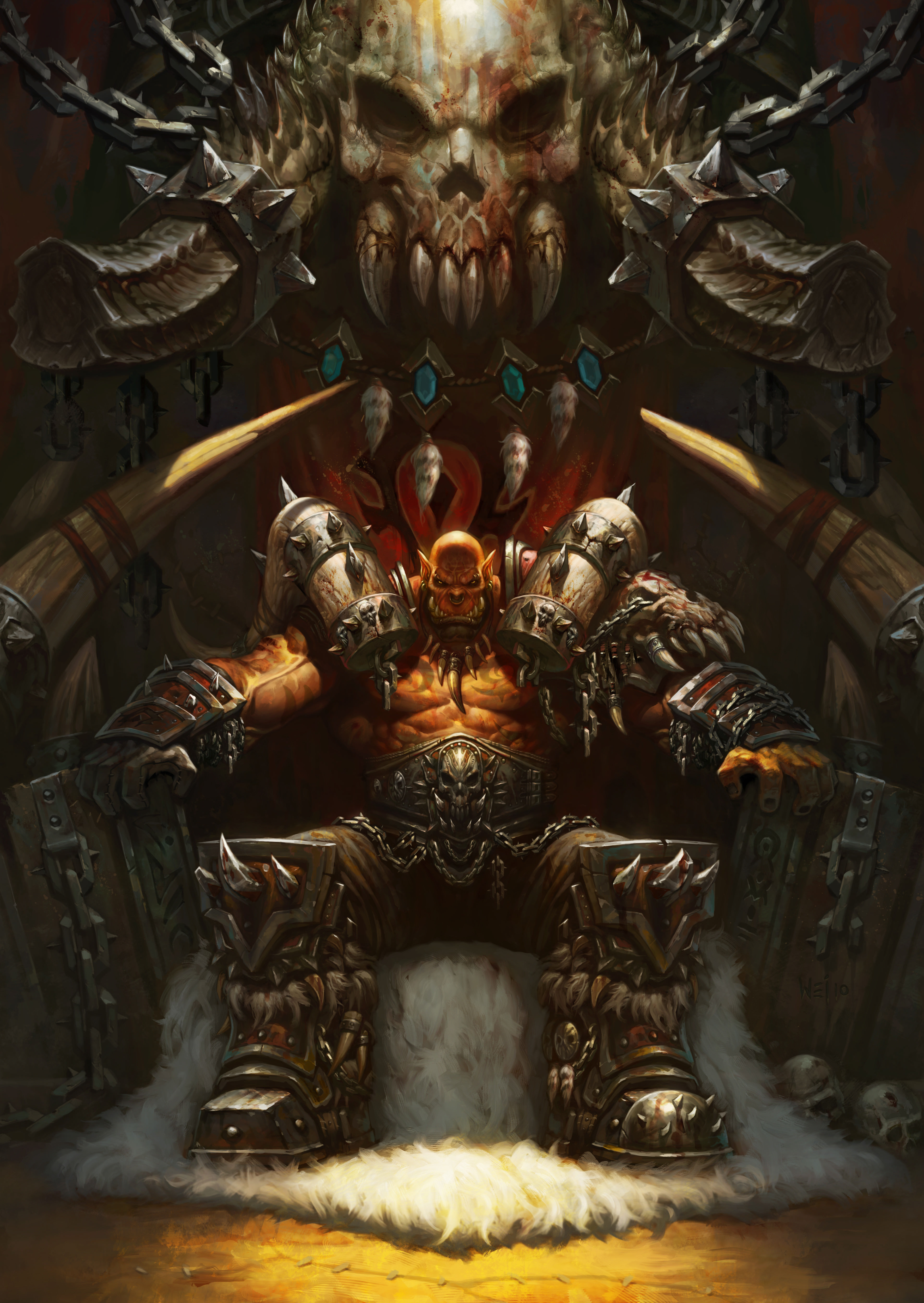
Horde Class Suggestions
The following are a set of class suggestions, pulled from World of Wacraft, as the classes the Horde races will more than likely be. It is suggested that you pick from among your race's suggested classes to keep with the thematic elements of the setting. That said, heroes are meant to break molds and be the exception to rules, so feel free to pick a class that is not typically used by your race. If you do pick outside your racial classes though, work with your Dungeon Master to create a backstory for why you are a member of this class.
You will likely notice that there are two class suggestion charts. One for Pre-Cataclysm, and one for Post-Cataclysm. This was done because the Cataclysm is a major turning point in the history of Azeroth, and the races of the Horde began learning new abilities and sources of power, in order to fight back against the threats that assail their world. Prior to the Cataclysm, the Horde races were less open to sharing knowledge of and learning about new classes and tended to stay within the traditional classes of their race.
Pre-Cataclysm
| Races | Druid | Hunter | Mage | Paladin | Priest | Rogue | Shaman | Warlock | Warrior | Death Knight |
|---|---|---|---|---|---|---|---|---|---|---|
| Orc | ✦ | ✦ | ✦ | ✦ | ✦ | ✦ | ||||
| Forsaken | ✦ | ✦ | ✦ | ✦ | ✦ | ✦ | ||||
| Tauren, mulgore | ✦ | ✦ | ✦ | ✦ | ✦ | |||||
| Tauren, taunka | ✦ | ✦ | ✦ | ✦ | ||||||
| Troll, forest | ✦ | ✦ | ✦ | ✦ | ✦ | ✦ | ✦ | |||
| Troll, ice | ✦ | ✦ | ✦ | |||||||
| Troll, jungle | ✦ | ✦ | ✦ | ✦ | ✦ | ✦ | ✦ | |||
| Blood Elf | ✦ | ✦ | ✦ | ✦ | ✦ | ✦ | ✦ | ✦ |
Post-Cataclysm
| Races | Druid | Hunter | Mage | Monk | Paladin | Priest | Rogue | Shaman | Warlock | Warrior | Death Knight | Demon Hunter |
|---|---|---|---|---|---|---|---|---|---|---|---|---|
| Orc | ✦ | ✦ | ✦ | ✦ | ✦ | ✦ | ✦ | ✦ | ||||
| Forsaken | ✦ | ✦ | ✦ | ✦ | ✦ | ✦ | ✦ | ✦ | ||||
| Tauren, mulgore | ✦ | ✦ | ✦ | ✦ | ✦ | ✦ | ✦ | ✦ | ||||
| Tauren, taunka | ✦ | ✦ | ✦ | ✦ | ||||||||
| Tauren, highmountain | ✦ | ✦ | ✦ | ✦ | ✦ | |||||||
| Troll, forest | ✦ | ✦ | ✦ | ✦ | ✦ | ✦ | ✦ | |||||
| Troll, ice | ✦ | ✦ | ✦ | |||||||||
| Troll, jungle | ✦ | ✦ | ✦ | ✦ | ✦ | ✦ | ✦ | ✦ | ✦ | ✦ | ||
| Troll, zandalari | ✦ | ✦ | ✦ | ✦ | ✦ | ✦ | ✦ | ✦ | ✦ | |||
| Blood Elf | ✦ | ✦ | ✦ | ✦ | ✦ | ✦ | ✦ | ✦ | ✦ | ✦ | ||
| Goblin | ✦ | ✦ | ✦ | ✦ | ✦ | ✦ | ✦ | ✦ | ||||
| Nightborne | ✦ | ✦ | ✦ | ✦ | ✦ | ✦ | ✦ |

Orc
To pretend the demonic corruption did not exist is to forget how dreadful the impact was. To make ourselves into victims, rather than claiming our participation in our own destruction. We chose this path, we orcs. We chose it right up until it was too late to turn back. And having made that choice, we can, with the knowledge that we have of the end of that dark and shameful road, choose not to take it.
Introduction
When the orcs were freed from the Burning Legion, they experienced a spiritual revolution as the unnatural bloodlust left their bodies, connecting them with states of heart and mind that were common to their ancestors. This new generation of orcs for the most part followed Thrall as he forged to reform the Horde through shamanism and tribal tradition.
Though prone to fits of rage in warfare, orcs tend to display a curious feral grace that can rival even the finest fencing of an elven noble. The orcs of today continue to stand in drastic contrast to those that were enslaved by the Burning Legion, who embodied a bestial and diabolical force which was barely being controlled by warlock magic.
Mindful Race
To orcs, prowess in battle bestows great personal honor on an individual. This notion of honor pervades every echelon of orcish culture, and the loss or gain of honor has equal consequence to all orcs regardless of their stature in society.
Even the naming of orcs is temporary until they have performed rites of passage; only when orcs bring honor to themselves and thus to their clan do elders grant them adult names based upon their deeds. Orcs may appear quick to anger but they are tempered by the wisdom of the shamans, who are revered across Horde society.
While many in the Alliance still perceive the orcs as brutish or even mindless, they have forged a complex culture embracing many occupations and many different races. No doubt Thrall's leadership aided in bringing this about, yet it is apparent that the Alliance has underestimated the orcs' ability to construct a society that is highly influential in world affairs.
Spiritual
As far back as orcish history has been recorded, shaman have been mentioned, and learning to speak with the elemental spirits of Draenor was a pivotal achievement in destiny for the orc clans. The first orcs to learn the ways of shamanism hailed from the Shadowmoon clan, but many clans claim the mythical "First Shaman" arose from their ranks, even though the truth is that no one is sure of his or her allegiance.
Several orc shaman worship or at least acknowledge the Earth Mother, the benevolent creator deity primarily worshipped by the tauren.
Frightful Appearance
Orc males are massive and brutish looking creatures. Weighing in at 250 to 300 pounds and standing from 6 to 7 feet in height, they are not a small race. Even orc women tend to be only a half-foot or so shorter than most males, having broad shoulders and muscular, powerful bodies.
Orcs tend to have bristly hair and beards, often black or brown in color. Their skin ranges from a light green to a dark drab olive. Eyes range in color from a fierce red to a pale blue. Orcs have broad, flat noses, tusk-like teeth jutting from their lower and sometimes upper jaws, and large, pointed ears. They favor clothes of hide, and armor and arm themselves with a variety of gear.
Affiliation
Thrall formed the Horde with determination and sheer will, and created an alliance of races that has shaken the foundations of the world to its core. Having destroyed the legacy of Grom Hellscream by bringing the orcs out of the depths of demon worship and servitude to unseen powers.
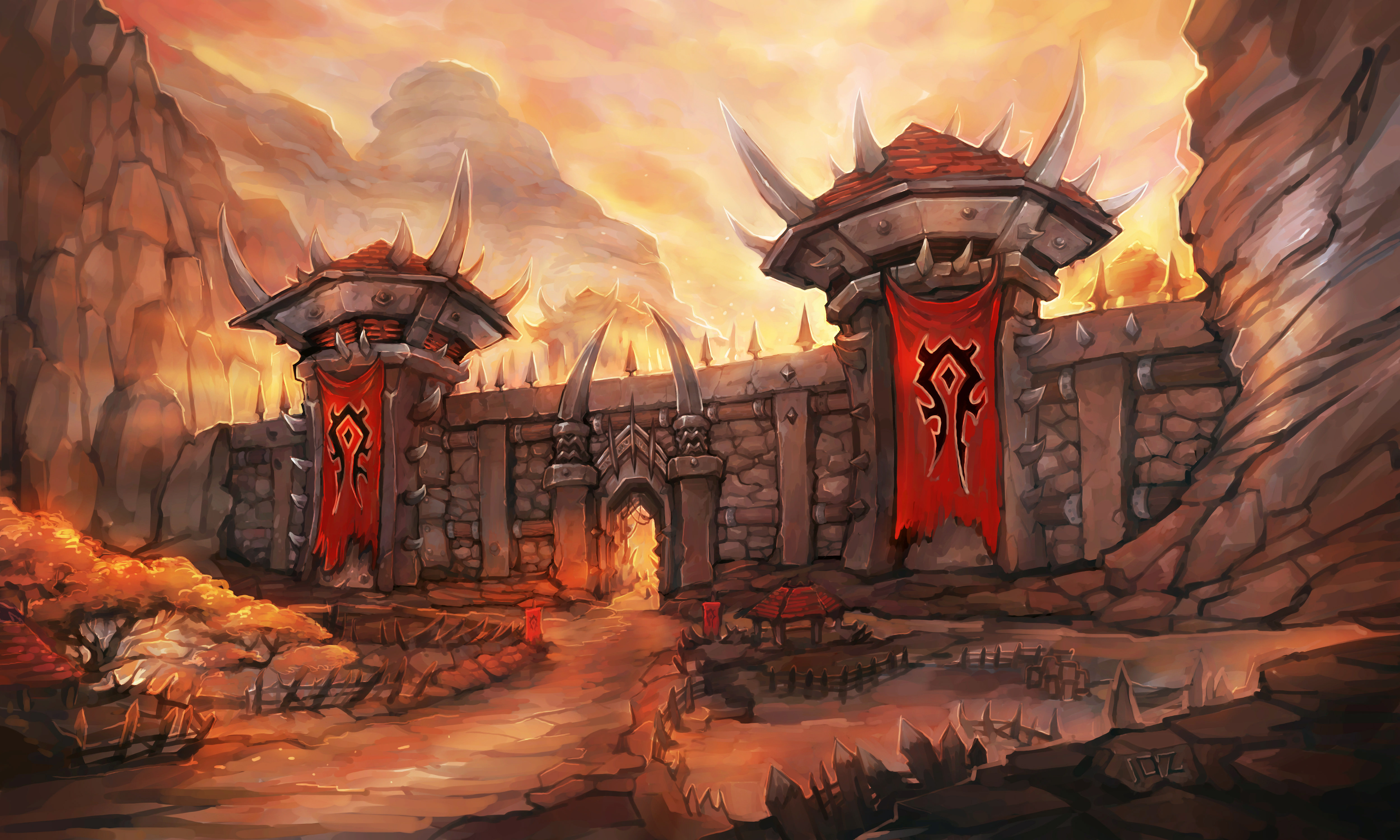

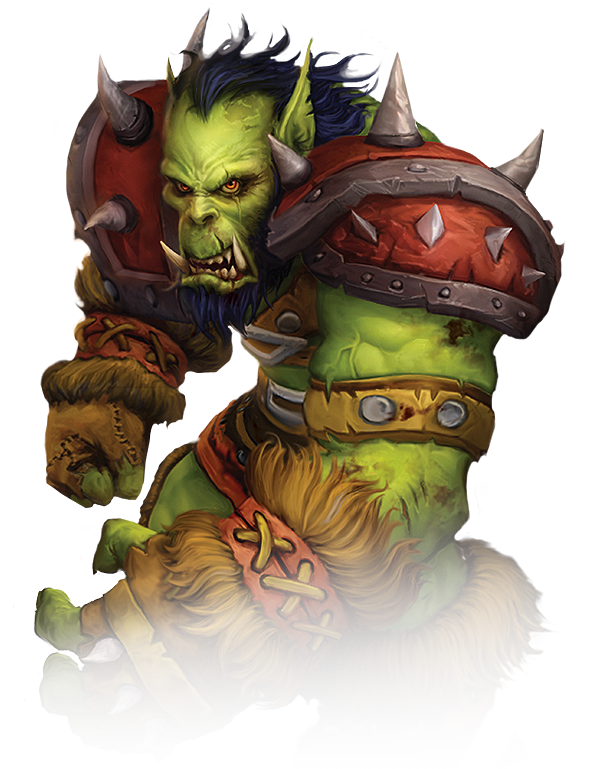
Names
Most orcish names derive from words in their language that have some complex meaning or hidden significance to their families. Typically, this is the name of a favorite thing or relative. Family names don’t exist; most orcs have last names related to some great deed of heroism or honor.
Male Names: Grom, Thrum, Drog, Gorrum, Harg, Thurg,
Karg, Regg, Kavenk, Uketel, Thrarturg, Crurn
Female Names: Groma, Hargu, Igrim, Agra, Dragga,
Grima, Fehmo, Mohma, Sherge, Zuri, Orgis
Deed Names: Cravensmile, Steelflame, Twinthunder,
Gravepride, Aridfire, Coldbrass, Foebinder, Elfkiller
Orc Traits
Your orc character share certain traits no matter what clan you deriving from.
Ability Score Increase. Your Strength increases by 1, and your Constitution increases by 1.
Age. Orcs mature a little faster than humans, reaching adulthood around age 14. They age noticeably faster and rarely live longer than 75 years.
Alignment. Orcs might not have an innate tendency toward evil, but many end up there. Evil or not, many orcs lean toward a chaotic alignment.
Size. Orcs are muscularly built, only just towering above humans, with a height of 6 to 7 feet. Your size is Medium.
Speed. Your base walking speed is 30 feet.
Darkvision. Thanks to your blood, you have superior vision in dark and dim conditions. You can see in dim light within 60 feet of you as if it were bright light, and in darkness as if it were dim light. You can't discern color in darkness, only shades of gray.
Relentless Endurance. When you are reduced to 0 hit points but not killed, you can drop to 1 hit point instead. You must then finish a long rest to use this feature again.
Languages. You can speak, read, and write Common and Orcish. Orcish is a harsh, grating language with hard consonants. It has no script of its own but is written in a mix of dwarven runes and common.
Orc Clan. Orcs come from many clans, these clans have been put into three categories: Hunter, Mystic, and Warrior clans. Choose one of these clans.
Hunter Clans
Some orc clans, prefer a more stealth approach to things, hiding and waiting for the perfect time to ambush, such clans include The Shattered Hand, and Bleeding Hollow. Two large orc clans, that go in for a much more stealthy approach to things.
Ability Score Increase. Your Dexterity increases by 1.
Agility. Your reflexes and agility allow you to move with a burst of speed. When you move on your turn in combat, you can double your speed until the end of the turn. Once you use this trait, you can't use it again until you move 0 feet on one of your turns.
Ambusher. You gain proficiency in the Stealth skill.
Mystic Clans
Not many orc clans go in for the use of magic, and those that do are usually more secretive than the rest. Generally less keen on working with other clans are spend their time as a nomadic folk rather than settling in a certain area. Such clans include The Shadowmoon, and Stormreaver.
Ability Score Increase. Increase your Wisdom by 1.
Ancestral Call. You can cast the augury spell once with this trait, requiring no material components, and you regain the ability to cast it this way when you finish a long rest. Wisdom is your spellcasting ability for this spell.
Mystic Lore. You gain proficiency in the Arcana skill.
Warrior Clans
Most known orc clans go for the brute forced approach, entering combat gladly with raised weapons, hammering down everything in their way. Some of the larger clans include Warsong, Burning Blade, and the Frostwolves.
Ability Score Increase. Your Strength increases by 1.
Powerful Build. You count as one size larger when determining your carrying capacity and weight you can push, drag, or lift.
Savage Attacks. When you score a critical hit with a melee weapon attack, you can roll one of the weapon's damage dice one additional time and add it to the extra damage of the critical hit.
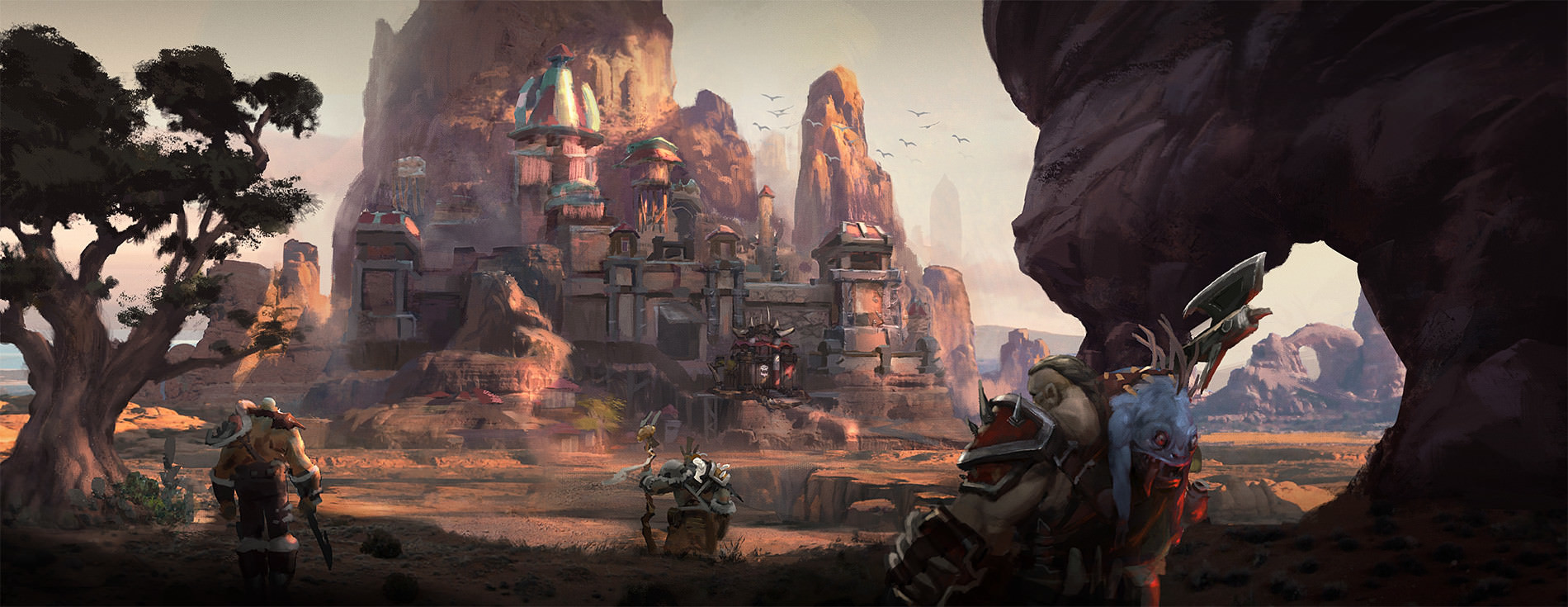

Forsaken
Death offered no escape for the scores of humans killed during the Lich King’s campaign to scour the living from Lordaeron. Instead, the kingdom’s fallen were risen into undeath as Scourge minions and forced to wage an unholy war against everything. . . and everyone. . . that they once held dear.
Introduction
Undead humans and elves freed from the Lich King’s control, the Forsaken are a strange and dark force. Hailing from the twisted, skittering darkness of Undercity, the Forsaken are nominally allied with the Horde but serve only themselves.
Under the Lich Kings crusade, the elven Ranger General Sylvanas Windrunner fell in combat. Prince Arthas raised her as a banshee and compelled her to follow his command. When the Lich King’s power waned in the incidents surrounding the Frozen Throne, Sylvanas harnessed her fury and tore herself free from his skeletal grasp. She freed many other undead as well, and recruited powerful allies from the Burning Legion and the surrounding ogre clans. Sylvanas dubbed her new force the Forsaken, and the undead established their capital in the labyrinthine crypts beneath Lordaeron’s capital city. Their sprawling, subterranean realm now called Undercity.
Necessary Alliance
The Forsaken originally became allies of the Horde out of necessity and convenience. They have no love for orcs, tauren or any other living creature, but they need time to strike against the Scourge and allies to help them do it. The Forsaken claim that they joined the Horde to prove their desire to leave their evil ways behind, but no one really believes this. The Horde accepts the forsaken’s help, as they do indeed have a common enemy: the Scourge. The Horde is leery of the forsaken’s tactics, however, and keeps watchful eyes on them.
Though initially the Forsaken alliance with the Horde was one of pure convenience, in recent times it appears that their position in the faction has begun to solidify and many, though not all, of the Forsaken appear to be more or less loyal to the Horde now.
Strange Behaviors
Forsaken culture is strange, a perverse combination of the lives they once knew as mortals and the mindless slavery they experienced in the Scourge, colored by white-hot rage toward the Lich King and an almost equally intense devotion to their queen.
Some Forsaken attempt to reclaim their humanity by acting in kind and helpful ways. Others allow hatred to fester into cruelty and rage.
Extreme Alchemists
Never sleeping, eating or falling ill, abandoned by those they once loved, the Forsaken have a brutal set of priorities.
A great portion of their efforts focus on dark alchemy, and the Royal Apothecary Society commands great power in Undercity’s oily tunnels. The apothecaries constantly send Forsaken on missions to gather odd materials for their twisted experiments. Rumors tell that the undead creatures are working to create a plague that will exterminate the Scourge and every living being on Azeroth.
Dreadful Looks
Forsaken, unsurprisingly, look like dead people. Their skin is gray and rotting, showing bone and flesh in places. Their pupil-less eyes glow with dim, white ghostlight. Their muscles are withered, making them scrawny. Their move-ments are slow but jagged. Necromantic magic keeps them preserved, but natural decay still proceeds, just at an extremely slow rate compared to normal.
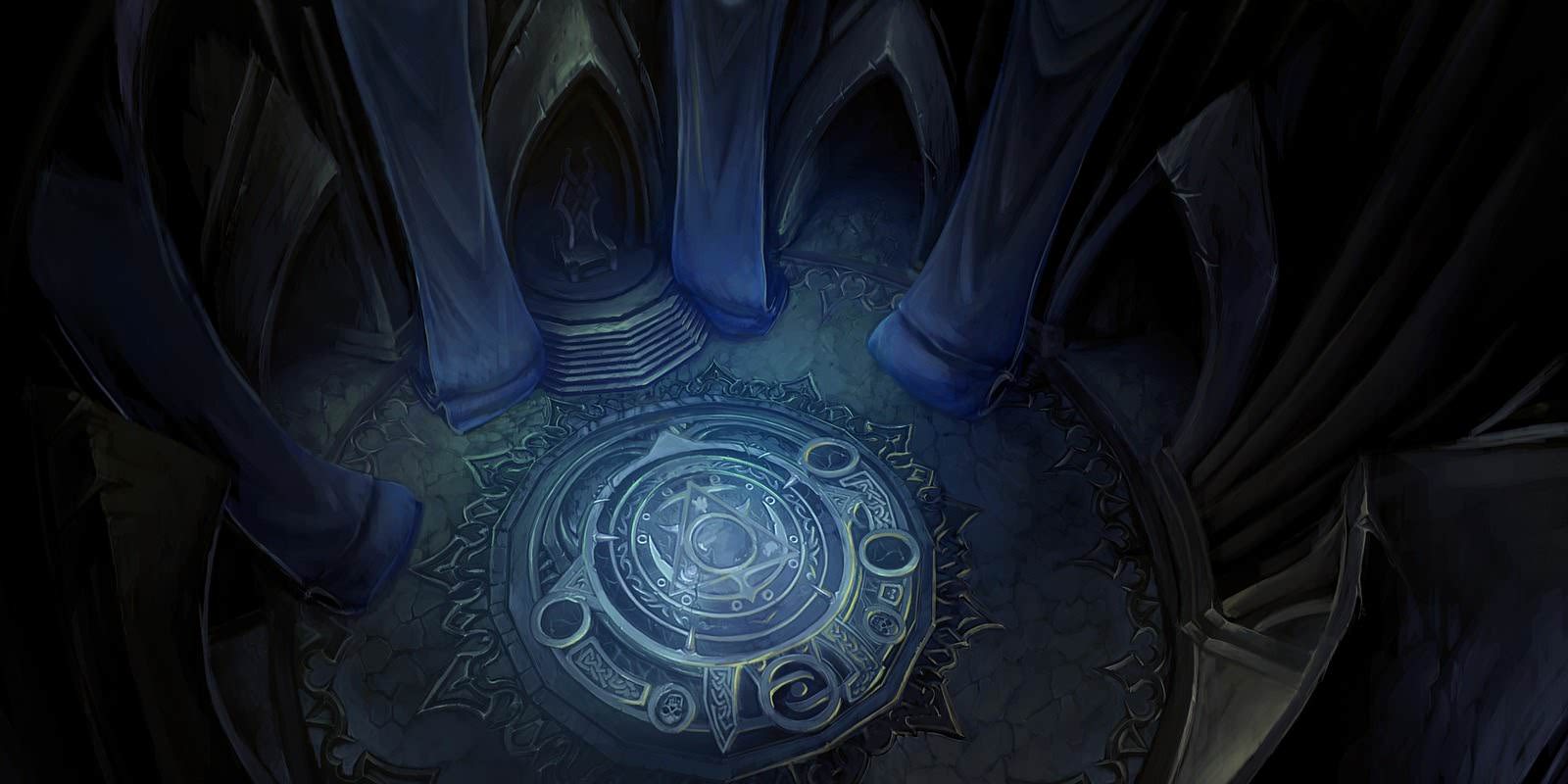


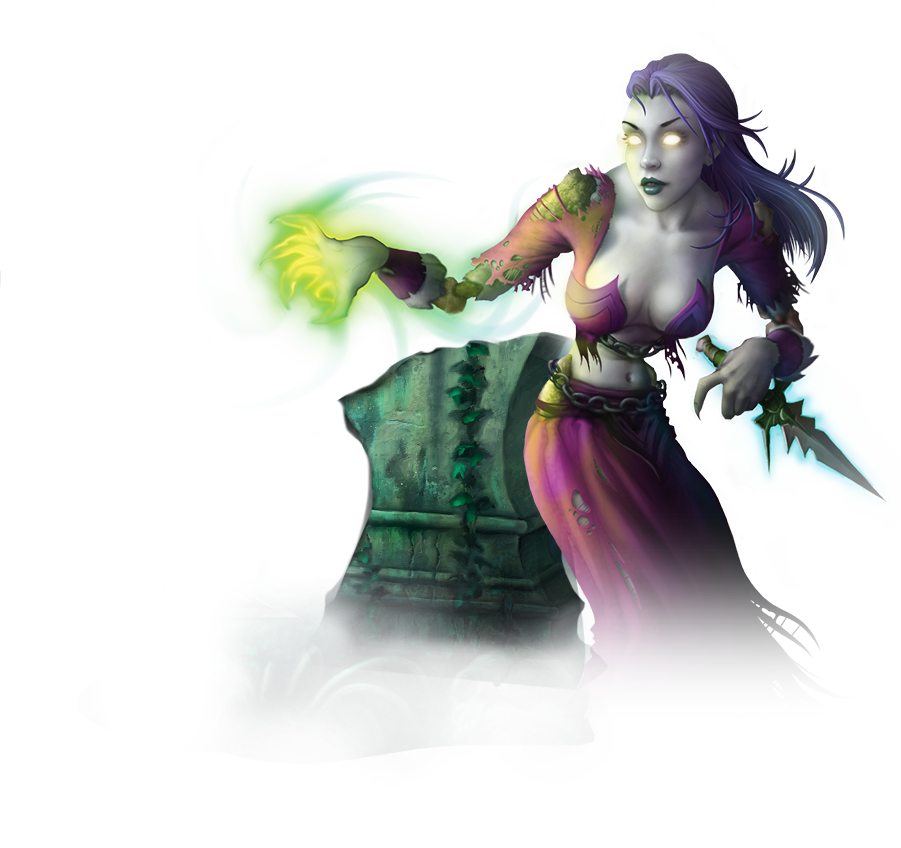
Affiliation
Though the Forsaken do not trust anyone and no one trusts them, they are members of the Horde and, for now, do their best to help their allies and placate their ambassadors. Forsaken have even less love for the Alliance, particularly because they clash constantly with the human organization called the Scarlet Crusade.
The only other Horde faction they have a semblance of trust with is Silvermoon City and the blood elves. This is because their ruler Sylvanas Windrunner, and a small portion of forsaken were once blood elves.
Names
Most forsaken keep the human or blood elven name they had when they were alive. If a forsaken cannot remember their name, or simply wishes to change it, they make up a suitable name or read one from a headstone. Some invent surnames that imply their desire to eradicate the Scourge or about their undead nature.
Forsaken Traits
Your forsaken character has certain traits deriving from humans, as well as forsaken traits.
Ability Score Increase. Your Constitution score increases by 1.
Age. Forsakens do not age, they are undead. The age they were when brought back as forsaken is the age they will be until destroyed.
Alignment. Forsakens alignment varies, as their race origin, most tend to become more chaotic, and very few keep to good after decades of being an undead.
Size. Forsaken size reflects that of their living counter-parts. Many getting more hunched over with the decades. Your size is Medium.
Speed. Your base walking speed is 30 feet.
Darkvision. Forsakens can see normal in dark and dim conditions. You can see in dim light within 60 feet of you as if it were bright light, and in darkness as if it were dim light. You can't discern color in darkness, only shades of gray.
Cannibalism. Using 1 minute, you can cannibalize the corpse of a humanoid that has been dead for less than 1 hour. When done, you regain a number of hit point sequal to your level + your Constitution modifier. Once you use this trait, you can't use it again until you finish a short rest.
Touch of the Grave. Forsaken don't need to sleep. Instead, they enter a semiconscious state of the afterlife for 4 hours a day. After resting in this way, you gain the same benefit that a human does from 8 hours of sleep.
Undead. You have two creature types: humanoid and undead. You can be affected by a game effect if it works on either of your creature types. In addition, you gain the following benefits:
- You don't require food, or water.
- You have resistance to poison damage, and advantage on saving throws against being poisoned.
Will of the Forsaken. You have advantage on saving throws against being charmed, effects that turn undead, and magic can't put you to sleep.
Languages. You can speak, read, and write Common and Gutterspeak. Gutterspeak is a simple form of common that mixes in Dwarven and Thalassian slurs.
Subrace. Two kinds of forsaken exist on Azeroth, elves and humans. Choose one of these subraces.
Forsaken Elf
As a forsaken elf, you were once a high elf off Quel'thalas, overtaken by the scourge. Now usually serving as high and powerful members within Sylvanas' rule.
Ability Score Increase. Your Intelligence increases by 1.
Quel'dorei Legacy. You can cast magic missiles and shield with this trait, using Intelligence as your spellcasting ability for them. Once you cast either spell, you can't cast it again with this trait until you finish a short or long rest.
Languages. You can speak, read, and write Thalassian.
Forsaken Human
As a forsaken human, you were once a proud human of Lordaeron. A human society at the top of the Eastern Kingdoms, that the scourge all but leveled with the ground in its passing. Now, broken from the scourges will, you serve under Queen Sylvanas' rule.
Ability Score Increase. One other ability scores of your choice increases by 1.
Human Resolve. When you make an attack roll, an ability check, or a saving throw, you can do so with advantage. Once you use this ability, you can't use it again until you finish a short or long rest.
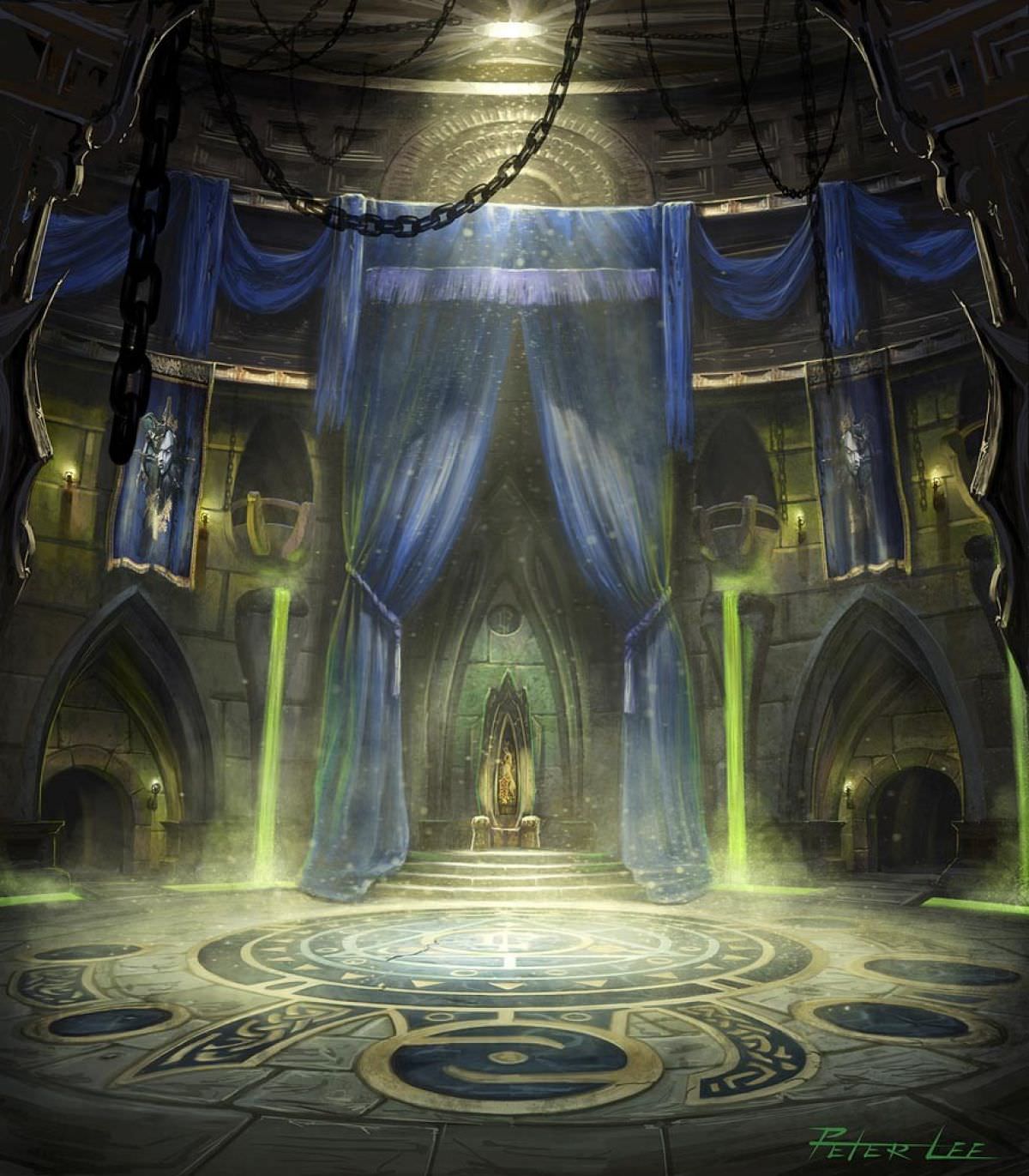

Tauren
Our people have walked this land for many, many years, and in that time have learned much about the world. Our allies will need to look to us for wisdom and guidance. My father once made a promise to the Horde, to repay a debt we owed them for their service to our race. I, for one, intend to deliver on that promise.
— High Chieftain Baine Bloodhoof
Introduction
The plains of Kalimdor have long been a home to these gargantuan nomads. The tauren are a race of spiritual shamans, hunters, and fighters, who long ago developed a complex culture and system of living without the aid of stonework, steel or conquest. This is not to say that the tauren are a race of pacifists, when they are angered they are capable of retaliating with swift and decisive brutality.
The tauren are a noble race that embrace the natural world. They have shed their nomadic roots and united in their ancestral lands. Their race may be one of spirituality, reverence for nature, and respect for elders, but it also possesses powerful warriors that willingly fight when the situation demands it. Although strong and capable warriors when roused in battle, most tauren reserve combat for when all other options are exhausted.
They prefer course of wise discussion and careful rumination before embarking on any great endeavor, and they have great respect for the wise, spiritual and elderly among their people. The tauren are not wrathful by nature, but sometimes a thirst for justice causes them to take up arms in anger.
Peaceful Race
Tauren have no love for bloodshed, as their deep spiritual beliefs do not have a place for warfare. The elders of a tribe solve most issues, or two tauren might resolve a conflict with a ritual challenge resembling a duel.
Having become members of the Horde, the introspective race has been involved in more and more conflict, creating a demand for tauren warriors and healers. Many must spend time putting great thought into the actions they perform on the field of battle. Taking another life, whether it is man or beast, is an act filled with great significance and responsibility to the tauren.
Majestic Appearance
Tauren are large, and muscular with bull-like heads. Males average 7 1/2 feet tall and 400 pounds, while females are usually a bit shorter and lighter. Tauren are mostly muscle, having incredibly developed physiques and brawny frames most suitable for combat. Soft, downy fur covers the tauren body, with manes growing along head and neck, the lengths of the arms, and the shins.
Coloration can range from solid black to blond and even to white, or mottled pelts with a range of spots and different colors. Horns are most prominent on males, although all tauren have horns.
Affiliation
Tauren are members of the horde. When they first encountered the orcs, the tauren recognized them as spiritual brethrens. No other race shared such a similar outlook on the world, and the shamans of both races met frequently to discuss the matters of the spirit world. The tauren allied with the orcs out of a shared vision, one of a collective of allies keeping each other well guarded.
While the tauren see the orcs and trolls as friends to welcome, they rarely trust the forsaken with more than a nod and a place to set their withered feet, and give blood elves the same treatment, the taint of magic still lingering on the blood elven spirit is a poisonous air to the tauren, a stench of the soul that they cannot tolerate for long.
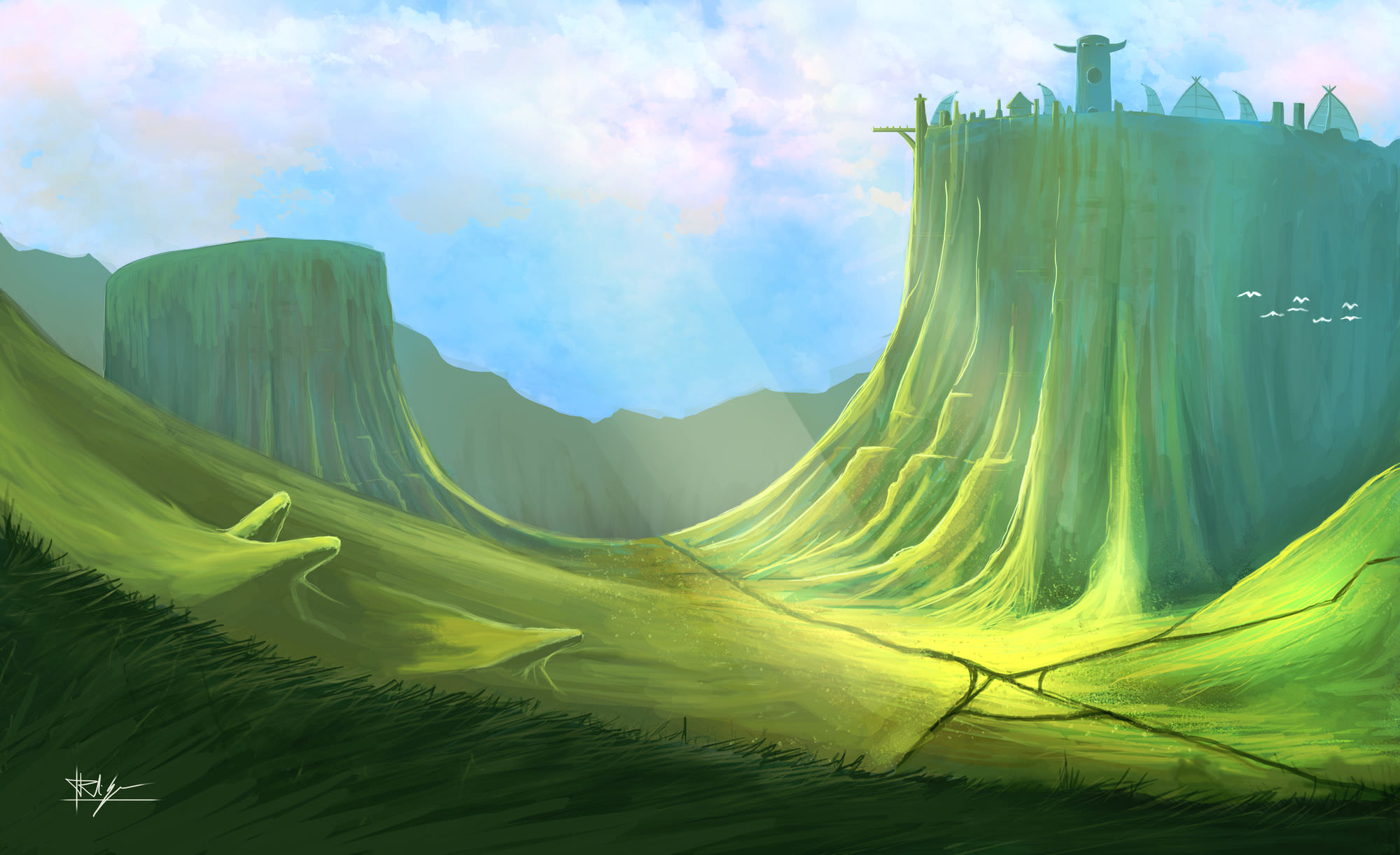

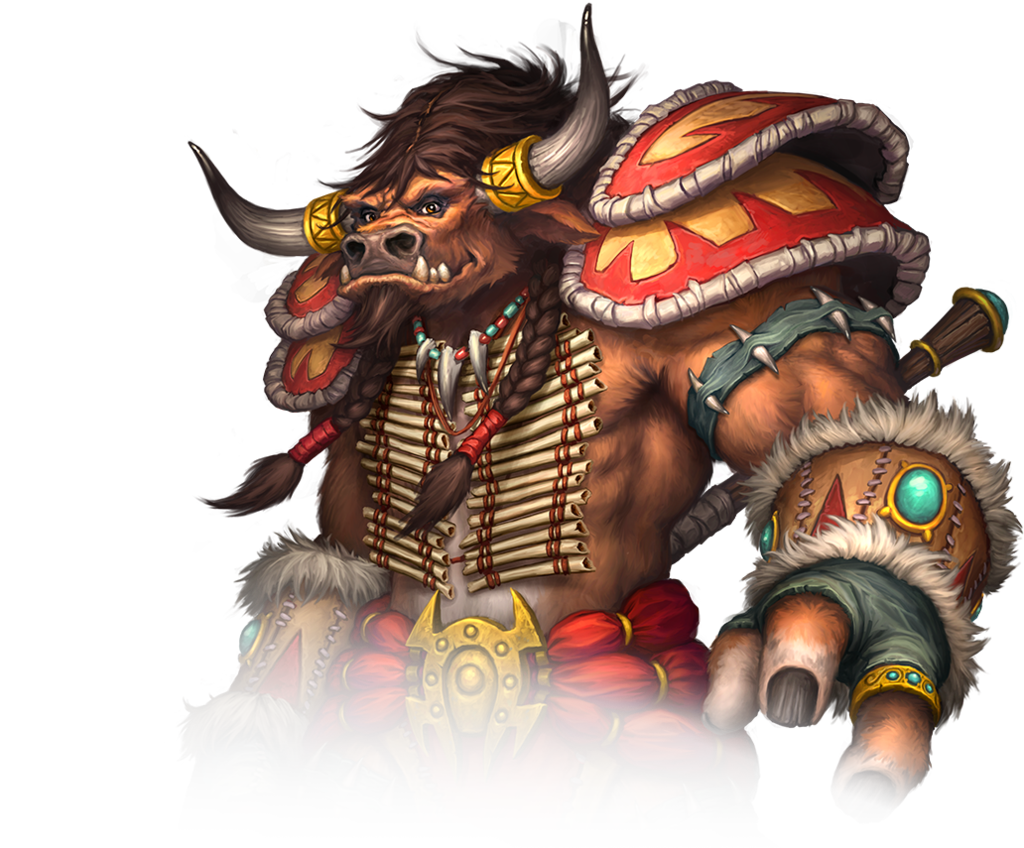
Tauren bear no personal ill will to members of the Alliance unless directly threatened by them. They view night elves with awe and fear. Tauren and night elves have coexisted on Kalimdor for centuries, and tauren have long seen the Kaldorei as a mythical race of demigods, wielders of great magic and steeped in natural powers.
Names
The language of the tauren is often harsh and low sounding, which is reflected in the names of their children. The last name of a tauren is usually a family name, handed down through the generations. If the tauren has performed some act that has made an impression on the elders of his tribe, however, he may choose to take on his own last name to commemorate that act.
Male Names: Azok, Bron, Turok, Garaddon, Hruon, Etu,
Jeddek, Mechi, Cochu, Huslu, Idra, Naalnish
Female Names: Argo, Serga, Grenda, Beruna, Halfa,
Atepa, Chepi, Mabu, Foston, Pakuna, Halona
Family Names: Darkthorn, Thunderhoof, Stormhorn,
Quillsplitter, Stonebreaker, Plainstalker, Spiritwalker
Tauren Traits
Tauren share certain characteristics no matter what tribe they come from.
Ability Score Increase. Your Strength increases by 2.
Age. Tauren reaches adulthood in their mid teens, and most grow to be 80 years old, few live beyond a century.
Alignment. Most tauren are lawful, keeping to their tribal code. Those who are evil are shunned upon, most either outlaws or corrupted in some form.
Size. Tauren stand between 7-9 feet tall, most heavily built with broad shoulders. Your size is Medium.
Speed. Your base walking speed is 30 feet.
Horns. Your horns are natural weapons, which you can use to make an unarmed strike. When you hit with them, the target takes piercing damage equal to 1d6 + your Strength modifier.
Powerful Build. You count as one size larger when determining your carrying capacity and the weight you can push, drag, or lift.
Tauren Weapon Training. You are proficient with the halbard, tauren totem, shortbow, and longbow.
Languages. You can speak, read, and write Common and Taur-ahe. Taur-ahe is a harsh, and low sounding language, without a proper alphabet, their written language is made of elaborate pictograms and pictoforms.
Subrace. Three subraces of tauren exist: highmountain tauren, mulgore tauren, and winter tauren. Choose one of them for your character.
Highmountain Tauren
Highmountains are among the more secluded tauren, residing atop highmountain on the broken isles, they are a peaceful, and generally kind hearted tauren kin. These tauren has massive thick antler instead of horns.
Ability Score Increase. Your Wisdom increases by 1.
Mountaineer. You're acclimated to high altitude, including elevations above 20,000 feet. You're also naturally adapted to cold climates, as described in chapter 5 of the Dungeon Master's Guide.
Rugged Tenacity You can focus yourself to occasionally shrug off injury. When you take damage, you can use your reaction to roll a d12. Add your Constitution modifier to the number rolled, and reduce the damage by that total. After you use this trait, you can’t use it again until you finish a short or long rest.
Mulgore Tauren
The tauren of Mulgore are a peaceful and honorable people, that nonetheless are fierce fighters when roused. Hunting and shamanism are held in high regard in their culture, as is their worship of the Earth Mother and respect for the land and nature.
Ability Score Increase. Your Wisdom increases by 1.
Endurance. Your hit point maximum increases by 1, and it increases by 1 every time you gain a level.
War Stomp. You can cast the earth tremor once with this trait, by stomping your hoof into the ground, and regain the ability to do so when you finish a long rest. Strength is your spellcasting ability for this spell.
Winter Tauren (Taunka)
The taunka are an ancient offshoot of the yaungol and relatives to the tauren who have adapted to the harsh environment in Northrend. Unlike their more peaceful tauren relatives, the taunka forcibly bend nature and the elements to their will in order to survive.
Ability Score Increase. Your Constitution score increases by 1.
Cold Resistance. You have resistance to cold damage.
Natural Athlete. You are proficient in the Athletics skill.
Tundra Walker. You can move across difficult terrain made of ice or snow without expending extra movement.
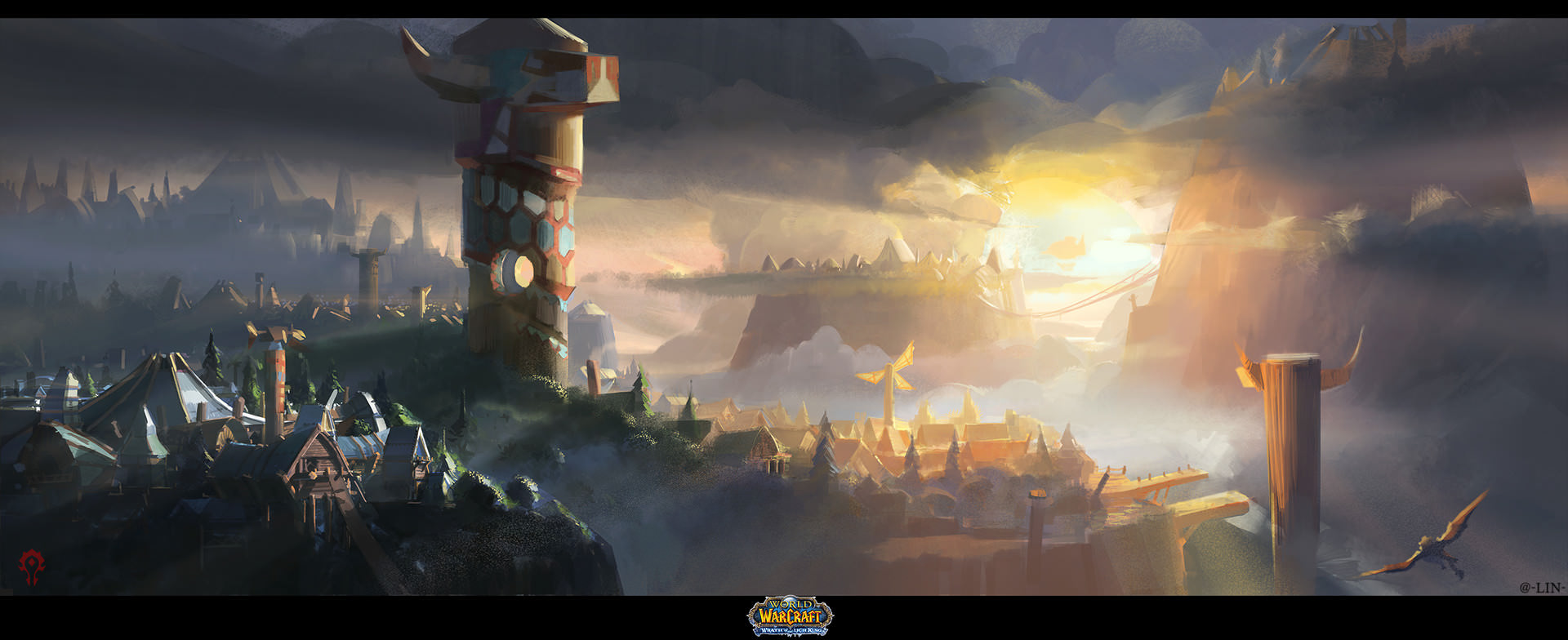

Troll
Your ancestry dates back to the dawn of the world. Great were the ancient empires of the trolls. I see a spark in your eyes, a powerful will - you wish to be great again, yes?
— Lorewalker Cho
Introduction
The jungle trolls are sometimes referred to as Gurubashi trolls, after the ancient empire of the same name. Their capital, Zul'Gurub, is located in Stranglethorn Vale, along with many smaller towns, cities, and villages, many of which are in a state of ruin or disrepair. The largest jungle troll settlement outside Stranglethorn is Sen'jin Village founded by the Darkspear tribe, who had been displaced from their exile on the Broken Isles and Echo Isles.
Forest trolls hold all other races in contempt — especially blood elves, whom they consider the despoilers of their ancient homeland. They will only work with others if it means the elimination of an even more hated enemy. Forest troll culture is tribal and primitive. Though not as violent as their ice troll cousins, forest trolls nonetheless have a fearsome reputation in battle.
Ice trolls are a subspecies of troll that lives in cold climates. They have angular features, bright blue eyes, and mottled blue-white skin covered in hides and pelts. This troll has blue-white skin under grayish leather armor, and he sports a red mohawk.
Ice trolls are generally evil and like most trolls, they are fierce protectors of their homes and may attack travelers to gain weapons, materials, clothing and food. They practice cannibalism and sometimes eat their slain enemies raw.
Cannibalists and Voodooism
Cannibalism was a relatively common practice amongst trolls, although through the decades, and with their integration into the horde, their cannibalism had been frowned upon by most, and has since been made a forbidding practice by the horde, some still practice it, but non do so openly.
Not all trolls practice voodoo, but it is widespread. It was given to the trolls by their worshiped gods the Loa, and the exact emergence of voodoo among the trolls is unknown, for most tribes that possess such knowledge are unwilling to share it with outsiders.
Tall and Muscular
Trolls are often tall, lanky, and muscular. They have both elven and orcish characteristics with their fierce fangs and long ears. Their long arms, strong legs and quick reflexes make them adept hunters.
Trolls have only two fingers and a thumb on their hands, and they have only two toes on each foot. Some trolls have a toenail on their heels, and they do not wear standard shoes or boots due to their unusual foot shape and comfort in wading barefooted within different terrains.
Affiliation
Trolls are steadfast members of the horde. Though they practice voodoo and many retain their savage natures, they are respected within the horde by the orcs. They feel a great debt to them, and their time fighting alongside the tauren has made them friends of these creatures as well. They are suspicious of the forsaken, but so is everyone else.
The troll tribes doesn’t really hate the Alliance races, but their loyalty to the Horde and their bloodthirstiness makes the Alliance a great target. However, their respect for the Warchief prevents them from waging a private war against Theramore.
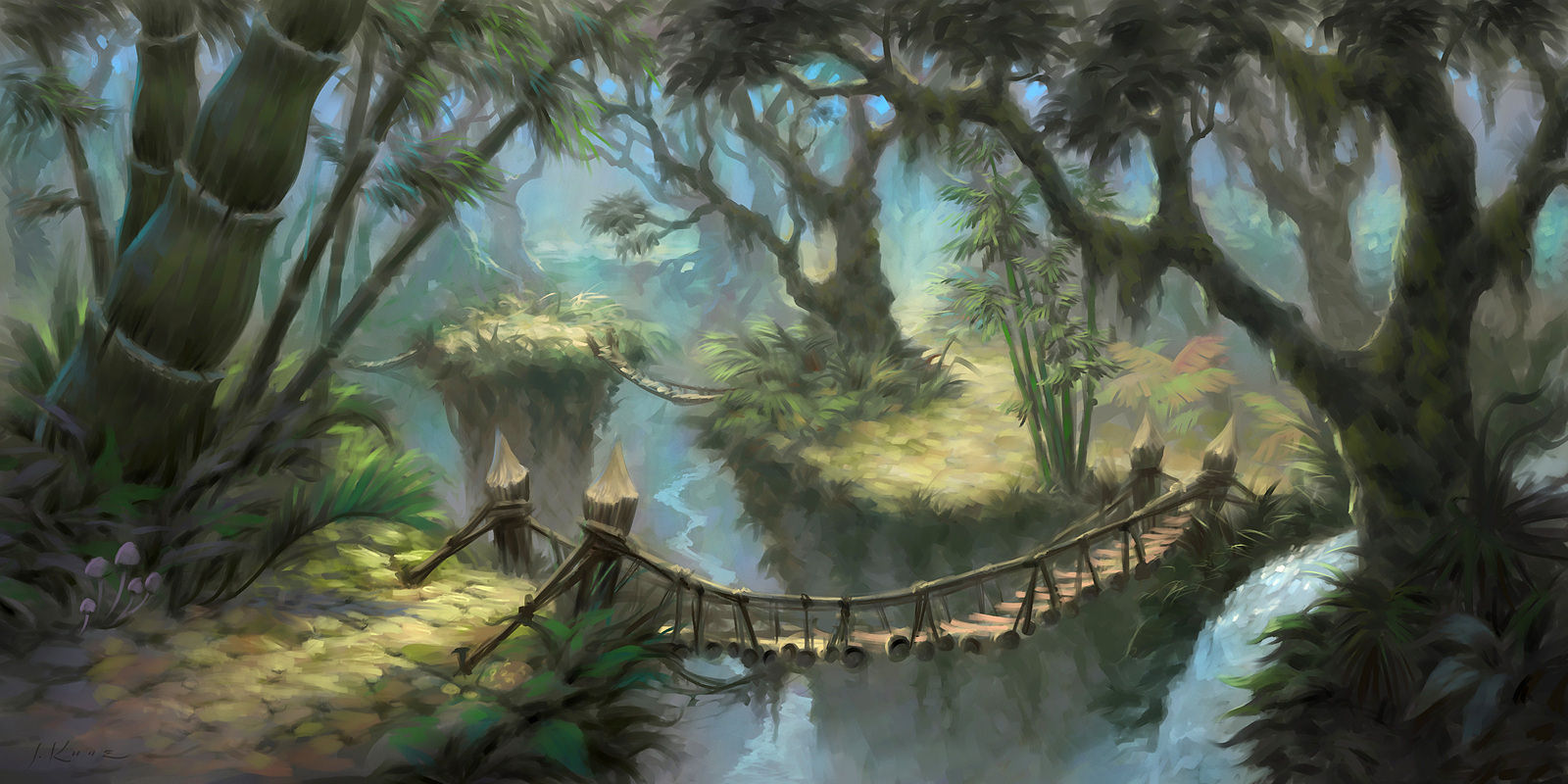

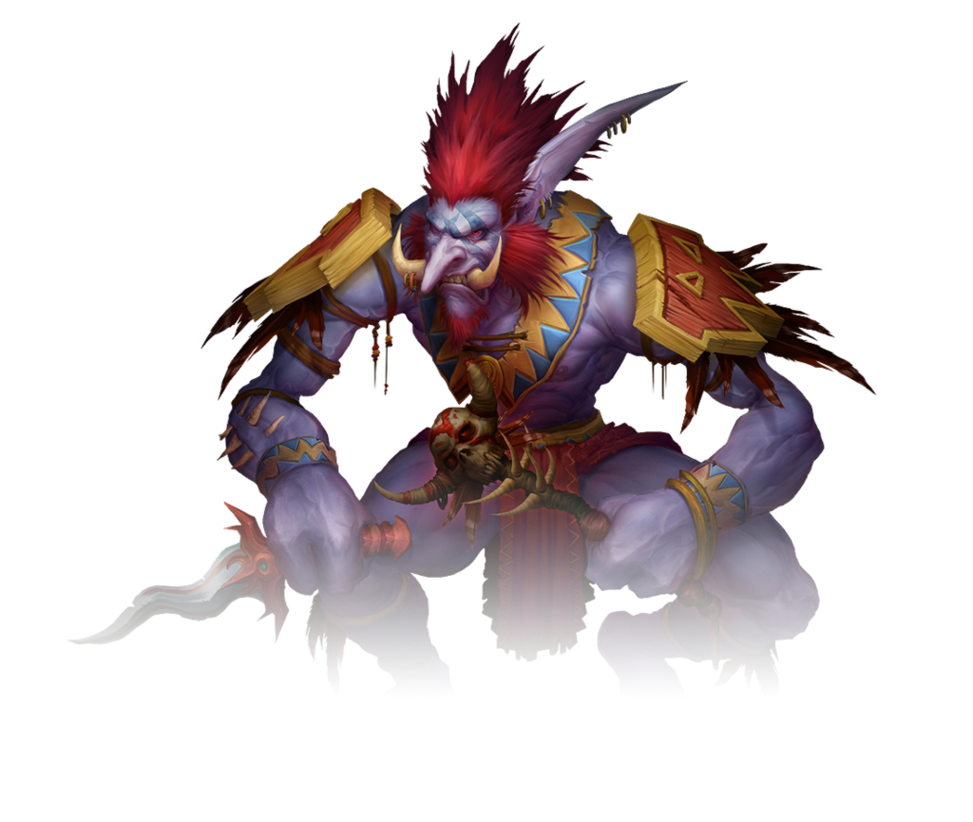
Names
Troll names look simple but are surprisingly complex. Their language is largely syllabic, and various syllables can be added to the beginning or end of a troll’s name to denote status and ability. Trolls don't have family names, although some use their clan name as their surname.
Male Names: Vol, Ros, Mig, Gal, Traxe, Maaho, Tuben, Ju,
Goz, Akash, Vithek, Tian, Vazkono, Rhas, Vog
Female Names: Shi, Mith, Hai, So, Ozdun, Imo, Aju,
Zhokre, Xullah, Joz, Fahze, Zil, Ruso, Mooh
Troll Traits
Your troll character has certain characteristics in common with all other trolls.
Ability Score Increase. Your Dexterity increases by 1.
Age. A troll reaches adulthood in their late teens and generally dies within a century, although they can live to become well over a century old.
Alignment. Trolls are a neutral race, their alignment varying drastically between them. Most trolls tend to be lawful, their tribes often having particular customs and rules for them to abide by.
Size. Even though most trolls stand bend forward with their slender builds and broad shoulders, they still tower above other races with an average height of 7 feet. Your size is Medium.
Speed. Your base walking speed is 30 feet.
Darkvision. Trolls retain their vision in dark and dim conditions. You can see in dim light within 60 feet of you as if it were bright light, and in darkness as if it were dim light. You can't discern color in darkness, only shades of gray.
Regeneration. For each Hit Die spent at the end of a short rest, you add twice your Constitution modifier to it.
Languages. You can speak, read, and write Common and Zandali. Zandali is the tongue of all trolls. It is a largely syllabic language, and taught down through generations as it has no physical script.
Subrace Four main subraces of troll populate the sur-face of Azeroth: forest trolls, ice trolls, jungle trolls, and zandalari trolls. Choose one of these subraces.
Forest Troll
As a forest troll, you have a keen sense of the natural world, a cunning for warfare, and a hatred of men and elves. Their skin is often a lush green, with a moss like substance grow-ing on its surface. The forest trolls of Azeroth once ruled an empire that has been brought to its knees by an alliance of human and high elves, liberating the region of Lordaeron.
Ability Score Increase. Your Constitution score increases by 2.
Mask of the Wild. You have advantage on Stealth checks when lightly obscured by plants, or other types of foliage.
Wilderness Knowledge. You gain proficiency with two of the following skills of your choice: Animal Handling, Nature, Perception, Stealth, and Survival.
Affiliation. Independent or Horde. Forest trolls are very secluded, remaining in the ashes of their old empire.
They openly practice cannibalism, making them disliked by members of the Horde. These trolls few other races as beneath them, but will not hesitate to ally them-selves with them if it means their survival.
Ice Troll
As an ice troll, you're strong and hardy, accustomed to cold climates. You rise above other troll subspecies, and tend toward lighter coloration. The ice trolls hail from the frigid regions of Dun Morogh and Northrend.
Ability Score Increase. Your Strength increases by 2.
Frostworn Skin. You have resistance to cold damage.
Powerful Build. You count as one size larger when determining your carrying capacity and the weight you can push, drag, or lift.
Tundra Walker. You can move across difficult terrain made of ice or snow without expending extra movement.
Affiliation. Independent. Ice trolls are steadfastly loyal to themselves above all others, their harsh society and brutal way of life makes them notorious amongst the Horde. They disobey their demand of ending their ways of cannibalism, making them uncommon members of the horde.
Jungle Troll
As a jungle troll, you have a knowledge of voodoo, a ferocity unmatched by your kin, and a uniformed tribal society. You stand shorter than any other troll specie, and tend to have skin of purple or gray colorations. The jungle trolls of Stranglethorn are by many considered the most brutal of all troll races, yet the ones that have joined the Horde have been forced to leave much of their brutality behind.
Ability Score Increase. Your Constitution score increases by 1, and your Wisdom score increases by 1.
Berserking. Whenever you score a critical hit with a weapon attack, you can reroll one of the weapon's damage die and use either roll for the damage.
Gurubashi Weapon Training. You have proficiency with the hand axe, javelin, and spear.
Voodoo Shuffle. You ignore non-magical difficult terrain, and your base walking speed increases to 35 feet.
Zandalari Troll
As a zandalari troll, you have a unparalleled connection to the loas, a strong intuition, and ancient traditions to uphold. Unlike most trolls, you stand upright, and tend toward a gray stone like complexion. The zandalari trolls are the pinnacle of all troll society, their temple city on Zandalar sits as a union for all trolls to converge to for meetings.
Ability Score Increase. Your Wisdom score increases by 1, and your Charisma score increases by 1.
Ancient lore. You gain proficiency in the History skill.
Loa's Embrace. You know the guidance cantrip. When you reach 3rd level, you can cast the guiding hand spell once per long rest. When you reach 5th level, you can also cast the enhance ability spell once per long rest. Wisdom is your spellcasting ability for these spells. When you cast this version of guiding hand, the hand appears as a tiny animal, representing a specific loa.
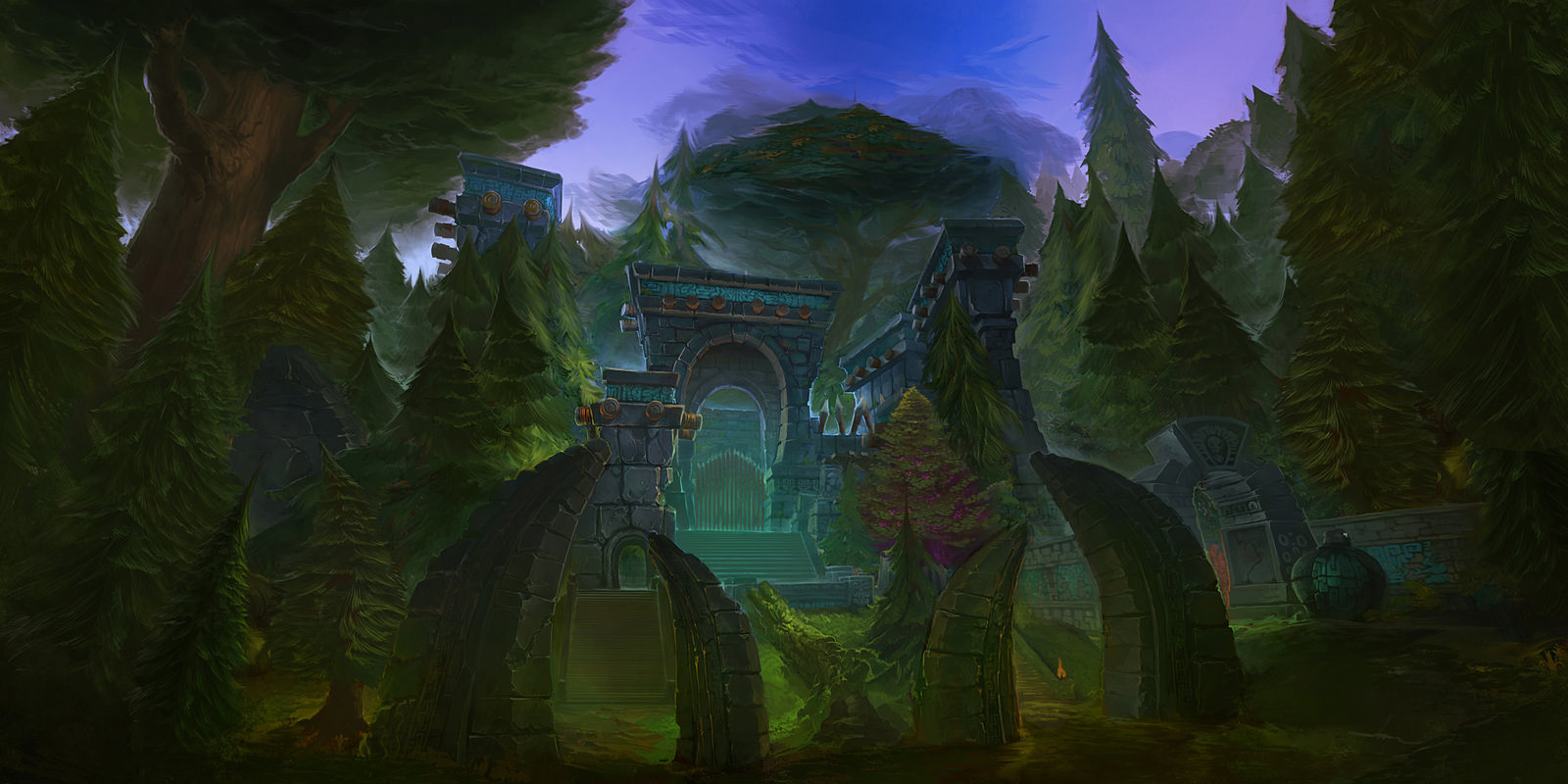

Blood Elf
We must put this misery behind us. We must enter a new chapter! And so I say to you that, as of this day, we are no longer high elves! In honor of the sacrifices of our brothers and sisters, our parents, and our children, as of this day we will take the name of our royal lineage! As of this day, we are sin'dorei! For Quel'Thalas!
— Kael'thas Sunstrider
Nourished and strengthened by the Sunwell’s potent energies, the high elves’ enchanted kingdom of Quel'Thalas prospered within the verdant forests north of Lordaeron.
During the Third War, the high elves were nearly scoured from Azeroth. Led by the death knight Arthas, the scourge army slaughtered almost all of the kingdom’s population. In the slaughter, Arthas tainted the sunwell, reanimating a lost necromancer. Prince Kael'thas rushed to his homeland's aid, and the survivors of the onslaught were renamed 'blood elves' in honor of their fallen kin. The blood elves grew addicted to the sunwells tainted energies. Kael'thas desperately searching for a cure for his kin, traveling the world to avenge his people and find a way to sate their hunger for magic.
Kael'thas assured his people he would return to Quel'Thalas and lead them to paradise, yet on Outland, the prince became twisted with the corrupting essence wielded by the demonic Burning Legion. Getting under the sway of the Legion's commander. The prince was later killed on his return to Quel'Thalas for his treachery, and with the aid of the draenei prophet, Velen, the magic taint lingering on the sunwell was vanquished, restore it as a fount of both arcane and holy energy.
Inspired by the Sunwell's rebirth, the blood elves have since entered into a shining new era in their ancient race's history. Although some elves remain hesitant to abandon their dependence on arcane magic, others have embraced change for the betterment of Quel'Thalas.
Crimson
As a culture, the sin'dorei have retained the look and feel of their fallen high elven kingdom, though have developed a greater penchant for the colour of crimson: the colour of their namesake. Crimson-red robes, decor and armour have become far more commonplace within blood elven society prior to the fall of the high elven people, a reference to the blood of their many brethren who had perished in the Third War. The iconic and traditional blood elven colours are red, gold, and to a lesser extent, blue – all of which can be seen on their racial crest, the Icon of Blood.
Proud Society
In general, the blood elves are a proud, pragmatic, and somewhat jingoistic people; they place great emphasis on their love for their homeland, and are ruthless to their enemies. Their reputation for isolationism is well-earned, and they prefer to keep to their own kind, although excep-tions to this stereotype exist. Blood elves are a resilient race of survivors, and their most prominent figures stand as beacons of courage, tenacity, and the strength to fight on, regardless of what foes stand in their way.
Beautiful and Graceful
Blood elves are, biologically and physiologically high elves. With the largest difference being their emerald glowing eyes compared to the high elves blue.
They are slenderly built, standing at 5 feet tall to just over 6 feet, and averaging at 150 pounds. They have long pointy ears, high cheekbones, and are generally considered highly attractive by the standards of most mortal races. Both males and females commonly have long hair in light colorations, and males ability to grow facial hair is limited, resulting in very few having beards beyond an inch, and large facial hairs being completely absent.
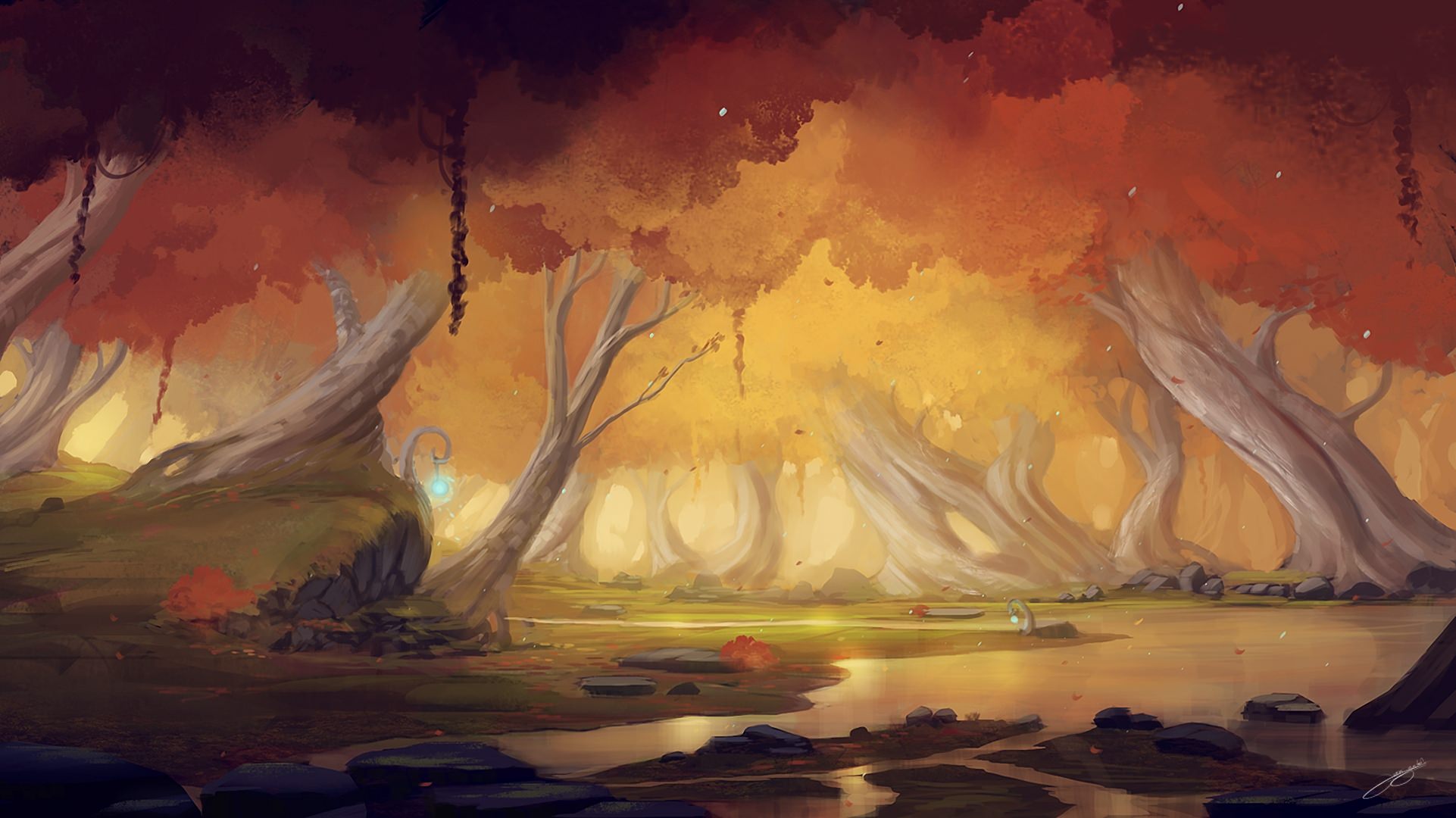

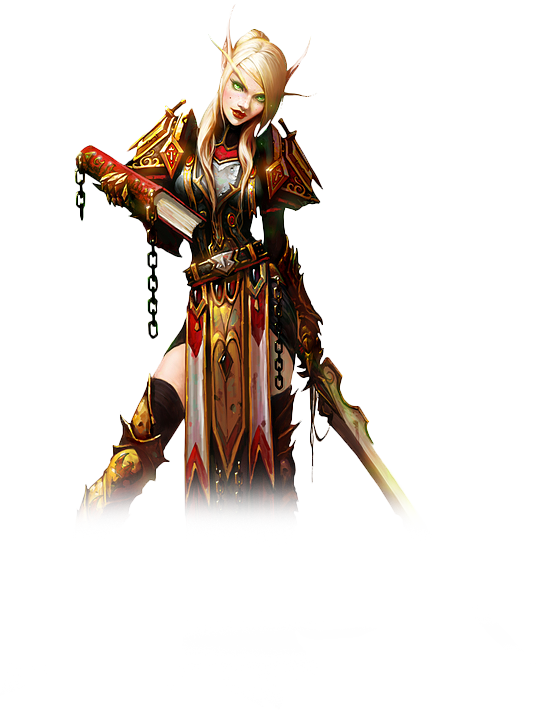
Affiliation
The Sin'dorei have joined the Horde. After the third war, the atrocities dealt to their kin by the xenophobic humans lead them to distrust the Alliance. Convinced by the former ranger General Sylvanas Windrunner, and with her speak-ing on their behalf to the leaders of the Horde.
Even though high elves and blood elves are physically the same, the elves do not get along well. What remains of the high elves see their other kin as traitors, and tainted. And blood elves are split between wishing to reunite their empire, and seeing their high elven kin as dishonored for their actions against them.
Blood Elf Names
Blood elves for the most part use high elven names, as they originate from their high elven predecessors, many have either kept their past name, and given high elven names to their children. Unlike high elves, blood elven surnames are generally more aggressive, blood elves don't keep family names, with the exception of nobels wanting to carry on a certain name.
Male Names: Mariel, Athaniar, Anador, Tharama, Viridiel,
Malanior, Eraeth, Ulorath, Yehru, Kithadre
Female Names: Anarial, Freja, Driana, Coria, Alanassori,
Melanion, Azshara, Curlih, Setori, Amorly, Zama
Surnames: Coldtrail, Nightfeast, Darkgift, Glowvein,
Warmblood, Dawntrick, Solarmind, Phoenixdreamer
Blood Elf Traits
Your blood elf character has a variety of natural abilities, the result of magical influence and their highborne blood.
Ability Score Increase. Your Dexterity score increases by 2, and your Intelligence score increases by 1.
Age. High elves reach adulthood at the rate of humans, but are not considered to have entered adulthood until they reach 60, and can live to become many hundreds of years old with ease. That said, many of the high elves have lived for thousands of years due to the power of the Sunwell extending their lifespan.
Alignment. High elves lies in a very militant society, strict rules have been made for people to uphold, pushing most towards a lawful alignment.
Size. High elves are just under 6 feet tall and weigh between 100 and 175 pounds. Your size is medium.
Speed. Your base walking speed is 30 feet.
Darkvision. Accustomed to twilit forests and the night sky, you have superior vision in dark and dim conditions. You can see in dim light within 60 feet of you as if it were bright light, and in darkness as if it were dim light. You can’t discern color in darkness, only shades of gray.
Keen Senses. You are proficient in the Perception skill.
Arcane Affinity. You can cast detect magic and magic weapon with this trait, Intelligence is your spellcasting ability for them. Once you cast either spell, you can't cast it again with this trait until you finish a short or long rest.
Cantrip. You know one cantrip of your choice from the mage spell list. Intelligence is your spellcasting ability for it.
Quel'dorei Weapon Training. You are proficiency in longbows, sin'dorei warblades, and warglaives.
Languages. You can speak, read, and write Common, Thalassian, and one extra language of your choice. Tha-lassian is a derivative of the Darnassian language, and in many ways sound the same to an inexperienced ear.
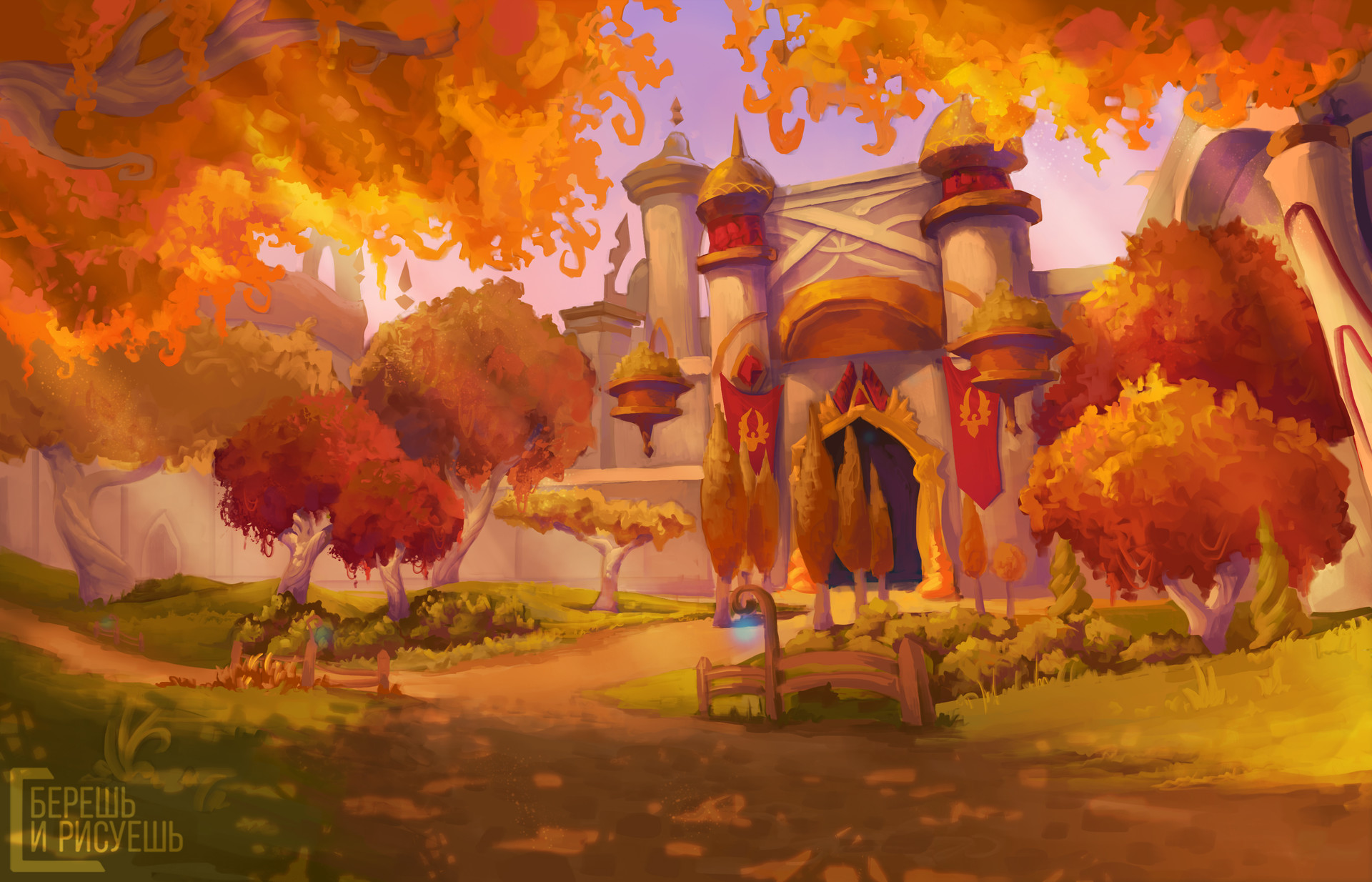

Goblin
I never cover up the things I'm proud of. If the world was gonna split in half tomorrow, I’d buy the Dark Portal, slap a toll booth on it, and charge refugees the last of their pocket change, the rings off their fingers, a bite of their meal, and a contractual obligation to build me a rocket palace in the skies of Nagrand. It’s the goblin way! Supply and demand! Deal with it!
— Trade Prince Jastor Gallywix
Introduction
Slaves of the jungle trolls on their home isle, forced to mine kaja'mite ore out of the volcanic bowels of Mount Kajaro. The ore had an unexpected effect on the goblins, granting them cunning intelligence. They began to rebel in secret, engineering artifacts, and brewing alchemical substances to successfully overthrow their oppressors and claim Kezan their homeland.
Their prior prison become an expanding empire in the mines they had dugged. To their dismay, the effects of the kaja'mite ore wore off, and their increased intelligence waned, as the ore itself became scarce and dwindled. Their brilliant engineering dwindled in ingenuity, looking haphazardly put together. Their remaining craftiness and greed soon took its place, lifting the race to preeminence as masters of mercantilism. Great fortunes were amassed, and the isle became a hub for goblin traders.
Technology
Goblins love of mechanics often places them into direct competition with gnomes who enjoy similar devices. The competition between goblins and gnomes seems to be friendly. Whether clockwork shredders that allow a single goblin to do as much harvesting as 10 field hands or zeppelin-like airships that can ferry troops over otherwise impassable terrain, the goblins' inventions have become legendary. Such technological ingenuity is as central to the goblins' rise among the races as any trading prowess.
Even with the malfunctions and explosions that occur, goblin technology is proving to be of a quality that rivals the dwarves and their firearms.
While other races often try to build reliable machines that would stay for grandchildren, goblin aims for device of the marginally bearable reliability that should only last enough to make its construction reasonable. Weird as it is, this approach allows to build more machines, or to build a more complex and powerful machine using the same time and resources.
Born Traders
Goblins have taken to the role of merchants, and it's hard to travel for more than a week or two without stumbling across a goblin shop of some size. Goblin shops can be found nearly anywhere on Azeroth, seemingly regardless of whether or not there are towns nearby and heedless of dangers such as the Scourge. The goblins will sell anything to anyone, at only slightly inflated prices.
Though many shops remain independent, a growing number of them have signs declaring that they are owned and operated by the Venture Company, which the proprietors claim is headquartered in a faraway city ruled by goblins where the streets are paved with gold.
The goblins are also legendary for the sheer variety of trade in which they are willing to indulge and for their tenacity in bargaining.
Small But Standing Tall
Goblins are slight and wiry, averaging 3 feet in height and weighing between 30 and 50 pounds. They have long, sharp noses, chins and ears, and green skin. Their arms are long and slender and their fingers deft.
Female goblins are on average taller than most male goblins, even though the difference is miniscule, and close to nothing compared to other races.
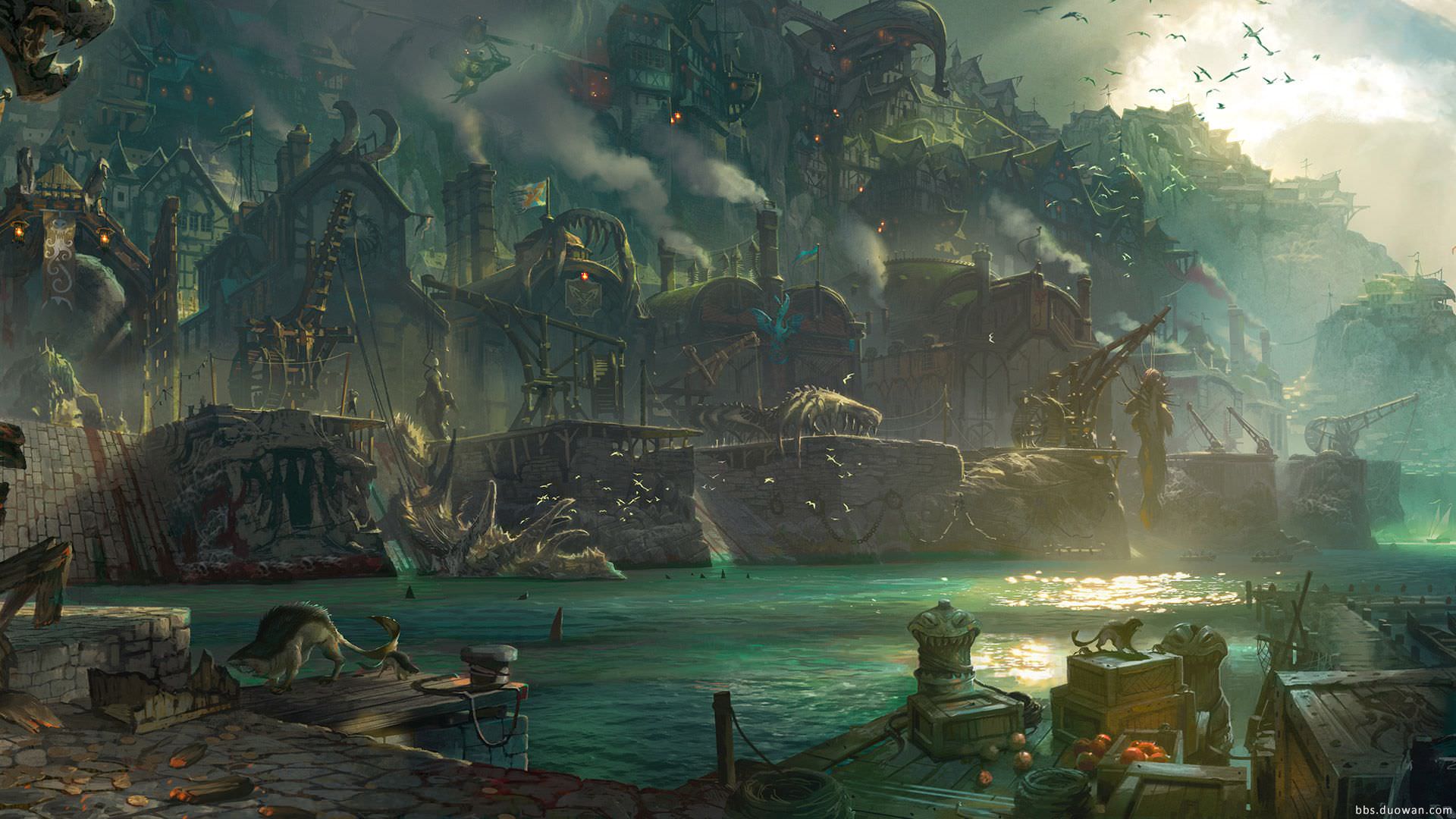

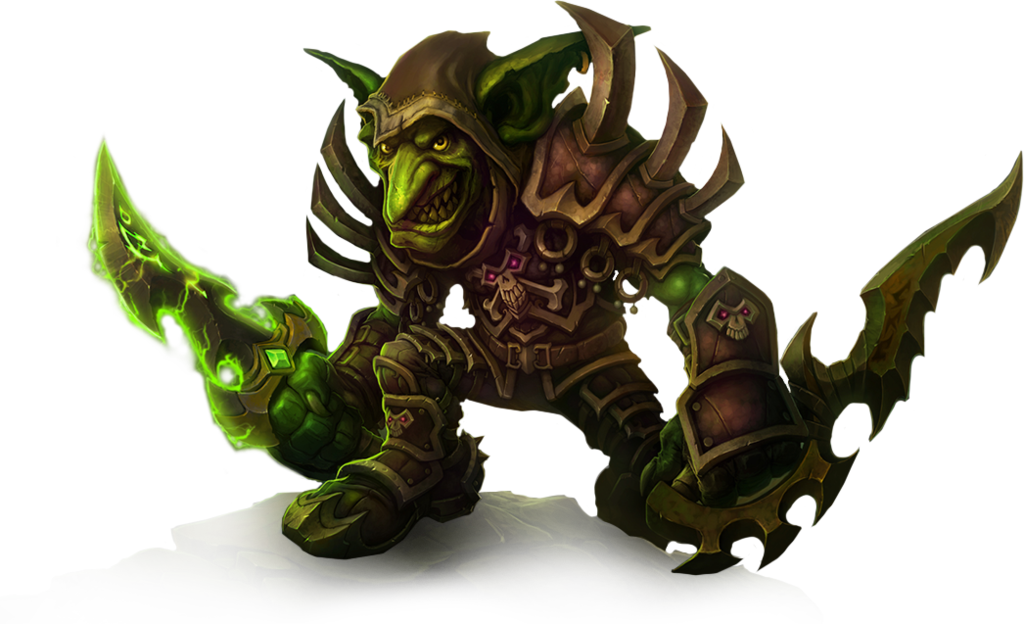
Affiliation
Goblins have found a recent enemy in the Alliance. Unpro-fitable encounters with the secretive SI:7 forces have driven them away from comfortable neutrality with both sides. Forcing them to reforge old pacts with their business partners and now allies the horde.
Although the Alliance is not fond of goblins, they still for the most part do trade with them when stumbled upon outside Stormwinds borders. Only member of the Alliance they tend to stay from are night elves, who carry a deep dislike towards the goblins because of their disrespect for the nature they continuously harvest for resources.
Names
Every goblin has a given name and a family name. The family names portray some ancestor’s achievement, though a goblin may take a new family name if he feels he has made an accomplishment that outstrips that of his forebear.
Male Names: Nees, Ford, Joxdeld, Zatval, Fivinkle, Bova,
Geevegbix, Rolaz, Ixa, Saz, Menzen, Gilmaxle
Female Names: Trutte, Meez, Kleqe, Suva, Tweedo,
Cynmee, Twinkle, Klasi, Teexma, Ninzi
Family Names: Brokenblast, Shifttale, Saltsnipe,
Deadknob, Nifttweak, Cogbeast, Slyfire, Manbelt
Goblin Traits
Your gnome character has certain abilities, learned through generations of gnomes.
Ability Score Increase. Your Intelligence increases by 1, and your Charisma score increases by 2.
Age. Goblins mature slightly slower than humans, reach-ing adulthood in their early 20, and die within a century.
Alignment. Most goblins tend to be chaotic to a certain degree, even when lawful, they have a spark of chaoticness in them that they cannot get rid off.
Size. Goblins are between 3 and 4 feet and somewhat slender. Your size is Small.
Speed. Your base walking speed is 30 feet.
Darkvision. Goblins naturally have superior vision in dark and dim conditions. You can see in dim light within 60 feet of you as if it were bright light, and in darkness as if it were dim light. You can't discern color in darkness, only shades of gray.
Best Deals Anywhere. You have advantage on any ability check made to appraise the price of an item.
Goblin Engineering. You are proficient with the artisan's tools (tinker's tools). Using those tools, you can spend 1 hour and 10 gp worth of materials to construct an explosive device. The device ceases to function after 24 hours, when a creature uses their action to activate it or when you dis-mantle it; if you dismantle a device, you can reclaim the materials used to create it. You can only have one explosive device constructed at a time.
When you create a device, choose one of the following:
- Rocket Jump. This explosive container can be strapped to a person's belt or boot. As an action, that person can fire the rocket, launching them 30 feet in a direction of their choice. For example, a creature can choose to launch 25 feet into the air, 5 feet forward, and so on.
- Rocket Blast. A crude rocket fixed with flash powder.
As an action you, you can choose a point within 30 feet. Each creature within 10-ft of the point must succeed a DC 11 Dexterity saving throw, or be blinded until the start of their next turn.
Living Through Chemistry. You gain proficiency with the artisan's tool (alchemist's supplies).
Mechanical Familiarity. You are proficient in firearms.
Time is Money. As a bonus action you can shout at an ally and command them to move. That creature can use it's reaction to move up to its speed without provoking opportunity attacks. You can't use this feature again until you finish a short or long rest.
Languages. You can speak, read, and write Common, Goblin and one language of your choice. Goblins are traders, and trade with every race willing to buy from them, picking up languages as they go.


Nightborne
It had to be done this way, there was no other alternative. We no longer need the Nightwell, nor do we need its power.
We must forge our own destiny from now on.
— First Arcanist Thalyssra
An impenetrable barrier was placed around their capital city Suramar, shielding the highborne from the Sundering. This shield would keep the highborne isolated from the rest of Azeroth's new continents for thousands of years. Forcing the highbornes to rely on their Nightwell for their magical powers. The highbornes evolved over the ages, and they called themselves the shal'dorei or nightborne.
When Suramar run out of food, the shal'dorei began to utilize the substance of their Nightwell as nourishment and was thus spared an untimely death, however, this soon caused them to be unable to survive without drawing magic from the Nightwell. Crime was punished by exile. Cutting them off from the Nightwell, the exiled would diminish into husks of their former selves, and eventually irreversible into mindless withered, waiting for death.
Ten thousand years later the nightborne lowered their shield and surrender to the Burning Legion by orders from their leader, Grand Magistrix Elisande. Many nightborne did not agree with her decision, but none dared speak against her newfound forces of demons. Through the aid of a nightborne resistance, and the forces of the Alliance and Horde. The Grand Magistrix and her demon allies were pushed back into the Twisting Nether.
Born in the Darkness
Sealed off within their capital of Suramar, the
nightborne physique in many ways resemble that
of their night elven kin, with tall slender bodies and
muscular builds. The ever darkened sky of their city
have changed their skin to be a dark blue or purple,
rather than the more vibrant colors of the night elves.
The Shal'dorei still practice arcane magic, giving their
eyes a dim blue or purple glow, instead of the golden glow of the night elves.
The nightborne are fiercely proud of the arcane ways, and proudly shows off shimmering tattoos of arcane energy that has been placed upon their body. The tattoos have no known impact on the nightborne capabilities, yet it stands as a show of a nightbornes comprehension of the arcane.
Highborne Civilization
The Shal'dorei have an air of superiority that often comes across as pompous. They revel in their unequalled magical civilization but having no exposure to the current races of Azeroth until the rebellion led an invading force to free Suramar, many still regard outside races and the world as it was back then, full of the unworthy, the uncultured, and low born far beneath the standards and levels of the nightborne civilization.
These were the less admirable qualities of night elven civilization back then, and the shal'dorei continue in them as if nothing has changed and as if they still remain the center of the world.
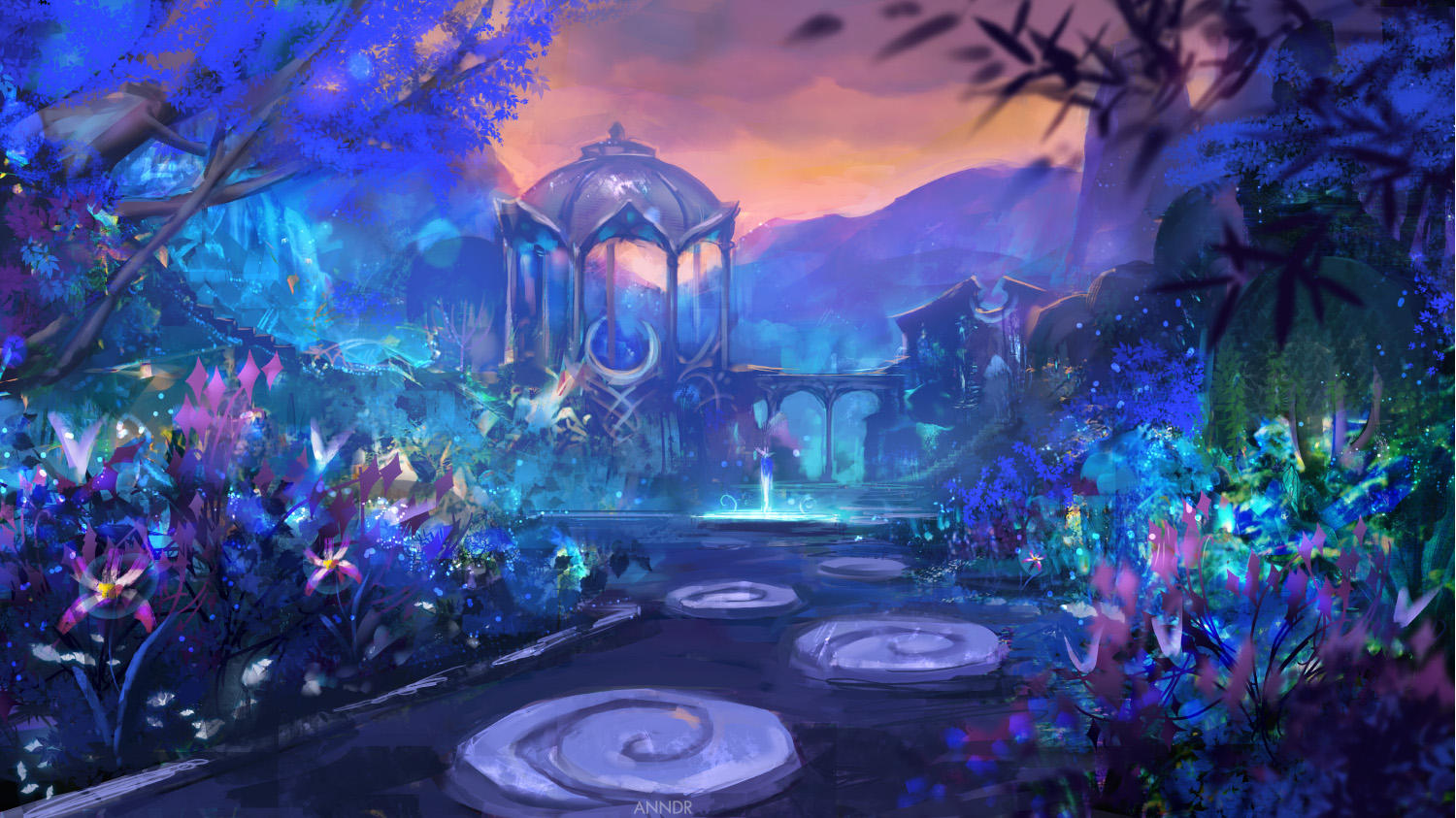

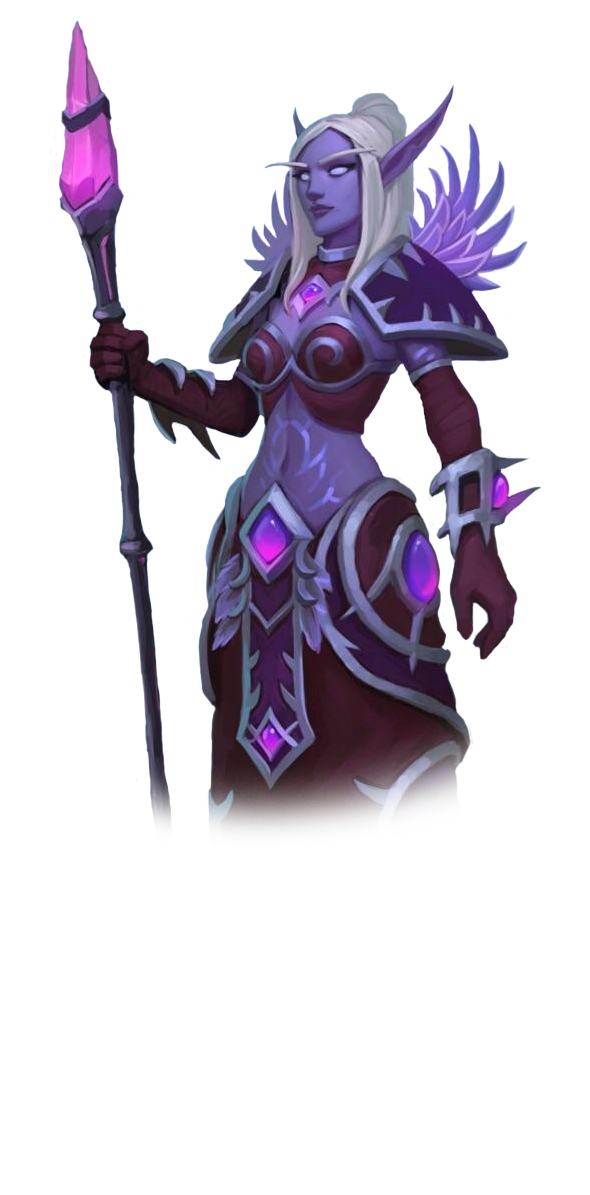
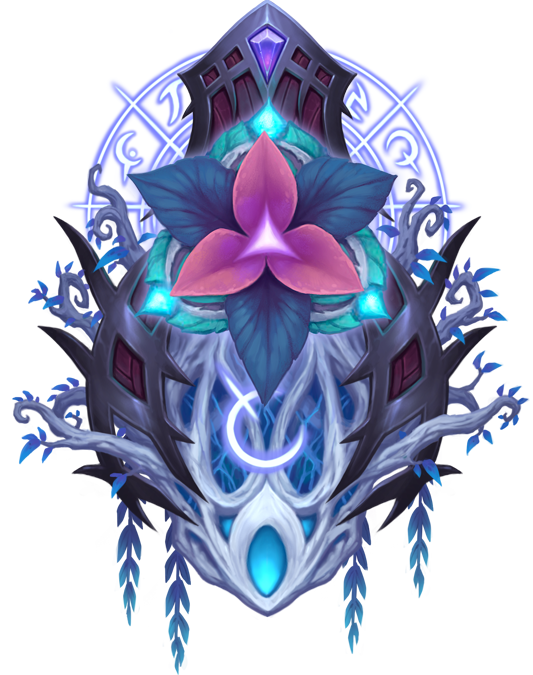
Affiliation
The Shal'dorei have been severed from the world for thousands of years, originally hailing from the night elven Highborne, many Nightbornes wished to return to their ancient kin. The night elves saw the careless use of arcane in the shal'dorei, knowing what it did to their civilization so many years ago and shunned them from their society.
A few amongst the Nightborne have sympathized with the blood elves and their past craving for their Sunwell and joined the Horde in their honor.
Nightborne Names
Nightborne names resemble that of night elves, and would appear Darnassian in script to an inexperienced eye. Yet the nightbornes language have changed from their ancient tongue, as has their names. The nightbornes still follow the Kaldorei naming traditions.
Male Names: Absolon, Astoril, Oculeth, Lespin, Silgryn,
Almon, Ailen, Vanthir, Sylverin, Rosaine, Thorendis
Female Names: Valtrois, Iadreth, Anastae, Ly'leth, Theryn,
Ambrena, Anaryys, Naran, Ke'lorin, Arluelle, Noressa
Surnames Names: Luneastre, Astravar, Swiftmeadow,
Moonblade, Silverleaf
Nightborne Traits
Your nightborne character has a variety of natural abilities, harnessed by old traditions and the power of the Nightwell.
Ability Score Increase. Your Dexterity score increases by 1, and your Intelligence score increases by 2.
Age. Although nightborne elves reach physical maturity at about the same age as humans, their understanding of adulthood goes beyond physical growth to encompass worldly experience. Nightborne typically claims adulthood and an adult name around the age of 100 and can live to become several thousand years old. Sustained by the Night-well, many have lived since the War of the Ancient.
Alignment. Order and structure are key to nightborne. Their society believes that reputation and status are of the utmost concern, and that mortality and principles of right and wrong are viewed too often in that light. Giving most nightborne a lawful alignment.
Size. Nightborne are around 7 feet tall and weigh between 180 and 240 pounds. Your size is medium.
Speed. Your base walking speed is 30 feet.
Darkvision. Accustomed to twilit forests and the night sky, you have superior vision in dark and dim conditions. You can see in dim light within 60 feet of you as if it were bright light, and in darkness as if it were dim light. You can’t discern color in darkness, only shades of gray.
Keen Senses. You are proficient in the Perception skill.
Lorekeeper. You gain proficiency with the Arcana and the artisan's tool (calligrapher's supplies).
Mental Warding. You have advantage on all Intelligence, Wisdom, and Charisma saving throws against magic.
Superior Darkvision. Your darkvision has a
radius of 120 feet.
Sunlight Sensitivity. You have disadvantage on attack rolls and on Wisdom (Perception) checks that rely on sight when you, the target of your attack, or whatever you are trying to perceive is in direct sunlight.
Languages. You can speak, read, and write Common and Shalassian. Shalassian, like Thalassian, originates from the Darnassian language. Its dialect has been scrutinized through the ages, making it nearly impossible for members outside of the Nightborne to read or write.
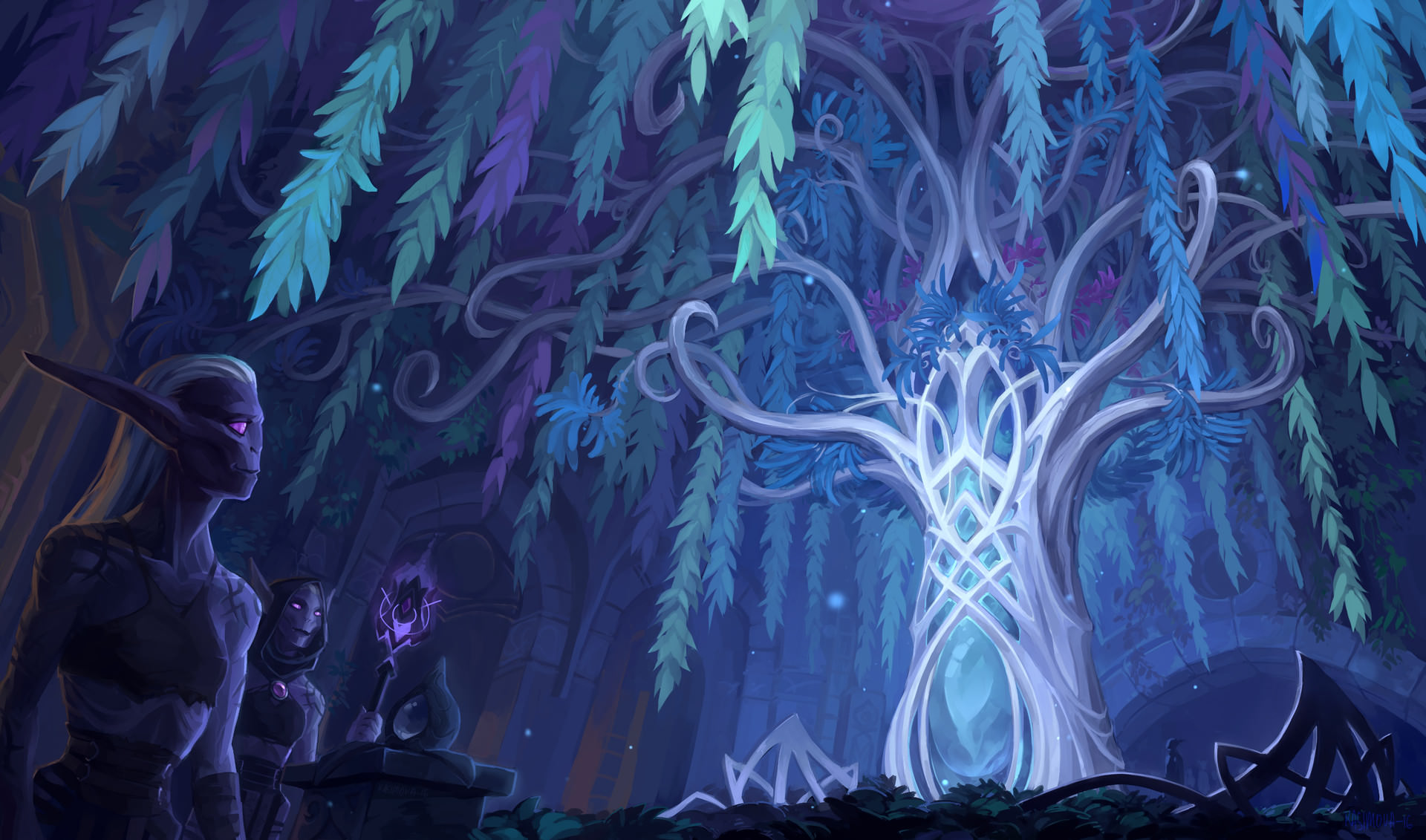


Independent Class Suggestions
The following are a set of class suggestions, pulled from World of Wacraft, as the classes the independent races will more than likely be. It is suggested that you pick from among your race's suggested classes to keep with the thematic elements of the setting. That said, heroes are meant to break molds and be the exception to rules, so feel free to pick a class that is not typically used by your race. If you do pick outside your racial classes though, work with your Dungeon Master to create a backstory for why you are a member of this class.
Post-Cataclysm
| Races | Druid | Hunter | Mage | Monk | Paladin | Priest | Rogue | Shaman | Warlock | Warrior | Death Knight | Demon Hunter |
|---|---|---|---|---|---|---|---|---|---|---|---|---|
| Pandaren | ✦ | ✦ | ✦ | ✦ | ✦ | ✦ | ✦ |

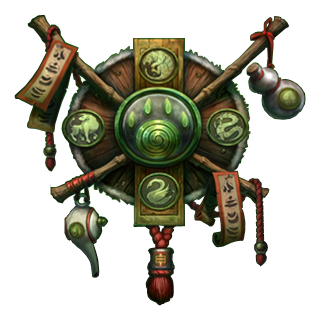
Pandaren
To ask why we fight... is to ask why the leaves fall. It is in their nature. Perhaps, there is a better question.
Why do we fight? To protect home, and family... To preserve balance, and bring harmony.
For my kind, the true question is, what is worth fighting for?
— Chen Stormstout
The pandaren have long been a mystery to other races of Azeroth, their history stretching back thousands of years, to before the raise of the kaldorei. Denizens of a wondrous and fertile land, the pandaren were slaves to the ancient titan-forged mogu. Through tenacity, diplomacy, and a unique form of unarmed combat, they staged a successful revolution that deposed the mogu, and established the foundation of the pandaren empire that would prosper for thousands of years.
As the sundering took place, Pandaria was shrouded in a magical mist that would last for thousand of years. As the years came to an end, the mist around Pandaria unveiled. Drawing the attention of both factions, wishing to claim this 'unexplored' land, and learn of what lied on its surface.
Harmony in All Things
Pandarens are slow to anger, they prefer a measured solution to problems. It takes a great deal to wound up a pandaren. On their homeland Pandaria, negative emotions are harnessed, and take physical form to wreak havoc on the isle. Pandarens emphasize and cultivate a quiet life of inner harmony and focus. Conflicts, no matter how bitter, are quickly forgotten over cold drinks once the matter is resolved.
A Spiritual Race
Pandaren have a fierce and deep belief in the connection of the material and spiritual world. In many ways their faith mirrors the ancient beliefs of night elves, and beliefs of the tribal races of Kalimdor.
Like the races of Kalimdor, the pandaren follow a shamanistic faith, they worship the Earth Mother and give passage to their dead. They are a society that reacts, rather than being the ones to act first. Many pandarens claim to be the water that flows around a rock -- it never pushes the rocks out of its way, but merely goes around it. This stands as the core of their society, a simple means of everyday life. If they set their mind to a task and fail, then they believe they went about it the wrong way, and try again.
Covered in Fur
Covered in colorful fur from head to toe, pandaren appear like massive humanoid bears towering above the heads of most of Azeroth's inhabitants. They stand far over the head of humans, ranging from just under 7 feet to a few inches short of 8 feet. Pandarens are naturally curvy, only made larger in size by their thick fur, weighing between 310 to 440 pounds. Males stand slightly taller than females, and males are often much heavier than females.
Pandaren colorations varies widely, from a dark brown to a golden yellow, one thing that is consistent throughout all pandarens are their white markings, all pandarens have these upon their face, and many also have patches of white on their paws of torso. Pandarens don't have hair, but many stylize their fur on top of their head, letting it grow longer to resemble hair.
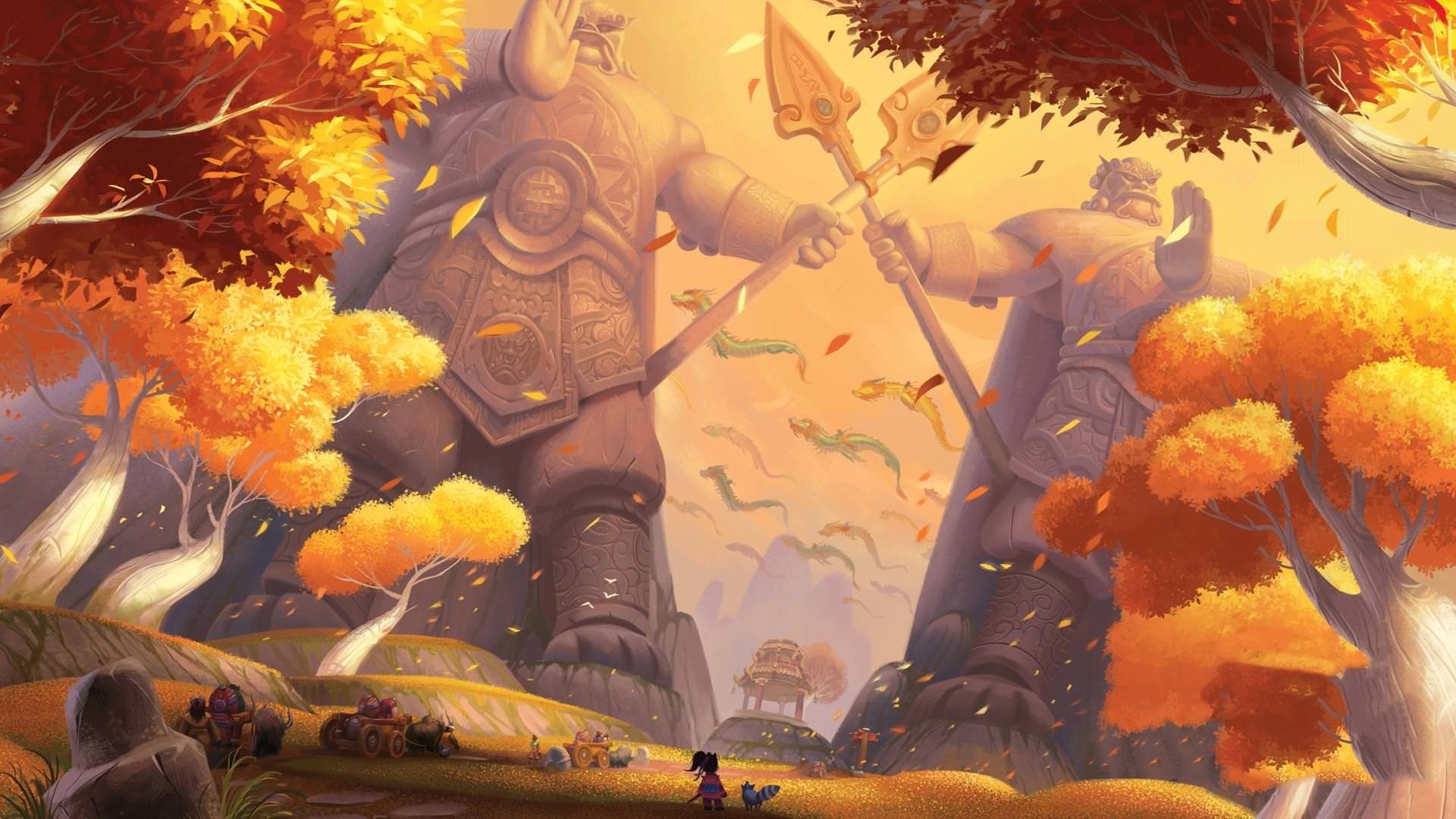

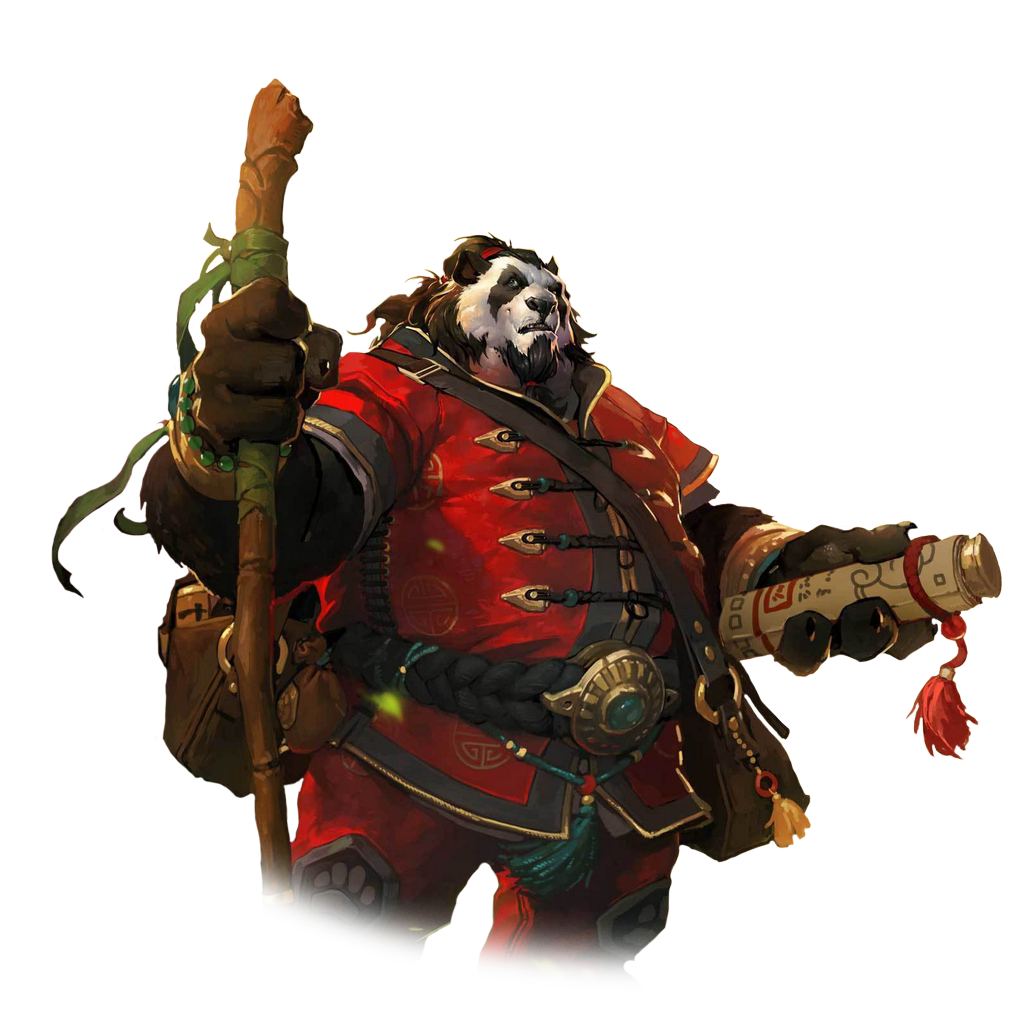
Affiliation
Most pandaren are independent, preferring to avoid the con-flict of Alliance and Horde, but few amongst them have decided to join the ranks of either factions, believing that their philosophy aligns with that of the faction.
The Tushui pandaren have joined the alliance, believing that one should live a life through meditation, rigorous training, and moral convictions. The Huojin pandaren have joined the horde. believing that inaction is the greatest injustice, and that there is no shame in defending one's home and loved ones, regardless of the cost.
Pandaria have been hidden from the world for many thousand years, the inhabitants of Azeroth are new to the pandarens. Because of this they have no hatred or distrust for any of the new races they've met.
Names
Pandaren naming practices are similar to those of humans, each pandaren are given a name at birth, and carries on the family name of their parents. Some pandaren are known to take a new family name reflecting their own achievements in life, yet such practices are uncommon.
Male Names: Fan Su, Tan Delan, Tian Fu, Fan-Su, Zi Ling,
Gao, Bai, Wei He, Xun Ming, Dong-Gun
Female Names: Sujin, Zemin, Seul-Gi, Heng Lei, Sun-Mi,
Zheng, Yan, Wei Zhelan, Xuefeng, Li, Liuxian
Family Names: Caskriver, Drumfriends, Wisespear,
Keenwalker, Calmbrow, Mellowcoil, Ironshadow, Wildfur
Pandaren Traits
Your pandaren character has certain traits deriving from their ancient heritage.
Ability Score Increase. Your Wisdom score increases by 1, and your Charisma score increases by 2.
Age. Pandaren age much like humans, reaching adult-hood in their late teens, and generally die before they reach their first century.
Alignment. Pandaren are a peaceful race, and for most parts tend to their own, making many pandarens neutral or good aligned. Finding an evil aligned pandaren is unusual.
Size. Most pandaren stands just short of 7 feet tall and average about 260 pounds, you will never find a pandaren who is 'slim'. Your size is medium.
Speed. Your base walking speed is 30 feet.
Gourmand. You gain proficiency with the artisan's tool (cook's utensils) and (brewer's supplies).
Iron Palms. Your unarmed strikes deal 1d4 + Strength modifier bludgeoning damage on a hit.
Pandaren Resilience. You have advantage on saving throws against poison, and you have resistance against poison damage.
Pandaren Weapon Training. You have proficiency with the club, quarterstaff, and spear.
Quaking Palm. When you hit another creature with an unarmed strike, you may use your innate powers to attempt to disable the target. The target must succeed on a Consti-tution saving throw, or be stunned until the end of your next turn. Wisdom is your saving throw ability for this feature. You can't use this feature again until you finish a long rest.
Languages. You can speak, read, and write, Common and Mogu. Mogu is the language of Pandaria, forced upon the inhabitants of Pandaria by the mogu empire. It is a strange and unfamiliar language to the rest of Azeroth, with a multitude of words meaning one common thing.


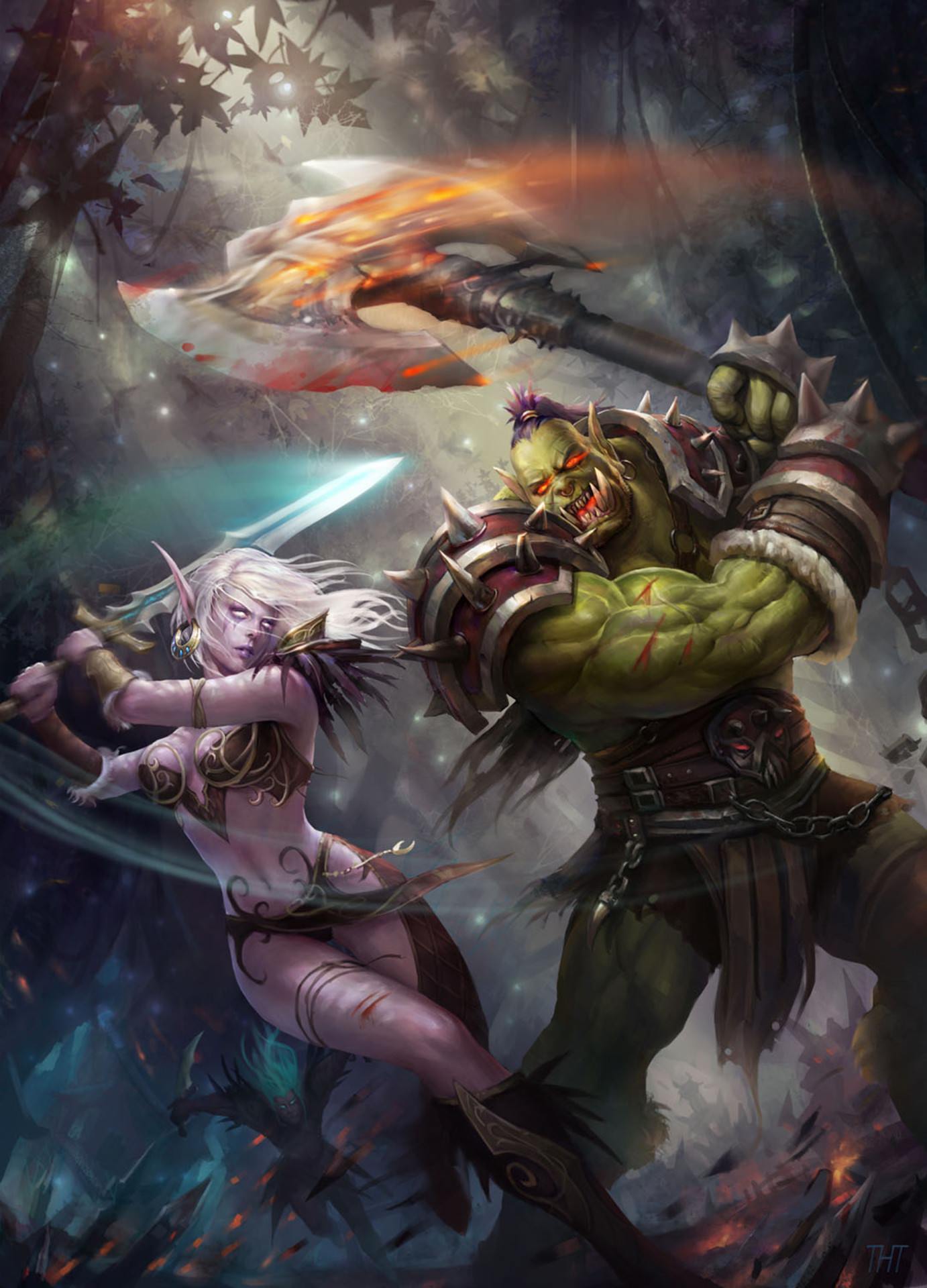
Chapter 2: Classes
Heroes are extraordinary people, driven by a thirst for excitement into a life that others would never dare lead. They arc heroes, compelled to explore the dark places of Azeroth and take on the challenges that lesser women and men can't stand against.
Class is the primary definition of what your character can do. It's more than a profession; it's your character's calling. Class shapes the way you think about the world and interact with it and your relationship with other people and powers in the multiverse. A warrior, for example, might view the world in pragmatic terms of strategy and maneuvering, and see herself as just a pawn in a much larger game. A priest, by contrast, might see himself as a willing servant in a god's unfolding plan or a conflict brewing among various deities. While the warrior has contacts in a mercenary company or army, the priest might know a number of healers, paladins, and devotees who share his faith.
Your class gives you a variety of special features, such as a warrior's mastery of weapons and armor, and a mage's spells. At low levels, your class gives you only two or three features, but as you advance in level you gain more and your existing features often improve.
Each class entry in this chapter includes a table summarizing the benefits you gain at every level, and a detailed explanation of each one.
Heroes sometimes advance in more than one class. A rogue might switch direction in life and swear the oath of a paladin. A barbaric warrior might discover latent magical ability and dabble in the arcanic classes while continuing to advance as a warrior. Elves are known to combine martial mastery with magical training and advance as warriors and mages simultaneously.
Optional rules for combining classes in this way, called multiclassing, appear in chapter 5.
Ten classes — listed in the Classes table — define the average spectrum of heroes on Azeroth, these are made as standable classes, but are intended to be playable alongside classes from the Player's Handbook.
Classes
| Class | Description | Hit Die | Primary Ability | Saving Throws | Armor and Weapons | ||
|---|---|---|---|---|---|---|---|
| Druid | A watcher of nature, wielding powers of elune, and able to transform into animals. | d8 | Wisdom | Intelligence & Wisdom |
Light and medium armor, simple weapons | ||
| Hunter | A prowess ranger, with keen skills and knowledge of the wild and its animals. | d10 | Dexterity | Strength & Dexterity |
Light and medium armor, simple and martial weapons, firearms | ||
| Mage | A scholar of magic, capable of evoking arcane, shaping it to their needs. | d6 | Intelligence | Intelligence & Wisdom |
Simple weapons | ||
| Monk | A martial artist, harnessing the power of the body in pursuit of spiritual perfection. | d8 | Dexterity | Strength & Dexterity |
Light armor, simple weapons and shortswords | ||
| Paladin | A holy warrior, wielding the light to aid their allies and defeat their enemies. | d10 | Strength or Charisma | Wisdom & Charisma |
All armor, shields, simple and martial weapons | ||
| Priest | A divine healer, who wields the powers of the light and the void. | d6 | Wisdom | Wisdom & Charisma |
Simple weapons | ||
| Rogue | A master assassin who uses stealth and trickery to overcome obstacles. | d8 | Dexterity | Dexterity & Intelligence |
Light armor, simple weapons, hand crossbows, longswords, rapiers, shortswords | ||
| Shaman | A wielder of elements, calling them to his aid, and bending them to his will. | d8 | Wisdom | Strength & Wisdom |
Light and medium armor, shields, simple and martial weapons | ||
| Warlock | A wielder of void and fel magic, gaining power through a secret grimoire. | d8 | Intelligence | Intelligence & Wisdom | Simple weapons, longswords, rapiers, scimitars, shortswords | ||
| Warrior | An exceptional fighter, skilled with a variety of weapons and armor. | d10 | Strength | Strength & Constitution |
All armor, shields, simple and martial weapons, firearms | ||
| Death Knight |
A knight of undeath, resurrected by dark powers, wielding sword and magic alike. | d8 | Strength or Charisma | Strength | All armor, simple and martial weapons | ||
| Demon Hunter |
A fighter infused with fel, made for the sole purpose of destryong demons. | d6 | Dexterity | Dexterity | Simple and martial weapons, warglaives |


Druid
Standing in the way of nature is heresy. Even when nature's force is a destructive one.
— Malfurion Stormrage
Clutching an engraved staff stitched with leaves, a night elf summons the powers of elune, calling down raw blue energy of the moon upon a terrible foe, smashing upon its body and encasing it hole for a brief moment.
Crouching out of sight on a low hanging tree branch, in the form of a large feral tiger, a worgen scouts out from his hiding stop towards the constructions of Zul'Gurub. Watching every move of the jungle trolls patrolling.
Holding near her sickle and staff, a young tauren druid is making beautiful ritual, making tiny seeds sprinkle into a perfect circle of faintly glowing green lights, healing an endured ally to the best of her capabilities.
Rushing forward towards his companions aid, rumbling the ground as his body transforms into a giant bear creature with tusks, an experienced troll runs to his allies aid, blocking a fatal blow with its fur.
Nature's Power
Druids harness the vast powers of nature to preserve balance and protect life. With experience, druids can unleash nature’s raw energy against their enemies, raining celestial fury on them from a great distance, binding them with enchanted vines, or ensnaring them in unrelenting cyclones. Druids can also direct this power to heal wounds and restore life to fallen allies.
They are deeply in tune with the animal spirits of Azeroth. As master shapeshifters, druids can take on the forms of a variety of beasts, morphing into a bear, cat, creatures of water, and creatures of air with ease. This flexibility allows them to fill different roles during their adventures, tearing enemies to shreds one minute and surveying the battlefield from the sky the next. These keepers of the natural order are among the most versatile heroes in Azeroth, and they must be prepared to adjust to new challenges on a moment’s notice.
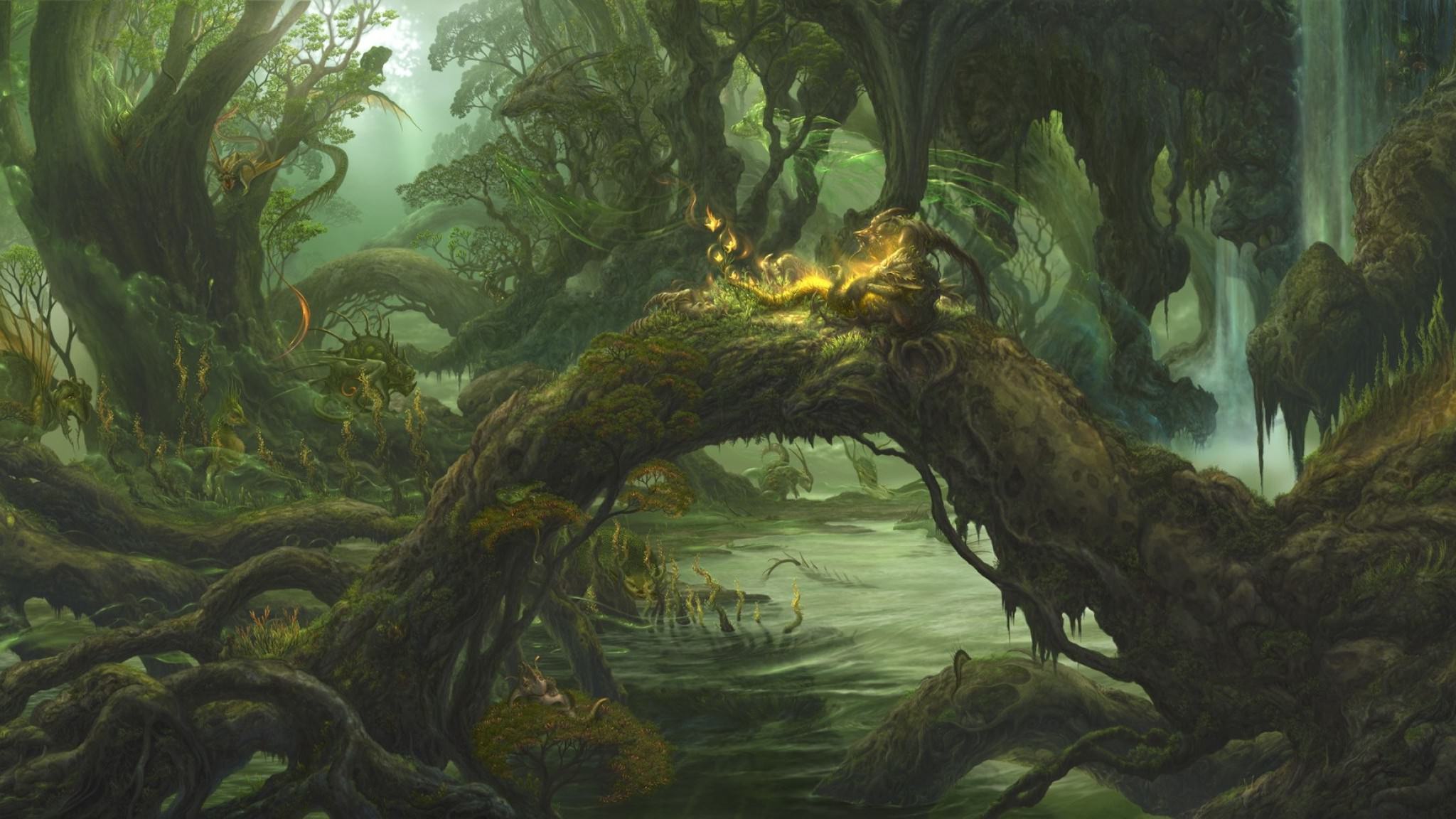

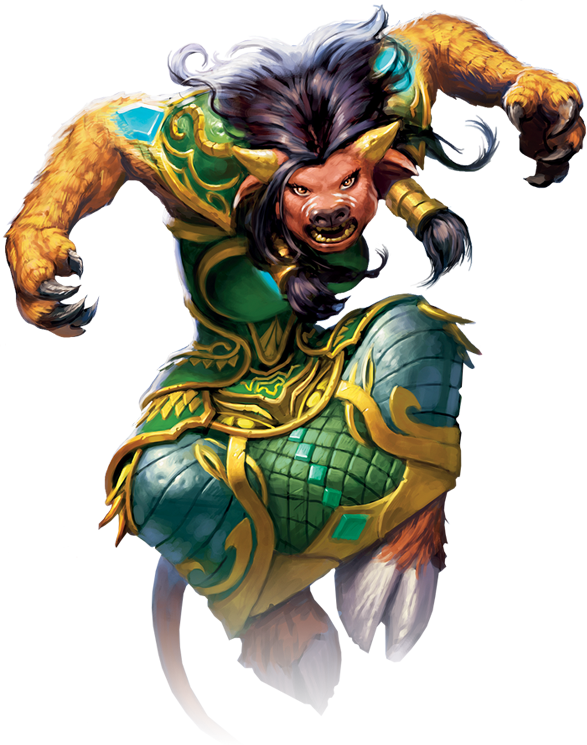
The Druid
| Level | Proficiency Bonus |
Affinity Points |
Features | Cantrips Known |
1st | 2nd | 3rd | 4th | 5th | 6th | 7th | 8th | 9th | |||||||||
|---|---|---|---|---|---|---|---|---|---|---|---|---|---|---|---|---|---|---|---|---|---|---|
| 1st | +2 | — | Druidic, Spellcasting | 2 | 2 | — | — | — | — | — | — | — | — | |||||||||
| 2nd | +2 | 1 | Shapeshifting, Druid Path, Affinity | 2 | 3 | — | — | — | — | — | — | — | — | |||||||||
| 3rd | +2 | 1 | — | 2 | 4 | 2 | — | — | — | — | — | — | — | |||||||||
| 4th | +2 | 1 | Ability Score Improvement, Shapeshifting Improvement |
3 | 4 | 3 | — | — | — | — | — | — | — | |||||||||
| 5th | +3 | 2 | — | 3 | 4 | 3 | 2 | — | — | — | — | — | — | |||||||||
| 6th | +3 | 2 | Druid Path feature, Shapeshifting Improvement |
3 | 4 | 3 | 3 | — | — | — | — | — | — | |||||||||
| 7th | +3 | 2 | — | 3 | 4 | 3 | 3 | 1 | — | — | — | — | — | |||||||||
| 8th | +3 | 3 | Ability Score Improvement, Shapeshifting Improvement |
3 | 4 | 3 | 3 | 2 | — | — | — | — | — | |||||||||
| 9th | +4 | 3 | — | 3 | 4 | 3 | 3 | 3 | 1 | — | — | — | — | |||||||||
| 10th | +4 | 3 | Druid Path feature | 4 | 4 | 3 | 3 | 3 | 2 | — | — | — | — | |||||||||
| 11th | +4 | 4 | — | 4 | 4 | 3 | 3 | 3 | 2 | 1 | — | — | — | |||||||||
| 12th | +4 | 4 | Ability Score Improvement | 4 | 4 | 3 | 3 | 3 | 2 | 1 | — | — | — | |||||||||
| 13th | +5 | 4 | — | 4 | 4 | 3 | 3 | 3 | 2 | 1 | 1 | — | — | |||||||||
| 14th | +5 | 4 | Druid Path feature | 4 | 4 | 3 | 3 | 3 | 2 | 1 | 1 | — | — | |||||||||
| 15th | +5 | 4 | — | 4 | 4 | 3 | 3 | 3 | 2 | 1 | 1 | 1 | — | |||||||||
| 16th | +5 | 5 | Ability Score Improvement | 4 | 4 | 3 | 3 | 3 | 2 | 1 | 1 | 1 | — | |||||||||
| 17th | +6 | 5 | — | 4 | 4 | 3 | 3 | 3 | 2 | 1 | 1 | 1 | 1 | |||||||||
| 18th | +6 | 5 | Timeless Body | 4 | 4 | 3 | 3 | 3 | 3 | 1 | 1 | 1 | 1 | |||||||||
| 19th | +6 | 5 | Ability Score Improvement | 4 | 4 | 3 | 3 | 3 | 3 | 2 | 1 | 1 | 1 | |||||||||
| 20th | +6 | 5 | Soul of the Forest | 4 | 4 | 3 | 3 | 3 | 3 | 2 | 2 | 1 | 1 |
Protectors of Balance
Guardians of nature who seek to preserve balance and protect life, Druids have unmatched versatility on the field of battle. This is in part because druidism is much more than a fighting discipline.
It’s a way of life steeped in traditions so ancient that even the origin of their kind is preserved largely in mythology passed on through millennia.
Druids harness nature’s raw energy for an incredible breadth of offensive and defensive abilities, as well as to restore life to the wounded. Through communion with nature and the demigod Cenarius, Lord of the Forest, Druids are supernaturally endowed with the gift of shapeshifting, allowing them to take the form of all manner of nature’s creature and access powers as distinct as they are diverse.
Creating a Druid
When making a druid, consider why your character has such a close bond with nature. Perhaps your character was raised by a druid after being abandoned in the depths of a forest. Perhaps your character had a dramatic encounter with the spirits of nature, coming face to face with a giant eagle or dire wolf and surviving the experience.
Quick Build
You can make a druid quickly by following these suggestions. Wisdom should be your highest ability score, followed by Constitution. (Some druids focus more on their physical traits than their mental ones, preferring Dexterity for Feral, and Strength for Guardian over Wisdom.)
Class Features
As a druid, you gain the following class features.
Hit Points
- Hit Dice: 1d8 per druid level
- Hit Points at 1st Level: 8 + your Constitution modifier
- Hit Points at Higher Levels: 1d8 + your Constitution modifier per druid level after 1st
Proficiencies
- Armor: Light armor, medium armor
- Weapons: Simple weapons
- Tools: Herbalism kit
- Saving Throws: Intelligence, Wisdom
- Skills: Choose two from Arcana, Animal Handling. lnsight, Medicine, Nature, Perception, Religion, and Survival

Equipment
You start with the following equipment, in addition to the equipment granted by your background:
- (a) a quarterstaff or (b) any simple weapon
- (a) a dagger or (b) any simple weapon
- Leather armor, explorer's pack, and a druidic focus
Druidic
You know Druidic, the secret language of druids. You can speak, read and write Druidic, a language sacred to druids that is not taught to outsides without severe consequences for the teacher and teached.
Spellcasting
Drawing on the divine essence of nature itself, you can cast spells to shape that essence to your will. See chapter 10 of the Player's Handbook for the general rules of spellcasting and chapter 6 of this book for the druid spell list.
Cantrips
At 1st level, you know two cantrips of your choice from the druid spell list. You learn additional druid cantrips of your choice at higher levels, as shown in the Cantrips Known column of the Druid table.
Preparing and Casting Spells
The Druid table shows how many spell slots you have to cast your spells of 1st level and higher. To cast a druid spell, you must expend a slot of the spell's level or higher. You re-gain all expended spell slots when you finish a long rest.
You prepare the list of druid spells that are available for you to cast, choosing from the druid spell list. When you do so, choose a number of druid spells equal to your Wisdom modifier + your druid level (minimum of one spell). The spells must be of a level for which you have spell slots.
For example, if you are a 3rd-level druid, you have four 1st-level and two 2nd-level spell slots. With a Wisdom of 16, your list of prepared spells can include six spells of 1st or 2nd level, in any combination. If you prepare the 1st-level spell cure wounds, you can cast it using a 1st-level or 2nd-level slot. Casting the spell doesn't remove it from your list of prepared spells.
You can also change your list of prepared spells when you finish a long rest. Preparing a new list of druid spells requires time spent in prayer and meditation: at least 1 minute per spell level for each spell on your list.
Spellcasting Ability
Wisdom is your spellcasting ability for your druid spells, since your magic draws upon your devotion and attune-ment to nature. You use your Wisdom whenever a spell refers to your spellcasting ability. In addition, you use your Wisdom modifier when setting the saving throw DC for a druid spell you cast and when making an attack with one.
Spell save DC = 8 + your proficiency bonus +
your Wisdom modifier
Spell attack modifier = your proficiency bonus +
your Wisdom modifier
Ritual Casting
You can cast a druid spell as a ritual if that spell has the ritual tag and you have the spell prepared.
Spellcasting Focus
You can use a druidic focus as a spellcasting focus for your druid spells.
Shapeshifting
Starting at 2nd level, you can use your bonus action to magically assume the shape of specific animals. There is no limitation to how often you are able to shapeshift into a shape that you know.
Your druid level determines the shapes you can trans-form into, as shown in the Shapeshifts table. At 2nd level, for example, you can assume the shape of a large feral cat, or a thick furred bear. Each shapeshift and its benefits are described in Appendix A at the end of this book.
Shapeshifts
| Level | Shapeshift Forms | |
|---|---|---|
| 2nd | Cat and Bear | |
| 4th | Travel | |
| 6th | Aquatic | |
| 8th | Flight |
You can stay shapeshifted for as long as you wish. You can revert to your normal form by using a bonus action on your turn. You automatically revert if you fall unconscious, drop to 0 hit points, or die.
While you are transformed, the following rules apply:
- Your retain your game statistics, alignment, and person-ality. You also retain all of your skill and saving throw proficiencies, in addition to gaining those of the shape.
- Shapeshifting does not change your hit points, and any damage taken whilst in a shapeshift carries over to your humanoid form upon reverting back.
- You can't cast spells, and your ability to speak or take any action that requires hands is limited to the capabil-ities of your shapeshift. Transforming doesn't break your concentration on a spell you've already cast, however, or prevent you from taking actions that are part of a spell that you've already cast.
- You retain the benefit of any features from your class, race, or other source and can use them if the shapeshift is physically capable of doing so. However, you can't use any of your special senses, such as darkvision, unless your new form also has that sense.
- You choose whether your equipment falls to the ground in your space, or merges into your new form. Merged equipment has no effect until you leave the shape.
Druidic Forms
Shapeshifts are an extension of the druid. Both as a person, but also as a race, a taurens shape-shift might grow horns similar to his own. An orc or troll might want their forms to have tusks, and a night elf might decorate theirs with signs of elune. Likewise, their beast might be different, one may choose a slim panther, and another a strong lion, or another feline beast.
A list of the most common beasts druids have taken for that shape. Choose one of them as your shape, and modify its appearance as you wish to fit your race, or talk to your DM about becoming something not on the list.

Druid Paths
At 2nd level, you choose to identify with a druidic path: Balance, Feral, Guardian, or Restoration, all detailed at the end of the class description. Your choice grants you featur-es at 2nd level and again at 6th, 10th, and 14th level.
Path Spells
Some paths has a list of spells that you gain at the druid levels noted in the path description. Once you gain a path spell, you always have it prepared, and it doesn't count against the number of spells you can prepare each day.
If you have a path spell that doesn't appear on the druid spell list, the spell is nontheless a druid spell for you.
Path Affinities
Some paths have additional affinity features, that can be learned as you gain levels in this class.
Affinity
Also at 2nd level, you are to transfer part of your druidic magic into your shapeshifts, harnessing their true potential. Your access to this magic is represented by a number of affinity points. Your druid level determines the number of points you have, as shown in the Affinity Points column of the druid table.
You can spend these points to fuel various affinity features. You know three such features: Displacer Beast, Renewal, and Stampeding Roar.
When you spend an affinity point, it is unavailable until you finish a short or long rest, at the end of which your strained link to the beasts affinity is restored.
Some of your affinity features require your target to make a saving throw to resist the feature's effect. The saving throw DC equals your druid Spell Save DC.
Displacer Beast
You can spend 1 affinity point and use your action to teleport up to 30 feet to an unoccupied space that you can see. As part of the same action, you shift into a known shapeshift of your choice.
Renewal
While shapeshifted, you can spend 1 affinity point and use your bonus action to regain hit points equal to 1d6 + your Wisdom modifier. The healing increases by 1d6 for each additional affinity point you spend.
Stampeding Roar
While shapeshifted, you can spend 1 affinity point and use your action to let out an enchanted roar. Each ally within 60 feet of you that can hear you have their movement speed increased by 10 feet until the end of their next turn, including you.
Ability Score Improvement
When you reach 4th level, and again at 8th, 12th, 16th, and 19th level, you can increase one ability score of your choice by 2, or you can increase two ability scores of your choice by 1. As normal, you can't increase an ability score above 20 using this feature.
Timeless Body
Starting at 18th level, the primal magic that you wield has caused you to age more slowly. For every 10 years that pass, your body ages only 1 year.
Soul of the Forest
At 20th level, your connection with nature has grown to an incredible level, deepening beasts respect for you, and mak-ing you able to conjure a gateway to the Emerald Dream.
Using 10 minutes in an area of unspoiled nature, you can conjure a gateway to the Emerald Dream, the entrance shimmers faintly and is 5 feet wide and 10 feet tall. You and any creature you designate when conjuring the gateway can enter into the Emerald Dream for as long as the gate-way remains open. You can open and close the gateway if you are within 30 feet of it. While closed, the gateway on Azeroth crumbles and is effectively invisible. The gateway remains conjured for 24 hours, at which point it crumbles entire and cannot be conjured again for 7 days.
Additionally, beasts and plants of the wilds can sense your connection to nature, giving you advantage on all skill and ability checks made to communicate with them.
Druid Paths
Although all druids have a deep love for nature and wilderness, some druids have a deeper love for their animal shapeshifts, preferring that form over their humanoid one. Some have a deep love for the goddess Elune, others wish to preserving life. Druids fall into four categories: Balance, Feral, Guardian, or Restoration druids.
Path of Balance
Druids on the path of balance leverage the sacred powers of the moon, the sun, and the stars, accessing a mixture of arcane and nature powers to aid in the fight against the imbalance that threatens the natural order of all things.
Path of Balance Spells
| Druid Level | Spells | |
|---|---|---|
| 3rd | enhance ability, moonbeam | |
| 5th | plant growth, starsurge | |
| 7th | confusion, grasping vine | |
| 9th | commune with nature, wrath of nature |
Innervate
Starting at 2nd level, you can regain some of your magical energy by sitting in meditation and communing with the nature. During a short rest, you choose expended spell slots to recover. The spell slots can have a combined level that is equal to or less than half your druid level (rounded up), and none of the slots can be 6th level or higher. You can't use this feature again until you finish a long rest.
For example, when you are a 4th-level druid, you can re-cover up to two levels worth of spell slots. You can recover either a 2nd-level slot or two 1st-level slots.
Moonkin Shapeshift
Upon reaching 6th level, you can shapeshift into a moonkin. While shapeshifted in this way, you are unarmored and add your Wisdom modifier to your AC. Additionally, you are still able to cast spells whilst shapeshifted in this way.
When a creature succeeds on a saving throw against a cantrip cast while shapeshifted, the creature takes half the cantrip's damage (if any) but suffers no additional effects from the cantrip.

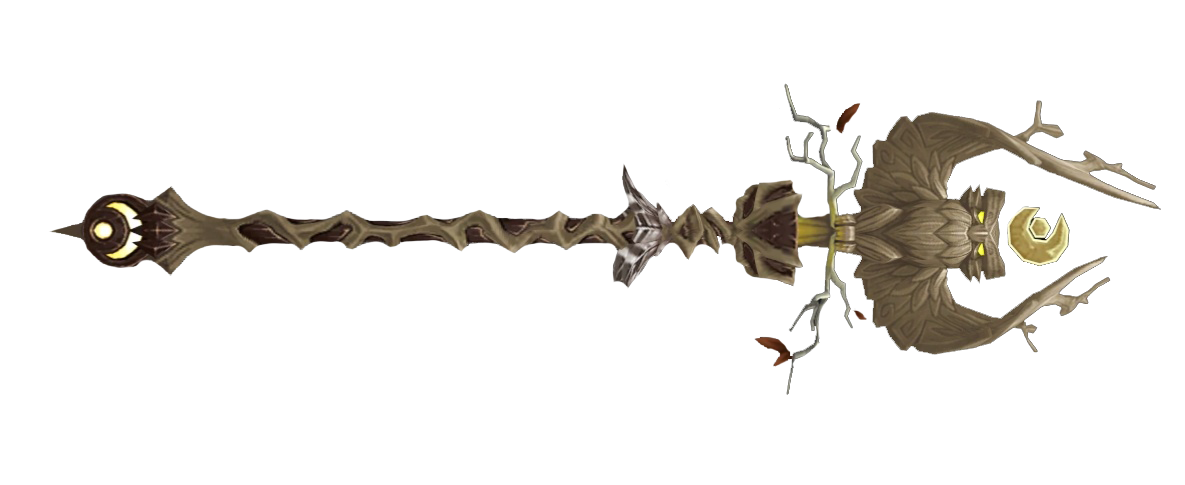
Astral Influence
Upon reaching 10th level, the powers of elune flows within you, giving you resistance to radiant damage.
Additionally, when you cast a spell that deals damage while shapeshifted as a moonkin, you can spend 1 affinity point to reroll a number of damage dice equal to your Wisdom modifier and use either roll.
Fury of Elune
At 14th level, when you are hit by a melee attack, you can use your reaction to deal radiant damage to the attacker. The damage equals your druid level. The attacker must also make a Strength saving throw against your druid spell save DC. On a failed save, the attacker is pushed in a straight line up to 20 feet away from you.
Path of Feral
Druids that wander the feral path seek an understanding, and visceral connection to the wild. These druids take the form of a feline predator, becoming fero-cious and agile stalkers. After a while, many feral druids come to prefer the appearance of their feline form over their humanoid shape.
Feral Affinity
When you choose this path at 2nd level, you have begun spending more time as a cat, familiarizing yourself with it. Your proficiency in Intelligence saving throws permanently changes to Dexterity saving throws.
You refer to the Spellcasting table later in the class description to determine your affinity points, cantrips, and spell slots when you gain a level in this class, and you count as a half-caster for determining available spell slots when multiclassing with another class.
You also learn a new affinity feature of your choice. You learn an additional affinity feature when you reach certain levels in this class: 3rd, 7th, 11th, and 15th level. The available options are detailed below.
Feline Swiftness. You can spend 1 affinity point to take the Dash action as a bonus action on your turn, and your jump distance is doubled for the turn.
Ferocious Bite. When you hit another creature with a bite attack, you can spend 2 affinity points to deal an extra 1d8 + your Dexterity modifier piercing damage.
Primal Fury. Immediately after you take the Attack action on your turn, you can spend 1 affinity point to make a claw attack as a bonus action.
Rake. When a creature misses you with a melee weapon attack, you can spend 1 affinity point to make an oppor-tunity attack against the target. Dealing additional damage equal to your druid level to the target.
Survival Instincts. Spend 2 affinity points upon taking damage to reduce the damage taken by an amount equal to your druid level.
Apex Predator
Starting at 2nd level, you excel at ambushes and acting quickly. You gain advantage on Dexterity (Stealth) checks made in dim light or darkness.
Additionally, you have advantage on initiative rolls.
Razor Claws
Beginning at 6th level, you can make one additional bite or claws attack of your choice as part of your attack Action, and you can add your proficiency bonus to one damage roll of a cat forms attack.
Additionally, your attacks in cat form count as magical for the purpose of overcoming resistance and immunity to nonmagical attacks and damage.
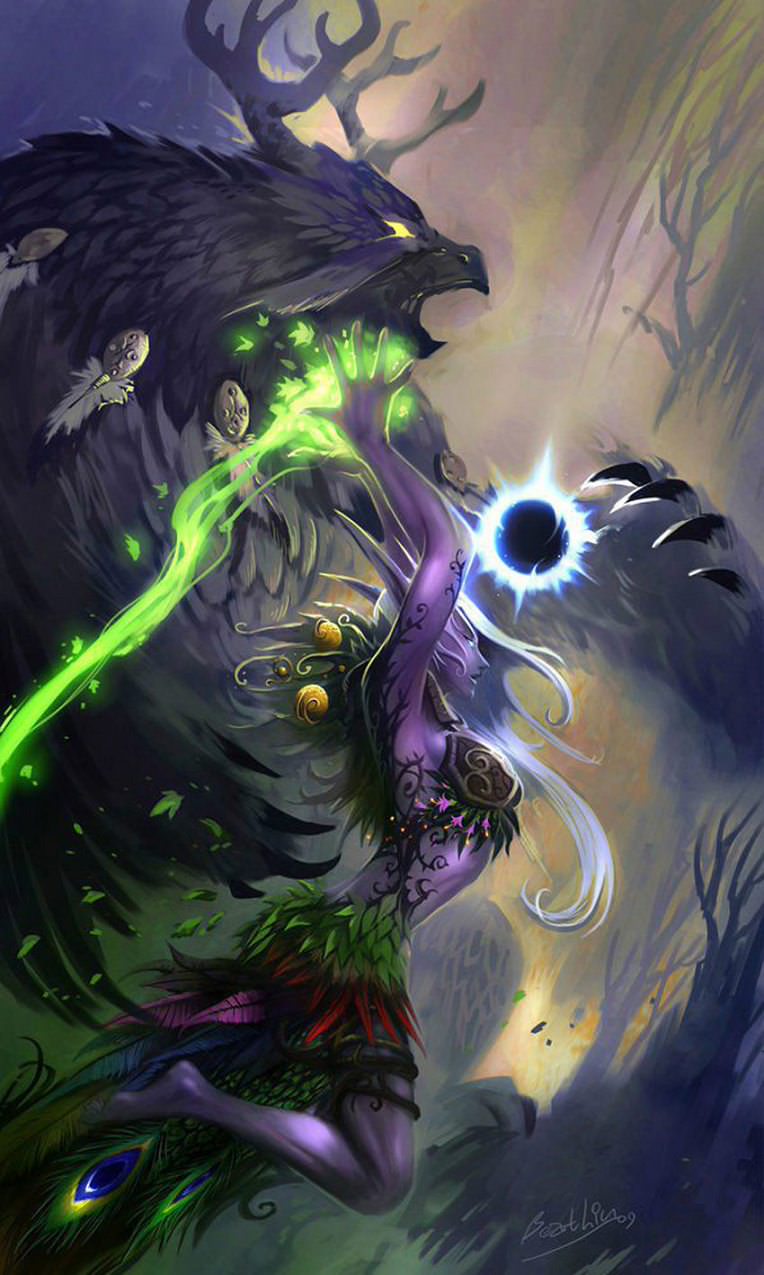

Prowl
Upon reaching 10th level, you have learned to blend into your surroundings whilst in the shadow. When you are in an area of dim light or darkness, you can use your action to become invisible. You remain invisible until you make an attack, cast a spell, or enter an area of bright light.
King of the Jungle
At 14th level, you can spend 3 affinity points to take on the form of an unparalleled hunter. Boasting your defenses by manifesting armor of bark, and improving your combat prowess. Using your action, you undergo a transformation. For 1 minute, you gain the following benefits:
- You gain the benefits of the barkskin spell.
- Your melee weapon attacks score a critical hit on a roll of 19 or 20 on the d20.
- Whenever a creature within 5 feet of you is hit by an attack made by another creature, you can use your reaction to make a melee attack against that creature.
Path of Guardian
Druids that go down the guardian path takes the form of massive bears, becoming walls of fur, claw, and tooth, that are able to deliver devastating blows. Aided by the forces of nature, they stand between allies and any opposing threat. They stand between allies and any opposing threat, taking the frontal blow of harmful attacks.
Guardian Affinity
When you choose this path at 2nd level, you have begun spending more time as a bear, familiarizing yourself with it. Your proficiency in Intelligence saving throws permanently changes to Constitution saving throws.
You refer to the Spellcasting table later in the class description to determine your affinity points, cantrips, and spell slots when you gain a level in this class, and you count as a half-caster for determining available spell slots when multiclassing with another class.
You also learn a new affinity feature of your choice. You learn an additional affinity feature when you reach certain levels in this class: 3rd, 7th, 11th, and 15th level. The available options are detailed below.
Bramblefur. As a reaction upon taking damage, you can spend 1 affinity point to reduce the damage by an amount equal to your druid level, and deal the reduced damage back to the attacker as bludgeoning damage.
Demoralizing Roar. You can spend 2 affinity points and let out an echoing roar as an action. Each enemy within 30 feet of you must succeed on a Wisdom saving throw, or be frightened for 1 minute. A creature frightened in this way makes a new saving throw at the end of their turn, ending the effect on a success. On a successful save, a creature becomes immune to this feature for 24 hours.
Mangle. When you hit with a claw attack, you can spend 1 affinity point to force the target to make a Strength saving throw. Knocking it prone on a failed saving throw.
Mighty Bash. When you hit another creature with a claw attack, you can spend 1 affinity point to attempt a mighty bash. The target must succeed on a Constitution saving throw or be stunned until the end of your next turn.
Pack Defender. You can use your reaction upon an ally being targeted by a melee weapon attack, and spend 2 affinity points to move 20 feet towards the ally and give the attack against them disadvantage. Opportunity attacks against you are made with disadvantage.
Feral / Guardian Spellcasting
| Druid Level |
Affinity Points |
Cantrips Known |
1st | 2nd | 3rd | 4th | 5th | |||||
|---|---|---|---|---|---|---|---|---|---|---|---|---|
| 2nd | 2 | 2 | 3 | — | — | — | — | |||||
| 3rd | 3 | 2 | 3 | — | — | — | — | |||||
| 4th | 4 | 2 | 3 | — | — | — | — | |||||
| 5th | 5 | 2 | 4 | 2 | — | — | — | |||||
| 6th | 6 | 2 | 4 | 2 | — | — | — | |||||
| 7th | 7 | 2 | 4 | 3 | — | — | — | |||||
| 8th | 8 | 2 | 4 | 3 | — | — | — | |||||
| 9th | 9 | 2 | 4 | 3 | 2 | — | — | |||||
| 10th | 10 | 3 | 4 | 3 | 2 | — | — | |||||
| 11th | 11 | 3 | 4 | 3 | 3 | — | — | |||||
| 12th | 12 | 3 | 4 | 3 | 3 | — | — | |||||
| 13th | 13 | 3 | 4 | 3 | 3 | 1 | — | |||||
| 14th | 14 | 3 | 4 | 3 | 3 | 1 | — | |||||
| 15th | 15 | 3 | 4 | 3 | 3 | 2 | — | |||||
| 16th | 16 | 3 | 4 | 3 | 3 | 2 | — | |||||
| 17th | 17 | 3 | 4 | 3 | 3 | 3 | 1 | |||||
| 18th | 18 | 3 | 4 | 3 | 3 | 3 | 1 | |||||
| 19th | 19 | 3 | 4 | 3 | 3 | 3 | 2 | |||||
| 20th | 20 | 3 | 4 | 3 | 3 | 3 | 2 |
Blood Frenzy
Starting at 2nd level, you can enter a bloody frenzy as a bonus action, shapeshifting you into a bear if you aren't already. While frenzying you have resistance to bludgeoning, piercing, and slashing damage.
Your blood frenzy lasts for 1 minute. It ends early if you are knocked unconscious or if your turn ends and you haven't attacked a hostile creature since your last turn or taken damage since then. You can also end the frenzy on your turn as a bonus action.
You can use this feature twice. Beginning at 7th level, you can use blood frenzy three times between rests, and at 15th level, you can enter a frenzy four times between rests. When you finish a long rest, you regain expended uses.
Mark of Ursol
At 6th level, you can spend 2 affinity points and use your action whilst shapeshifted into a bear to cast enlarge from the enlarge/reduce spell on yourself without providing any spell components.
Pulverize
Beginning at 10th level, the damage of your melee weapon attacks improve. Your bears bite increases to 2d8 piercing damage, and your claws increases to 3d6 slashing damage.
Additionally, you can add your proficiency bonus to one damage roll of a bear forms attack each round.

Guardian of Ursoc
At 14th level, your presence is menacing to those around you. Whilst in bear form, any creature within 5 feet of you that's hostile to you have disadvantage on attack rolls against targets other than you or another character with range of this feature. An enemy is immune to this effect if it can't see or hear you, or if it can't be frightened.
Path of Restoration
Druids of the restoration path builds a stronger bond with things that grow than the rest of their kin, gaining inspiration from the flower’s bloom, the seeds sprout, the mushroom’s spores, and the tree’s growth.
Path of Restoration Spells
| Druid Level | Spells | |
|---|---|---|
| 3rd | barkskin, lesser restoration | |
| 5th | mass healing word, revivify | |
| 7th | aura of life, guardian of nature | |
| 9th | greater restoration, raise dead |
Rejuvenation
When you choose this path at 2nd level, you gain the blessings of Elune, making you a font of energy that offers respite from injuries. You have a pool of energy represented by a number of d6s equal to your druid level.
As a bonus action, you can choose one creature that you can see within 120 feet of you and spend a number of those dice equal to half your druid level or less. Roll the spent dice and add them together. The target regains a number of hit points equal to the total. The target also gains 1 tempor-ary hit point per die.
You regain all expended dice when you finish a long rest.
Ironbark
Beginning at 6th level, when you or a creature within 30 feet of you takes acid, cold, fire, lightning, or thunder damage, you can use your reaction to grant resistance to the creature against that instance of the damage.
Tranquility
Starting at 10th level, you can become as calm as spring, soothing your allies. As an action, you evoke a healing energy that can restore a number of hit points equal to five times your druid level. Choose any creatures within 30 feet of you, and divide those hit points among them. This feature can restore a creature to no more than half of its hit point maximum. You can't use this feature on a construct.
Once you use this feature, you can't use it again until you finish a long rest.
Tree of Life
At 14th level, you can draw your strength from the world trees of Azeroth. Assuming the shape of a large treant. Using your action, you undergo a transformation. For 1 minute, you gain the following benefits:
- Your size doubles, if there isn't enough room you attain the maximum possible size in the space available.
- When you cast a spell on a target that restores hit points, another creature of your choice within 30 feet of the target is healed for half the hit points regained.
Once you use this feature, you can't use it again until you finish a long rest.
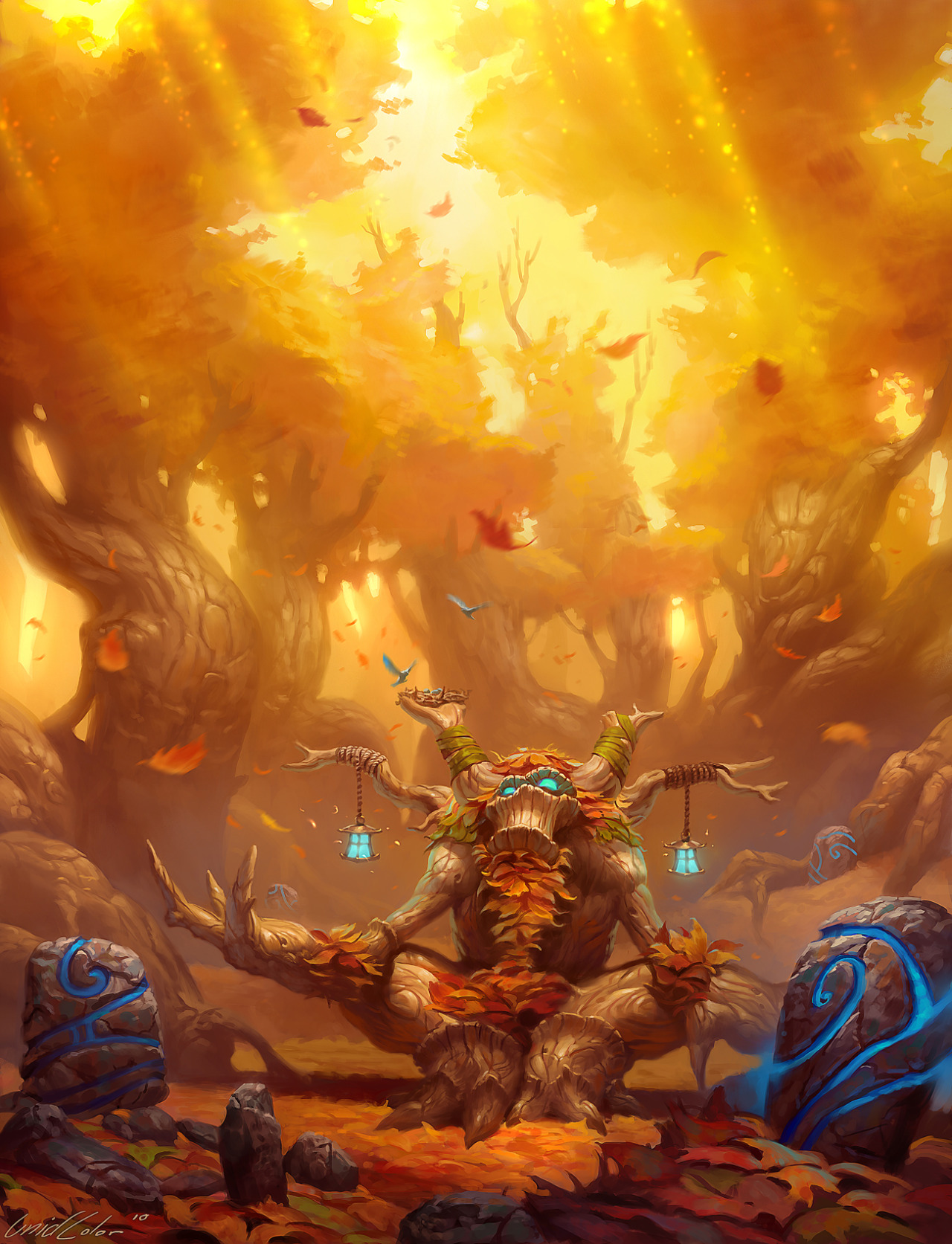

Hunter
The way of the hunter is one of mastery over the beasts of the world, an unparalleled precision in marksmanship, and the knowledge of how to survive in situations where others would perish.
— Ranger Sallina
Wild and barbaric looking, a human stalks alone through the shadows of trees, hunting the orcs he knows are planning a raid on a nearby farm. Clutching a spear in his hands, he charges in with intense fury, a large bear running at his side, roaring as he engages, cutting down one enemy after another.
Tumbling away from a cone of freezing air, a night elf finds her feet and draws back her bow to loose an arrow at the blue dragon. Shrugging off the wave of fear that emanates from the dragon like the cold of its breath, she sends one arrow after another to find the gaps between the dragon's thick scales.
Holding his hand high, a blood elf whistles to the hawk that circles high above him, calling the bird back to his side. Whispering instructions in Thalassian, he points to the owlbear he's been tracking and sends the hawk to distract the creature while he readies his bow.
Inescapable Stalkers
From an early age the call of the wild draws some adventurers from the comfort of their homes into the unforgiving primal world outside. Those who endure become hunters. As masters of their environment, hunters are able to slip like ghosts through the trees and lay traps in the paths of their enemies. These expert marksman drop foes dead in their tracks with flawless shots from a bow, crossbow or rifle. With the ability to wield two weapons simultaneously, hunters can unleash a flurry of blows against anyone unfortunate enough to stumble into close combat with them.
The art of survival is central to the isolated life of a hunter. Hunters track beasts with ease and enhance their own abilities by attuning themselves to the feral aspects of various creatures. Hunters are known for the lifelong bonds they form with animals of the wild, training great hawks, cats, bears, and many other beasts to fight alongside them.
Proud Rangers
The hunter is a stalker in the wilds, living on his knowledge of survival and skill with a bow or rifle. He is deeply in tune with nature, and some of its mightiest beasts are his allies.
Of Azeroth's many creatures, few can resist the hunter's call, and fewer can survive his fury. Hunters are as varied as the world's many climates, but they are universally renowned for their amazing abilities to find their prey and bring it down. Most hunters seek to aid the balance of nature along with their druidic allies. Elven rangers are not alone in their mastery of the wilderness. While an elven ranger prefers the bow, the hunter would rather get up close. A hunter is skilled in stealth, slipping through the woods like a ghost.
The Hunters Choice
The hunter is the choice of life for those who reject societies that oppress the natural role as prey and hunter, and also reject the druidic stance that we should be healers and observers rather than active participants in the "Great Hunt".
They follow a life of reverence for nature complimenting their tradition and willingness to use man-made tools. We are all tool-using creatures after all, and it is only natural to use that advantage afforded by nature to be better hunters. There are however also those hunters who prefer a more direct approach to tracking and hunting.


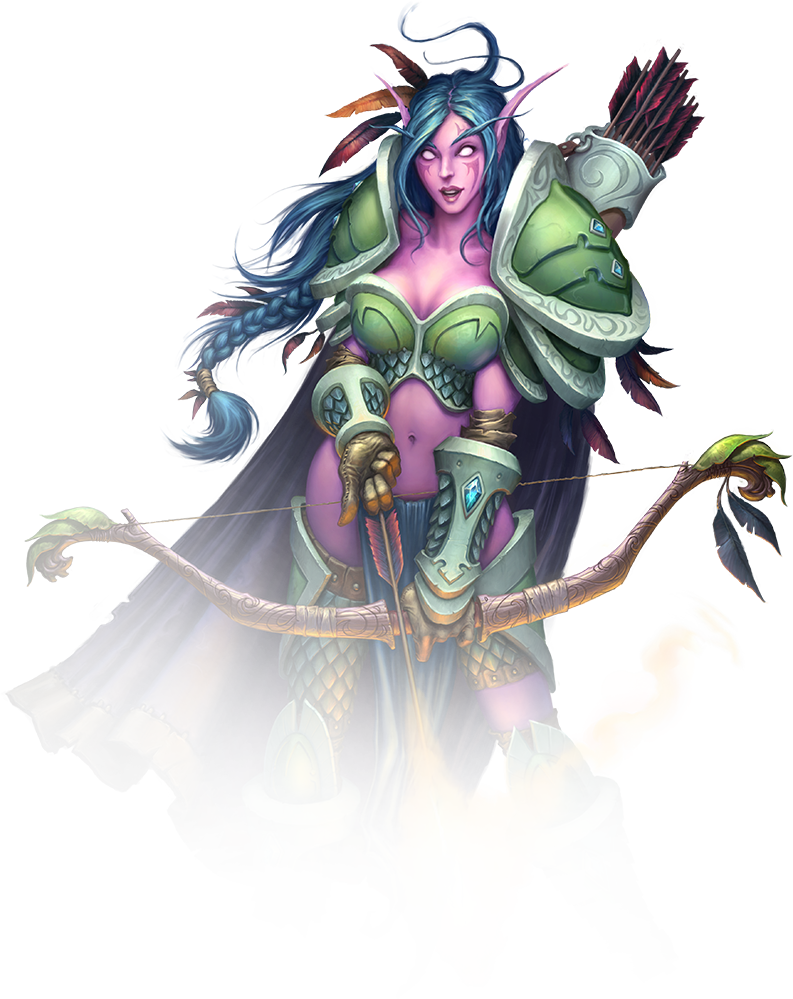
The Hunter
| Level | Proficiency Bonus |
Features | Hunter's Mark |
Focus Points |
|---|---|---|---|---|
| 1st | +2 | Animal Empathy, Natural Explorer | — | — |
| 2nd | +2 | Fighting Style, Hunter's Mark, Focus (2 Attacks) | 1d4 | 2 |
| 3rd | +2 | Hunter Archetype, Animal Companion | 1d4 | 3 |
| 4th | +2 | Ability Score Improvement | 1d4 | 3 |
| 5th | +3 | Extra Attack | 1d4 | 3 |
| 6th | +3 | Focus (3 Attacks) | 1d4 | 4 |
| 7th | +3 | Hunter Archetype feature | 1d6 | 4 |
| 8th | +3 | Ability Score Improvement, Fleet of Foot | 1d6 | 4 |
| 9th | +4 | Know Your Prey | 1d6 | 5 |
| 10th | +4 | Focus (4 Attacks) | 1d6 | 5 |
| 11th | +4 | Hunter Archetype feature | 1d6 | 5 |
| 12th | +4 | Ability Score Improvement | 1d8 | 6 |
| 13th | +5 | Hide in Plain Sight | 1d8 | 6 |
| 14th | +5 | Focus (5 Attacks) | 1d8 | 6 |
| 15th | +5 | Hunter Archetype feature | 1d8 | 7 |
| 16th | +5 | Ability Score Improvement | 1d8 | 7 |
| 17th | +6 | Honed Senses | 1d10 | 7 |
| 18th | +6 | Focus (6 Attacks) | 1d10 | 8 |
| 19th | +6 | Ability Score Improvement | 1d10 | 8 |
| 20th | +6 | Aspect of the Wild | 1d10 | 8 |
Creating a Hunter
As you create your hunter character, consider the nature of the training that gave you your particular capabilities. Did you train with a single mentor, wandering the wilds together until you mastered the hunter's ways? Did you leave your apprenticeship. or was your mentor slain, perhaps you learned your skills as part of a band of hunters affiliated with a druidic circle, trained in mystic paths as well as wilderness lore. You might be self-taught, a recluse who learned combat skills, tracking, and even a magical connection to nature through the necessity of surviving in the wilds.
Is your adventuring career a continuation of your work in protecting the borderlands, or a significant change? What made you join up with a band of adventurers? Do you find it challenging to teach new allies the ways of the wild, or do you welcome the relief from solitude that they offer?
Quick Build
You can make a hunter quickly by following these sugges-tions. First, make Dexterity your highest ability score, followed by Wisdom. (Some hunters who focus on melee fighting make Strength higher than Dexterity.)
Class Features
As a hunter, you gain the following class features.
Hit Points
- Hit Dice: 1d10 per hunter level
- Hit Points at 1st Level: 10 + your Constitution modifier
- Hit Points at Higher Levels: 1d10 + your Constitution modifier per hunter level after 1st
Proficiencies
- Armor: Light armor, medium armor
- Weapons: Simple weapons, martial weapons, firearms
- Tools: None
- Saving Throws: Strength, Dexterity
- Skills: Choose three from Animal Handling, Insight, Investigation, Nature, Perception, Stealth, and Survival
Equipment
You start with the following equipment, in addition to the equipment granted by your background:
- (a) scale mail or (b) leather armor
- (a) two short swords or (b) two simple melee weapons
- (a) a dungeoneer's pack or (b) an explorer's pack
- A longbow and a quiver of 20 arrows

Animal Empathy
Your mastery of hunter lore allows you to establish a link to beasts and to the land around you.
You have an innate ability to communicate with beasts, and they recognize you as a kindred spirit. Through sounds and gestures, you can communicate simple ideas to a beast as an action, and can read its basic mood and intent. You learn its emotional state, whether it is affected by magic of any sort, its short-term needs, and actions you can take to persuade it to not attack.
You cannot use this ability against a creature that you have attacked within the past 10 minutes.
Natural Explorer
You are familiar with natural environments and are adept at traveling and surviving in such regions. This grants you the following benefits:
- You ignore nonmagical difficult terrain.
- You have advantage on initiative rolls.
- On your first turn during combat, you have advantage on attack rolls against creatures that have not yet acted.
In addition, you are skilled at navigating the wilderness. You gain the following benefits when traveling for an hour or more.
- Difficult terrain doesn't slow your group's travel.
- Your group can't become lost except by magical means.
- Even when you are engaged in another activity while traveling (such as foraging, navigating, or tracking), you remain alert to danger.
- If you are traveling alone with or without your pet, you can move stealthily at a normal pace.
- When you forage, you find twice as much food as you normally would.
- While tracking other creatures, you also learn their exact number, their sizes, and how long ago they passed through the area.
Fighting Style
At 2nd level, you adopt a particular style of fighting as your specialty. Choose one of the following options. You can't take a Fighting Style option more than once, even if you later get to choose again.
Archery
You gain a +2 bonus to attack rolls you make with ranged weapons.
Close Quarters Shooter
When making a ranged attack while you are within 5 feet of a hostile creature, you do not have disadvantage on the attack roll. Your ranged attacks ignore half cover and three-quarters cover against targets within 30 feet of you. Finally, you have a +1 bonus to attack rolls on ranged attacks.
Two-Weapon Fighting
When you engage in two-weapon fighting, you can add your ability modifier to the damage of the second attack.
Great Weapon Fighting
When you roll a 1 or 2 on a damage die for an attack you make with a melee weapon that you are wielding with two hands, you can reroll the die and must use the new roll, even if the new roll is a 1 or a 2. The weapon must have the two-handed or versatile property for you to use this benefit.
Hunter's Mark
Beginning at 2nd level, you are able to mark a target as your quarry. As a bonus action, choose a creature within 120 feet of you that you can see. The target is marked for the 1 hour, until you use this feature again, or until it dies. The mark also ends if you fall unconscious.
Once per turn, you can deal an extra 1d4 damage to that creature when you hit it with a weapon attack. The amount of extra damage increases as you gain levels in this class, as shown in the Hunter's Mark column of the Hunter table.
In addition, you have advantage on Wisdom (Perception), and Wisdom (Survival) checks you make to find your mark.
Focus
Starting at 2nd level, you learn to enter a heightened state of focus in combat. Your access to this focus is represented by a number of focus points. Your hunter level determines the number of focus points you have, as shown in the Focus Points column of the Hunter table.
You can spend these points to perform various focus fea-tures. Each focused attack must be declared before making an attack, unless otherwise specified. You can only use one focused attack per attack roll.
You learn two focused attacks of your choice when you gain this feature, which are detailed under Focused Attacks below. You learn an additional focused attack of your choice at 6th, 10th, 14th, and 18th level. When you learn a new focused attack, you can also replace one focused attack you know with another from the list.
When you spend a focus point, it is unavailable until you finish a short or long rest, at the end of which your focus is regained. Additionally you regain 1 expended focus point each time you roll a 20 on the d20 roll for an attack with a weapon, or deal the killing blow to a creature of significant threat (DM's discretion).
Some of your focused attacks require your target to make a saving throw to resist the attacks effect. The saving throw DC is calculated as follows:
Focus save DC = 8 + your proficiency bonus +
your Wisdom modifier
Focused Attacks
These focused attacks are presented in alphabetical order.
Aimed Attack. When you make a weapon attack against a creature, you can spend 1 focus point to attempt to topple a target. On a hit, the target suffers normal damage, and must succeed Strength save or be knocked prone.
Carving Strike. When you make a melee weapon attack against a creature, you can spend 1 focus point to make an attack roll against each target directly on either side of your initial attack. On a hit, roll damage for one target, any additional creature hit takes the same amount of damage.
Concussive Attack. When you make a weapon attack against a creature, you can spend 1 focus point to attempt to dizzy your opponent. On a hit, the creature suffers normal damage and must make a Constitution saving throw or suffer disadvantage on attacks until the end of their next turn.
Disarming Attack. When you make a weapon attack against a creature, you can spend 1 focus point to attempt to shoot or knock an object from their hands. On a hit, the creature suffers normal damage and must succeed on a Strength saving throw or drop 1 held object of your choice and have that object be pushed 10 feet away in the direction of your attack.

Disengaging Attack. Immediately after taking the Attack action on your turn, you can spend 1 focus point to take the Disengage action as a bonus action.
Resorting Attack. If a creature misses you with a weapon attack, you can spend 1 focus point and use your reaction to make a weapon attack against the creature.
Piercing Shot. When you make a ranged weapon attack against a creature, you can spend 1 focus point to attempt to shoot through multiple opponents. On a hit, the creature suffers normal damage and you make an attack roll with disadvantage against every creature in a line directly behind the target within your first range increment.
Steady Attack. When you make a weapon attack against a creature, you can spend 1 focus point to gain advantage on the attack roll.
Hunter Archetype
At 3rd level, you choose to emulate the ideals and training of a hunter archetype: Beast Master, Marksman or Survival, each detailed at the end of the class description. Your choice grants you features at 3rd level and again at 7th, 11th, and 15th level.
Animal Companion
Beginning at 3rd level, you have strengthened your connec-tion with animals, allowing you to bond with a creature of the natural world.
You gain a companion that accompanies you on your adventures and is trained to fight alongside you. Choose a beast that is no larger than Medium with a challenge rating of 1/2 or lower. your animal companion gains all the benefits of your Companion's bond ability. You can only have one animal companion at a time.
If your animal companion dies, you can obtain another one by spending 8 hours bonding with another animal that isn't hostile to you, either the same type of beast as before or a different one.
Companion's Bond
Your beast companion gains a variety of benefits once loyal.
- The beast loses its Multiattack action, if it has one.
- Your companion obeys your commands as best it can. It rolls initiative like any other creature, but you determine its actions, decisions, attitudes and so on. If you are incapacitated or absent, the companion acts on its own.
- Your beast companion has abilities and statistics determined in part by your level. Using your proficiency bonus rather than its own. In addition to the areas where it normally uses its proficiency bonus, your companion also adds its proficiency bonus to its AC and to its damage rolls.
- Your beast gains proficiency in two skills of your choice. It also becomes proficient in all saving throws.
- For each level above 3rd, your beast companion gains an additional hit die and its maximum hit points increases accordingly. This is retroactive for companions gained at later levels.
- Whenever you gain an Ability Score Improvement, your companions abilities improve as well, applying all the rules of increasing ability scores that applies to you.
- Your companions alignment changes to sharing yours.
Ability Score Improvement
When you reach 4th level, and again at 8th, 12th, 16th, and 19th level, you can increase one ability score of your choice by 2, or you can increase two ability scores of your choice by 1. As normal, you can't increase an ability score above 20 using this feature.
Extra Attack
Beginning at 5th level, you can attack twice, instead of once, whenever you take the Attack action on your turn.
Fleet of Foot
Starting at 8th level, when you take the Dash action, you can pass through any difficult terrain without requiring extra movement.
Additionally, you are able to pass through nonmagicalplants without being slowed by them or taking damage from them if they have thorns, spines, or a similar hazard.
Know Your Prey
At 9th level, you can glean intimate knowledge about the capabilities of your marked target. As action you can learn two of the following characteristics of your choice about the target of your hunter's mark if it's within 120 feet.
- Creature Type
- Armor Class
- Speed
- Damage Vulnerabilities
- Damage Resistances
- Damage Immunities
- Senses
Once you have gained knowledge of a creature, you can't gain more knowledge of that type of creature for 24 hours.
Hide in Plain Sight
Beginning at 13th level, you can use the Hide action as a bonus action on your turn. Also, you can't be tracked by non-magical means, unless you choose to leave a trail.
Honed Senses
Upon reaching 17th level, you gain preternatural senses that help you fight creatures you can't see. When you attack a creature you can't see, your inability to see it doesn't impose disadvantage on your attack rolls against it. You are also aware of the location of any invisible creatures within 30 feet of you, provided that the creature isn't hidden from you and you aren't blinded or deafened.
Aspect of the Wild
At 20th level, you become an unparalleled hunter. Once on each of your turns, you can add your Wisdom modifier to the attack roll or the damage roll of an attack you make. You can choose to use this feature before or after the roll, but before any effects of the roll are applied.

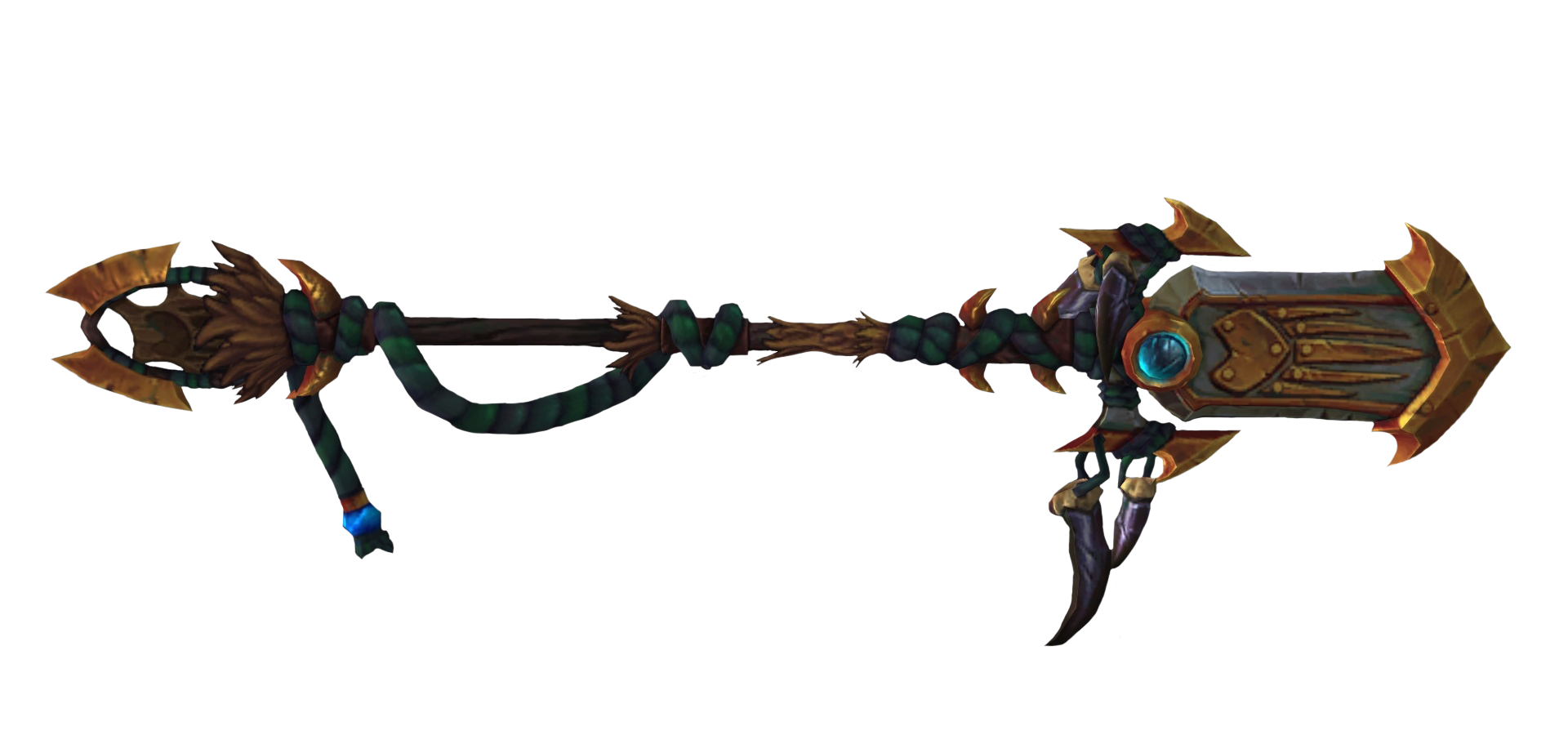
Hunter Archetypes
All hunters have certain things in common, such as their love for the wilderness, or their passion for beasts. But some hunters have more than love for beasts, and others a greater love for the wild, hunters fall into three categories: Beast Master, Marksman, and Survivalist.
Beast Master
Among the most gifted hunters, there are those who have from birth felt a profound bond with the creatures of the wild. These beast masters are drawn to the perilous primal world, invigorated by its dangerous and untamed nature. Primitive landscape becomes home. Ferocious predator becomes kin.
Dire Tamer
Starting at 3rd level, your way with beasts are unmatched, making you able to tame Large beasts with a challenge rating of 1 or lower.
Kindred Spirit
Beginning at 7th level, you and your animal companion form a more potent fighting team. When you hit a creature with a weapon attack on your turn, if your companion is within range, it can use its reaction to make a melee attack against the same target.
Additionally, you can use your reaction to warn your companion when an attack roll is made against it, giving it resistance to all damage dealt by the attack if it hits.
Aspect of the Wilds
Starting at 11th level, your time spent around your animal companion have begun influencing you, granting you one of the following features of your choice.
Pack Tactics. You have advantage on an attack roll against a creature if at least one of your allies is within 5 feet of the creature and the ally isn't incapacitated.
Pounce. If you move at least 20 feet straight toward a creature and then hit with a melee weapon attack on the same turn, that target must succeed on a Strength saving throw or be knocked prone.
Rampage. When you reduce a creature to 0 hit points with a weapon attack on your turn, you can use your bonus action to move up to half your speed and make another attack with the same weapon.
One of the Pack
At 15th level, the 'voice' of your companion helps you to overcome grievous injuries and keep on fighting. When you take damage that reduces you to 0 hit points and doesn't kill you outright, your companion can use its reaction to call out to you. If you are within range to hear its call, you immediately gain hit points equal to your hunter level, and regain your consciousness.
Once you (and your companion) uses this feature, you can't use it again until you finish a long rest.
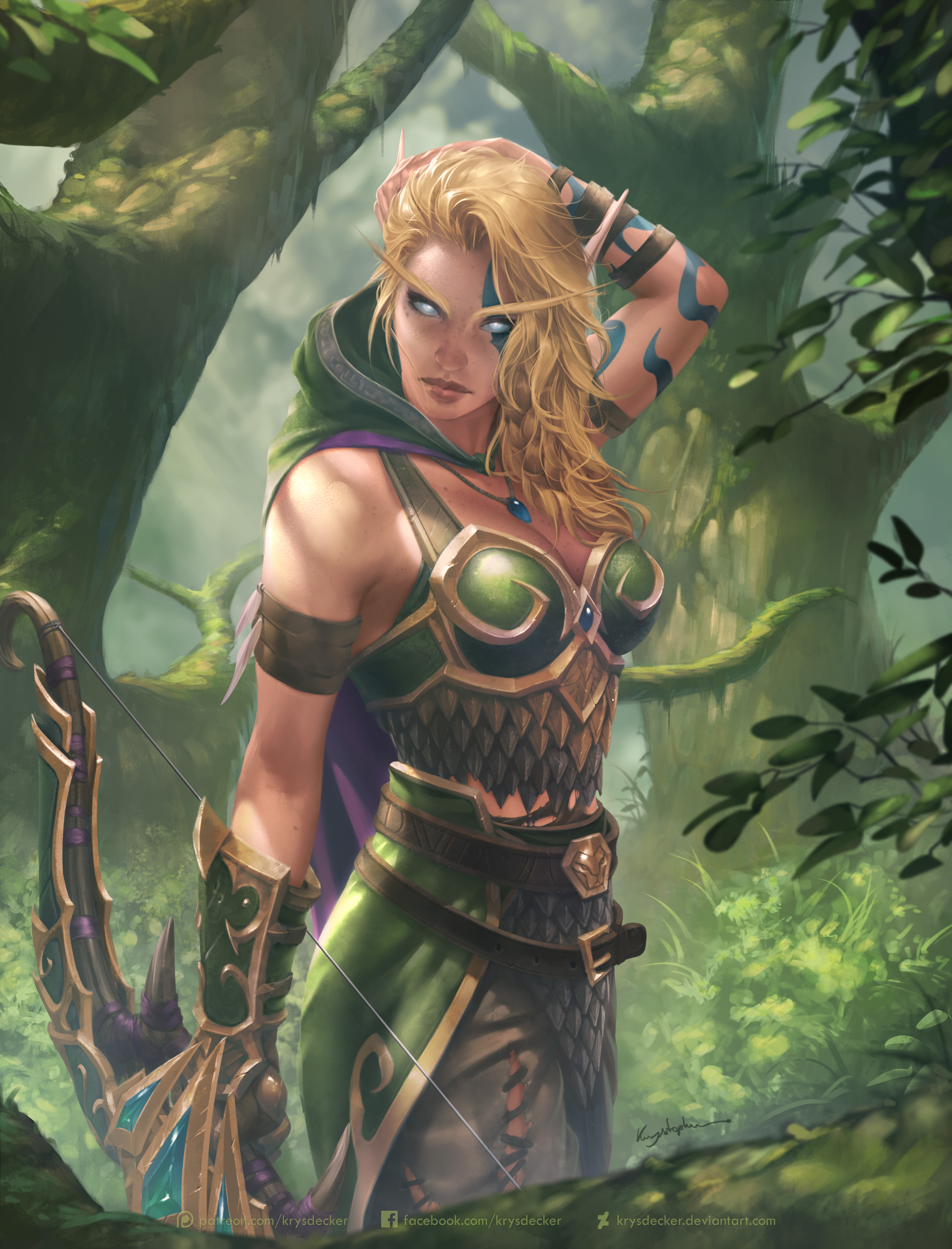

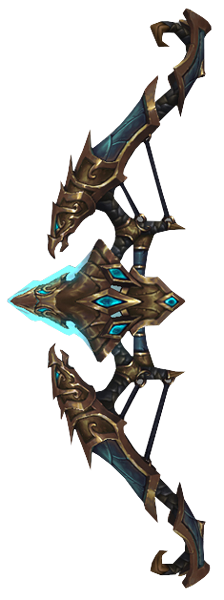
Marksman
Marksmen shroud themselves in the perils of the untamed wilds, perfecting the use of weapons that are deadliest from great range. They have little interest in gaining the loyalty of beasts. Instead, they blend into the surrounding environment, surveying predators and delivering deadly shots from great distances.
Careful Aim
Starting at 3rd level, your aim becomes deadly. As a bonus action on your turn, you can take careful aim at a creature you can see that is within range of a ranged weapon you're wielding. Until the end of your turn, your ranged attacks with that weapon gain two benefits against the target.
- The attack ignores half and three-quarters cover.
- On a hit, the weapon deals additional damage to the target equal to 2 + half your hunter level.
You can use this feature three times. You regain expended uses when you finish a short or long rest.
Aspect of the Eagle
Beginning at 7th level, you can take Search action as a bonus action. You also gain proficiency in the Perception, Investigation, or Survival skill (choose one). If you already have proficiency in all three, you gain expertise in one of them of your choice.
Multiattack
Upon reaching 11th level, you gain one of the following features of your choice.
Barrage. You can use your action to make a ranged attack against any number of creatures within a 30-ft cone. You must have ammunition for each target as normal, and you make a separate attack roll for each target.
Volley. You can use your action to make a ranged attack against any number of creatures within 10 feet of a point you can see within your weapon's range. You must have ammunition for each target, as normal, and you make a separate attack roll for each target.
Marksman's Focus
At 15th level, when you roll for initiative and have no uses of careful aim remaining, you regain one use.
Survival
All hunters feel a calling to the wild, but some serve as a reflection of its brutality. To them, the hunt is defined by unrelenting ferocity. Weapons of great range are thrown away for close-quarters combat.
Predator
Starting at 3rd level, at the start of your first turn of each combat, your walking speed increases by 10 feet, which lasts until the end of that turn. If you take the Attack action on that turn, you can make one additional weapon attack as part of that action. If the attack hits, the target takes an extra 1d8 damage of the weapon's damage type.
Additionally, you add your Wisdom modifier to your initiative rolls.
Camouflage
Beginning at 7th level, you gain the ability to cast the pass without trace spell without providing material components, but only as a ritual. You must have access to fresh mud, dirt, plants, soot, or other natural occurring materials for you to be able to do so.
Marked Counter
Upon reaching 11th level, you gain the ability to counter-attack when your marked target tries to sabotage you. If the target of your Hunter's Mark forces you to make a saving throw, you can use your reaction to make a weapon attack against the quarry. You make this attack before making the saving throw. If your attack hits, you gain advantage on your saving throw, in addition to the attack's normal effects.
Aspect of the Beast
At 15th level, you take on an aspect of a one of the following beasts of your choice.
Cheetah. When you are subjected to an effect that allows you to make a Dexterity saving throw to take only half damage, you instead take no damage if you succeed on the saving throw, and only half damage if you fail.
Monkey. When a creature misses you with a melee attack, you can use your reaction to force that creature to repeat the same attack against another creature (other than itself) of your choice.
Turtle. When an attacker that you can see hits you with an attack, you can use your reaction to halve the attack's damage against you.


Mage
Always remember that power is a double-edged blade. One side light, the other dark. It calls to you, where you are most desperate; when victory seems worth any sacrifice. There is a price to be paid for such a gift, and many eagerly accept the bargain. Power alone is not to be feared.
Fear, instead, those who wield it.
— Jaina Proudmoore
Clad in a golden robe, a blood elf closes her eyes to shut out the distractions of the battlefields and begins her quiet chant. Fingers weaving in front of her, she completes her spell and launches a bead of fire toward the enemy ranks, where it erupts into an engulfing conflagration.
The air shimmers, as a draenei lifts his hands above his head twisting the air around him into a barrier of force engulfs him, blocking a barrage of attacks against him.
Golden eyes flashing, a human stomps his foot into the ground as a crippling fire sets him ablaze, as swords clash against him, an inferno of fire spews out at the attackers, engulfing them in hellfire.
Mages are supreme magic-users, defined and united as a class by the spells they cast. Drawing on the leylines of magic that permeates Azeroth, mages cast spells of explo-sive fire, arcing lightning, and subtle deception. Their magic can conjure monsters from other planes of exis-tence, or glimpses the future. Their mightiest spells change one substance into another, call meteors down from the sky, or open portals across continents.
Masters of Time and Space
Students gifted with a keen intellect and unwavering discipline may walk the path of the mage. The arcane magic available to magi is both great and dangerous, and thus is revealed only to the most devoted practitioners. To avoid interference with their spellcasting, mages wear only cloth armor, but arcane shields and enchantments give them additional protection. To keep enemies at bay, mages can summon bursts of fire to incinerate distant targets and cause entire areas to erupt, setting groups of foes ablaze. Masters of ice can command blizzards that tear into flesh and limit movement. Should enemies manage to survive this assault, mages can shrink them into harmless sheep in the blink of an eye.
Powerful magi can even generate enhancements and portals, assisting allies by sharpening their minds and transporting them instantly across the world.
Scholars of the Arcane
Wild and enigmatic, varied in form and function, the power of magic draws students who seek to master its mysteries. Some aspire to become like the titans, shaping reality itself. Though the casting of a typical spell requires merely the utterance of a few strange words, fleeting gestures, and sometimes a pinch or clump of exotic materials, these surface components barely hint at the expertise attained after years of apprenticeship and countless hours of study.
Mages live and die by their spells. Everything else is secondary. They learn new spells as they experiment and grow in experience. They can also learn them from other mages, from ancient tomes or inscriptions, and from ancient creatures that are steeped in magic.
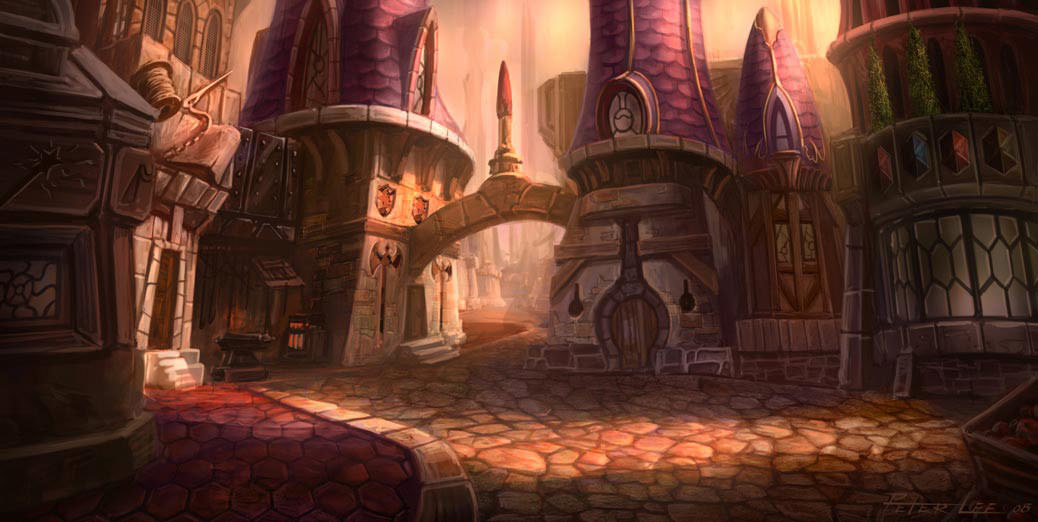

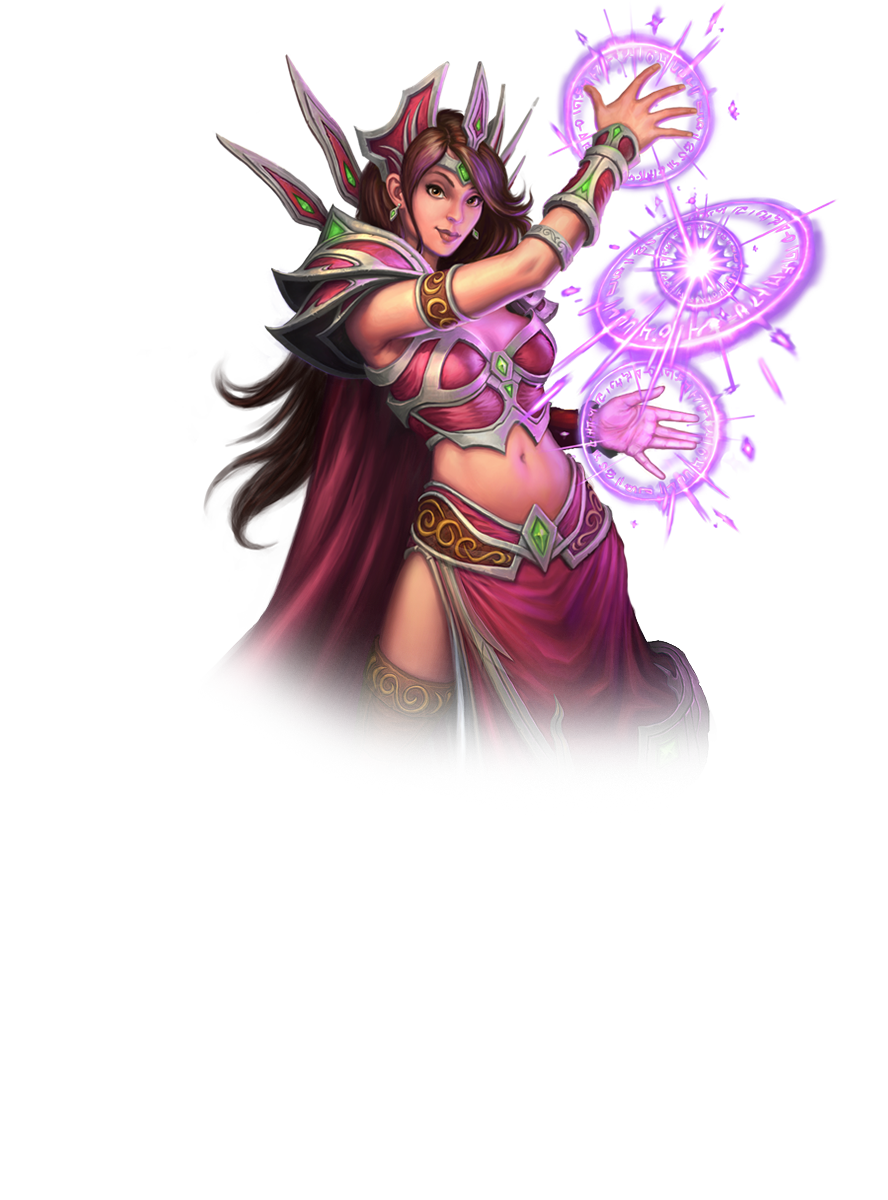
The Mage
| Level | Proficiency Bonus |
Features | Cantrips Known |
1st | 2nd | 3rd | 4th | 5th | 6th | 7th | 8th | 9th | |||||||||
|---|---|---|---|---|---|---|---|---|---|---|---|---|---|---|---|---|---|---|---|---|---|
| 1st | +2 | Spellcasting, Arcane Recovery | 3 | 2 | — | — | — | — | — | — | — | — | |||||||||
| 2nd | +2 | Arcane Study | 3 | 3 | — | — | — | — | — | — | — | — | |||||||||
| 3rd | +2 | Metamagic (1/rest) | 3 | 4 | 2 | — | — | — | — | — | — | — | |||||||||
| 4th | +2 | Ability Score Improvement | 4 | 4 | 3 | — | — | — | — | — | — | — | |||||||||
| 5th | +3 | — | 4 | 4 | 3 | 2 | — | — | — | — | — | — | |||||||||
| 6th | +3 | Arcane Study feature | 4 | 4 | 3 | 3 | — | — | — | — | — | — | |||||||||
| 7th | +3 | — | 4 | 4 | 3 | 3 | 1 | — | — | — | — | — | |||||||||
| 8th | +3 | Ability Score Improvement | 4 | 4 | 3 | 3 | 2 | — | — | — | — | — | |||||||||
| 9th | +4 | — | 4 | 4 | 3 | 3 | 3 | 1 | — | — | — | — | |||||||||
| 10th | +4 | Arcane Study feature | 4 | 4 | 3 | 3 | 3 | 2 | — | — | — | — | |||||||||
| 11th | +4 | — | 5 | 4 | 3 | 3 | 3 | 2 | 1 | — | — | — | |||||||||
| 12th | +4 | Ability Score Improvement | 5 | 4 | 3 | 3 | 3 | 2 | 1 | — | — | — | |||||||||
| 13th | +5 | — | 5 | 4 | 3 | 3 | 3 | 2 | 1 | 1 | — | — | |||||||||
| 14th | +5 | Arcane Study feature | 5 | 4 | 3 | 3 | 3 | 2 | 1 | 1 | — | — | |||||||||
| 15th | +5 | Metamagic (2/rest) | 5 | 4 | 3 | 3 | 3 | 2 | 1 | 1 | 1 | — | |||||||||
| 16th | +5 | Ability Score Improvement | 5 | 4 | 3 | 3 | 3 | 2 | 1 | 1 | 1 | — | |||||||||
| 17th | +6 | — | 5 | 4 | 3 | 3 | 3 | 2 | 1 | 1 | 1 | 1 | |||||||||
| 18th | +6 | Spell Mastery | 5 | 4 | 3 | 3 | 3 | 3 | 1 | 1 | 1 | 1 | |||||||||
| 19th | +6 | Ability Score Improvement | 5 | 4 | 3 | 3 | 3 | 3 | 2 | 1 | 1 | 1 | |||||||||
| 20th | +6 | Signature Spell | 5 | 4 | 3 | 3 | 3 | 3 | 2 | 2 | 1 | 1 |
The Lure of Knowledge
Mages' lives are seldom mundane. The closest a mage is likely to come to an ordinary life is working as a sage or lecturer in a library or university, teaching others the secrets of the multiverse. But the lure of knowledge and power calls even the most unadventurous mages out of the safety of their libraries and laboratories and into crumbling ruins and lost cities. Most mages believe that their counterparts in ancient civilizations knew secrets of magic that have been lost to the ages, and discovering those secrets could unlock the path to a power greater than any magic available in the present age.
Creating a Mage
Creating a mage character demands a backstory dominated by at least one extraordinary event. How did your character first come into contact with magic? How did you discover you had an aptitude for it? Do you have a natural talent, or did you simply study hard and practice incessantly? Did you encounter a magical creature or an ancient tome that taught you the basics of magic?
What drew you forth from your life of study? Did your first taste of magical knowledge leave you hungry for more? Have you received word of a secret repository of knowledge not yet plundered by any other mages? Perhaps you're simply eager to put your newfound magical skills to the test in the face of danger.
Quick Build
You can make a mage quickly by following these sugges-tions. First, lntelligence should be your highest ability score, followed by Constitution or Dexterity.
Class Features
As a mage, you gain the following class features.
Hit Points
- Hit Dice: 1d6 per mage level
- Hit Points at 1st Level: 6 + your Constitution modifier
- Hit Points at Higher Levels: 1d6 + your Constitution modifier per mage level after 1st
Proficiencies
- Armor: None
- Weapons: Simple weapons
- Tools: None
- Saving Throws: Intelligence, Wisdom
- Skills: Choose two from Arcana, History, lnsight, lnvestigation, Medicine, and Religion

Equipment
You start with the following equipment, in addition to the equipment granted by your background:
- (a) quarterstaff or (b) a dagger
- (a) a component pouch or (b) an arcane focus
- (a) a scholar's pack or (b) an explorer's pack
- A spellbook
Spellcasting
As a student of arcane, you own a spellbook with spells that show the glimmerings of your true power. See chapter 10 of Player's Handbook for the general rules of spellcasting and chapter 6 of this book for the mage spell list.
Cantrips
At 1st level, you know three cantrips of your choice from the mage spell list. You learn additional mage cantrips of your choice at higher levels, as shown in the Cantrips Known column of the Mage table.
Spellbook
At 1st level, you have a spellbook containing six 1st-level mage spells of your choice. Your spellbook does not contain your known cantrips.
Preparing and Casting Spells
The Mage table shows how many spell slots you have to cast your spells of 1st level and higher. To cast one of these spells, you must expend a slot of the spell's level or higher. You regain expended spell slots when you finish a long rest.
You prepare the list of mage spells that are available for you to cast. To do so, choose a number of mage spells from your spellbook equal to your Intelligence modifier + your mage level (minimum of one spell). The spells must be of a level for which you have spell slots.
For example. if you're a 3rd-level mage, you have four 1st-level and two 2nd-level spell slots. With an Intelligence of 16, your list of prepared spells can include six spells of 1st or 2nd level, in any combination, chosen from your spellbook. If you prepare the 1st-level spell magic missile, you can cast it using a 1st-level or a 2nd-level slot. Casting the spell doesn't remove it from your list of prepared.
You can change your list of prepared spells when you finish a long rest. Preparing a new list of mage spells requires time spent studying your spellbook and memori-zing the incantations and gestures you must make to cast the spell: 1 minute per spell level for each spell on your list.
Spellcasting Ability
Intelligence is your spellcasting ability for your mage spells, since you learn your spells through dedicated study and memorization. You use your Intelligence whenever a spell refers to your spellcasting ability. In addition, you use your Intelligence modifier when setting the saving throw DC for a mage spell you cast and when making an attack roll.
Spell save DC = 8 + your proficiency bonus +
your Intelligence modifier
Spell attack modifier = your proficiency bonus +
your Intelligence modifier
Ritual Casting
You can cast a mage spell as a ritual if that spell has the ritual tag and you have the spell in your spellbook. You don't need to have the spell prepared.
Your Spellbook
The spells that you add to your spellbook as you gain levels reflect the arcane research you con-duct on your own, as well as intellectual break-throughs you have had about the nature of the multiverse. You might find other spells during your adventures. You could discover a spell re-corded on a scroll in an evil sorcerer's chest, for example, or in a dusty tome in an ancient library.
Copying a Spell into the Book. When you find a mage spell of 1st level or higher, you can add it to your spellbook if it is of a level for which you can prepare and if you can spare the time to decipher and copy it.
Copying a spell into your spellbook involves reproducing the basic form of the spell, then deciphering the unique system of notation used by the mage who wrote it. You must practice the spell until you understand the sounds or gestures required, then transcribe it into your spellbook using your own notation.
For each level of the spell, the process takes 2 hours and costs 50 gp. The cost represents material components you expend as you experi-ment with the spell to master it, as well as the fine inks you need to record it. Once you have spent this time and money, you can prepare the spell just like your other spells.
Replacing the Book. You can copy a spell from your own spellbook into another book—for example, if you want to make a backup copy of your spellbook. This is just like copying a new spell into your spellbook, but faster and easier, since you understand your own notation and already know how to cast the spell. You need spend only 1 hour and 10 gp for each level of the copied spell.
If you lose your spellbook, you can use the same procedure to transcribe the spells that you have prepared into a new spellbook. Filling out the remainder of your spellbook requires you to find new spells to do so, as normal. Many mages keep backup spellbooks in a safe place.
The Book's Appearance. Your spellbook is a unique compilation of spells, with its own de-corative flourishes and margin notes. It might be a plain, functional leather volume that you re-ceived as a gift, a finely bound gilt-edged tome you found in an ancient library, or even a loose collection of notes scrounged together after you lost your previous spellbook in a mishap.
Spellcasting Focus
You can use an arcane focus as a spellcasting focus for your mage spells.
Learning Spells of 1st Level and Higher
Each time you gain a mage level, you add two mage spells of your choice to your spellbook. Each of these spells must be of a level for which you have spell slots, as shown on the Wizard table. On your adventurers, you might find other spells that you can add to your spellbook (see the "Your Spellbook" sidebar).

Arcane Recovery
You learn to regain some of your magical energy by study-ing your spellbook. Once per day when you finish a short rest, you can choose expended spell slots to recover. The spell slots can have a combined level that is equal to or less than half your mage level (rounded up), and none of the slots can be of 6th level or higher.
For example, if you're a 4th-level mage, you can recover up to two levels worth of spell slots. You can recover either a 2nd-level spell slot or two 1st-level spell slots.
Arcane Study
Starting at 2nd level, you choose an arcane study, shaping your practice of magic through one of three areas: Arcane, Fire or Frost, all detailed at the end of the class description.
Your choice grants you features at 2nd level and again at 6th, 10th, and 14th level.
Metamagic
At 3rd level, you gain the ability to twist your spells to suit your needs. You learn two of the following metamagics of your choice from the list below.
When you use your Metamagic, you choose which effect to twist your spells with. You must then finish a short or long rest to use your Metamagic again.
At 15th level, you can use your Metamagic twice between rests. When you finish a short or long rest, you regain your expended uses.
Careful Spell
You can use your metamagic to protect creatures from your spells saving throw. Choose a number of creatures up to your Intelligence modifier (minimum of 1). A chosen crea-ture automatically succeeds on its saving throw.
Empowered Spell
You can use your metamagic when you roll damage for a spell to reroll a number of the damage dice up to your Intelligence modifier (minimum of 1). You must then use the new damage rolls.
Extended Spell
You can use your metamagic when you cast a spell that has a duration of 1 minute or longer to double its duration, to a maximum duration of 24 hours.
Distant Spell
You can use your metamagic when you cast a spell that has a range of 5 feet or greater to double the range of the spell.
You can use your metamagic when you cast a spell that has a range of touch to make the range of the spell 30 feet.
Quickened Spell
You can use your metamagic when you cast a spell that has a casting time of 1 action to cast it as a bonus action.
Subtle Spell
You can use your metamagic when you cast a spell to cast it without any somatic or verbal components.
Ability Score Improvement
When you reach 4th level, and again at 8th, 12th, 16th, and 19th level, you can increase one ability score of your choice by 2. or you can increase two ability scores of your choice by 1. As normal, you can't increase an ability score above 20 using this feature.
Spell Mastery
At 18th level, you have achieved such mastery over certain spells that you can cast them at will. Choose a 1st-level mage spell and a 2nd-level mage spell that are in your spell-book. You can cast those spells at their lowest level without expending a spell slot when you have them prepared. If you want to cast either spell at a higher level, you must expend a spell slot as normal.
You can spend 8 hours in study, and change one or both of the spells you chose for different spells of the same level.
Signature Spells
When you reach 20th level, you gain mastery over two powerful spells and can cast them with little effort. Choose two 3rd-level mage spells in your spellbook as your signa-ture spells. You always have these spells prepared, they don't count against the number of spells you have prepared, and you can cast each of them once at 3rd level without ex-pending a spell slot. When you do so, you can't do so again until you finish a short or long rest.
If you want to cast either spell at a higher level, you must expend a spell slot as normal.
Arcane Studies
Mages are spellcasters who favor magics involving the car-dinal elements of the universe. Students gifted with a keen intellect and unwavering discipline may walk the path of the mage. The magic available to mages is both great and dangerous, and thus is revealed only to the most devoted practitioners.
Study of Arcane
Mages of the arcane are diviners of secrets, balancing the webb and flow of incredible mystic energies. These practi-tioners push their magical knowledge to its very limits. Those who master this craft are capable of releasing a barrage of unrelenting power upon their enemies.
Abjuration Savant
Beginning when you select this study at 2nd level, the gold and time you must spend to copy an abjuration spell into your spellbook is halved.
Unstable Surge
Starting at 2nd level, your spellcasting can unleash surges of untamed magic. Immediately after you cast a mage spell of 1st level or higher, roll a d20. If you roll a 1, consult the Surge Intensity table beneath and roll on the Unstable Surge table to create a random magical effect.
Surge Intensity
| Spell level or Higher | Surge Die |
|---|---|
| 1st level | d8 |
| 3rd level | d10 |
| 5th level | d12 |
| 7th level | d20 |
The level of the spell slot that triggered the unstable surge determines the strength that the surge is capable of achieving, as shown on the table beneath. When you trigger an Unstable Surge, roll the dice shown for the spells level and consult the Unstable Surge table.

Unstable Surge
| d20 | Effect | |
|---|---|---|
| 01 | You cast mirror image. | |
| 02 | Illusory butterflies and flower petals flutter in the air within 10 feet of you for the next minute. | |
| 03 | You cast levitate on yourself. | |
| 04 | A spectral shield hovers near you for the next minute, granting you a +2 bonus to AC and immunity to magic missile. | |
| 05 | You teleport up to 60 feet to an unoccupied space of your choice that you can see. | |
| 06 | You regain 2d10 hit points. | |
| 07 | You glow with bright light in a 30-foot radius for the next minute. Any creature that ends its turn within 5 feet of you is blinded until the end of its next turn. | |
| 08 | Maximize the damage of the next damaging spell you cast. | |
| 09 | Creatures have disadvantage on saving throws against the new spell you cast in the next minute that involves a saving throw. | |
| 10 | Each creature within 30 feet of you becomes invisible for the next minute. The invisibility ends on a creature when it attacks or casts a spell. | |
| 11 | You cast magic missile as a 5th-level spell. | |
| 12 | You cast polymorph on yourself. If you fail the saving throw, you turn into a sheep for the spell's duration. | |
| 13 | Up to three creatures you choose within 30 feet of you take 4d10 force damage. | |
| 14 | You gain resistance to all damage for the next minute. | |
| 15 | You cast fireball as a 3rd-level spell centered on yourself, the spell deals force damage instead. | |
| 16 | You cast confusion centered on yourself. | |
| 17 | You regain your lowest-level expended spell slot. | |
| 18 | You teleport to the Astral Plane until the end of your next turn, after which time you return to the space you previously occupied or the next unoccupied space if that space is occupied. | |
| 19 | For the next minute, you can see any invisible creatures if you have line of sight to it. | |
| 20 | You regain all expended metamagic uses. |
Potent Cantrip
At 6th level, your damaging cantrips affect even creatures that avoid the brunt of the effect. When a creature succeeds on a saving throw against your cantrip, the creature takes half the cantrip's damage (if any) but suffers no additional effects from the cantrip.
Presence of Mind
Starting at 10th level, the magic that surges through you helps to ward off harm. While you maintain concentration on a spell, you have a +2 bonus to AC and all saving throws.
Overpowered
Upon reaching 14th level, you are able to channel exceed-ing amounts of arcane energy into a spell. When you cast a mage spell of 5th level or lower that deals damage, you can deal maximum damage with that spell.
The first time you do so, you suffer no adverse effect. If you use this feature again before you finish a long rest, you take 2d12 psychic damage per level of the spell, immediate-ly after you cast it. Each time you use this feature again before finishing a long rest, the force damage per spell level increases by 1d12. Damage dealt by this feature ignores your resistances and immunities.
Study of Fire
While any worthy mage is an unparalleled expert in the use of magic and heavily dedicated to their craft, those who master the forces of fire tend to be a little more audacious than their peers. These mages take pride, even pleasure in igniting their enemies in wild bursts of flame.
Evocation Savant
Beginning when you select this tradition at 2nd level, the gold and time you must spend to copy an evocation spell into your spellbook is halved.
Combustion
Starting at 2nd level, you can unleash the flames that blaze within you. As a bonus action, you magically wreath your-self in swirling fire, as your eyes glow like hot coals. For 1 minute, you gain the following benefits:
- You shed bright light in a 30-foot radius and dim light for an additional 30 feet.
- Any creature takes fire damage equal to your Intelligence modifier if it hits you with a melee attack from within 5 feet of you or if it touches you.
- Whenever you roll fire damage on your turn, the roll gains a bonus to equal to your Intelligence modifier.
Once you use this feature, you can’t use it again until you finish a short or long rest.
Blazing Soul
Beginning at 6th level, if you are reduced to 0 hit points, you can use your reaction to draw on the fiery energy that burn within you. You are instead reduced to 1 hit point, and each creature within 10 feet of you takes fire damage equal to half your mage level + your Intelligence modifier.
If you use this feature while under the effects of your Combustion, this feature instead deals fire damage equal to your mage level + twice your Intelligence modifier, and your Combustion immediately ends.
Once you use this feature, you can’t use it again until you finish a long rest.
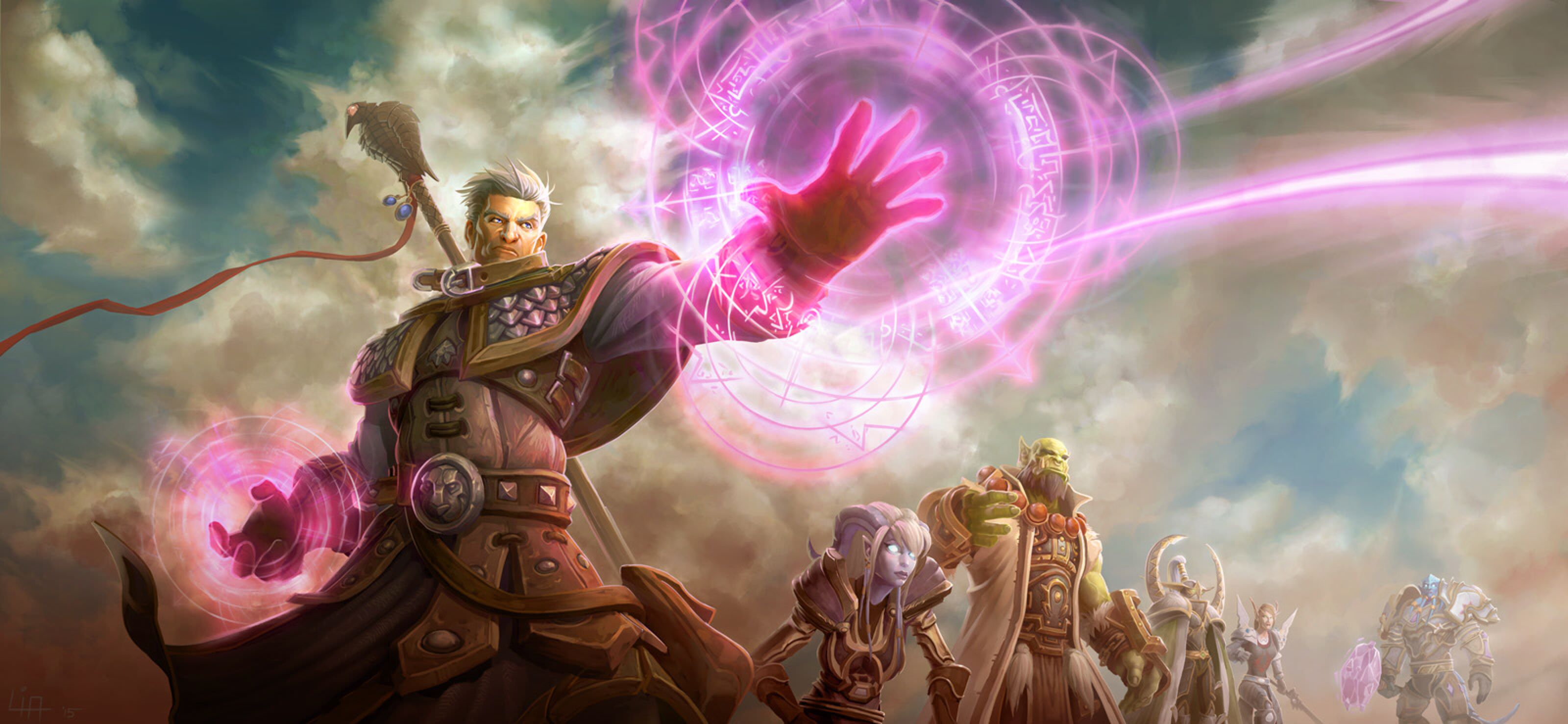

Empowered Evocation
Starting at 10th level, you can add your Intelligence modi-fier to damage rolls of any mage evocation spell you cast.
Hot Streak
At 14th level, the blazing energy of your spells intensifies. When you roll damage for a spell and roll the highest number possible on any of the dice, choose one of those dice, roll it again and add that roll to the damage. You can use the feature only once per turn.
Study of Frost
Frost mages stand apart from their colleagues, in that their chosen school of magic focuses on maintaining supreme control over the capabilities of their enemies. Mages who command frost perform chilling displays on the battlefield, rendering foes immobile as they bombard them with ice.
Conjuration Savant
Beginning when you select this tradition at 2nd level, the gold and time you must spend to copy a conjuration spell into your spellbook is halved.
Cold Snap
Starting at 2nd level, whenever you hit a creature with a spell that deals cold damage, the target must succeed on a Constitution saving throw or have its speed reduced by 10 feet for 1 minute. In addition to any movement reduction the spell might have normally.
Ice Barrier
At 6th level, you can manifest ice around a creature to protective it from harm, warping with the creature to not prevent movement.. As a bonus action, ice forms around a creature you can see within 60 feet of you. The creature gains resistance to bludgeoning, piercing, and slashing from nonmagical attacks for 1 minute, until you use this feature again, or until you are incapacitated.
You can use this feature twice. You regain expended uses when you finish a long rest.
Frigid Winds
Starting at 10th level, you gain resistance to cold damage. In addition, whenever you cast a spell of 1st level or higher that deals cold damage, frigid winds surround you. This wind shivers creatures of your choice within 10 feet of you, making them lose their reaction until their next turn.
This feature have no effect on creatures that are immune to cold damage.
Ice Familiar
At 14th level, you learn the find familiar spell if you don't already know it, and you cast it without providing material components. The familiar you summon is made of ice, and have immunity to cold damage.
As an action, you can transform the familiar into an ice elemental, as by the conjure elemental spell, its duration becomes 1 minute, and if you lose your concentration the elemental returns to being your familiar.
You can use this feature even if you don't have a familiar summoned, conjuring an ice elemental in an empty space within 30 feet of you. Once the feature ends, the elemental transforms into your familiar.
Your ice elemental uses the water elemental statistics with the following changes.
- It is immune to cold damage
- It deals slashing damage instead of bludgeoning.
- It can cast the sleet storm spell once.
Once you use this feature, you can't use it again until you finish a long rest.
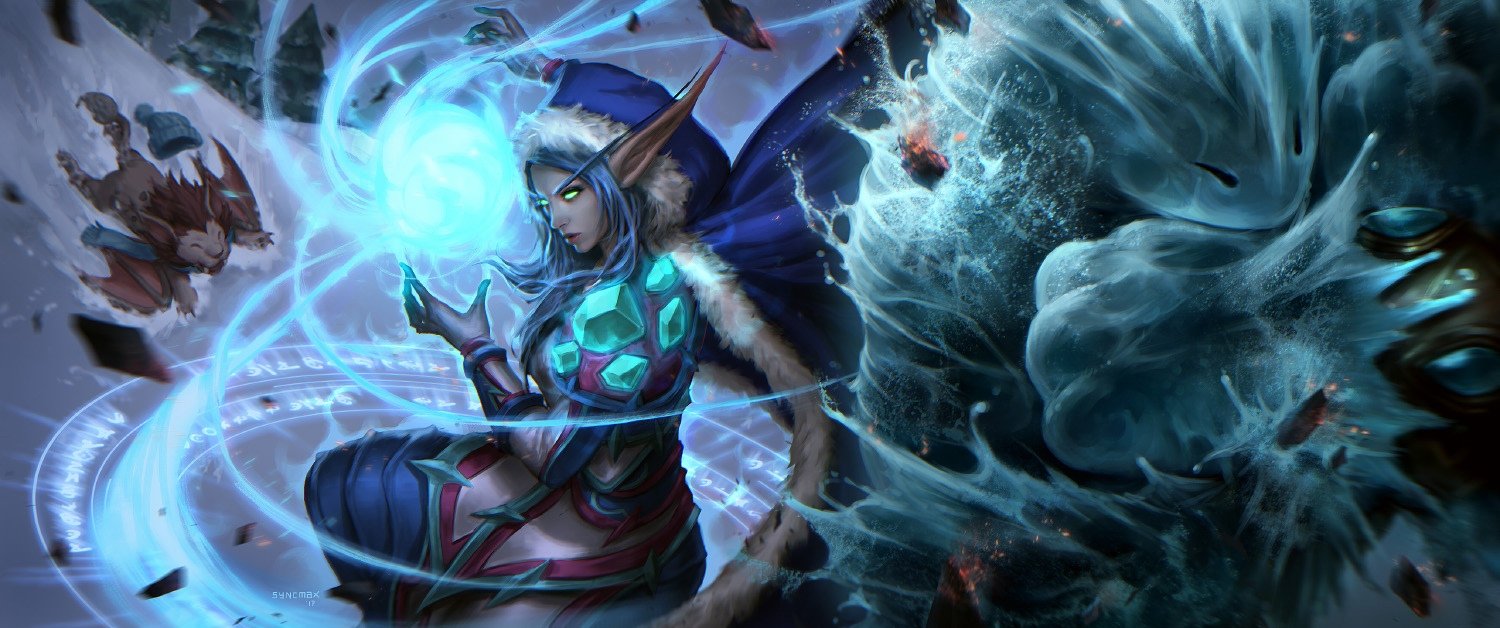

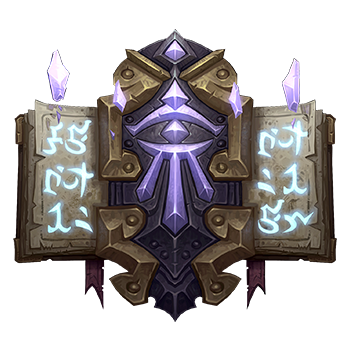
Monk
To ask why we fight... is to ask why the leaves fall. It is in their nature. Perhaps, there is a better question. Why do we fight? To protect Home, and Family... To preserve Balance, and bring Harmony.
— Chen Stormstout
Taking a deep breath, an orc clad in loose clothes fastens his footings. As the first charging arcs reach him, he ex-hales a cone of fire from his mouth, engulfing his foes.
A gnome standing behind her allies as attacks clash down upon them. She focuses her chi, manifesting a statue of pure jade, as she sends a beam of chi towards her ally, soothing their wounds.
A tauren springs over a barricade and throws herself into the massed ranks of gnolls on the other side. She whirls among them, knocking their blows aside and sending them reeling, until at last she stands alone.
Whatever their discipline, monks are united in their ability to magically harness the energy that flows in their bodies. Whether channeled as a striking display of combat prowess or a subtler focus of defensive ability and speed, this energy infuses all that a monk does.
The Flow of Chi
Monks make careful study of the magical energy they call chi. The pandaren word for 'spirit', they use the energy of their inner spirit, that flows through every living body. Monks harness this power within themselves to create magical effects and exceed their bodies' physical capabili-ties. Using this energy, monks channel uncanny speed and strength into their unarmed strikes, as they gain experi-ence, their training and their mastery of chi gives them more power over their bodies and the bodies of their foes.
Training and Asceticism
Small walled cloisters dot the world, tiny refuges from the flow of ordinary life, where time seems to stand still. The monks who live there seek personal perfection through contemplation and rigorous training. Many entered the monastery as children, sent to live there when their parents died, when food couldn't be found to support them, or in return for some kindness that the monks had performed for their families.
Some monks live entirely apart from the surrounding population, secluded from anything that might impede their spiritual progress. Others are sworn to isolation, emerging only to serve as spies or assassins at the command of their leader, a noble patron, or other mortal or divine power.
The majority of monks don't shun their neighbors, making frequent visits to nearby towns or villages and exchanging their service for food and other goods. As versatile warriors, monks often end up protecting their neighbors from monsters or tyrants.
For a monk, becoming an adventurer means leaving a structured, communal lifes to become a wanderer. This can be a harsh transition, and monks don't undertake it lightly.


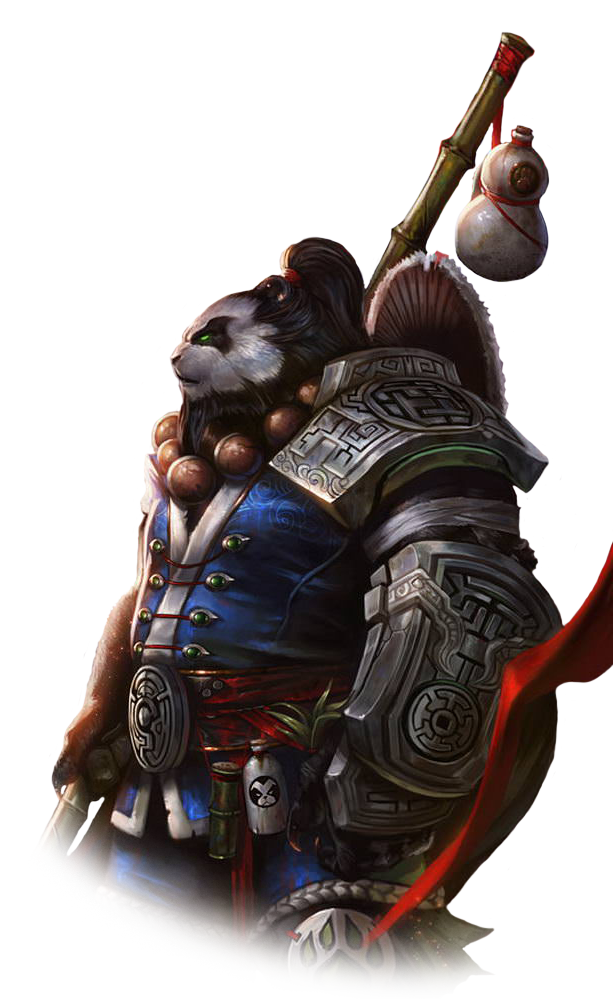
The Monk
| Level | Proficiency Bonus |
Martial Arts |
Chi Points |
Unarmored Movement |
Features | ||||
|---|---|---|---|---|---|---|---|---|---|
| 1st | +2 | 1d4 | — | — | Unarmored Defense, Martial Arts | ||||
| 2nd | +2 | 1d4 | 2 | +10 ft. | Chi, Unarmored Movement | ||||
| 3rd | +2 | 1d4 | 3 | +10 ft. | Monastic Tradition, Roll | ||||
| 4th | +2 | 1d4 | 4 | +10 ft. | Ability Score Improvement | ||||
| 5th | +3 | 1d6 | 5 | +10 ft. | Extra Attack, Stunning Palm | ||||
| 6th | +3 | 1d6 | 6 | +15 ft. | Monastic Tradition feature, Chi-Empowered Strikes | ||||
| 7th | +3 | 1d6 | 7 | +15 ft. | Evasion, Detox | ||||
| 8th | +3 | 1d6 | 8 | +15 ft. | Ability Score Improvement | ||||
| 9th | +4 | 1d6 | 9 | +15 ft. | — | ||||
| 10th | +4 | 1d6 | 10 | +20 ft. | Mystic Vitality | ||||
| 11th | +4 | 1d8 | 11 | +20 ft. | Monastic Tradition feature | ||||
| 12th | +4 | 1d8 | 12 | +20 ft. | Ability Score Improvement | ||||
| 13th | +5 | 1d8 | 13 | +20 ft. | Transcendence | ||||
| 14th | +5 | 1d8 | 14 | +25 ft. | Zen Focus | ||||
| 15th | +5 | 1d8 | 15 | +25 ft. | Timeless Body | ||||
| 16th | +5 | 1d8 | 16 | +25 ft. | Ability Score Improvement | ||||
| 17th | +6 | 1d10 | 17 | +25 ft. | Monastic Tradition feature | ||||
| 18th | +6 | 1d10 | 18 | +30 ft. | Transcendence Improvement | ||||
| 19th | +6 | 1d10 | 19 | +30 ft. | Ability Score Improvement | ||||
| 20th | +6 | 1d10 | 20 | +30 ft. | Inner Self |
Creating a Monk
As you make your monk character, think about your connection to the monastery where you learned your skills and spent your formative years. Were you an orphan or a child left on the monastery's threshold? Did your parents promise you to the monastery in gratitude for a service performed by the monks? Did you enter this secluded life to hide from a crime you committed? Or did you choose the monastic life for yourself?
Consider why you left. Did the head of your monastery choose you for a particularly important mission beyond the cloister? Perhaps you were cast out because of some violation of the community's rules. Did you dread leaving, or were you happy to go? Is there something you hope to accomplish outside the monastery? Arc you eager to return to your home? As a result of the structured life of a monastic community and the discipline required to harness chi, monks are almost always lawful in alignment.
Quick Build
You can make a monk quickly by following these sugges-tions. First, make Dexterity your highest ability score, followed by Wisdom. (Mistweaving monks make their Wisdom higher than Dexterity).
Class Features
As a monk, you gain the following class features.
Hit Points
- Hit Dice: 1d8 per monk level
- Hit Points at 1st Level: 8 + your Constitution modifier
- Hit Points at Higher Levels: 1d8 + your Constitution modifier per monk level after 1st
Proficiencies
- Armor: Light armor
- Weapons: Simple weapons, shortswords
- Tools: Choose one type of artisan's tools or one musical instrument
- Saving Throws: Strength, Dexterity
- Skills: Choose two from Acrobatics, Athletics, History, Insight, Religion, and Stealth
Equipment
You start with the following equipment, in addition to the equipment granted by your background:
- (a) a shortsword or (b) any simple weapon
- (a) a dungeoneer's pack or (b) an explorer's pack
- 10 darts

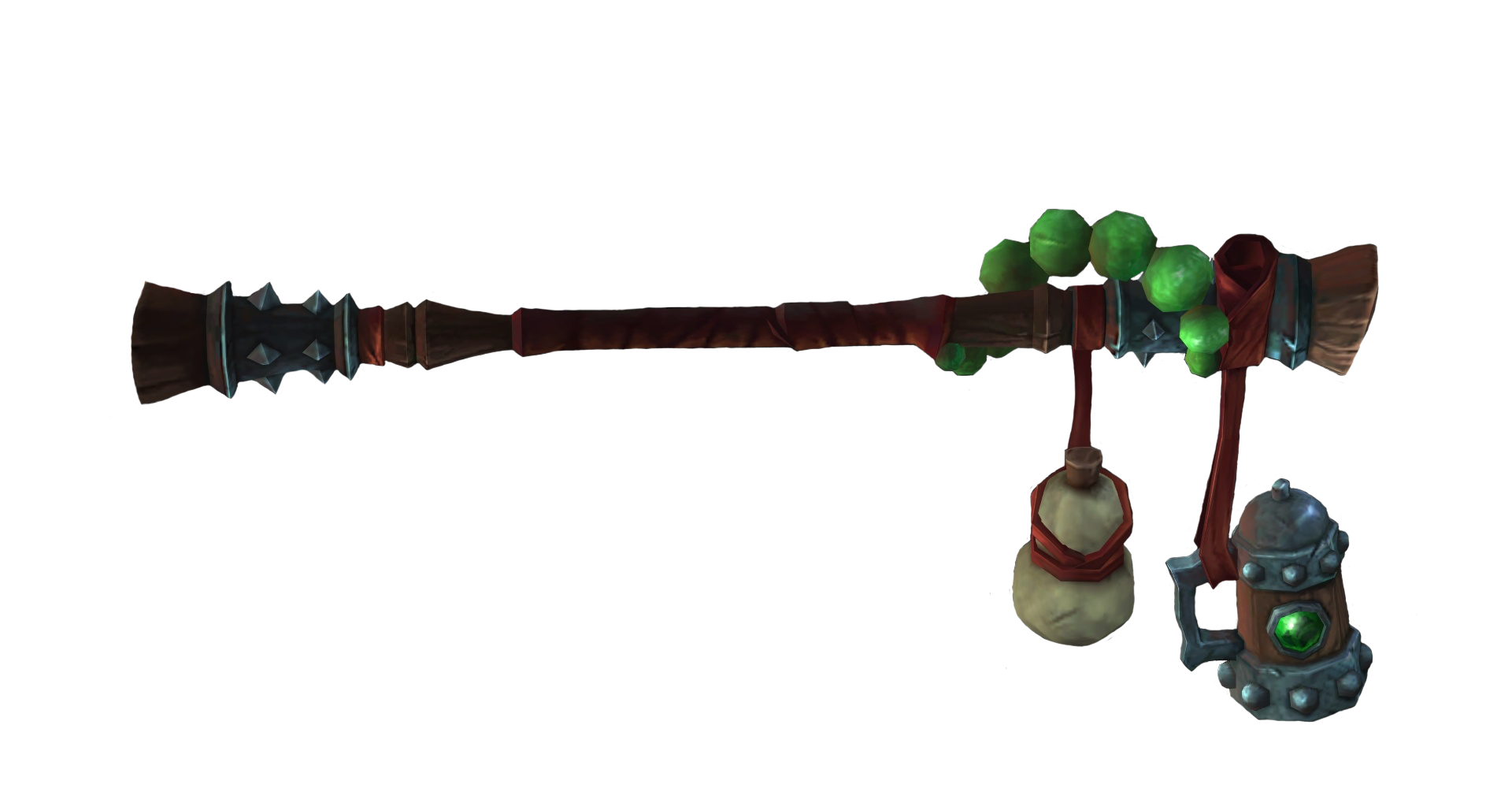
Unarmored Defense
Beginning at 1st level, while you are wearing no armor and not wielding a shield, your AC equals 10 + your Dexterity modifier + your Wisdom modifier.
Martial Arts
At 1st level, your practice of martial arts gives you mastery of combat styles that use unarmed strikes and monk weapons, which are shortswords and any simple melee weapons that don't have the two-handed or heavy property.
You gain the following benefits while you are unarmed or wielding only monk weapons and you aren't wearing mail or plate armor or wielding a shield:
- You can use Dexterity instead of Strength for the attack and damage rolls of your unarmed strikes and weapons.
- You can roll a d4 in place of the normal damage of your unarmed strike or monk weapon. This die changes as you gain monk levels, as shown in the Martial Arts column of the Monk table.
- When you use the Attack action with an unarmed strike or a monk weapon on your turn, you can make one unarmed strike as a bonus action. For example, if you take the Attack action and attack with a quarterstaff, you can also make an unarmed strike as a bonus action.
Chi
Starting at 2nd level, your training allows you to harness the mystic energy of chi. Your access to this energy is represented by a number of chi points. Your monk level determines the number of points you have, as shown in the Chi Points column of the Monk table.
You can spend these points to fuel various chi features. You start knowing four such features: Flurry of Blows, Patient Defense, Step of the Wind, and Surging Mist. You learn more chi features as you gain levels in this class.
When you spend a chi point, it is unavailable until you finish a short or long rest, at the end of which you draw all of your expended chi back into yourself. You must spend 30 minutes of the rest meditating to regain your chi points.
Some of your chi features require your target to make a saving throw to resist the feature's effects. The saving throw DC is calculated as follows:
Chi save DC = 8 + your proficiency bonus +
your Wisdom modifier
Fists of Fury
Immediately after you take the Attack action on your turn, you can spend 1 chi point to make two unarmed strikes as a bonus action.
Elusive Dance
You can spend 1 chi point to take the Dodge action as a bonus action on your turn.
Step of the Wind
You can spend 1 chi point to take the Disengage or Dash action as a bonus action on your turn, and your jump distance is doubled for the turn.
Effuse
You can spend chi points and use your bonus action to touch a creature within range. The creature regains hit points equal to 1d4 + 1 for each chi point you spent, to a maximum of 4d4 + 4.
Unarmored Movement
Starting at 2nd level, your speed increases by 10 feet while you are not wearing armor or wielding a shield. This bonus increases when you reach certain monk levels, as shown in the Monk table.
Monastic Tradition
When you reach 3rd level, you commit yourself to a monastic tradition: the Way of the Brewmaster, the Way of the Mistweaver, or the Way of the Windwalker, all detailed at the end of the class description. Your tradition grants you features at 3rd level and again at 6th. 11th, and 17th level.
Roll
At 3rd level, you are able to tumble across the battlefield when you are not wearing armor or wielding a shield. Using your bonus action, you can tumble 10 feet in a straight line without expending movement, giving opportunity attacks against you disadvantage.
Once you use this feature, you can't use it again until you move 0 feet on one of your turns.
Ability Score Improvement
When you reach 4th level, and again at 8th, 12th, 16th, and 19th level, you can increase one ability score of your choice by 2, or you can increase two ability scores of your choice by 1. As normal, you can't increase an ability score above 20 using this feature.
Extra Attack
Beginning at 5th level, you can attack twice, instead of once, whenever you take the Attack action on your turn.
Stunning Palm
Starting at 5th level, you can interfere with the flow of chi in an opponent's body. Once per turn when you hit another creature with a melee weapon attack, you can spend 1 chi point to attempt a stunning strike. The target must succeed on a Constitution saving throw or be stunned until the end of your next turn.
Chi-Empowered Strikes
Starting at 6th level, your unarmed strikes count as magical for the purpose of overcoming resistance and immunity to nonmagical attacks and damage.
Evasion
At 7th level, your instinctive agility lets you dodge out of the way of certain area effects, such as a blue dragon's frost breath or a fireball spell. When you are subjected to an effect that allows you to make a Dexterity saving throw to take only half damage, you instead take no damage if you succeed on the saving throw, and half damage if you fail.
Detox
Starting at 7th level, you can use an action to end one effect on yourself that is causing you to be charmed or frightened.
Mystic Vitality
Beginning at 10th level, your mastery of the chi flowing through you makes you immune to disease and poison.

Transcendence
At 13th level, you can use your action and spend 1 chi point to summon an incorporeal jade visage of yourself in your space, the visage doesn't move and appears to be in deep meditation. It stays for 1 minute before vanishing.
While you are within 60 feet of the visage, you can use your bonus action to change position with it, teleporting you to the space you summoned it in. Once done, the visage vanishes.
Upon reaching 18th level, your visage stays for 1 hour before vanishing, and its range increases to 1 mile.
Zen Focus
Beginning at 14th level, your mastery over chi grants you proficiency in all saving throws.
Additionally, whenever you make a saving throw and fail, you can spend 1 chi point to reroll it and use the new roll.
Timeless Body
At 15th level, your chi sustains you so that you suffer none of the frailty of old age, and you can't he aged magically. You can still die of old age, however. In addition, you no longer need food or water.
Inner Self
At 20th level, when you roll for initiative and have no chi points remaining, you regain 4 chi points.
Monastic Traditions
Three traditions of monastic pursuit were common in the monasteries scattered across Pandaria. Most monasteries practice one tradition exclusively, sending out monks to teach their ways throughout Azeroth. All three traditions rely on the same basic techniques, diverging as the student grows more adept.
Way of the Brewmaster
Brewmasters are often quirky and joyful, many would think them merely as fools that enjoy a drink to bring gladness to the despondent or to demonstrate humility to the arrogant, but when battle is joined, the brewmaster can be a madden-ing, masterful foe.
Bonus Proficiency
When you choose this monastery at 3rd level, you gain pro-ficiency with brewer's supplies if you don't already have it.
Stagger
At 3rd level, you are able to shrug off attacks made against you. You can use your reaction upon taking damage to give yourself resistance to all damage dealt by the attack, except psychic damage.
You can use this feature twice. You regain expended uses when you finish a short or long rest.
Elusive Brawler
Starting at 6th level, you can move in sudden, swaying ways. You gain the following benefits.
Leap to Your Feet. When you're prone, you can stand up by spend 5 feet of movement, rather than half your speed.
Redirect Attack. When a creature misses you with a melee attack roll, you can spend 1 chi point as a reaction to cause that attack to hit one creature of your choice, other than the attacker, that you can see within 5 feet of you.
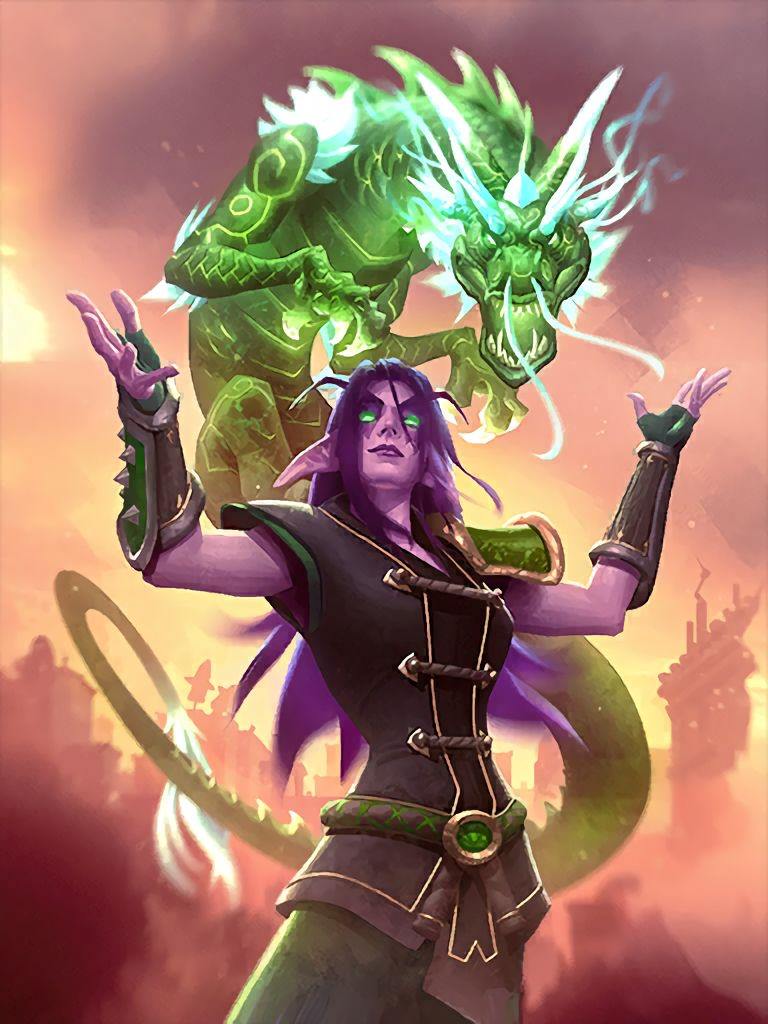

Black Ox Brew
Starting at 11th level, when you make an ability check, an attack roll, or a saving throw and have disadvantage on the roll, you can spend 2 chi points to cancel the disadvantage for that roll.
High Tolerance
At 17th level, you are capable of shrugging of immense pain like it was nothing. Whenever you use your Stagger feature, you gain immunity to all damage except psychic.
Way of the Mistweaver
Mistweavers are unique among those who heal, they channel mysterious energy. Those who weave the mists wield the power of life’s essence, using a mixture of preven-tative and restorative spells to mend their allies’ wounds.
Soothing Mist
At 3rd level, you have a pool of healing chi that replenishes when you take a long rest. With that pool, you can restore a total number of hit points equal to your monk level x 10.
As an action, you can manifest a beam of chi towards a creature within 30 feet of you and draw power from the pool to restore a number of hit points to that creature, up to the maximum amount remaining in your pool.
Alternatively, you can expend 5 hit points from your pool of healing to cure the target of one disease or neutralize one poison affecting it. You can cure multiple diseases and neutralize multiple poisons with a single use of Soothing Mist, expending hit pointss separately for each one.
This feature has no effect on constructs.
Mistwalk
Starting at 6th level, you are able to teleport short distances through mist. As an action, you can spend 1 chi point and teleport 60 feet to an unoccupied space you can see. As part of the same action you can use your soothing mist on a target within range of your new position.
Reawaken
Upon reaching 11th level, you are able to manifest your chi to reawaken a creature that has fallen. As an action, you can expend 4 chi points to cast revivify without providing a material component. You must then finish a long rest to cast revivify again in this way.
Statue of the Jade Serpent
At 17th level, you can give your chi physical form, shaping it into a statue of Yu'lon the Jade Serpent. You can spend 3 chi points as an action, and choose an empty space within 30 feet of you, manifesting a statue of jade.
The statue has hit points equal to twice your monk level, resistance to all damage, and immunity to psychic and poison damage. Whenever you use your Soothing Mist feature, you may choose a second target within 60 feet of the jade statue to be healed for half of the hit points you restore.
The statue remains for 1 minute or until it is destroyed.
Way of the Windwalker
Among monks, none have mastered the martial arts as the windwalkers have, and few across Azeroth can fight with their grace. Windwalkers possess unparalleled physical finesse, and are capable of overwhelming their enemies with a dizzying flurry of punches and kicks.
Winds Technique
Starting at 3rd level, you can manipulate your enemy's chi when you harness your own. Whenever you hit a creature with one of the attacks granted by your Fists of Fury, you can impose one of the following effects on that target:
- It must succeed on a Dexterity saving throw or be knocked prone.
- It must make a Strength saving throw. If it fails, you can push it up to 15 feet away from you.
- It can't take reactions until the end of your next turn.
Windwalking
Starting at 6th level, you gain the ability to channel your chi into enhancing your own body. As an action, you can spend 4 chi points to cast the haste spell on yourself without pro-viding a material component.
In addition, you can use your reaction when you fall to reduce any falling damage you take by an amount equal to twice your monk level.
Unpredictable Strikes
Upon reaching at 11th level, whenever you make an oppor-tunity attack, you may spend 1 chi point to use your Fists of Fury feature against the target instead.
Touch of Death
At 17th level, when you hit with an unarmed strike, you can spend 3 chi points to transfer a deadly stream of chi into their body. The target must make a Constitution saving throw. Taking 7d8 + 20 psychic damage on a failed save, or half as much damage on a successful one.
Once you have used this feature, you can't use it again until you have finished a long rest.
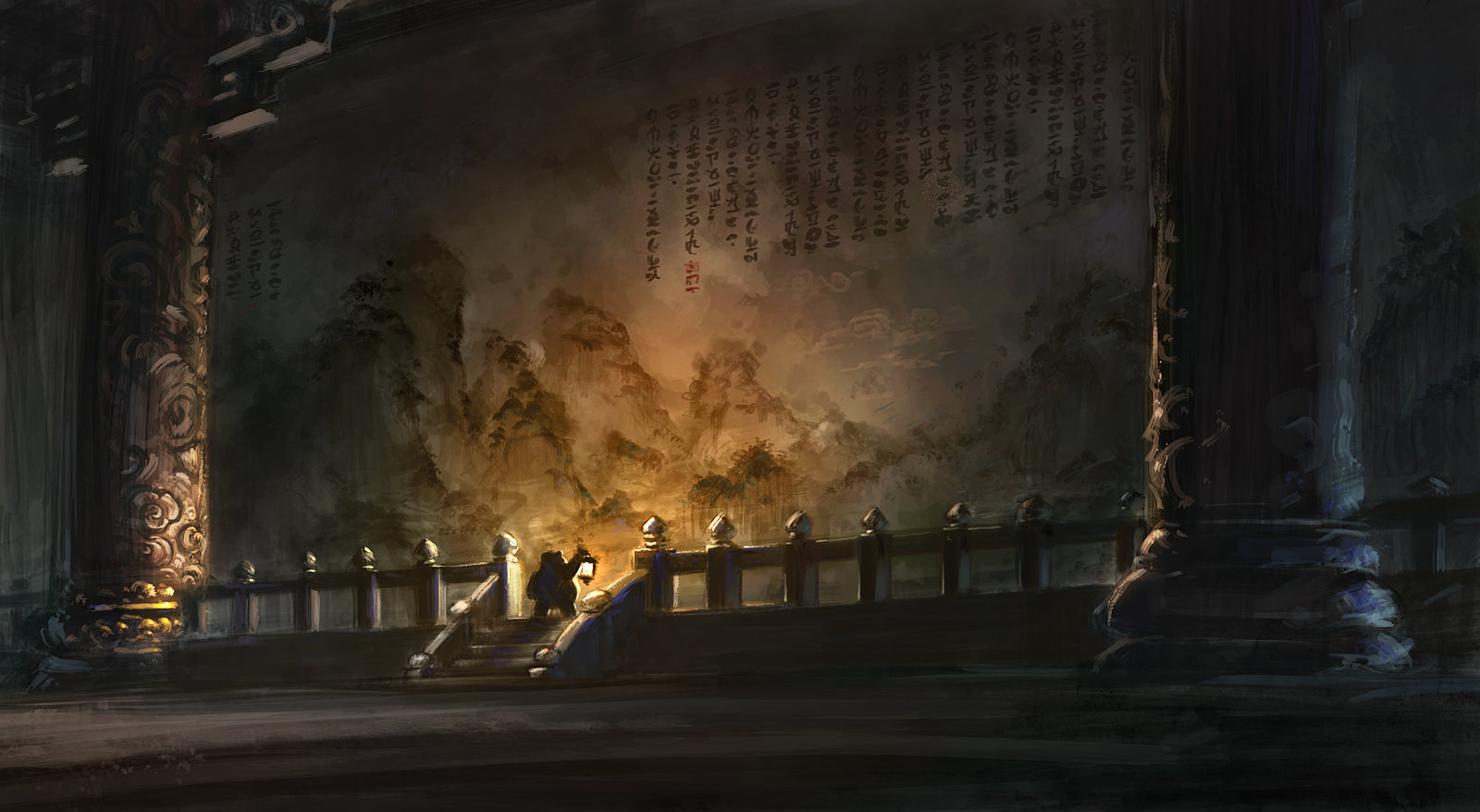

Paladin
Vengeance cannot be a part of what we must do. If we allow our passions to turn to bloodlust, then we will become as vile as the orcs.
— Uther the Lightbringer
Clad in plate armor that gleams in the sunlight despite the dust and grime of long travel, a human lays down her sword and shield and places her hands on a mortally wounded man. Divine radiance shines from her hands, the man's wounds knit closed, and his eyes open wide with amazement.
A dwarf crouches behind an outcrop, his black cloak making him nearly invisible in the night, and watches an orc war band celebrating its recent victory. Silently, he stalks into their midst and whispers an oath, and two orcs are dead before they even realize he is there.
Silver hair shining in a shaft of light that seems to illuminate only him, a blood elf laughs with exultation. His spear flashes like his eyes as he jabs again and again at a twisted giant, until at last his light overcomes its hideous darkness.
Whatever their origin and their mission, paladins are united by the light to stand against the forces of evil. It is a source of power that turns a devout warrior into a blessed champion.
Paladins Call
This is the call of the paladin: to protect the weak, to bring justice to the unjust, and to vanquish evil from the darkest corners of the world. These holy warriors are equipped with plate armor so they can confront the toughest of foes, and the blessing of the Light allows them to heal wounds and, in some cases, even restore life to the dead. Ready to serve, paladins can defend their allies with sword and shield, or they can wield massive two-handed weapons against their enemies. The Light grants paladins additional power against the undead and demons, ensuring that these profane beings corrupt the world no longer.
Paladins are not only zealots, but also guardians of the righteous, and they bestow blessings on those the Light would shine upon. The Light radiates from paladins, and worthy allies who stand near them are emboldened by its power.
Beyond the Mundane Life
Almost by definition, the life of a paladin is an adventuring life. Unless a lasting injury has taken him or her away from adventuring for a time, every paladin lives on the front lines of the cosmic struggle against evil. Fighters are rare enough among the ranks of the militias and armies of the world, but even fewer people can claim the true calling of a paladin. When they do receive the call, these warriors turn from their former occupations and take up arms to fight evil. Sometimes their oaths lead them into the service of the crown as leaders of elite groups of knights, but even then their loyalty is first to the cause of righteousness, not to crown and country.
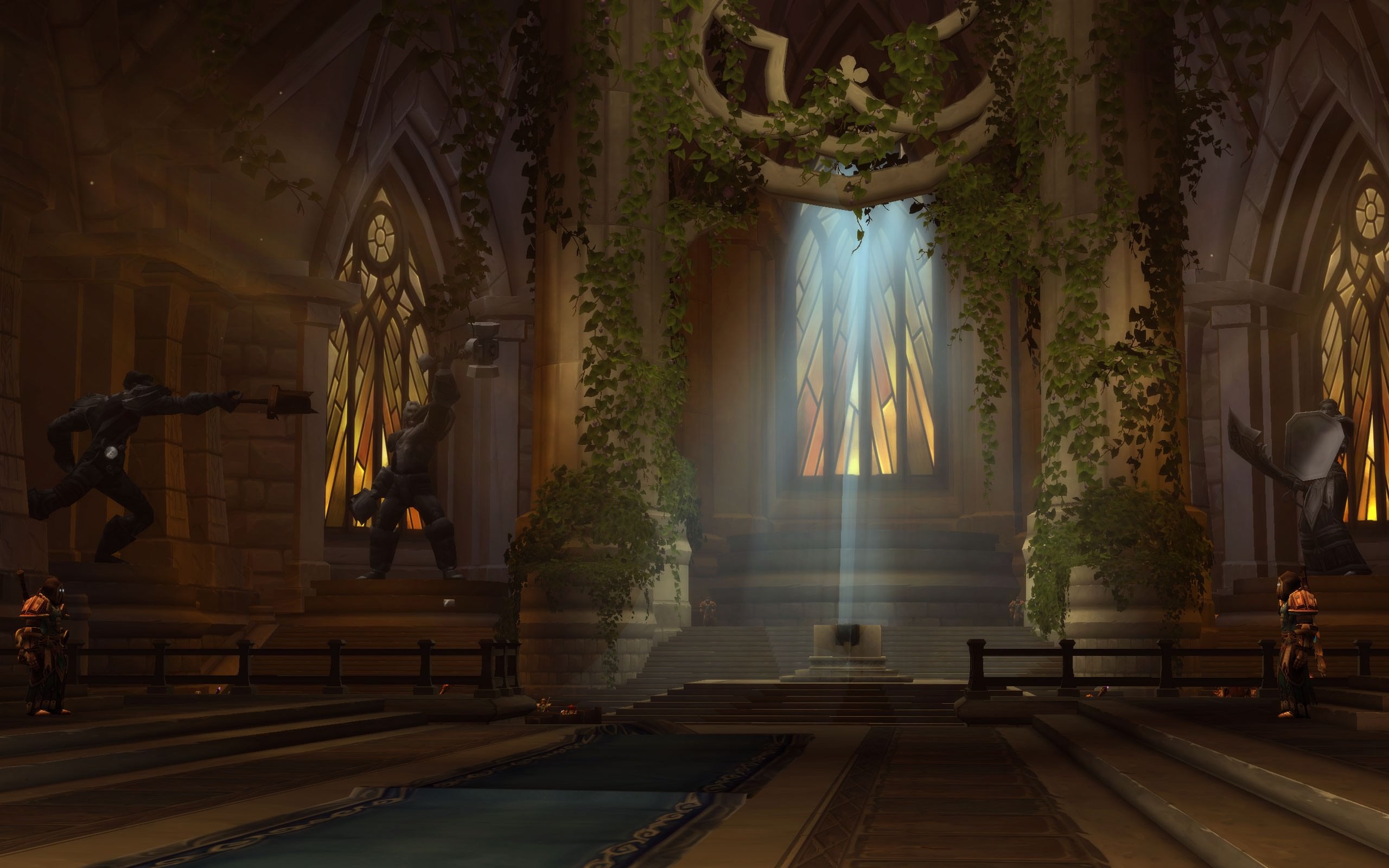

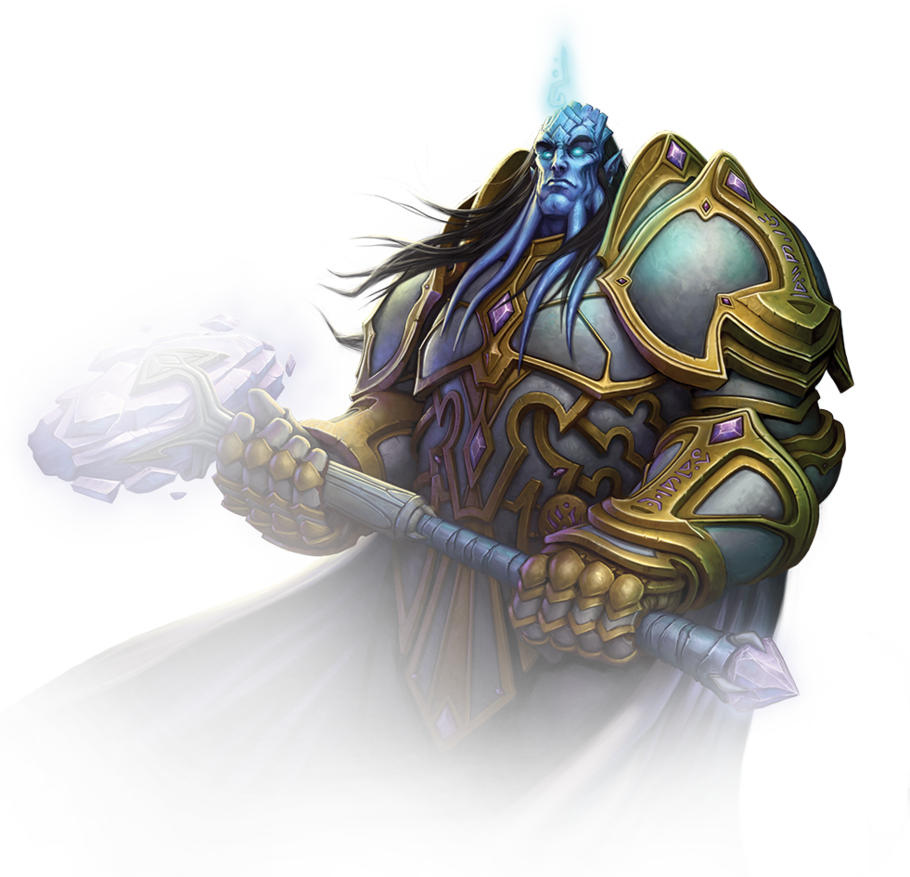
The Paladin
| Level | Proficiency Bonus |
Features | 1st | 2nd | 3rd | 4th | 5th | ||||
|---|---|---|---|---|---|---|---|---|---|---|---|
| 1st | +2 | Divine Sense, Lay on Hands | — | — | — | — | — | ||||
| 2nd | +2 | Fighting Style, Spellcasting, Crusader Strike | 2 | — | — | — | — | ||||
| 3rd | +2 | Sacred Oath, Divine Aura (1/rest) | 3 | — | — | — | — | ||||
| 4th | +2 | Ability Score Improvement | 3 | — | — | — | — | ||||
| 5th | +3 | Extra Attack | 4 | 2 | — | — | — | ||||
| 6th | +3 | Divine Aura (2/rest) | 4 | 2 | — | — | — | ||||
| 7th | +3 | Sacred Oath feature | 4 | 3 | — | — | — | ||||
| 8th | +3 | Ability Score Improvement | 4 | 3 | — | — | — | ||||
| 9th | +4 | — | 4 | 3 | 2 | — | — | ||||
| 10th | +4 | Divine Aura (3/rest) | 4 | 3 | 2 | — | — | ||||
| 11th | +4 | Improved Crusader Strike | 4 | 3 | 3 | — | — | ||||
| 12th | +4 | Ability Score Improvement | 4 | 3 | 3 | — | — | ||||
| 13th | +5 | — | 4 | 3 | 3 | 1 | — | ||||
| 14th | +5 | Cleansing Touch, Divine Aura (4/rest) | 4 | 3 | 3 | 1 | — | ||||
| 15th | +5 | Sacred Oath feature | 4 | 3 | 3 | 2 | — | ||||
| 16th | +5 | Ability Score Improvement | 4 | 3 | 3 | 2 | — | ||||
| 17th | +6 | Divine Aura (5/rest) | 4 | 3 | 3 | 3 | 1 | ||||
| 18th | +6 | Divine Aura Improvement | 4 | 3 | 3 | 3 | 1 | ||||
| 19th | +6 | Ability Score Improvement | 4 | 3 | 3 | 3 | 2 | ||||
| 20th | +6 | Sacred Oath feature | 4 | 3 | 3 | 3 | 2 |
Adventuring paladins take their work seriously. A delve into an ancient ruin or dusty crypt can be a quest driven by a higher purpose than the acquisition of treasure. Evil lurks in dungeons and primeval forests, and even the smallest victory against it can tilt the cosmic balance away from oblivion.
Creating a Paladin
The most important aspect of a paladin character is the nature of his or her holy quest. Although the class features related to your oath don't appear until you reach 3rd level, plan ahead for that choice by reading the oath descriptions at the end of the class. Are you a devoted servant of good, loyal to the light, justice and honor, a holy knight in shining armor venturing forth to smite evil? Or are you a glorious champion of the light, cherishing everything beautiful that stands against the shadow?
How did you experience your call to serve as a paladin? Did you hear a whisper from the light while you were at prayer? Did another paladin sense the potential within you and decide to train you as a squire? Or did some terrible event drive you to your quests? Perhaps you stumbled into a sacred grove or a hidden elven enclave and found yourself called to protect all such refuges of goodness and beauty. Or you might have known from your earliest memories that the paladin's life was your calling.
As guardians against the forces of wickedness, paladins are rarely of any evil alignment. Most of them walk the paths of charity and justice.
Quick Build
You can make a paladin quickly by following these sugges-tions. First, Strength should be your highest ability score, followed by Charisma. (Paladins who strive to please the holy light and heal their allies make Constitution higher than Strength.)
Class Features
As a paladin, you gain the following class features.
Hit Points
- Hit Dice: 1d10 per paladin level
- Hit Points at 1st Level: 10 + your Constitution modifier
- Hit Points at Higher Levels: 1d10 + your Constitution modifier per paladin level after 1st
Proficiencies
- Armor: All armor, shields
- Weapons: Simple weapons, martial weapons
- Tools: None
- Saving Throws: Wisdom, Charisma
- Skills: Choose two from Athletics, Insight, Intimidation, Medicine, Persuasion, and Religion

Equipment
You start with the following equipment, in addition to the equipment granted by your background:
- (a) a greatsword or (b) any martial weapon
- (a) a priest's pack or (b) an explorer's pack
- Chain mail, shield and a holy symbol
Divine Sense
The presence of strong evil registers on your senses like a noxious odor, and powerful good rings like heavenly music in your ears. As an action, you can open your awareness to detect such forces. Until the end of your next turn, you know the location of any celestial, fiend, or undead within 60 feet of you that is not behind total cover. You know the type (celestial, fiend, or undead) of any being whose presence you sense, but not its identity (the demon Illidan Stormrage, for instance). Within the same radius, you also detect the presence of any place or object that has been consecrated or desecrated, as with the hallow spell.
You can use this feature a number of times equal to 1 + your Charisma modifier. When you finish a long rest, you regain all expended uses.
Lay on Hands
Your blessed touch can heal wounds. You have a pool of healing power that replenishes when you take a long rest. With that pool, you can restore a total number of hit points equal to your paladin level x 5,
As an action, you can touch a creature and draw power from the pool to restore a number of hit points to that crea-ture, up to the maximum amount remaining in your pool.
Alternatively, you can expend 5 hit points from your pool of healing to cure the target of one disease or neutralize one poison affecting it. You can cure multiple diseases and neutralize multiple poisons with a single use of Lay on Hands, expending hit points separately for each one.
This feature has no effect on undead and constructs.
Fighting Style
At 2nd level, you adopt a style of fighting as your specialty. Choose one of the following options. You can't take a Fighting Style option more than once, even if you later get to choose again.
Defense
While you are wearing armor, you gain a +1 bonus to AC.
Dueling
When you are wielding a melee weapon in one hand and no other weapons, you gain a +2 bonus to damage rolls with that weapon.
Great Weapon Fighting
When you roll a 1 or 2 on a damage die for an attack you make with a melee weapon that you are wielding with two hands, you can reroll the die and must use the new roll. The weapon must have the two-handed or versatile property for you to gain this benefit.
Protection
When a creature you can see attacks a target other than you that is within 5 feet of you, you can use your reaction to impose disadvantage on the attack roll. You must be wielding a shield.
Spellcasting
By 2nd level, you have learned to draw on divine magic through meditation and prayer to cast spells as a priest does. See chapter 10 of the Player's Handbook for the general rules of spelicasting and chapter 6 of this book for the paladin spell list.
Preparing and Casting Spells
The Paladin table shows how many spell slots you have to cast your spells. To cast one of your paladin spells of 1st level or higher, you must expend a slot of the spell's level or higher. You regain all expended spell slots when you finish a long rest.
You prepare the list of paladin spells that are available for you to cast, choosing from the paladin spell list. When you do so, choose a number of paladin spells equal to your Charisma modifier + half your paladin level, rounded down (minimum of one spell). The spells must be of a level for which you have spell slots.
For example, if you are a 5th-level paladin, you have four 1st-level and two 2nd-level spell slots. With a Charisma of 14, your list of prepared spells can include four spells of 1st or 2nd level, in any combination. If you prepare the 1st-level spell cure wounds, you can cast it using a 1st-level or a 2nd-level slot. Casting the spell doesn't remove it from your list of prepared spells.
You can change your list of prepared spells when you finish a long rest. Preparing a new list of paladin spells requires time spent in prayer and meditation: at least 1 minute per spell level for each spell on your list.
Spellcasting Ability
Charisma is your spellcasting ability for your paladin spells, since their power derives from the strength of your convic-tions. You use your Charisma whenever a spell refers to your spellcasting ability. In addition, you use your Charisma modifier when setting the saving throw DC for a paladin spell you cast and when making an attack roll with one.
Spell save DC = 8 + your proficiency bonus +
your Charisma modifier
Spell attack modifier = your proficiency bonus +
your Charisma modifier
Spellcasting Focus
You can use a holy symbol as a spellcasting focus for your paladin spells.
Crusader Strike
Starting at 2nd level, when you hit a creature with a melee weapon attack, you can expend a spell slot to deal radiant damage to the target, in addition to the weapon's damage. The extra damage is 2d8 for a 1st-level spell slot, plus 1d8 for each spell level higher than 1st, to a maximum of 5d8. Crusader Strikes damage increases by 1d8 if the target is an undead or a fiend.
Sacred Oath
When you reach 3rd level, you swear the oath that binds you as a paladin forever. Up to this time you have been in a preparatory stage, committed to the path but not yet sworn to it. Now you choose the Oath of the Holy, the Oath of Protection, or the Oath of Retribution, all detailed at the end of the class description.

Your choice grants you features at 3rd level and again at 7th, 15th, and 20th level. Those features include oath spells and the Channel Divinity feature.
Oath Spells
Each oath has a list of associated spells. You gain access to these spells at the levels specified in the oath description. Once you gain access to an oath spell, you always have it prepared. Oath spells don't count against the number of spells you can prepare each day.
If you gain an oath spell that doesn't appear on the pala-din spell list, the spell is nonetheless a paladin spell for you.
Channel Divinity
Your oath allows you to channel divine energy to fuel magical effects. Each Channel Divinity option provided by your oath explains how to use it.
When you use your Channel Divinity, you choose which option to use. You must then finish a short or long rest to use your Channel Divinity again.
Some Channel Divinity effects require saving throws. When you use such an effect from this class, the DC equals your paladin spell save DC.
Divine Auras
Upon reaching 3rd level, you are able to emit your divinity onto creatures within 10 feet of you as divine auras.
As an action you active a divine aura, choosing which effect to create, you can only have one aura active at a time. The aura persists for 1 hour before vanishing. You must then finish a long rest to use a Divine Aura again.
Beginning at 6th level, you can use your Divine Aura twice between rests, and you gain an additional use at 10th, 14th, and 17th level. When you finish a long rest, you regain your expended uses.
At 18th level, the range of your aura increases to 30 feet.
Aura of Courage
You and friendly creatures can't be charmed or frightened.
Aura of Devotion
Whenever you or a friendly creature must make a saving throw, the creature gains a bonus to their saving throw equal to your Charisma modifier (minimum of 1).
Aura of Protection
Whenever you or a friendly creature is hit by a weapon attack, its damage is reduced by an amount equal to your Charisma modifier. Damage can't be reduced below 1.
Aura of Resistance
You and friendly creatures within range have resistance to damage from spells.
Aura of the Crusader
Whenever you or a friendly creature hits with a weapon attack, their attack deals extra radiant damage equal to your Charisma modifier (minimum of 1).
Ability Score Improvement
When you reach 4th level, and again at 8th, 12th, 16th, and 19th level, you can increase one ability score of your choice by 2, or you can increase two ability scores of your choice by 1. As normal, you can't increase an ability score above 20 using this feature.
Extra Attack
Beginning at 5th level, you can attack twice, instead of once, whenever you take the Attack action on your turn.
Improved Crusader Strike
By 11th level, you are so suffused with righteous might that all your melee weapon strikes carry divine power with them. Whenever you hit a creature with a melee weapon, the creature takes an extra 1d8 radiant damage. If you also use your Crusader Strike with an attack, you add this damage to the extra damage of your Crusader Strike.
Cleansing Touch
Beginning at 14th level, you can use your action to end one spell on yourself or on one willing creature that you touch.
You can use this feature a number of times equal to your Charisma modifier (a minimum of one), regaining expend-ed uses when you finish a long rest.
Sacred Oath
Becoming a paladin involves taking vows that commit the paladin to the cause of righteousness, an active path of fighting wickedness. The final oath, taken when he or she reaches 3rd level, is the culmination of all the paladin's training. Some characters with this class don't consider themselves true paladins until they have reached 3rd level and made this oath. For others, the actual swearing of the oath is a formality, an official stamp on what has always been true in the paladin's heart.
Oath of the Holy
Like priests who serve the Light, holy paladins are devout in their faith. Those who pledge themselves to the holy oath becomes beacons of the Light for their allies in conflict, taking up the heavy armor and weaponry of justice.
Oath Spells
You gain oath spells at the paladin levels listed.
Oath of the Holy Spells
| Paladin Level | Spells |
|---|---|
| 3rd | protection from evil and good, sanctuary |
| 5th | lesser restoration, zone of truth |
| 9th | beacon of hope, revivify |
| 13th | death ward, guardian of faith |
| 17th | holy weapon, mass cure wounds |



Channel Divinity
When you take this oath at 3rd level, you gain the following two Channel Divinity options.
Light of Dawn. As an action, you present the holy light and release a burst of radiant healing that can restore a number of hit points equal to three times your paladin level. Choose any creatures within 30 feet of you, and divide those hit points among them. This feature can restore a creature to no more than half of its hit point maximum.
You can't use this feature on an undead or construct.
Light's Hammer. As an action, you slam a divine maul into the ground at a point within 30 feet of you, causing the ground to erupt in holy light in a 10-ft radius. Any ally within range is healed equal to your paladin level, and all enemies within range must make a Constitution saving throw, taking your paladin level in radiant damage on a failed save, and half as much on a successful one.
Soothing Hand
Beginning at 7th level, you are able to use your Lay on Hands on targets that are within 30 feet of you, instead of requiring to touch them.
Divine Shield
Starting at 15th level, when you are reduced to 0 hit points and are not killed outright, you can choose to drop to 1 hit point instead. Once you use this ability, you can't use it again until you finish a long rest.
Lightbringer
At 20th level, you can envelope your body in the warmth of the holy light, making your skin shine a bright golden light. Using your action, you undergo a transformation. For 1 minute, you gain the following benefits:
- Whenever you cast a paladin spell that has a casting time of 1 action, you can cast it using your bonus action.
- Enemy creatures within 10 feet of you have disadvan-tage on saving throws against your paladin spells and Channel Divinity options.
- You shine bright light in a 20-ft radius around you, and dim light for an additional 20 feet.
Once you use this feature, you can't use it again until you finish a long rest.
Oath of Protection
Stalwart and steadfast, these protectors are ardent defen-ders of the Light and all that it touches, and are rejuvenated by its radiance in return. Dedicated to their cause, they con-secrate the very ground upon which they battle corruption.
Oath Spells
You gain oath spells at the paladin levels listed.
Oath of Protection Spells
| Paladin Level | Spells |
|---|---|
| 3rd | sanctuary, shield of faith |
| 5th | branding smite, warding bond |
| 9th | aura of vitality, life transference |
| 13th | aura of purity, death ward |
| 17th | banishing smite, reincarnate |
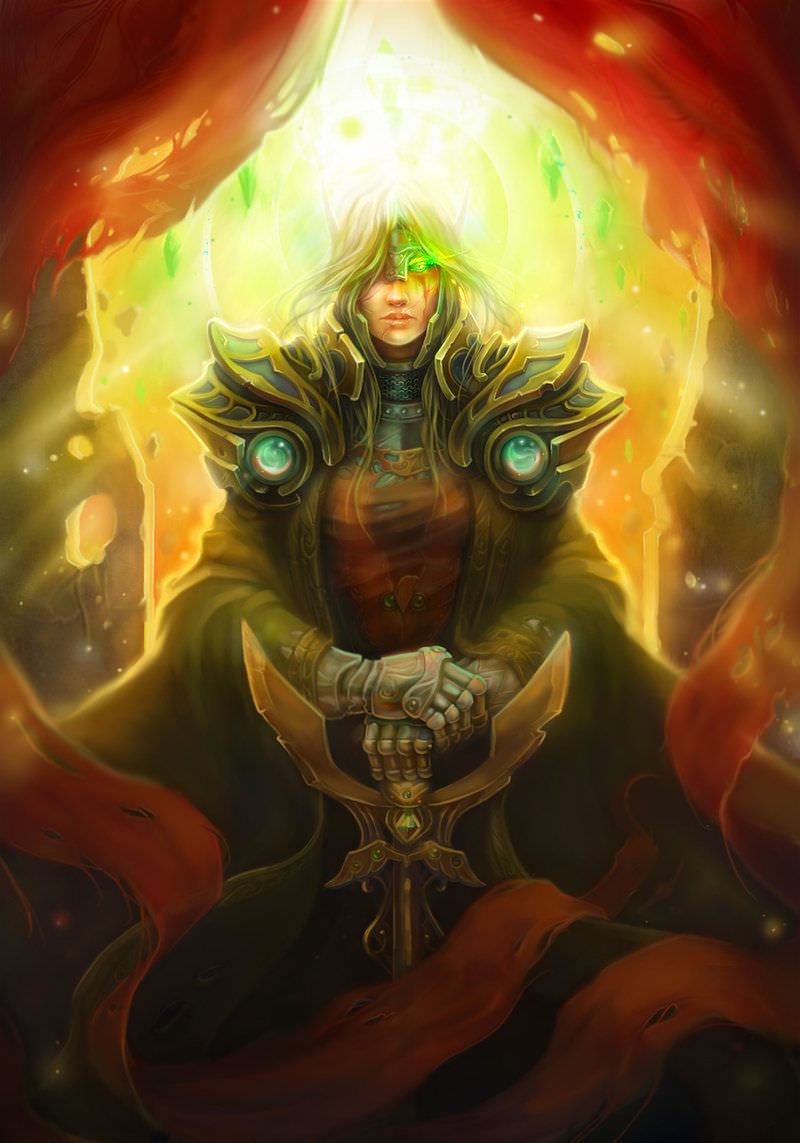

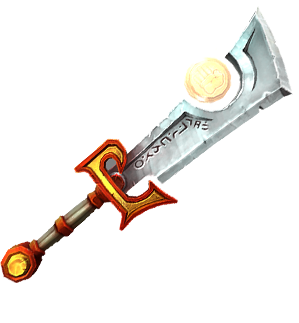
Channel Divinity
When you take this oath at 3rd level, you gain the following two Channel Divinity options.
Avenger's Shield. As an action, you can toss a radiant copy of a wielded shield against a target within 60 feet of you as part of the same action. The target must make a Constitution saving throw. On a failed save, the target takes radiant damage equal to your paladin level, or half as much damage on a successful one. If the target is concentrating on a spell, their check made to keep concentration is made with disadvantage.
Consecration. As an action, you consecrate the land around you. Each creature of your choice that you can see within 30 feet of you must make a Wisdom saving throw. On a failed save, a creature can't willingly move more than 30 feet away from you. This effect ends on the creature if you are incapacitated or die, or if the creature is moved more than 30 feet away from you.
Holy Shield
Starting at 7th level, when a creature within 5 feet of you takes damage, you can use your reaction to magically substitute your own health for that of the target creature, causing that creature not to take the damage. Instead, you take the damage. This damage to you can't be reduced or prevented in any way.
Guarded by the Light
At 15th level, the holy light mends your wounds in battle. You regain hit points equal to 1d6 + half your paladin level if you end your turn in combat with fewer than half of your hit points remaining and you aren't incapacitated.
Ardent Defender
At 20th level, you armor is replaced by heavy plates of divine energy, your presence on the field of battle becoming an inspiration to those around you. Using your action, you undergo a transformation. For 1 minute, you gain the following benefits:
- You have resistance to all damage.
- Your allies have advantage on death saving throws while within 30 feet of you.
- You have advantage on Wisdom saving throws, as do your allies within 30 feet of you.
Once you use this feature, you can't use it again until you finish a long rest.
Oath of Retribution
Retribution paladins are vengeful guardians of the weak, crusaders judging and punishing the wicked. Their resolute conviction in the divine order of all things assures them that victory is inevitable, but they will fight to the end to ensure that the Light prevails.
Oath Spells
You gain oath spells at the paladin levels listed.
Oath of Retribution Spells
| Paladin Level | Spells |
|---|---|
| 3rd | compelled duel, searing smite |
| 5th | flame blade, magic weapon |
| 9th | binding smite, holy wrath |
| 13th | banishment, staggering smite |
| 17th | destructive wave, dispel evil and good |
Channel Divinity
When you take this oath at 3rd level, you gain the following two Channel Divinity options.
Templar's Verdict. As a bonus action, you can utter a verdict against a creature you can see within 10 feet of you. You gain advantage on attack rolls against the creature for 1 minute, until it drops to 0 hit points or falls unconscious.
Weapon of Justice. As an action, you slam a divine weapon down upon an enemy within 30 feet, the target must succeed a Constitution saving throw, or be stunned for a number of rounds equal to your Charisma modifier, or until it takes damage. The target makes another saving throw at the end of each of its turns, ending the sun on a successful save.
Divine Weapon
Upon reaching 7th level, your weapon attacks count as magical for the purpose of overcoming resistance and immunity to nonmagical attacks and damage.
Relentless Avenger
Starting at 15th level, when a creature under the effect of your Templar's Verdict makes an attack, you can use your reaction to make a melee weapon attack against the creature if it is within range.
Divine Judgement
At 20th level, you gain the ability to harness extraordinary martial prowess. Using your action, you undergo a trans-formation. For 1 minute, you gain the following benefits:
- You have resistance to bludgeoning, piercing, and slashing from nonmagical weapons.
- When you take the Attack action on your turn, you can make one additional attack as part of that action.
- Your melee weapon attacks score a critical hit on a roll of 19 or 20 on the d20.
Once you use this feature, you can't use it again until you finish a long rest.
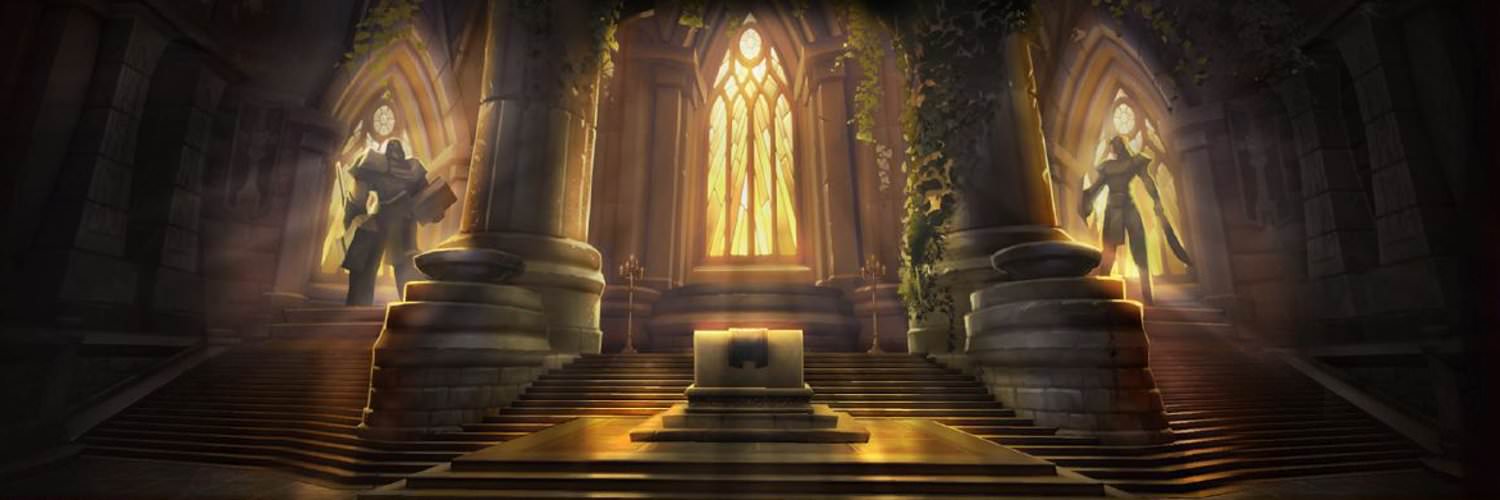

Priest
It is faith in ourselves that separates us from others, and with our powers, we will cause great change in all of Azeroth. The weak will come to lean on you. The lepers will call you Lord. And the ignorant will look to you for guidance.
— Dark Cleric Duesten
Bend down over her falling ally, a dwarf clutches her holy symbol, and begins to sing a slow melodic tune, holy light shining from her hand, covering her allies limp body.
Kneeling on the ground, one hand firmly grasping a staff, the other filled with swirls of divine and necrotic energies. A human raises, and sends out a thick halo of light and dark energy out around him, his allies gaining new life, his enemies feeling the rush of necrotic through their bodies.
A forsaken, surrounded in voidic energy pulls his holy symbol from his neck as void covers his body. Tentacles sprouting from his back, as he sends out a laughter, spew-ing bolts of necrotic energy towards enemies and allies.
Priests are the bridge between light and dark, they are the wielders of the warmth holy light of the divine, and the voidic magic granted by the old gods. They serve as protectors, healers, and casters of insanity.w
Invokers of Light and Darkness
Priests are devoted to the spiritual, and express their unwavering faith by serving the people. For millennia they have left behind the confines of their temples and the comfort of their shrines so they can support their allies in war-torn lands. In the midst of terrible conflict, no hero questions the value of the priestly orders. These masters of the healing arts keep their companions fighting far beyond their normal capacities with an array of restorative powers and blessings. The divine forces at the priest’s command can also be turned against foes.
As light cannot exist without darkness, and darkness without light, some priests tap into shadow to better understand their own abilities, as well as the abilities of those who threaten them.
Devoted Acolytes
Priests practice a complex, organized form of spirituality built around moral philosophy, the worship of a particular deity (such as Elune) in some cases, and/or idol worship, rather than around the reverence of the elements that shamans practice, or the close divine connection with animals and the wilderness that druids maintain. Priests serve not only as influential religious figures in their respective societies, but also as powerful practitioners of divine magic, which they use to heal and protect, or harm and weaken.
Devotion to the faiths of Azeroth leads many priests to the paths of courage and heroism. In dark times, priests carry the Light of faith with them as a reminder of the powerful forces at work beyond the comprehension of the peoples who walk the land. Powerful healers with an intimate connection to the divine, priests are empowered with abilities that aid them in times of dire need.
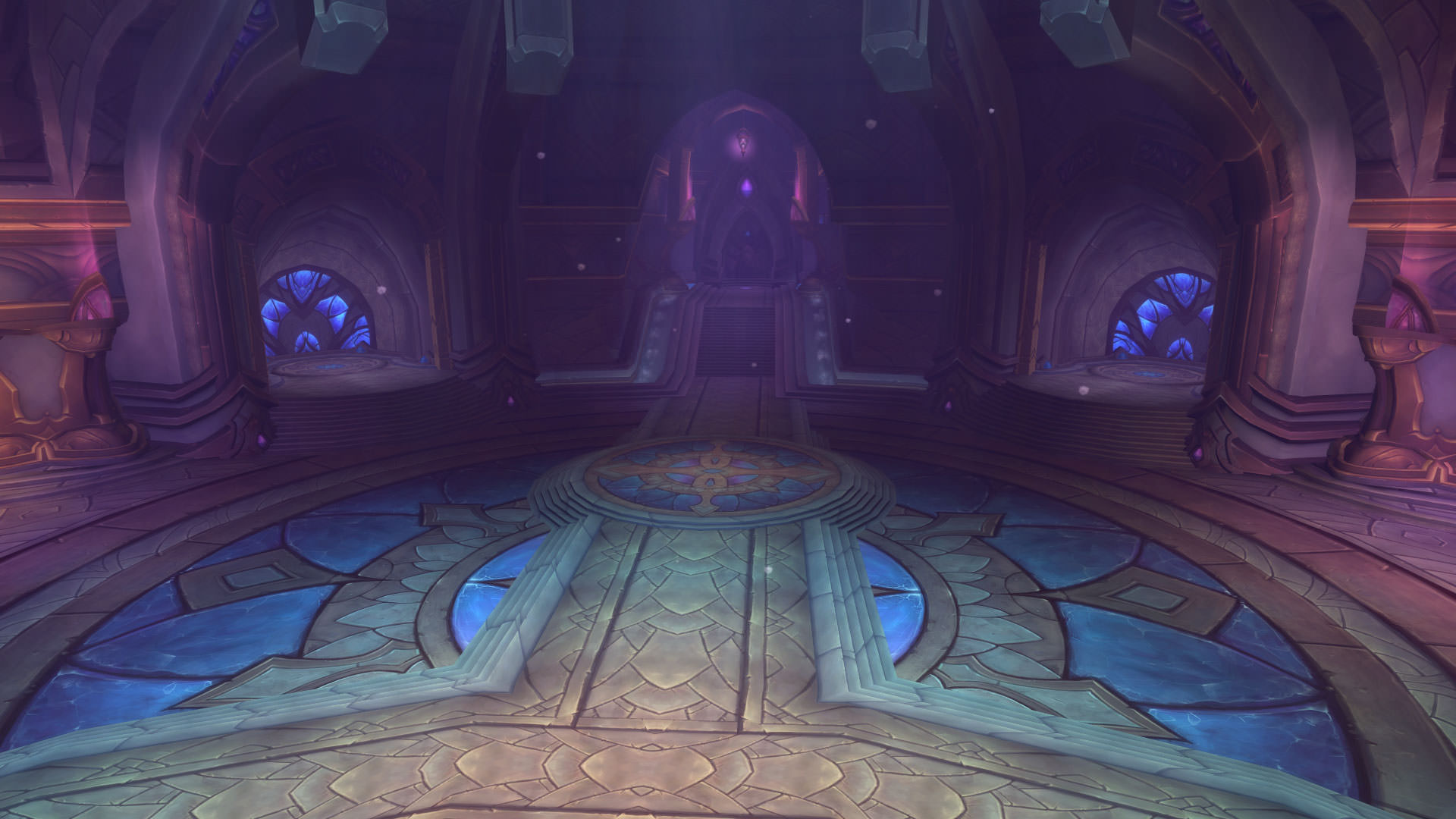

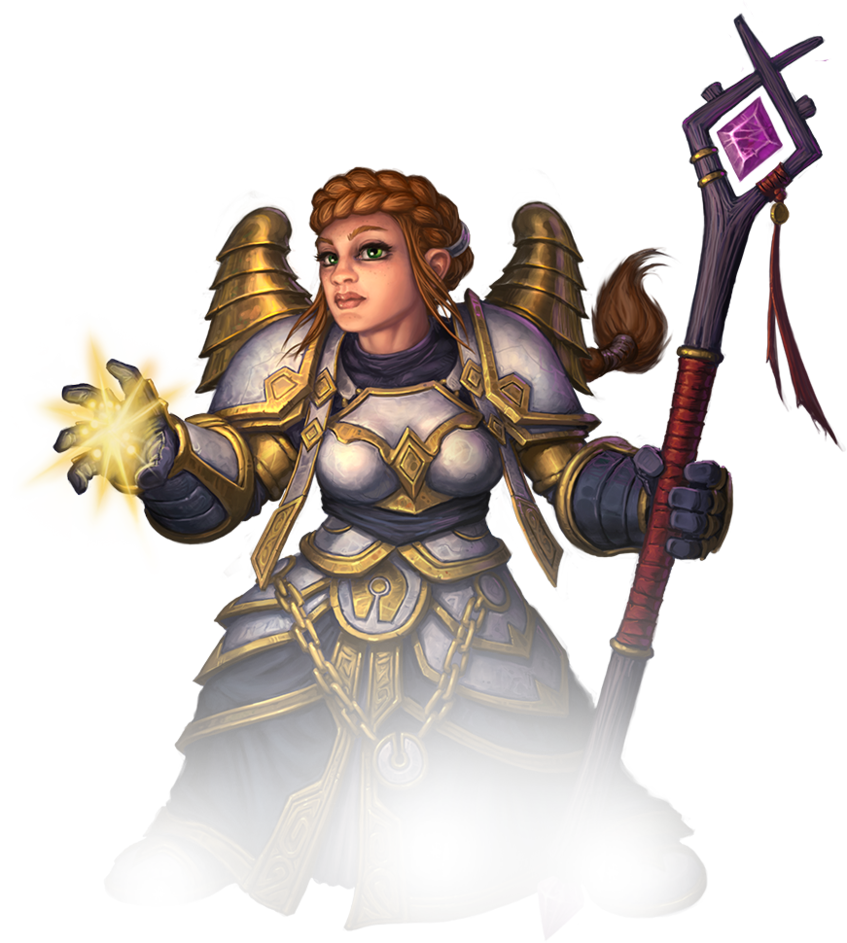
The Priest
| Level | Proficiency Bonus |
Light Points |
Features | Cantrips Known |
1st | 2nd | 3rd | 4th | 5th | 6th | 7th | 8th | 9th | ||||||||||
|---|---|---|---|---|---|---|---|---|---|---|---|---|---|---|---|---|---|---|---|---|---|---|---|
| 1st | +2 | — | Spellcasting, Divine Priesthood | 3 | 2 | — | — | — | — | — | — | — | — | ||||||||||
| 2nd | +2 | 2 | Channel Divinity (1/rest), Divine Priesthood feature, Lightwell | 3 | 3 | — | — | — | — | — | — | — | — | ||||||||||
| 3rd | +2 | 3 | Word of Power | 3 | 4 | 2 | — | — | — | — | — | — | — | ||||||||||
| 4th | +2 | 4 | Ability Score Improvement | 4 | 4 | 3 | — | — | — | — | — | — | — | ||||||||||
| 5th | +3 | 5 | — | 4 | 4 | 3 | 2 | — | — | — | — | — | — | ||||||||||
| 6th | +3 | 6 | Channel Divinity (2/rest), Divine Priesthood feature | 4 | 4 | 3 | 3 | — | — | — | — | — | — | ||||||||||
| 7th | +3 | 7 | — | 4 | 4 | 3 | 3 | 1 | — | — | — | — | — | ||||||||||
| 8th | +3 | 8 | Ability Score Improvement, Divine Priesthood feature | 4 | 4 | 3 | 3 | 2 | — | — | — | — | — | ||||||||||
| 9th | +4 | 9 | — | 4 | 4 | 3 | 3 | 3 | 1 | — | — | — | — | ||||||||||
| 10th | +4 | 10 | Divine Intervention, Word of Power | 5 | 4 | 3 | 3 | 3 | 2 | — | — | — | — | ||||||||||
| 11th | +4 | 11 | — | 5 | 4 | 3 | 3 | 3 | 2 | 1 | — | — | — | ||||||||||
| 12th | +4 | 12 | Ability Score Improvement | 5 | 4 | 3 | 3 | 3 | 2 | 1 | — | — | — | ||||||||||
| 13th | +5 | 13 | — | 5 | 4 | 3 | 3 | 3 | 2 | 1 | 1 | — | — | ||||||||||
| 14th | +5 | 14 | Word of Power | 5 | 4 | 3 | 3 | 3 | 2 | 1 | 1 | — | — | ||||||||||
| 15th | +5 | 15 | — | 5 | 4 | 3 | 3 | 3 | 2 | 1 | 1 | 1 | — | ||||||||||
| 16th | +5 | 16 | Ability Score Improvement | 5 | 4 | 3 | 3 | 3 | 2 | 1 | 1 | 1 | — | ||||||||||
| 17th | +6 | 17 | Divine Priesthood feature, Word of Power | 5 | 4 | 3 | 3 | 3 | 2 | 1 | 1 | 1 | 1 | ||||||||||
| 18th | +6 | 18 | Channel Divinity (3/rest) | 5 | 4 | 3 | 3 | 3 | 3 | 1 | 1 | 1 | 1 | ||||||||||
| 19th | +6 | 19 | Ability Score Improvement | 5 | 4 | 3 | 3 | 3 | 3 | 2 | 1 | 1 | 1 | ||||||||||
| 20th | +6 | 20 | Divine Intervention improvement | 5 | 4 | 3 | 3 | 3 | 3 | 2 | 2 | 1 | 1 |
Creating a Priest
Are you a devoted servant of good, loyal to the holy light?, a disciplined priest, in beautiful robes, monitoring a sept? or are you an unholy priest of shadows, fallen either by choice or forcefully towards the necrotic arts?
How did you enter priesthood? Were you raised in a mo-nastery? Did you hear a whisper from the light itself telling you to serve it? Or did a terrible war force you to take up the warmth of the holy light to assist your allies? Perhaps you might have known from your earliest memories that the priest's life was your calling, almost as if you had been sent into the world with that purpose stamped on your soul.
As guardians against forces of wickedness and evil, priests are rarely of any evil alignment. Most of them walk the paths of charity and soothing, or did you never feel the warmth of the holy light, and instead felt the calling of the old gods? their voidic magic wrapping around you, making your actions chaotic?
Quick Build
You can make a priest quickly by following these sugges-tions. First. Wisdom should be your highest ability score, followed by Constitution.
Class Features
As a priest, you gain the following class features.
Hit Points
- Hit Dice: 1d6 per priest level
- Hit Points at 1st Level: 6 + your Constitution modifier
- Hit Points at Higher Levels: 1d6 + your Constitution modifier per priest level after 1st
Proficiencies
- Armor: None
- Weapons: All simple weapons
- Tools: Healer's Kit
- Saving Throws: Wisdom, Charisma
- Skills: Choose two from History, Insight, Medicine, Persuasion, and Religion
Equipment
You start with the following equipment, in addition to the equipment granted by your background:
- (a) a mace or (b) a quarterstaff
- (a) a priest's pack or (b) an explorer's pack
- a holy symbol, and two daggers

Spellcasting
As a conduit for divine power. you can cast priest spells. See chapter 10 of the Player's Handbook for the general rules of spellcasting and chapter 6 of this book for the priest spell list.
Cantrips
At 1st level, you know three cantrips of your choice from the priest spell list. You learn additional priest cantrips of your choice at higher levels, as shown in the Cantrips Known column of the Priest table.
Preparing and Casting Spells
The Priest table shows how many spell slots you have to cast your spells of 1st level and higher. To cast one of these spells, you must expend a slot of the spell's level or higher. You regain expended spell slots when you finish a long rest.
You prepare the list of priest spells that are available for you to cast, choosing from the priest spell list. When you do so, choose a number of priest spells equal to your Wisdom modifier + your priest level (minimum of one spell). The spells must be of a level for which you have spell slots.
For example, if you are a 3rd-level priest, you have four 1st-level and two 2nd-level spell slots. With a Wisdom of 16, your list of prepared spells can include six spells of 1st or 2nd level, in any combination. If you prepare the 1st-level spell flash heal, you can cast it using a 1st-level or 2nd-level slot. Casting the spell doesn't remove it from your list of prepared spells.
You can change your list of prepared spells when you finish a long rest. Preparing a new list of priest spells requires time spent in prayer and meditation: at least 1 minute per spell level for each spell on your list.
Spellcasting Ability
Wisdom is your spellcasting ability for your priest spells. The power of your spells comes from the light. You use your Wisdom whenever a priest spell refers to your spell-casting ability. In addition, you use your Wisdom modifier when setting the saving throw DC for a priest spell you cast and when making an attack roll with one.
Spell save DC = 8 + your proficiency bonus +
your Wisdom modifier
Spell attack modifier = your proficiency bonus +
your Wisdom modifier
Ritual Casting
You can cast a priest spell as a ritual if that spell has the ritual tag and you have the spell prepared.
Spellcasting Focus
You can use a holy symbol as a spellcasting focus for your priest spells.
Divine Priesthood
Choose a divine priesthood: Discipline, Holy, or Shadow. Each priesthood is detailed at the end of the class descrip-tion. Your choice grants you spells and other features when you choose it at 1st level. It also grants you additional ways to use Channel Divinity when you gain that feature at 2nd level, and additional benefits at 6th, 8th, and 17th levels.
Priesthood Spells
Each priesthood has a list of spells that you gain at the priest levels noted in the priesthood description.
Once you gain a priesthood spell, you always have it pre-pared, and it doesn't count against the number of spells you can prepare each day.
If you have a priesthood spell that doesn't appear on the priest spell list, the spell is considered a priest spell for you.
Channel Divinity
At 2nd level, you gain the ability to channel divine energy directly from the holy light, using that energy to fuel magical effects. You start with two such effects: Shackle Undead and an effect determined by your priesthood.
When you use your Channel Divinity, you choose which effect to create. You must then finish a short or long rest to use your Channel Divinity again.
Some Channel Divinity effects require saving throws. When you use such an effect from this class, the DC equals your priest spell save DC.
Beginning at 6th level, you can use your Channel Divinity twice between rests, and beginning at 18th level, you can use it three times between rests. When you finish a short or long rest, you regain your expended uses.
Channel Divinity: Shackle Undead
As an action, you present your holy symbol and speak a prayer censuring the undead. Each undead that can see or hear you within 30 feet of you must make a Wisdom saving throw. If the creature fails its saving throw, it is stunned for 1 minute or until it takes any damage.
Lightwell
Also at 2nd level, you tap into a deep wellspring of divine energy within yourself. This wellspring is represented by light points, which allow you to create magical effects.
Light Points
You have 2 light points, and you gain more as you reach higher levels, as shown in the Light Points column of the Priest table. You can never have more light points than shown on the table for your level. You regain all spent light points when you finish a long rest.
Flexible Casting
You can use your light points to gain additional spell slots, or sacrifice spell slots to gain additional light points. You learn other ways to use your light points as you reach higher levels.
Creating Spell Slots. You can transform unexpended light points into one spell slot as a bonus action on your turn. The Creating Spell Slots table shows the cost of creating a spell slot of a given level. You can create spell slots no higher in level than 5th.
Creating Spell Slots
| Spell Slot Level | Light Point Cost | |||||||||||||
|---|---|---|---|---|---|---|---|---|---|---|---|---|---|---|
| 1st | 2 | |||||||||||||
| 2nd | 3 | |||||||||||||
| 3rd | 5 | |||||||||||||
| 4th | 6 | |||||||||||||
| 5th | 7 |
Converting a Spell Slot to Light Points. As a bonus action on your turn, you can expend one spell slot and gain a number of light points equal to the slot's level.

Word of Power
Starting at 3rd level, you gain the ability to speak words of power to envelope your allies or harm a creature. You learn two of the following Word of Power options of your choice. You learn another word at 10th, 14th, and 17th level.
Speaking a word of power requires an action unless otherwise specified. You can only have one Word of Power active at a time, and can dismiss an active word as a bonus action on your turn.
Barrier
You can spend 2 light points and choose a creature within 30 feet of you, the chosen creature gains the benefit of the protection from evil and good spell for its duration.
This word of power requires your concentration.
Chastise
You can spend 2 light point and choose a point within 60 feet of you, all allies within 10 feet gains advantage on attack rolls until the start of your next turn. If they hit with a weapon attack, their weapon deals radiant damage instead of weapon damage.
Fortitude
You can spend 2 light point and choose a creature within 60 feet of you, the chosen creature have resistance against all damage for up to 1 minute.
This word of power requires your concentration.
Pain
You can spend 1 light point and choose a creature within 60 feet of you, the chosen creature must succeed on a Constitution saving throw, or have disadvantage on attack rolls until the end of its next turn.
Sanctify
You can spend 2 light points and choose a creature within 30 feet of you, the chosen creature gains the benefit of the sanctuary spell for its duration.
This word of power requires your concentration.
Shield
You can spend 2 light points and choose a creature within 60 feet of you, the chosen creature gains temporary hit points equal to your priest level + your Wisdom modifier.
Ability Score Improvement
When you reach 4th level, and again at 8th, 12th, 16th, and 19th level, you can increase one ability score of your choice by 2, or you can increase two ability scores of your choice by 1. As normal, you can't increase an ability score above 20 using this feature.
Divine Intervention
Beginning at 10th level, you can call on a divine power to intervene on your behalf when your need is great.
Imploring a powers aid requires your action. Describe the assistance you seek, and roll percentile dice. If you roll a number equal to or lower than your priest level, the power intervenes. The DM chooses the nature of the intervention; the effect of any priest spell would be appropriate.
If a divine power intervenes, you can't use this feature again for 7 days. Otherwise, you can use it again after you finish a long rest.
At 20th level, your call for intervention succeeds automatically, no roll required.
Divine Priesthoods
Priests enter into divine priesthoods, some strive to follow the holy light directly, others enter sects dedicated to lesser powers, or fall to the void entirely. Your choice might corre-spond to a particular branch of priesthood, it could simply be a matter of personal preference, having the purpose that appeals to you the most.
Discipline Priesthood
These priests understand that light casts a shadow, that darkness is defined by light, and that true discipline stems from one’s ability to balance these opposing powers in services of a greater cause. While they poss many holy virtues to aid their allies, they also dabble in the dark arts to debilitate their enemies.
Discipline Priesthood Spells
| Priest Level | Spells |
|---|---|
| 1st | cure wounds, inflict wounds |
| 3rd | darkness, spiritual weapon |
| 5th | animate dead, vampiric touch |
| 7th | death ward, guardian of faith |
| 9th | contagion, raise dead |
Shadow Mend
At 1st level, you are able to manipulate the line between life and death. When you would normally roll one or more dice to restore hit points with a spell to a creature at 0 hit point, you instead use the highest number possible for each die.
In addition, you learn the spare the dying cantrip, which doesn't count against the number of priest cantrips you know. For you, it has a range of 30 feet, and you can cast it as a bonus action.
Channel Divinity: Penance
Starting at 2nd level, you can use your Channel Divinity to burst out an expanse of radiant and necrotic force.
As an action, you present your holy symbol, and release a volley of holy light towards a target within 60 feet of you. Its effect changing depending on if you target an ally or enemy.
Ally. The target regains hit points equal to 1d10 + twice your priest level. This feature can restore a creature to no more than half of its hit point maximum.
Enemy. The target must make a Constitution saving throw, taking necrotic damage equal to three times your priest level on a failed save, or half as much on a success.
Atonement
Beginning at 6th level, the harmful spells you cast bolster your allies. When you cast a spell of 1st level or higher that deals damage to a creature, an ally within 30 feet of you regains hit points equal to 2 + the spell's level.
Potent Spellcasting
Starting at 8th level, you add your Wisdom modifier to the damage you deal with any priest cantrip.
Pain Suppression
At 17th level, you can spend 4 light points and use your reaction when a creature is hit by an attack or spell to give them resistance to all damage except psychic until the end of the current turn.

Holy Priesthood
These priests carry out the holy message of the light, they leave their house of worship to serve on the battlefield. They use their divine powers to bless their allies and mend wounds from afar, pulling creatures out of harm's way by enveloping them in divine light.
Holy Priesthood Spells
| Priest Level | Spells |
|---|---|
| 1st | bless, cure wounds |
| 3rd | lesser restoration, spiritual weapon |
| 5th | beacon of hope, revivify |
| 7th | death ward, guardian of faith |
| 9th | mass cure wounds, raise dead |
Echoes of Life
At 1st level, whenever you use a spell of 1st level or higher to restore hit points to a creature, the creature regains additional hit points equal to 2 + the spell's level.
Channel Divinity: Prayer of Healing
Starting at 2nd level, you can use your Channel Divinity to heal those that are badly injured.
As an action, you present your holy symbol and evoke healing energy that can restore a number of hit points equal to five times your priest level. Choose any creatures within 30 feet of you, and divide those hit points among them. This feature can restore a creature to no more than half of its hit point maximum. You can't use this feature on an undead or a construct.
Perseverance
Beginning at 6th level, the healing spells you cast on others can heal you as well. When you cast a spell with a spell slot and it restores hit points to any creature other than you this turn, you regain hit points equal to 2 + the spell's level.
Leap of Faith
Starting at 8th level, you can spend 2 light points to warp a target in divine energy and pull them towards you. As an action, choose a creature within 60 feet of you, pulling it to an empty space within 5 feet of you, doing so does not provoke opportunity attacks. If a creature is unwilling to be moved, it must succeed on a Strength saving throw.
Guardian Spirit
At 17th level, you can call upon a guardian to guide a fallen allies spirit back to their body. When a target dies, you can use your reaction to return them to life before their spirit lives for the afterlife. The target is immediately returned to life, healed for twice your priest level, and gains immunity to all damage until the beginning of their next turn.
Once you use this feature, you can't use it again until you finish a long rest.
Shadow Priesthood
These priests fully embrace the void and its magics, their faith equal to their holy counterparts, yet focused on dark magics and mental manipulation. They dedicate their lives to worship, but they derive their power from the Void, stray-ing dangerously close to the domain of the Old Gods.
Shadow Priesthood Spells
| Priest Level | Spells |
|---|---|
| 1st | arms of hadar, hex |
| 3rd | mind blast, phantasmal force |
| 5th | fear, hunger of hadar |
| 7th | black Tentacle, phantasmal Killer |
| 9th | negative energy flood, wall of Force |
Legacy of the Void
Also at 1st level, learn one necromancy cantrip of your choice from any spell list. When you cast a necromancy cantrip that normally targets only one creature, the spell can instead target two creatures within range and within 5 feet of each other.
Chan. Divinity: Surrender to Madness
Starting at 2nd level, you can use your Channel Divinity to submit to the whispers of the Old Gods.
As a bonus action, you invoke the madness of the old gods into your holy symbol, shrouding your body in void. For 1 minute, you gain the following benefits:
- You add your Wisdom modifier to your Armor Class.
- You can use your reaction to give a weapon attack against you disadvantage, shifting your void form.
- When you would normally roll one or more dice to damage a target with a spell of 5th level or lower, you instead use the highest number possible for each die.
At the end of each of your turns, you must succeed on a DC 10 Wisdom saving throw, or take half of your hit point maximum in psychic damage and ending the madness on a failed save, this damage can't be prevented or resisted.
The DC increases by 1 for each consecutive turn.
Inescapable Corruption
Beginning at 6th level, you learn to weave necrotic magic past a creatures natural resistances. Necrotic damage dealt by your spells ignore resistance to necrotic damage.
Void Eruption
Starting at 8th level, you gain the ability to infuse your weapon strikes with necrotic energy---a gift from the void. Once on each of your turns when you hit a creature with a weapon attack, you can cause the attack to deal an extra 1d8 necrotic damage to the target. When you reach 14th level, the extra damage increases to 2d8.
Improved Legacy of the Void
Upon reaching 17th level, when you cast a necromancy spell of 1st through 5th-level that targets only one creature, the spell can instead target two creatures within range and within 5 feet of each other. If the spell consumes its mate-rial components, you must provide them for each target.
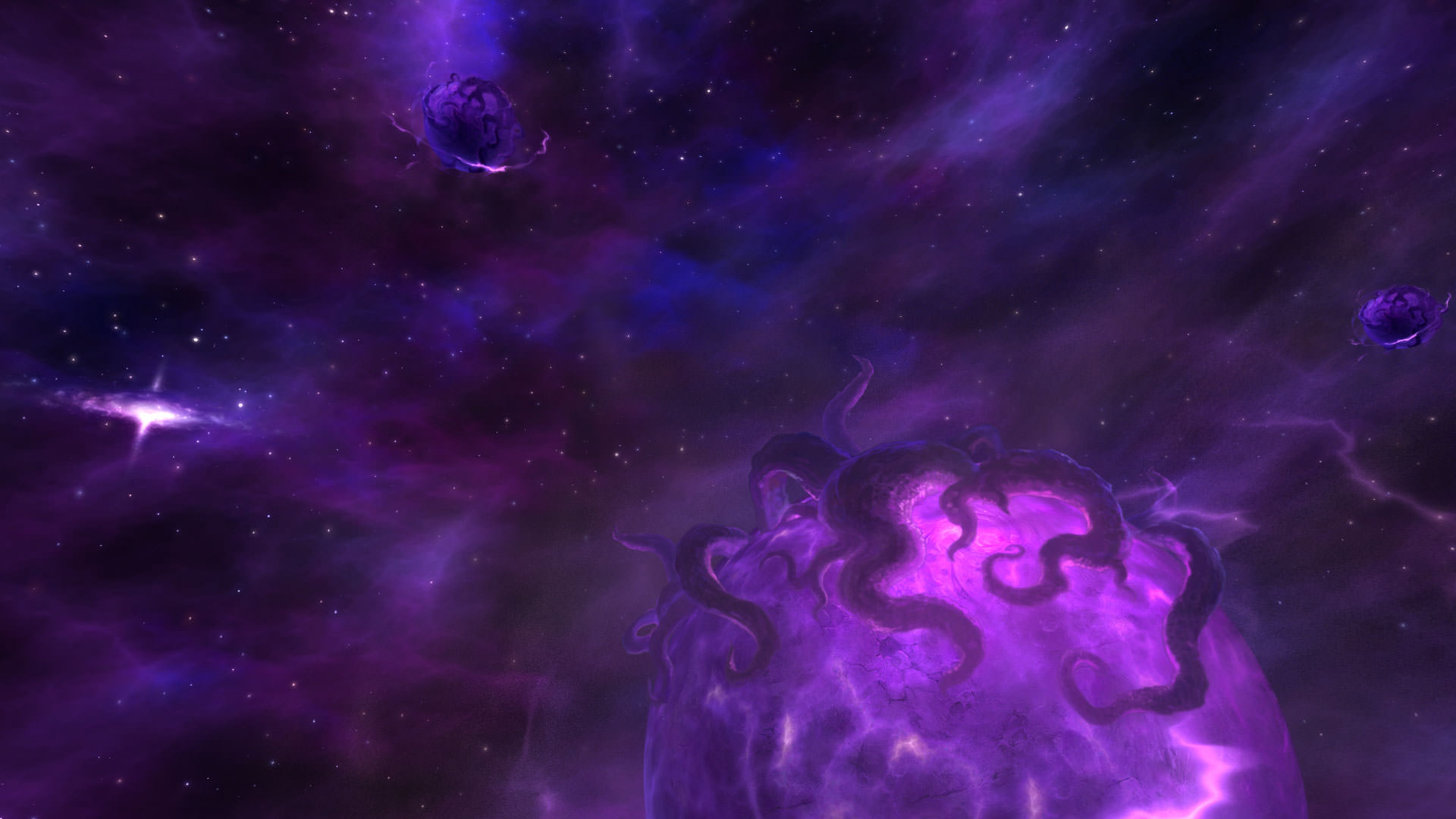

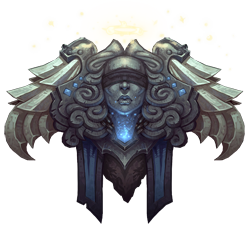
Rogue
You're gonna find a number of outfits that covet our skills. Adventurers, SI:7... heck, even the disorganized rabble wouldn't mind a spy or two inside Stormwind. But you remember this: You're your own man. Don't let nobody bully you into doing something you don't wanna do! Besides, we hold all the cards... at least, we do before the game's done.
— Jorik Kerridan
Signaling for her companions to wait, a female orc creeps forward through the dungeon hall. She presses an ear to the door, then pulls out a set of tools to pick it in the blink of an eye. Before disappearing into the shadows as her warrior friend moves forward to kick the door open.
A human lurks in the shadows of an alley while his accomplice prepares for her part in the ambush. When their target passes the alleyway, the accomplice cries out, the slaver comes to investigate, and the assassin's blade cuts his throat before he can make a sound.
Suppressing a giggle, a gnome silently sneaks up behind a guard, lifting the key ring from the his belt. In a moment, the keys are in her hand, the cell door is open, and she and her companions are free to make their escape.
Rogues rely on skill, stealth, and their foes' vulnerabilities to get the upper hand in any situation. They have a knack for finding the solution to just about any problem, demonstrating a resourcefulness and versatility that is the cornerstone of any successful adventuring party.
A Simple Code
For rogues, the only code is the contract, and their honor is purchased in gold. Free from the constraints of a conscience, these mercenaries rely on brutal and efficient tactics. Lethal assassins and masters of stealth, they will approach their marks from behind, piercing a vital organ and vanishing into the shadows before the victim hits the ground. Rogues can dip their weapons in paralyzing toxins that render foes unable to defend themselves. These silent stalkers wear leather armor so they can move unencumbered, ensuring that they land the first strike.
With the rogue’s poisons and speed, the first strike is often the last step before the killing blow.
Rogues fend for themselves, looking for fights in which they dictate the terms. They’re the shadows in the night that remain unseen until the right moment comes to strike, then they dispatch an opponent with quick blade work or a deadly toxin snuck acutely into the bloodstream. Rogues are opportunistic thieves, bandits, and assassins, but there’s an unparalleled art to what they do.
Skill and Precision
Rogues devote as much effort to mastering the use of a variety of skills as they do to perfecting their combat abilities, giving them a broad expertise that few other characters can match. Many rogues focus on stealth and deception, while others refine the skills that help them in a dungeon environment, such as climbing, finding and disarming traps, and opening locks.
When it comes to combat, rogues prioritize cunning over brute strength. A rogue would rather make one precise strike, placing it exactly where the attack will hurt the target most, than wear an opponent down with a barrage of attacks. Rogues have an almost supernatural knack for avoiding danger, and a few learn magical tricks to supplement their other abilities.
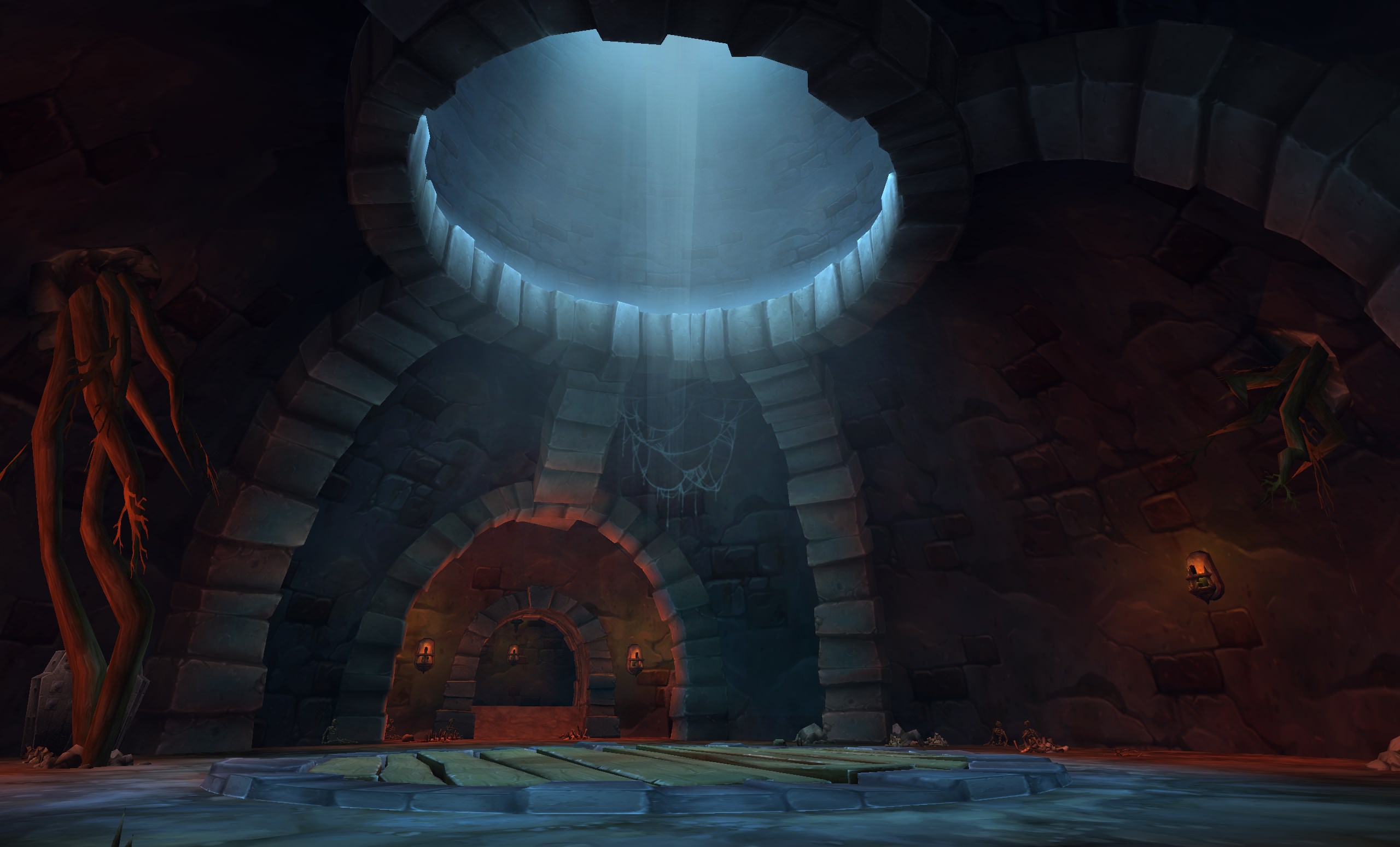

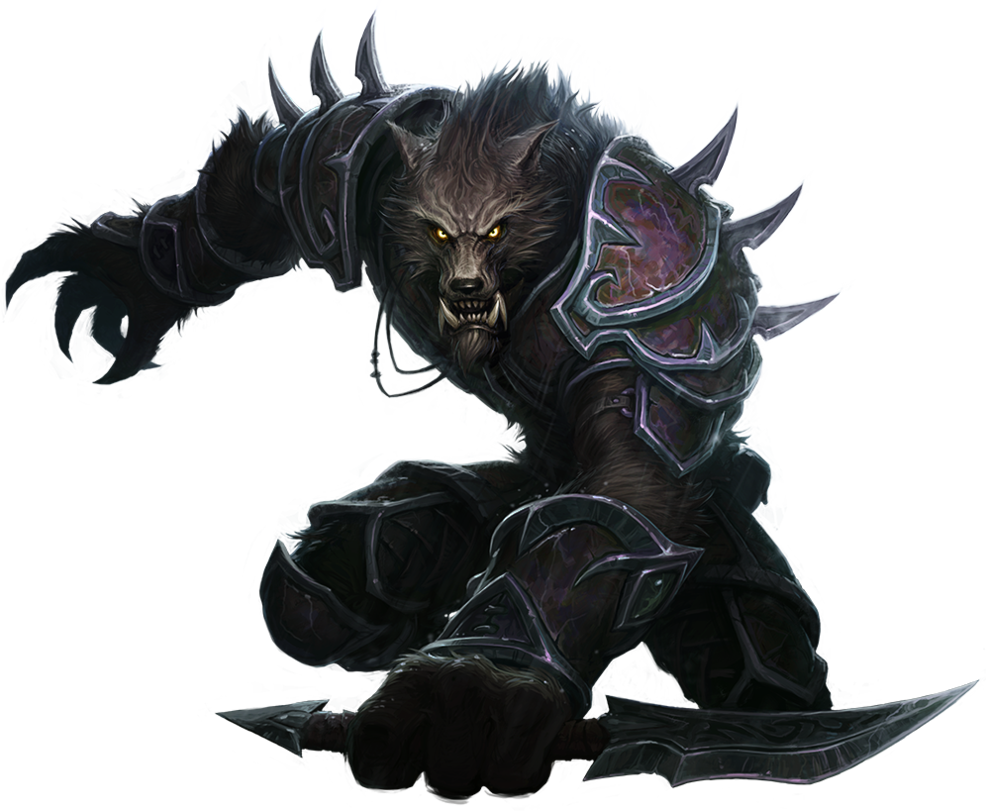
The Rogue
| Level | Proficiency Bonus |
Sneak Attack |
Features | |||
|---|---|---|---|---|---|---|
| 1st | +2 | 1d6 | Expertise, Sneak Attack, Thieves' Cant |
|||
| 2nd | +2 | 1d6 | Cunning Action | |||
| 3rd | +2 | 2d6 | Roguish Specialization | |||
| 4th | +2 | 2d6 | Ability Score Improvement | |||
| 5th | +3 | 3d6 | Uncanny Dodge | |||
| 6th | +3 | 3d6 | Expertise | |||
| 7th | +3 | 4d6 | Evasion | |||
| 8th | +3 | 4d6 | Ability Score Improvement | |||
| 9th | +4 | 5d6 | Roguish Specialization feature | |||
| 10th | +4 | 5d6 | Ability Score Improvement | |||
| 11th | +4 | 6d6 | Reliable Talent | |||
| 12th | +4 | 6d6 | Ability Score Improvement | |||
| 13th | +5 | 7d6 | Roguish Specialization feature | |||
| 14th | +5 | 7d6 | Blindsense | |||
| 15th | +5 | 8d6 | Slippery Mind | |||
| 16th | +5 | 8d6 | Ability Score Improvement | |||
| 17th | +6 | 9d6 | Roguish Specialization feature | |||
| 18th | +6 | 9d6 | Elusive | |||
| 19th | +6 | 10d6 | Ability Score Improvement | |||
| 20th | +6 | 10d6 | Stroke of Luck |
Creating a Rogue
As you create your rogue character, consider the charac-ter's relationship to the law. Do you have a criminal past, or present? Are you on the run from the law or from an angry thieves' guild master? or did you leave your guild in search of bigger risks and bigger rewards? Is it greed that drives you in your adventurers, or some other desire or ideal?
What was the trigger that led you away from your previous life? Did a great con or heist gone terribly wrong cause you to reevaluate your career? Maybe you were lucky and successful robbery gave you the coin you needed to escape the squalor of your life. Did wanderlust finally call you away from your home? Perhaps you suddenly found yourself cut off from your family or your mentor, and you had to find a new means of support. Or maybe you made a new friend, who showed you new possibilities for earning a living and employing your particular talents.
Quick Build
You can make a rogue quickly by following these sugges-tions. First, Dexterity should be your highest ability score. Make intelligence your next-highest if you want to excel at Investigation. Choose Charisma instead if you plan to emphasize deception and social interaction.
Class Features
As a rogue, you gain the following class features.
Hit Points
- Hit Dice: 1d8 per rogue level
- Hit Points at 1st Level: 8 + your Constitution modifier
- Hit Points at Higher Levels: 1d8 + your Constitution modifier per rogue level after 1st
Proficiencies
- Armor: Light armor
- Weapons: Simple weapons, hand crossbows, longswords, rapiers, shortswords
- Tools: Thieves' tools
- Saving Throws: Dexterity, Intelligence
- Skills: Choose four from Acrobatics, Athletics, Deception, Insight, Intimidation, Investigation, Perception, Performance, Persuasion, Sleight of Hand, and Stealth
Equipment
You start with the following equipment, in addition to the equipment granted by your background:
- (a) a rapier or (b) a shortsword
- (a) a shortbow and quiver of 20 arrows or (b) a shortsword
- (a) a burglar's pack or (b) a dungeoneer's pack, or (c) an explorer's pack
- Leather armor, two daggers, and thieves' tools


Expertise
At 1st level, choose two of your skill proficiencies, or one of your skill proficiencies and your proficiency with thieves' tools. Your proficiency bonus is doubled for ability checks you make that uses either of the chosen proficiencies.
At 6th level, you can choose two more of your proficien-cies (in skills or with thieves' tools) to gain this benefit.
Sneak Attack
Beginning at 1st level, you know how to strike subtly and exploit a foe's distraction. Once per turn, you can deal an extra 1d6 damage to one creature you hit with an attack if you have advantage on the attack roll. The attack must use a finesse or a ranged weapon.
You don't need advantage on the attack roll if another enemy of the target is within 5 feet of it, that enemy isn't in-capacitated, and you don't have disadvantage on the attack.
The amount of the extra damage increases as you gain levels in this class, as shown in the Sneak Attack column of the Rogue table.
Thieves' Cant
During your rogue training you learned thieves' cant, a secret mix of dialect, jargon, and code that allows you to hide messages in seemingly normal conversation. Only another creature that knows thieves' cant understands such messages. It takes four times longer to convey such a message than it does to speak the same idea plainly.
In addition, you understand a set of secret signs and symbols used to convey short, simple messages, such as whether an area is dangerous or the territory of a thieves' guild, or will provide a safe house for thieves on the run.
Cunning Action
Starting at 2nd level, your quick thinking and agility allow you to move and act quickly. You can take a bonus action on each of your turns in combat. This action can be used only to take the Dash, Disengage, or Hide action.
Roguish Specialization
At 3rd level, you choose an area to specialize yourself within, that shapes your rogue abilities: Assassin, Outlaw, or Subtlety, all detailed at the end of the class description. Your specialization choice grants you features at 3rd level and then again at 9th, 13th, and 17th level.
Ability Score Improvement
When you reach 4th level, and again at 8th, 10th, 12th, 16th, and 19th level, you can increase one ability score of your choice by 2, or you can increase two ability scores of your choice by 1. As normal, you can't increase an ability score above 20 using this feature.
Uncanny Dodge
Starting at 5th level, when an attacker that you can see hits you with an attack, you can use your reaction to halve the attack's damage against you.
Evasion
At 7th level, you can nimbly dodge out of the way of certain area effects, such as a red dragon's fiery breath or an ice storm spell. When you are subjected to an effect that allows you to make a Dexterity saving throw to take only half--
damage, you instead take no damage if you succeed on the saving throw, and only half damage if you fail.
Reliable Talent
By 11th level, you have refined your chosen skills until they approach perfection. Whenever you make an ability check that lets you add your proficiency bonus, you can treat a d20 roll of 9 or lower as a 10.
Blindsense
Starting at 14th level, if you are able to hear, you are aware of the location of any hidden or invisible creature within 10 feet of you.
Slippery Mind
By 15th level, you have acquired greater mental strength. You gain proficiency in Wisdom saving throws.
Elusive
Beginning at 18th level, you are so evasive that attackers rarely gain the upper hand against you. No attack roll has advantage against you while you aren't incapacitated.
Stroke of Luck
At 20th level, you have an uncanny knack for succeeding when you need to. If your attack misses a target within range, you can turn the miss into a hit. Alternatively. if you fail an ability check, you can treat the d20 roll as a 20.
Once you use this feature, you can't use it again until you finish a short or long rest.
Roguish Specialization
Rogues have many features in common, including their emphasis on perfecting their skills, their precise and deadly approach to combat, and their increasingly quick reflexes. But different rogues steer those talents in varying directi-ons, embodied by the rogue specializations.
Assassin
You focus your training on the grim art of death. Favoring stealth and vicious poisons over direct approaches. Those who adhere to this specialization are diverse: hired killers, spies, and bounty hunters. Stealth, and poison help you eliminate your foes with deadly efficiency.
Assassin's Intuition
When you choose this specialization at 3rd level, you are at your deadliest when you get the drop on your enemy. You have advantage on attack rolls against any creature that hasn't taken an action in the combat yet. In addition, your first hit against a creature on the first round of each combat deals additional damage equal to your Rogue level.
Poisoned Knife
At 9th level, you gain proficiency with the poisoner's kit. In addition, when you use your Sneak Attack feature, you can force the target to make a Constitution saving throw (DC of 8 + your Intelligence modifier + proficiency bonus).
On a failed save, your Sneak Attack damage is dealt as poison damage, and the target is poisoned for 1 minute. On a successful save, the target takes half the poison damage and isn't poisoned.
When you poison a creature in this way, you apply an additional effect from the list below. You can only affect a creature with one of these at a time.

- The creature can't regain hit points.
- The creature's speed is reduced by 10 feet.
- The creature can't take reactions.
You can use this feature a number of times equal to your Intelligence modifier. You regain all spent uses after finish-ing a short or long rest.
Venomous Wounds
Starting at 13th level, when you use your Poisoned Knife feature and successfully poison a creature, the creature gains disadvantage on one ability saving throw of your choice for the poisoned conditions duration.
Seal Fate
At 17th level, you have become a master of instant death. When you hit a creature with a weapon attack, you can force it to make a Constitution saving throw against a DC of 8 + your Strength or Dexterity modifier (your choice) + your proficiency bonus. On a failed save, the damage of your attack is doubled, and it automatically fails its saving throw against your Poisoned Knife feature.
Once you use this feature, you can't use it again until you finish a long rest.
Outlaw
You hone your skills in larcenous arts. Burglars, bandits, pirates, and other criminals typically follow this specializa-tion, but so do rogues who prefer to not fight fair, using dirty tricks to gain the upper hand in combat. They care little for discretion, and happily engages in brawls head on.
Firearm Intrigue
When you choose this specialization at 3rd level, you gain proficiency with firearms.
Hit and Run
At 3rd level, you learn how to land a strike and slip away without reprisal. During your turn, if you make a melee attack against a creature, that creature can't make oppor-tunity attacks against you for the rest of your turn.
You also gain an additional way to use your Sneak Attack you don't need advantage on the attack roll to use your Sneak Attack against a creature if you are within 5 feet of it, no other creatures are within 5 feet of you, and you don't have disadvantage on the attack roll. All the other rules for Sneak Attack still apply to you.
Quick Combatant
Starting at 9th level, your walking speed increases by 10 feet. If you have a climbing or swimming speed, this in-crease applies to that speed as well.
Misdirection
Starting at 13th level, you can sometimes cause another creature to suffer an attack meant for you. When you are targeted by an attack while a creature is within 5 feet of you, you can use your reaction to have the attack target that creature instead of you.
You can use this feature a number of times equal to your Dexterity modifier, regaining uses after a short or long rest.
Adrenaline Rush
At 17th level, the rush of battle runs to your head. You can take two turns during the first round of any combat. You take your first turn at your normal initiative and your se-cond turn at your initiative minus 10. You can't use this feature when you are surprised.
Subtlety
Subtlety rogues are the masters of the shadows, and they strike unseen. They don’t have the lethal strikes of the assassin or the brawling prowess of the outlaw, but their ability to hide in plain sight are unrivaled, performing devastating strikes, and slipping away to strike again.
Symbols of Death
When you choose this specialization at 3rd level, you can invoke ancient symbols of powers to gain the upper hand. As a bonus action, you can place a symbol of death on creature you can see, allowing you to use your Sneak Attack against that target even if you don't have advantage on the attack roll, but not if you have disadvantage on it.
The symbol lasts for 1 minute or until you use this feature against a different target.
You can use this feature a number of times equal to your Dexterity modifier. You regain all spent uses after finishing a short or long rest.
Nightblade
At 3rd level, you gain darkvision out to a range of 60 feet. If you already have darkvision from your rage, its range increases by 30 feet.
Additionally, you have advantage on a Dexterity (Stealth) check if you move no more than half your speed on the same turn.
Shadowstep
Starting at 9th level, you can use a bonus action to teleport up to 30 feet to an unoccupied space within 5 feet of another creature that you can see. If you hit the targeted creature with an attack, on the same turn, it is surrounded by entangling shadows and its movement speed is halved until the start of your next turn.
You can use this feature twice starting at 9th level, and gain an additional use at 13th and 17th level. You regain expended uses when you finish a short or long rest.
Cloak of Shadows
At 13th level, you are able to evade attacks by enveloping yourself in supernatural shadows. Whenever a creature makes an attack roll against you and doesn't have advantage on the roll, you can use your reaction to impose disadvantage on it.
You must use this feature before you know the outcome of the attack roll.
Veil of Deceit
At 17th level, your thoughts can't be read by telepathy or other means, unless you allow it. You can present false thoughts by succeeding on a Charisma (Deception) check contested by the mind reader's Wisdom (Insight) check.
Additionally, no matter what you say, magic that would determine if you are telling the truth indicates you are being truthful if you so choose, and you can't be compelled to tell the truth by magic.

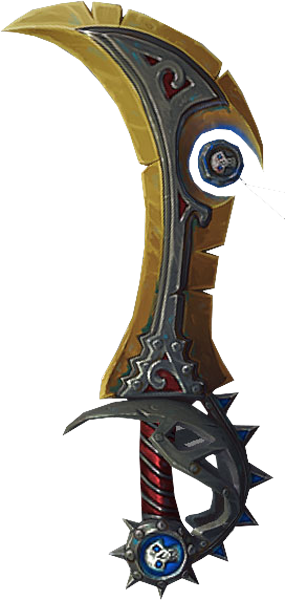
Shaman
The wolves are not tamed, not as you might understand the word. They have come to be our friends because I invited them. It is a part of being a shaman. We have a bond with the things of the natural world, and strive always to work in harmony with them. Warlocks would term them spells, but we shamans simply term them calls. We ask, the powers we work with answer. Or not, as they will. I can call the snows, and wind, and lightning. The trees may bend to me when I ask. The rivers may flow where I ask them to.
— Drek'Thar of the Frostwolf clan
An orc clad in loose plates chained together stands atop a lonely peak, the winds picking up around him, rattling through the chains of his armor, before he releases a glistening bolt of lightning toward his enemies.
A gray haired dwarf slowly lumps his way across the battlefield, emptying a bottle of water into the earth as he walks, before lifting it from the soil, and gently waves it over the body of a wounded ally, soothing his grave wounds.
A human sprinting through the thicket, a pair of massive wolves of spectral vision running at his side. In the flash of a moment he howls as his body turns into a wolf of similar visage to his pets.
Shamans are mortal mediators between the elements themselves. Often a spiritual guide in their community, these mystical figures may commune with ancestral spirits and weave elemental powers into their spells. Both to strengthen and heal their allies, and to strike down on the battlefield with devestating force. Shamans can imbue their weapons with the elements, smite their enemies with storm and fire, and summon forth elementals to their aid.
Herald of the Elements
A Shaman's bond to their magic is unique. While a mage would study it in great depth, and a warlock would bend those same power to their whim, a shaman calls upon the elements themselves for aid. They commune with forces not strictly benevolent -- sometimes they may respond, and sometimes they may choose not to. The elements are chaotic, chained away in their elemental plane as they rage against one another with unending primal fury. It is the call of the shaman to bring balance to this chaos.
These masters of the elements can also call upon elemental forces directly, unleashing torrents of lava and bolts of lightning against foes. The elements can create, destroy, support, and hinder. An experienced shaman balances the vast spectrum of these primordial forces into an array of diverse abilities, making shaman versatile adventurers and valued members of any group.
Respected and Feared
Since the early days of mortal life both Azeroth and Draenor, the elements of have been both feared and worshiped. Mystics have sought to commune with them, to tap into the raw power of earth, air, fire, and water. In time, these spiritual guides have come to understand that the depth and gravity of the powers they wield. That the elements are not wholly benevolent, but rather a torrent of neverending conflict, as the elemental lord vie for control. The calling of the shaman is as a conduit of these volatile energies, leveraging them both to heal and to harm.


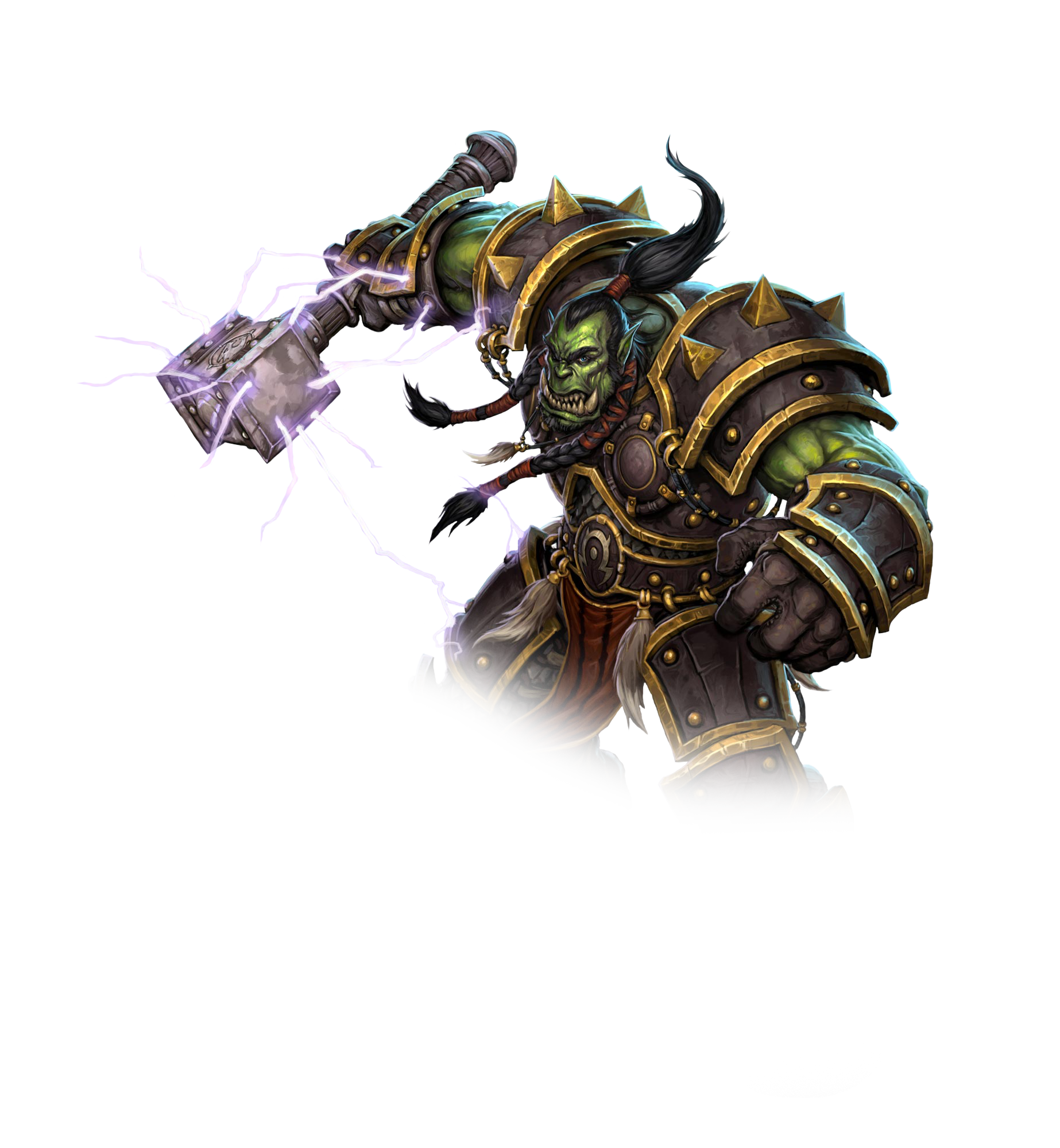
The Shaman
| Level | Proficiency Bonus |
Features | Cantrips Known |
Spells Known |
1st | 2nd | 3rd | 4th | 5th | 6th | 7th | 8th | 9th | ||||||||||
|---|---|---|---|---|---|---|---|---|---|---|---|---|---|---|---|---|---|---|---|---|---|---|---|
| 1st | +2 | Kalimag, Spellcasting | 2 | 4 | 2 | — | — | — | — | — | — | — | — | ||||||||||
| 2nd | +2 | Totemist (1/rest, 2 totems) | 2 | 5 | 3 | — | — | — | — | — | — | — | — | ||||||||||
| 3rd | +2 | Shamanic Binding | 2 | 6 | 4 | 2 | — | — | — | — | — | — | — | ||||||||||
| 4th | +2 | Ability Score Improvement | 3 | 7 | 4 | 3 | — | — | — | — | — | — | — | ||||||||||
| 5th | +3 | Ghost Form | 3 | 8 | 4 | 3 | 2 | — | — | — | — | — | — | ||||||||||
| 6th | +3 | Totemist (2/rest, 4 totems), Shamanic Attunement feature |
3 | 9 | 4 | 3 | 3 | — | — | — | — | — | — | ||||||||||
| 7th | +3 | — | 3 | 10 | 4 | 3 | 3 | 1 | — | — | — | — | — | ||||||||||
| 8th | +3 | Ability Score Improvement | 3 | 11 | 4 | 3 | 3 | 2 | — | — | — | — | — | ||||||||||
| 9th | +4 | — | 3 | 12 | 4 | 3 | 3 | 3 | 1 | — | — | — | — | ||||||||||
| 10th | +4 | Totemic Projection | 4 | 14 | 4 | 3 | 3 | 3 | 2 | — | — | — | — | ||||||||||
| 11th | +4 | — | 4 | 15 | 4 | 3 | 3 | 3 | 2 | 1 | — | — | — | ||||||||||
| 12th | +4 | Totemist (3/rest, 6 totems), Ability Score Improvement |
4 | 15 | 4 | 3 | 3 | 3 | 2 | 1 | — | — | — | ||||||||||
| 13th | +5 | — | 4 | 16 | 4 | 3 | 3 | 3 | 2 | 1 | 1 | — | — | ||||||||||
| 14th | +5 | Shamanic Attunement feature | 4 | 18 | 4 | 3 | 3 | 3 | 2 | 1 | 1 | — | — | ||||||||||
| 15th | +5 | — | 4 | 19 | 4 | 3 | 3 | 3 | 2 | 1 | 1 | 1 | — | ||||||||||
| 16th | +5 | Ability Score Improvement | 4 | 19 | 4 | 3 | 3 | 3 | 2 | 1 | 1 | 1 | — | ||||||||||
| 17th | +6 | — | 4 | 20 | 4 | 3 | 3 | 3 | 2 | 1 | 1 | 1 | 1 | ||||||||||
| 18th | +6 | Far Sight | 4 | 22 | 4 | 3 | 3 | 3 | 3 | 1 | 1 | 1 | 1 | ||||||||||
| 19th | +6 | Ability Score Improvement | 4 | 22 | 4 | 3 | 3 | 3 | 3 | 2 | 1 | 1 | 1 | ||||||||||
| 20th | +6 | Reincarnation | 4 | 22 | 4 | 3 | 3 | 3 | 3 | 2 | 2 | 1 | 1 |
Creating a Shaman
When creating a shaman, consider how your bond with the elements have affected your personality and your view of the world. Although shamans resonate with all four primary elements, some tend to outwardly display aspects of one over the rest.
Shamans who lean towards fire might be impatient, temperamental, or bursting with energy in all they do. Shamans who lean toward water are adaptable, chaotic, and tend to go with the flow.
Those who favor earth are typically lawful, stalwart, and stubborn. And shaman who favor air are often aloof, distant, and the most neutral in their arbitrations.
Think about your bond with your totems and how they represent the elemental planes from which you gain your power. Are they simply tools to you for channelling raw planar power, or are they sacred and worthy of reverence?
Do they act as representations of a favored element, or do you use them to keep that element in check? How a shaman perceives their connection to the elemental planes is often reflected in the totems they summon forth.
Quick Build
You can make a shaman quickly by following these suggestions. First, Wisdom should be your highest ability score, followed by Constitution. If you intend to engage in melee combat regularly, make Strength or Dexterity your second highest ability score instead.
Class Features
As a shaman, you gain the following class features.
Hit Points
- Hit Dice: 1d8 per shaman level
- Hit Points at 1st Level: 8 + your Constitution modifier
- Hit Points at Higher Levels: 1d8 + your Constitution modifier per shaman level after 1st
Proficiencies
- Armor: Light armor, medium armor, shields
- Weapons: Simple weapons, martial weapons
- Tools: Herbalism kit
- Saving Throws: Strength, Wisdom
- Skills: Choose two from Animal handling, Arcana, History, Insight, Medicine, Nature, Perception, and Survival

Equipment
You start with the following equipment, in addition to the equipment granted by your background:
- (a) scale mail or (b) studded leather
- (a) a mace and shield or (b) two martial weapons
- (a) a dungeoneer's pack or (b) an explorer's pack
- a holy symbol
Kalimag
You know Kalimag, the language of elementals. You can speak the language and use it to leave messages in rocks and pools of water that only you and other shamans spot. The messages are spoken as through a sending spell, with the limitations that come of that spell.
Spellcasting
Drawing on the elements themselves, you can manifest them into casting spells. See chapter 10 of the Player's Handbook for the general rules of spellcasting and chapter 6 of this book for the shaman spell list.
Cantrips
You know two cantrips of your choice from the shaman spell list. You learn additional shaman cantrips of your choice at higher levels, as shown in the Cantrips Known column of the Shaman table.
Spell Slots
The Shaman table shows how many spell slots you have to cast your spells of 1st level and higher. To cast one of these spells, you must expend a spell slot of the spell's level or higher. You regain all expended spell slots when you finish a long rest.
Spells Known of 1st Level and Higher
You know four 1st-level spells of your choice from the shaman spell list.
The Spells Known column of the Shaman table shows when you learn more shaman spells of your choice. Each of these spells must be of a level for which you have spell slots. For instance, when you reach 3rd level in this class, you learn one new spell of 1st or 2nd level.
Additionally, when you gain a level in this class, you can choose one of the shaman spells you know and replace it with another spell from the shaman spell list, which also must be of a level for which you have spell slots.
Spellcasting Ability
Wisdom is your spellcasting ability for your shaman spells, since your power comes from the elements and spirits. You use your Wisdom whenever a shaman spell refers to your spellcasting ability. In addition, you use your Wisdom modifier when setting the saving throw DC for a shaman spell you cast and when making an attack roll with one.
Spell save DC = 8 + your proficiency bonus +
your Wisdom modifier
Spell attack modifier = your proficiency bonus +
your Wisdom modifier
Ritual Casting
You can cast a shaman spell you know as a ritual if that spell has the ritual tag.
Spellcasting Focus
You can use a holy symbol as a spellcasting focus for your shaman spells.
Totemist
Staring at 2nd level, you can bind elemental forces into totems. Effigies of elemental power, bound to your will.
Totems Known
When you gain this feature, you learn two totems of your choice. The totems available to you are detailed at the end of the class description.
You can learn two additional totems at 6th level, and another two totems and 12th level.
Additionally, when you gain a level in this class, you can choose one of the totems you know and replace it with another totem that you could learn at that level.
Summoning a Totem
You can use a bonus action to summon a totem that you know to an empty space within 15 feet of you that you can see. The totem lasts for 1 minute, until it is destroyed, or until you use your bonus action to summon another one. You can also dismiss an active totem as a bonus action.
Beginning at 6th level, you can use your Totemist feature twice between rests, and beginning at 12th level, you can use it three times between rests.
Activating a Totem
The specific actions available to each totem is detailed in the totem's description. If a totem requires a bonus action to activate, you may activate it the first time for free as part of the bonus action used to summon it.
The totem uses your shaman spellcasting ability to determine its spell save DC and attack modifier.
Shamanic Binding
At 3rd level, you choose a shamanic binding to tune yourself to: Elemental, Enhancement, or Restoration, each of which are detailed at the end of the class description.
Your choice grants you features at 3rd level and again at 6th, and 14th level.
Binding Spells
Each Shamanic Binding has a list of spells that you gain at the shaman levels noticed in the binding description. Once you gain a binding spell, you always have it prepared, and it doesn't count against your number of spells known.
If you have a binding spell that isn't on the shaman spell list, the spell is nonetheless a shaman spell for you.
Ability Score Improvement
When you reach 4th level, and again at 8th, 12th, 16th, and 19th level, you can increase one ability score of your choice by 2, or you can increase two ability scores of your choice by 1. As normal, you can't increase an ability score above 20 using this feature.
Ghost Form
At 6th level, you can use your action to transform into the ghostly visage of your spirit animal; an animal that embodies you or that you share a strong bond with.
You can use this feature twice. You regain all expended uses when you finish a short or long rest.
You can stay in this form for a number of hours equal to half your Shaman level before reverting to your normal form. You can revert to your normal form earlier by using a bonus action, and revert automatically if you fall unconscious, drop to 0 hit points, or die.

While you are transformed, the following rules apply:
- Your base movement speed changes to 50 feet.
- You are considered unarmored and add your Wisdom modifier to your Armor Class.
- If you make an attack or cast a spell you immediately revert to your normal form. Transforming doesn't break your concentration on a spell you've already cast, however, or prevent you from taking actions that are part of a spell that you've already cast, such as call lightning.
- Your ability to speak or take any actions that require hands is limited to the capabilities of your ghost form.
- Your equipment merges into your ghost form and has no effect until you leave the shape again.
A deeper explanation of shamans and their spirits can be found in Appendix A at the end of this book.
Totemic Projection
Starting at 10th level, you can manipulate a summoned totem. As an action, you can move your summoned totem to an empty space within range that you can see.
Additionally, the distance at which you can summon and move a totem increases to 30 feet.
Far Sight
Starting at 18th level, you can hone your sight through the element of air, focusing on a creature that you have seen.
Using a minute to focus, you attempt to find the creature. Roll percentile dice. If you know the creature well, or if you are presently holding something of their belonging, roll twice and take the lowest result.
If the result is less than your Shaman level, you find the creature you seek and are shown their surroundings as if standing next to them. You are also shown the most direct path by which you can get to them, whether by land or sea.
Once you use this feature, you can't use it again until you finish a long rest.
Reincarnation
At 20th level, you no longer suffer any of the drawbacks of old age, and you can't be aged magically. If you die and your body was not destroyed, your spirit will linger around it for up to 24 hours. During this time, you can choose to return to your body and come back to life with 1 hit point.
Once used, you can't use this feature again for 7 days.
Shamanic Attunement
Shamans strive to deepen their understanding and connection with the elements, often forming a bond with it for life. Some prefer a more brutal approach as they rein in the powers of fire and earth for physical combat, or the forces of fire and air to fight at range. Others in turn, prefer a subtle approach of peace and meditation, bending water and air to their will. You attune with one of these groups.
Elemental
More than any other, Elemental shamans have dedicated themselves to forging a deep bond with the elements.
This bond often favoring the element of fire, allowing them to wield their powers to great effect, manipulating the land itself. To battle an Elemental shaman is to taunt the very forces of nature.
Elemental Binding Spells
| Shaman Level | Spells |
|---|---|
| 3rd | earth tremor, witch bolt |
| 5th | dust devil, gust of wind |
| 9th | call lightning, tidal wave |
| 13th | control water, storm sphere |
| 17th | maelstrom, wall of stone |
Echo of the Elements
When you choose this binding at 3rd level, you gain a lingering boon of the elements. You gain resistance to your choice of cold, fire, lightning, thunder damage, or bludgeoning from nonmagical attacks.
Resurgence
Starting at 3rd level, when you cast a spell that deals cold, fire, lightning or thunder damage using a spell slot of 2nd level or higher, you regain one expended spell slot. The slot you regain must be of a level lower than the spell you cast and can't be higher than 5th level.
You can recover spell slots with a combined level equal to half your shaman level. The pool of spell slots that can be recovered resets when you finish a long rest.
Aftershock
Beginning at 6th level, when you make a spell attack with a cantrip and miss, you can use your bonus action to repeat the attack against a different target within 30 feet of your original target.
Ascendance
At 14th level, you are able to assume the form of an elemental ascendant. As an action, you draw upon your powers and ascend into a raw manifestation of an element. For 1 minute, you gain the following benefits:
- You gain immunity to the damage type chosen by your Echo of the Elements feature.
- You gain a flying speed equal to your movement speed, if you end your turn in the air you immediately fall to the ground and take damage from the fall as normal.
- Your spell attacks score a critical hit on a roll of 19 or 20 on the d20.
Once you use this feature, you can't use it again until you finish a long rest.
Enhancement
For Enhancement shamans, their bond with the elements is the means to an end for their martial prowess. Often keeping the element of air as their closest ally, channeling their powers through their weapons, they favor facing their adversaries up close with devastating force.
Enhancement Binding Spells
| Shaman Level | Spells |
|---|---|
| 3rd | absorb elements, searing smite |
| 5th | flame blade, warding wind |
| 9th | elemental weapon, haste |
| 13th | fire shield, stoneskin |
| 17th | control winds, far step |

Stormstrike
When you choose this binding at 3rd level, you learn to channel the elements to deal devastating strikes.
Once your turn, when you hit a creature with a melee attack, you can expend one spell slot to deal lightning damage to the target in addition to the weapon's damage. The extra damage is 2d6 for a 1st-level spell slot, plus 1d6 for each spell level higher than 1st, to a maximum of 5d6.
If you make a Stormstrike as part of the Attack action while you are fighting with two weapons, you can make an attack with the weapon in your other hand as part of the same action. If you do so, you cannot use your Bonus Action to make another attack with that weapon.
Fighting Style
At 3rd level, you adopt a particular style of fighting as your specialty. Choose one of the following options. You can't take a Fighting Style option more than once, even if you later get to choose again.
Defense. While you are wearing armor, you gain a +1 bonus to AC.
Great Weapon Fighting. When you roll a 1 or 2 on a damage die for an attack you make with a melee weapon that you are wielding with two hands, you can reroll the die and must use the new roll, even if the new roll is a 1 or a 2. The weapon must have be two-handed or versatile for you to gain this benefit.
Two-Weapon Fighting. When you engage in two-weapon fighting, you can add your ability modifier to the damage of the second attack.
Extra Attack
Beginning at 6th level, you can attack twice, instead of once, whenever you take the Attack action on your turn.
Feral Spirit
At 14th level, you can call forth spectral forces that take the form of wolves and appear in unoccupied spaces that you can see within 60 feet of you. You call forth either one Greater Feral Spirit or two Lesser Feral Spirits.
The feral spirit requires concentration, and it disappears when it drops to 0 hit points or when the spell ends. The feral spirits are friendly to you and your companions.
Roll initiative for the spirits as a group, which has its own turns. They obey any verbal commands that you issue to them (no action required by you). If you don't issue any command, they defend themselves from hostile creature. Statistics for the feral spirits can be found in Appendix B.
Once you use this feature, you can't call forth the spirits again until you finish a long rest.
Restoration
Restoration shamans have formed a deep connection with the element of water, drawing on its soothing powers to restore life and heal afflictions. They finding harmony in the the churning waves of their powers, as they unleash it like a tidal surge washes against a sandy shore.
Restoration Binding Spells
| Shaman Level | Spells |
|---|---|
| 3rd | bless, cure wounds |
| 5th | aid, lesser restoration |
| 9th | remove curse, revivify |
| 13th | death ward, watery sphere |
| 17th | greater restoration, reincarnate |
Riptide
When you choose this binding at 3rd level, you can conjure bursts of healing water. You have a pool of healing represented by a number of d6s equal to your Shaman level.
As an action, choose a creature within 60 feet of you that you can see, and spend a number of d6s equal to half your Shaman level or less. Roll the dice and add them together. The target regains a number of hit points equal to the total.
You regain all expended dice when you finish a long rest.
Astral Shift
At 3rd level, you can momentarily shift your body into the astral plane. As a reaction upon being targeted by a weapon or spell attack you can shift into the astral plane, giving attack rolls against you disadvantage until the beginning of your next turn.
Once you use this feature, you can't use it again until you finish a short or long rest.
Tidal Waves
Starting at 6th level, when you use your Riptide feature to heal a creature, a different creature of your choice within 15 feet of it regains a number of hit points equal to your Wisdom modifier plus the number of riptide dice spent (minimum of 2 hit points).
Spirit Link
At 14th level, you can tether your spirit to those around you. As an action, choose three willing creatures within 10 feet of you to form a spirit link with for 1 minute. You can use your reaction when you or another tethered creature takes damage to split the damage evenly between all tethered creatures. A creature breaks the tether if they move more than 60 feet away from you.
Once you use this feature, you can't use it again until you finish a long rest.
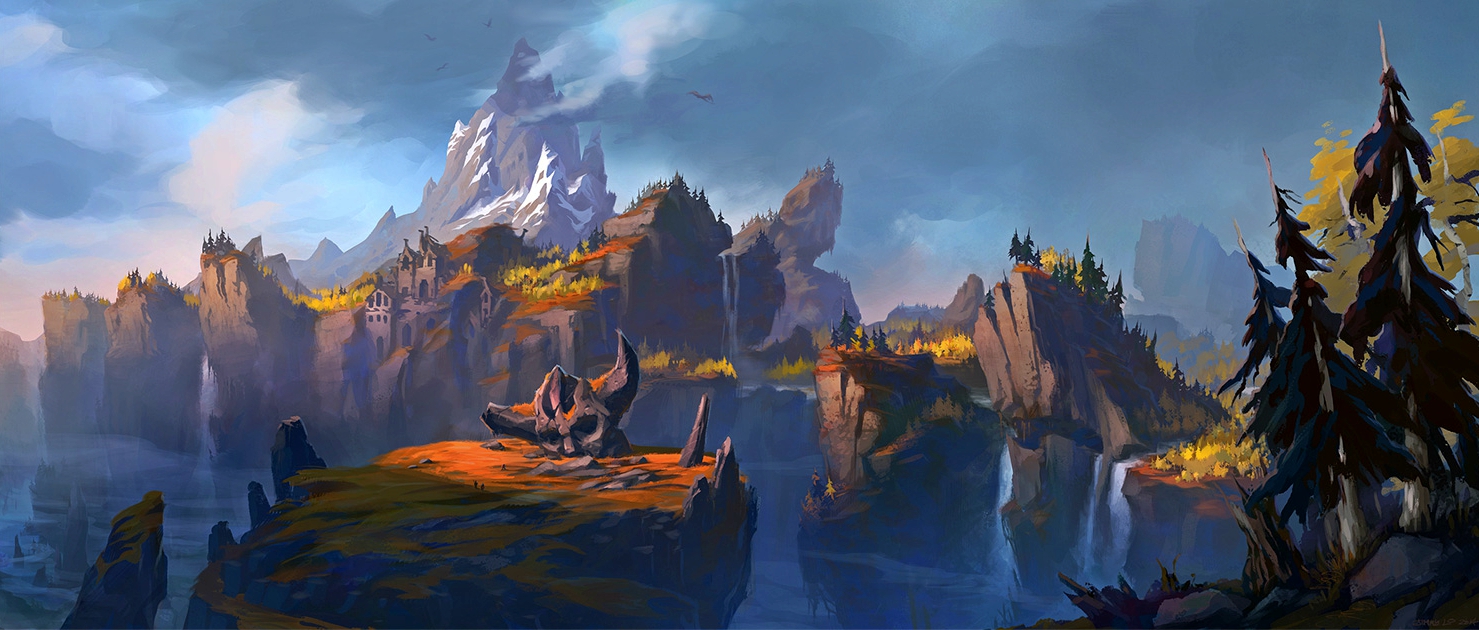

Totems
If a totem has prerequisites, you must meet them to learn it. You can learn a totem at the same time that you meet its prerequisites. A level prerequisite for a totem refers to your shaman level, not your character level.
Earthbind Totem
The totem hinders movement of creatures around it. As a bonus action, you can cause the totem to warp the ground in a 15-foot radius around it. The area is considered difficult terrain until the start of your next turn.
Grace of Air Totem
Prerequisite: 12th level
The totem guides the step of creatures around it. You can use your reaction when a creature within a 15-foot radius of the totem is forced to make a Dexterity check or saving throw, to give them advantage on the roll.
Grounding Totem
Prerequisite: 6th level
The totem redirects spells that pass nearby. You can use your reaction when a creature within a 10-foot radius of the totem is the target of a harmful spell, forcing the caster of the spell to make a Wisdom saving throw. On a failed save, the caster must pick a new target or lose the spell.
Creatures are aware of the totem and its effect before casting their spell.
Healing Tide Totem
Prerequisite: 12th level
The totem wards creatures around it. Using your bonus action, choose a creature within a 15-foot radius of the totem. The creature gains temporary hit points equal to half your shaman level, that lasts until the start of your next turn.
Magma Totem
Prerequisite: 6th level
The totem surges with magma, heating up the air around it. As a bonus action, you can cause the totem to erupt. Each creature within a 10-foot radius of the totem must make a Dexterity saving throw. A creature takes 2d8 fire damage on a failed save, or half as much on a successful one.
Resistance Totem
The totem shields nearby creatures from the elements. You can use your reaction when a creature within a 15-foot radius of the totem is hit by an attack that deals cold, fire, lightning, poison, or thunder damage, to give the creature resistance against one of the damage types mentioned above for the attack.
Searing Totem
The totem emits dim light in a 10-foot radius around it. Using your bonus action, the totem hurls a bolt of magma at a target within 60 feet of it. Make a ranged spell attack. On a hit, the target takes 1d6 fire damage. The fire ignites flammable objects hit by it that isn't being worn or carried.
The totem's damage increases by 1d6 when you reach 5th level (2d6), 11th level (3d6), and 17th level (4d6).
Strength of the Earth Totem
Prerequisite: 12th level
The totem bolsters creatures around it. You can use your reaction when a creature within a 15-foot radius of the totem is forced to make a Strength check or saving throw to give them advantage on the roll.
Totem of Wrath
Prerequisite: 12th level
The totem fuels nearby creatures with primal fury. You can use your reaction when a friendly creature within a 15-foot radius of the totem rolls damage for an attack or spell, to reroll a number of damage dice equal up to your Wisdom modifier. You must use the new rolls for those dice.
Tranquil Mind Totem
Prerequisite: 6th level
The totem stills the mind of nearby creatures. You can use your reaction when a creature within a 10-foot radius of the totem is forced to make a saving throw to maintain concentration to give it advantage on the check.
Tremor Totem
Prerequisite: 6th level
The totem sends shocks pulsating through the ground. You can use your reaction when a creature within a 10-foot radius of the totem is forced to make a saving throw to avoid being charmed or frightened, to give the creature advantage on the saving throw.
Wind Rush Totem
The totem quickens creatures around it. As a bonus action, choose a number of creatures within a 15-foot radius of the totem, up to your Wisdom modifier. The creatures have their movement speed increased by 15 feet and ignore nonmagical difficult terrain, until the start of your next turn.
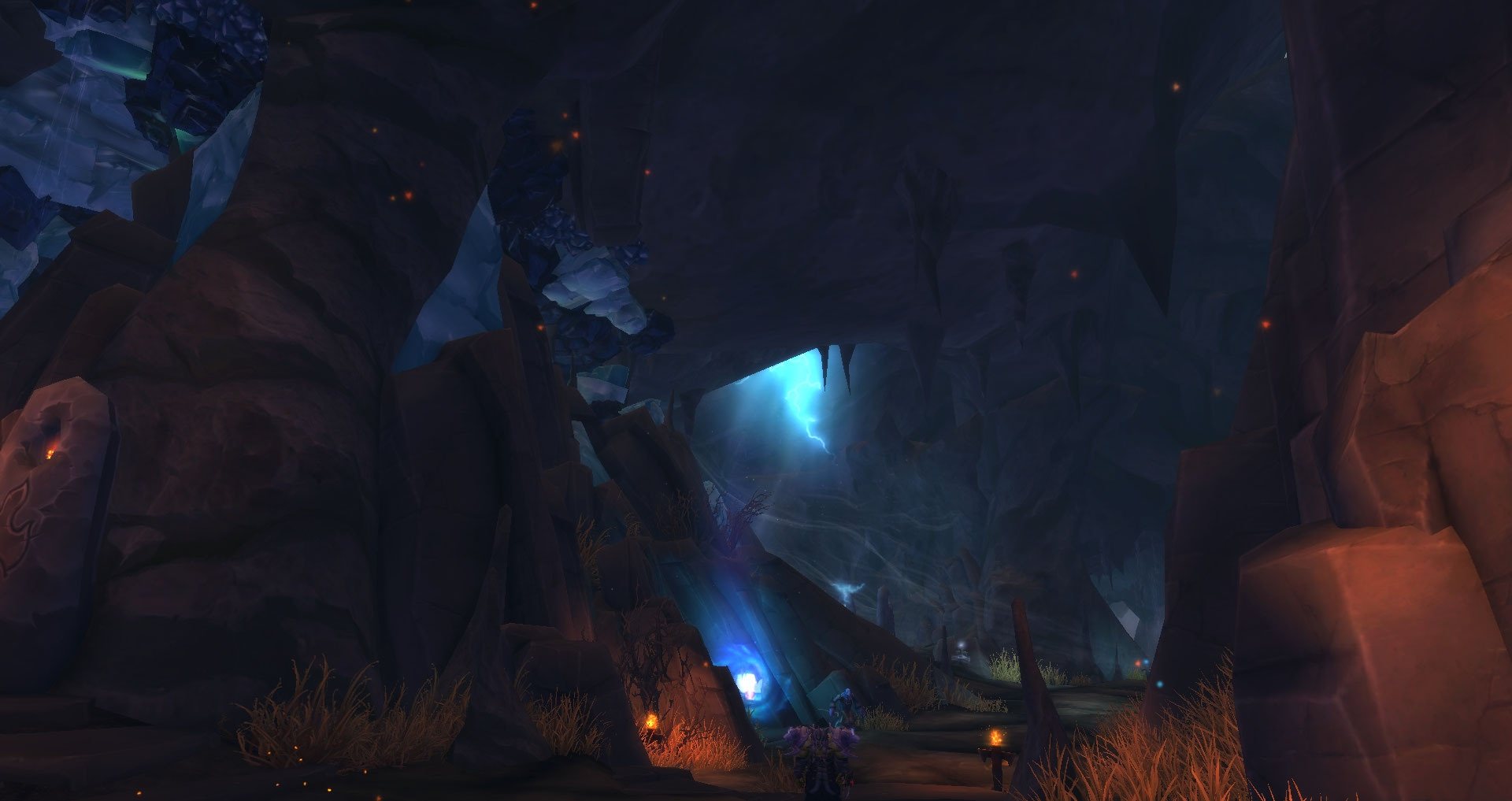

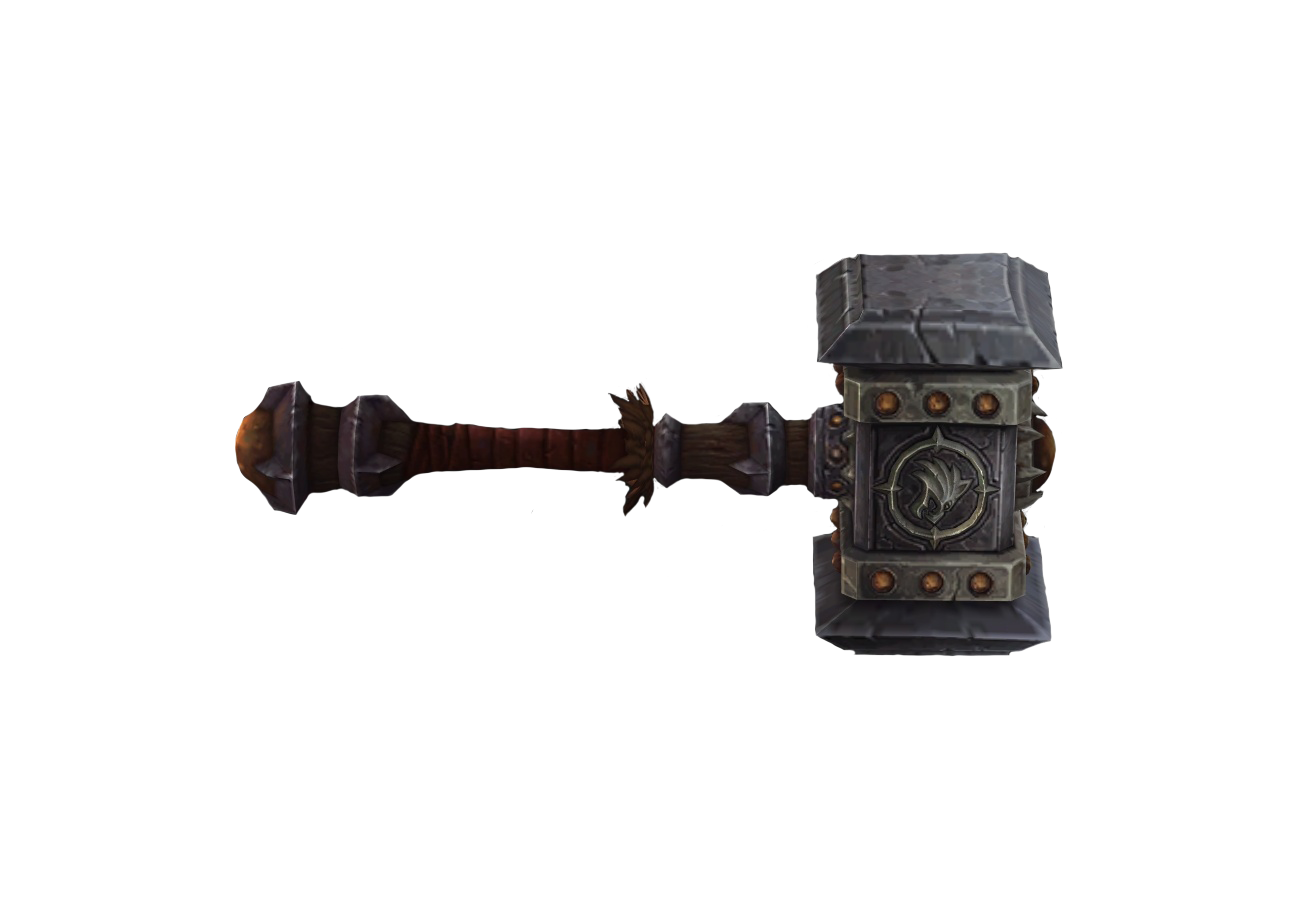
Warlock
Imagine what you could do if you led a group of shaman who controlled the source of their powers, instead of begging and scraping for it. Imagine if these shaman had servants who could also fight on your side. Servants who could send your enemies fleeing helplessly in terror. Suck their magic dry as the insects in the summer suck blood.
— Gul'dan
An imp skitters behind her as a young human clad in robes smiles warmly, weaving magical charms into her honeyed words, bending the palace sentinels to her will.
A brutish orc waves his hand in the air, sparking flames of green and red, with a flash of his hand, he hurls a ball of fel infused fire against a night elf.
Shifting his gaze between a battered tome and the rough drawn glyphs made in the dirt. A wild eyed forsaken begins a slow chant, as a demonic gate erupts from the ground.
Warlocks and seekers of the knowledge that lies hidden in the fabric of the multiverse. Through their powerful fel magic and secret grimoire, warlocks unlock magical effects both subtle and spectacular. They draw on powers often forbidden throughout Azeroth to bolster their own power.
Dark Arts, Dominance
In the face of demonic powers, most adventurers see death and destruction. Warlocks see only opportunity, dominance is their aim, and have found a path to it in their shadow magic. These voracious spellcasters enslave demon as their minions to fight and protect besides them. The power of their enslaved demons strengthens as the warlock does, making them able to summon deadly demons to their aid.
Wielders of Fel
warlocks are the wielders of the destructive fel magic, a form of magic often used by demons and members of the Burning Legion. It is a form of magic that is demonic, entropic, and extremely chaotic. Its practice has been banned throughout most regions of Azeroth, and is not something even warlocks dare practice openly, yet it is still practiced by most warlocks in secrecy.
Whilst other forms of magic comes as a natural source from the wielder or is granted by the spirits, fel magic is a bargain, it corrupts the minds of those surrounded and affected by it, and desecrates the land it touches. If their demonic companion was not enough to frighten common folks of Azeroth, the knowledge of the fel powers they wield are enough to discourage service to them.
Delvers of Secrets
Warlocks are the most volatile and insatiable of spell-casters. Though they often pledge themselves to the service of noble causes and are not innately evil, their desire to understand darker magics and exercise unwavering command over demonic forces breeds mistrust among even their closest allies. Warlocks peer into the Void without hesitation, leveraging the chaos they glimpse within to devastating ends in battle—their greatest abilities are fueled by the souls they’ve harvested from their victims.
They exploit powerful shadow and fel magic to manipu-late and degrade the minds and bodies of their enemies. They employ hellish fires to rain from the skies, immolating their opponents. summoning and commanding indomitable demons from the Twisting Nether to do their bidding, or even to be sacrificed as the Warlock sees fit, empowering and protecting the dark caster from harm.
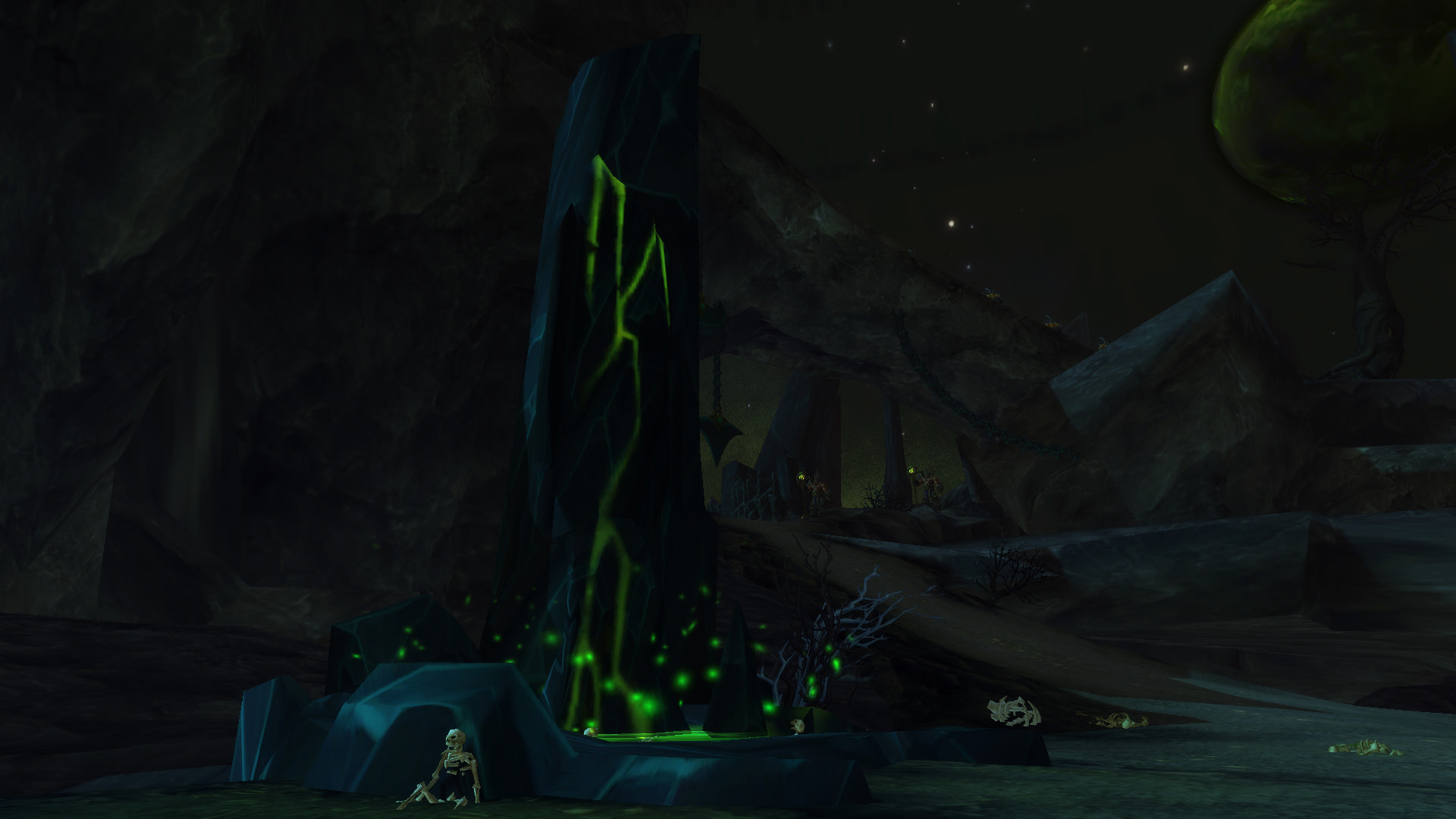

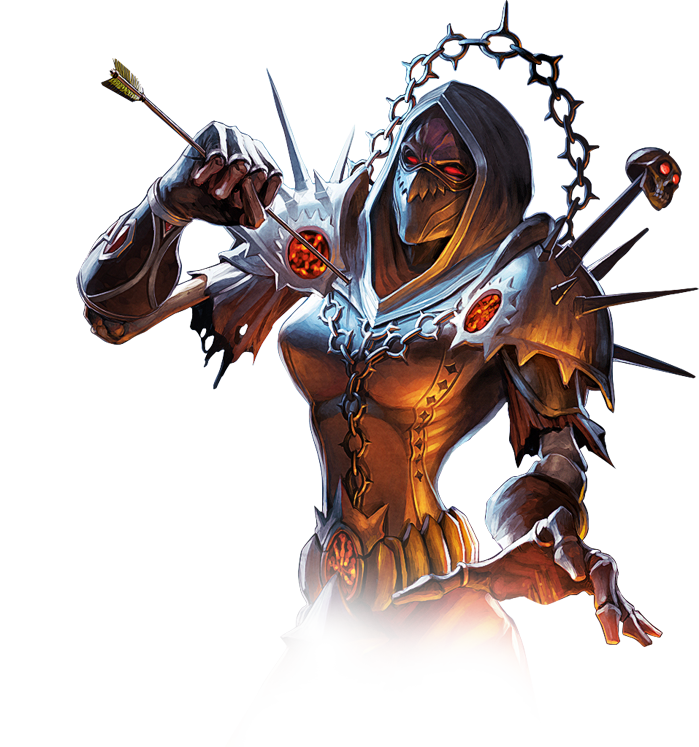
The Warlock
| Level | Proficiency Bonus |
Features | Cantrips Known |
Spells Known |
Spell Slots |
Spell Level |
|||
|---|---|---|---|---|---|---|---|---|---|
| 1st | +2 | Fel Study, Shadow Magic | 3 | 2 | 1 | 1st | |||
| 2nd | +2 | Life Tap | 3 | 3 | 2 | 1st | |||
| 3rd | +2 | Shadow Embrace | 3 | 4 | 2 | 2nd | |||
| 4th | +2 | Ability Score Improvement | 4 | 5 | 2 | 2nd | |||
| 5th | +3 | — | 4 | 6 | 2 | 3rd | |||
| 6th | +3 | Fel Study feature | 4 | 7 | 2 | 3rd | |||
| 7th | +3 | — | 4 | 8 | 3 | 4th | |||
| 8th | +3 | Ability Score Improvement | 4 | 9 | 3 | 4th | |||
| 9th | +4 | — | 4 | 10 | 3 | 5th | |||
| 10th | +4 | Fel Study feature | 5 | 10 | 3 | 5th | |||
| 11th | +4 | Fel Arcanum (6th level) | 5 | 11 | 3 | 5th | |||
| 12th | +4 | Ability Score Improvement | 5 | 11 | 4 | 5th | |||
| 13th | +5 | Fel Arcanum (7th level) | 5 | 12 | 4 | 5th | |||
| 14th | +5 | Fel Study feature | 5 | 12 | 4 | 5th | |||
| 15th | +5 | Fel Arcanum (8th level) | 5 | 13 | 4 | 5th | |||
| 16th | +5 | Ability Score Improvement | 5 | 13 | 4 | 5th | |||
| 17th | +6 | Fel Arcanum (9th level) | 5 | 14 | 5 | 5th | |||
| 18th | +6 | — | 5 | 14 | 5 | 5th | |||
| 19th | +6 | Ability Score Improvement | 5 | 15 | 5 | 5th | |||
| 20th | +6 | Shadow Master | 5 | 15 | 5 | 5th |
Sworn and Beholden
Warlocks are defined by the powers they wield, the power-ful fel that the have studied, granting them knowledge of powers hidden to mages and arcanists. A warlock might be a new found member of one of Azeroth's many cults hidden in ruins no longer used, studying fel in secrecy, attempting to unlock devastating powers.
The boons bestowed upon a warlock through their studies ranges from minor but lasting alterations to the warlock's being, to access of powerful spells. Unlike bookish wizards, warlocks supplement their magic with some faciliy at hand-to-hand combat.
Creating a Warlock
As you make your warlock character, spend some time thinking about why you decided to delve into the secrets of fel, its impressive and destructive nature. Were you seduced by the powers it had? What the fel promised for you? Did you seek out a warlock yourself? or perhaps you became addicted to its powers. How your studies came to be is for you to decide.
Quick Build
You can make a warlock quickly by following these sug-gestions. First, Intelligence should be your highest ability score, followed by Constitution.
Class Features
As a warlock, you gain the following class features.
Hit Points
- Hit Dice: 1d8 per warlock level
- Hit Points at 1st Level: 8 + your Constitution modifier
- Hit Points at Higher Levels: 1d8 + your Constitution modifier per warlock level after 1st
Proficiencies
- Armor: Light armor
- Weapons: Simple weapons, longswords, rapier, scimitar, shortswords
- Tools: None
- Saving Throws: Intelligence, Wisdom
- Skills: Choose two skills from Arcana, Deception, History, Intimidation, Investigation, Nature, and Religion
Equipment
You start with the following equipment, in addition to the equipment granted by your background:
- (a) shortsword or (b) any simple weapon
- (a) a component pouch or (b) an arcane focus
- (a) a scholar's pack or (b) a dungeoneer's pack
- Leather armor, and a dagger

Fel Study
At 1st level, you have begun studying into the powers and chaotic fel, uncovering knowledge of your choice: Study of Affliction, Study of Demonology, or Study of Destruction. Your choice grants you features at 1st level and again at 6th, 10th, and 14th level.
Shadow Magic
Your research of shadow and its devastating magic have given you facility with spells. See chapter 10 of the Player's Handbook for the general rules of spellcasting and chapter 6 of this book for for the warlock spell list.
Cantrips
You know three cantrips of your choice from the warlock spell list. You learn additional warlock cantrips of your choice at higher levels, as shown in the Cantrips Known column of the Warlock table.
Spell Slots
The Warlock table shows how many spell slots you have. The table also shows what the level of those slots is; all of your spell slots are the same level. To cast one of your warlock spells of 1st level or higher, you must expend a spell slot. You regain all expended spell slots when you finish a short or long rest.
For example. at 5th level, you have two 3rd-level spell slots. To cast the 1st-level spell false life, you must spend one of those slots, and you cast it at 3rd-level spell.
Spell Known of 1st Level and Higher
At 1st level, you know two 1st-level spells of your choice from the warlock spell list.
The Spells Known column of the Warlock table shows when you learn more warlock spells of your choice of 1st level and higher. A spell you choose must be of a level no higher than what's shown in the table's Slot Level column for your level. When you reach 6th level, for example, you learn a new warlock spell, which can be 1st, to 3rd level.
Additionally, when you gain a level in this class, you can choose one of the warlock spells you know and replace it with another spell from the warlock spell list, which also must be of a level for which you have spell slots.
Spellcasting Ability
Intelligence is your spellcasting ability for your warlock spells, so you use your Intelligence whenever a spell refers to your spellcasting ability. In addition, you use your Intelli-gence modifier when setting the saving throw DC for a war-lock spell you cast and when making an attack roll with one
Spell save DC = 8 + your proficiency bonus +
your Intelligence modifier
Spell attack modifier = your proficiency bonus +
your Intelligence modifier
Spellcasting Focus
You can use an arcane focus as a spellcasting focus for your warlock spells.
Life Tap
Starting at 2nd level, you are able to sacrifice your own life force to restore spell slots. As an action, you can deal 1d6 necrotic damage per spell level to yourself, and replenish an expended shadow magic spell slot.
Your maximum hit points are reduced by an amount equal to the damage taken, and are restored when you finish your next long rest.
Shadow Embrace
At 3rd level, you've been embraced by shadow, granted knowledge and powers unknown to most. You gain one of the following features of your choice.
Embrace of the Great Dark
You gain a grimoire from the Great Dark Beyond. When you gain this feature, choose three cantrips from any class's spell list. While the book is on your person, you can cast those cantrips at will. The cantrips are warlock spells for you and don't count against your cantrips known.
Additionally, you learn one spell of your choice from any class's spell list. The spell must have a level equal or lower than your shadow magic's spell level. You can cast that spell once per long rest without expending a spell slot. When you receive a replacement grimoire, you may change this spell to another from any class's spell list.
If you lose your grimoire, you can perform a 1-hour ritual to receive a replacement from the Great Dark. This ritual can be performed during a short or long rest, and destroys the previous book. The book turns to ash when you die.
Embrace of the Shadowlands
You can harvest the souls of the living. If you have a free hand, you can use your reaction when a creature dies within 90 feet of you, to trap its soul in a shard in that hand. The creature must have a CR of 1/2 or greater.
Each soul shard keeps its potency for 8 hours before crumbling into dust. You can never have more soul shards than your Warlock level.
You can expend soul shards within 5 feet of you to use one of the abilities below. Once a shard have been spent, it disappears.
Concentrated Souls. As a reaction when making a concentration check for a spell, you can spend a number of soul shards equal to the spell's level. You automatically succeed the concentration check, and have advantage on any additional concentration checks until the start of your next turn.
Drain Life. As an action, you can spend soul shards to force a target within 60 feet of you to make a Constitution saving throw. On a failed save, the target takes 1d4 necrotic damage per soul shard spent, or half as much on a successful save. You regain hit points equal to the damage dealt.
Healthstone. As an action, you can spend soul shards to create a healthstone, the stone keeps its potency for 24 hours before vanishing. As an action, a creature can crush the stone, regaining 1d4 hit points for each soul shard spent in its creation.
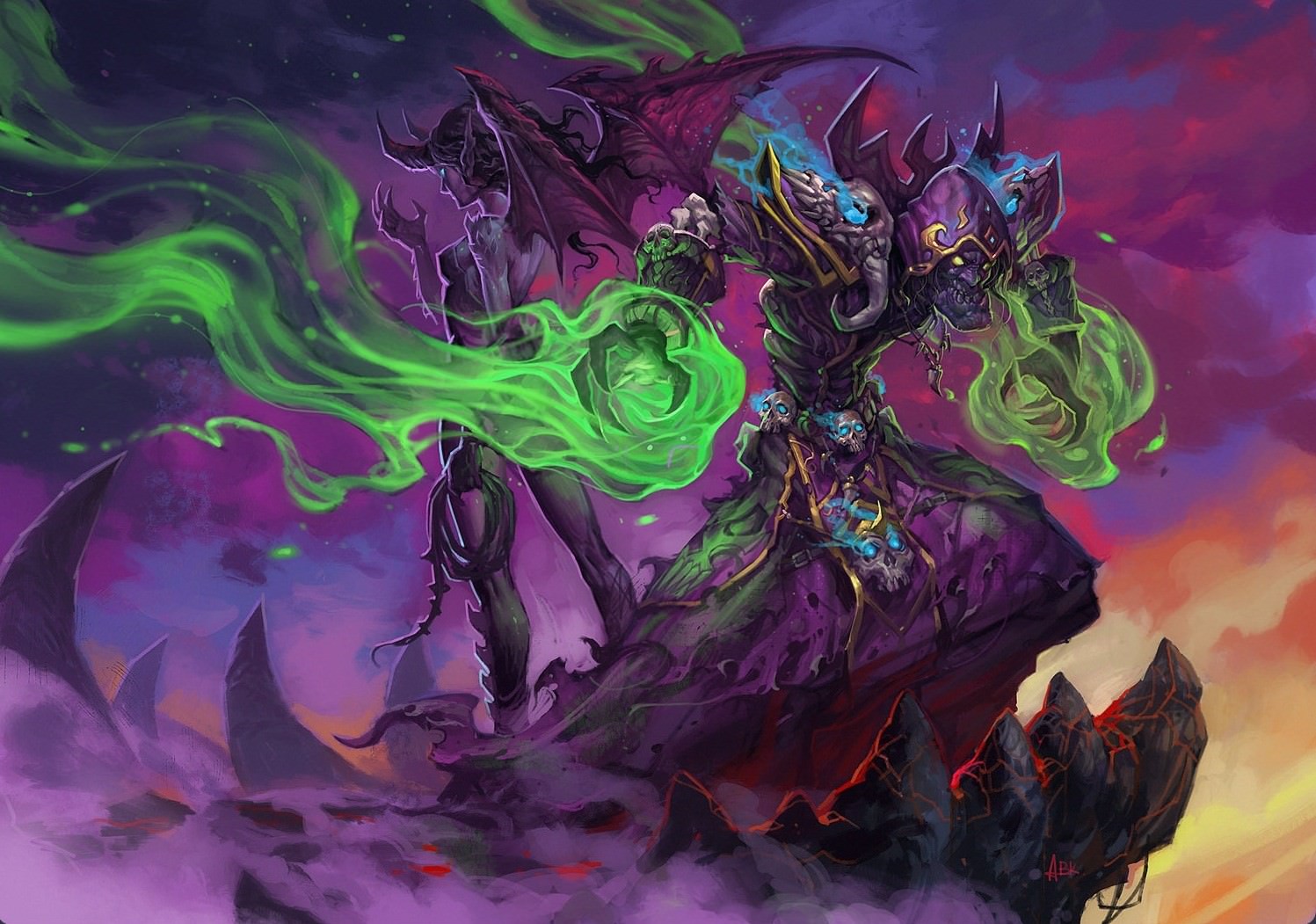

Embrace of the Twisting Nether
You learn to summon and bind a demon from the twisting nether to serve as your companion. With 1 hour of work and the expenditure of 50 gp worth of charcoal and herbs, you summon your choice of an imp, voidwalker, succubus or felhunter, each of which are described in Appendix C at the end of the book.
Your demon gains all the benefits of your Demon Servant ability. You can only have one demon summoned at a time.
If your demon companion is ever slain, you can call forth another using the rules mentioned above.
You can dismiss the demon companion permanently any time you choose, using 1 minute, or you can temporarily dismiss it to a pocket dimension. You can recall the demon from the pocket dimension, as an action, to reappear in any unoccupied space within 30 feet of you.
Demon Servant
Your demon companion gains a variety of benefits while summoned by you.
- The demon obeys your command as best it can. It rolls for initiative like any other creature, but you determine its actions, decisions, attitudes, and so on. If you are incapacitated or absent, your demon acts on its own.
- Your demon has abilities and game statistics determined in part by your level. In addition to the areas where it normally uses its proficiency bonus, your demon also adds its proficiency bonus to its AC. The demon uses your proficiency bonus rather than its own, and gains more abilities as you gain Warlock levels.
- For each level you gain after 3rd, your demons health increases by the average of its hit dice.
- The demon keeps its alignment, but it can't willingly do any actions that goes against your alignment.
Ability Score Improvement
When you reach 4th level, and again at 6th, 8th, 12th, 14th, 16th, and 19th level, you can increase one ability score of your choice by 2, or you can increase two ability scores of your choice by 1. As normal, you can't increase an ability score above 20 using this feature.
Fel Arcanum
At 11th level, you've delved deep into fel and unveil magical secrets called arcanums. Choose one 6th-level spell from the warlock spell list as this arcanum.
You can cast your arcanum spell once without expending a spell slot, after which you must finish a long rest before you can do so again.
At higher levels, you gain more warlock spells of your choice that can be cast in this way
At higher levels, you gain more warlock spells of your choice that can be cast in this way: one 7th-level spell at 13th level, one 8th-level spell at 15th level, and one 9th-level spell at 17th level. You regain all uses of your Fel Arcanum when you finish a long rest.
Shadow Master
At 20th level, you can draw on your inner reserve of shadow to regain expended spell slots. You can spend 1 minute to regain all your expended spell slots from your Spellcasting feature. Once you regain spell slots with this feature, you cannot do so again until you finish a long rest.
Fel Study
Warlocks have come into contact with the powerful fel, studying its uncontrollable energy. Three such studies exist, each delving into a different aspect of the powers wielded by warlocks.
Study of Affliction
Warlocks that study affliction become masters of shadow-touched powers, unlike priests of the shadow priesthood, warlocks delight in the use of fel as a force to cause pain and leaving their enemies in whirls of torment.
Expanded Spell List
Affliction lets you choose from an expanded list of spells when you learn a warlock spell. The following spells are added to the warlock spell list for you.
Affliction Expanded Spells
| Spell Level | Spells |
|---|---|
| 1st | fog cloud, mind blast |
| 2nd | enlarge/reduce, phantasmal force |
| 3rd | counterspell, slow |
| 4th | blight, vitriolic sphere |
| 5th | cloudkill, hold monster |
Curse of Agony
Starting at 1st level, you gain the ability to place a baleful curse on someone. As a bonus action, choose one creature you can see within 30 feet of you. The curse ends early if the target dies, you die, or you are incapacitated. The target is cursed for 1 minute. Until the curse ends, you gain the following benefits:
- You gain a bonus to damage rolls against the cursed target equal to your proficiency bonus.
- Any attack roll you make against the cursed target is a critical hit on a roll of 19 or 20 on the d20.
You can use this feature twice. You regain expended uses when you finish a short or long rest.
Nether Ward
At 6th level, you learn to magically ward yourself against attacks and to use an enemey's failed strike as an opening for yourself. When a creature makes an attack roll against you, you can use your reaction to impose disadvantage on that roll. If the attack misses you, your next attack roll against the creature has advantage if you make it before the end of your next turn.
Once you use this feature, you can't use it again until you finish a short or long rest.
Unstable Affliction
Upon reaching 10th level, when you deal damage to a crea-ture under the effects of your Curse of Agony, you can use your bonus action to attempt to afflict it. The target must succeed on a saving throw against the chosen affliction.
On a failed save, the creature gains the effects of the corruption until the end of your next turn.
- Weakness (Strength Save). Weapon attacks deal half damage and Strength saving throws are made with disadvantage.

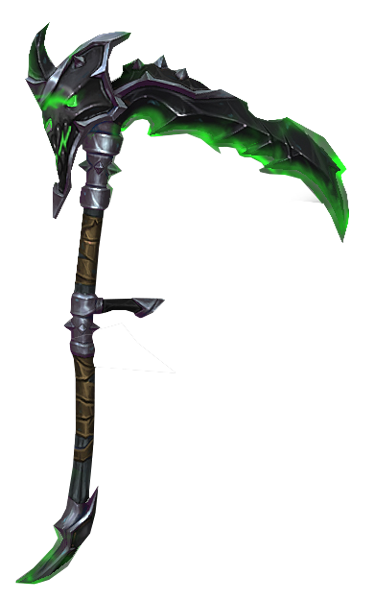
- Graceless (Dexterity Save). Attack rolls and Dexterity saving throws are made with disadvantage.
- Illness (Constitution Save). The creature can't regain hit points and Constitution saving throws are made with disadvantage.
- Stupidity (Intelligence Save). The creature must use its action to use their bonus action or movement.
- Negligence (Wisdom Save). The creature uses its movement on its turn to move towards you by the most direct route possible.
- Abhorrence (Charisma Save). The creature becomes frightened of you, and uses its turn to move more than 60 feet away from you if possible.
Seed of Corruption
At 14th level, you can plunge a creature into an illusory realm of the horrific twisting nether. As an action, choose a creature that you can see within 60 feet of you. It must make a Wisdom saving throw against your warlock spell save DC. On a failed save, it is charmed or frightened by you (your choice) for 1 minute or until your concentration is broken (as if you are concentrating on a spell). This effect ends early if the creature takes any damage.
Until this illusion ends, the creature thinks it is lost in the eternal cosmos of the twisting nether. The creature can see and hear only itself, you, and the illusion around it.
You must finish a short or long rest before you can use this feature again.
Study of Demonology
Warlocks that study demonology harness the powers of the malefic demon beings of the twisting nether. Uncovering secrets unknown by residents of Azeroth, and twisting their magic with the aid of demonic powers from the great dark.
Expanded Spell List
Demonology lets you choose from an expanded list of spells when you learn a warlock spell. The following spells are added to the warlock spell list for you.
Demonology Expanded Spells
| Spell Level | Spells |
|---|---|
| 1st | charm person, sudden awakening |
| 2nd | find steed, mind blast |
| 3rd | animate dead, slow |
| 4th | charm monster, dominate beast |
| 5th | hold monster, planar binding |
Fiendish Influence
Starting at 1st level, you learn the friends cantrip, which counts as a warlock cantrip for you.
Additionally, fiends have difficulty harming you. If a fiend targets you directly with an attack or a harmful spell, that creature must make a Wisdom saving throw against your spell save DC (a fiend needn't make the save when it includes you in an area effect, such as the explosion of fireball). On a failed save, the creature must choose a new target or forfeit targeting someone instead of you, poten-tially wasting the attack or spell. On a successful save, the creature is immune to this effect for 24 hours. A fiend is also immune to this effect for 24 hours if you target it with an attack or harmful spell.
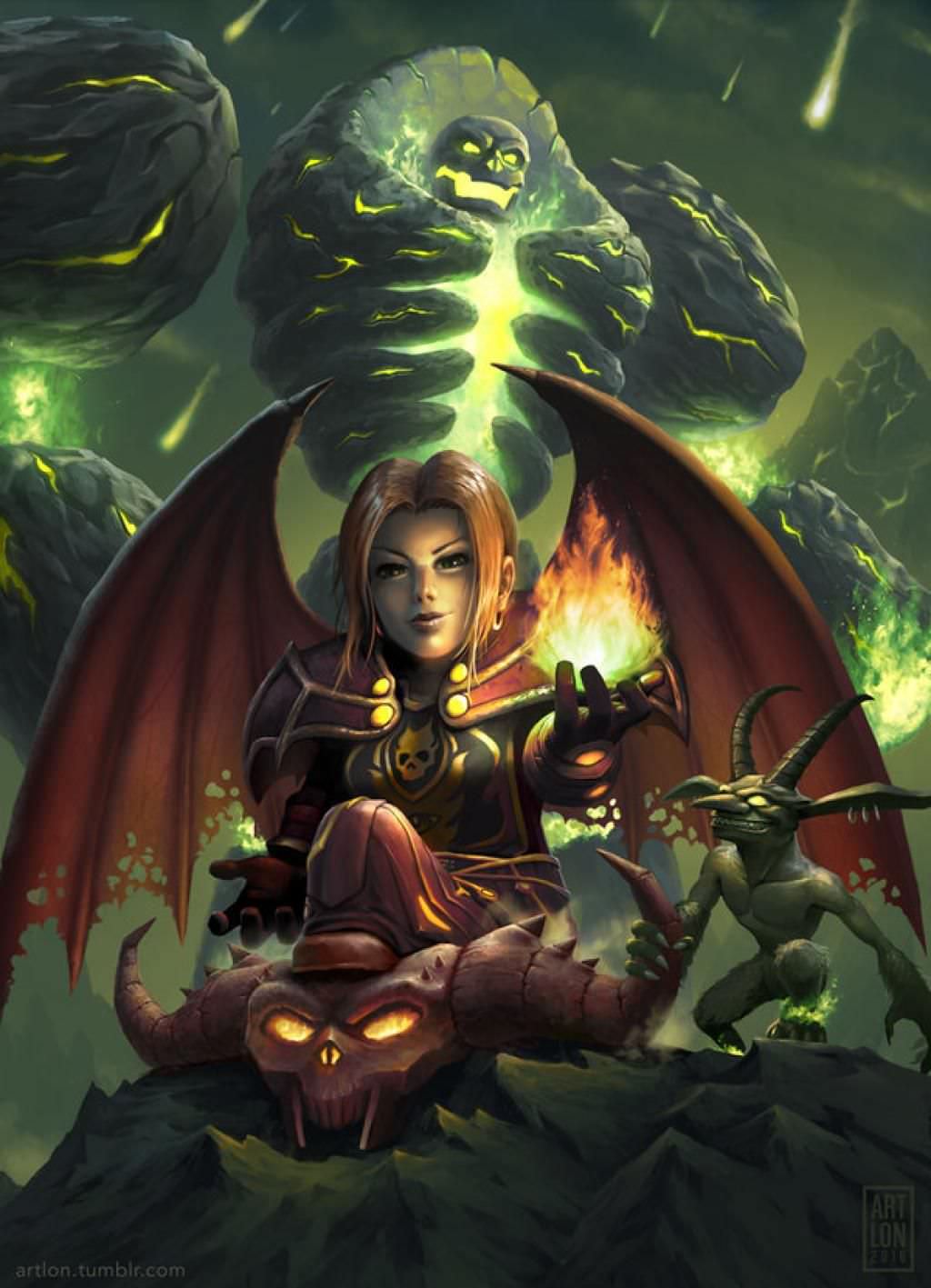

Wild Imps
Upon reaching 6th level, your spells are able of open rifts into the twisting nether to bring forth wild imps. Each time you roll a 20 on the d20 roll for a spell attack, or deal the killing blow to a creature of significant threat (DM's discre-tion). You summon an imp in an unoccupied space within 30 feet of you. A statblock can be found in Appendix C.
A summoned imp obeys your commands as best it can. It rolls initiative like any other creature, but you determine its actions, decisions, attitudes, and so on. If you are inca-pacitated or absent, the imp acts on its own.
Imps stay for 1 minute before being dragged back to the twisting nether. You can have a number of imps summoned equal to your proficiency bonus.
Demonic Resilience
Starting at 10th level, you can choose one damage type when you finish a short or long rest. You gain resistance to that damage type until you choose a different one with this feature. Damage from magical weapons or silver weapons ignores this resistance.
Mark of Service
At 14th level, you gain the ability to infect fiends minds. You can use your action to touch an incapacitated fiend. That creature is charmed by you until a remove curse spell is cast on it, the charmed condition is removed from it, you use this feature again, or 24 hours pass.
You can communicate telepathically with the charmed creature as long as the two of you are on the same plane.
Study of Destruction
Warlocks that study destruction meddle with the energy of fel and fire, combining the two to create devastating spells. They require little motivation for the havoc they wreak, and are happy to revel in the destruction they cause, thrilled at any opportunity to watch the world erupt in discord.
Expanded Spell List
Destruction lets you choose from an expanded list of spells when you learn a warlock spell. The following spells are added to the warlock spell list for you.
Destruction Expanded Spells
| Spell Level | Spells |
|---|---|
| 1st | burning hands, witch bolt |
| 2nd | aganazzar's scorcher, scorching ray |
| 3rd | erupting earth, flame arrows |
| 4th | fire shield, wall of fire |
| 5th | flame strike, planar binding |
Ignite
At 1st level, as an action, you can magically ignite a flam-mable object you touch with your hand.
Chaos Magic
Starting at 1st level, whenever you cast a spell of 1st level or higher that deals fire or necrotic damage, you can use your bonus action and choose a creature hit by your spell. Volatile magic erupts in a 10 feet radius around the target, dealing fire or necrotic damage equal to your warlock level to all creatures within range.
Havoc
Starting at 6th level, you can duplicate certain spell effects. When you cast a spell with a spell slot that targets only one creature and doesn't have a range of self, you may choose to target a second creature in range with the same spell.
Once you use this feature, you can't use it again until you finish a short or long rest.
Soul Fire
Beginning at 10th level, you gain the ability to use your tapped life to empower your spells. Whenever you use your Life Tap feature, you are able to reroll a number of damage dice up to your Intelligence modifier for the next spell you cast within 1 minute.
Chaos Bolt
At 14th level, you are able to hurl a roaring bolt of chaotic energy towards a target. As an action, choose a creature within 120 feet of you, the target must make a Constitution saving throw. Taking 7d8 necrotic plus 30 fire damage on a failed save, or half as much on a successful one.
A creature killed by this feature and everything it is wear-ing and carrying, except magic items, are reduced to a pile of fine gray dust. The creature can be restored to life only by True Resurrection or Wish.
Once you have used this feature you cannot use it again until you have finished a long rest.
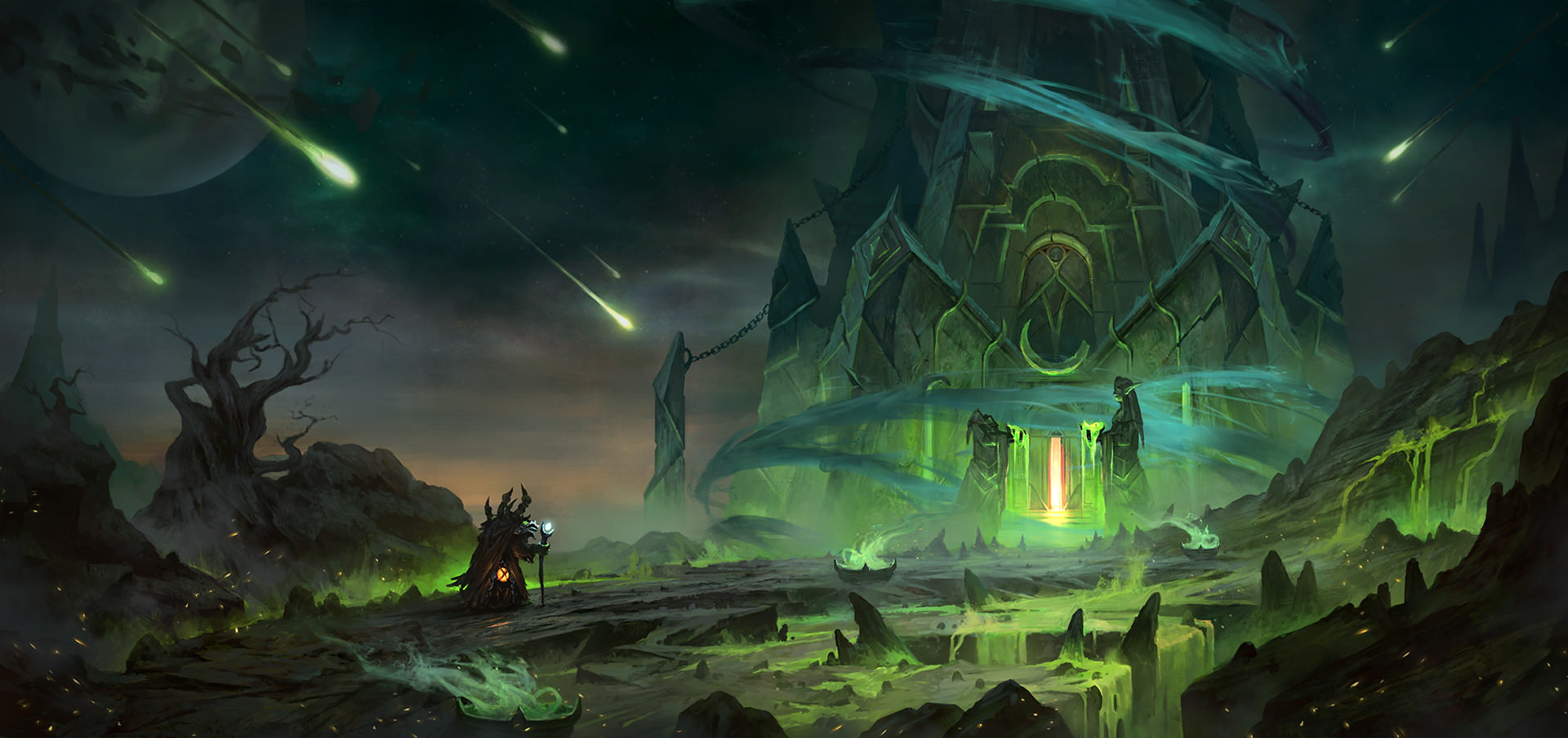

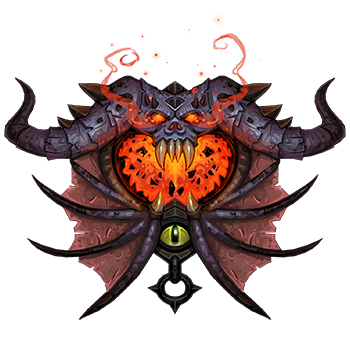
Warrior
Now, watch them attack me. Pitiful! Do they think to take vengeance for their fallen? Do they come to challenge ME? I, who have won a hundred wars? I, who stood alone against thousands and still shouted for my enemies to come? No, these saurok will crumple before me like paper before the flame!
— Skeer the Bloodseeker
A human in clanging plate armor holds her shield high before her as she charges toward the massed kobolds. A night elf behind her, clad in studded leather armor, peppers the kobolds with arrows loosed from his exquisite bow. The dwarf nearby shouts orders, helping the two combatants coordinate their assault to the best advantage.
An orc in chainmail interposes his shield between the ogre's club and his companion in a swift action, knocking the deadly blow aside. His companion, a blood elf in scale armor, swings two scimitars in a blinding whirl as she circles the ogre, looking for a blind spot in its defenses.
A gladiator fights for sport in an arena, a master with his trident and net, skilled at toppling foes and moving them around for the crowd's delight, and his own tactical advantage. His opponent's sword flares with blue light an instant before she sends lightning flashing forth to smite him.
Ancient Practice
For as long as war has raged, heroes from every race have aimed to master the art of battle. Warriors combine strength, leadership, and a vast knowledge of arms and armor to wreak havoc in glorious combat. Some protect from the front lines with shields, locking down enemies while allies support the warrior from behind with spell and bow. Others forgo the shield and unleash their rage at the closest threat with a variety of deadly weapons.
The warrior’s battle cries embolden friends and leave foes cowering in fear. With legendary precision, warriors target the smallest gaps in armor and slice at hamstrings in a blur of steel.
Every dragon slain, corrupted tyrant toppled, and demon banished from Azeroth has trembled in the face of these lords of war.
Warriors are the quintessential fearless fighters on the battlefield, and their pure martial prowess inspires courage in allies and despair in enemies. Experts in all manner of melee weaponry and possessing incredible physical strength and skill, Warriors are perfectly suited to serve as frontline combatants and battlefield commanders.
Well-Rounded Specialists
Warriors learn the basics of all combat styles. Every warrior can swing an axe, fence with a rapier, wield a longsword or a greatsword, use a bow, and even trap foes in a net with some degree of skill. Likewise, a warrior is adept with shields and every form of armor. Beyond that basic degree of familiarity, each fighter specializes in a certain style of combat. Some concentrate on protection their allies from mortal blows, some on fighting with two weapons at once, and some prefer a single large weapon able to be wielded with extraordinary force. This combination of broad general ability and extensive specialization makes fighters superior combatants on battlefields and in dungeons alike.


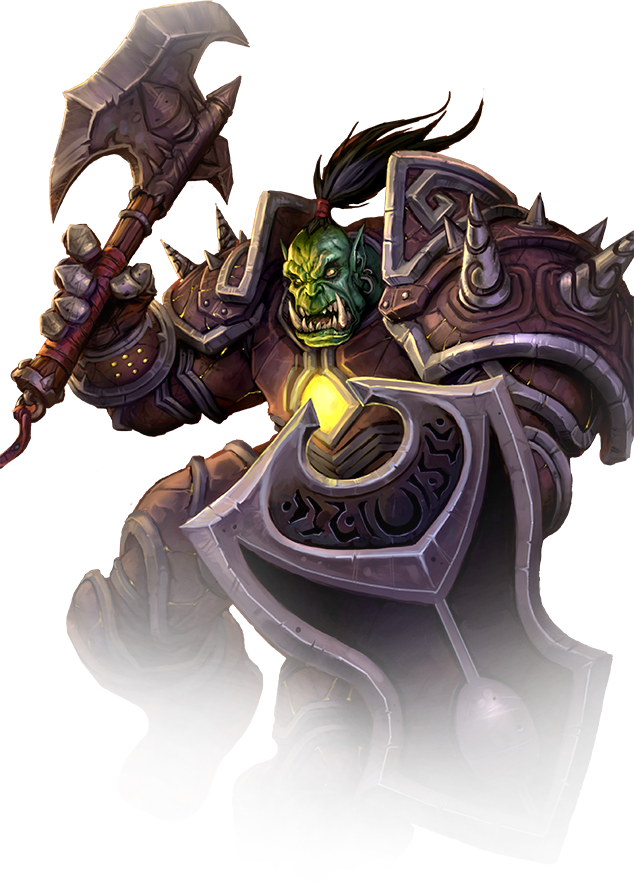
The Warrior
| Level | Proficiency Bonus |
Features | Rages | Rage Reserve |
|---|---|---|---|---|
| 1st | +2 | Fighting Style, Second Wind | — | — |
| 2nd | +2 | Rage | 2 | 1 |
| 3rd | +2 | Martial Stance | 3 | 2 |
| 4th | +2 | Ability Score Improvement | 3 | 2 |
| 5th | +3 | Extra Attack | 3 | 3 |
| 6th | +3 | Action Surge (one use) | 4 | 3 |
| 7th | +3 | Martial Stance feature, Rage Improvement | 4 | 4 |
| 8th | +3 | Ability Score Improvement | 4 | 4 |
| 9th | +4 | Martial Stance feature | 4 | 5 |
| 10th | +4 | Dauntless, Rage Improvement | 4 | 5 |
| 11th | +4 | Martial Stance feature | 4 | 6 |
| 12th | +4 | Ability Score Improvement | 5 | 6 |
| 13th | +5 | — | 5 | 7 |
| 14th | +5 | Ability Score Improvement | 5 | 7 |
| 15th | +5 | Martial Stance feature, Rage Improvement | 5 | 8 |
| 16th | +5 | Ability Score Improvement | 5 | 8 |
| 17th | +6 | Action Surge (two uses) | 6 | 9 |
| 18th | +6 | Martial Stance feature | 6 | 9 |
| 19th | +6 | Ability Score Improvement | 6 | 10 |
| 20th | +6 | Extra Attack (2) | 6 | 10 |
Creating a Warrior
As you build your warrior, think about two related elements of your character's background: Where did you get your combat training, and what set you apart from the mundane fighters around you? Were you particularly ruthless? Did you get extra help from a mentor, perhaps because of your exceptional dedication?
You might have enjoyed formal training in a noble's army or in a local militia. Perhaps you trained in a war academy, learning strategy, tactics, and military history. Or you might be self-taught—unpolished but well tested. Did you take up the sword as a way to escape the limits of life on a farm, or are you following a proud family tradition? Where did you acquire your weapons and armor? They might have been military issue or family heirlooms. or perhaps you scrimped and saved for years to buy them. Your armaments are now among your most important possessions—the only things that stand between you and death's embrace.
Quick Build
You can make a warrior quickly by following these suggestions. First, Strength should be your highest ability score, followed by Constitution.
Class Features
As a warrior, you gain the following class features.
Hit Points
- Hit Dice: 1d10 per warrior level
- Hit Points at 1st Level: 10 + your Constitution modifier
- Hit Points at Higher Levels: 1d10 + your Constitution modifier per warrior level after 1st
Proficiencies
- Armor: All armor, shields
- Weapons: Simple weapons, martial weapons, firearms
- Tools: None
- Saving Throws: Strength, Constitution
- Skills: Choose two skills from Acrobatics, Animal Handling, Athletics. History, Insight, Intimidation, Perception, and Survival
Equipment
You start with the following equipment, in addition to the equipment granted by your background:
- (a) chain mail or (b) leather, longbow, and 20 arrows
- (a) a martial weapon and a shield or (b) two martial weapons
- (a) a light crossbow and 20 bolts or (b) two handaxes
- (a) a dungeoneer's pack or (b) an explorer's pack


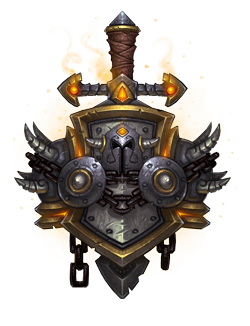
Fighting Style
You adopt a particular style of fighting as your specialty. Choose one of the following options. You can't take a Fighting Style option more than once, even if you later get to choose again.
Defense
While you are wearing armor, you gain a +1 bonus to AC.
Dueling
When you are wielding a melee weapon in one hand and no other weapons, you gain a +2 bonus to damage rolls with that weapon.
Great Weapon Fighting
When you roll a 1 or 2 on a damage die for an attack made with a melee weapon that you wield with two hands, you can reroll the die and must use the new roll, even if the new roll is a 1 or a 2. The weapon must have the two-handed or versatile property for you to gain this benefit.
Protection
When a creature you can see attacks a target other than you that is within 5 feet of you. you can use your reaction to impose disadvantage on the attack roll. You must be wielding a shield.
Two-Weapon Fighting
When you engage in two-weapon fighting, you can add your ability modifier to the damage of the second attack.
Second Wind
You have a limited well of stamina that you can draw on to protect yourself from harm. On your turn, you can use a bonus action to regain hit points equal to Id10 + your warrior level.
Once you use this feature, you must finish a short or long rest before you can use it again.
Rage
At 2nd level, you can fight with primal ferocity in battle. On your turn, you can enter a rage as a bonus action.
When you rage, you gain a number of rage points equal to your Rage Reserve column. You gain 1 additional point while raging each time you hit with a melee weapon attack you didn't spend rage points on. You can never have more rage points than your Warrior level.
You can spend these rage points to fuel various rage features. At 2nd level, you know two rage features of your choice from the list below. You learn an additional rage fea-ture of your choice at 7th, 10th, and 15th level. Each time you learn a rage feature, you can also replace one feature you know with a different one from the list.
Your rage lasts for 1 minute. It ends early if you are knocked unconscious or if your turn ends and you haven't attacked a hostile creature since your last turn or taken damage since then. You can also end your rage on your turn as a bonus action.
Once you have raged the number of times shown for your warrior level in the Rages column of the Warrior table, you must finish a long rest before you can rage again.
Some of your rage features require your target to make a saving throw to resist the feature's effect. The saving throw DC is calculated as follows:
Rage save DC = 8 + your proficiency bonus +
your Strength modifier
Berserker Rage
You can spend 3 rage points and use your action to end one effect that is causing you to be charmed or frightened.
Charge
You can spend 2 rage points and take the Dash action, if you move at least 20 feet straight towards a target you can make one weapon attack against it with advantage.
Deep Wounds
When you hit another creature with a weapon that deals piercing or slashing damage, you can spend 3 rage point to attempt to deepen your hit. The target must succeed on a Constitution saving throw, or have all healing received reduced by your Warrior level for 1 minute. Target may repeat the saving throw at the end of each of their turn.
Disarm
You can spend 2 rage points before making an attack to attempt to disarm the target. If you hit, the target loses the grip on their weapon, the weapon lands in an empty space of your choice within 10 feet of the target.
Execute
When you hit with a weapon attack, you can spend 6 rage points to ferociously wound the target, dealing extra weapon damage equal to your Warrior level.
Hamstring
You can spend 3 rage points before making an attack to attempt to hinder the target's movement. If your attack hits, the target must make a Constitution saving throw. The target's speed is reduced to 0 on a failed save, or half on a successful one, until the start of your next turn.
Ignore Pain
You can spend 2 rage points as a reaction when hit by a weapon attack to give yourself resistance towards bludgeoning, piercing, and slashing damage from nonmagical attacks until the start of your next turn.
Raging Blow
You can spend 1 or more rage points when rolling damage for a weapon attack. When done, you may reroll 1 damage die for each rage spend, you must use the new roll.
Martial Stance
At 3rd level, you choose a martial stance that you strive to emulate in your combat styles and techniques. Choose Arms, Fury, or Protection, all detailed at the end of the class description. The stance grants you features at 3rd level and again at 7th, 9th, 15th, and 18th level.
Ability Score Improvement
When you reach 4th level, and again at 8th, 12th, 14th, 16th, and 19th level, you can increase one ability score of your choice by 2, or you can increase two ability scores of your choice by 1. As normal, you can't increase an ability score above 20 using this feature.
Extra Attack
Beginning at 5th level, you can attack twice, instead of once, whenever you take the Attack action on your turn.
The number of attacks increases to three when you reach 20th level in this class.

Action Surge
At 6th level, you can push yourself beyond your normal limits for a moment. On your turn, you can take one additional action on top of your regular action and a possible bonus action.
Once you use this feature, you must finish a short or long rest before you can use it again. Starting at 17th level, you can use it twice before a rest, but only once per turn.
Dauntless
By 10th level, your instincts are so honed that you have advantage on initiative rolls.
In addition, if you are surprised at the beginning of combat, you can act normally on your first turn if you choose to enter a rage as part of that turn.
Martial Stances
Different fighters choose different approaches to perfecting their fighting prowess. The martial stance you choose to emulate reflects your approach.
Arms
As a childhood of sparring defines a warrior’s destiny, so too does one’s choice of weapon determine their role on the battlefield. Arms warriors gravitate toward two-handed weapons instinctively. Two-handed weapons allow them to deliver devastating, overpowering blows, fully exploiting their enemies’ weaknesses.
Overpower
Beginning when you choose this stance at 3rd level, when-ever you hit with a weapon that you're proficient with and deal damage, the weapon's damage increases by an amount based on your Warrior level, as shown in the Overpower Bonus table.
Overpower Bonus
| Warrior Level | Damage Increase |
|---|---|
| 3rd | 1d4 |
| 10th | 1d6 |
| 16th | 1d8 |
| 20th | 1d10 |
Seasoned Soldier
Starting at 7th level, if you spend 1 minute observing or interacting with another creature outside of combat, you can learn certain information about its capabilities com-pared to your own. The DM tells you if the creature is your equal, superior, or inferior in regard to two of the following characteristics of your choice:
- Strength score
- Dexterity score
- Constitution score
- Armor Class
- Current hit points
- Total class levels (if any)
- Warrior class levels (if any)
Additional Fighting Style
At 9th level, you choose a second option from the Fighting Style class feature.
Colossus Smash
Starting at 11th level, you can spend 2 rage points before taking the attack Action. If one of your weapon attacks hits, the target takes normal weapon damage and allies gain advantage on weapon attacks against that creature until the start of your next turn.
Improved Critical
Upon reaching 15th level, your weapon attacks score a critical hit on a roll of 19 or 20.
Opportunity Strikes
Starting at 18th level, you respond to openings in enemies defense with unmatched ferocity. In combat, you get a special reaction that you can take once on every creature's turn, except your turn. You can use this special reaction only to make an opportunity attack, and you can't use it on the same turn that you take your normal reaction.
Fury
On the battlefield and in the arena, the most feared combat-ants are often the furious berserkers who lust for battle and thirst for blood. Through a lifetime of training and sparring, these merciless warriors have become masters of carnage.
Rampage
Beginning when you chose this stance at 3rd level, your intensity in battle allows you to shrug off harm and helps you strike true. As a bonus action on your turn, you can give yourself advantage on weapon attack rolls until the end of the current turn. When done, you also gain 5 temporary hit points. The number of temporary hit points increases when you reach certain levels in this class, creasing to 10 at 10th level and 15 at 15th level.
You can use this feature three times, and you regain all expended uses of it when you finish a long rest.
Titan's Grip
Starting at 7th level, you can wield melee weapons that have the two-handed property with one hand, gaining all of the benefits that otherwise comes with the weapon. To do this you must be proficient in the weapons use.
Additionally, versatile one-handed weapons now deal their versatile damage die instead.
Tireless Rampage
Upon reaching 9th level, when you roll initiative and have no uses of rampage remaining, you regain one use.
Bloodthirst
Starting at 11th level, you can spend 1 rage points before taking the Attack action to make your first successful attack this turn deal twice your ability modifier to its damage.



Into The Fray
Upon reaching 15th level, creatures provoke an opportunity attack from you when they move 5 feet or more while within your reach, and if you hit a creature with an oppor-tunity attack, the target's speed is reduced to 0 until the end of the current turn.
Anger Management
At 18th level, if you take damage that reduces you to 0 hit points and doesn't kill you outright, you can use your reaction to delay falling unconscious and immediately take an extra turn. While you have 0 hit points during that extra turn, taking damage causes death saving throw failures as normal, and three death saving throw failures can still kill you. When the extra turn ends, you fall unconscious if you still have 0 hit points. Once you use this feature, you can't use it again until you finish a long rest.
Protection
Like their counterparts, protection warriors are virtually bred for physical dominance, having been raised in the art of close-quarters combat. They demonstrate an uncanny knack for the use of a shield, nullifying an opponent’s advances and creating opportunities for counterattacks.
Taunt
Beginning when you choose this stance at 3rd level, you can use your action to taunt creatures of your choice within 30 feet of you. Creatures within range must succeed on a Wisdom saving throw (DC 8 + your Strength modifier + your proficiency bonus) or have disadvantage when attacking a creature besides you for 1 minute. A target can repeat the saving throw at the end of their turn, ending the taunt on a success.
Once you use this feature, you can't use it again until you finish a short or long rest.
Intercept
Starting at 7th level, you learn to fend off strikes directed at you, or other creatures nearby. If you or a creature you can see within 5 feet of you is hit by an attack, you can roll 1d8 as a reaction if you're wielding a melee weapon or a shield . Roll the die, and add the number rolled to the target's AC against that attack. If the attack still hits, the target has resistance against the attack's damage.
You can use this feature a number of times equal to your Constitution modifier (minimum of once), and you regain all expended uses of it when you finish a long rest.
Never Surrender
Beginning at 9th level, you are able to use your second wind feature twice between short or long rests. When you succeed a death saving throw, you can expend a use of Second Wind whilst unconscious.
Shield Slam
Starting at 11th level, immediately after you hit a creature with a melee attack on your turn, you can spend 3 rage points to make a shield slam as a bonus action. If you hit, the target takes bludgeoning damage equal to your Warrior level, and must succeed on a Constitution saving throw (DC 8 + your Strength modifier + your proficiency bonus) or be stunned until the end of it's next turn.
You must be wielding a shield to use this feature.
Unstoppable Force
Starting at 15th level, you are able to soften even the most devastating blows, and push against any one trying to tumble you. Critical hits against you becomes normal hits, any attempts to knock you prone has disadvantage, and the distance you can be shoved is halved.
Last Stand
At 18th level, at the start of each of your turns, you regain hit points equal to 5 + your constitution modifier if you have no more than half of your hit points left. You don't gain this benefit if you have 0 hit points.


Prestige Classes
Prestige classes offer players a way to delve into uniqie class options, classes that are not so easily taught or learnt. The Death Knight requires the aid of the powerful Val'kyr, and a personal sacrifice to be made, a sacrifice of blood, and the Demon Hunter, Illidan's elite soldiers, requires more than a simple blood sacrifice, it requires cunning actions to be taken, personal scars to be made that will last the characters life.
Both classes are powerful in their own ways, and both will grant the individual features unique to them. They each require the player to complete special tasks, a brief description of the tasks are presented in the class Prerequisites. For a more indepth look of what must be done, see Appendix D at the end of this book.
Joining a Prestige Class
In order to join a prestige class, you must first check with your Dungeon Master. A DM can opt to include or disallow prestige classes in their game. Prestige classes require you to undertake specific actions in the game so that your character can begin pursuing that class. If those actions aren't alreaady possible in your campaign, talk to your DM about integrating the prestige class that interests you.
A prestige class uses the normal rules for multiclassing (See chapter 5, "Customization Options," later in this book). When your character is ready to advance a level, you can choose to gain a level in a prestige class. Your levels in all your classes, including prestige classes, are added together to determine your character level.
Prerequisites
Taking up a prestige class through multiclassing involves meeting certain prerequisites, just as with multiclassing into a standard class. You must meet the ability score prerequisites for your current class and for the prestige class in order to qualify for it.
A prestige class requires a minimum character level and a minimum score in at least one ability, as well as requiring that you complete a specific deed before being able to take up that class.
Experience Points
Just as with the standard rules for multiclassing, the experience point cost to gain a level is always based on your total character level, not your level in a particular class.
Hit Points and Hit Dice
Each prestige class specifies the hit points you gain from it. You add together the Hit Dice granted by all your classes and prestige classes to determine your pool of Hit Dice. If the Hit Dice are the same die type, you pool them together.
Proficiency Bonus and Proficiencies
Your proficiency bonus is always based on your total character level, not your level in a particular class. A prestige class specifies whether it grants proficiencies when you enter it.
Prestige Class Features
You gain prestige class features just like normal class features. Sometimes, a prestige class can improve features you have gained from other classes. If a prestige class grants Channel Divinity, Extra Attack, or Unarmored Defense, that feature is treated the same way as if you had gained it from multiple standard classes.
Spellcasting
The Death Knight prestige class grants spellcasting. It provides details on how to determine your overall spellcasting ability, using the rules for spellcasting and multiclass character.
Prestige Classes
| Class | Description | Hit Die | Primary Ability | Saving Throws | Armor and Weapons | ||
|---|---|---|---|---|---|---|---|
| Death Knight | A unholy warrior, wielding necrotic powers to aid themselves and defeat their enemies. | d10 | Strength | Strength | All armor, simple and martial weapons | ||
| Demon Hunter | An agile combatant made through personal sacrifices, imbued with the powers of fel. | d6 | Dexterity | Dexterity | Simple and martial weapons, warglaives |
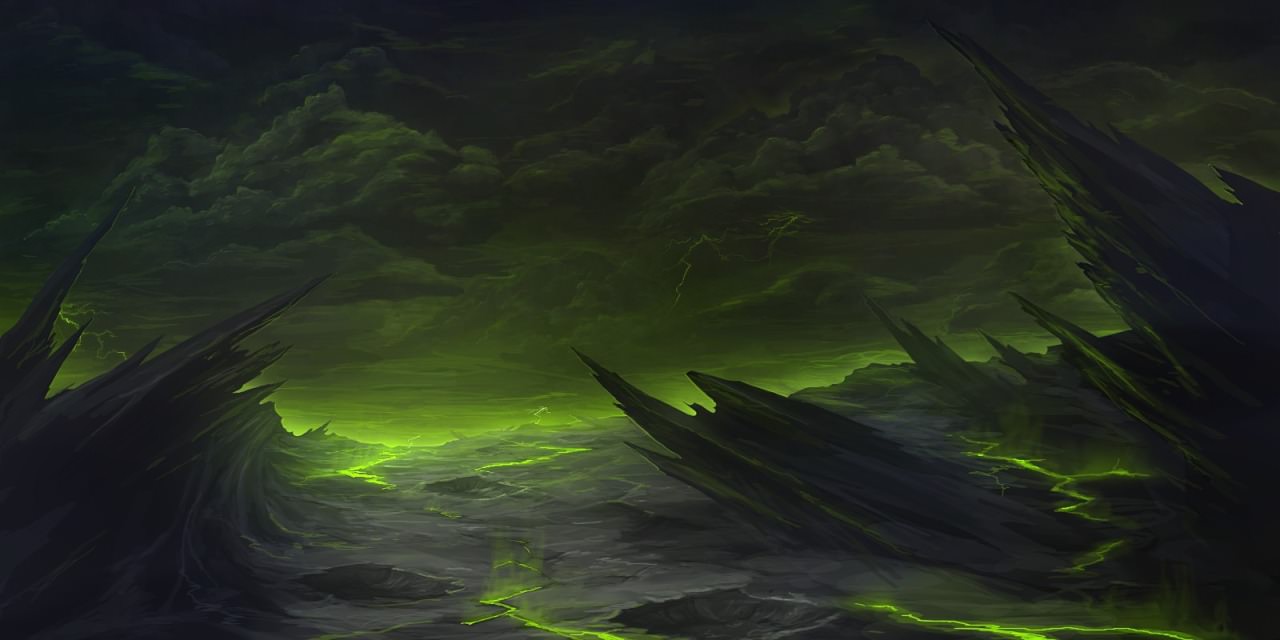

Death Knight
A hero... that's what you once were. You stood against the shadow, and purchased another dawn for this world at the cost of your life. But the evil you fought is not so easily banished, the victory you claimed not so easily held. The specter of death looms over this world again, it has found new champions to bring about its final reign. Knights of darkness, this is the hour of your dark rebirth . . .
— A knight of the Ebon Blade
A human clad in heavy armor, wielding a greatsword with both hands, as he clutches it close, runes flash along its edge, leaving a stream of black smoke behind his swings.
An orc surrounded by kobolds, forces his axe into the ground as the earth around him wither and die, frightening the kobolds as they run for their life.
Biting cold rushes through the battle, as a lone blood elf walks forward, her armor clad in a layer of frost, she walks with firm steps, freezing the earth beneath her feet.
No matter their past calling, death knights serve the powers of death, wielding weapons infused with runes of power. They are ruthless and practical warriors resurrected by the powerful val'kyrs and granted the powers of the revered death knights of the Ebon Hold. Although these warriors seem dead at a glance, they are very much alive.
Outcast for Life
Although these death knights are not undead as the genera-tions before them, they carry much of the essence of the knights that came before them, and from a distance have the look of a dead person, their blank white stares peering at the world around them. Even though they are alive and not emotionless, it means little to most they meet who shun them because of what they have become. Death knights are bringers of death and destroy, a fact not easily forgotten.
This has lead most death knights down a solitary path, many keep to the outskirts of towns and cities, or hide their appearance well before entering.
Grim Revival
Being resurrected as a death knight is not a simple task, only complicated further by the scar it leaves on the newly resurrected, gaining the powers of the death knights weak-ens the soul for a tremendous time, a price that has to be paid. But not only does it drain the death knight, some scars are visible for all to see, their resurrection has filled their body with necrotic energy that will forever linger with-in them, a trait always shown through their eyes, which will forever sit as two white lights in their sockets.
Steadfast Warriors
Death knights are exceptional warriors, and in many ways similar to paladins, being keen with various weapons and able to fight in any armor, aiding their combat with the use of magic. They wield their empowered runic weapons and shadow magic which enables them to overpower most foes that would dare to stand against them, making them fearful fighters able to stand in any situation.
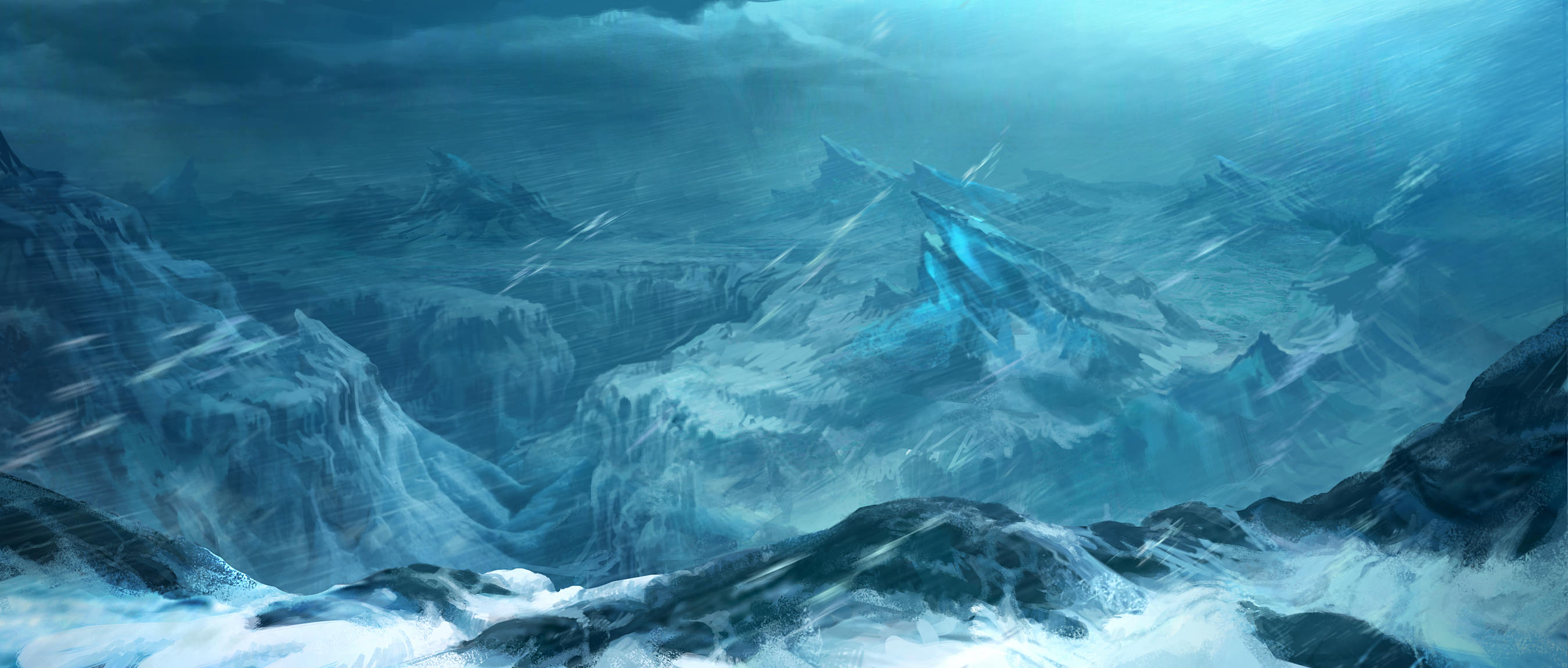

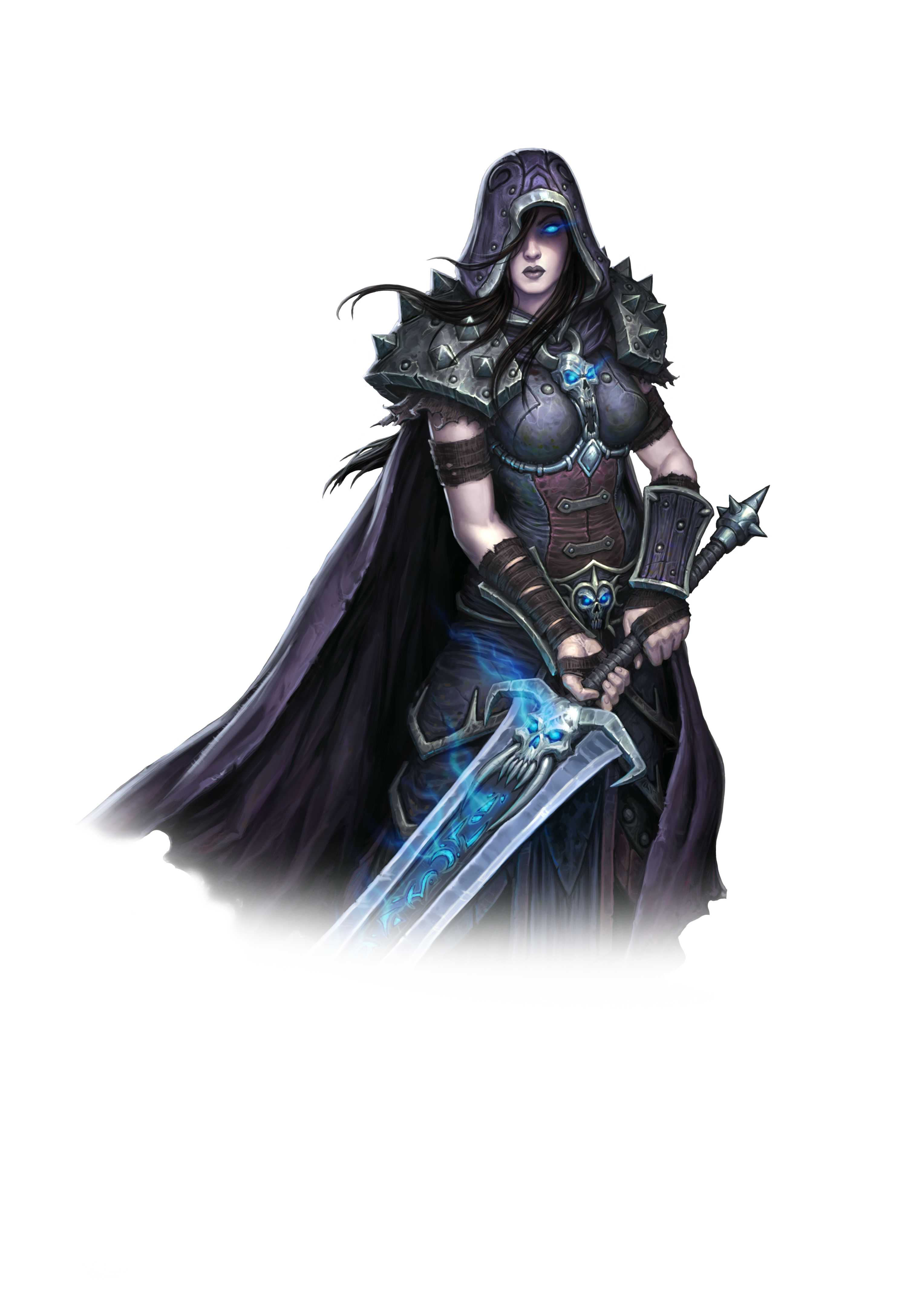
The Death Knight
| Level | Proficiency Bonus |
Features | Spells Known |
Spell Slots |
Slot Level |
Runes Known |
|||
|---|---|---|---|---|---|---|---|---|---|
| 1st | +3 | Lingering Death, Rune Weapon, Shadow Magic | 2 | 1 | 1st | — | |||
| 2nd | +3 | Presence, Runic Empowerments | 3 | 2 | 1st | 2 | |||
| 3rd | +3 | Ability Score Improvement | 4 | 2 | 2nd | 2 | |||
| 4th | +4 | — | 5 | 2 | 2nd | 2 | |||
| 5th | +4 | Presence feature | 6 | 3 | 3rd | 3 | |||
| 6th | +4 | Death Strikes | 7 | 3 | 3rd | 3 | |||
| 7th | +4 | Ability Score Improvement | 8 | 3 | 4th | 3 | |||
| 8th | +5 | Undeath | 9 | 3 | 4th | 4 | |||
| 9th | +5 | Presence feature | 10 | 3 | 5th | 4 | |||
| 10th | +5 | Antimagic Shell | 10 | 3 | 5th | 4 | |||
| 11th | +5 | Ability Score Improvement | 11 | 3 | 5th | 5 | |||
| 12th | +6 | — | 11 | 4 | 5th | 5 | |||
| 13th | +6 | Presence feature | 12 | 4 | 5th | 5 | |||
| 14th | +6 | Ability Score Improvement | 12 | 4 | 5th | 6 | |||
| 15th | +6 | Master of Death | 13 | 4 | 5th | 6 |
Becoming a Death Knight
For most, becoming a death knight was not a choice, the vast majority of death knights was raised by the Lich King and enslaved under his control, very few remain of the death knights that was freed from his control. Because of this very few new death knights are made, as death knights does not wish to give other their fates, living a live without feelings, in constant battle against the Lich King's ever present control. Necromancers cared little for what death knights wanted, and in secret studied incantations and rituals that would make them able to gain the powers of the revered death knights. Eventually they succeed and crafted a dark simulacrum, detailing complex spells that would allow them to gain the powers of a death knight, without the sacrifice of death, and outside the Lich King's control. To this day their efforts has been eliminated and their simulacrum lost to time.
As you choose to use the simulacrum to become a death knight, consider why you decided to undergo the transfor-mation. Did you seek greater power that what was offered in the living world? Were you seeking a means to end the scourge? Perhaps you were simply curious as to the tomes spells and did not know what you were entering? Perhaps you were sick of your previous life, and wished for a new beginning?
Think about what effect the transformation has done to you, becoming a death knight comes at a cost, it splits a fragment of your soul, forever changing part of you, while these death knights are still alive, the resurrection often changes how one acts, if not for the memory of having sacrificed yourself, then the necrotic energy now rushing through your body.
Prerequisites
In order to undergo the transformation required to advance as a death knight, you must meet the following prerequi-sites (in addition to the multiclassing prerequisites for your existing class):
- Strength 13. Death Knights need to be able to wield weapons and strike hard upon their enemies.
- Charisma 13. Imbued with magic they need to be able to wield the magic within them into spells.
- Proficiency in Heavy Armor or Martial Weapons. Death knights learn much through their training, but some skills has to be known beforehand.
- Character Level 5th. Death knights are made out of the corpses of adventurers, imbued with magic, a simple process but straining for the imbuer, as such you must be a 5th-level character before you can gain levels in the death knight prestige class.
- Complete a Special Task. To become a death knight you must find the dark simulacrum and perform the ritual presented in it. At which point you will be reawaken as a weak death knight. See Appendix D for an indepth of the special task and the dark simulacrum.
Class Features
As a death knight, you gain the following class features.
Hit Points
- Hit Dice: 1d10 per death knight level
- Hit Points at Higher Levels: 1d10 + your Constitution modifier per death knight level

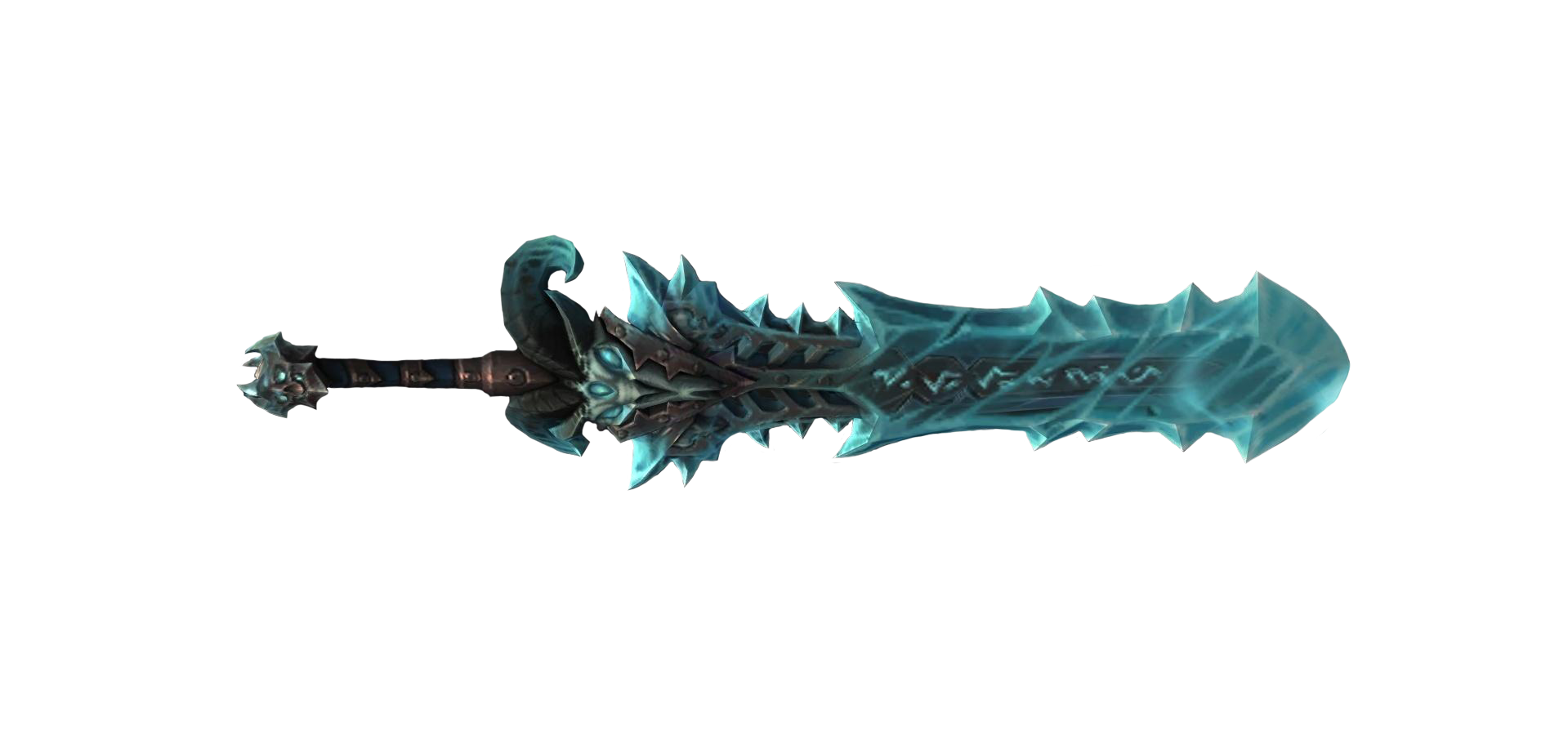
Proficiencies
- Armor: All armors
- Weapons: Simple weapons, martial weapons
- Tools: None
- Saving Throws: Strength
- Skills: None
Equipment
The death knight prestige class does not grant any special equipment.
Lingering Death
You have been resurrected by a val'kyr in an unholy ritual, twisting your body and giving you the following benefits.
Dead Gaze
You gain darkvision to a range of 120 feet, if you already have darkvision it increases by to that range and you are able to see normally in magical darkness.
Lost Radiance
Any traces of the holy light have left your body, replaced by unholy energies. Your divine spells becomes twisted if cast, changing the damage of any spell that deals radiant to necrotic damage. Talk with your DM about adjusting the spell visually to better implement this change.
Rune Weapon
You carve magical runic sockets onto a weapon, binding it to you and preparing it for your runic empowerments. This weapon counts as magical for the purpose of overcoming resistance and immunity to nonmagical attacks. Your rune weapons power fades when not held by you, and its bene-fits can't be used by anyone other than yourself.
You can transform one two-handed weapon or two one-handed weapons into your rune weapon by performing a special ritual while you hold the weapon. You perform the ritual over the course of 1 hour, which can be done during a short rest. The weapon ceases to be your rune weapon if you perform the 1-hour ritual on a different weapon, or if you use a 1-hour ritual to break your bond.
Shadow Magic
Your dark resurrection has filled you with necrotic energies that make you able to cast spells. See chapter 10 of the Player's Handbook for the general rules of spellcasting and chapter 6 of this book for for the death knight spell list.
Spell Slots
The Death knight table shows how many spell slots you have. The table also shows what the level of those slots is; all of your spell slots are the same level. To cast one of your death knight spells of 1st level or higher, you must expend a spell slot. You regain all expended spell slots when you finish a short or long rest.
For example. when you are 5th level, you have three 3rd-level spell slots. To cast the 1st-level spell cause fear, you must spend one of those slots, casting it as a 3rd-level spell.
Spell Known of 1st Level and Higher
At 1st level, you know two 1st-level spells of your choice from the death knight spell list.
The Spells Known column of the Death Knight table shows when you learn more death knight spells of your choice of 1st level and higher. A spell you choose must be of a level no higher than what's shown in the table's Slot Level column for your level. For example, when you reach 5th level, you learn a new death knight spell, which can be 1st, 2nd, or 3rd level.
Additionally, when you gain a level in this class, you can choose one of the death knight spells you know and replace it with another spell from the death knight spell list, which also must be of a level for which you have spell slots.
Spellcasting Ability
Charisma is your spellcasting ability for your death knight spells, so you use your Charisma whenever a spell refers to your spellcasting ability. In addition, you use your Charisma modifier when setting the saving throw DC for a cast death knight spell and when making an attack roll with one
Spell save DC = 8 + your proficiency bonus +
your Charisma modifier
Spell attack modifier = your proficiency bonus +
your Charisma modifier
Presence
At 2nd level, you have gained powers in a presence of after-life, choosing between: the presence of Blood, Frost, or Unholy, each of which is detailed at the end of the class description. Your choice grants you features at 2nd level and again at 5th, 9th, and 13th level.
Channel Necromancy
Your presence allows you to channel necrotic energy to fuel dark magics. Each Channel Necromancy option provided by your presence explains how to use it.
When you use your Channel Necromancy, you choose which option to use. You must then finish a short or long rest to use your Channel Necromancy again.
Some Channel Necromancy effects require saving throws. When you use such an effect from this class, the DC equals your Death Knight spell save DC.
Runic Empowerments
You have unearthed fragments of magic and learned how to shape them onto your blade in the form of runes to fill its empty sockets with power.
At 2nd level, you gain two runic empowerments of your choice. Your rune options are detailed at the end of the class description. When you gain certain levels in this class, you imbue additional runes of your choice, as shown in the Runes Known column of the Death Knight table.
Additionally, when you gain a level in this class, you can choose one of the runes you know and replace it with another rune that you could learn at that level.
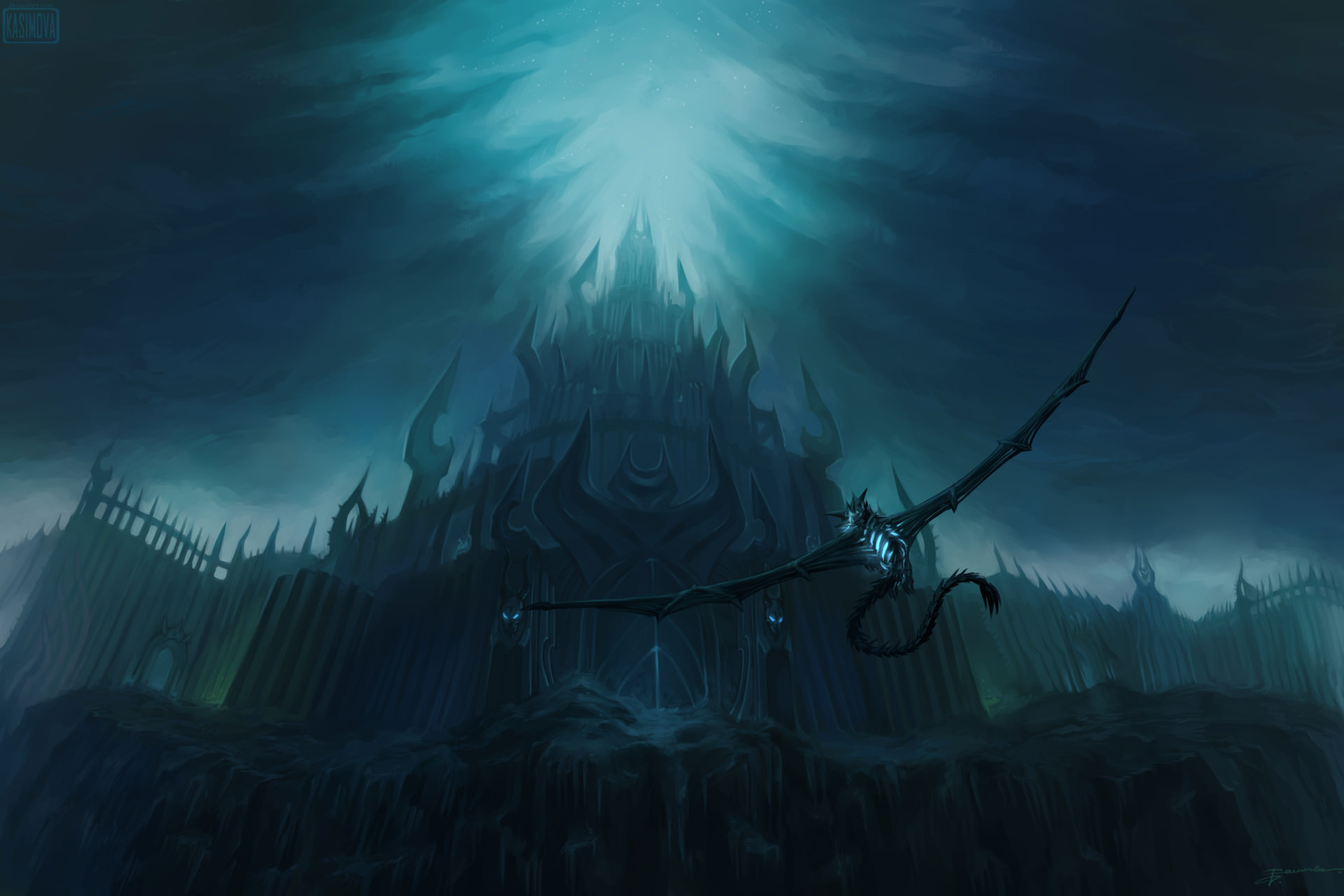

Ability Score Improvement
When you reach 3rd level, and again at 7th, 11th, and 15th level, you can increase one ability score of your choice by 2, or you can increase two ability scores of your choice by 1. As normal, you can't increase an ability score above 20 using this feature.
Death Strikes
By 6th level, you are so suffused with negative energy that all your melee weapon strikes carry necrotic power with them. Whenever you hit a creature with a melee weapon, the creature takes an extra 1d8 necrotic damage.
Undeath
Starting at 8th level, you can hold your breath indefinitely, and you don't require food, water, or sleep, although you still require rest to reduce exhaustion and still benefit from finishing short and long rests.
In addition, you age at a slower rate. For every 10 years that pass, your body ages only 1 year, and you are immune to being magically aged.
Antimagic Shell
Beginning at 10th level, you can use your bonus action to end one spell on yourself.
You can use this feature a number of times equal to your Charisma modifier (a minimum of 1). You regain expended uses when you finish a long rest.
Master of Death
At 15th level, you bond with your runic weapons, parting with a fraction of your soul to imbue with in them. If you die, you return to life 24 hours after death, as the weapon resurrects you. IF your body is destroyed, you reform with-in 1 mile of the place of your death. If your equipment was destroyed you do not regain it.
If your rune weapon is broken or on another place of existence, you are not resurrected after 24 hours. If your weapon returns to your plane of existence after 24 hours has passed, you do not return to life as the magic of your weapon fades and vanishes.
Presence
No matter why one decided to become a death knight, they all feel the drawing to greater powers, most of which are shunned or directly forbidden in most of Azeroth. A death knight feels the presence of these powers and chooses to delve deeper into one of them, expanding his view whilst learning arts which most would see as dark magic.
Blood Presence
Death knights of the blood presence enter delve into the shunned arts of blood magic, bolstering their own defenses by the use of blood from themselves and draining their enemies lifeforce for their own gain.
Channel Necromancy
When you take this presence at 2nd level, you gain the following two Channel Necromancy options.
Dancing Rune Weapon. As a bonus action, you present your rune weapon and manifest an animated copy of your rune weapon. The weapon has the statistics of a flying sword, but deals damage equal to your rune weapon, and has hit points equal to twice your death knight level. It acts on your initiative, its actions determined by you.
The sword lasts for 1 minute, and you can end the effect early as a bonus action, making the the weapon fly back to you and fall to the ground in your space, if you have an empty hand you can instead make the weapon return to it rather than falling to the ground.
Death and Decay. As an action, you can pierce your rune weapon into the ground and use your channel necromancy to desecrate the earth. Each creature of your choice within 20 feet of you must succeed on a Wisdom saving throw, or be frightened of you for 1 minute.
A frightened creature must spend its turn trying to move as far away from you as it can, and can't willingly move to a space within 20 feet of you. For its action, it can use only the Dash action or try to escape from effects that prevent it from moving. IF the creature ends its turn out of sight of you and the desecrated area, it may make another Wisdom saving throw, ending the frightened on a successful save.
Rune Tap
Upon reaching 5th level, you can tap your rune weapon's energy to bolster your own defense. As an action you tap your rune weapons power, briefly removing all benefits from your empowerments from it. For 1 minute, you gain resistance towards bludgeoning, piercing, and slashing damage. Once the duration ends, you regain the abilities granted by your runic empowerments.
Once you use this feature, you can't use it again until you finish a short or long rest.
Purgatory
Beginning at 9th level, you don't fall unconscious when you are reduced to 0 hit points and not outright killed, but con-tinue to fight on as normal, making death saving throws at the beginning of your turn.
Blood Shield
Starting at 13th level, whenever you deal necrotic damage to a creature through death strikes, you gain temporary hit points equal to the necrotic damage dealt.


Frost Presence
Death knights of the frost presence walk in the footsteps of those that came before them, using cold and ice in a way only matched by mages to do their bidding. They are exceptional combatants able to deliver devastating blows.
Channel Necromancy
When you take this presence at 2nd level, you gain the following two Channel Necromancy options.
Obliterate. When you hit a creature with your rune weapon, you can use Channel Necromancy to deal extra necrotic damage equal to 5 + twice your death knight level.
Howling Blast. As an action, you present your rune weapon, and cause a frigid wind to howl past you. Each creature within a 60 feet long and 15 feet wide line from you in a direction you choose must make a Constitution saving throw, on a fail, the target gains one level of exhaus-tion and has disadvantage on attack rolls for 1 minute.
Remorseless Winter
Starting at 5th level, you can use your bonus action to cast armor of agathys at 1st-level on yourself, the spell is cast on you again at the beginning of your turn as a free action until you use your bonus action to end its effect.
Additionally, you gain temporary hit points equal to your death knight level when you finish a short or long rest.
Icebound
Beginning at 9th level, you gain resistance to cold damage. In addition, you can use your reaction and expend your armor of agathys spell to give yourself resistance to all damage until the end of your next turn. You regain your armor of agathys spell once you finish a short or long rest.
Frozen Tomb
Starting at 13th level, you are able to momentarily encase a creature in solid ice. As an action, choose a creature within 60 feet of you. The target must make a Dexterity saving throw. On a failed save, the target takes 8d10 cold damage and becomes petrified until the beginning of your next turn as ice envelopes it, or half as much damage and it is not petrified on a successful save.
You must then finish a long rest to use this feature again.
Unholy Presence
Death knights of the unholy presence are shunned by most for their deeds, especially by the Holy Light, they wield ne-crotic energy in a way matched only by warlocks, removing any shred of Holy Light around them as they drain their surroundings of joy and hope.
Channel Necromancy
When you take this presence at 2nd level, you gain the following two Channel Necromancy options.
Control Undead. As an action, you target one undead creature you can see within 30 feet of you. The target must make a Wisdom saving throw. On a failed save, the target must obey your commands for the next 24 hours, or until you use this Channel Necromancy option again. An undead whose challenge rating is equal to or greater than your death knight level is immune to this effect.
Turn the Holy. As an action, you present your rune weapon and speak vile words censuring celestials and feys. Each celestial and fey that can see or hear you within 30 feet of you must succeed a Wisdom saving throw, or be turned for 1 minute or until it takes damage.
A turned creature spend its turn trying to move as far away from you as it can, and it can't willingly move to a space within 30 feet of you. It also can't take reactions. For its action, it can only take the Dash action or try to escape from an effect that prevents it from moving. If there's nowhere to move, the creature can use the Dodge action.
Raise Ghoul
Starting at 5th level, you can cast the animate dead spell at will. When you cast animate dead, you raise a ghoul rather than a zombie or skeleton. If you cast animate dead while you have an undead under your control, you destroy your current ghoul as you cast the spell.
Whenever you create a ghoul using this spell, it has additional benefits:
- The ghoul's hit point maximum is increased by an amount equal to your death knight level.
- The ghoul adds your proficiency bonus to its weapon damage rolls.
Unholy Protection
Beginning at 9th level, you regain hit points equal to 1d6 + half your death knight level if you end your turn in combat with fewer than half of your hit points remaining and you aren't incapacitated.
Dark Transformation
At 13th level, as an action you can surround yourself with an aura of gloom that lasts for 1 minute. The aura reduces any bright light in a 30-foot radius around you to dim light, and dim light to darkness. You and any creature of your choice in the aura are draped in necrotic shadows. Crea-tures that rely on sight have disadvantage on attack rolls against any creature draped in this shadow.
While active, you can use a bonus action to cause the shadows in the aura to attack a creature. Making a melee spell attack against the target. If the attack hits, the target takes 3d10 + your Charisma modifier necrotic damage.
After activating this aura, you can't do so again until you finish a long rest.
Runic Empowerments
If a runic empowerment has prerequisites, you must meet them to learn it. You can learn a rune at the same time that you meet its prerequisites. A level prerequisite in a rune refers to your death knight level, not your character level.
Rune of Asphyxiate
Prerequisite: 9th level
You can cast hold monster at will, without expending a spell slot or material components. You must finish a long rest before you can use this empowerment on the same creature again.
Rune of Dread
Prerequisite: 7th level
You can cast confusion once using a death knight spell slot. You can't do so again until you finish a long rest.
Rune of Festering
You become immune to diseases and the poisoned condition.
Rune of Five Fates
You can cast bane once using a death knight spell slot. You can't do so again until you finish a long rest.

Rune of Influence
You gain proficiency in the Intimidation and
Persuasion skills.
Rune of Necromancy
You learn two cantrips of your choice from the warlock spell list, charisma is your spellcasting ability for these spells.
Rune of Misfortune
Prerequisite: 5th level
You can cast bestow curse once using a death knight spell slot. You can't do so again until you finish a long rest.
Rune of Razorice
Your rune weapon gains a +1 bonus to attacks and damage rolls made with it.
Rune of Shadow Armor
You can cast mage armor on yourself at will, without expending a spell slot or material components.
Rune of the Blade Caller
As long as your rune weapons are on the same plane of existence as you, you can summon them as a bonus action, causing them to teleport to your hands.
Rune of the Caller
Prerequisite: 5th level
You can cast animate dead once using a death knight spell slot. You can't do so again until you finish a long rest.
Rune of the Fallen Crusader
Your weapon attacks score a critical hit on a roll of 19 or 20
Rune of the Grave
Prerequisite: 9th level
You can cast speak with dead at will, without expending a spell slot.
Rune of the Lich
You have advantage on saving throws against being charmed, and magic can't put you to sleep.
Rune of the Scourge
You can cast false life on yourself at will as a 1st-level spell, without expending a spell slot or material components.
Rune of the Shadows
You can cast darkness at will once, without expending a spell slot or material components. You can't do so again until you finish a long rest.
Rune of the Stoneskin Gargoyle
You gain a +1 bonus to your Armor class whilst wielding your rune weapon.
Rune of the Thirsting Blade
You can attack with your rune weapon twice, instead of once, when you take the Attack action on your turn.
Rune of the Val'kyr
You can cast detect magic at will, without expending a
spell slot.
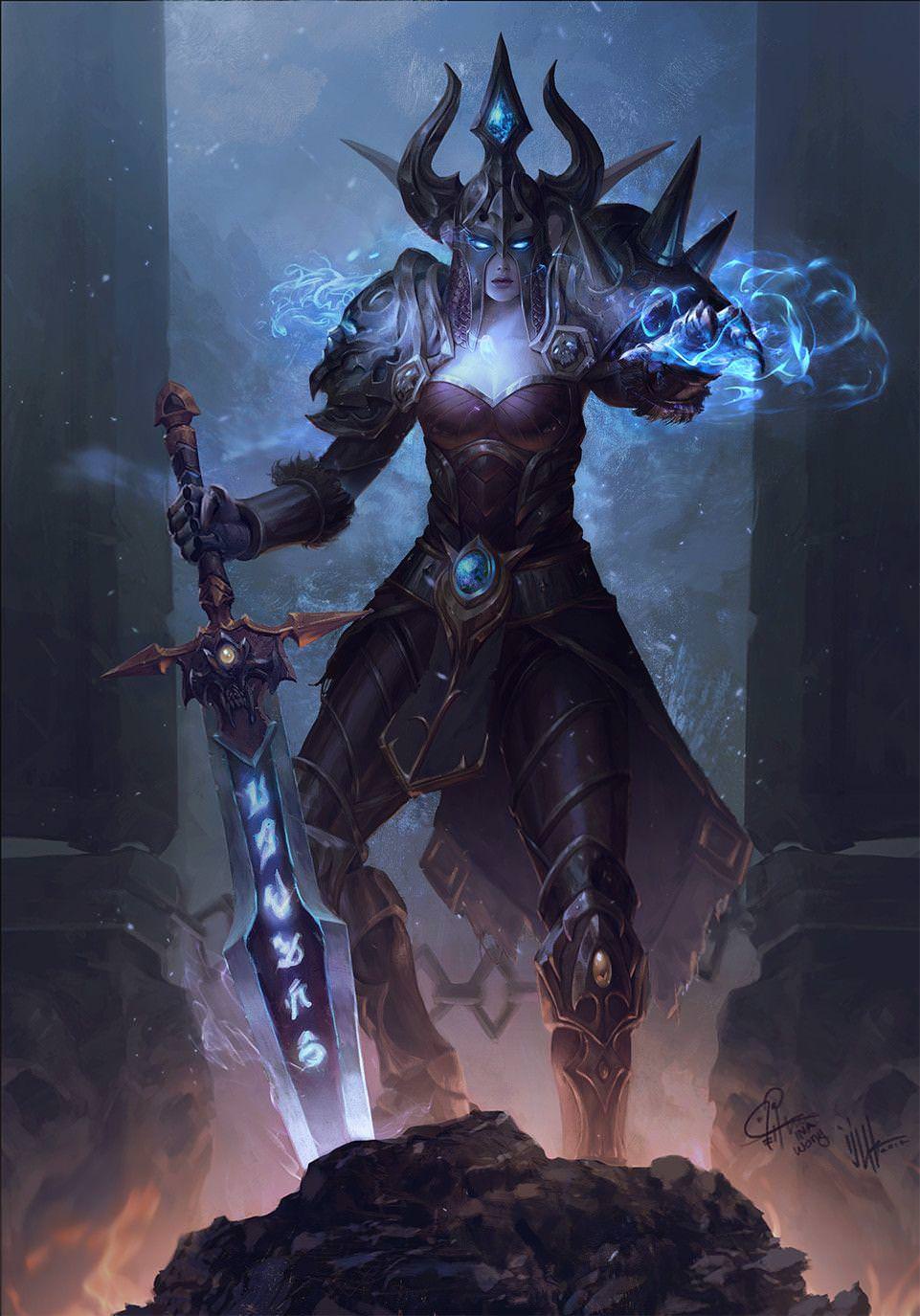

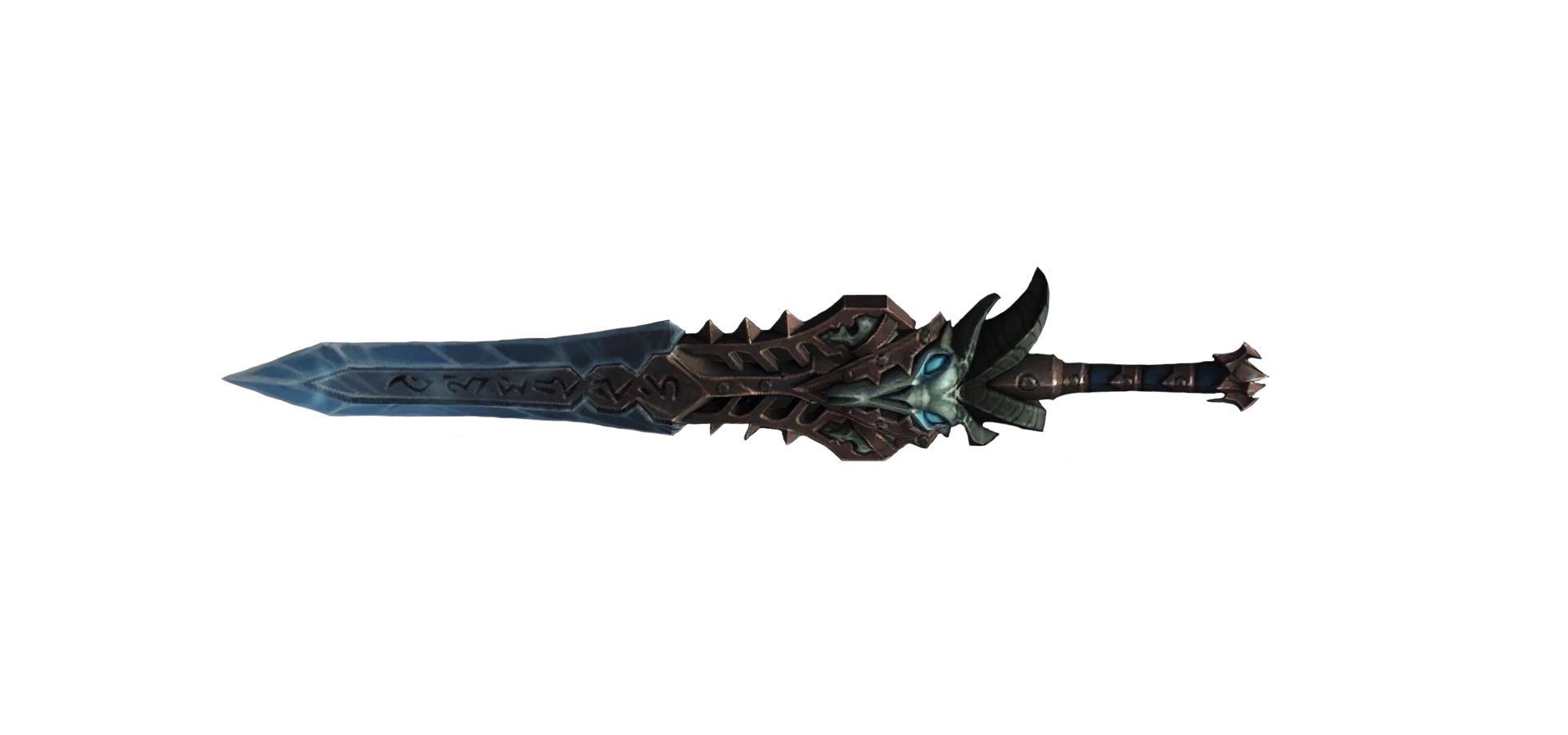
Demon Hunter
The enemy came into our world, desiring to extinguish all life. They slaughtered our loved ones, razed our homes.. our cities. You could not stop them. So you came to me, nothing but rage and determination left, I taught you that what once tormented you could give you power.
Now you know, no sacrifice is too great if it brings an end to the Burning Legion
— Illidan Stormrage
A lone night elf clutching a pair of curved blades, peers to the ground as enemies surround him on all sides, before leaping backwards over the heads of his enemies, swinging his swords at one of them in the process.
A blood elf sprints to the distant aid of her allies, a pair of heavy warglaives in her hands, she releases the fel within, leaving a trail of fel in her path as she rushes in inhumane speed to their aid to jump on the nearest enemy.
A heavily built human standing afar as his allies engage a massive demon, in two swift motions he effortlessly slings his warglaives through the air at the demon, making deep gauges in its hide before returning to his firm grasp.
These hunters have sworn their life to a sacred cause, al-though their motivation may vary, demon hunters are one of Azeroths protectors, these agile hunters carry exceptio-nal skill against the foe they face. They wield both mortal strength and the devastating effects of fel magic, carrying out both with extreme precision
Feared and Revered
Society often shun demon hunters. Most don't understand the sacrifice that they make, therefore, many choose to become outcasts from their societies. Eyes are commonly turned at them when they wade through towns, most distrust and fear them for what they have become.
Even though the world are untrusting of demon hunters, it matters not the the hunter themselves, cause they are protectors of the common folk against threats wishing the destruction of Azeroth, and most importantly demon. They are not righteous like paladins that fight for the Holy Light, or selfless like some rogues and warriors. They are the force who battles evil and although shunned by common folk, their aid is appreciated by experienced fighters.
Power Granted for a Price
Demon hunters are not trained like warriors are, they are created. It is a harsh and incurable process, leaving scars on the individual that will never heal. Most who attempt to undergo the rites to become a demon hunter end up dying from the horrors of what now possess them, or kills them-selves because of what they have seen.
At its very core of becoming a demon hunter is the con-sumption of a demon's soul in a ceremony, forever binding it to the demon hunter and suppressing it from taking control through magical inscriptions on the hunters skin, infused with fel. Finishing the binding of soul to the demon hunter by burning out their eyes with a magically imbued blade, forever binding the chaotic soul of the demon to the hunter. Other processes are done to create a demon hunter, slowly creating a fully fleshed demon hunter by removing much of who they were in their past lives.
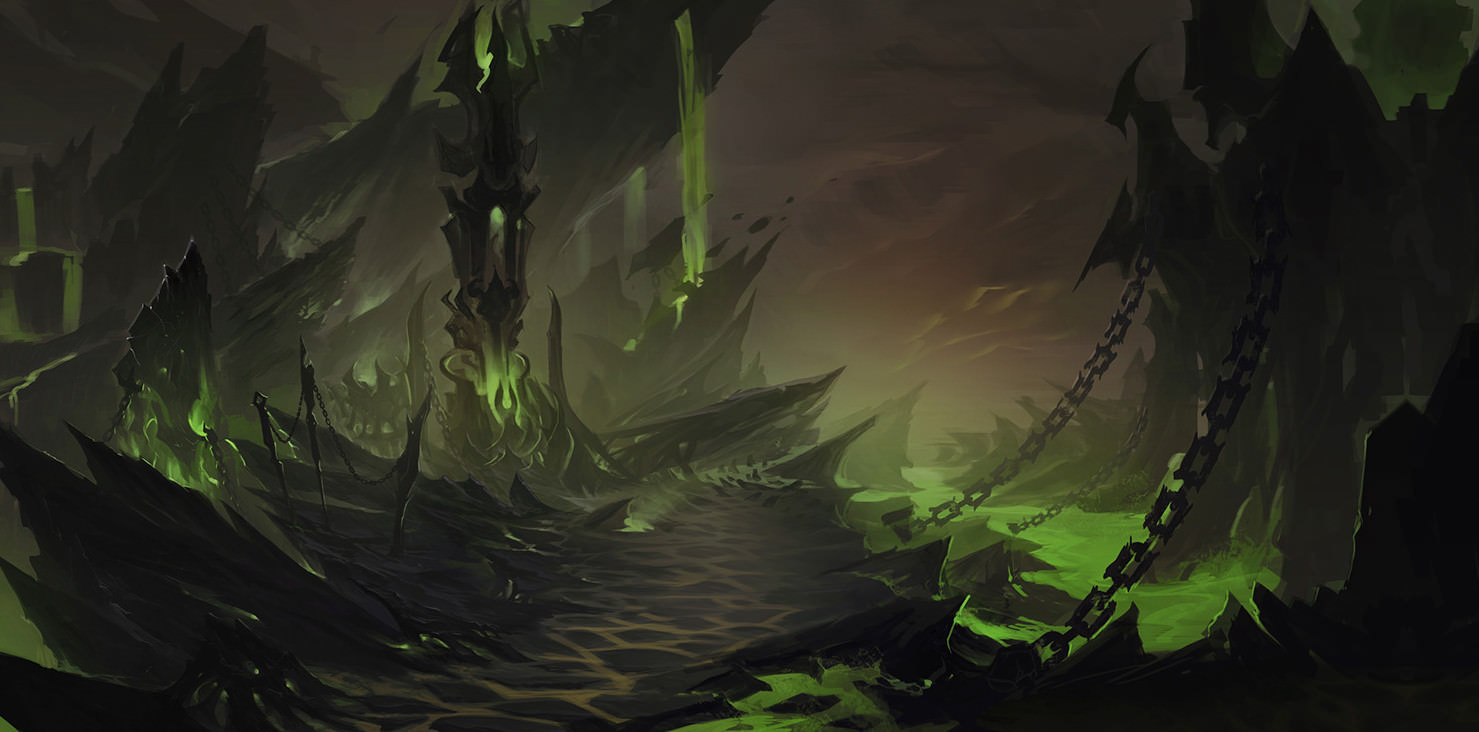

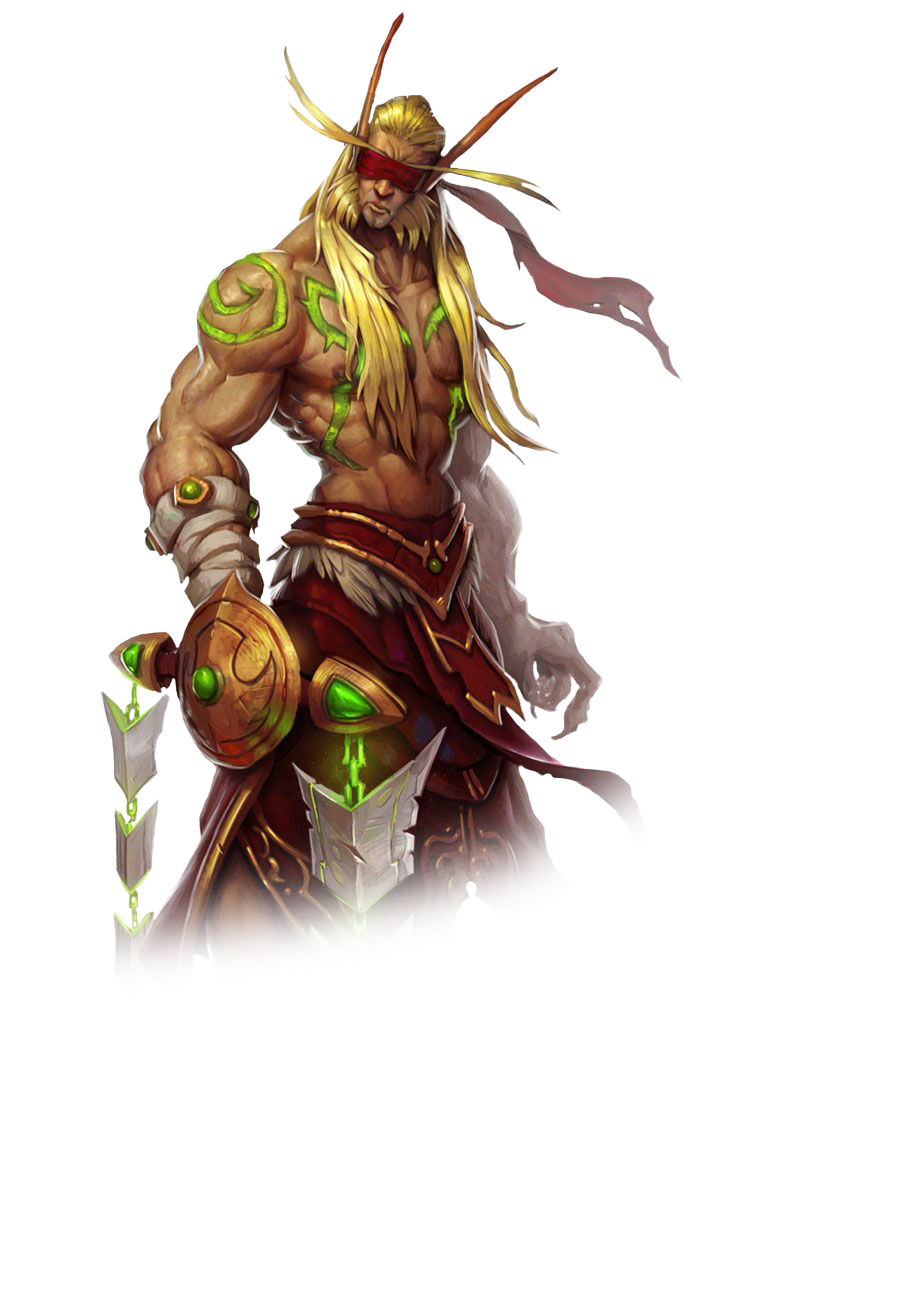
The Demon Hunter
| Level | Proficiency Bonus |
Felblade Attack |
Chaos Points |
Features | |
|---|---|---|---|---|---|
| 1st | +3 | 1d6 | — | Demonic Mark, Illidari Initiation, Unarmored Defense | |
| 2nd | +3 | 1d6 | 3 | Chaos, Evasion | |
| 3rd | +3 | 1d6 | 4 | Ability Score Improvement | |
| 4th | +4 | 2d6 | 4 | Chaos-Empowered Strikes, Demon Wings | |
| 5th | +4 | 2d6 | 5 | Demonic Mark feature | |
| 6th | +4 | 2d6 | 5 | Eternal Hunter | |
| 7th | +4 | 3d6 | 6 | Ability Score Improvement | |
| 8th | +5 | 3d6 | 6 | Demonic Mark feature | |
| 9th | +5 | 3d6 | 7 | Demon Wings Improvement | |
| 10th | +5 | 4d6 | 7 | Eternal Hunter Improvement | |
| 11th | +5 | 4d6 | 8 | Ability Score Improvement | |
| 12th | +6 | 4d6 | 8 | Spectral Sight | |
| 13th | +6 | 5d6 | 9 | Demonic Mark feature | |
| 14th | +6 | 5d6 | 9 | Ability Score Improvement | |
| 15th | +6 | 5d6 | 10 | Metamorphosis |
Becoming a Demon Hunter
As you choose to become a demon hunter, consider why you decided to undergo their deadly rituals. Were your family slaughtered by demons of the Burning Legion and you seek to avenge them? Did you strive for greater power through fel, and wished to control it? Were you full of rage and anger and wished to put it to use beyond raw strength? perhaps you went through their rituals unwillingly, and by a miracle survived the demons attempts to take control? Think of the demon hunters that put you through the rituals and did the rites on you, your relationship to them, are you angry at them for what they have done? pleased with their accomplishment?
Think about what affect the transformation has done on you, physically as well as mentally. All demon hunters who survive the transformation grows horns, varying for tiny studs to massive horns stretching the length of their head. Some demon hunters grow scales on parts of their body, claws on their hands, or have entire limbs misshapen into a crude limb of a demon being. No demon hunter goes through the rites unchanges, and no two hunters come out with the same mutations, the mutations vary as much as the demon soul which now lives within them. Consider what it has done to your personality. Many demon hunters gains a temper cause of the ferocity of the demon within them, or change personality entirely for better or worse. Think about how the demon bond to you is affected you, if it takes control of your judgement at times, or if you keep it in check at all times.
Prerequisites
In order to undergo the transformation required to advance as a demon hunter, you must meet the following prerequi-sites (in addition to the multiclassing prerequisites for your existing class):
- Dexterity 13. Demon Hunters need to be swift and acrobatic to out maneuver their foes.
- Intelligence 13. Bonding with a demon requires a strong mind to overcome the mental strain.
- Character Level 5th. Demon hunters are exposed to deadly amounts of fel energy when created, killing most who attempt the transformation, as such you must be a 5th-level character before you can gain levels in the demon hunter prestige class.
- Complete a Special Task. You must find one or more demon hunters willing to lead you through the array of complex rituals required to become a demon hunter. See Appendix D for an indepth of the special task.
Class Features
As a demon hunter, you gain the following class features.
Hit Points
- Hit Dice: 1d6 per demon hunter level
- Hit Points at Higher Levels: 1d6 + your Constitution modifier per demon hunter level


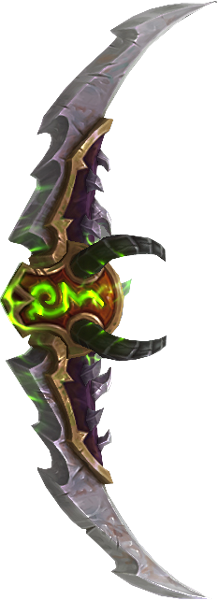
Proficiencies
- Armor: None
- Weapons: Simple weapons, martial weapons, warglaives
- Tools: None
- Saving Throws: Dexterity
- Skills: Choose one from Acrobatics, Insight, Investigation, Perception, Stealth, and Survival
Equipment
You gain the following equipment when you choose this prestige class.
- A pair of warglaives
Demonic Mark
Choose a demonic mark, which describes the demons soul that you have bonded with: Mark of Havoc, Vengeance or Wrath, each detailed at the end of the class description.
Your choice grants you features when you choose it at 1st level and again at 5th, 8th, and 13th level.
Illidari Initiation
Becoming a Demon Hunter is a difficult task, requiring hard training and sacrifices to be made. As a result of this you gain the following benefits:
Blind Sight
Your eyes have been torn out, their sockets burnt to see the world in its true form. You lose any darkvision and sun-light sensitivity from your race, and gain the following sight:
- You are able to see normally to a range of 120 feet.
- You are able to see in normal and magical darkness, and can discern colors in darkness.
- You perceive the world beyond your vision, but it appears blurred, and details can't be discerned.
Illidari Fighting
Demon hunters are trained to wield a weapon in each hand, giving you the following benefits:
- You can draw or stow two one-handed weapons when you would normally be able to draw or stow only one.
- When you engage in two-weapon fighting, you can add your ability modifier to the damage of the second attack.
- You can wield warglaives using either Dexterity or Strength as if they had the finesse property.
Felblade Attack
You know how to channel small portions of fel through your strikes. Once per turn, you can deal an extra 1d6 fire dam-age to one creature you hit with an attack if you have advan-tage on the attack roll. You don't need advantage on the attack roll if another enemy of the target is within 5 feet of it, that enemy isn't incapacitated, and you don't have disad-vantage on the attack roll.
The amount of the extra damage increases as you gain levels in this class, as shown in the Felblade Attack column of the Demon Hunter table.
Unarmored Defense
While you are not wearing any armor and wielding a shield, your Armor Class equals 10 + your Dexterity modifier + your Intelligence modifier.
Chaos
Starting at 2nd level, you are able to harness the chaotic energies built up within. Your access to this energy is repre-sented by a number of chaos points. Your demon hunter level determines the number of points you have, as shown in the Chaos Points column of the Demon Hunter table.
You can spend these points to fuel various chaotic fea-tures. You start by knowing two such features: Demon's Bite, and Fel Rush. You learn additional chaotic features as you gain levels in this class.
When you spend a chaos point, it is unavailable until you finish a short or long rest, at the end of which you draw all of your expended chaotic energy back into yourself.
Some of your chaotic features require your target to make a saving throw to resist the feature's effects. The saving throw DC is calculated as follows:
Chaos save DC = 8 + your proficiency bonus +
your Intelligence modifier
Demon's Bite
Immediately after you take the Attack action on your turn, you can spend 1 chaos point to make a weapon attack with each weapon you're wielding as a bonus action.
Fel Rush
You can spend 1 chaos point and use your bonus action to vanish in a cloud of fel and teleport from your current position to an empty space within 30 feet that you can see.
Evasion
At 2nd level, your agility lets you dodge out of the way of certain area effects, such as a red dragon's fiery breath or an ice storm spell. When you are subjected to an effect that allows you to make a Dexterity saving throw to take only half damage, you instead take no damage if you succeed on the saving throw, and only half damage if you fail.
Ability Score Improvement
When you reach 3rd level, and again at 7th, 11th, and 15th level, you can increase one ability score of your choice by 2, or you can increase two ability scores of your choice by 1. As normal, you can't increase an ability score above 20 using this feature.
Chaos-Empowered Strikes
Starting at 4th level, your weapon attacks count as magical for the purpose of overcoming resistance and immunity to nonmagical attacks and damage.
Demon Wings
Also at 4th level, you can use your reaction when you fall to sprout a pair of leathery wings from your back, making you decent at 60 feet per round. Landing on your feet and taking no damage from the fall.
At 9th level, you can spend 2 chaos points to make the wings capable of carrying you, giving you a flying speed equal to your current speed. While active you can sprout and dismiss the wings as a bonus action on your turn. They last for 1 hour before being unable to carry you any further.
You can't sprout your wings while wearing armor unless the armor is made to accommodate them, and clothing not made to accommodate your wings might be destroyed when you manifest them.

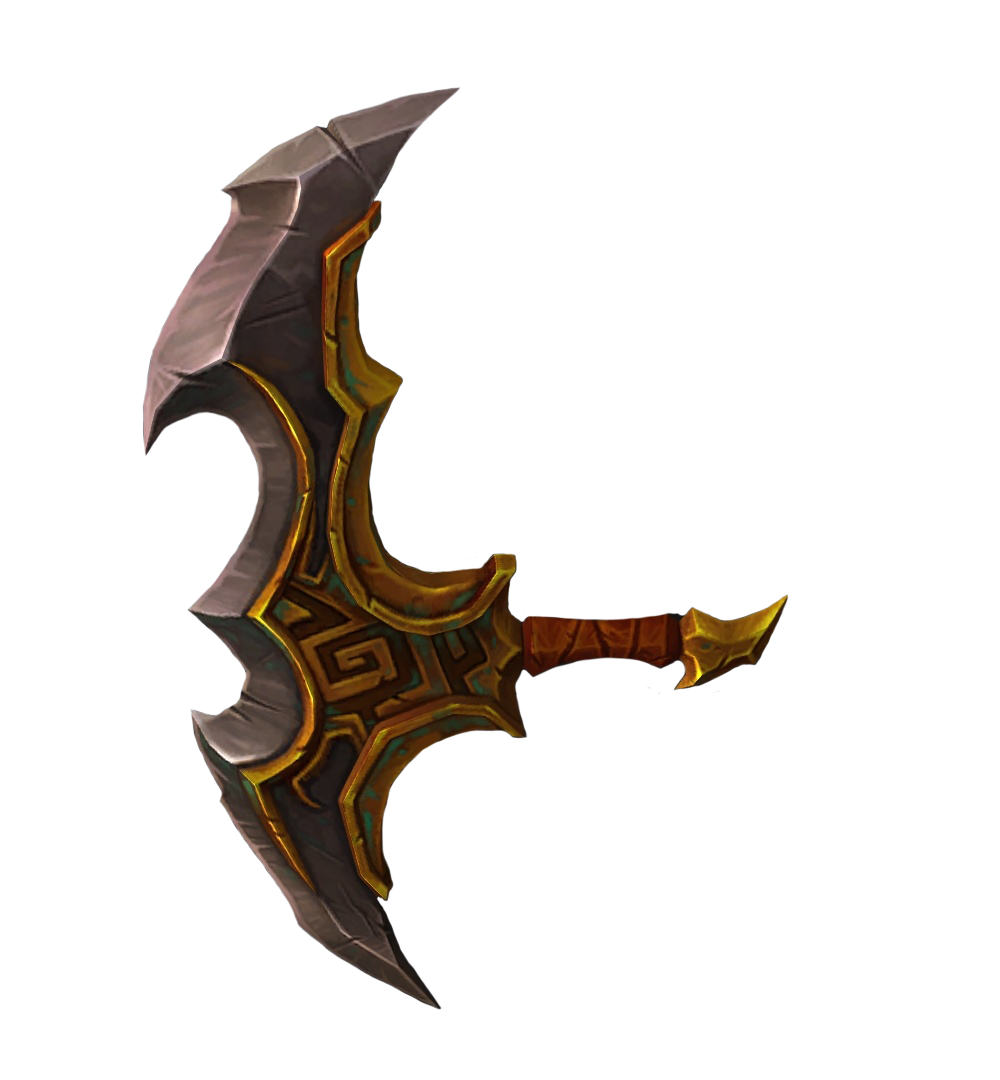
Eternal Hunter
Upon reaching 6th level, your knowledge of demons and their fiendish nature is growing larger, giving you advan-tage on any ability checks made to recall knowledge of a specific demon, and to track said demon.
At 10th level, your hatred of demons, and knowledge of their capabilities have made you a keen combatant to fight, giving you advantage on all saving throws made to avoid abilities and spells cast by fiends.
Spectral Sight
Starting at 12th level, you can channel the chaos within into your charred eye sockets to show you the world in its true colors. As an action, you can spend 2 chaos points to cast detect magic, while detect magic is active, your vision also changes to truesight within your blind sights range.
Metamorphosis
At 15th level, you can let the lingering soul of your demon mark loose, changing you to a demonic visage of yourself. As an action, you take on the shape of your inner demon for 10 minute and gain the powers of your Demonic Mark.
Once you use this feature, you can't use it again until you finish a long rest.
Havoc
Your Demonic Mark of Havoc twists your body, granting you the following features.
- As part of the action you used to release your Demonic Mark. You can jump to an unoccupied space within 60 feet of you, releasing a burst of fel on impact. Each crea-ture within 5 feet of you must make on a Dexterity saving throw. A creature takes 5d8 fire damage on a failed save, or half as much on a successful one.
- When you take the Attack action on your turn, you can make one additional attack as part of that action.
- Whenever a creature hits you with an attack, it takes fire damage equal to half the damage taken from the attack.
Vengeance
Your Demonic Mark of Vengeance twists your body, grant-ing you the following features.
- As part of the action you used to release your Demonic Mark. The ground around you twists with fel, each crea-ture of your choice within 5 feet of you must succeed on Constitution saving throw or be stunned until the start of your next turn.
- You have resistance to all damage.
- You are enlarged, as by the enlarge/reduce spell.
Wrath
Your Demonic Mark of Wrath twists your body, granting you the following features.
- As part of the action you used to release your Demonic Mark. You release a 4th-level magic missiles, each dart deals fire damage instead of force damage. The darts damage can't be reduced or prevented in any way.
- Your demon wings sprout from your back and grant you a flying speed of 60 feet.
- Your ranged weapon attacks score a critical hit on a roll of 19 or 20 on the d20.
Demonic Marks
Different souls are absorbed in the process of becoming a demon hunter and planted into the demon hunter skin. Although many variations exist, most of these souls fall into three categories: a mark of havoc, vengeance or wrath.
Mark of Havoc
Havoc demon hunters unleashes the potent energy stored up within them, they are the pinnacle of close quarter fight-ing. They harness destructive powers in its most raw form to unravel it upon their enemies. Demon hunters marked with havoc are known for their ability to funnel fel into their abilities, and fight on harder and longer than most.
Shattered Souls
Starting at 1st level, whenever you roll a 20 on a d20 on an attack roll against a creature, you regain hit points equal to your demon hunter level. Additionally, you also regain 1d4 chaos points. You can never have more chaos points than shown on the table for your level.
Blade Dance
At 5th level, you gain the ability to pass through the great dark beyond in the blink of an eye. When you take the Attack action, you can teleport up to 10 feet before each attack to an unoccupied space you can see.
If you attack at least two different creatures with the action, you can make one additional attack with it against a third creature.
Demon's Flurry
Starting at 8th level, once on each of your turns when you miss with a weapon attack, you can make another weapon attack as part of the same action.
Eye Beam
At 13th level, you can channel chaotic energy through your charred eyes into a volatile beam. As an action, you can spend 3 chaos points to blast energy in a 50 feet long and 5 feet wide line out from you in a direction you choose. Each creature in the line must make a Dexterity saving throw. A creaeture takes 5d10 fire damage and 5d10 force damage on a failed save, or half as much on a successful one.
Mark of Vengeance
Vengeance demon hunters empowers themselves through the energies within, they are hunters that continue to be able to stand and fight when all else fails. By empowering themselves they are to take an enormous amount of hits and still come out victorious by the fights end.
Demon Spikes
Starting at 1st level, when you are hit by a melee attack you can use your reaction to gain resistance against the attack, as the fiendish nature of your inner demon comes forth, manifesting rugged spikes across your body.
You can use this feature a number of times equal to your Intelligence modifier (minimum of 1). You regain all spent uses after finishing a short or long rest

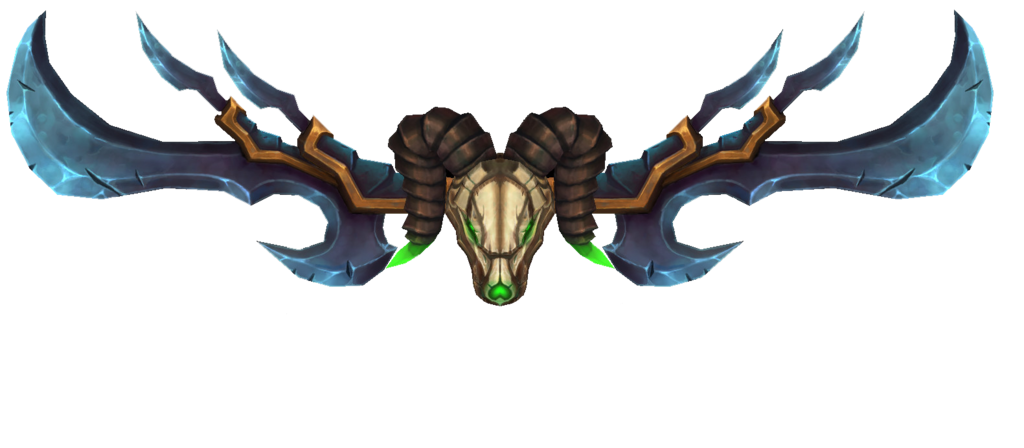
Last Resort
Beginning at 5th level, the demon soul that lives within you keeps you fighting against all odds. When you are reduced to 0 hit points, you can choose to have 1 hit point instead.
The first time you do so, you suffer no adverse effect. If you use this feature again before you finish a long rest, you gain two levels of exhaustion.
Sigil
Upon reaching 8th level, you gain one of the following sigils of your choice. Once you use this feature, you can't use it again until you finish a short or long rest.
Sigil of Chains. As an action, choose a creature within 60 feet of you, the creature must succeed on a Strength saving throw, or be restrained for 1 minute. At the end of each of its turns the creature can make another Strength saving throw, ending the restrain on a successful one.
Sigil of Misery. As an action, choose a point within 30 feet of you, creating a sigil that extend in a 10 feet radius around it. Each creature within range succeed on a Con-stitution saving throw, or be incapacitated for 1 minute. At the end of each of its turns, and each time it takes damage, a creature can make another Constitution saving throw, ending the effect on a successful save.
Sigil of Silence. As an action, you force each creature of your choice within 10 feet of you to make a Wisdom saving throw. On a failed save, the creature becomes unable to speak and can't cast any spells with a vocal component for 1 minute. At the end of each of its turns, the creature can make another Wisdom saving throw, ending the effect on a successful save.
Demonic Wards
At 13th level, the fel that surges through your body have fortified you against magical effect. Whenever you finish a long rest, you gain resistance to one of the following damage types of your choice: cold, fire, lightning, necrotic, or thunder damage.
The resistance lasts until you finish your next long rest, at which point you may choose a new damage type from the list to gain resistance too.
Mark of Wrath
Wrath demon hunters use range to their advantage, strik-ing enemies from afar by channeling fel energy into spells and slinging their glaives with precision at targets from great ranges, before swiftly returning to their grasp.
Bonus Cantrips
Starting at 1st level, you learn the fel flame and green-flame blade cantrips, using Intelligence as your spellcasting ability for them.
Thrown Weapons
At 1st level, you are able to throw certain weapons with extreme precision. When you wield warglaives or weapons with the finesse property, the weapon gains a normal range of 20 feet, and a maximum range of 60 feet.
A thrown weapon returns to your grasp immediately after the attack roll is made.
War Magic
Beginning at 5th level, when you use your action to cast a cantrip, you can make a weapon attack, or spend 1 chaos point to use Demon's Bite as a bonus action.
Fel Barrage
Also at 5th level, you are able to hurl shards of fel against targets. As an action, you can spend 2 chaos point, creating 5 fel shards. Each shard hits a creature within 120 feet of you that you can see. A shard deals 2d4 fire damage. The shards all strike simultaneously and you can direct them to hit one creature or several.
Reflective Instincts
Starting at 8th level, whenever a creature within 20 feet of you is hit by an attack made by an allied creature, you can use your reaction to make a ranged weapon attack against that creature.
Fiery Brand
At 13th level, a new brand appears upon your body, forged of fel flames and continuously flickering as if burning. You can use this brand to channel energy into specific spells. As an action, you can cast your choice of: banishment, fire shield, or wall of fire.
You must then finish a long rest to use this feature again.
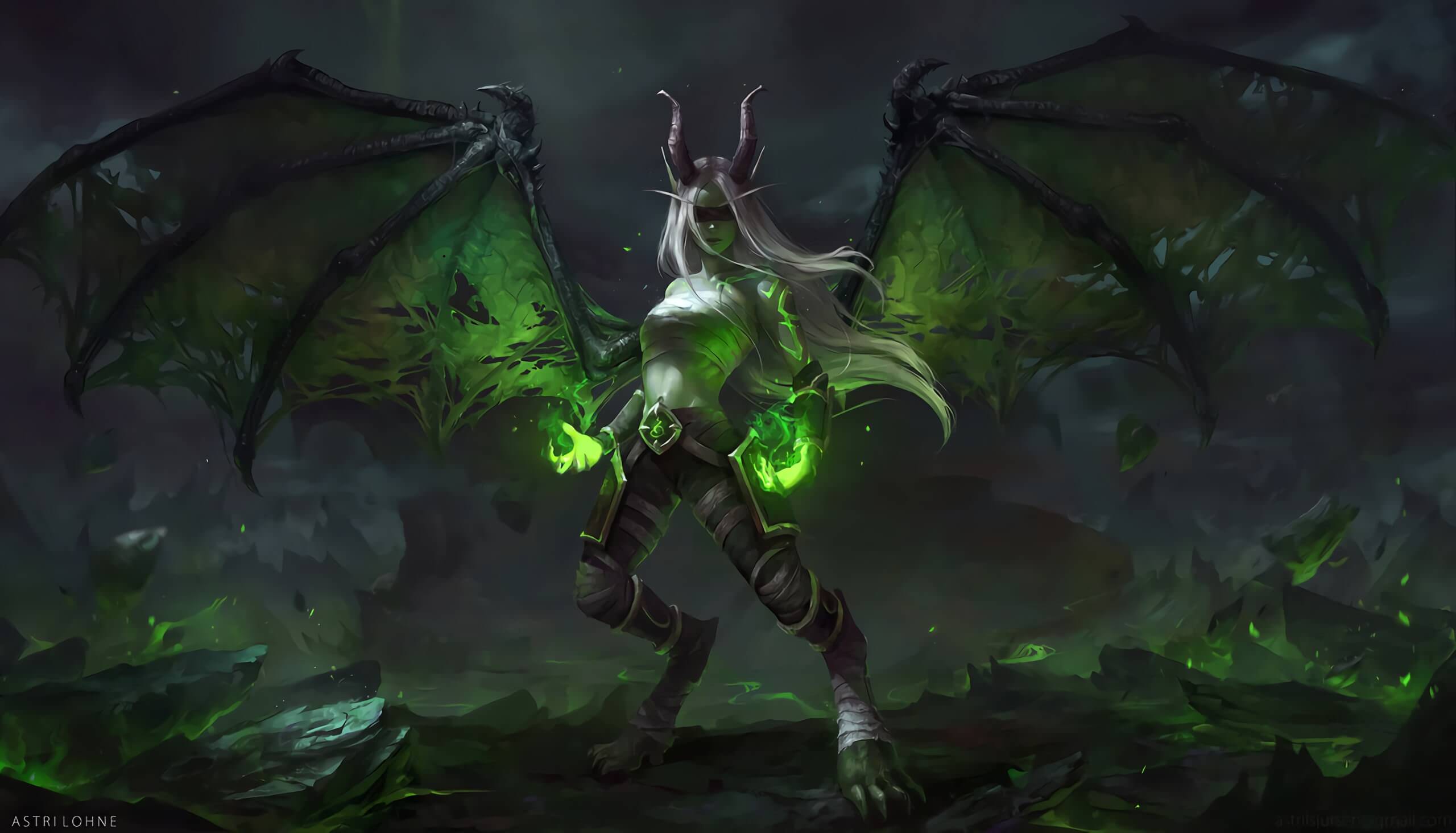

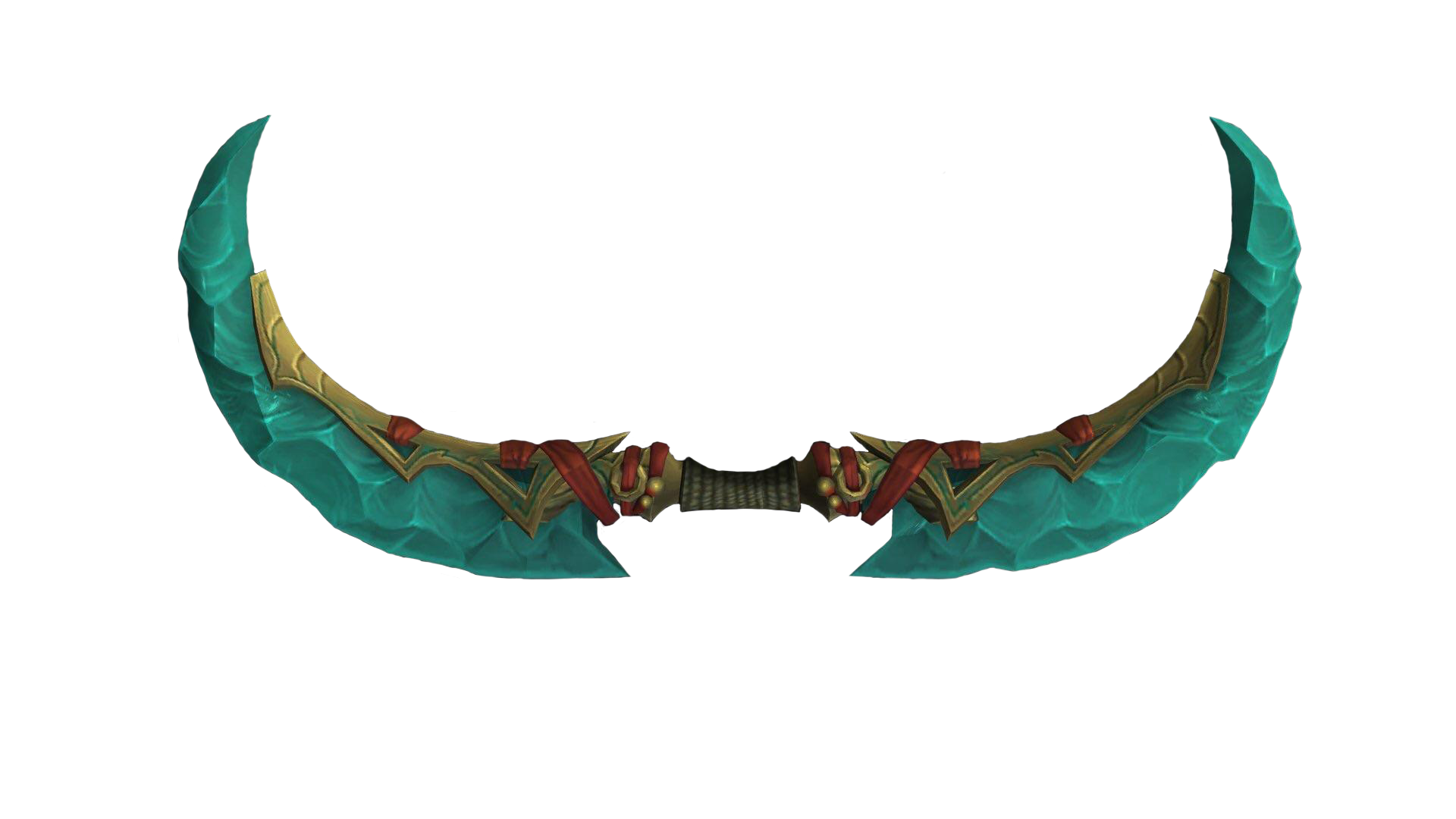
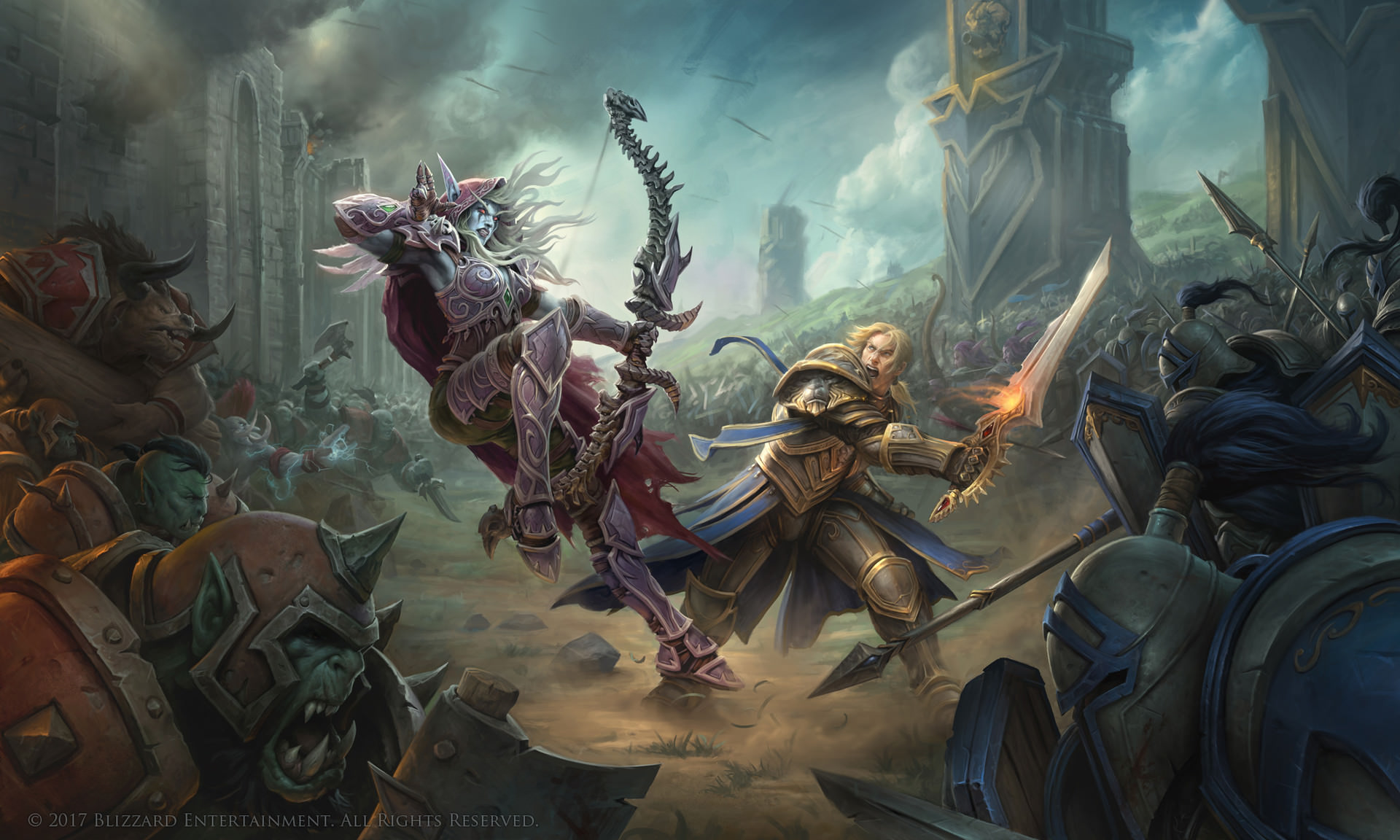
Chapter 3: Personality & Background
Characters are defined by much more than their race and class. They're individuals with their own stories, interests, connections, and capabi-lities beyond those that class and race define. This chapter expounds on the details that dis-tinguish characters from one another, including the basics of name and physical description, the rules of backgrounds and languages, and finer points
of personality and alignment.
Character Details
Your character's name and physical description might be the first things that the other players at the table learn about you It's worth thinking about how these characteris-tics reflect the character you have in mind.
Name
Your character's race description includes sample names for members of that race. Put some thought into your name even if you're just picking one from a list, it may be some-thing you will have to keep for a long time.
Sex
You can play a male or female character without gaining any special benefits or hindrances. Think about how your character does or does not conform to the broader culture's expectations of sex, gender, and sexual behavior. As an ex-ample, a male night elf priest defies the traditional gender divisions of blood elf society, which could be a reason for your character to leave that society and venture on Azeroth.
You don't need to be confined to binary notions of sex and gender. You could play a female presenting herself as a man, a man feeling trapped in a female body, or a bearded female dwarf who hates being mistaken for a male. Your character's sexual orientation is for you to decide.
Contrasting Characters
The details in this chapter make a big difference in setting your character apart from every other character. Consider the following two human fighters.
Hailing from Strahnbrad. Cayla Davenport was a brash teenager who had a rough childhood. The daughter of a thief, she ran away from home and practiced her father's trade on the streets of Southshore. When she tried to rob the proprietor of the Inn, the Early Oak, he caught her and took her under his wing, giving her a job as a barmaid. After the scourge destroyed the inn, necessity forced Cayla into adventure alongside the friends she'd known from her childhood.
Endrik Goodwin grew up on the streets of Stormwind. He used his wits, strength, and agility to carve out his own territory in the city's shanty town. After several years, he attracted the notice of one of the most powerful thieves' guilds in the city, and he ascended the ranks of the guild quickly despite his youth.
Cayla and Endrik are both human and both warriors, possessing similarly high Strength and Dexterity scores, but there the similarity ends.
Height and Weight
You can decide your character's height and weight, using the information provided in your race description or on the Random Height and Weight table. Think about what your character's ability scores might say about his or her height and weight. A strong and tough character might be tall or just heavy. A weak but agile character might be thin.
If you want to, you can roll randomly for your character's height and weight using the Random Height and Weight table. The dice roll given in the Height Modifier column determines the character's extra height beyond the base height. The same number multiplied by the dice roll or quantity given in the Weight Modifier column determines the character's extra weight beyond the base weight.
Random Height and Weight
| Race | Base Height |
Height Modifier |
Base Weight |
Weight Modifier |
|---|---|---|---|---|
| Draenei, broken | 5'6" | +2d8 | 155 lb. | x (2d6) lb. |
| Draenei, exodar | 5'9" | +2d8 | 175 lb. | x (2d6) lb. |
| Draenei, light | 6" | +2d8 | 185 lb. | x (2d6) lb. |
| Dwarf, bronze | 3'8" | +2d4 | 115 lb. | x (2d6) lb. |
| Dwarf, dark | 3'7" | +2d4 | 125 lb. | x (2d6) lb. |
| Dwarf, wild | 4' | +2d4 | 130 lb. | x (2d6) lb. |
| Elf, high | 4'9" | +2d10 | 100 lb. | x (1d4) lb. |
| Elf, night | 6'1" | +2d8 | 145 lb. | x (1d6) lb. |
| Elf, nightborne | 6" | +2d10 | 125 lb. | x (1d6) lb. |
| Elf, void | 4'7" | +2d10 | 95 lb. | x (1d4) lb. |
| Forsaken, elf | 4'7" | +2d10 | 90 lb. | x (1d4) lb. |
| Forsaken, human | 4'6" | +2d10 | 100 lb. | x (1d4) lb. |
| Gnome | 2'7" | +2d4 | 40 lb. | x 1 lb. |
| Goblin | 3' | +2d4 | 35 lb. | x 1 lb. |
| Human | 4'8" | +2d10 | 110 lb. | x (2d4) lb. |
| Orc | 5'4" | +2d10 | 160 lb. | x (2d6) lb. |
| Pandaren | 5'8" | +2d4 | 150 lb. | x (2d6) lb. |
| Tauren, high | 6'4" | +2d10 | 195 lb. | x (2d6) lb. |
| Tauren, mulgore | 6'3" | +2d10 | 200 lb. | x (2d6) lb. |
| Tauren, taunka | 6'1" | +2d10 | 240 lb. | x (2d6) lb. |
| Troll, forest | 5'8" | +2d10 | 150 lb. | x (2d6) lb. |
| Troll, ice | 5'4" | +2d8 | 175 lb. | x (2d6) lb. |
| Troll, jungle | 5'3" | +2d8 | 160 lb. | x (2d4) lb. |
| Troll, zandalari | 5'5" | +2d10 | 165 lb. | x (2d6) lb. |
| Worgen | 6'2" | +2d10 | 155 lb. | x (2d6) lb. |
For example, as a human, Cayla has a height of 4 feet 8 inches plus 2d10 inches. Her player rolls 2d10 and gets a total of 12, so Cayla stands at 5 feet 8 inches tall. Then the player uses the same roll of 12 and multiplies it by 2d4 pounds. Her 2d4 roll is 3, an extra 36 pounds (12 x 3) on top of her base 110 pounds for a total of 146 pounds.

Character Details
Consider how the names Cayla Davenport and Endrik Goodwin set these characters apart from each other and reflect their personalities. Cayla is a young woman determined to prove that she's not just a kid any more, and her name makes her sound young and ordinary. Endrik Goodwin comes from a the Stormwind province and carries a name of riches.
Cayla is nineteen years old at the start of her adventuring career and has auburn hair, green eyes, fair skin with freckles, and a mole on her right hip. Endrik is a small man, compact and all wiry muscle. He has angular features and high cheekbones, and he always seems in need of a shave. His raven-black hair is thick and full, but his eyes are gray and lifeless, betraying the emptiness of his life and soul.
Other Physical Characteristics
You choose your character's age and the color of his and her hair, eyes, skin, and other racial traits. To add a touch of distinctiveness, you might want to give your character an unusual or memorable physical characteristic, such as a scar, a limp, or a tattoo.
Alignment
A typical creature in the world of Warcraft has an align-ment, broadly describing its moral and personal attitudes. Alignment is a combination of two factors: one identifies morality (good, evil, or neutral), and the other describes attitude towards society and order (lawful, chaotic, or neutral). Thus, nine distinct alignments define the possible combinations.
These brief summaries of the nine alignments describe the typical behavior of a creature with that alignment. Indi-viduals might vary significantly from that typical behavior, and few people are perfectly and consistently faithful to the precepts of their alignment.
Lawful good (LG) creatures can be counted on to do the right thing as expected by society. Most paladins, and dwarves are lawful good.
Neutral good (NG) folk do the best they can to help others according to their needs. Many celestials, and most gnomes are neutral good.
Chaotic good (CC) creatures act as their conscience directs, with little regard for what others expect. Many elves, and unicorns are chaotic good.
Lawful neutral (LN) individuals act in accordance with law, tradition, or personal codes. Many monks, and some mages are lawful neutral.
Neutral (N) is the alignment of those who prefer to steer clear of moral questions and don't take sides, doing what seems best at the time. Many humans are neutral.
Chaotic neutral (CN) creatures follow their whims, holding their personal freedom above all else. Many warriors, and rogues are chaotic neutral.
Lawful evil (LE) creatures methodically take what they want, within the limits of a code of tradition, loyalty, or order. The black dragonflight are lawful evil.
Neutral evil (NE) is the alignment of those who do whatever they can get away with, without compassion or qualms. Many goblins, and warlocks are neutral evil.
Chaotic evil (CE) creatures act with arbitrary violence, spurred by their greed, hatred, or bloodlust. Demons, and gnolls are chaotic evil.
Alignment in the Multiverse
For many thinking creatures, alignment is a moral choice. Humans, orcs, elves, and other humanoid races can choose whether to follow the paths of good or evil, law or chaos. According to myth, these races were giving free will to choose their moral paths, knowing that good without free will is slavery.
The evil who created other races, though, made those races to serve them. Those races have strong inborn tendencies. Centaurs share a violent temperament, running deep in their blood, and are thus inclined toward evil. Even if an centaur chooses a good alignment, it struggles against its innate tendencies for its entire life.
Alignment is an essential part of the nature of celestials and fiends. A eredar does not choose to be lawful evil, and it doesn't tend toward lawful evil, but rather it is lawful evil in its essence. If it somehow ceased to be lawful evil, it would cease to be a eredar.
Most creatures that lack the capacity for rational thought do not have alignments, they are unaligned. Such a crea-ture is incapable of making a moral or ethical choice and acts according to its bestial nature. Sharks are savage predators, but they are not evil; they have no alignment.
Cayla and Endrik: Alignment
Cayla Davenport is neutral good, fundamentally good-hearted and striving to help others where she can. Endrik is lawful evil, unconcerned with the value of sentient life but at least professional in his approach to murder.
As an evil character, Endrik is not an ideal adventurer. He began his career as a villain, and only cooperates with heroes when he must and when it's in his own best interests.
In most games, evil adventurers cause problems in groups alongside others who don't share their interests and objectives. Generally, evil alignments are for villains and monsters.
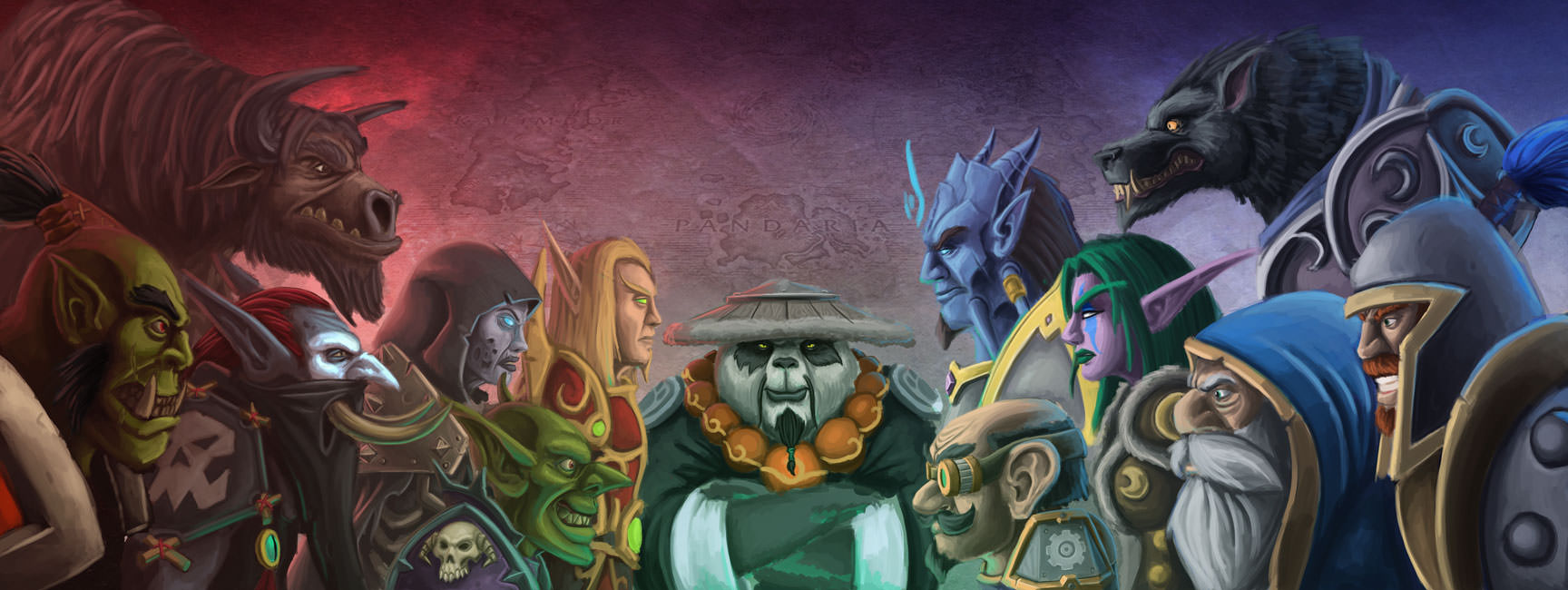

Languages
Your race indicates the languages your character can speak by default, and your background might give you access to one or more additional languages of your choice.
Choose your languages from the Standard Languages table, or choose one that fits in your campaign. With your DM's permission, you can instead choose a language from the opposite factions Language table, an Exotic Languages table, or the language of druids and rogues.
Some languages are actually families of languages with many dialects. For example, the Kalimag language includes the Auran, Aquan, Ignan, and Terran dialects, one for each of the four elementals.
Standard Languages
| Language | Typical Speakers | Script |
|---|---|---|
| Alliance Races | ||
| Common | Humans | Common |
| Dwarven | Dwarves | Runic |
| Gnomeish | Gnomes | Common |
| Draenei | Draeneis | Eredic |
| Horde Races | ||
| Orcish | Orcs | Common |
| Gutterspeak | Forsaken | Common |
| Taur-ahe | Taurens | Pictoform |
| Zandali | Trolls | — |
| Goblin | Goblins | Common |
| Neutral Races | ||
| Darnassian | Night Elves | Darnassian |
| Mogu | Pandarens | Logogram |
| Shalassian | Nightborne | Darnassian |
| Thalassian | High Elves | Darnassian |
Exotic Languages
| Language | Typical Speakers | Script |
|---|---|---|
| Celestial | Celestials | Celestial |
| Draconic | Dragons | Runic |
| Eredun | Demons | Eredic |
| Giant | Ogres | — |
| Kalimag | Elementals | Runic |
| Low Common | Lesser Races | Common |
| Pandaren | — | Syllabary |
Personal Characteristics
Fleshing out your character's personality —the array of traits, mannerisms, habits, beliefs, and flaws that give a person a unique identity— will help you bring him or her to life as you play the game. Four categories of characteristics are presented here: personality traits, ideals, bonds, and flaws. Beyond those categories, think about your charac-ter's favorite words or phrases, tics and habitual gestures, vices and pet peeves, and whatever else you can imagine.
New backgrounds are presented later in this chapter, see also the Player's Handbook and other sources for the full array of available backgrounds for you to choose from.
Personality Traits
Give your character two personality traits. Personality traits are small, simple ways to help you set your character apart from every other character. Your personality traits should tell you something interesting and fun about your character. They should be self-descriptions that are specific about what makes your character stand out. "I'm smart" is not a good trait, because it describes a lot of characters. "I've read every book in Dalaran" tells you something specific about your character's interests and disposition.
Personality traits might describe the things your char-acter likes, his or her past accomplishments, things your character dislikes or fears, your character's self-attitude or mannerisms, or the influence of his or her ability scores.
A useful place to start thinking about personality traits is to look at your highest and lowest ability scores and define one trait related to each. Either one could be positive or negative: you might work hard to overcome a low score, for example, or be cocky about your high score.
Ideals
Describe one ideal that drives your character. Your ideals are the things that you believe in most strongly, the funda-mental moral and ethical principles that compel you to act as you do. Ideals encompass everything from your life goals to your core belief system.
Ideals might answer any of these questions: What are the principles that you will never betray? What would prompt you to make sacrifices? What drives you to act and guides your goals and ambitions? What is the single most impor-tant thing you strive for?
You can choose any ideals you like, but your character's alignment is a good place to start defining them. The back-ground in this chapter includes six suggested ideals. Five of them are linked to aspects of alignment: law, chaos, good, evil, and neutrality. The last one has more to do with the background than with moral or ethical perspectives.
See also the Player's Handbook and other sources for a full list of available backgrounds to choose from.
Bonds
Create one bond for your character. Bonds represent a character's connections to people, places, and events in the world. They tie you to things from your background. They might inspire you to heights of heroism, or lead you to act against your own best interests if they are threatened. They can work very much like ideals, driving a character's motivations and goals.
Bonds might answer any of these questions: Whom do you care most about? To what place do you feel a special connection? What is your most treasured possession?
Your bonds might be tied to your class, your background, your race, or some other aspect of your character's history or personality. You might also gain new bonds over the course of your adventures.
Flaws
Finally, choose a flaw for your character. Your character's flaw represents some vice, compulsion, fear, or weakness in particular, anything that someone else could exploit to bring you to ruin or cause you to act against your best interests. More significant than negative personality traits, a flaw might answer any of these questions: What enrages you? What's the one person, concept, or event that you are terrified of? What are your vices?

New Backgrounds
Every story has a beginning. Your character's background reveals where you came from, how you became an adventurer, and your place in the world. Your warrior might have been a courageous knight or a grizzled soldier. Your mage could have been a sage or an artisan. Your rogue might have gotten by as a guild thief or commanded audiences as a jester.
Choosing a background provides you with important story cues about your character's identity. The most important question to ask about your background is what changed? Why did you stop doing whatever your back-ground describes and start adventuring? Where did you
get the money to purchase your starting gear, or, if you come from a wealthy background, why don't you have more money? How did you learn the skills of your class? What sets you apart from ordinary people who share your background?
The backgrounds in this chapter are meant as additions to the factions presented in the Player's Handbook, not as replacements for them.
Proficiencies
Each background gives a character proficiency in two skills. Skills are described in chapter 6 of the Player's Handbook.
In addition, most backgrounds give a character profi-ciency with one or more tools. Tools and tool proficiencies are detailed in chapter 5 of the Player's Handbook.
If a character would gain the same proficiency from two different sources, he or she can choose a different profi-ciency of the same kind (skill or tool) instead.
Languages
Some backgrounds also allow characters to learn additional languages beyond those given by race. See "Languages" earlier in this chapter.
Equipment
Each background provides a package of starting equip-ment. if you use the optional rule from chapter 4 to spend coin on gear, you do not receive the starting equipment from your background.
Suggested Characteristics
A background contains suggested personal characteristics based on your background. You can pick characteristics, roll dice to determine them randomly, or use the sugges-tions as inspiration for characteristics of your own creation.
Customizing a Background
You might want to tweak some of the features of a back-ground so it better fits your character or the campaign setting. To customize a background, you can replace one feature with any other one, choose any two skills, and choose a total of two tool proficiencies or languages from the sample backgrounds.
You can either use the equipment package from your background or spend coin on gear as described in chapter 4. (If you spend coin, you can't also take the equipment package suggested for your class.) Finally, choose two personality traits, one ideal, one bond, and one flaw. If you can't find a feature that matches your desired background, work with your DM to create one.
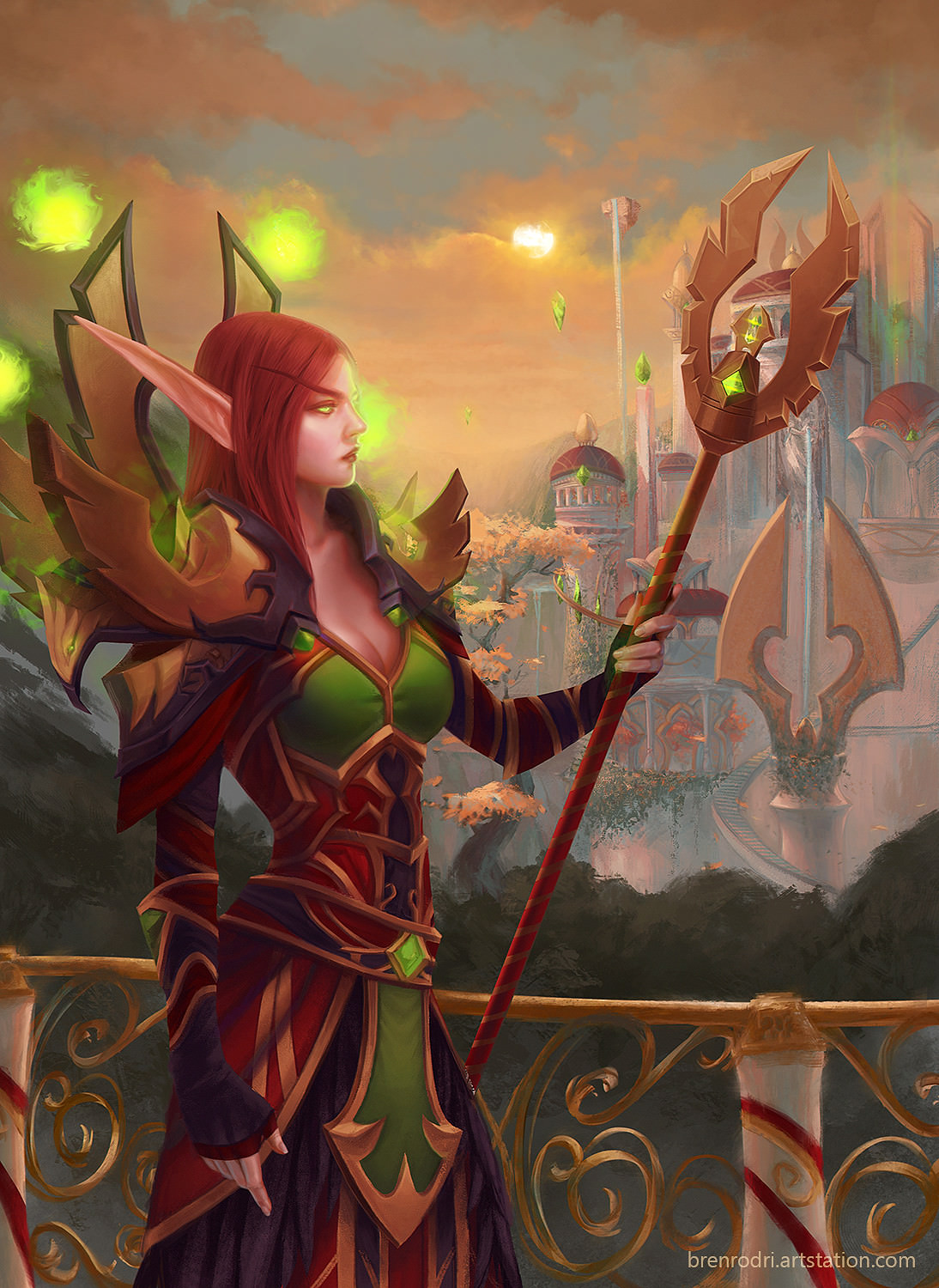

Double Agent
You are an informant for an opposing faction or organi-zation, secretly providing them with false information on behalf of another organization in which your loyalty lies. You may be an informant for the Scarlet Crusade, providing them with false intel on behalf of the forsakens. Perhaps you are a member of the Bilgewater Cartel, providing the goblin trade partners with false information to give the cartel the richest scores whilst staying out of their reach.
Discuss with your DM the factions/organizations you are working with and against.
Skill Proficiencies: Deception, Insight
Tool Proficiencies: Forgery kit
Languages: One of your choice from the opposite faction
Equipment: Forgery kit, dagger, two pieces of chalk, 4 sheets of parchment, one bottle of ink, one quill, a set of traveler's clothes, and a belt pouch containing 15 gp
Feature: Two Sides of One Coin
You have contacts within both organizations that you provide information to and/or for. Official organizations will often allow you to commit minor crimes without fear of punishment, or run a business without paying all the taxes or fees typically required. Additionally, you can gain an audience with functionaries from both organizations.
Suggested Characteristics
Having to work for two sides, hearing each sides story and delivering crucial information false or not. This is not a life for all, often shaping carries to leave personal connections behind, distance themselves from 'close' allies.
| d8 | Personality Trait | |
|---|---|---|
| 1 | People are only as valuable as the information they have. | |
| 2 | I act sophisticated and proper. | |
| 3 | Being simple keeps me unnoticed and underestimated. | |
| 4 | I always share with those in need. | |
| 5 | I am paranoid and a nervous wreck. | |
| 6 | I try to gather as much information as I can before I act. | |
| 7 | I hide behind a facade, only showing my true self to trusted friends. | |
| 8 | I am always calm, no matter what the situation. I never raise my voice or let emotions control me. |
| d6 | Ideal | |
|---|---|---|
| 1 | Selfless I use my position to help good people avoid prosecution or victimization. (Good) | |
| 2 | Manipulative I use secrets to manipulate and blackmail others. (Evil) | |
| 3 | Just Means I get my hands dirt for the greater good. (Lawful) | |
| 4 | Freedom I support mine and others right to do as we wish. (Chaotic) | |
| 5 | Everyone has something to hide, so I trust no one. (Neutral) | |
| 6 | Secretive Everyone has secrets, no one will ever know mine. (Any) |
| d6 | Bond | |
|---|---|---|
| 1 | I got involved in a web of lies to protect the ones I love | |
| 2 | I work to undermine an oppressive organization that harms my home. | |
| 3 | I was forced into providing information because I was framed, so I found a way to get back a little of my freedom. | |
| 4 | My family relies on my support. | |
| 5 | I am stuck in dangerous games because of a loved one's poor decisions. | |
| 6 | I need to advance in my position within my organization. |
| d6 | Flaw | |
|---|---|---|
| 1 | I always think i'm one step ahead. | |
| 2 | I see double agents everywhere. | |
| 3 | I indulge in illegal behaviors whenever possible. | |
| 4 | I am pessimistic about everything. | |
| 5 | I am vindictive and impulsive. | |
| 6 | I am reckless and seek dangerous thrills. |
Faction Fostered
You were abandoned at birth and found by members of the opposing faction, taken in by a family and raised as a member of their faction. Having had a harsh childhood of being shunned upon by members of the faction, never fully being accepted but merely tolerated in their presence.
You might be a tauren born in the eastern kingdoms, and abandoned by your parents, to be found by human farmers that took you in, nurtured you and raised you as their own, or you may be a human of Theramore, who ran away from your home, to be taken in by orcs and raised as a member of the horde within Orgrimmar, taught how to fight and learn the language of orcs.
Discuss with your DM the details of the faction and race who raised you, as not all races of Azeroth have an equal relationship towards other races.
Skill Proficiencies: History, Perception
Languages: Two of your choice from the faction you were raised ins faction languages.
Equipment: A set of common clothes, hooded cloak, a trinket of your faction, book, one bottle of ink, one quill, and a belt pouch containing 10 gp
Feature: A False Allegiance
Your race and appearance makes you able to enter and go undisturbed through villages and cities of both factions, eye may wander upon you as you walk, but none will stop and ask questions, or raise arms against you.
Suggested Characteristics
Having lived a life amongst races of the opposite faction, getting to know and love their customs often make faction fostered social skills within their born faction limited. They are nonetheless social individuals, many of which greatly appreciate the races they now have grown up with, and stand by their side against their own kin.

| d8 | Personality Trait | |
|---|---|---|
| 1 | I am optimistic and appreciate simple gestures given to me. | |
| 2 | I am genial and make an honest effort to get along with my new faction. | |
| 3 | I smile often, but I am distrustful of people outside my family. | |
| 4 | I am quiet and study the people around me intently. | |
| 5 | I am always looking over my shoulder. | |
| 6 | I am uncomfortable in urban settings and only truly feel safe on the open road. | |
| 7 | I am friendly and extremely curious. | |
| 8 | I love to talk to people and hear their stories. |
| d6 | Ideal | |
|---|---|---|
| 1 | Loyalty I never betray a friend, no matter their allegiance. (Lawful) | |
| 2 | People I help those who help me. (Any) | |
| 3 | Aspiration I will prove im worthy of this faction. (Good) | |
| 4 | Family Blood is thicker than water. (Lawful) | |
| 5 | Anger I was abandoned and am angry at my kin for being left behind. (Evil) |
|
| 6 | Peace All races deserve peace. (Neutral) |
| d6 | Bond | |
|---|---|---|
| 1 | My family means everything to me. | |
| 2 | I owe everything to the people that took me in, and would do anything for them. | |
| 3 | My foster parents were better than my birth parents and I love them dearly. | |
| 4 | I strive to one day find the parents that left me. | |
| 5 | I must prove myself worthy of the love of a prominent family member. | |
| 6 | I must complete a great quest to prove my worth. |
| d6 | Flaw | |
|---|---|---|
| 1 | I am very slow to trust others. | |
| 2 | I have no sympathy for anyone of my born faction. | |
| 3 | I throw myself into danger recklessly | |
| 4 | I try to talk my way out of every situation. | |
| 5 | I always believe those of my foster race. | |
| 6 | I am painfully shy and have difficulties speaking to people I don't know. |
Kirin Tor Apprentice
You have been accepted into the Kirin Tor, Dalaran's elite cadre of the most powerful wizards on Azeroth. You have spent time within their school, earning yourself a magi mentor to oversee your studies and guide your learning.
You've learnt the basics of the schools of magic, and the ley lines of arcane magic that runs beneath the surface of Azeroth. You've spent enough time within Kirin Tors libraries, learning what knowledge interested you, and have been sent out onto Azeroth by your mentor to seek know-ledge elsewhere, and to gain experience.
Skill Proficiencies: Arcana, History
Tool Proficiencies: One type of artisan's tools
Languages: One of your choice
Equipment: A bottle of high quality ink, a quill, chalk, a scroll case with 5 pieces of parchment, robes, a candle, tinder box, and a belt pouch containing 15 gp
Feature: A Prominent Mentor
You know at least one prominent mage within the Kirin Tor that you can call upon for answers and information. You've learnt a simple but limited spell that makes you able to contact them as long as you are on the same plane of existence. The spell is limited to a 100 word message, and a 100 word reply from the mentor. Once you've contacted your mentor, you cannot contact him again for a week, unless you expend a spell slot of 2nd level or higher.
At the DMs discretion, the mentors information may be false, missing vital details, or they may not respond within a timely fashion.
Discuss the details of the mages you know within the Kirin Tor with your DM.
Suggested Characteristics
An apprentice of the Kirin Tor is often eager to learn what lies around Azeroth, wishing to learn any knowledge given to them. These apprentices vary drastically in personality, but they all have one thing in common, a deep lying wish for knowledge and understanding of the magic of the world.
| d8 | Personality Trait | |
|---|---|---|
| 1 | I am quiet and observant. | |
| 2 | I compare any magical effect i see to one I have learned about. | |
| 3 | I bring up my mentors' teachings often | |
| 4 | I enjoy experiencing the world and avoid being 'cooped up' in a quiet or stuffy location. | |
| 5 | I treat others as though they are unintelligent. | |
| 6 | I am wide eyed and easily excited. | |
| 7 | I like to use big words to showcase my intelligence. | |
| 8 | I enjoy an intellectual challenge. |
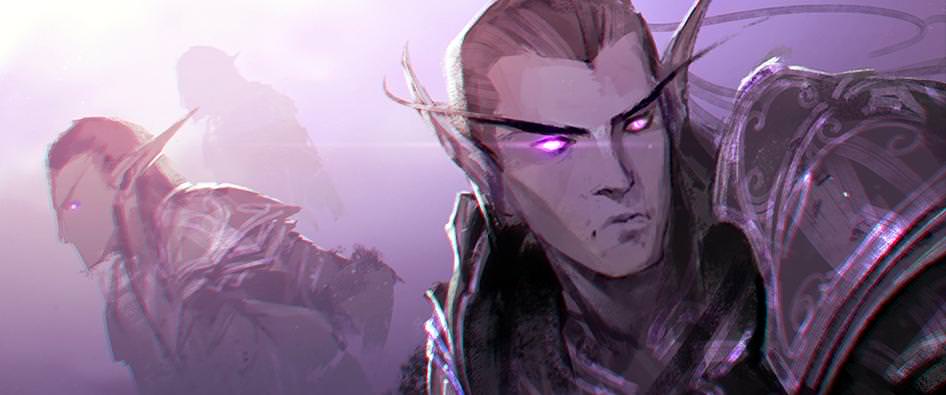

| d6 | Ideal | |
|---|---|---|
| 1 | Protection Magic can protect us from all the evils in the world. (Good) | |
| 2 | Power Knowledge can be leveraged into power in the world, and I want more. (Evil) | |
| 3 | Respect Magic deserves our humble efforts to understand and master. (Lawful) | |
| 4 | Experimentation New and exciting magics await discovery. (Chaotic) | |
| 5 | Knowledge Understanding the world around us is the only thing that matters. (Neutral) | |
| 6 | Self-Improvement I will achieve magical power through self-mastery and understanding. (Any) |
| d6 | Bond | |
|---|---|---|
| 1 | I will be known for my power, knowledge, and discoveries. | |
| 2 | I will prove myself superior to my mentors. | |
| 3 | I will bring honor and renown my family. | |
| 4 | I will discover new magics that my mentor has never heard of. | |
| 5 | A former mentor was a monster, I will avenge his victims. | |
| 6 | I have heard of a scroll that contains knowledge I seek that I must find. |
| d6 | Flaw | |
|---|---|---|
| 1 | I point out others mistakes to make them look smaller so I feel bigger. | |
| 2 | I can't resist the opportunity to learn a new spell or gain a new magical item. | |
| 3 | I never learned proper social skills or interactions. | |
| 4 | I use spells and magic to do things I can do by hand. | |
| 5 | I have disdain for authority and act rebelliously. | |
| 6 | I'm compelled to prove my superior intelligence. |
Tribal Member
you were born and raised in the lands of your tribe. Your tribe has a territory on which they reside. You may come from of the many smaller tauren tribes that populate Kalimdor, or from one of the vast expanding tribes of the trolls. Perhaps you are a member of one of the prominent orc clans. You may come from a tribe who have isolated themselves, and have little contact with the outside world, or a tribe that actively trade with civilized societies.
Skill Proficiencies: Nature, Survival
Tool Proficiencies: One type of artisan's tools, one type of musical instrument
Equipment: A set of common traveler's clothes, a set of artisan's tools (one of your choice), a musical instrument (one of your choice), tribal trinket, and a belt pouch containing 10 gp.
Feature: At One with Nature
You are intimately familiar with the geography of your home region.
You know where water, shelter, and food can be found anywhere within several miles of your home. You are good at finding these areas when outside your home region as well when in a climate like that of your home.
Suggested Characteristics
As a member of a tribe, the community is what matters most, all have to work together and fill their shoes to make the tribe work. Leaving no one behind to pick up the slack.
| d8 | Personality Trait | |
|---|---|---|
| 1 | I am loyal and will do anything to protect my tribe. | |
| 2 | I speak plainly and often don't understand subtlety. | |
| 3 | I am contemptuous of larger civilizations. | |
| 4 | I do not trust arcane magic and its casters. | |
| 5 | I am naive and friendly to everyone. | |
| 6 | I am baffled by cities and grand architecture. | |
| 7 | I am unshakable and never back down. | |
| 8 | I feel empathy for all that suffer. |
| d6 | Ideal | |
|---|---|---|
| 1 | Humility I am no better or worse than anyone else on this world. (Good) | |
| 2 | Xenophobia I do not understand the ways of others, but know they are wrong. (Evil) | |
| 3 | Order Every place has rules which must be followed for everyone's good. (Lawful) | |
| 4 | Freedom There is no rule in the wild, do what you can to live. (Chaotic) | |
| 5 | Balance All things and ways of being are natural and necessary. (Neutral) | |
| 6 | Unity A tribe that works together is strong. (Any) |
| d6 | Bond | |
|---|---|---|
| 1 | My family and my tribe are everything to me. | |
| 2 | I left my tribe to prove my right to a prominent place in the tribe hierarchy. | |
| 3 | I love a prominent tribe member and must prove I am worthy of their love. |
|
| 4 | My tribe is threatened and I must protect them. | |
| 5 | My tribe was destroyed and I must have vengeance. | |
| 6 | I was dishonored and thrown out of my tribe, I must prove my worth. |
| d6 | Flaw | |
|---|---|---|
| 1 | I don't understand social nuances. | |
| 2 | I drink to excess. | |
| 3 | I don't trust anyone not of my tribe. | |
| 4 | I trust everyone to say what they mean. | |
| 5 | I believe might proves right and will not listen to those who are 'weak'. | |
| 6 | I am insecure since my tribe appears weak compared to larger, more modern societies. |

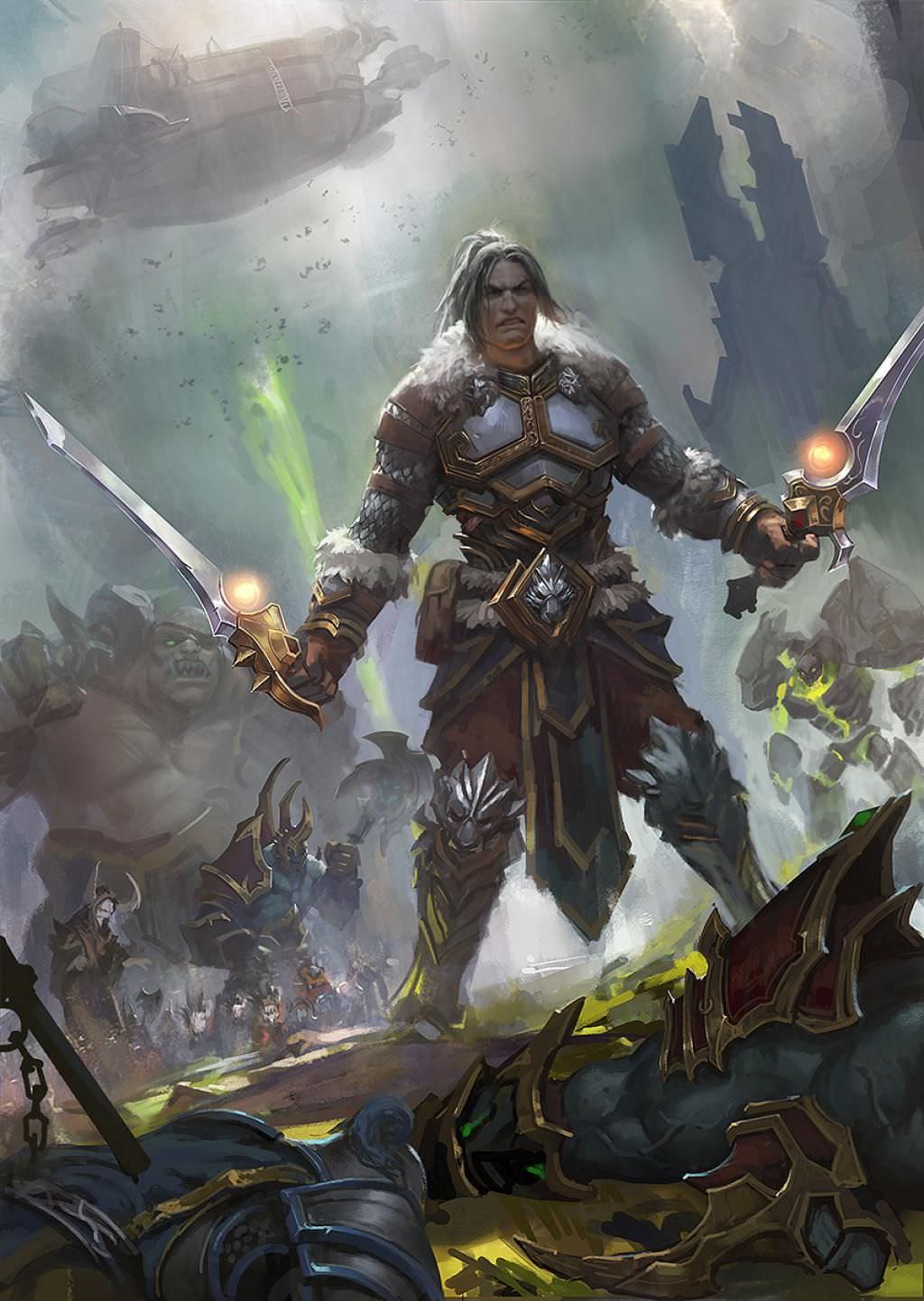
Chapter 4: New Equipment
The marketplace of a large city teems with buyers and sellers of many sorts: dwarf smiths and elf woodcarvers, troll charms, goblin relics, and gnome jewelers, not to mention humans of every shape, size, and color drawn from a spectrum of nations and cultures. In the largest cities, almost anything imaginable is offered for sale, from exotic spices and luxurious clothing to wicker baskets, practical swords, and beautiful elven bows.
For an adventurer, the availability of armor, weapons, backpacks, rope, and similar goods is of paramount importance, since proper equipment can mean the difference between life and death in a dungeon or the untamed wilds. This chapter details the mundane and exotic merchandise that adventurers commonly find useful in the face of the threats that Azeroth presents.
Starting Equipment
When you create your character, you receive equipment based on a combination of your class and your chosen background. Alternatively, you can start with a number of gold pieces based on your class and spend them on items from the lists in this chapter. See the Starting Wealth by Class table to determine how much gold you have to spend.
You decide how your character came by this starting equipment. It might have been an inheritance, or goods that the character purchased during his or her upbringing. You might have been equipped with a weapon. armor, and a backpack as part of military service. You might even have stolen your gear. A weapon could be a family heirloom, passed down from generation to generation until your character finally took up the mantle and followed in an ancestor's adventurous footsteps.
Starting Wealth by Class
| Class | Funds | |||||||
|---|---|---|---|---|---|---|---|---|
| Druid | 2d4 x 10 gp | |||||||
| Hunter | 5d4 x 10 gp | |||||||
| Mage | 4d4 x 10 gp | |||||||
| Monk | 5d4 gp | |||||||
| Paladin | 5d4 x 10 gp | |||||||
| Priest | 4d4 x 10 gp | |||||||
| Rogue | 4d4 x 10 gp | |||||||
| Shaman | 5d4 x 10 gp | |||||||
| Warlock | 4d4 x 10 gp | |||||||
| Warrior | 5d4 x 10 gp |
Wealth
Wealth varies drastically on Azeroth according to region. Coins, gems, trade goods, art object, animals, and property can reflect your character's financial well-being. Members of the peasantry trade in good, bartering for what they need to scrape what gold necessary to pay of their taxes.
Members of the nobility trade either in legal rights, such as the rights to a mine, a port, or farmland, or in gold bars, measuring gold by the pound rather than by the coin.
Only merchants, adventurers, and those offering professional services for hire commonly deal in coins.
Coinage
Common coins come in several different denominations based on the relative worth of the metal from which they are made. The three most common coins are the gold piece (gp), the silver piece (sp), and the copper piece (cp).
With one gold piece, a character can buy a belt pouch, 50 feet of good rope, or a goat. A skilled (but not exceptional) artisan can earn one gold piece a day. The gold piece is the standard unit of measure for wealth, even if the coin itself is not commonly used. When merchants discuss deals that involve goods or services worth hundreds or thousands of gold pieces, the transactions don't usually involve the exchange of individual coins. Rather, the gold piece is a standard measure of value, and the actual exchange is in gold bars, letters of credit, or valuable goods.
One gold piece is worth ten silver pieces, the most prevalent coin among commoners. One silver piece is worth ten copper pieces, which are common among laborers and beggars.
In addition, unusual coins made of other precious metals sometimes appear in treasure hoards. The electrum piece (ep) and the platinum piece (pp) originate from fallen empires and lost kingdoms, and they sometimes arouse suspicion and skepticism when used in transactions. An electrum piece is worth five silver pieces, and a platinum piece is worth ten gold pieces.
A standard coin weighs about a third of an ounce, so fifty coins weigh a pound.
Standard Exchange Rates
| Coin | cp | sp | ep | gp | pp |
|---|---|---|---|---|---|
| Copper (cp) | 1 | 1/10 | 1/50 | 1/100 | 1/1000 |
| Silver (sp) | 10 | 1 | 1/5 | 1/10 | 1/100 |
| Silver (sp) | 50 | 5 | 1 | 1/2 | 1/20 |
| Gold (gp) | 100 | 10 | 2 | 1 | 1/10 |
| Platinum (pp) | 1000 | 100 | 20 | 10 | 1 |
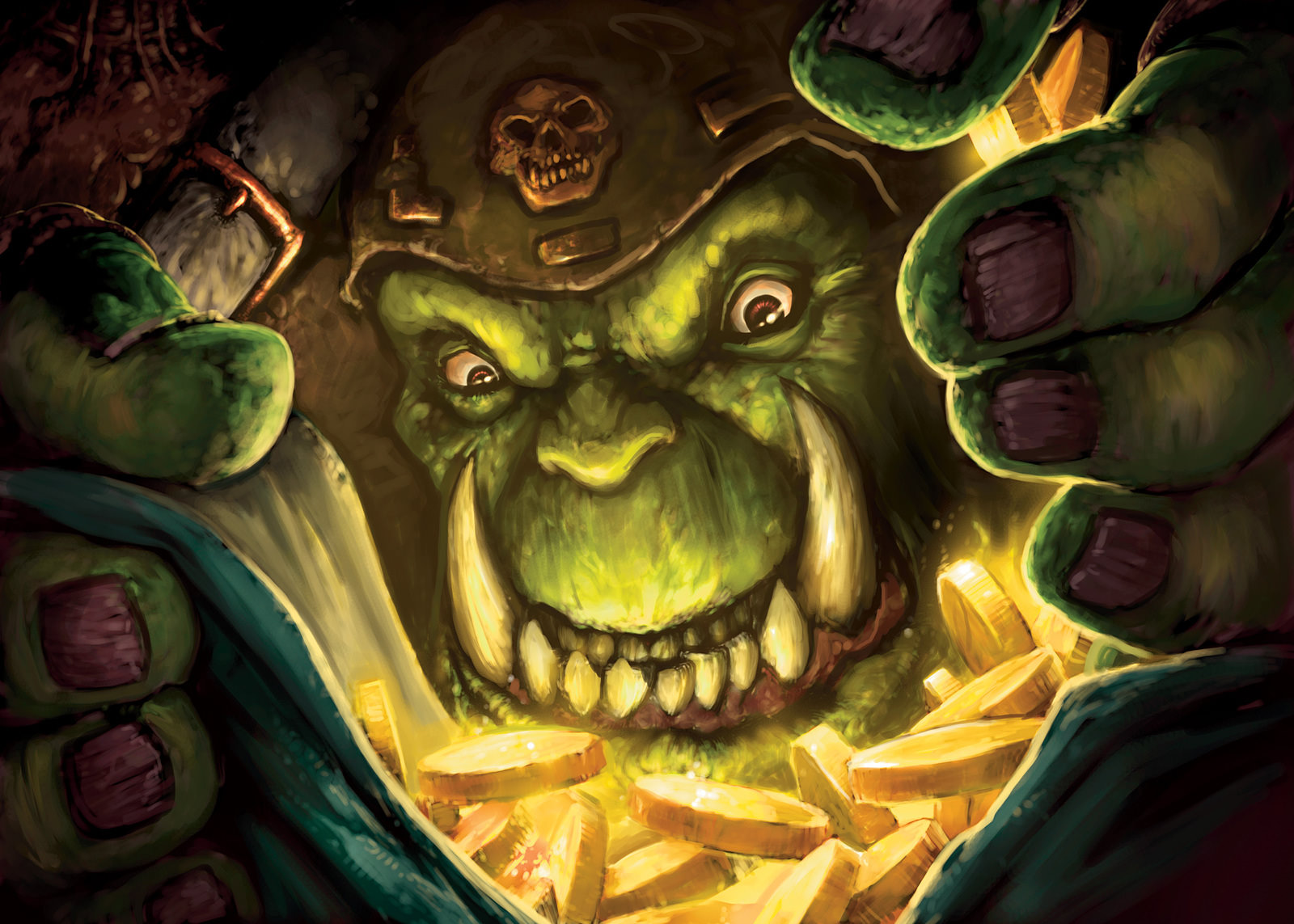

Shields
| Name | Cost | Armor Class (AC) | Strength | Stealth | Weight | |||
|---|---|---|---|---|---|---|---|---|
| Shield, Buckler | 5 gp | +1, Special | — | — | 2 lb. | |||
| Shield, Standard | 10 gp | +2 | — | — | 6 lb. | |||
| Shield, Tower | 25 gp | +2, Special | Str 15 | Disadvantage | 24 lb. |
Shields
The Shield table shows the cost, weight, and other proper-ties of the common types of shields worn on Azeroth.
Shield Proficiency. Anyone can strap a shield to their arm. Only those proficient in the shield's use know how to wield it effectively, however. If you wield a shield that you lack proficiency with, you have disadvantage on any ability check, saving throw, or attack roll that involves Strength or Dexterity, and you can't cast spells.
Special Shields
Shields with special rules are described here.
Buckler. A buckler is strapped to your forearm, allowing you to hold an item in its hand. If you use the shielded hand as part of an action or bonus action, you loose its increase to your Armor Class until the start of your next turn.
Tower Shield. You use your Strength modifier, instead of your Dexterity for determining your Armor Class while you have this shield donned.
Racial Weapons
Your race may grant proficiency in special weapons that are crafted and used by your race exclusively. The night elves with their circular moon swords and glaives, taurens with their heavy blunt totems, capable of crushing most men, and the blood elves with their double ended warblades.
Racial Weapon Proficiency
Your race, and feats can grant you proficiency with certain racial weapons. These weapons are exotic, and can't be wielded proficiently with simple and martial proficiency.
Proficiency with a racial weapon allows you to add your proficiency bonus to the attack roll for any attack you make with that weapon. If you make an attack roll using a weapon with which you lack proficiency, you do not add your proficiency bonus to the attack roll.
Special Weapons
Weapons with special rules are described here.
Sin'dorei Warblade. Immediately after attacking an enemy with this blade, you may make an additional attack with its second blade using your bonus action.
Racial Weapons
| Name | Cost | Damage | Weight | Properties | ||
|---|---|---|---|---|---|---|
| Melee Weapons | ||||||
| Kaldorei Moon sword | 15 gp | 1d8 slashing | 4 lb. | Versatile (2d6) | ||
| Kaldorei Moonglaive | 20 gp | 1d6 slashing | 3 lb. | Finesse, light, thrown (range 20/60) | ||
| Sin'dorei Warblade | 25 gp | 1d8 slashing | 5 lb. | Special | ||
| Totem, tauren | 20 gp | 2d8 bludgeoning | 45 lb. | Heavy, two-handed | ||
| Warglaive | 30 gp | 1d8 slashing | 3 lb. | Light |
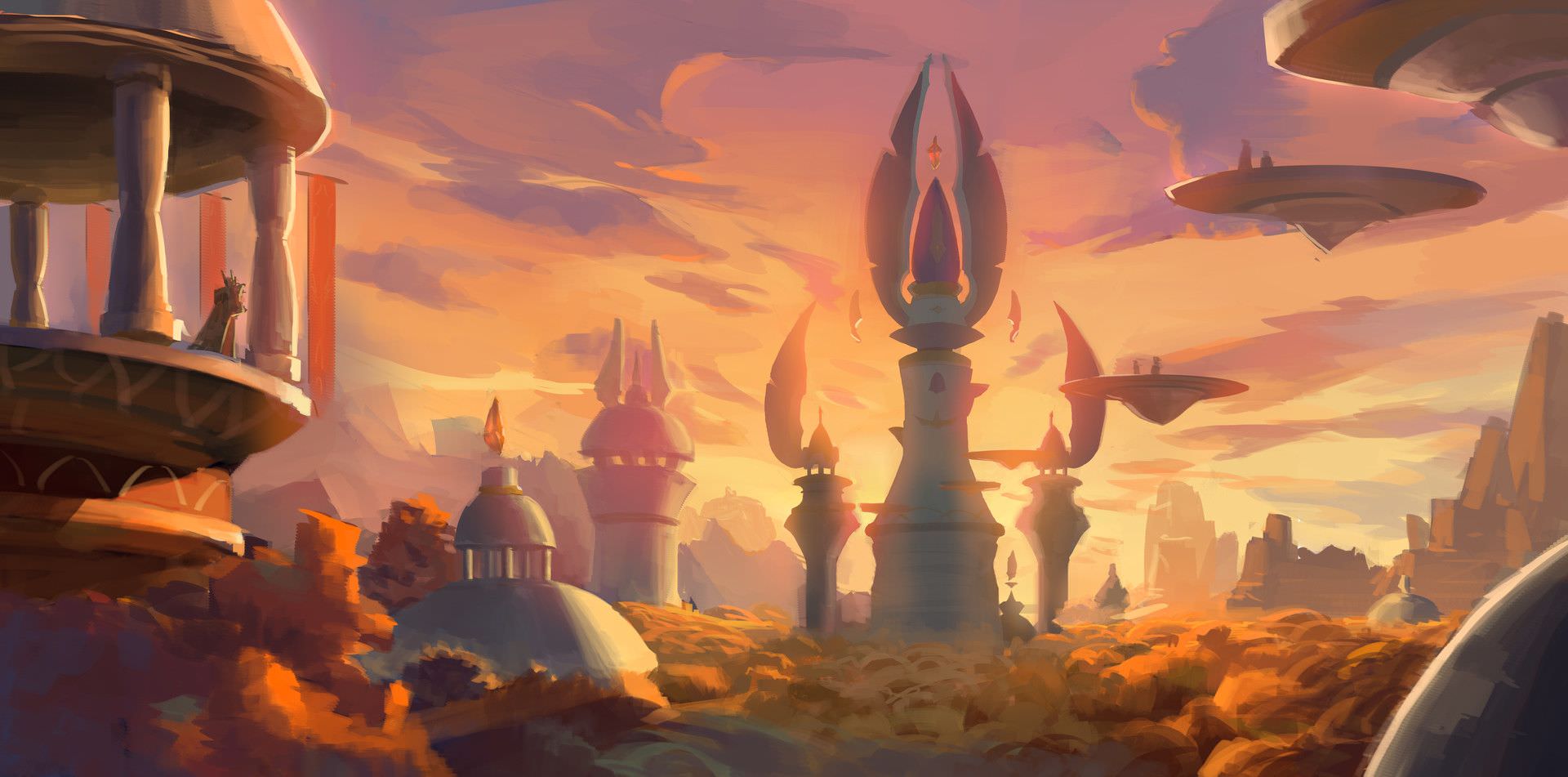


Firearms
For tinkers the invention of the crossbow was not enough. They strived to further improve the ability to shoot from a distance without the aid of magic. With the invention of black powder, the dwarves of Ironforge were quick to act in experimenting with its uses, crafting the first firearms from which the weapon has evolved around.
Firearm Proficiency
Your race, class, and feats can grant you proficiency with firearms. The two categories are flintlock and caplock.
If you make an attack roll with a firearm without being proficient, you do not add your proficiency bonus to the attack roll, and you increase the firearms misfire score by 1.
Flintlock. A common trigger, requiring black powder to be poured into the barrel following a bullet in order to be fired. Flintlock weapons are unable to be shot in heavy rain, or while submerged in water.
Caplock. A rare trigger, requiring special bullets with a black powder compartment built into them to be operated. Caplock weapons can be shot even in heavy rain, or whilst submerged in water.
Firearm Properties
Firearms have special properties related to their use that are unique to them, as shown in the Weapons table.
Misfire. Whenever you make an attack roll with a firearm, and the dice roll is equal to or lower than the weapon's Misfire score, the weapon misfires. The attack misses, and the weapon cannot be used again until you spend an action to try and repair it. To repair your firearm, you must make a successful Intelligence or Tinker's Tools check (DC equal to 8 + misfire score). If your check fails, the weapon is broken and must be mended out of combat at a quarter of the cost of the firearm.
Reload. A limited number of shots can be made with a firearm. You must then reload it using an action or bonus action (Your choice).
Ammunition
Firearms require ammunition to make an attack. Flint and caplock firearms use the same ammunition. Both ammuni-tions are generally sold in batches at the prices list below. Blunderbuss and Scatterguns use special ammunition that has its own price.
Crafting
If materials are gathered, you can craft ammunition your-self using Tinker's Tools at half the cost in the table below.
Requiring a successful DC 12 Tinker's Tools check to be done over the course of a short rest, crafting 1 batch of ammunition for the chosen weapon type.
Firearms
| Name | Cost | Damage | Weight | Properties | ||
|---|---|---|---|---|---|---|
| Flintlock Firearms | ||||||
| Blunderbuss | 300 gp | 2d8 piercing | 10 lb. | Ammunition (range 15/60), reload 1, misfire 2 | ||
| Musket | 300 gp | 1d12 piercing | 10 lb. | Ammunition (range 120/480), two-handed, reload 1, misfire 2 |
||
| Pistol | 150 gp | 1d10 piercing | 3 lb. | Ammunition (range 60/240), reload 2, misfire 1 | ||
| Caplock Firearms | ||||||
| Pepperbox | 350 gp | 2d4 piercing | 5 lb. | Ammunition (range 80/320), reload 4, misfire 2 | ||
| Revolver | 525 gp | 1d10 piercing | 6 lb. | Ammunition (range 120/380), reload 6, misfire 1 | ||
| Rifle | 600 gp | 2d6 piercing | 10 lb. | Ammunition (range 300/600), two-handed, reload 8, misfire 2 |
||
| Scattergun | 400 gp | 2d10 piercing | 12 lb. | Ammunition (range 30/90), reload 1, misfire 3 | ||
| Ammunition | ||||||
| Flintlock, bullets (10) | 3 gp | — | 2 lb. | — | ||
| Blunderbuss, bullets (5) | 5 gp | — | 2 lb. | — | ||
| Caplock, rifle (10) | 5 gp | — | 3 lb. | — | ||
| Scattergun, bullets (5) | 8 gp | — | 3 lb. | — |
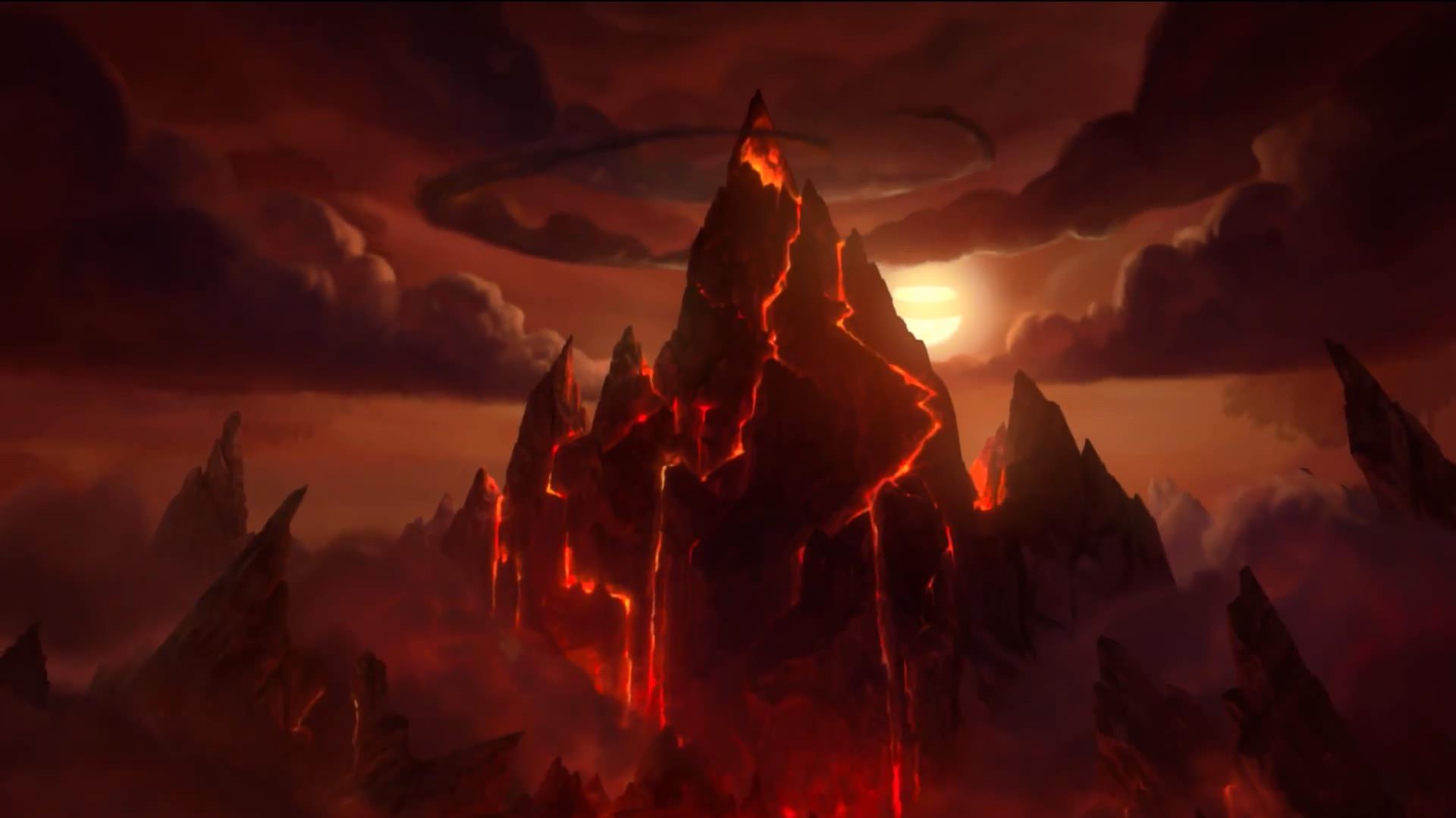

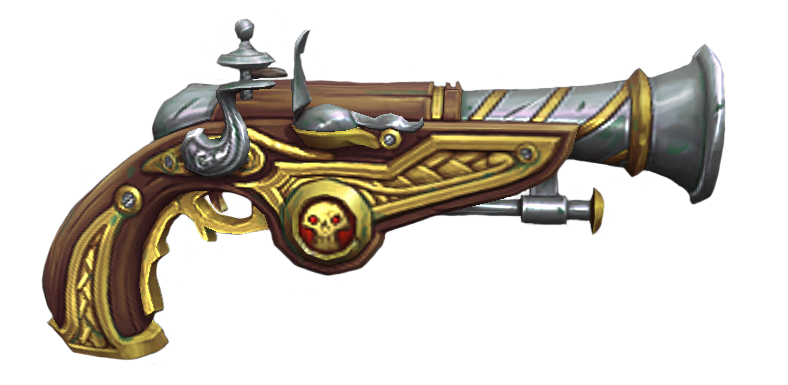
Chapter 5: Customization Options
The combination of ability scores, race, class, and background defines your character's capabilities in the game, and the personal details you create set your character apart from every other character. Even within your class and race, you have options to fine-tune what your character can do. But this chapter is for players who want to go a step further.
This chapter defines two optional sets of rules for cus-tomizing your character: multiclassing and feats. Multi-classing lets you combine classes together, and feats are special options you can choose instead of increasing your ability scores as you gain levels.
Multiclassing
Multiclassing allows you to gain levels in multiple classes. Doing so lets you mix the abilities of those classes to realize a character concept that might not be reflected in one of the standard class options.
With this rule, you have the option of gaining a level in a new class whenever you advance in level, instead of gaining a level in your current class. Your levels in all your classes are added together to determine your character level. For example, if you have three levels in mage and two in warrior, you're a 5th-level character.
As you advance in levels, you might primarily remain a member of your original class with just a few levels in another class, or you might change course entirely. never looking back at the class you left behind. You might even start progressing in a third or fourth class.
Prerequisites
To qualify for a new class, you must meet the ability score prerequisites for both your current class and your new one, as shown in the Multiclassing Prerequisites table. For example, a warrior who decides to multiclass into the druid class must have both Strength or Dexterity and Wisdom scores of 13 or higher. Without the full training that a beginning character receives, you must be a quick study in your new class. having a natural aptitude that is reflected by higher-than-average ability scores.
Multiclassing Prerequisites
| Class | Ability Score Minimum |
|---|---|
| Druid | Wisdom 13 |
| Hunter | Dexterity or Strength 13 |
| Mage | Intelligence 13 |
| Monk | Dexterity 13 and Wisdom 13 |
| Paladin | Strength 13 and Charisma 13 |
| Priest | Wisdom 13 |
| Rogue | Dexterity 13 |
| Shaman | Wisdom 13 |
| Warlock | Intelligence 13 |
| Warrior | Strength or Dexterity 13 |
| Death Knight | Strength 13 and Charisma 13 |
| Demon Hunter | Dexterity 13 and Intelligence 13 |
Experience Points
The experience point cost to gain a level is always based on your total character level, as shown in the Character Advancement table in chapter 1 of the Player's Handbook, not your level in a particular class. So, if you are a priest 6/warrior 1, you must gain enough XP to reach 8th level before you can take your second level as a warrior or your seventh level as a priest.
Hit Points and Hit Dice
You gain the hit points from your new class as described for levels after 1st. You gain the 1st-level hit points for a class only when you are a 1st-level character.
You add together the Hit Dice granted by all your classes to form your pool of Hit Dice. if the Hit Dice are the same die type, you can simply pool them together. For example, both the warrior and the paladin have a d10. so if you area paladin 5/warrior 5, you have ten d10 Hit Dice. If your classes give you Hit Dice of different types, keep track of them separately. If you are a paladin 5/priest 5, for example, you have five d10 Hit Dice and five d6 Hit Dice.
Proficiency Bonus
Your proficiency bonus is always based on your total character level, as shown in the Character Advancement table in chapter 1 of the Player's Handbook, not your level in a particular class. For example, if you are a warrior 3/rogue 2, you have the proficiency bonus of a 5th-level character, which is +3.
Proficiencies
When you gain a level in a class other than your first, you gain only some of that class's starting proficiencies, as shown in the Multiclassing Proficiencies table.
Multiclassing Proficiencies
| Class | Proficiencies Gained | |
|---|---|---|
| Druid | Light armor, nature skill | |
| Hunter | Light armor, medium armor, simple weapons, martial weapons, one skill from the class's skill list. | |
| Mage | — | |
| Monk | Light armor, simple weapons, shortswords | |
| Paladin | Light armor, medium armor, shields, simple weapons, martial weapons | |
| Priest | One skill from the class's skill list | |
| Rogue | Light armor, one skill from the class's skill list, thieves' tools | |
| Shaman | Light armor, medium armor, shields | |
| Warlock | Simple weapons | |
| Warrior | Light armor, medium armor, shields, simple weapons, martial weapons | |
| Death Knight | All armors, simple and martial weapons | |
| Demon Hunter | Simple and martial weapons, warglaive |

Class Features
When you gain a new level in a class, you get its features for that level. A few features, however, have additional rules when you're multiclassing: Channel Divinity, Extra Attack, Unarmored Defense, and Spellcasting,
Channel Divinity / Necromancy
If you already have the Channel Divinity or Necromancy feature and gain a level in a class that also grants the feature, you gain the Channel effects granted by that class, but getting the feature again doesn't give you an additional use of it. You gain additional uses only when you reach a class level that explicitly grants them to you. For example, if you are a priest 6 / paladin 4, you can use Channel Divinity twice between rests because you are high enough level in the priest class to have more uses. Whenever you use the feature, you can choose any of the Channel Divinity effects available to you from your two classes.
Extra Attack
If you gain the Extra Attack class feature from more than one class, the features don't add together. You can't make more than two attacks with this feature unless it says you do (as the warrior's version of Extra Attack or a shaman's wind shield does).
Unarmored Defense
If you already have the Unarmored Defense feature, you can't gain it again from another class.
Spellcasting
Your capacity for spellcasting depends partly on your combined levels in all your spellcasting classes and partly on your individual levels in those classes. Once you have the Spellcasting feature from more than one class, use the rules below. If you multiclass but have the Spellcasting feature from only one class, you follow the rules as described in that class.
Spells Known and Prepared. You determine what spells you know and can prepare for each class individually, as if you were a single-classed member of that class. If you are a shaman 3 / pries 4, for example, you know four shaman cantrips, and four 1st-level shaman spells based on your levels in the shaman class. As 4th-level priest, you know four priest cantrips. If your wisdom is 16, you can prepare six priest spells of 1st and 2nd-level.
Each spell you know and prepare is associated with one of your classes, and you use the spellcasting ability of that class when you cast the spell. Similarly, a spellcasting focus, such as a holy symbol, can be used only for the spells from the class associated with that focus.
Spell Slots. You determine your available spell slots by adding together all your levels in the death knight, druid, mage, priest, and warlock classes, half your levels (rounded down) in the paladin and shaman classes. Use this total to determine your spell slots by consulting the Spellcaster table found later in this chapter.
If you have more than one spellcasting class, this table might give you spell slots of a level that is higher than the spells you know or can prepare. You can use those slots, but only to cast your Lower-level spells. If a lower level spell that you cast, like burning hands, has an enhanced effect when cast using a higher-level slot, you can use the enhanced effect, even though you don't have any spells of that higher level.
For example, if you are the aforementioned shaman 3 / priest 4, you count as a 7th-level character when—
determining your spell slots: you have four 1st-level slots, three 2nd-level slots, and two 3rd-level slots. However, you don't know any 3rd-level spells, nor do you know any 2nd-level shaman spells. You can use the spell slots of those levels to cast the spells you do know.
Shadow Magic. If you have both the Spellcasting class feature and the Shadow Magic class feature, you can use the spell slots you gain from the Shadow Magic feature to cast spells you know or have prepared from classes with the Spellcasting class feature, and spell slots you gain from the Spellcasting class feature to cast spells you know from classes with the Shadow Magic class feature.
Shadow Magic
You determine your available spell slots and the level of those spell slots by adding together all your levels in the death knight, and warlock class. Use this total to determine your spell slots and spell level by consulting the Shadow Magic table found later in this chapter.
Multiclassing Shadow Magic:
| Lvl. | Spell Slots | Spell Level | ||
|---|---|---|---|---|
| 1st | 1 | 1st | ||
| 2nd | 2 | 1st | ||
| 3rd | 2 | 2nd | ||
| 5th | 2 | 3rd | ||
| 7th | 3 | 4th | ||
| 9th | 3 | 5th | ||
| 12th | 4 | 5th | ||
| 17th | 5 | 5th |
Multiclassing Spellcaster:
Spell Slots per Spell Level
| Lvl. | 1st | 2nd | 3rd | 4th | 5th | 6th | 7th | 8th | 9th | |||||||||
|---|---|---|---|---|---|---|---|---|---|---|---|---|---|---|---|---|---|---|
| 1st | 2 | — | — | — | — | — | — | — | — | |||||||||
| 2nd | 3 | — | — | — | — | — | — | — | — | |||||||||
| 3rd | 4 | 2 | — | — | — | — | — | — | — | |||||||||
| 4th | 4 | 3 | — | — | — | — | — | — | — | |||||||||
| 5th | 4 | 3 | 2 | — | — | — | — | — | — | |||||||||
| 6th | 4 | 3 | 3 | — | — | — | — | — | — | |||||||||
| 7th | 4 | 3 | 3 | 1 | — | — | — | — | — | |||||||||
| 8th | 4 | 3 | 3 | 2 | — | — | — | — | — | |||||||||
| 9th | 4 | 3 | 3 | 3 | 1 | — | — | — | — | |||||||||
| 10th | 4 | 3 | 3 | 3 | 2 | — | — | — | — | |||||||||
| 11th | 4 | 3 | 3 | 3 | 2 | 1 | — | — | — | |||||||||
| 12th | 4 | 3 | 3 | 3 | 2 | 1 | — | — | — | |||||||||
| 13th | 4 | 3 | 3 | 3 | 2 | 1 | 1 | — | — | |||||||||
| 14th | 4 | 3 | 3 | 3 | 2 | 1 | 1 | — | — | |||||||||
| 15th | 4 | 3 | 3 | 3 | 2 | 1 | 1 | 1 | — | |||||||||
| 16th | 4 | 3 | 3 | 3 | 2 | 1 | 1 | 1 | — | |||||||||
| 17th | 4 | 3 | 3 | 3 | 2 | 1 | 1 | 1 | 1 | |||||||||
| 18th | 4 | 3 | 3 | 3 | 3 | 1 | 1 | 1 | 1 | |||||||||
| 19th | 4 | 3 | 3 | 3 | 3 | 2 | 1 | 1 | 1 | |||||||||
| 20th | 4 | 3 | 3 | 3 | 3 | 2 | 2 | 1 | 1 |

New Feats
A feat represents a talent or an area of expertise that gives a character special capabilities. It embodies training, exper-ience, and abilities beyond what a class provides.
At certain levels, your class gives you the Ability Score Improvement feature. Using the optional feats rule, you can forgo taking that feature to take a feat of your choice instead. You can take each feat only once, unless the feat's description says otherwise.
You must meet any prerequisite specified in a feat to take that feat. If you ever lose a feat's prerequisite, you can't use that feat until you regain the prerequisite. For example, the Battlemage feat requires you to be able to cast a spell. If you lose your ability to cast spells somehow you can't bene-fit from the Battlemage spell until that ability is restored.
The feats presented in this book are meant as additions to those presented in the 5th edition Player's Handbook.
Battlemage
Prerequisite: The ability to cast at least one spell
You have improved you technique with spells in the heat of battle, you gain the following benefits:
- You learn two cantrips of your choice from the mage spell list.
- When you make a ranged spell attack, you do not suffer disadvantage on the attack roll if you are within 5 feet of the hostile creature.
- Before you cast an instantaneous spell that requires a spell attack and are unable of hitting more than a single target, you can choose to take a -5 penalty to the spell attack roll. If the spell hits, you add +10 to the spell's damage.
Firearm Expert
You have become excellent at the usages of firearms, gaining the following benefits:
- You ignore the reload quality of firearms with which
you are proficient. - Being within 5 feet of a hostile creature doesn't impose disadvantage on your ranged attack rolls.
- When you use the Attack action and attack with a one-handed weapon, you can use a bonus action to attack with a loaded one-handed firearm you are holding.
Firearm Adept
Your have become interested in the mechanical firearms and their uses, gaining the following benefits:
- Increase your Dexterity or Intelligence score by 1, to a maximum of 20.
- You gain proficiency in the Tinker's tools.
- You gain proficiency with firearms.
Racial Weapon Master
You have practiced extensively with the exotic weapons used by certain races, gaining the following benefits:
- Increase your Strength or Dexterity score by 1, to a maximum of 20.
- You gain proficiency with racial weapons.
Racial Feats
Leveling up in a class is the main way a character evolves during a campaign. Some DMs also allow the use of feats to customize a character. Feats are an optional rule in chapter 6, of the Player's Handbook. The DM decides whether they're used and may also decide that some feats are available in a campaign and others aren't.
This section introduces a collection of special feats that allow you to explore your character's race further. These feats are each associated with a race from chapter 1, as summarized in the Racial Feats table. A racial feat repre-sents either a deepening connection to your race's culture or a physical transformation that brings you closer to an aspect of your race's lineage.
The cause of a particular transformation is up to you and your DM. A transformational feat can symbolize a latent quality that has emerged as you age, or a transformation might be the result of an event in the campaign, such as ex-posure to powerful magic or visiting a place of ancient sig-nificance to your race. Figuring out why your character has changed can be a rich addition to your campaign's story.
Racial Feats
| Race | Feat |
|---|---|
| Any Race | Faction Grudge |
| Dwarf | Dwarven Fortitude |
| Dwarf | Squat Nimbleness |
| Dwarf (wildhammer) | Spiritual Guidance |
| Elf | Elven Accuracy |
| Elf (kaldorei) | Critter Friend |
| Elf (kaldorei) | Darnassian Heritage |
| Elf (quel'dorei) | Arcane Teleportation |
| Elf (ren'dorei) | Embrace of the Void |
| Forsaken (elf) | Arcane Teleportation |
| Forsaken (elf) | Elven Accuracy |
| Forsaken (human) | Prodigy |
| Gnome | Squat Nimbleness |
| Gnome | Mechanical Tinker |
| Goblin | Better Chemistry |
| Goblin | Squat Nimbleness |
| Human | Prodigy |
| Orc | Orcish Fury |
| Orc | Spiritual Guidance |
| Tauren | Tauren Endurance |
| Tauren | Spiritual Guidance |
| Troll | Spiritual Guidance |
| Worgen | Hardened Predator |

Arcane Teleportation
Prerequisite: Elf (quel'dorei) or forsaken (elf)
Your study of high elven lore has unlocked arcane power that few other elves possess. Drawing on the ley lines, you can momentarily stride through space to shorten your path from one place to another. You gain the following benefits:
- Increase your Intelligence or Charisma score by 1, to a maximum of 20.
- You learn the misty step spell and can cast it once without expending a spell slot. You regain the ability to cast it in this way when you finish a short or long rest. Intelligence is your spellcasting ability for this spell.
Better Chemistry
Prerequisite: Goblin
You've improved your living through chemistry, and have become an expert in its practices. You gain the following benefits:
- Increase your Intelligence sscore by 1, to a max of 20.
- You gain proficiency with alchemist's supplies. If you are already proficient with them, you double your profi-ciency bonus to checks you make with them.
- As an action, you can identify one potion within 5 feet of you, as if you had tasted it. You must see the liquid for this benefit to work.
- Over the course of a short rest, you can temporarily improve the potency of one potion of healing of any rarity. You must have alchemist's supplies with you to improve the potions potency, and the potion must be within reach. For 1 hour after the short rest ends, a creature drinking the potion can forgo the potion's die roll and regains the maximum number of hit points that the potion can restore.
Critter Friend
Prerequisite: Elf (kaldorei)
Your friendship with animals mystically deepens. You gain the following benefits:
- You gain proficiency in the Animal Handling skill. If you're already proficient in it, your proficiency bonus is doubled for any check you make with it.
- You learn the speak with animals spell and can cast it at will, without expending a spell slot. You also learn the animal friendship spell, and can cast it once with this feat, without expending a spell slot. You regain the ability to cast it in this way when you finish a long rest. Wisdom is your spellcasting ability for these spells.
Darnassian Heritage
Prerequisite: Elf (kaldorei)
Your connection to your kin deepens, unlocking unique gifts. You gain the following benefits:
- Increase your Intelligence or Wisdom score by 1, to a maximum of 20.
- You have advantage on Dexterity (Stealth) checks made in dim or unlit areas.
- When you fail a death saving throw, you may call upon a wisp to change the dice to a success. The essence of the wisp continues to linger in your body for your next two long rests, making you unable to call for anothers aid.
Dwarven Fortitude
Prerequisite: Dwarf
You have the blood of dwarf heroes flowing through your veins. You gain the following benefits:
- Increase your Constitution score by 1, to a max of 20.
- Whenever you take the Dodge action in combat, you can spend one Hit Die to heal yourself. Roll the die, add your Constitution modifier, and regain a number of hit points equal to the total (minimum of 1).
Elven Accuracy
Prerequisite: Elf or forsaken (elf)
The accuracy of elves is legendary, especially that of elf archers and spellcasters. You have an uncanny aim with attackss that rely on precision rather than brute force. You gain the following benefits:
- Increase your Dexterity, intelligence, Wisdom, or Charisma score by 1, to a maximum of 20.
- Whenever you have advantage on an attack roll using Dexterity, Intelligence, Wisdom, or Charisma, you can reroll one of the dice once.
Embrace of the Void
Prerequisite: Elf (ren'dorei)
You learn to embrace the call of the void lords. You gain the following benefits:
- Increase your Intelligence, Wisdom, or Charisma score by 1, to a maximum of 20.
- When you roll necrotic damage for a spell you cast, you can reroll any roll of 1 on the necrotic damage dice, but you must use the new roll, even if it is another 1.
- When you cast a spell that deals necrotic damage, you can cause void to wreathe you until the end of your next turn. The void doesn't harm, and reduces all light within 30 feet to darkness, and light within an additional 30 feet to dim light. While the void is present, any creature within 5 feet of you that hits you with a melee attack takes 1d4 damage.
Faction Grudge
Prerequisite: Any race
You have a deep hatred for a particular member of the opposite faction. Choose two races of the opposite faction to bear the burden of your wrath (each race includes all of it's sub races). You gain the following benefits:
- Increase your Strength, Constitution, or Wisdom by 1, to a maximum of 20.
- During the first round of combat against your chosen foes, your attack rolls against them have advantage.
- When any of your chosen foes make an opportunity attack against you, it makes the attack roll with disadvantage.
- When you make an Intelligence (Arcana, History, Nature, or Religion) check to recall information about your chosen foes, you add double your proficiency bonus to the check, even if you're not normally proficient in the skill.

Hardened Predator
Prerequisite: Worgen
You have grown accustom to your worgen form, realizing the benefits that come with it. You gain the following benefits while in your worgen form:
- You have advantage on Wisdom (Perception) checks that rely on smell.
- While both your hands are empty, you can take the Dash action as a bonus action, running on all four.
- Your claws grow large, and become natural weapons, which you can use to make unarmared strikes. If you hit with them, you deal slashing damage equal to 1d4 + your Strength modifier, instead of normal bludgeoning damage for an unarmed strike.
- If you make a bite attack as an action, you can use your bonus action to make an attack with your claws.
Mechanical Tinker
Prerequisite: Gnome
You master the tinker techniques of your kin. You gain the following benefits:
- Increase your Dexterity or Intelligence score by 1, to a maximum of 20.
- When you make a check using your proficiency with tinker's tools, you add double your proficiency bonus to the check.
- When you make a device with your Engineering trait, you can make the following devices along side the ones you can normally make:
Alarm: This device senses when a creature moves within 15 feet of it without speaking aloud a password chosen by you when making the device. One round after the creature moves within range, the alarm makes a shrill ringing that lasts for 1 minute and can be heard from up to 300 feet away.
Calculator: This device makes sums easy.
Lifter: This device can be used as a block and tackle, allowing its user to hoist five times the weight the user can normally lift.
Timekeeper: This pocket watch keeps accurate time.
Orcish Fury
Prerequisite: Orc
Your fury burns tirelessly. You gain the following benefits:
- Increase your Strength or Constitution score by 1, to a maximum of 20.
- When you hit with an attack made with a simple or martial weapon, you can roll one of the weapon's damage dice an additional time and add it as extra damage of the weapon's damage type. Once you use this ability, you can't use it again until you finish a short or long rest.
- Immediately after you use your Relentless Endurance trait, you can make one weapon attack as a reaction.
Prodigy
Prerequisite: Forsaken (human) or human
You have a knack for learning new things. You gain the following benefits:
- You gain one skill proficiency of your choice, one tool proficiency of your choice, and fluency in one language of your choice.
- Choose one skill in which you have proficiency. You gain expertise with that skill. The skill you choose must be one that isn't already benefiting from a feature, such as Expertise, that doubles your proficiency bonus.
Spiritual Guidance
Prerequisite: Dwarf (wildhamnmer), orc, tauren, or troll
You have seen the balance and harmony the spirits bring. You gain the following benefits:
- Increase your Wisdom or Charisma score by 1, to a maximum of 20.
- You have advantage on saving throws against being frightened.
- You learn the healing spirit spell, and can cast it once with this feat, without expending a spell slot. You regain the ability to cast it in this way when you finish a long rest. Wisdom is your spellcasting ability for this spell.
Squat Nimbleness
Prerequisite: Dwarf or a Small race
You are uncommonly nimble for your race. You gain the following benefits:
- Increase your Strength or Dexterity score by 1, to a maximum of 20.
- Increase your walking speed by 5 feet.
- You gain proficiency in the Acrobatics or Athletics skill (your choice).
- You have advantage on any Strength (Athletics) or Dexterity (Acrobatics) check you make to escape from being grappled.
Tauren Endurance
Prerequisite: Tauren
Your hide toughens, improving your ability to shrug off attacks. You gain the following benefits:
- Increase your Strength, Dexterity or Constitution score by 1, to a maximum of 20.
- Your hide thickens. While you aren't wearing armor, you can calculate your AC as 10 + your Dexterity modifier + your Constitution modifier. You can use a shield and still gain this benefit.
- Your hit point maximum increases by an amount equal to your level when you gain this feat. Whenever you gain a level thereafter, your hit point maximum increases by an additional 1 hit point.


Part II
Magic
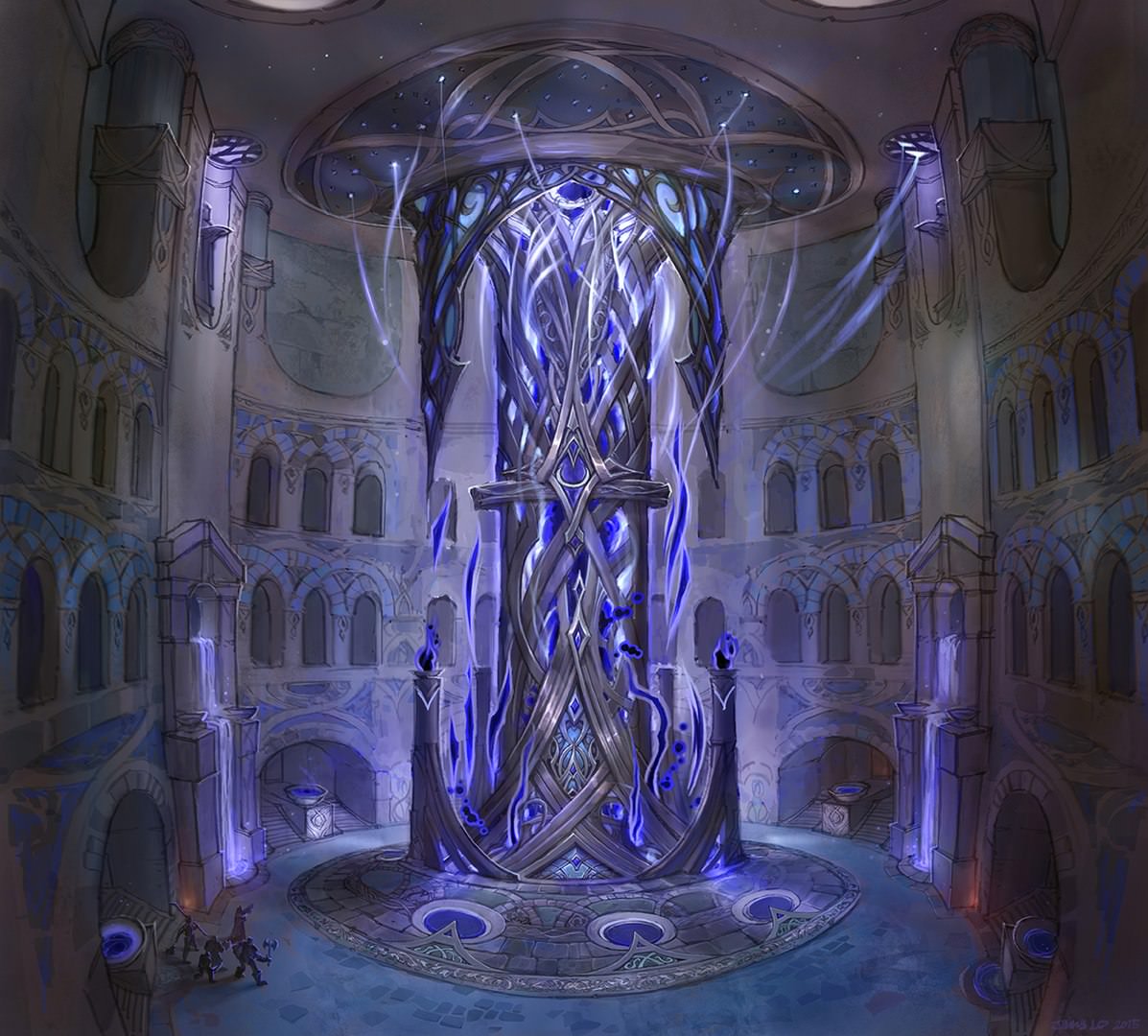
Chapter 6: Spells
This chapter describes the most common spells on Azeroth. The chapter begins with the spell lists of the spellcasting classes. The remainder contains spell descriptions, pre-sented in alphabetical order by the name of the spell.
Spells marked with a star in front of the spells name are spells found later in this chapter in the Spell Descriptions.
Death Kt. Spells
1st Level
Armor of Agathys
Cause Fear
Command
Compelled Duel
Detect Evil and Good
False Life
Heroism
Ice Knife
✦ Icy Touch
Prot. from Evil and Good
Puppet
Ray of Sickness
Thunderous Smite
Wrathful Smite
2nd Level
Branding Smite
✦ Chains of Ice
Crown of Madness
✦ Death Grip
Find Steed
✦ Frost Strike
Gentle Repose
Hold Person
Magic Weapon
Ray of Enfeeblement
Sniloc's Snowball Swarm
Suggestion
3rd Level
Animate Dead
✦ Asphyxiate
Bestow Curse
Dispel Magic
Enemies Abound
✦ Mind Freeze
Phantom Steed
Protection from Energy
Sleet Storm
Speak with Dead
Vampiric Touch
Water Walk
4th Level
Banishment
Death Ward
Find Greater Steed
Ice Storm
Shadow of Moil
Sickening Radiance
Staggering Smite
5th Level
Antilife Shell
Banishing Smite
Danse Macabre
✦ Death Chain
Destructive Wave
Dominate Person
Geas
Hold Monster
Holy Weapon
Insect Plague
Negative Energy Flood
Scrying
Druid Spells
Cantrips (0 Level)
Dancing Lights
Druidcraft
Guidance
Primal Savagery
Resistance
Shape Water
Shillelagh
✦ Solar Wrath
Thorn Whip
1st Level
Animal Friendship
Beast Bond
Cure Wounds
Detect Magic
Detect Poison and Disease
Earth Tremor
Entangle
Expeditious Retreat
Faerie Fire
Fog Cloud
Goodberry
Guiding Hand
Healing Word
Jump
Longstrider
Purify Food and Drink
Sleep
Snare
Speak with Animals
✦ Starfire
Wild Cunning
2nd Level
Animal Messenger
Barkskin
Beast Sense
✦ Cyclone
Darkvision
Dust Devil
Enhance Ability
Gust of Wind
Hold Person
Lesser Restoration
Locate Animals or Plants
Moonbeam
Pass without Trace
Protection from Poison
Skywrite
Spike Growth
Warding Wind
3rd Level
Catnap
Conjure Animals
Daylight
Dispel Magic
Feign Death
Mass Healing Word
Plant Growth
Protection from Energy
Revivify
Speak with Plants
✦ Starsurge
Water Breathing
Wind Wall
4th Level
Blight
Charm Monster
Confusion
Conjure Woodland Beings
Dominate Beast
Freedom of Movement
Grasping Vine
Guardian of Nature
Hallucinatory Terrain
Locate Creature
Watery Sphere
5th Level
Awaken
Commune with Nature
Control Winds
Dawn
Dream
Geas
Greater Restoration
Mass Cure Wounds
Reincarnate
Scrying
Tree Stride
Wrath of Nature
6th Level
Conjure Fey
Druid Grove
Find the Path
Heal
Investiture of Wind
✦ Starfall
Sunbeam
Transport via Plants
Wall of Thorns
Wind walk
7th Level
Crown of Stars
Mirage Arcane
Regenerate
Reverse Gravity
Whirlwind
8th Level
Animal Shapes
Control Weather
Feeblemind
Sunburst
9th Level
Foresight
Mass Heal
Shapechange
True Resurrection
Mage Spells
Cantrips (0 Level)
Blade Ward
Control Flames
Create Bonfire
Dancing Lights
Fire Bolt
✦ Flurry
Frostbite
Mage Hand
Mending
Message
Minor Illusion
Prestidigitation
Produce Flame
Ray of Frost
1st Level
Alarm
Armor of Agathys
Burning Hands
Comprehend Languages
Create or Destroy Water
Detect Magic
Disguise Self
Feather Fall
Find Familiar
✦ Frostfire Bolt
Hellish Rebuke
Ice Knife
Identify
Illusory Script
Jump
Longstrider
Mage Armor
Magic Missile
Shield
Silent Image

Snare
Sudden Awakening
Tenser's Floating Disk
Unseen Servant
2nd Level
Aganazzar's Scorcher
Alter Self
Arcane Lock
Blindness/Deafness
Blur
Cloud of Daggers
Continual Flame
Darkness
Darkvision
Detect Thoughts
Enlarge/Reduce
Flame Blade
Flaming Sphere
Heat Metal
Hold Person
Invisibility
Knock
Levitate
Magic Mouth
Mirror Image
Misty Step
Phantasmal Force
Scorching Ray
See Invisibility
Shatter
Spider Climb
Suggestion
3rd Level
Bestow Curse
Blink
✦ Blizzard
Counterspell
Create food and Water
✦ Dampen Magic
Dispel Magic
Feign Death
Fireball
Fly
Glyph of Warding
Haste
Hypnotic Pattern
Major Image
Nondetection
Protection from Energy
Remove Curse
Sending
Sleet Storm
Slow
✦ Spellsteal
Tiny Servant
Tongues
4th Level
✦ Arcane Barrage
✦ Arcane Explosion
Banishment
Charm Monster
Confusion
Dimension Door
Fire Shield
✦ Freezing Touch
Greater Invisibility
Hallucinatory Terrain
✦ Ice Block
Ice Storm
Locate Creature
Mordenkainen's
Private Sanctum
Polymorph
Wall of Fire
5th Level
Animate Objects
Bigby's Hand
Cone of Cold
Creation
Dominate Person
Enervation
Immolation
Passwall
Scrying
Seeming
Skill Empowerment
Synaptic Static
Teleportation Circle
Wall of Force
6th Level
Arcane Gate
Contingency
Disintegrate
Globe of Invulnerability
Guards and Wards
Heroes' Feast
Investiture of Flame
Investiture of Ice
Magic Jar
Mass Suggestion
Mental Prison
Otiluke's Freezing Sphere
Programmed Illusion
Scatter
True Seeing
Wall of Ice
7th Level
Delayed Blast Fireball
Etherealness
Fire Storm
Forcecage
✦ Glacial Spike
Mordenkainen's
Magnificent Mansion
Project Image
✦ Pyreblast
Sequester
Teleport
8th Level
Antimagic Field
✦ Blast Wave
Clone
Demiplane
Feeblemind
✦ Ice Nova
Incendiary Cloud
Mighty Fortress
Mind Blank
9th Level
Imprisonment
Invulnerability
✦ Jaina's Flying Ship
Mass Polymorph
Meteor Swarm
Time Stop
True Polymorph
Paladin Spells
1st Level
Bane
Bless
Ceremony
Command
Compelled Duel
Cure Wounds
Detect Evil and Good
Divine Favor
Healing Word
Heroism
Prot. from Evil and Good
✦ Repentance
Searing Smite
Shield of Faith
Thunderous Smite
Wrathful Smite
2nd Level
Aid
✦ Blinding Light
Branding Smite
Find Steed
Flame Blade
Lesser Restoration
Magic Weapon
Prayer of Healing
Protection from Poison
Zone of Truth
3rd Level
Aura of Vitality
Beacon of Hope
Blinding Smite
Crusader's Mantle
Daylight
Dispel Magic
✦ Guardian of the
Forgotten Queen
✦ Holy Wrath
Mass Healing Word
Phantom Steed
Protection from Energy
Remove Curse
Revivify
4th Level
Aura of Life
Aura of Purity
Death Ward
✦ Divine Shield
Find Greater Steed
Guardian of Faith
Locate Creature
Staggering Smite
5th Level
Banishing Smite
Circle of Power
Destructive Wave
Dispel Evil and Good
Hallow
Holy Weapon
Mass Cure Wounds
Raise Dead
Scrying
Wall of Light
Priest Spells
Cantrips (0 Level)
Guidance
Light
Mending
Resistance
Sacred Flame
Spare the Dying
Thaumaturgy
Toll the Dead
Virtue
Word of Radiance
1st Level
✦ Angelic Feather
Arms of Hadar
Bless
Cause Fear
Ceremony
Cure Wounds
✦ Dark Void
Detect Evil and Good
Detect Magic
Guiding Bolt
Healing Word
Inflict Wounds
Prot. from Evil and Good
Purify Food and Drink
Sanctuary
Shield of Faith
2nd Level
Aid
Blindness/Deafness
Calm Emotions
Crown of Madness
✦ Divine Star
Gentle Repose
Healing Spirit
Hold Person
Lesser Restoration
✦ Mind Blast
✦ Mind Flay
Mind Spike
Prayer of Healing
Protection from Poison
Shadow Blade
✦ Shining Force
Silence
Suggestion
✦ Void Strike

3rd Level
Animate Dead
Beacon of Hope
Bestow Curse
Daylight
Dispel Magic
Fear
Feign Death
Glyph of Warding
Hunger of Hadar
Life Transference
Mass Healing Word
Protection from Energy
Remove Curse
Revivify
✦ Shadow Crash
Speak with Dead
Spirit Guardians
Tongues
Vampiric Touch
4th Level
Banishment
Death Ward
Divination
Evard's Black Tentacles
Freedom of Movement
Guardian of Faith
Locate Creature
✦ Void Shift
5th Level
Dawn
Dispel Evil and Good
Geas
Greater Restoration
Hallow
Mass Cure Wounds
Negative Energy Flood
Raise Dead
Wall of Light
6th Level
Eyebite
Find the Path
Forbiddance
Harm
Heal
Mass Suggestion
True Seeing
Word of Recall
7th Level
Divine Word
Etherealness
Regenerate
Resurrection
Temple of the Gods
8th Level
Abi-Dalzim's Horrid Wilting
Antimagic Field
Holy Aura
Maddening Darkness
Mind Blank
9th Level
Foresight
Mass Heal
Psychic Scream
True Resurrection
Shaman Spells
Cantrips (0 Level)
Control Flames
Create Bonfire
Frostbite
Gust
✦ Invoke Elements
✦ Lightning Blast
Lightning Lure
Mending
Mold Earth
Produce Flame
Shape Water
Shocking Grasp
Thunderclap
1st Level
Absorb Elements
Chromatic Orb
Create or Destroy Water
Cure Wounds
Detect Magic
Detect Poison and Disease
Earth Tremor
✦ Elemental Shock
Fog Cloud
Guiding Hand
Searing Smite
Thunderous Smite
Thunderwave
2nd Level
Augury
✦ Chain Heal
Continual Flame
Dust Devil
Gust of Wind
Healing Spirit
Heat Metal
✦ Lava Burst
Lesser Restoration
Maximilian's Earthen Grasp
Protection from Poison
Shatter
Skywrite
Warding Wind
3rd Level
Call Lightning
Counterspell
Dispel Magic
✦ Earthen Spike
Erupting Earth
✦ Lesser Chain Lightning
Lightning Bolt
Meld Into Stone
Protection from Energy
Revivify
Spirit Guardians
Thunderstep
Tidal Wave
Wall of Water
Water Breathing
Water Walk
Wind Wall
4th Level
Conjure Minor Elementals
Control Water
Elemental Bane
Freedom of Movement
Locate Creature
Polymorph
Stone Shape
Stoneskin
Storm Sphere
Watery Sphere
5th Level
Commune with Nature
Conjure Elemental
Control Winds
Greater Restoration
✦ Healing Rain
Legend Lore
Maelstrom
Mass Cure Wounds
Reincarnate
Scrying
Steel Wind Strike
Wall of Stone
6th Level
Bones of the Earth
Chain Lightning
Flesh to Stone
Investiture of Stone
Investiture of Wind
Move Earth
Primordial Ward
Tenser's Transformation
Wind Walk
7th Level
Etherealness
Prismatic Spray
Regenerate
Whirlwind
8th Level
Antimagic Field
Control Weather
Earthquake
Tsunami
9th Level
Foresight
Imprisonment
Storm of Vengeance
True Resurrection
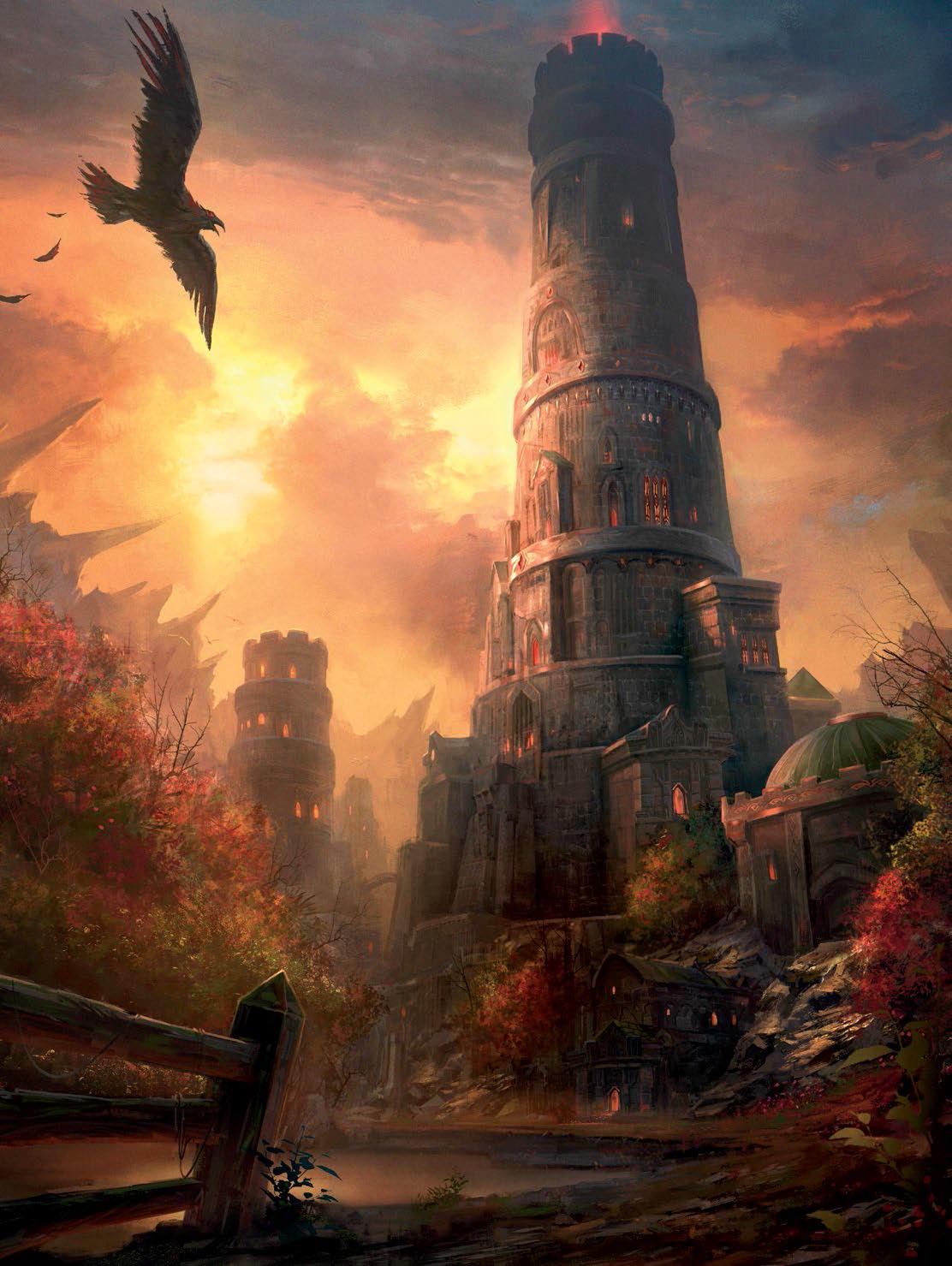

Warlock Spells
Cantrips (0 Level)
Blade Ward
Chill Touch
Create Bonfire
Eldritch Blast
✦ Fel Flame
Fire Bolt
Green-Flame Blade
Mage Hand
✦ Shadow Bolt
Toll the Dead
1st Level
Arms of Hadar
Cause Fear
Comprehend Languages
Expeditious Retreat
False Life
Hellish Rebuke
Hex
Illusory Script
Puppt
Ray of Sickness
Tasha's Hideous Laughter
Unseen Servant
Witch Bolt
2nd Level
Cloud of Daggers
Crown of Madness
Darkness
✦ Demon Skin
Enthrall
Find Steed
Hold Person
Invisibility
Mind Spike
Misty Step
Phantasmal Force
Ray of Enfeeblement
Scorching Ray
Shadow Blade
✦ Soulwell
3rd Level
Bestow Curse
Dispel Magic
Enemies Abound
Fear
Fly
Hunger of Hadar
Hypnotic Pattern
Major Image
Melf's Minute Meteors
Phantom Steed
Remove Curse
Tiny Servant
Tongues
Vampiric Touch
4th Level
Arcane Eye
Banishment
Charm Monster
✦ Demonfire
Evard's Black Tentacles
Hallucinatory Terrain
Shadow of Moil
Sickening Radiance
5th Level
Danse Macabre
Dominate Person
Enervation
Far Step
Hold Monster
Immolation
Negative Energy Flood
✦ Ritual of Summoning
Scrying
Synaptic Static
6th Level
Arcane Gate
Circle of Death
Contingency
Create Undead
Eyebite
Mental Prison
Otto's Irresistible Dance
Scatter
✦ Shadowfury
Soul Cage
True Seeing
7th Level
Etherealness
Finger of Death
Fire Storm
Power Word Pain
Sequester
8th Level
Abi-Dalzim's Horrid Wilting
✦ Cataclysm
Demiplane
Dominate Monster
Feeblemind
Glibness
Maddening Darkness
9th Level
Imprisonment
Meteor Swarm
Power Word Kill
Psychic Scream
Weird
Spell Descriptions
The new spells are presented in alphabetical order.
Angelic Feather
1st-level conjuration
- Casting Time: 1 minute
- Range: Self
- Components: V, S, M (a feather worth at least 1 gp)
- Duration: 1 hour
You create 3 divine feathers in your palm that can be given to other creatures. A creature can crush a feather as a bonus action, and gain the benefit of the Dash, Disengage, or Dodge action until the end of their current turn. The feathers last for 1 hour before dissipating.
Arcane Barrage
4th-level evocation
- Casting Time: 1 action
- Range: 120 feet
- Components: V, S
- Duration: Instantaneous
You conjure two swirling intertwined balls of raw force, hurling them at a point you choose within range and then pushing beings away as they make an explosion of force. Each creature in a 10-foot-radius sphere centered on that point must make a Dexterity saving throw. A target takes 6d8 force damage on a failed save, or half as much damage on a successful one, and are pushed 5 feet away from the point of impact.
At Higher Levels. When you cast this spell using a spell slot of 5th level or higher, the damage increases by 1d8, and the push back by 5 feet for each slot level above 4th.
Arcane Explosion
4th-level evocation
- Casting Time: 1 action
- Range: Self (10-foot-radius sphere)
- Components: V, S
- Duration: Instantaneous
Arcane forces blast out from you in a 10-foot-radius sphere. Each creature within range must make a Constitution saving throw, taking 12d4 force damage on a failed saving throw, or half as much on a successful one.
At Higher Levels. When you cast this spell using a spell slot of 5th level or higher, the damage increases by 2d4 for each slot level above 4th.
Asphyxiate
3rd-level necromancy
- Casting Time: 1 action
- Range: 30 feet
- Components: S
- Duration: Concentration, up to 1 minute
Shadowy tendrils extends from you and swirls around the throat of a creature within range. The target must make a successful Dexterity saving throw or be restrained for the spells duration. While restrained in this way, the target is also suffocating.
At the end of each of its turns, the target must make a Constitution saving throw. On a failed save, the target loses 1 minute of air until the target is knocked unconscious. On a successful save, the target is freed from the tendrils and the spell ends.

Blast Wave
8th-level evocation
- Casting Time: 1 action
- Range: Self (60-foot cone)
- Components: V, S
- Duration: Instantaneous
Orange light flashes as a 15-foot tall wall of fire expands outward from your position. Each creature hit by the wall must make a Constitution saving throw. On a failed save, a creature takes takes 12d6 fire damage and is knocked prone. Taking half damage on a successful save.
This spell dispels any darkness in its area that was created by a spell, and makes the area brightly lit until the start of your next turn.
Blizzard
3rd-level evocation
- Casting Time: 1 action
- Range: 120 feet
- Components: V, S, M (shards of glass)
- Duration: Concentration, up to 1 minute
A cold light flashes from your hand into the sky, as blue shards hurl down at a point you choose within range, slash-ing through flesh with a biting cold. Each creature in a 20-foot-radius, 60-foot-high cylinder centered on a point within range must make a Dexterity saving throw. A target takes 3d6 cold damage on a failed save, or half as much damage on a successful one.
As an action on each of your turns before the spell ends, you can call down another blizzard in the same location.
At Higher Levels. When you cast this spell using a spell slot of 4th level or higher, the damage increases by 1d6 for each slot level above 3rd.
Cataclysm
8th-level conjuration
- Casting Time: 1 action
- Range: 150 feet
- Components: V, S, M (a piece of charcoal)
- Duration: Concentration, up to 10 minutes
The ground cracks as small fissures reveal molten magma beneath its surface in a 20-foot radius centered on a point within range. The fissures are harmless and too small to deal damage to any creature that moves over them.
While you are concentrating on the spell, you can use your action to rip open the fissured earth, bursting a torrent of flame 10-feet tall through the fissures. Once done, you can do so again and the spell lasts for its duration. When you rip open the ground, each creature in the area must make a Dexterity saving throw. A creature takes 10d8 fire damage on a failed save, or half as much damage on a successful one. A creature must also make this saving throw when it enters the spell's area for the first time on a turn or ends its turn there.
You can use a bonus action on your turn to end the spell, making the spells area natural difficult terrain.
Chain Heal
2nd-level evocation
- Casting Time: 1 action
- Range: 30 feet
- Components: V, S
- Duration: Instantaneous
Your primary target regains hit points equal to 1d8 + your spellcasting modifier. The spell then jumps to a second creature within 15 feet of the primary target, who regains 1d6 + your spellcasting modifier hit points. Lastly, the spell jumps to a third creature within 15 feet of the second one, and replenishing 1d4 + your spellcasting modifier hit points to it. The spell has no effect on constructs.
At Higher Levels. When you cast this spell using a spell slot of 3rd level or higher, the healing each target receives increase by one hit dice size for each slot level above 2nd. To a maximum of 1d12 for each creature affected.
Chains of Ice
2nd-level transmutation
- Casting Time: 1 action
- Range: 30 feet
- Components: V
- Duration: 1 minute
Frost ridden chains spew from the ground beneath a target within range. The target must make a successful Dexterity saving throw, or have every foot of movement require two feet for the spell's duration.
At the end of each of its turns, the target can make another Dexterity saving throw. On a success, the spell ends on the target.
At Higher Levels. When you cast this spell using a spell slot of 4th level or higher, you can target one additional creature for every two slot levels above 2nd.
Cyclone
2nd-level transmutation
- Casting Time: 1 action
- Range: 60 feet
- Components: V, S
- Duration: Concentration, up to 1 minute
A whirl of wind 5-foot wide and 15-foot high rushes up around a target within range. The target must make a successful Dexterity saving throw, or be grappled for the spells duration. A grappled target can use its action to make a Dexterity saving throw. On a successful save, the target forces itself out of the cyclone in an empty space within 5 feet of it.
At Higher Levels. When you cast this spell using a spell slot of 4th level or higher, you conjure one additional cyclone beneath a target within range for every two slot levels above 2nd.
Dampen Magic
3rd-level abjuration
- Casting Time: 1 bonus action
- Range: Touch
- Components: S
- Duration: Concentration, up to 1 minute
You place your hand on a creature within range, and mani-fest an invisible barrier around their body. The target gains resistance to damage dealt by spells for the spells duration.

Dark Void
1st-level evocation
- Casting Time: 1 action
- Range: 30 feet
- Components: V, S, M (a holy symbol)
- Duration: Instantaneous
You grasp the fabric around a target within range, pulling necrotic energy from it and creatures within a 5-foot radius of your choice. The creatures must make a Constitution saving throw. On a failed saving throw, the creature takes 1d8 necrotic damage and gains the effect of your Word of Power: Pain. On a successful save, the creature takes half damage, but suffers no effect from the word of power.
At Higher Levels. When you cast this spell using a spell slot of 2nd level or higher, the damage increases by 1d8 for each slot level above 1st.
Death Chain
5th-level necromancy
- Casting Time: 1 action
- Range: Self (20-foot radius)
- Components: V, S
- Duration: Concentration, up to 1 minute
Ghastly chains erupt from you towards three different creatures within range. Make a ranged spell attack against each target. On a hit, a target takes 4d8 necrotic damage and becomes chained together with you and any other target hit for the spell's duration.
Chained creatures must succeed on a Strength saving throw to move more than 20 feet away from you. On a successful save, the target breaks the chain, ending the spells effect on them. Whenever you or another chained creature takes damage from a weapon attack or spell, each other creature chained together (including you) takes psychic damage equal to half the damage taken.
Damage you take through this spell does not disrupt your concentration or require a check to maintain it.
At Higher Levels. When you cast this spell using a spell slot of 6th level or higher, you can attempt to chain one additional creature for each slot level above 5th.
Death Grip
2nd-level transmutation
- Casting Time: 1 bonus action
- Range: 60 feet
- Components: V, S
- Duration: Instantaneous
Necrotic energy grasps around a Huge or smaller creature within range. Make an ability check with your spellcasting ability contested by the creature's Strength check. If you win the contest, you move the creature up to 30 feet towards you in a straight line.
Demon Skin
2nd-level transmutation
- Casting Time: 1 action
- Range: Touch
- Components: V, S, M (dried skin of a demon or fiend)
- Duration: 1 hour
You touch a willing creature who are unarmored, making their skin ragged and hard. Until the spell ends, the crea-ture adds your spellcasting ability modifier to their armor class. The spell ends if the target dons armor, or if you dismiss the spell as a bonus action.
Demonfire
4th-level evocation
- Casting Time: 1 action
- Range: 120 feet
- Components: V, S
- Duration: Instantaneous
You manifest five bolts of fel above your head, and direct to towards a creature you can see within range. The creature must make a Dexterity saving throw. On a failed save, the target takes 3d6 fire damage, or half as much on a success-ful one. The bolts all strike simultaneously, and you can direct them to hit one creature or several. A creature makes only one saving throw for all bolts striking it.
At Higher Levels. When you cast this spell using a spell slot of 5th level or higher, the spell creates one more bolt for each spell level above 4th.
Divine Shield
4th-level abjuration
- Casting Time: 1 action
- Range: Self
- Components: V, S, M (a small silver mirror)
- Duration: 1 minute
You ward yourself against attacks. Until the spell ends, you gain immunity to all damage dealt by weapon attacks and spells. The spell doesn't protect you against natural sources of damage, such as molten lava.
If you make an attack or cast a spell that affects an enemy creature, this spell ends.
Divine Star
2nd-level evocation
- Casting Time: 1 action
- Range: self (30-foot line)
- Components: V, S
- Duration: Instantaneous
A star of divine energy streaks forward in a 30 feet long and 5 feet wide line from you in a direction you choose, and returns to you at the end of your turn in a similar fashion. Each allied creature in the stars path regains 1d6 hit points, and each enemy creature must make a Dexterity saving throw. Taking 1d6 radiant damage on a failed save, or half as much on a successful one.
At Higher Levels. When you cast this spell using a spell slot of 3rd level or higher, the spells healing and damage increases by 1d6 for each slot level above 2nd.
Earthen Spike
3rd-level transmutation
- Casting Time: 1 action
- Range: 60 feet
- Components: V, S, M (a granite pebble)
- Duration: Concentration, up to 1 hour
A place your hand to the ground, and erupt a large stalag-mite beneath a creature within range. The creature must make a Dexterity saving throw. On a failed save, the target takes 6d8 bludgeoning damage and is knocked 20 feet into the air as a 15-foot in diameter and 20 feet high spike rises beneath it. On a successful saving throw, the target takes half damage.
Each creature within 5 feet of the chosen target must also make a Dexterity saving throw. On a failed save, the target takes half damage, and no damage on a success.

The creature is then pushed back 5 feet. The stalag-mite remains until your concentration is broken, at which point it crumbles, making its area difficult terrain.
At Higher Levels. When you cast this spell using a spell slot of 4th level or higher, the damage increases by 1d8 for each slot level above 3rd.
Elemental Shock
1st-level evocation
- Casting Time: 1 action
- Range: 60 feet
- Components: V, S, M (a piece of brimstone, granite, glass, and a feather)
- Duration: Instantaneous
You manifest a swift burst of elemental force, and launch it at creature of within range. Make a ranged spell attack against the target. On a hit, the target takes 3d8 bludgeoning, cold, fire, or lightning damage (your choice).
At Higher Levels. When you cast this spell using a spell slot of 2nd level or higher, the damage increases by 1d8 for each slot level above 1st.
Fel Flame
Evocation cantrip
- Casting Time: 1 action
- Range: 60 feet
- Components: V, S
- Duration: Instantaneous
A green flame skitters across the ground towards a creature within range. Make a ranged spell attack against the target. On a hit, the target takes 1d8 fire damage. Fel flame ignores fire resistant, and creatures immune to fire damage are considered to be resistant.
This spell's damage increases by 1d8 when you reach 5th level (2d8), 11th level (3d8), and 17th level (4d8).
Flurry
Evocation cantrip
- Casting Time: 1 action
- Range: 60 feet
- Components: V, S
- Duration: Instantaneous
A shard of ice streaks toward a creature within range. Make a ranged spell attack against the target. On a hit, the target takes 1d8 cold damage.
The spell creates more than one shard when you reach higher levels: two shards at 5th level, three shards at 11th level, and four shards at 17th level. You can direct the shards at the same target or at different ones. Make a separate attack roll for each shard.
Freezing Touch
4th-level evocation
- Casting Time: 1 action
- Range: Touch
- Components: V, S, M (a shard of glass or ice)
- Duration: 1 minute
Ice forms on your finger tips. Make a melee spell attack against a creature within range. On a hit, the creature is encapsulated as ice rapidly forms around it. The creature is stunned for the duration of the spell.
On the end of each of the creatures turns, it must make a Strength saving throw. On a successful save it breaks itself out of the ice, ending the spell.
Frost Strike
2nd-level evocation
- Casting Time: 1 bonus action
- Range: Self
- Components: V
- Duration: Concentration, up to 1 minute
The next time you hit a creature with a weapon attack during the spell's duration, your weapon gleams with frigid ice, and the attack deals an extra 2d6 cold damage to the target. The target must make a Dexterity saving throw or have its speed halved until the beginning of your next turn.
At Higher Levels. When you cast this spell using a spell slot of 3rd level or higher, the extra damage increases by 1d6 for each slot level above 2nd.
Frostfire Bolt
1st-level evocation
- Casting Time: 1 action
- Range: 30 feet
- Components: V, S, M (a piece of glass and sulfur)
- Duration: Instantaneous
You hurl a blue flamed firebolt at a creature within range. Make a ranged spell attack against the creature. On a hit, the target takes 2d6 fire damage and 2d6 frost damage.
At Higher Levels. When you cast this spell using a spell slot of 2nd level or higher, the fire and cold damage increases by 1d6 for each slot level above 1st.
Glacial Spike
7th-level evocation
- Casting Time: 1 action
- Range: 120 feet
- Components: V, S
- Duration: Instantaneous
You form a large spike of ice above your head, and launch it at a creature that you can see within range, causing it to shatter across their body. The target must make a Constitution saving throw. It takes 7d8 cold damage plus 30 bludgeoning damage on a failed save, or half as much damage on a successful one. If this damage reduces the target to 0 hit points, it and everything it is wearing and carrying, except magic items, are transformed into shards of ice that shatters in its space. The creature can be restored to life only by means of a true resurrection or a wish spell.
At Higher Levels. When you cast this spell using a spell slot of 8th level or higher, the cold damage increases by 2d8 for each slot level above 7th.
Guardian of the Forgotten Queen
3rd-level abjuration
- Casting Time: 1 reaction, which you take when a creature is hit by an attack or spell
- Range: 30 feet
- Components: V, S
- Duration: 1 round
A divine barrier of the holy light appears and protects a creature within range. Until the start of your next turn, the creature gain immunity to all damage dealt by weapon attack and spells, including against the triggering attack.

Healing Rain
5th-level transmutation
- Casting Time: 1 action
- Range: 120 feet
- Components: V, S, M (a vial of rain water)
- Duration: Concentration, up to 1 minute
You summon a cloud at a point within range, blanketing a 15-foot radius area around it in rain. Each friendly creature enters the rain for the first time on their turn, or starts their turn within the rain regains 2d6 hit points. The healing rain extinguishes nonmagical fires within its area of effect.
At Higher Levels. When you cast this spell using a spell slot of 7th level or higher, the healing increases by 1d6 for every two slot levels above 5th.
Holy Wrath
3rd-level evocation
- Casting Time: 1 action
- Range: Self
- Components: V, S
- Duration: Instantaneous
You release a burst of radiant energy in a blast centered around you. Each enemy creature in a 15-foot-radius centered on you must make a Wisdom saving throw. A target takes 6d6 radiant damage on a failed save, or half as much damage on a successful one. The blast spreads around corners.
At Higher Levels. When you cast this spell using a spell slot of 4th level or higher, the damage increases by 1d6 for each slot level above 3rd.
Ice Block
4th-level abjuration
- Casting Time: 1 reaction, which you take when you are targeted by an attack or spell
- Range: Self
- Components: V, S
- Duration: Concentration, up to 10 minutes
Solid ice rapidly encases your body, protecting you from harm. You immediately gain 40 temporary hit points, and resistance against all damage except fire and psychic, and immunity to cold damage. Ice block continues until your concentration is broken, your temporary hit points vanish, or you end it prematurely.
While encased, you are under the effects of being incapacitated, with the exception of your concentration being broken.
Ice Nova
8th-level evocation
- Casting Time: 1 action
- Range: 120 feet
- Components: V, S, M (glass dust and water)
- Duration: Instantaneous
Frigid cold rapid expands in a 15-foot-radius centered on a point you choose within range. Each creature in the cold must succeed on a Dexterity saving throw. On a failed save, a creature takes 10d6 cold damage and is grappled for 1 hour as ice encases the lower part of their legs. On a successful save, it takes half as much damage and isn't grappled by this spell.
A creature can break the grapple by using their action to make a Strength saving throw, or deal a total of 40 hit points worth of damage to the ice.
Icy Touch
1st-level necromancy
- Casting Time: 1 action
- Range: Touch
- Components: V, S
- Duration: 1 round
You touch a creature, transferring part of the necrotic energy within you. Make a melee spell attack against the creature to assail it with the chill of the grave. On a hit, the target takes 2d8 necrotic damage, and it can't regain hit points until the start of your next turn. Until then, the targets skin grows pale as ice.
If you hit a celestial target, it also has disadvantage on attack rolls against you until the end of your next turn.
At Higher Levels. When you cast this spell using a spell slot of 2nd level or higher, the damage increases by 1d8 for each slot level above 1st.
Invoke Elements
Transmutation cantrip
- Casting Time: 1 action
- Range: 30 feet
- Components: V, S
- Duration: Up to 1 minute
You invoke a minor portion of the elements, within range. You create one of the following magical effects within range:
- You create a harmless sensory effect that predicts what the weather will be for the next 24 hours. This effect persists for 1 round.
- You light or put out a small flame.
- You cause flames to flicker, brighten, drim, or change color for 1 minute.
- You cause harmless tremors in the ground for 1 minute.
- You cool or heat up a small amount of liquid.
If you cast this spell multiple times, you can have up to three of its 1-minute effects active at a time, and you can dismiss such an effect as an action.
Jaina's Flying Ship
9th-level transmutation
- Casting Time: 1 minute
- Range: Touch
- Components: V, S
- Duration: 24 hours
You channel your powers into a nonmagical ship within range, the ship can be no larger than 100 feet long, and 30 feet wide. For the spells duration, the ship gains a flying speed of 60 feet, the ship changes direction and altitude at your command, continuing its course until a new command is given or the spells duration ends.
The flying ship has an Armor Class of 15, and 300 hit points; immunity to poison and psychic damage, and immunity to all conditions.
It has a maximum carrying capacity of 50 tons (limited by the size of the ship itself). It is not slowed by any weight until its maximum capacity is reached, at which point the ship loses its flying property and falls at a rate of 60 feet per round until it hits the ground. Taking no falling damage from the fall, and leaving its passengers unharmed.

Lava Burst
2nd-level evocation
- Casting Time: 1 action
- Range: 60 feet
- Components: V, S
- Duration: Instantaneous
You manifest molten stone and magma into a ferocious ball, and hurl it at a target within range. The target must make a Dexterity saving throw. On a failed save, it takes 3d6 fire damage and 3d6 bludgeoning damage, or half as much on a successful one.
At Higher Levels. When you cast this spell using a spell slot of 3rd level or higher, the damage increases by 1d6 fire and bludgeoning damage for each slot above 2nd.
Lesser Chain Lightning
3rd-level evocation
- Casting Time: 1 action
- Range: 150 feet
- Components: V, S, M (a bit of fur; a piece of amber or glass; and three silver pins)
- Duration: Instantaneous
You create a bolt of lightning that arcs toward a target of your choice that you can see within range. Forming a chain from that target and through three other targets, each of which must be within 30 feet of the previous target.
A target can be a creature or an object. A target must make a Dexterity saving throw. The target takes 3d8 lightning damage on a failed save, or half as much damage on a successful one.
At Higher Levels. When you cast this spell using a spell slot of 4th level or higher, the lightning can form a chain through one additional target for each slot level above 3rd.
Lightning Blast
Evocation cantrip
- Casting Time: 1 action
- Range: 60 feet
- Components: S
- Duration: Instantaneous
An arc of lightning blasts from your palms towards a creature within range. Make a ranged spell attack. On a hit, the target takes 1d8 lightning damage.
This spell's damage increases by 1d8 when you reach 5th level (2d8), 11th level (3d8), and 17th level (4d8).
Mind Blast
2nd-level evocation
- Casting Time: 1 action
- Range: 60 feet
- Components: V, S
- Duration: Instantaneous
You pierce through the mental defenses of a creature within range. It must succeed on a Wisdom saving throw. On a failed save, the target takes 2d6 psychic damage and is frightened of you for a minute, or half of the damage on a successful one and isn't frightened of you.
The creature makes a new saving throw at the end of its turns to end the frightened condition.
At Higher Levels. When you cast this spell using a spell slot of 3rd level or higher, the damage increases by 1d6 for each slot level above 1st.
Mind Flay
2nd-level enchantment
- Casting Time: 1 action
- Range: 120 feet
- Components: V
- Duration: Concentration, up to 1 minute
You attempt to pierce the mind of a creature within range. The creature must make a Wisdom saving throw. On a failed save, the creature takes 2d6 psychic damage and has disadvantage on all attack rolls and ability checks for the spells duration.
On a successful save, the creature takes half damage, but suffers no other effect. At the end of each of its turns, the target can make a Wisdom saving throw. On a success, the spell ends.
At Higher Levels. When you cast this spell using a spell slot of 3rd level or higher, the damage increases by 1d6 for each slot level above 2nd.
Mind Freeze
3rd-level evocation
- Casting Time: 1 reaction, which you take when you see a creature within 60 feet of you casting a spell.
- Range: 60 feet
- Components: S
- Duration: Instantaneous
You attempt to interrupt a creature in the process of casting a spell. If the creature is casting a spell of 3rd level or lower, its spell fails and has no effect. If it is casting a spell of 4th level or higher, make an ability check using your spellcast-ing ability, if you counter the spell, the creature takes 2d8 cold damage. The DC equals 10 + the spell’s level. On a success, the creature’s spell fails and has no effect.
Pyroblast
7th-level evocation
- Casting Time: 1 action
- Range: 120 feet
- Components: V, S, M (a piece of brimstone)
- Duration: Instantaneous
You clasp your hands together, conjuring a ball of dripping magma, launching it at a creature or object within range. Make a ranged spell attack against the target. On a hit, the target takes 10d10 fire damage, and an additional 1d10 fire damage at the start of each of its turn, until someone takes an action to make a Dexterity check again your spell DC to douse the fire.
At Higher Levels. When you cast this spell using a spell slot of 8th level or higher, the initial damage increases by 1d10 for each slot level above 7th.
Repentance
1st-level enchantment
- Casting Time: 1 reaction, which you take when you are targeted by a weapon or spell attack
- Range: 30 feet
- Components: V
- Duration: 1 round
A sense of remorse rushes over a creature within range. The creature must make a Wisdom saving throw. On a failed save, the creature becomes incapacitated until the start of your next turn, losing it's weapon or spell attack it made against you.

Ritual of Summoning
5th-level conjuration (ritual)
- Casting Time: 10 minutes
- Range: 10 feet
- Components: V, S, M (a blood sapphire worth 100 gp)
- Duration: 1 hour
You call forth a summoning portal in an empty space within range. Appearing as a shadowy statue of a cloaked figure, holding open the cloak to reveal a gapping swirl into the twisting nether.
Using 1 minute, you can channel energy into the statue, and call forth the true name of a creature. If the creature is on your plane of existence, a shimmering mirror appears in front of it that only it can see, through the mirror the creature is able to perceive you and your surroundings, but you can not see it.
A creature can choose to ignore the mirror, in which case it vanishes after 1 minute and a new mirror can't appear in front of that creature again for another 24 hours, or pass through it, in which case it is teleported to the space in front of the summoning stone.
The ritual of summoning is only able to call creatures too it, a creature can't use the summoning stone to traverse back to their previous location.
Shadow Bolt
Evocation cantrip
- Casting Time: 1 action
- Range: 60 feet
- Components: V, S
- Duration: Instantaneous
A shoot a blast of necrotic energy at a creature within range. Make a ranged spell attack against the target. On a hit, the target takes 1d10 necrotic damage.
This spell's damage increases by 1d10 when you reach 5th level (2d10), 11th level (3d10), and 17th level (4d10).
Shadow Crash
3rd-level necromancy
- Casting Time: 1 action
- Range: 120 feet
- Components: V, S
- Duration: Instantaneous
A bolt of shadow energy forms from your palm to a point you choose within range and blankets the area as inescap-able darkness covers all. Each creature in a 20-foot-radius sphere centered on that point must make a Constitution saving throw. A creature takes 6d6 necrotic damage on a failed save, or half as much damage on a successful one. The darkness spreads around corners.
At Higher Levels. When you cast this spell using a spell slot of 4th level or higher, the damage increases by 1d6 for each slot level above 3rd.
Shadowfury
6th-level enchantment
- Casting Time: 1 action
- Range: 60 feet
- Components: V, S
- Duration: Concentration, up to 1 minute
You extend your arm and draw crush energy down upon creatures within a 10-foot radius of a point within range. Each creature must succeed on a Wisdom saving throw, or be stunned for the duration of the spell.
A stunned creature must make a Constitution saving throw at the end of each of its turns. On a successful save, this stunning effect ends.
Shining Force
2nd-level abjuration
- Casting Time: 1 action
- Range: 30 feet
- Components: V, S
- Duration: Concentration, up to 1 minute
Bright light bursts out from a target of your choice within range, attempting to disrupt nearby enemies. Each creature you choose within a 10-foot radius of the target must make a Dexterity saving throw. On a failed save, a creature is pushed 10 feet away from the target and is knocked prone. On each of your turns for the duration, you can use your action to burst light from the same target again.
Solar Wrath
Evocation cantrip
- Casting Time: 1 action
- Range: 60 feet
- Components: V, S
- Duration: Instantaneous
You release a blast of suns wrath against a creature within range. Make a ranged spell attack against the creature. On a hit, the target takes 1d10 radiant damage.
This spell's damage increases by 1d10 when you reach 5th level (2d10, 11th level 3d10, and 17th level (4d10).
Soulwell
2nd-level transmutation (ritual)
- Casting Time: 1 minute
- Range: 10 feet
- Components: S, M (a piece of fur from a demon)
- Duration: 10 minutes
You manifest a pedestal of stone with a bowl on top, filled with a sickly green liquid. As an action, a creature can reach into the liquid and pull out a healthstone. The health-stone keeps it's potency for 24 hours before turning to glass. As an action, a creature can crush a healthstone, and regain 2d4 + 2 hit points.
Once a creature have reached into the liquid, doing so again yields no additional healthstones until a new soulwell is summoned using a spell slot.
At Higher Levels. When you cast this spell using a spell slot of 3rd level or higher, each healthstone regains an additional 1d4 + 1 hit points for each slot level above 2nd.
Spellsteal
3rd-level abjuration
- Casting Time: 1 action
- Range: 60 feet
- Components: V, S
- Duration: Concentration, up to 1 minute
You attempt to steal the effect of a spell from a creature for a brief time. If the spell affecting the creature was cast at 3rd level or lower, the spell effect transfers to you for this spells duration. Once this spell ends, the stolen spells effect returns to the original caster. The time you had the spell counts against the spells original duration. If the spell is of 4th level or higher, make an ability check using your spellcasting ability. The DC equals 10 + the spell's level. On a success, the spells effect transfers to you.

At Higher Levels. When you cast this spell using a spell slot of 4th level or higher, a spell can be stolen without a saving throw if its level is less than or equal to the level of the spell slot you used.
Starfall
6th-level evocation
- Casting Time: 1 action
- Range: 300 feet
- Components: V, S, M (a pinch of powdered glass)
- Duration: 1 round
Countless flashes of pure moonlight fall to the ground in a 20-foot-radius, 40-foot-high cylinder centered on a point within range. Each creature in the cylinder must make a Dexterity saving throw. A creature takes 10d6 radiant damage on a failed save, or half as much damage on a successful one. A creature who failed the saving throw is also blinded until the end of your next turn.
At Higher Levels. When you cast this spell using a spell slot of 7th level or higher, the damage increases by 1d6 for each slot level above 6th.
Starfire
1st-level evocation
- Casting Time: 1 action
- Range: 120 feet
- Components: V, S
- Duration: Instantaneous
A flash of light streaks down upon a creature of your choice within range. Make a ranged spell attack against the target. On a hit, the target takes 2d12 radiant damage, and is blinded until the end of your next turn. The blindness ends early if the target takes damage from a weapon attack or spell, as the stardust blocking its eyes are swept away.
At Higher Levels. When you cast this spell using a spell slot of 3rd level or higher, the damage increases by 1d12 for every two slot levels above 1st.
Starsurge
3rd-level evocation
- Casting Time: 1 action
- Range: Self (100-foot line)
- Components: V, S, M (a rod of glass and a vial of water from a moonwell)
- Duration: Instantaneous
A blast of moonlight bursts forward in a line 100 feet long and 5 feet wide out from you in a direction you choose. Each creature in the bursts path must make a Dexterity saving throw. A creature takes 8d6 radiant damage on a failed save, or half as much damage on a successful one.
At Higher Levels. When you cast this spell using a spell slot of 4th level or higher, the damage increases by 1d6 for each slot level above 3rd.
Void Shift
4th-level necromancy
- Casting Time: 1 action
- Range: 60 feet
- Components: V, S
- Duration: Instantaneous
You call upon the void to shift the health of you and another creature. Choose a willing creature within range, you and the chosen creature exchange your current hit points, to a maximum of 40 hit points from each creature.
At Higher Levels. When you cast this spell using a spell slot of 5th level or higher, the maximum hit points you can exchange increases by 10 for each slot level above 4th.
Void Strike
2nd-level evocation
- Casting Time: 1 action
- Range: 60 feet
- Components: V, S
- Duration: Instantaneous
You open a crack into the void, as a shimmering black knife strikes out from the void at a creature within range. Make a ranged spell attack against the target. On a hit, the target takes 6d6 necrotic damage.
At Higher Levels. When you cast this spell using a spell slot of 3rd level or higher, the damage increases by 1d6 for each slot level above 2nd.


Part III
Variant Rules
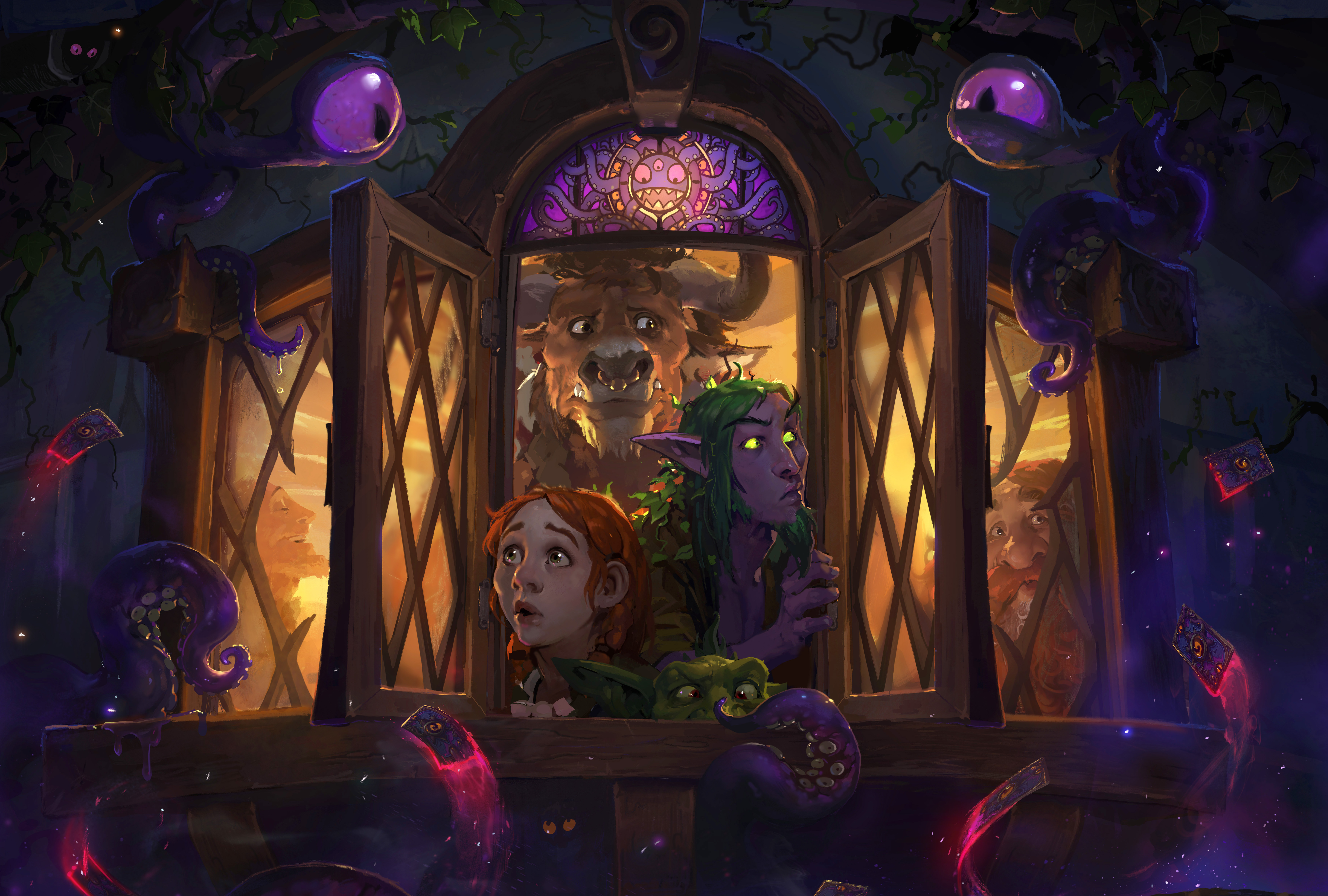
Variant Rule: Hero Points
A paladin who stands alone against a horde of undead while his companions heal a dying comrade, a rogue who leaps after a precious artifact dropped from a lofty tower balcony, a warrior who throws himself against a vastly superior opponent. . . These are the heroes whose actions inspire stories and legends.
The actions of a hero often include acts of such a daring nature and chance that it is almost impossible to guarantee a sure outcome. Even though every hero confronts perils, fate is on the side of those who face adversity head on and challenge evil and darkness without fear of death.
Instead of earning inspiration as you venture through the world of Warcraft, you can choose to give your players Hero Points for their daring acts against powerful foes.
Hero points are rewards for that type of valiant action, these points allow a player to bend the fates in his character's favor, and such power requires more hands-on judgement from a DM than most other rules. Hero points blur the lines of action and allow characters to perform the exceptional and even the impossible.
Gaining Hero Points
The power given by hero points can be immense, your DM can choose to grant you a hero point for your heroic actions. Some adventurers might never earn a hero point, and even when characters does, there is no guarantee that the player will use it when the right time comes. Your DM will tell you how you can earn a hero point in the game.
You either have a hero point or you don't, you can't stockpile multiple "hero points" for later use. Likewise, you cannot earn a hero point through an action that you spend a hero point on performing.
Using Hero Points
If you have a hero point, you can expend it when you make an attack roll, cast a spell, saving throw, or when being attacked. Spending your hero point makes the check you were an immediate success.
Action Surger
You can expend your hero point to make the next turn yours, out of initiative order. Once you've finished the turn, the initiative goes back to normal, and you return to your place in the initiative count.
Physical Fighter
You can expend your hero point when rolling for a weapon attack, treating your attack roll as a successful hit. When done, the player chooses one of the following effects:
Powerful Blow. Your weapon attack acts as a Massive Critical Hit, roll the attack's damage dice twice and add them together. Then add any relevant modifiers as normal, and add your character level to the damage.
Mutilate. Your weapon attack mutilates the target, deal-ing normal weapon damage, and attempts to cut off a limb (if any) of your choice. The creature must succeed on a Constitution saving throw against a DC of 12, or half the damage done. On a failed save, the creature gains one of the following mutilations.
- Arm / Hand. You cut off the creatures arm, making it unable to hold two items at once, or cast spells while their remaining arm is carrying an object.
- Leg / Foot. You cut off the creatures leg, reducing its movement speed by half, and giving opportunity attacks against it advantage. In addition, the creature can't dash.
- Eye. You pierce out the creatures eye, giving it disadvan-tage on Perception checks, and reducing its passive Per-ception by 5. If both eyes are removed, or if the creature only has one, it is considered Blinded. This mutilation has no effect if the damage dealt is bludgeoning.
Spell Fighter
You can expend your hero point when you cast a spell, treating your spell attack as a successful hit. When done, the player chooses one of the following effects:
Power Surge. Your spell attack acts as a Massive Critical Hit, roll the attack's damage dice twice and add them together. Then add any relevant modifiers as normal, and add your character level to the damage.
Precision Spell. You can choose a number of creatures equal to your spellcasting ability modifier to automatically succeed and fail on a saving throw to resist or negate your spells effect.
Defensive
You can expend your hero point when you're being targeted by a spell or attack. When done, the player chooses one of the following effects:
Dodger. One attack roll made against you that you can see automatically misses, no matter what was rolled.
Hardy. You succeed on your saving throw, and gain the effects of rogues evasion until the end of the current turn.
Survivor
You can expend your hero point after failing a death saving throw, or when suffering from massive damage. Changing your health to 0 and making you stable.
At the DM's discretion you may suffer some signature injury (A scar, lost eye, a limp, and so on) befitting the circumstances, as a reminder that hero points will not always be there to save you.
Born Expert
You can expend a hero point before or after rolling a skill check, changing the roll to a natural 20. Hero points can't be used to alter the result of skill checks using Intelligence, Wisdom, or Charisma.
Hero points are meant as a burst of energy or force, they do not suddenly make someone more charismatic, or grant them knowledge of Dalarans vast library.
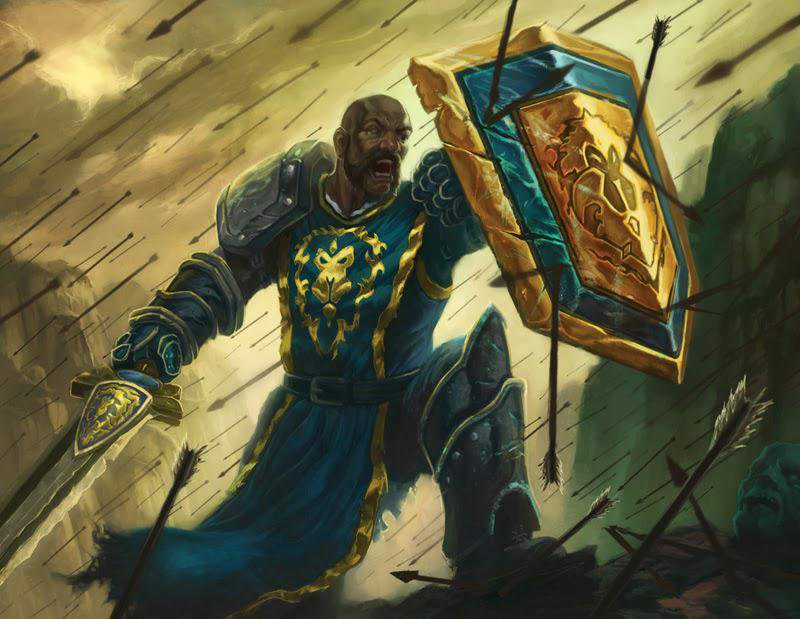


Variant Rule: Mana
With this variant rule, a character who has the Spellcasting feature uses mana instead of spell slots to fuel spells. Mana gives a caster more flexibility, at the cost of complexity.
In this variant, each spell has a mana cost based on its level. The Mana Cost table summarizes the cost in mana of slots from 1st to 9th level. Cantrips don't require spell slots and there-for don't require mana.
Instead of gaining a number of spell slots to cast your spells from the Spellcasting feature, you gain a pool of mana instead. You can expend a number of your mana to create a spell slot of a given level, and then use that slot to cast a spell. Your mana can't be reduce to less than 0, and you regain all spent mana when you finish a long rest.
Spells of 6th level and higher are particularly straining to cast. You can use your mana to create one slot of each level of 6th or higher. You can't create another slot of the same level until you finish a long rest.
The number of mana you have to spend is based on your level as a spellcaster, as shown in the Mana by Level table. Your level also determines the maximum-level spell slot you can create. Even though you might have enough mana to create a slot above this maximum, you can't do so.
The Mana by Level table applies to druids, mages, pala-dins, priests and shaman. A druid (Feral or Guardian), and a paladin refer to the half-caster column of the table, whilst the remaining classes refer to the full caster column.
This system can be applied to monsters that cast spells using spell slots, but it isn't recommended that you do so. Tracking mana expenditures for a monster can be a hassle.
Mana Cost
| Spell Level | Mana Cost |
|---|---|
| 1st | 1 |
| 2nd | 3 |
| 3rd | 5 |
| 4th | 7 |
| Spell Level | Mana Cost |
|---|---|
| 5th | 9 |
| 6th | 11 |
| 7th | 13 |
| 8th | 15 |
| 9th | 17 |
Mana by Level
| Class Level | Full Caster | Half-Caster | Max Spell Level |
|---|---|---|---|
| 1st | 3 | 0 | 1st |
| 2nd | 6 | 2 | 1st |
| 3rd | 9 | 3 | 2nd |
| 4th | 12 | 4 | 2nd |
| 5th | 16 | 5 | 3rd |
| 6th | 20 | 7 | 3rd |
| 7th | 24 | 9 | 4th |
| 8th | 28 | 11 | 4th |
| 9th | 33 | 13 | 5th |
| 10th | 38 | 15 | 5th |
| 11th | 43 | 18 | 6th |
| 12th | 48 | 21 | 6th |
| 13th | 54 | 24 | 7th |
| 14th | 60 | 27 | 7th |
| 15th | 66 | 30 | 8th |
| 16th | 72 | 34 | 8th |
| 17th | 79 | 38 | 9th |
| 18th | 86 | 42 | 9th |
| 19th | 93 | 46 | 9th |
| 20th | 100 | 50 | 9th |
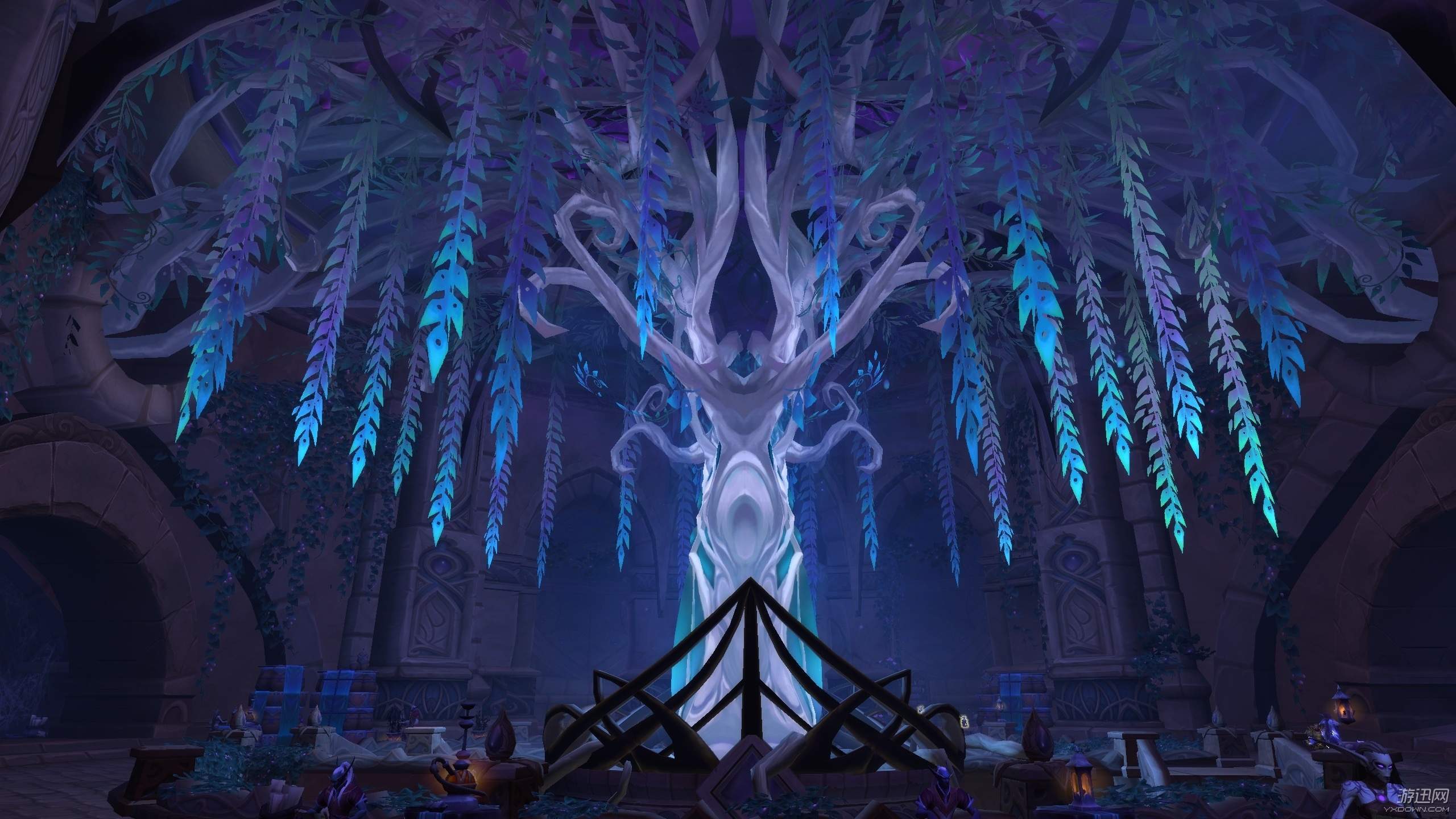


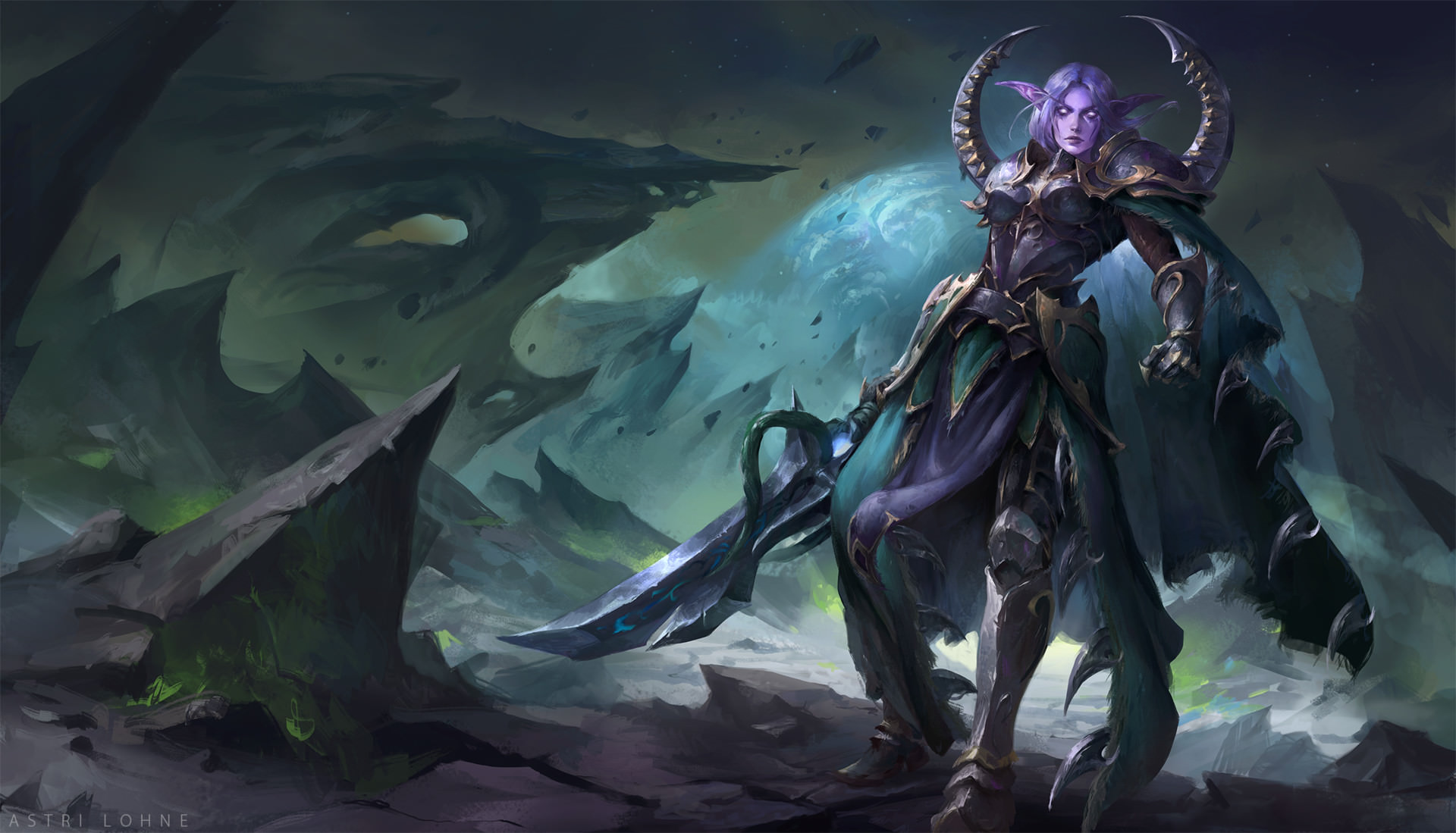
Appendix A: Shapeshifts
Cat Form
Medium beast
- Armor Class 13 + Dexterity modifier
- Speed 40 ft., climb 40 ft.
Darkvision. You gain darkvision 60 ft.
Keen Smell. You have advantage on Wisdom (Perception) checks that rely on smell, as long as you are shapeshifted.
Pounce. If you move at least 20 feet straight toward a creature right before hitting it with a claw attack, the target must succeed on a DC (8 + Dex + prof bonus) Strength saving throw or be knocked prone. If the target is knocked prone by the pounce, your bite deals an extra 1d6 piercing damage.
Actions
Claws. Melee Weapon Attack: (Dex + Prof bonus) to hit, reach 5 ft., one target. Hit: (2d4 + Dex) slashing damage.
Bonus Action
Bite. Melee Weapon Attack: (Dex + Prof bonus) to hit, reach 5 ft., one target. Hit: (1d6 + Dex) piercing damage.
Common shapes taken are as followed:
(Snow) Leopard, Lion, Lynx, Panther, Tiger.
Bear Form
Large beast
- Armor Class 10 + Dexterity & Constitution modifier
- Speed 40 ft., climb 30 ft.
Keen Smell. You have advantage on Wisdom (Perception) checks that rely on smell.
Charge. If you move at least 20 feet straight toward a target and then hits with a claw attack on the same turn, the target takes an extra (2d6) slashing damage. If the target is a creature, it must succeed on a DC (8 + Str + prof bonus) Strength saving throw or be knocked prone.
Actions
Claws. Melee Weapon Attack: (Str + Prof bonus) to hit, reach 5 ft., one target. Hit: (2d6 + Str) slashing damage.
Bonus Action
Bite. Melee Weapon Attack: (Str + Prof bonus) to
hit, reach 5 ft., one target. Hit: (1d8 + Str) piercing damage.
Common shapes taken are as followed:
Brown Bear, Black Bear, Grey Bear, Grizzly Bear.
Flight Form
Large beast
- Armor Class 10 + Dexterity modifier
- Speed 10 ft., 70 ft.
Flyby. You don't provoke opportunity attacks when you fly out of an enemy's reach.
Keen Sight. You have advantage on Wisdom (Perception) checks that rely on sight.
Actions
Beak. Melee Weapon Attack: (Str/Dex + Prof bonus) to hit, reach 5 ft., one target. Hit: (2d4 + Str/Dex) piercing damage.
Talons. Melee Weapon Attack: (Str/Dex + Prof bonus) to hit, reach 5 ft., one target. Hit: (2d6 + Str/Dex) slashing damage.
Common shapes taken are as followed:
Dire Bat, Dire Hawk, Dire Owl, Eagle, Storm Crow.
Aquatic Form
Medium beast
- Armor Class 11 + Dexterity modifier
- Speed 5 ft., swim 50 ft.
Amphibious. You can breathe air and water.
Blindsight. You gain blindsight 60 ft.
Actions
Bite. Melee Weapon Attack: (Str + Prof bonus) to hit, reach 5 ft., one target. Hit: (1d8 + Str) piercing damage.
Common shapes taken are as followed:
Sea Lion (Amphibious), Shark, Dolphin, Orca.
Travel Form
Large beast
- Armor Class 12 + Dexterity modifier
- Speed 50 ft.
Mountable. As long as a creature is on your back, you both take turns on your initiative. Upon dis-mount, the riders initiative returns to normal.
Actions
Hooves. Melee Weapon Attack: (Str + Prof bonus) to hit, reach 5 ft., one target. Hit: (2d4 + Str) bludgeoning damage.
Common shapes taken are as followed:
Elk, Horse, Stag, Reindeer.

Appendix B: Shaman Spirits
Shamans bond with spirit animals and are granted their favor, making them able to assume the form of their spirit animal at will through the aid of the spirits of the wild. Whilst druids are able to take the complete shape of certain animals, shifting into various beasts, the strain upon a shamans ghost form lies much deeper within. As a result the shape they take appears as an incorporeal transparent shape in the material world.
Most shamans choose one spirit animal, and sticks with that spirit animal throughout their life. Orcs and trolls commonly go for a dire wolf, a shape well known to both, known for its ferocity and speed. Whilst a dwarf might choose a bear, a steadfast companion by many of the dwarven kin. Think about your spirit animal, why and if it fits your character, a shamans spirit animal is in many ways an extension of who they are, reflecting their personality. The only limitation given upon a spirit animal is that it cannot have a swim, or fly speed.
Shamans ghost form is limited, as so it has a specific set of statistics no matter which animal you choose, as shown in the Ghost Form class feature.
Greater Feral Spirit
Large undead, unaligned
- Armor Class 16 (natural armor)
- Hit Points 57 (7d10 + 21)
- Speed 50 ft.
STR DEX CON INT WIS CHA 18 (+4) 16 (+3) 15 (+2) 10 (+0) 12 (+1) 7 (-2)
- Skills Perception +3, Stealth +4
- Damage Resistances acid, cold, fire, lightning, thunder; bludgeoning, piercing, and slashing from nonmagical attacks
- Damage Immunities poison
- Condition Immunities charmed, exhaustion, frightened, grappled, paralyzed, petrified, poisoned, and restrained
- Senses passive Perception 13
- Languages —
- Challenge 4 (1,100 XP)
Keen Hearing and Smell. The feral spirit has advantage on Wisdom (Perception) checks that rely on hearing or smell.
Pack Tactics. The feral spirit has advantage on an attack roll against a creature if at least one of the spirit's allies is within 5 feet of the creature and the ally isn't incapacitated.
Actions
Multiattack: The spirit makes two bite attacks.
Bite. Melee Weapon Attack: +6 to hit, reach 5 ft., one target. Hit: 11 (2d6 + 4) necrotic damage. If the target is a creature, it must succeed on a DC 14 Strength saving throw or be knocked prone.
Lesser Feral Spirit
Medium undead, unaligned
- Armor Class 14 (natural armor)
- Hit Points 32 (5d8 + 10)
- Speed 50 ft.
STR DEX CON INT WIS CHA 17 (+3) 15 (+2) 15 (+2) 10 (+0) 12 (+1) 7 (-2)
- Skills Perception +3, Stealth +4
- Damage Resistances acid, cold, fire, lightning, thunder; bludgeoning, piercing, and slashing from nonmagical attacks
- Damage Immunities poison
- Condition Immunities charmed, exhaustion, frightened, grappled, paralyzed, petrified, poisoned, and restrained
- Senses passive Perception 13
- Languages —
- Challenge 2 (450 XP)
Keen Hearing and Smell. The feral spirit has advantage on Wisdom (Perception) checks that rely on hearing or smell.
Pack Tactics. The feral spirit has advantage on an attack roll against a creature if at least one of the spirit's allies is within 5 feet of the creature and the ally isn't incapacitated.
Actions
Bite. Melee Weapon Attack: +5 to hit, reach 5 ft., one target. Hit: 10 (2d6 + 3) necrotic damage. If the target is a creature, it must succeed on a DC 13 Strength saving throw or be knocked prone.
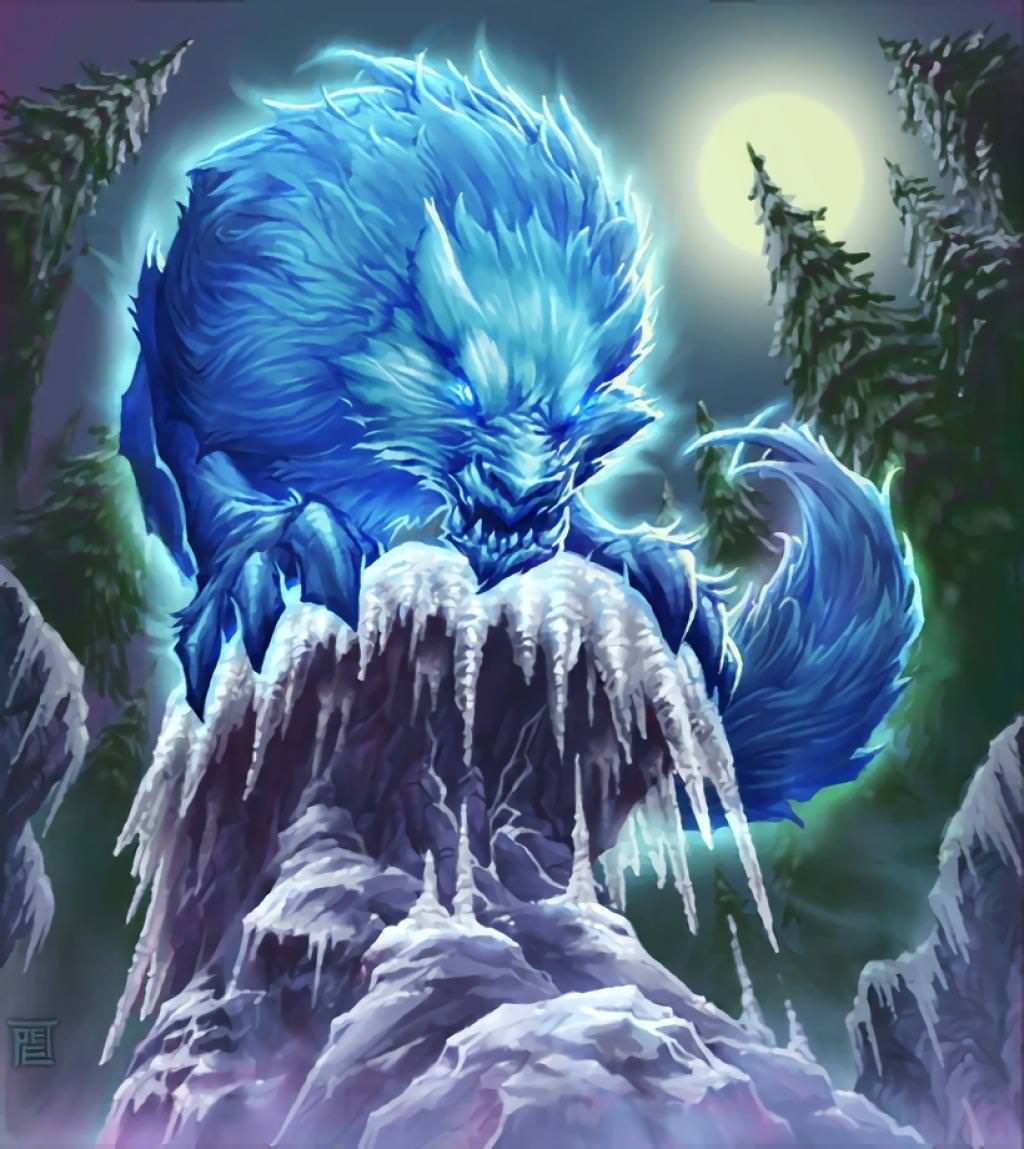


Appendix C: Demon Companions
Imp
Small fiend (demon), chaotic evil
- Armor Class 11
- Hit Points 14 (3d6 + 3)
- Speed 25 ft.
STR DEX CON INT WIS CHA 11 (+0) 14 (+2) 13 (+1) 11 (+0) 12 (+1) 14 (+2)
- Damage Immunities fire
- Senses darkvision 60 ft., passive Perception 11
- Languages understands the languages of its summoner but can't speak
- Challenge 1 (200 XP)
Demon's Sight. Magical darkness doesn't impede the imp's vision.
Actions
Claw. Melee Weapon Attack: +4 to hit, reach 5 ft., one target. Hit: 4 (1d4 + 2) slashing damage.
Fire Blast. Ranged Spell Attack: +4 to hit, range 60 ft., one target. Hit: 4 (1d6) fire damage. Fire blasts damage increases by 1d6 when you reach 5th (2d6), 11th level (3d6), and 17th level (4d6).
- 7th Level The imp can cast the fireball spell at 3rd level once a day
Voidwalker
Medium fiend (demon), neutral evil
- Armor Class 13 (natural armor)
- Hit Points 24 (4d8 + 8)
- Speed 30 ft.
STR DEX CON INT WIS CHA 16 (+3) 11 (+0) 15 (+2) 10 (+0) 8 (-1) 14 (+2)
- Damage Vulnerabilities radiant
- Damage Resistances necrotic; bludgeoning, piercing, and slashing from nonmagical attacks
- Damage Immunities poison
- Condition Immunities frightened, poisoned
- Senses blindsight 60 ft., passive Perception 10
- Languages understands the languages of its summoner but can't speak, telepathy 60 ft
- Challenge 1 (200 XP)
Innate Spellcasting. The voidwalker's innate spellcasting ability is Charisma (spell save DC 12). It can innately cast the following spells, requiring no material componenets:
1/day each: compelled duel, darkness
Actions
Slam. Melee Weapon Attack: +5 to hit, reach 5 ft., one target. Hit: 7 (1d6 + 3) bludgeoning damage
- 5th Level The voidwalker can make two slam attacks as an Action
- 7th Level The voidwalker can use its innate spellcasting three times a day each
Felhunter
Medium fiend (demon), chaotic evil
- Armor Class 12
- Hit Points 16 (3d8 + 3)
- Speed 40 ft.
STR DEX CON INT WIS CHA 13 (+1) 14 (+2) 13 (+1) 12 (+1) 11 (+0) 10 (+0)
- Senses blindsight 120 ft., passive Perception 10
- Languages understands the languages of its summoner but can't speak
- Challenge 2 (200 XP)
Magic Seeker (3/day). The felhunter can cast detect magic three times a day.
Magic Resistance. The felhunter has advantage on saving throws against spells and other magical effects.
Actions
Bite. Melee Weapon Attack: +4 to hit, Reach 5 ft., one target. Hit: 7 (2d4 + 2) piercing damage
Devour Intellect. The felhunter targets one creature it can see within 10 feet of it that has a brain. The target must succeed on a DC 12 Intelligence saving throw against this magic or take 11 (2d10) psychic damage.
- 5th Level The felhunter can make two bite attacks as an Action
- 7th Level The felhunter can cast the counterspell spell at 3rd level once a day

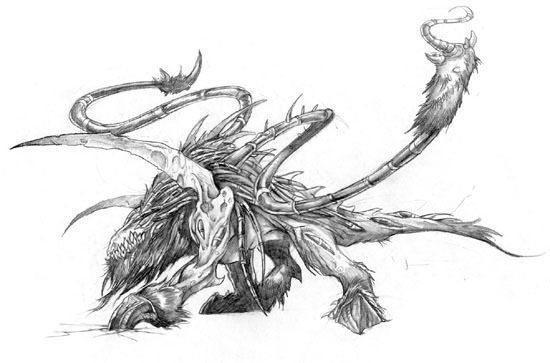
Succubus
Medium fiend (demon), lawful evil
- Armor Class 12
- Hit Points 21 (4d8 + 3)
- Speed 40 ft.
STR DEX CON INT WIS CHA 8 (-1) 15 (+2) 13 (+1) 15 (+2) 12 (+2) 20 (+5)
- Senses darkvision 60 ft., passive Perception 15
- Languages Eredun, Common, telepathy 60 ft.
- Challenge 2 (200 XP)
Shapechanger. The succubus can use its action to polymorph into a Small or Medium humanoid, or back into its true form. Other than its size and speed, its statistics are the same in each form. Any equipment it is wearing or carrying isn't transformed. It reverts to its true form if it dies.
Actions
Lash. Melee Weapon Attack: +4 to hit, range 10 ft., one target. Hit: 8 (1d4 + 2) slashing damage plus 1d6 necrotic damage.
Seduction (1/day). One humanoid the succubus can see within 30 feet of it must succeed on a DC 15 Wisdom saving throw or be magically charmed for 1 minute. The target obeys the succubus verbal and telepathic commands, and makes a new save at the end of its turns, ending the charm on a success. If the target successfully saves against the seduction, or if the effect on it ends, the target is immune to this succubus' Seduction for the next 24 hours.
Sooth (1/day). The succubus blows a kiss towards a creature, granting her the benefit of a sanctuary spell against the targeted creature. Attacking or casting spells that effects other creatures does not end this effect.
- 5th Level The succubus can cast the invisibility spell once a day
- 7th Level The succubus gains an additional use of Seduction per day
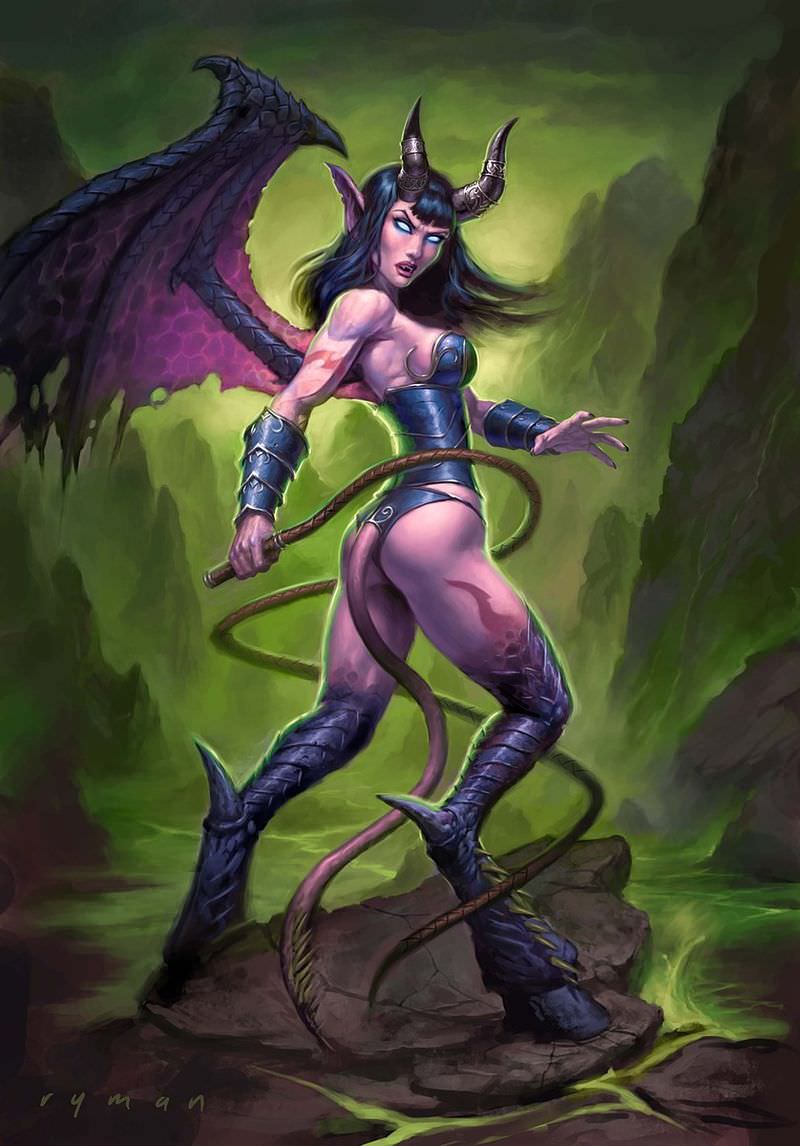

Appendix D: Special Tasks
Prestige classes require special tasks to be completed before a character can enter that class, this Appendix tries to explain the basics of what must be done for someone to become a Death Knight, or Demon Hunter. Bare in mind the information here is a mixture of canon and non-canon lore, and may not reflect how your DM goes about these tasks.
Death Knight Task
Complete a Special Task. To become a death knight you must find the dark simulacrum and perform the ritual presented in it. At which point you will be reawaken as a weak death knight.
Finding the Dark Simulacrum
Finding the dark simulacrum may prove an easy task, or an exceptionally hard one. It all depends on the DM and when they decide to make the item available for you. You might have it from level 1, an heirloom passed down through generations in your family, you may stumble upon it in a warlocks lair, or you might find it in a book store tucked away and gathering dust.
The exact location of the book is a mystery to all but the DM, giving them the ability to implement it in whichever way they see fit.
Using the Book
There is not stages to becoming a death knight as there are with demon hunters, the transformation is much quicker and without as much preparation required. Any character able to read Common is able to read the interior of the book, and gain its benefits if they study it for 48 hours over a period of 6 days or fewer. This is true even if you are not a spellcaster and don't have any innate magic, you will still be granted the secrets of the book.
Place of Power
A place of power can be many things, there are not set list of specifics an area has to have to be a place a power, it could easily be a witches workshop, a necromancers demonic alter, or a mages study. These are simple places of power able to be found across Azeroth, but they might not always be available to the player, locked away or hidden. A place of power can be more than a spellcasters workshop. For a night elf it might be the world trees, for an orc the clans communion with the elements, for a human it might be a church to the Holy Light.
A place of power can be more than something magically imbued, or something that has traces of past magic. It can be something icnoic, or with an emotional connection to a race or the player.
A Guardian Angel
To complete the ritual the player must call forth a val'kyr from the realm of shadows, these ascended vrykuls are remarkable and extraordinarily powerful creatures, most of whom serve either the titan keeper Odyn or the banshee queen Sylvanas. The called val'kul serves no master, and exists only through the book, should it be destroyed she is bound to the shadow realm for eternity.
The val'kyr's alignment is neutral, and it uses the deva statblock, attacking only in self defense.
Dark Simulacrum
Wondrous item, rare
This dark brown tome clad with a silver edge and a runic engraving on its front cover. If you spend 48 hours over a period of 6 days or fewer studying the book's contents and practicing its guidelines, you learn the spells Runeblade, Altar of Power, and Summon Val'kyr as well as how to per-form a ritual with them to gain death knights power, these spells do not take up spell slots but can only be cast once per long rest each. Once the ritual has been done, you lose all memories of these spells. Then the tome loses its magic, but regains it in a year.
Altar of Power
Simulacrum necromancy
- Casting Time: 10 minutes
- Range: Touch
- Components: V, S
- Duration: 1 hour
You touch a place of power, filling it with necrotic energy. Until the spells ends, the place of power is desecrated and able to function as an alter able to be used in the sacrificial ritual to gain the powers of the death knights.
Runeblade
Simulacrum enchantment
- Casting Time: 1 hour
- Range: Touch
- Components: V, S
- Duration: 10 hours
You touch a nonmagical weapon, imbuing it with runes that runs along its edge. Until the spell ends, that weapon be-comes a magical weapon able to be used in the sacrificial ritual to gain the powers of the death knights.
Summon Val'kyr
Simulacrum conjuration
- Casting Time: 10 minutes
- Range: 10 feet
- Components: V, S
- Duration: 1 hour
You call forth a val'kyr from the shadow realm in an un-occupied space that you can see within range. The val'kyr stays for 1 hour before disappearing again. The summoned val'kyr is neutral to you and your companions, and does not obey any commands you might give it. But is able to sense the presence of a magically imbued runeblade, and a desecrated altar of power.
If the val'kyr is witness to player sacrificing themselves on an altar of power using the runeblade, the val'kyr uses 10 minutes to cast a unique version of resurrection, bring-ing the player back and granting them a level in the death knight class. The player gains none of the penalties nor-mally granted by players brought back using resurrection.
If the val'kyr resurrects a player, the val'kyr and dark simulacrum vanishes, and anyone who knew how to cast the spells granted by the dark simulacrum loses all memory of how the spells are performed.
Once spell ends, the val'kyr vanishes leaving behind the dark simulacrum and the memories of how to cast the spells within.

Demon Hunter Task
Complete a Special Task. You must find one or more demon hunters willing to lead you through the array of complex rituals required to become a demon hunter.
Finding a Demon Hunter
Finding a demon hunter willing to lead the player through the various rituals might prove difficult, demon hunters are sparse, and never stay in an area for long before moving on to a new location. Once a demon hunter is found, it may prove difficult to convince them to aid you. They know what the rituals entails, how it affects those who attempt them, how few survive it, and the various sacrifices the player has to make to finish it.
Not just any demon hunter is capable of taking a new initiates through the rituals, and it is not uncommon for multiple demon hunters to aid in the process. In order to undergo the ritual, you need demon hunters with a com-bined level of 20 between them to be able to infuse the player properly with fel magic.
Stage 1: Demon Bonding
To begin the process of becoming a demon hunter, the player has to hunt and capture a sentient demon. A demon with an Intelligence above 10, as the ceremony below requires an intelligent being for bonding to work. Captur-ing a demon is a simple task, that could quickly prove difficult for low level parties.
Once a demon has been captured, it has to be brought to the willing demon hunters that is administering the ritual. It is uncommon for the demon hunter to accompany the character in hunting and capturing the demon, as most see it as a test of strength and will. If the player can't complete this task, they are considered unworthy of being given the powers of their kin.
Once ready, the demon hunters present begin to channel fel into the ground around the demon, to capture its soul once slain. Whilst they are channeling, the player is forced to sacrifice the demon, slaying it in whichever way they see fit. After the demon has been killed, the player is given a ritualistic knife, and tasked with carving out the heart of the demon, and collecting a portion of its blood in a flask.
The player is required to eat its heart, and drink its blood while within the fel channeled area, at the end of which the demons spirit will attempt to flee and be captured by the fel magic. The spirit is then placed within the player by the aid of magic, and forever bonded with the player. Even though the spirit is bonded with the player, the player is not yet in control of it, and the demon will try to take control.
Stage 2: Visions of Fire
The bond between the player and demon is untamed, the demon will continue to try and take control of the player until it is suppressed.
As the demon bonds with the player, the player is imme-diately shown countless visions in quick flashes, visions of the Burning Legion's crusade, the countless planets they have fought and destroyed across the universe. These visions bring horrors to even the strongest players, many entering a coma or immediately dying as the demon struggles to overthrow the players control.
Shortly after the demon has been bound to the player, after enough time has passed for the player to see the horrors of the Burning Legion, and gained a hatred for what atrocities they have done.
If the player is still alive, they are once more give the ritualistic knife in their hands, and tasked to carve out their eye sockets. If the player is unwilling or if they are uncon-scious, the demon hunter forcefully removes their eyes. During which the visions that flashed before the player will vanish, sending the player into a coma. Most new demon hunters stay in the coma for a few days, giving the other demon hunters time to finish the rituals. Some new initiates stay in the coma for longer, and about half never wake as the demon took over their mind, devouring their soul and killing the newly made demon hunter.
Stage 3: Taming the Demon
Whilst the player is in a coma, the demon hunters continue the rituals on their body to aid in the entrapment and control of their inner demon. During this time the players empty sockets are covered with a piece of thick cloth, the cloth is more symbolic than practical, and helps the demon hunter in social encounters, as their eyes can be frighte-ning at first glance. While the demon hunter is in a coma, flickering green dots begin to appear behind the cloth if the demon hunter is alive.
While the demon hunter is in a coma, their body is infused with deadly amounts of fel magic to aid in controll-ing the demon within, the fel quickly becomes apparent on the hunters body as the fel mutates their body, giving them demonic features such as scales, horns, or claws. The fel also fuses to their body in the form of rough hard lined tattoos, these tattoos are fused with fel magic, functioning as a prison for the demon within.
These rituals are tiresome, and take place over multiple hours, slowly shaping the demon hunter, granting them their demonic appearances and slaving the demon within to the hunters will. Once the rituals are done, the hunters eyes will begin to flicker as green embers behind the cloth, a trait that will continue till the demon hunters death.
Stage 4: Reawakening
If the player survives, they will eventually be pulled out of their coma, and wake up to find their body changed. The tattoos placed upon their body will begin to shine with the faintest of light in the color of their paint. The embers in the sockets will flicker behind their cloth cover, and show as green flames bursting out if the cloth is removed. The flames are warm but harmless.
The majority of demon hunter takes years to master their new found powers, taking time to adjust to their new way of life, and the constant influence of the demon within them. While the demon is trapped and unable to take control, its presence will forever be there and be felt by the hunter, always attempting to entice the hunter to join the Burning Legion, an offer many hunters have taken up, only to meet a fate worse than theirs.
A DM Note
This is but my interpretation of how a player would become a demon hunter, and are meant more as a guideline than rules. You can change them, remove or add more as you please.
You may have realized mentions that a large amount of Demon Hunter dies, but never any saving throws that the player had to go through. Although the player should be aware that few survive these rituals, this is not meant as a potential death for that player.

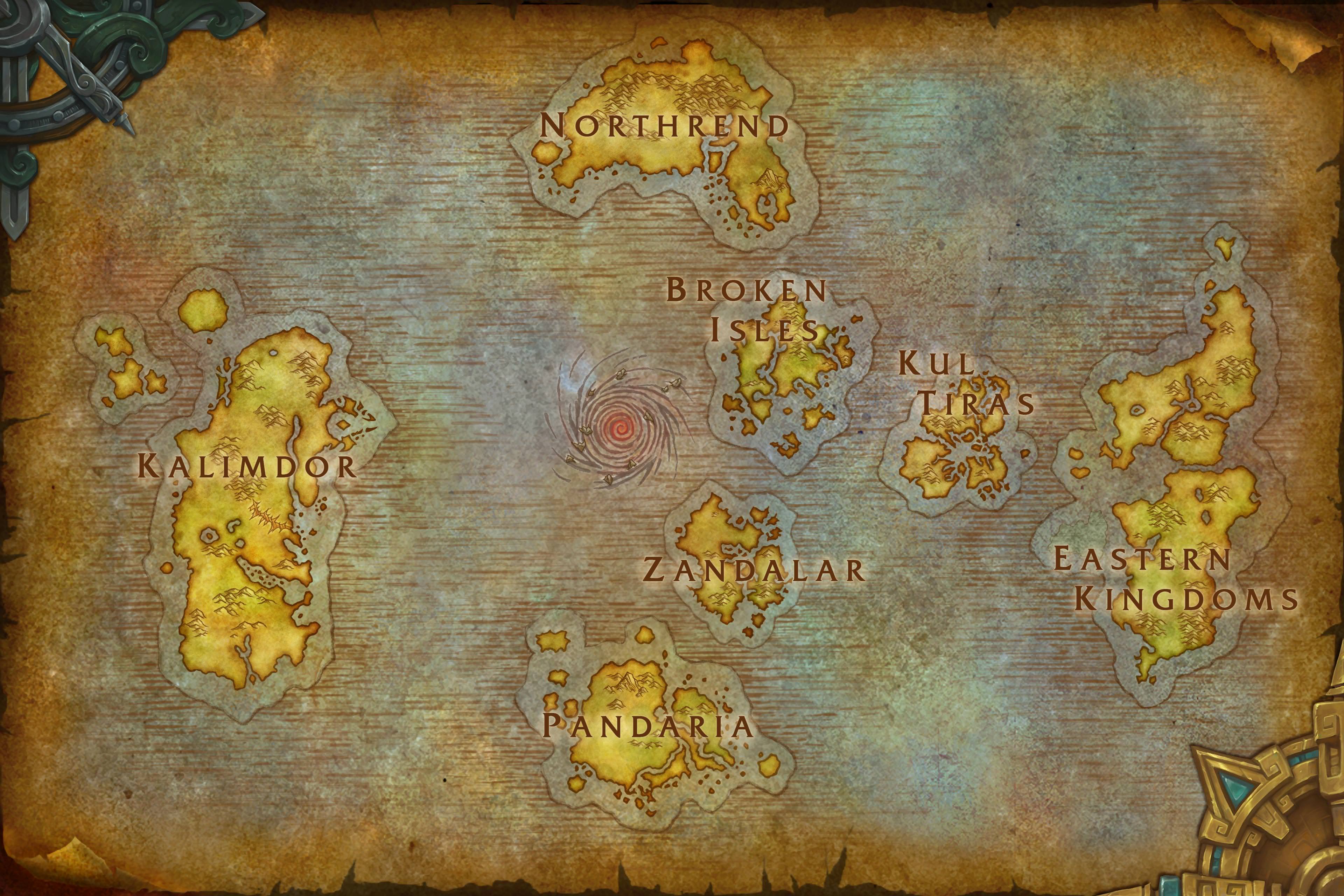
Thanks for Reading
This has been a project made by a group of people who have loved the Warcraft franchise for many years at this point, and wanted to bring it into Dungeons and Dragons for everyone to enjoy.
This has been a blast for us to make, and we thoroughly enjoy making it and improving upon it. We hope this will bring joy to many D&D tables around the world. Best of luck to all the parties of humans and orcs, try not to chop each other up too much <3
Did you know this was all made using GmBinder? I can't stretch enough how fantastic a tool it is for creating homebrew material for 5th edition D&D.
